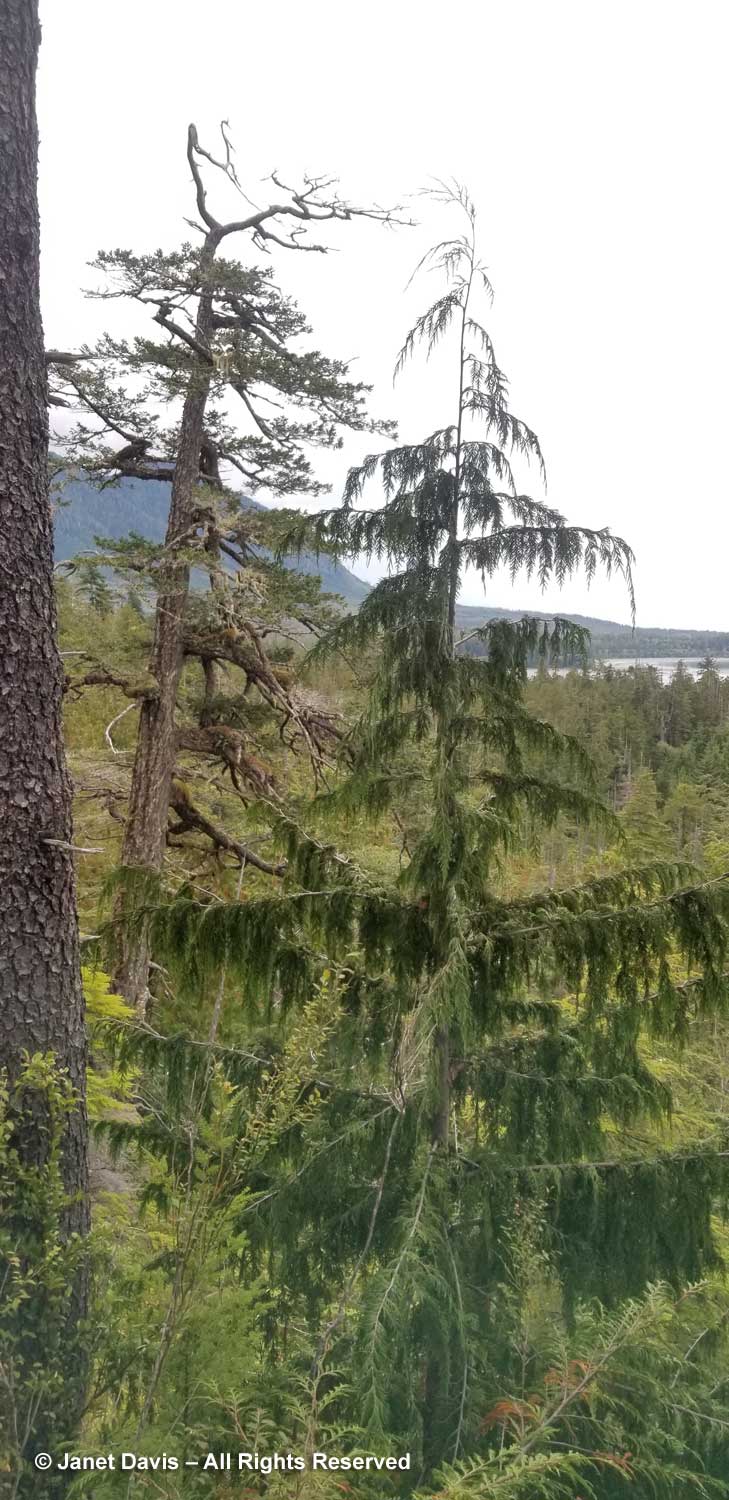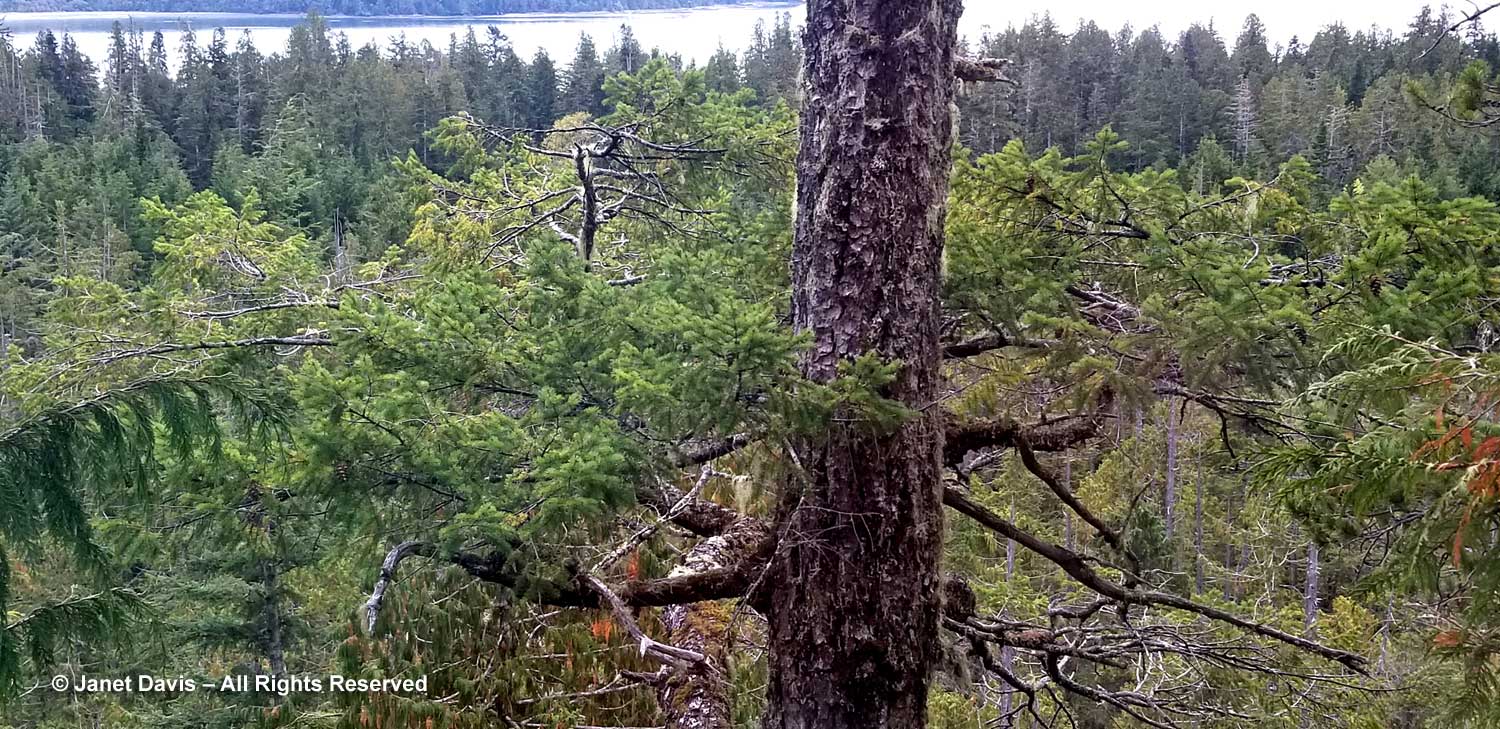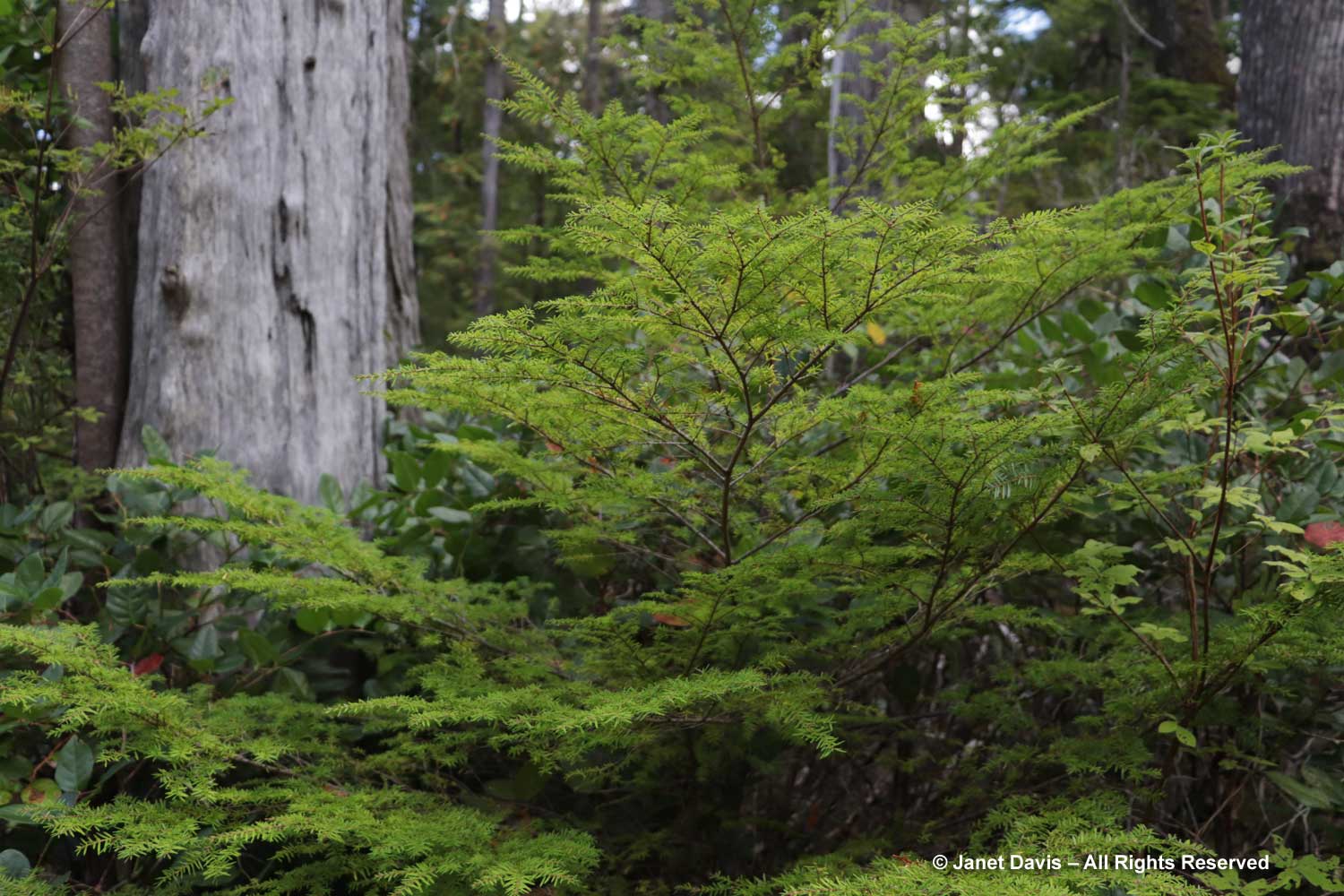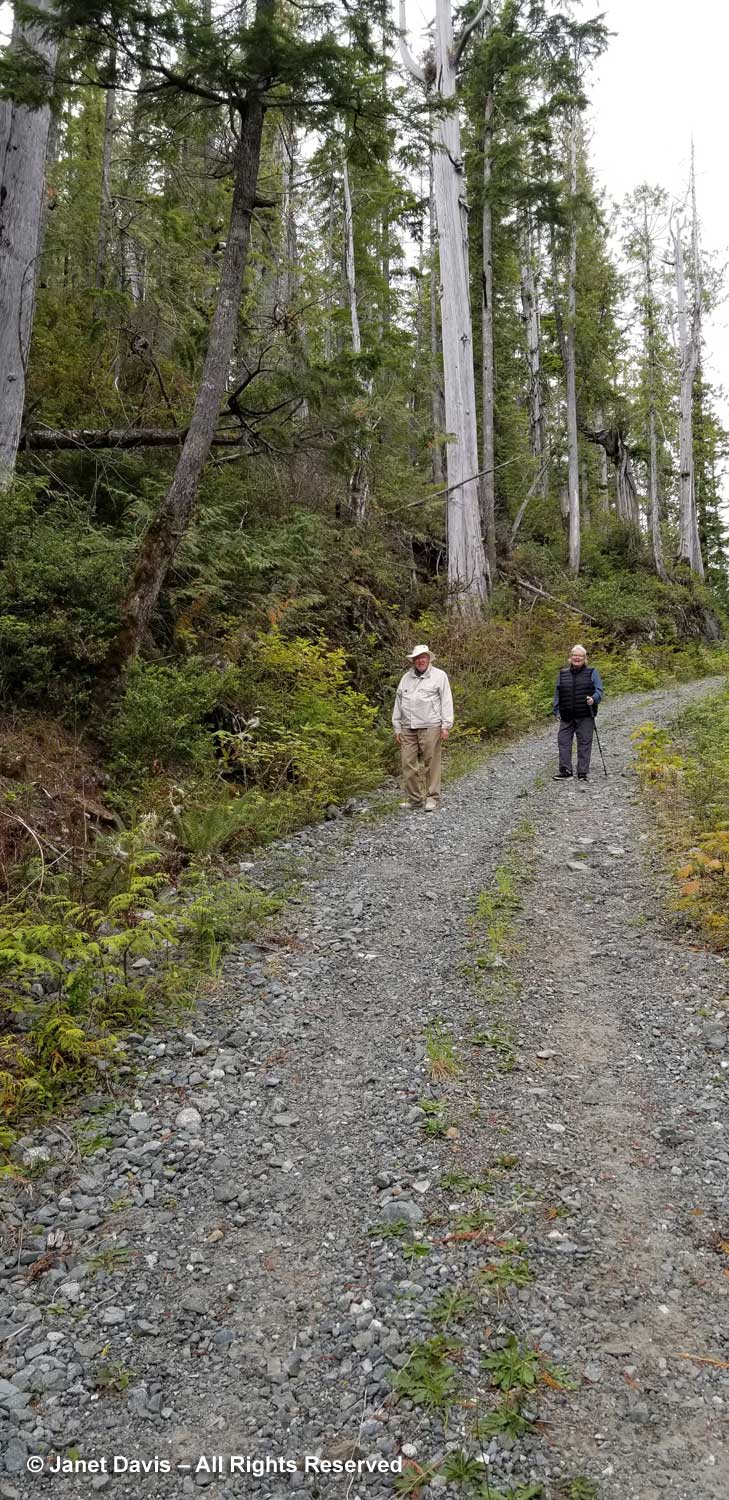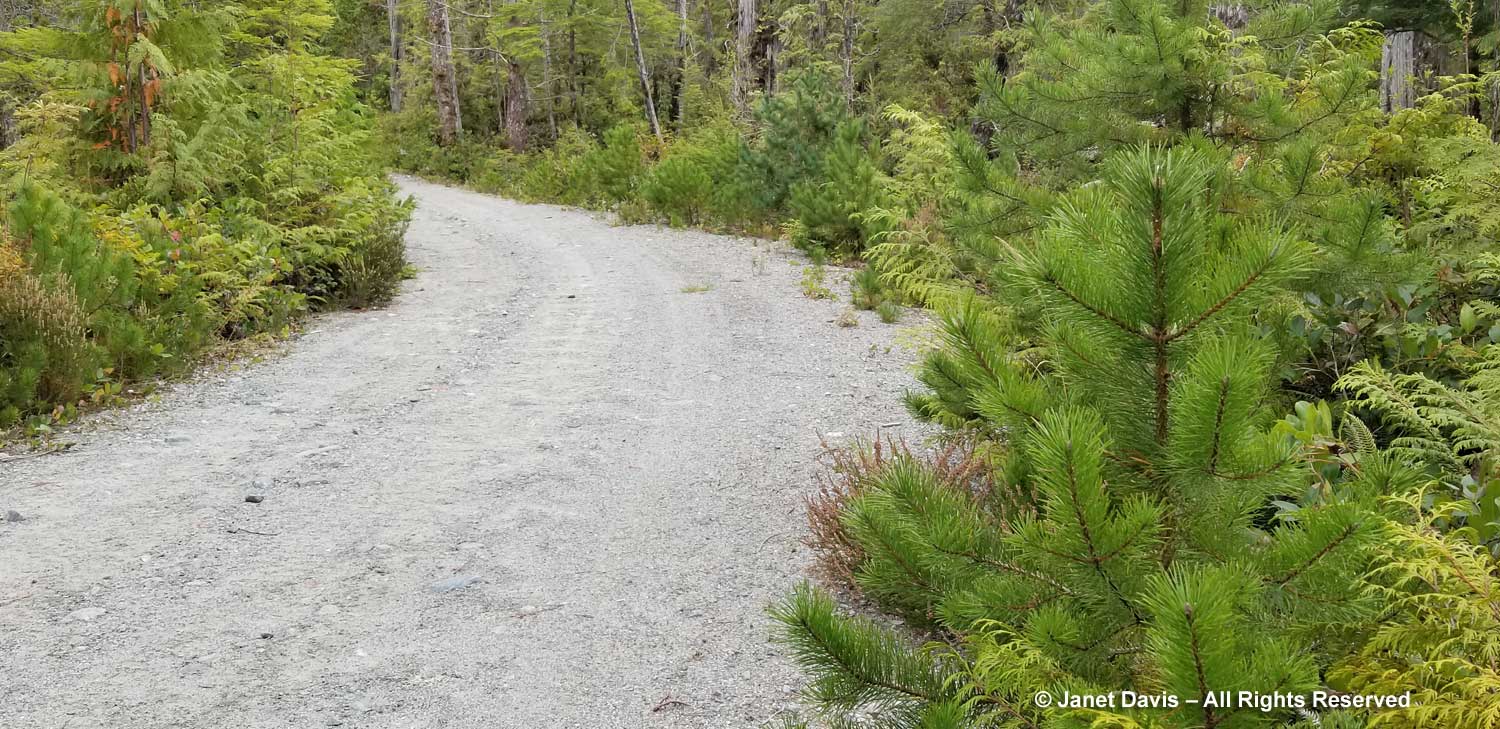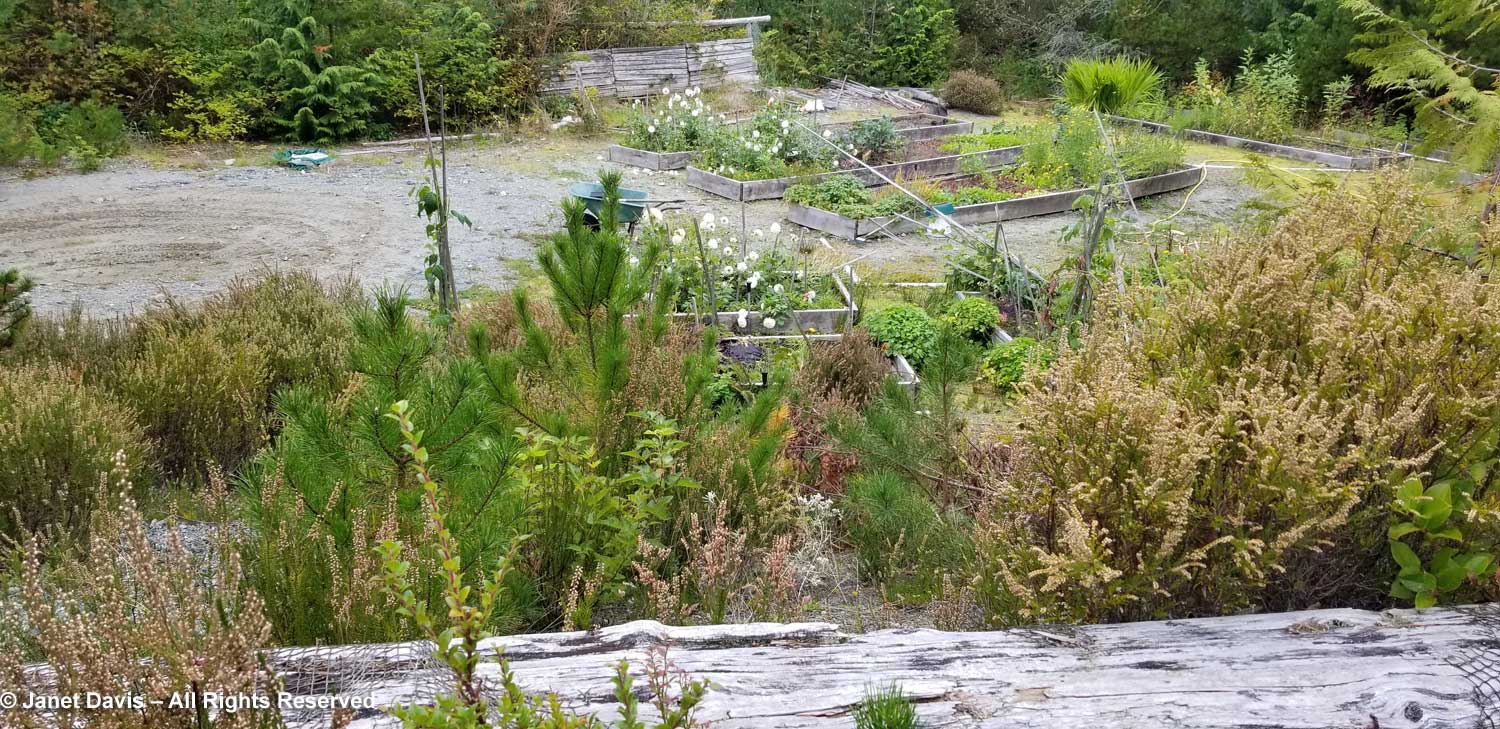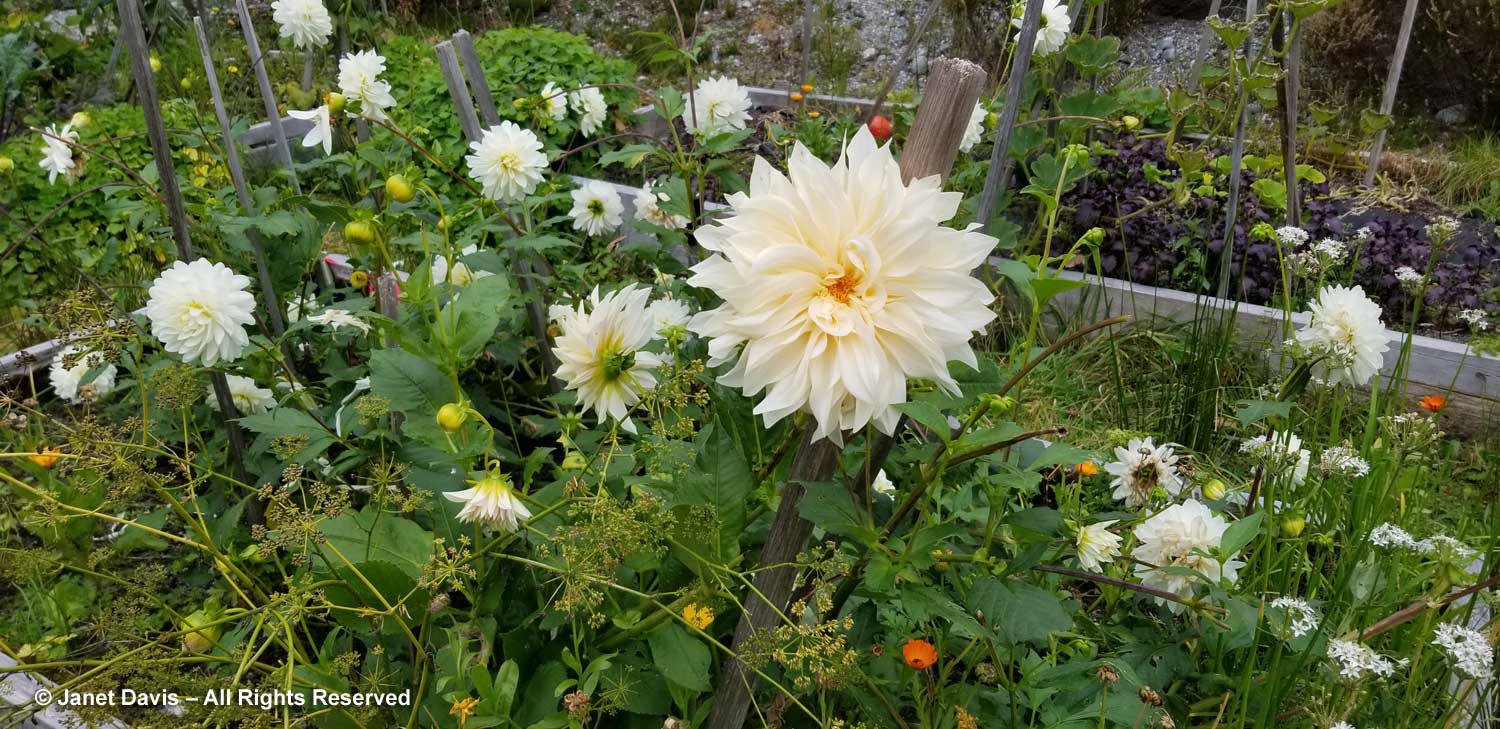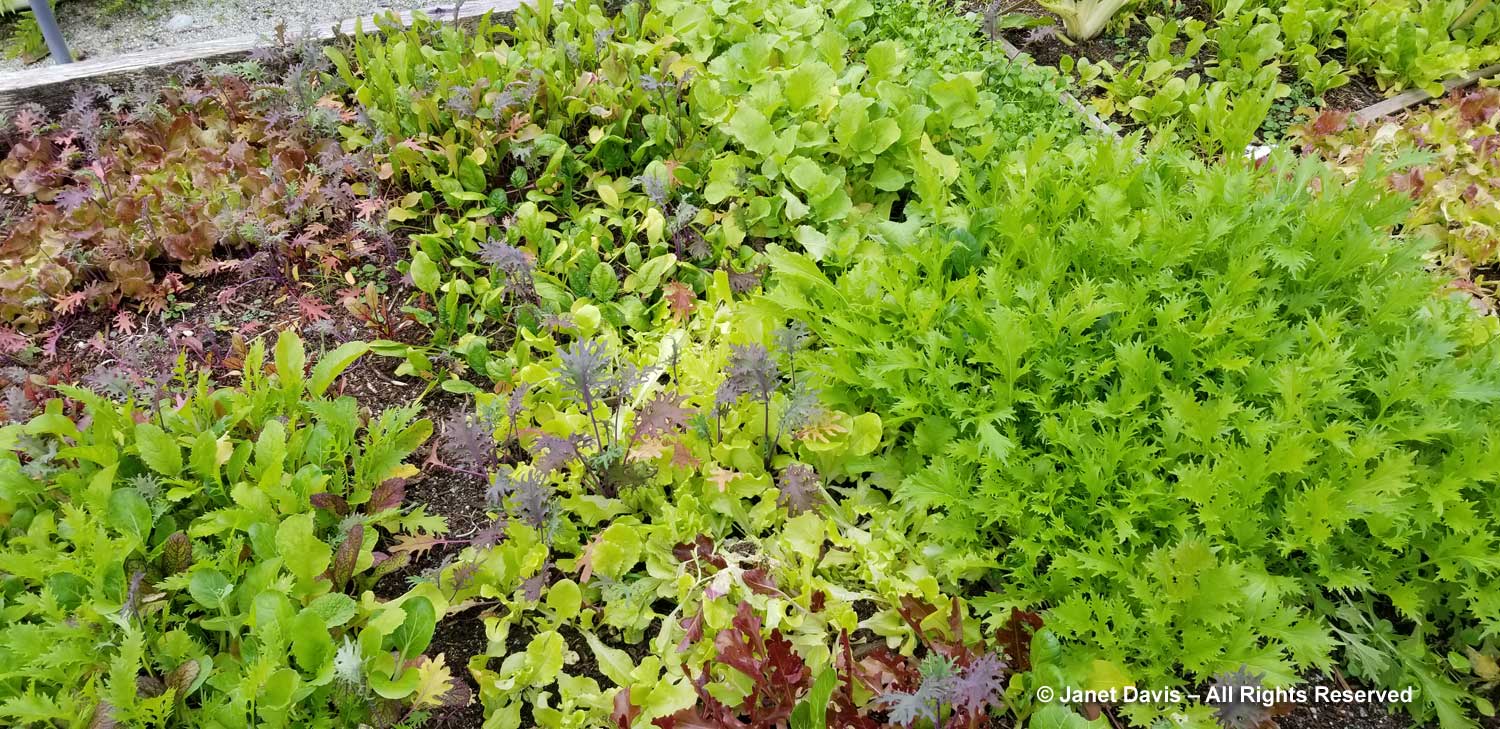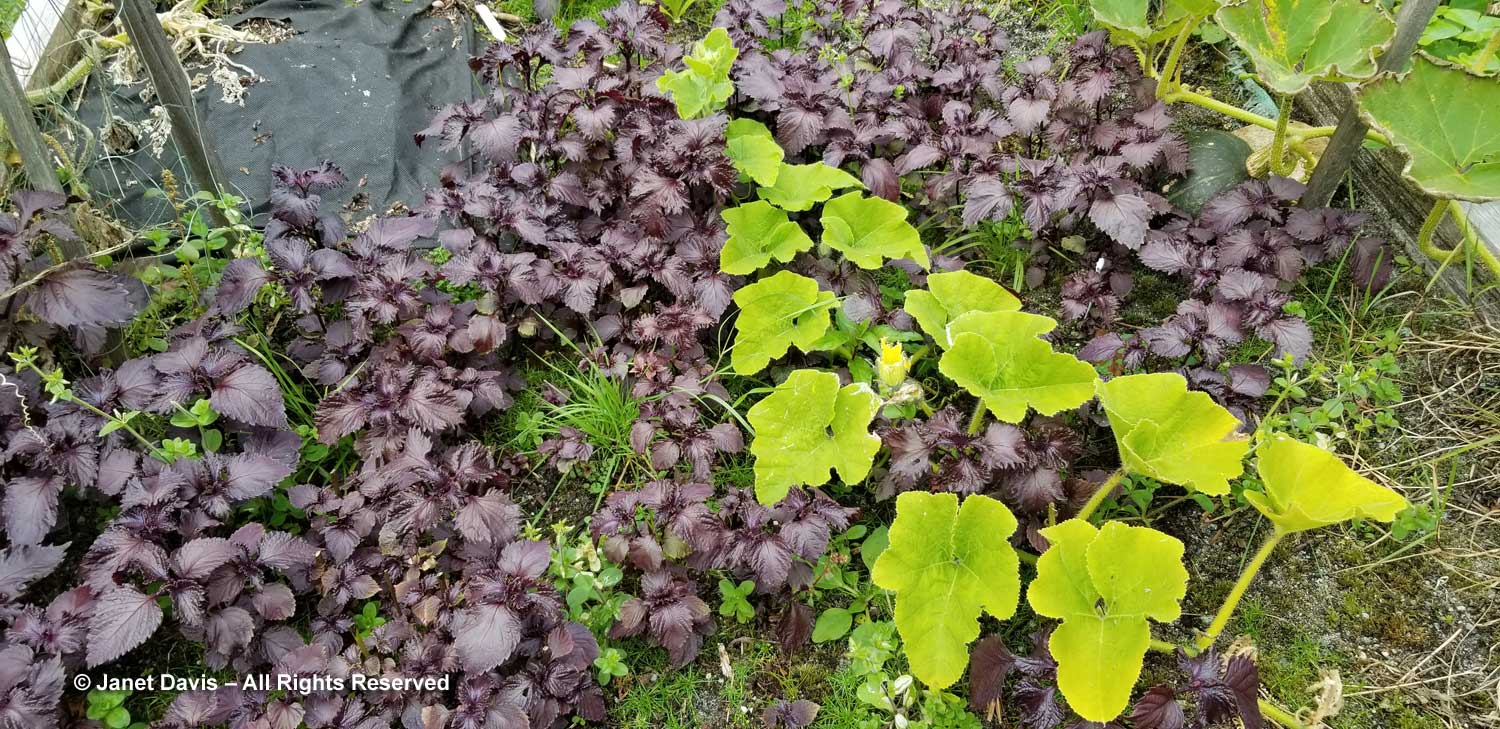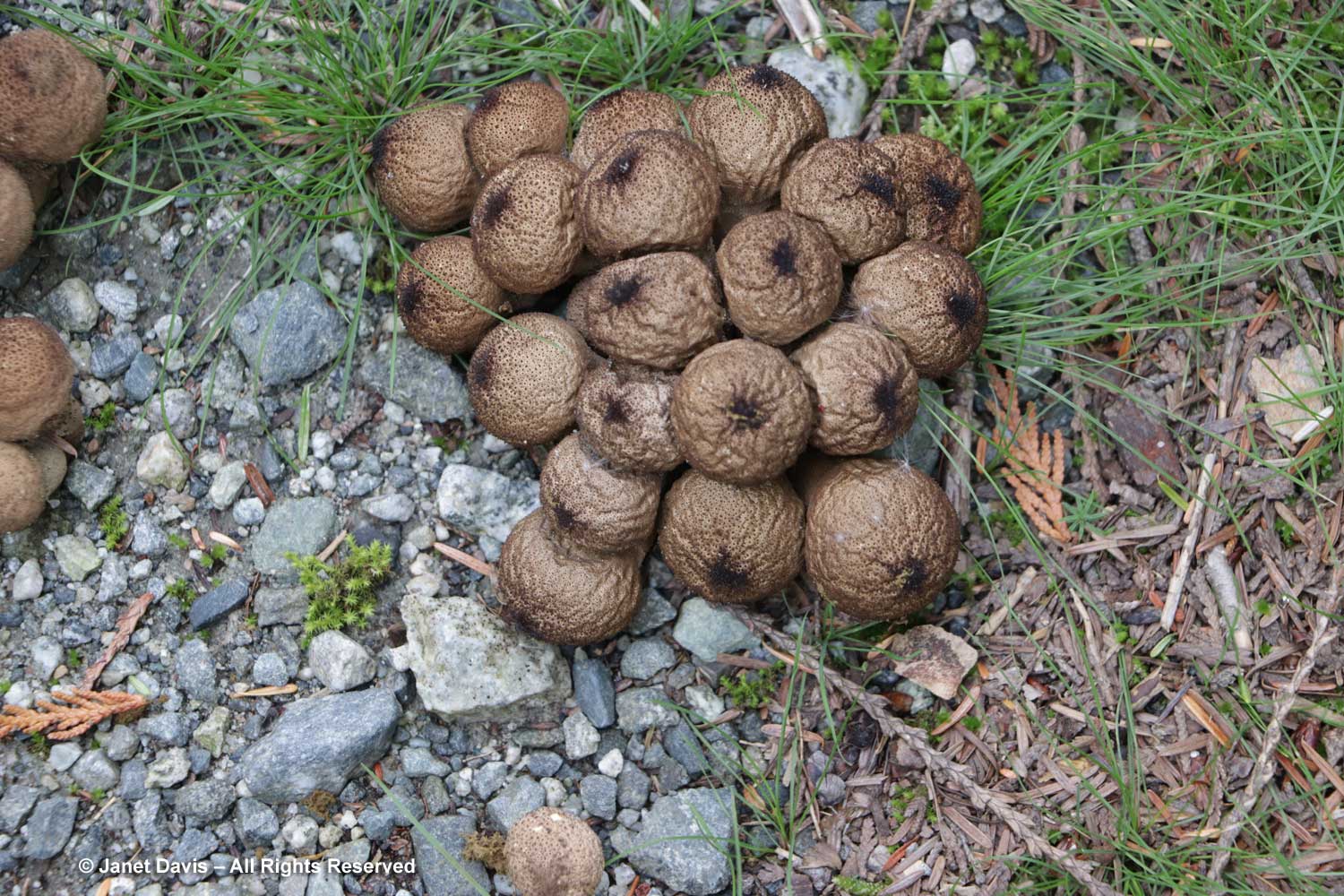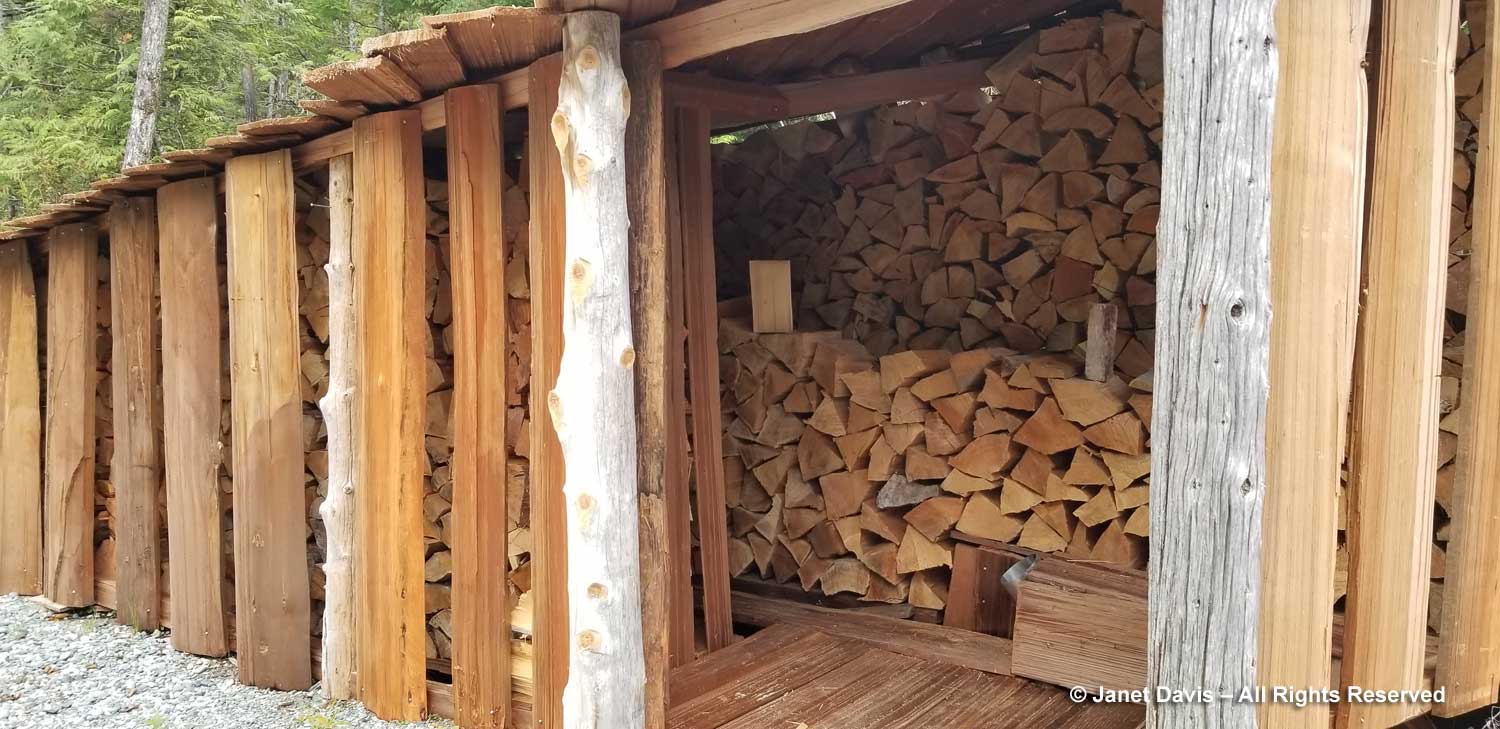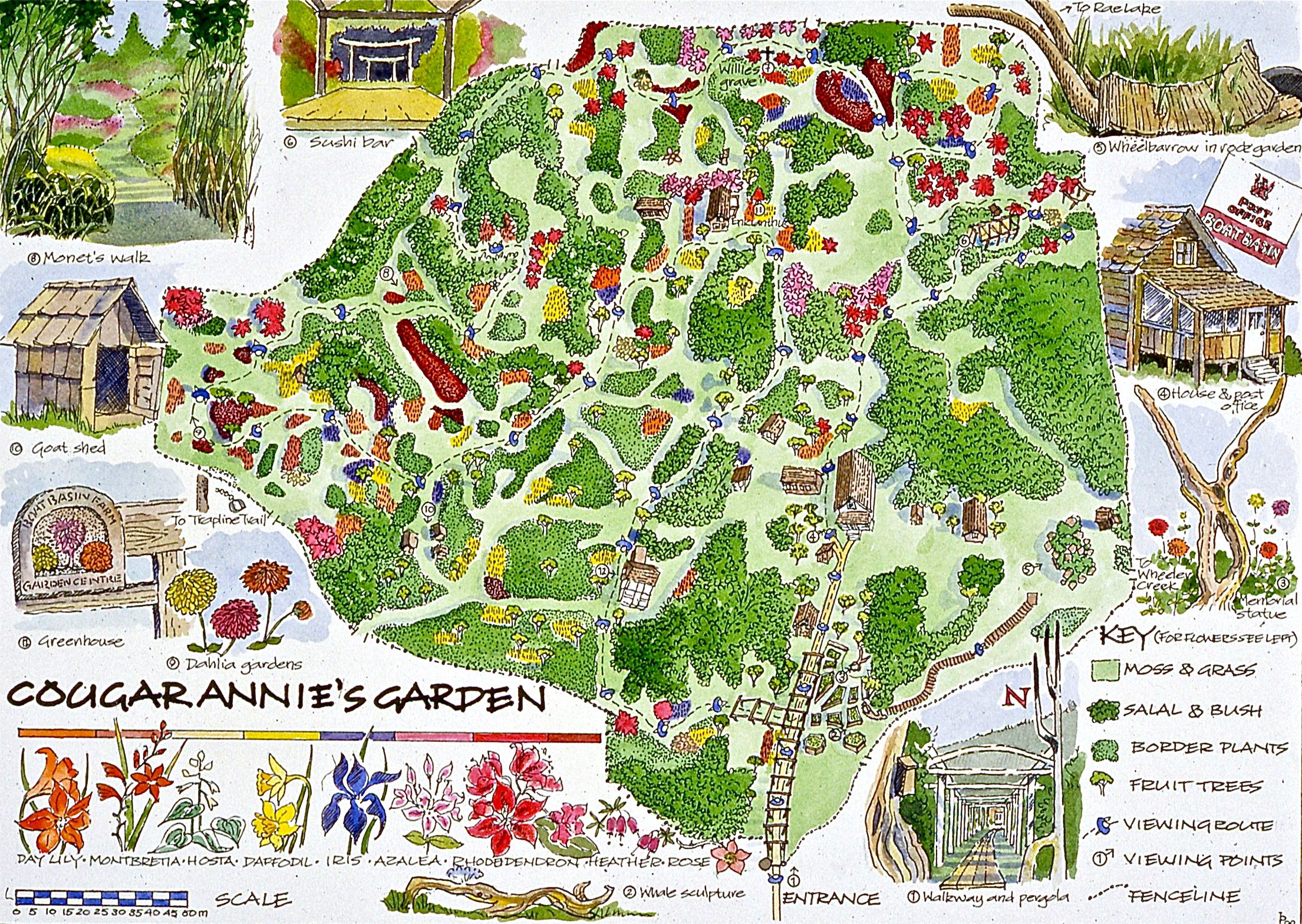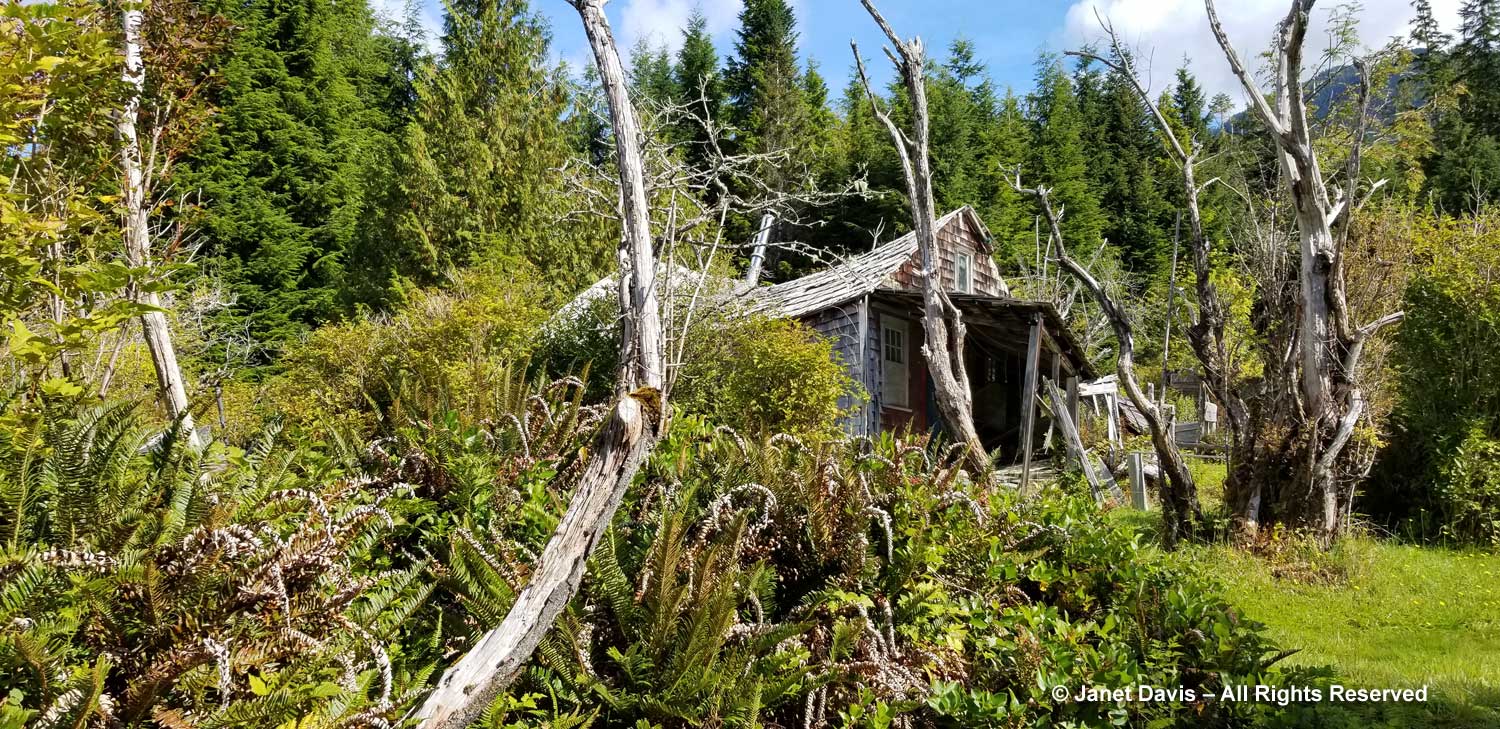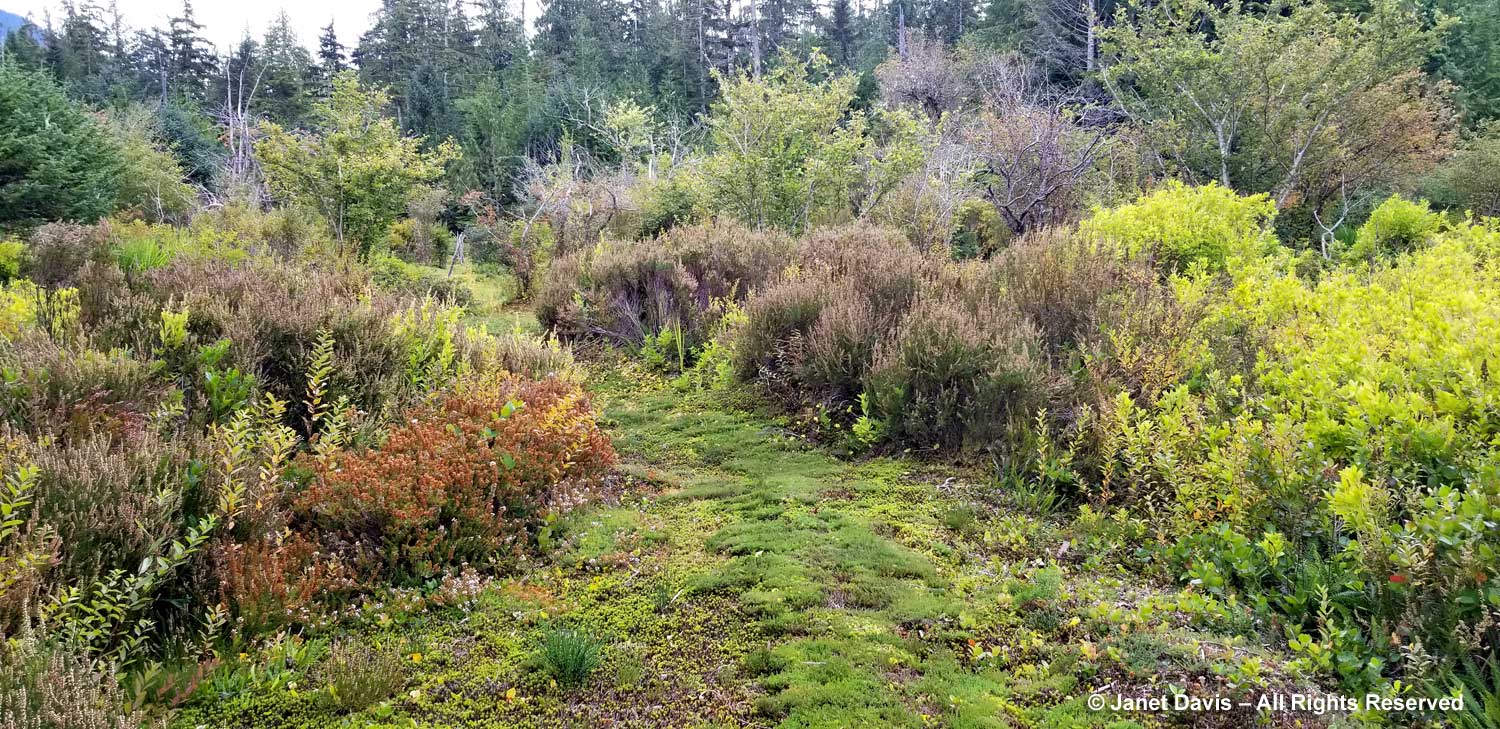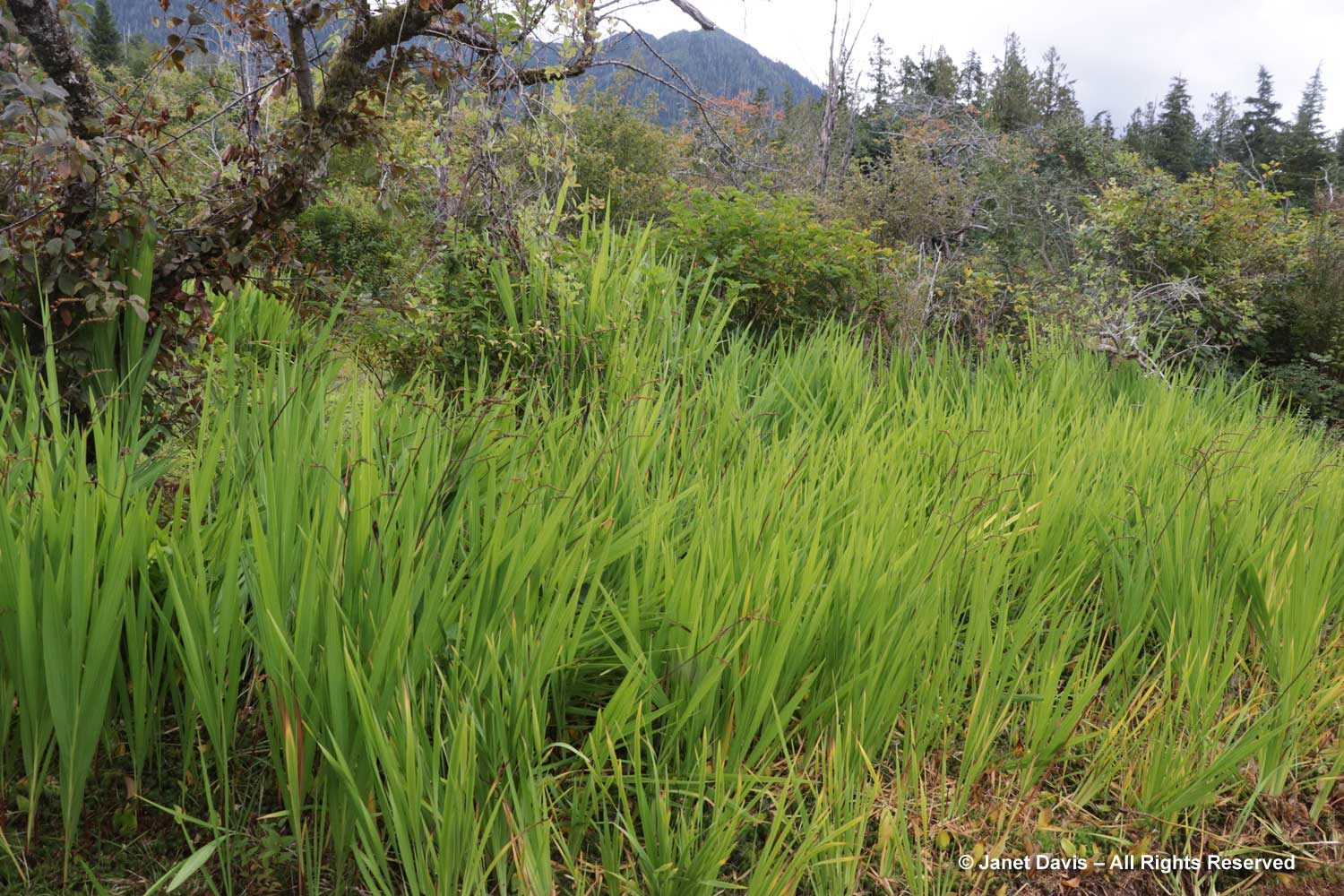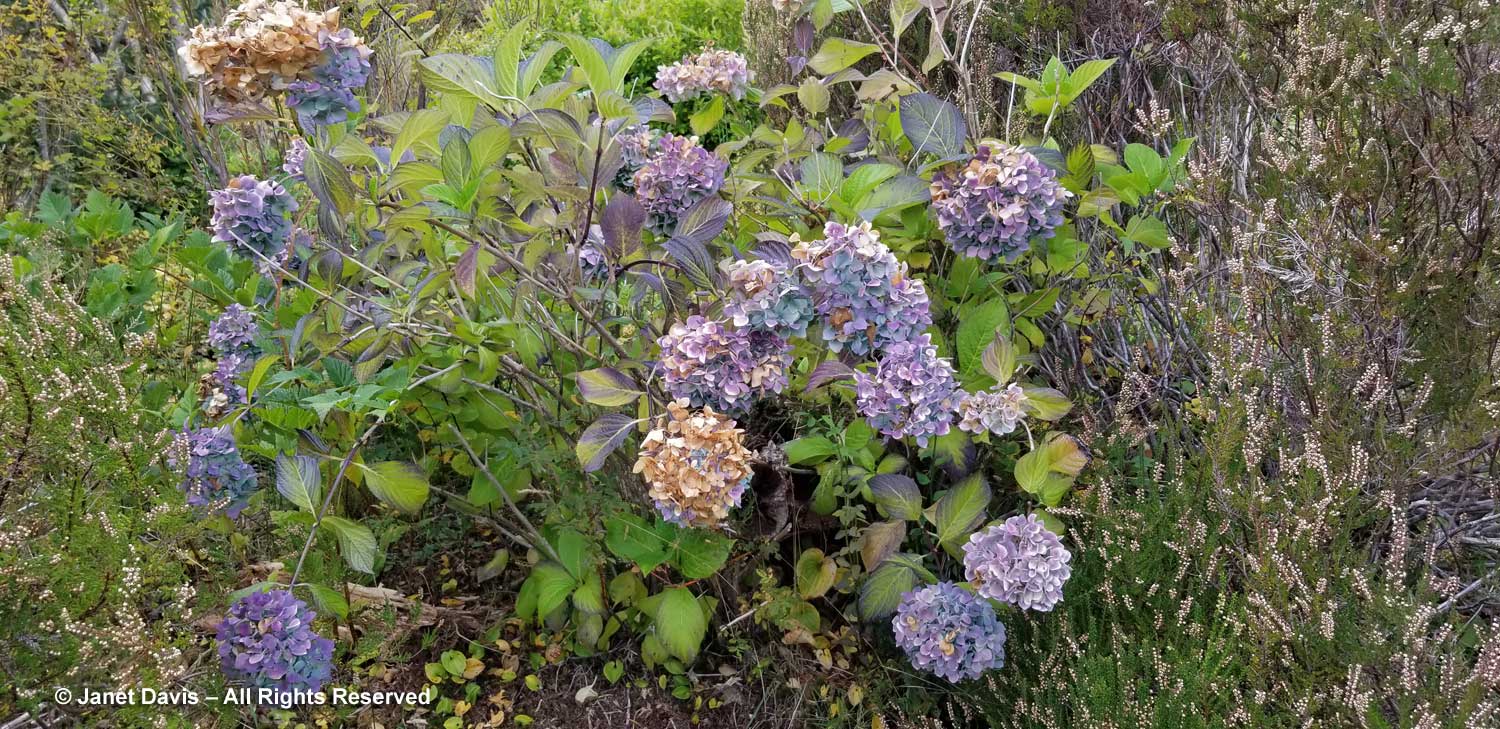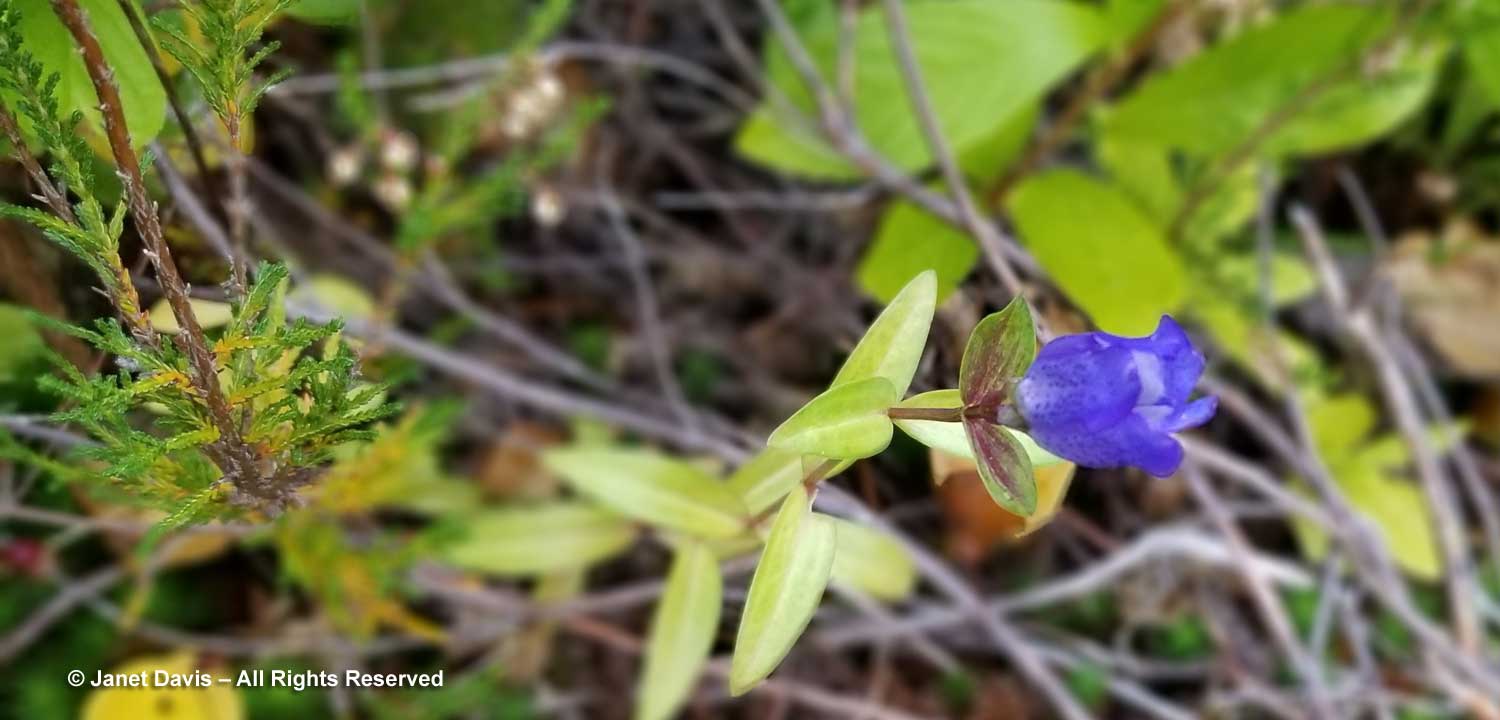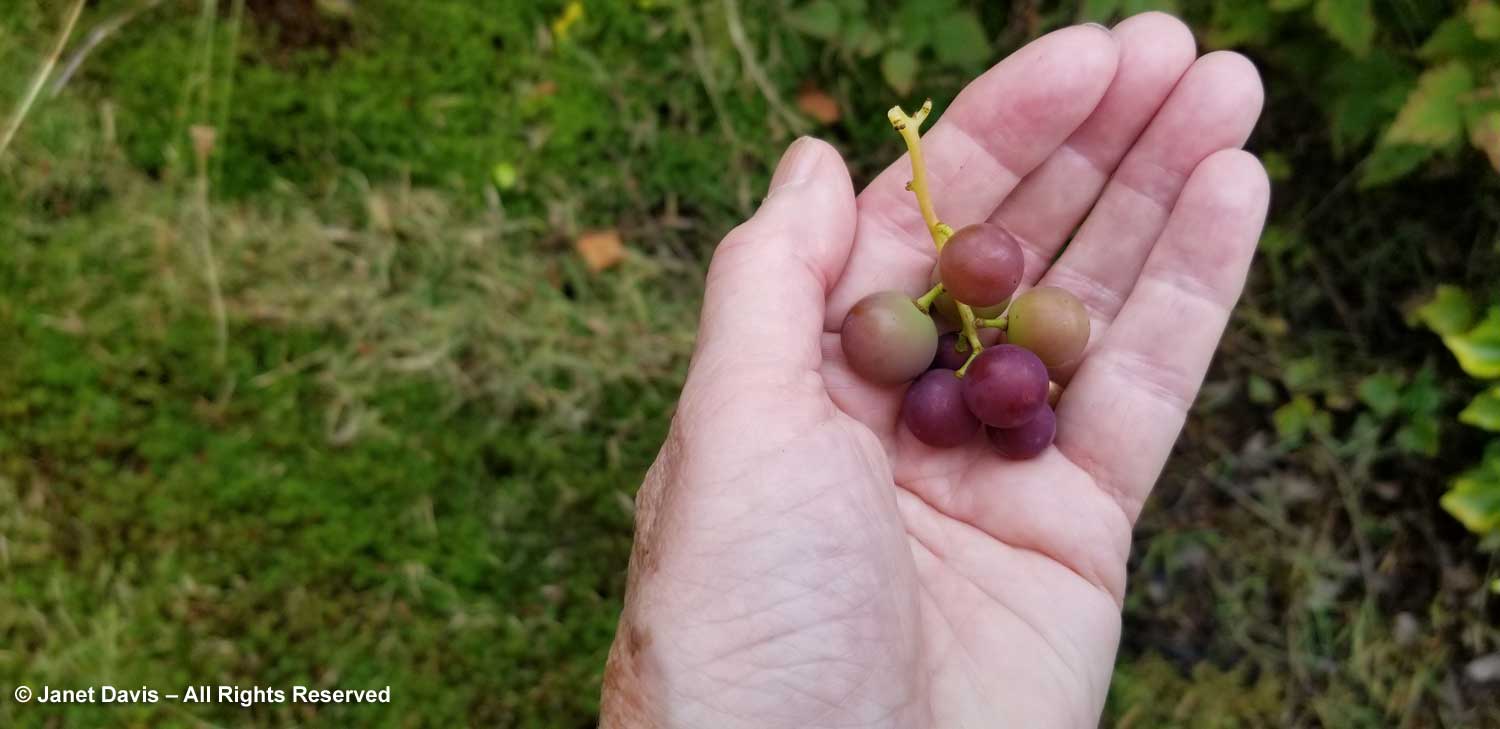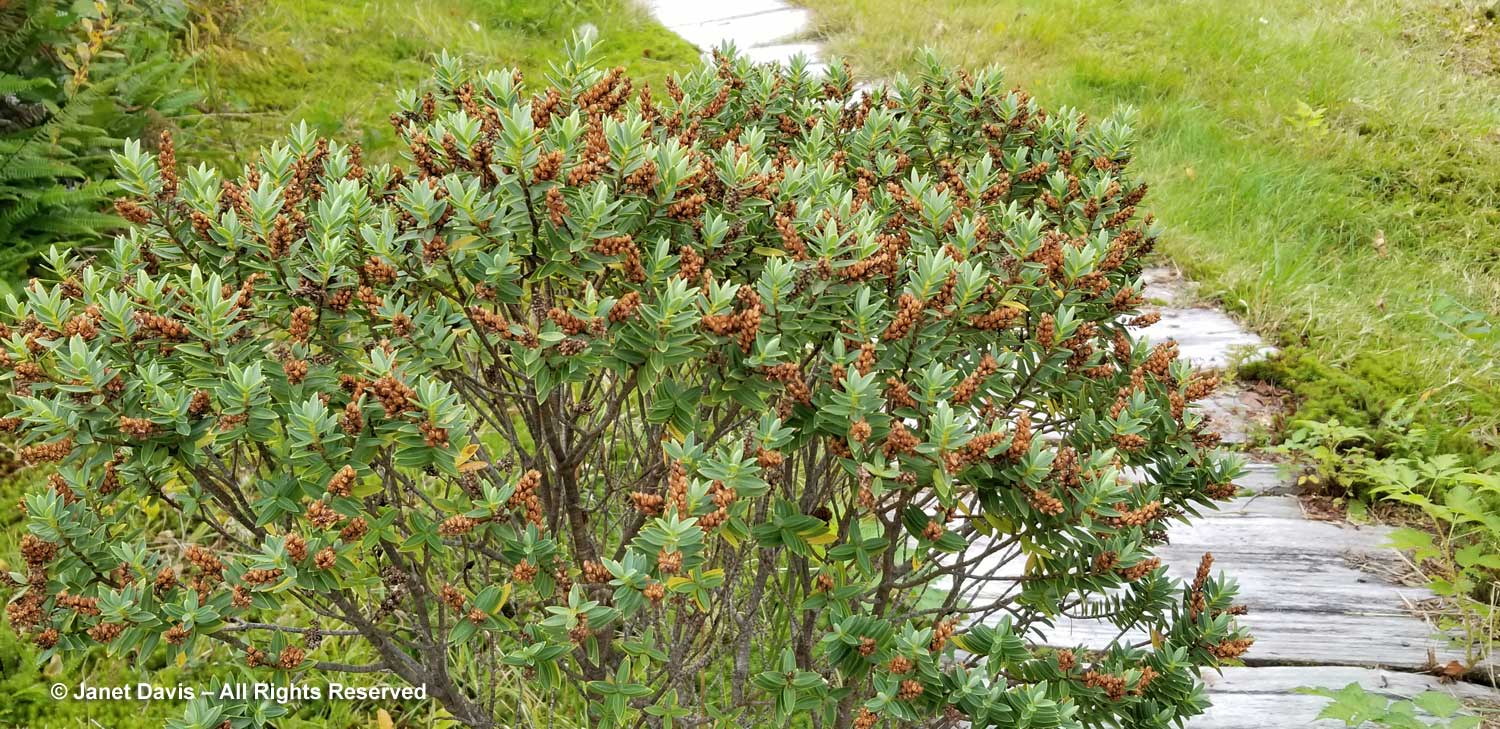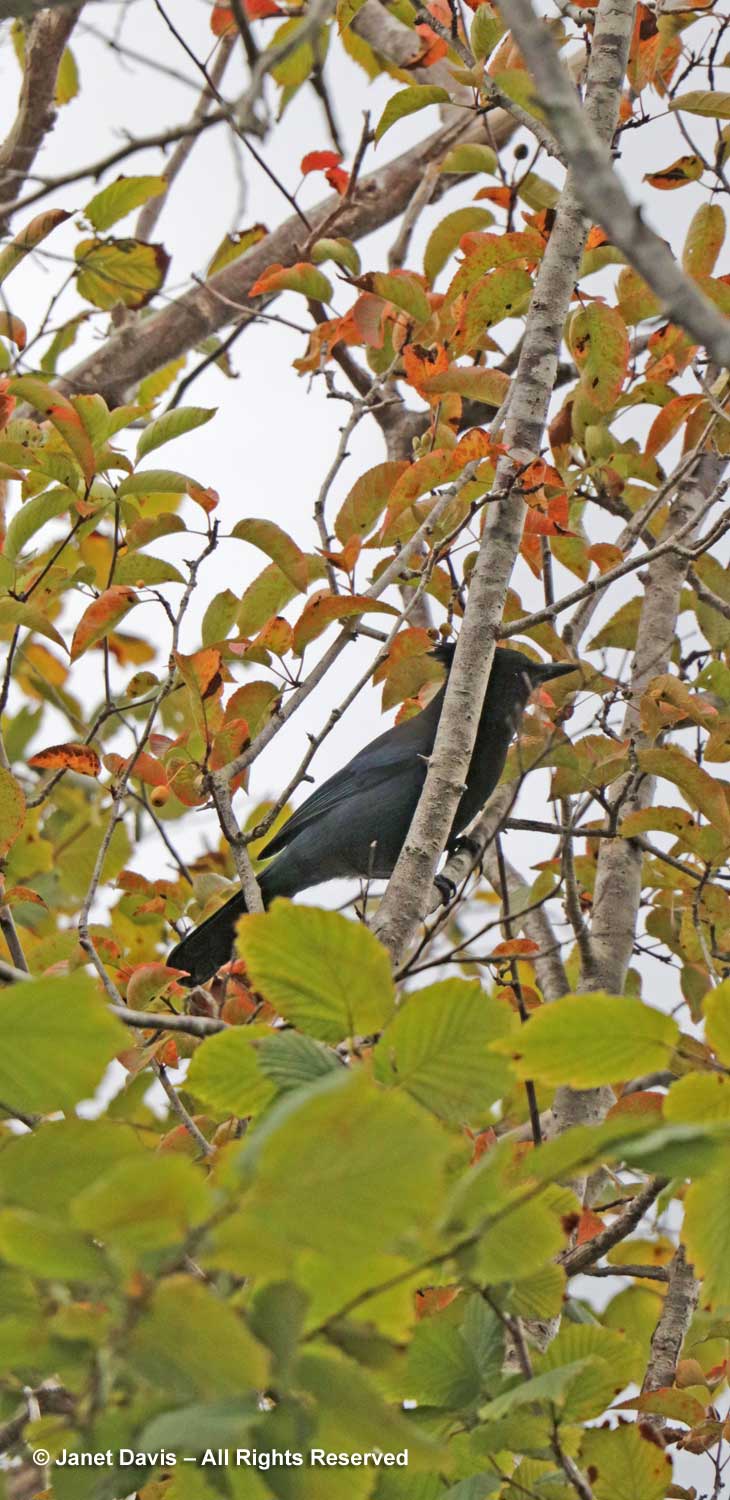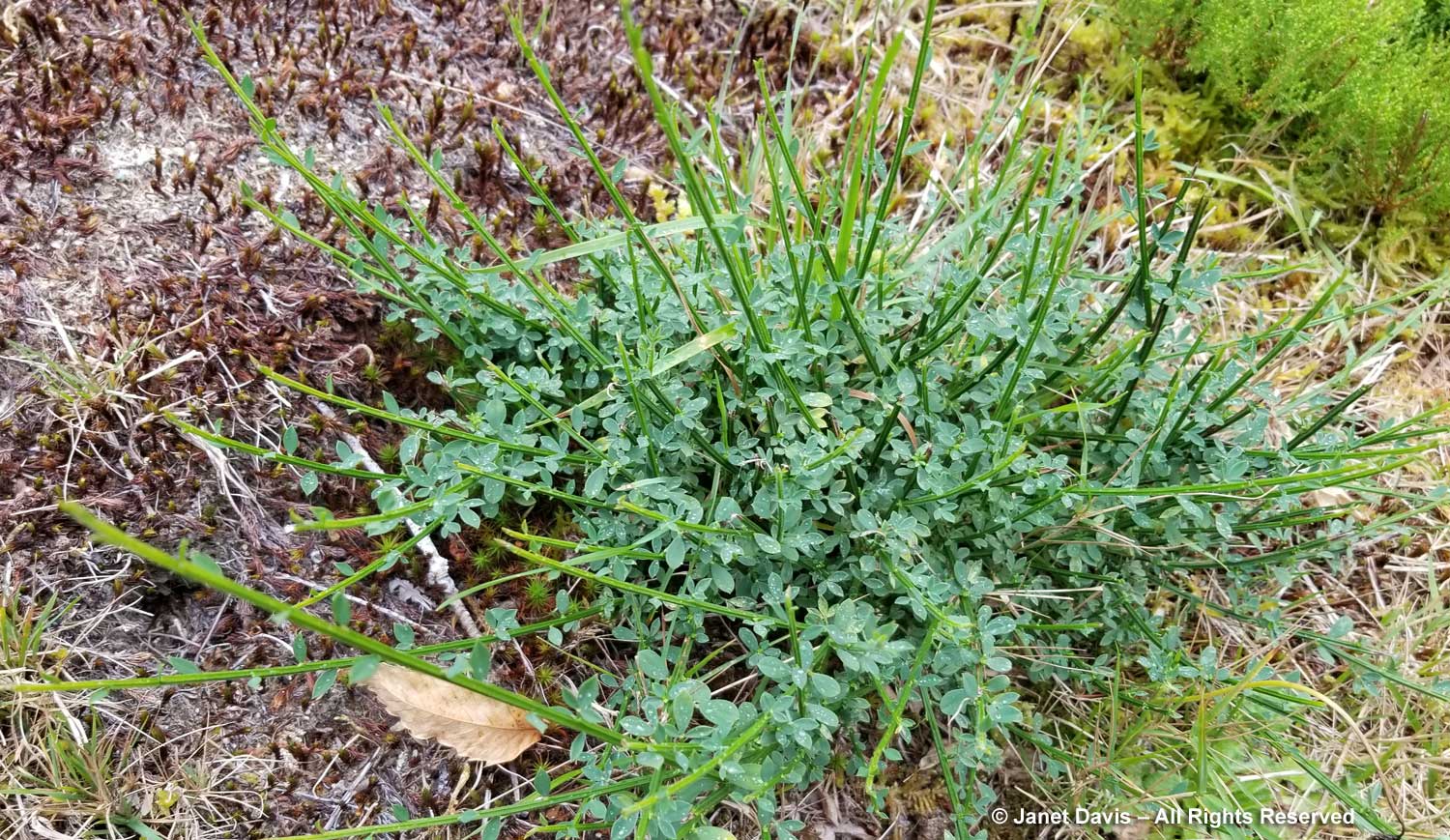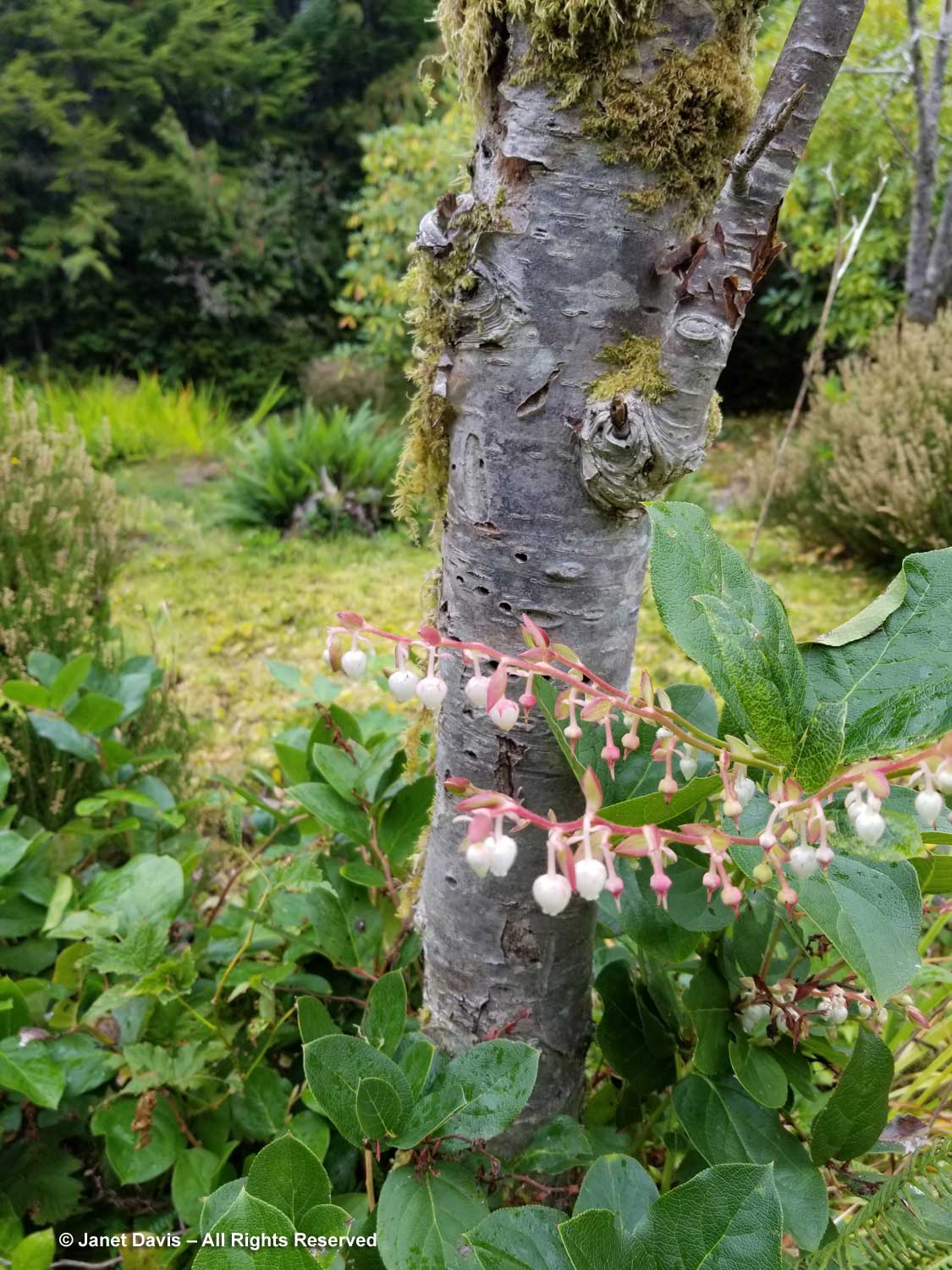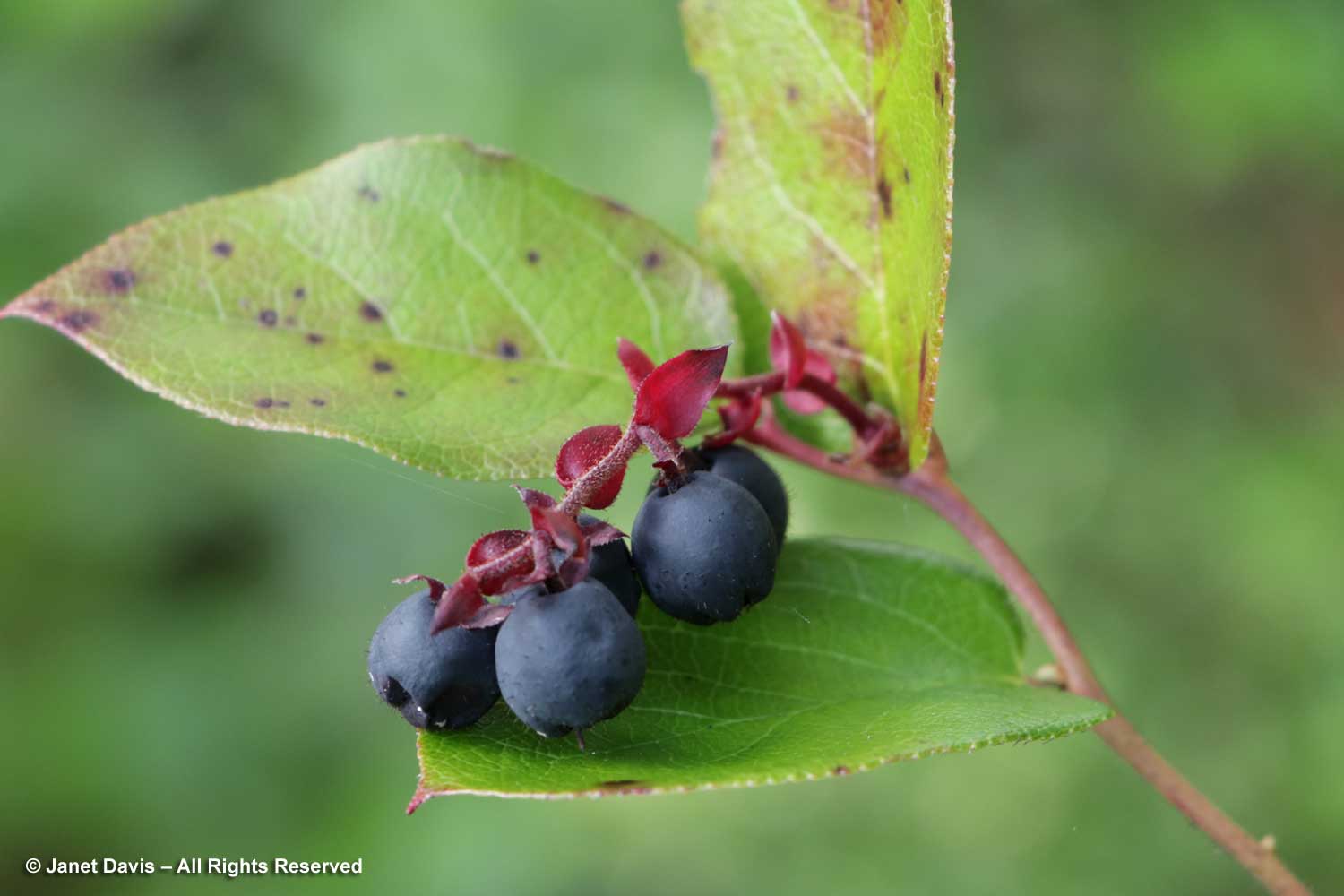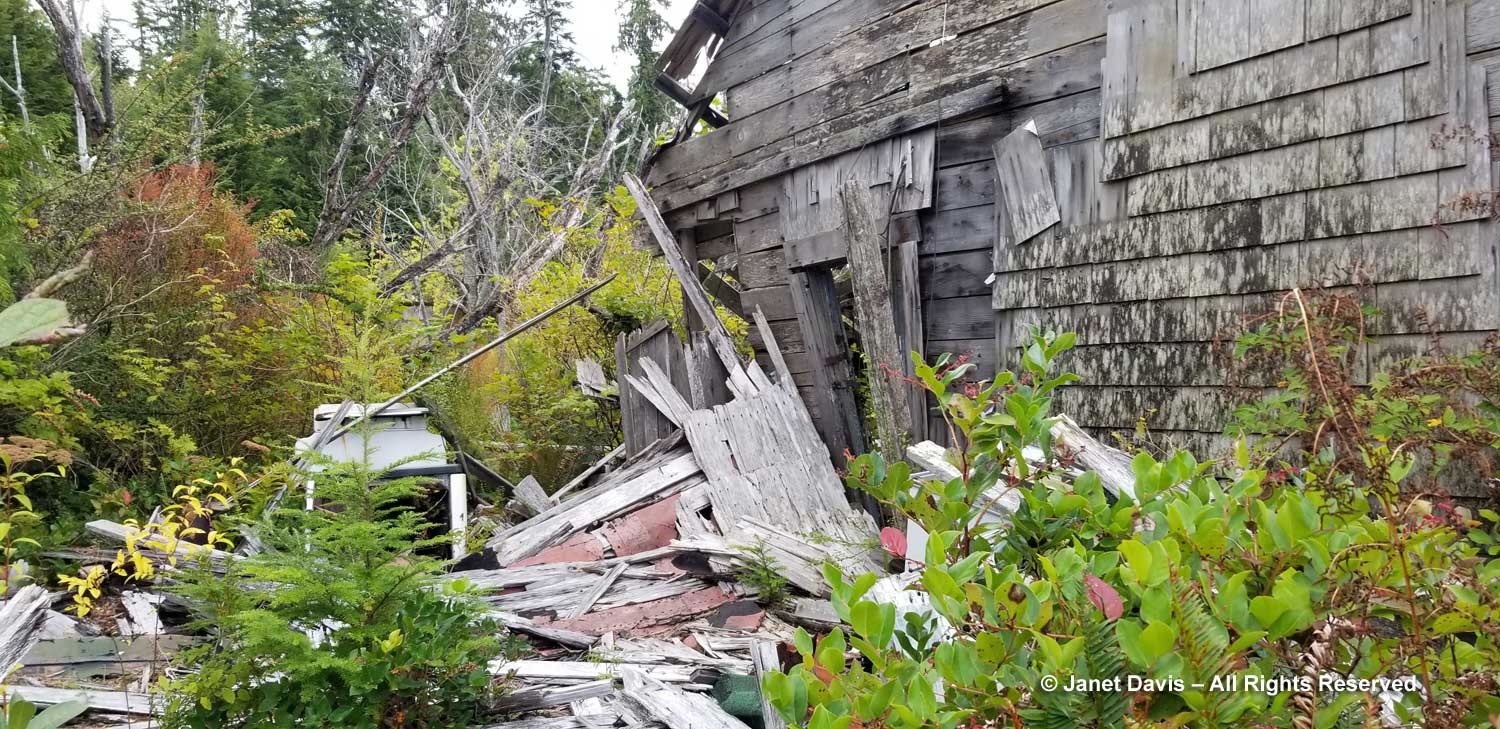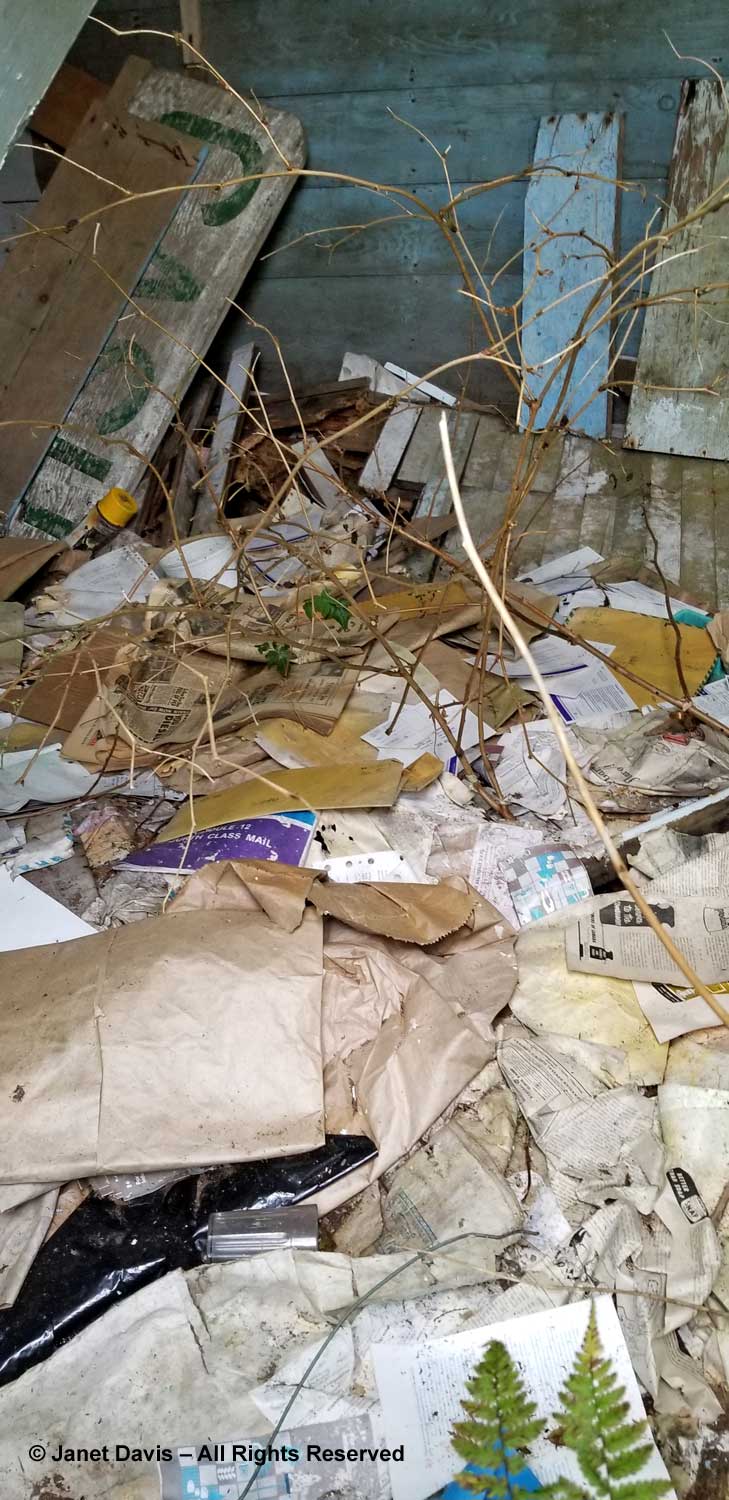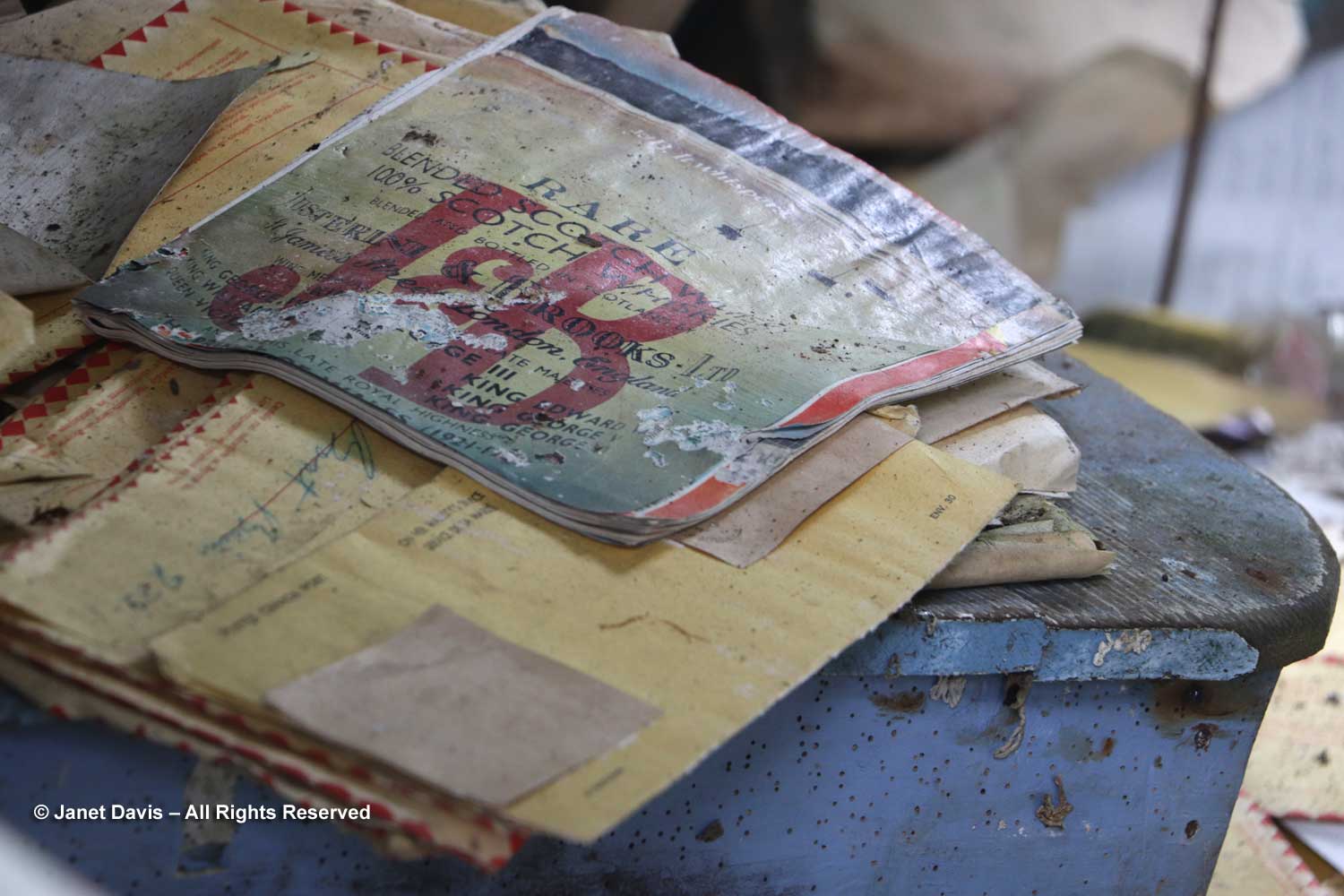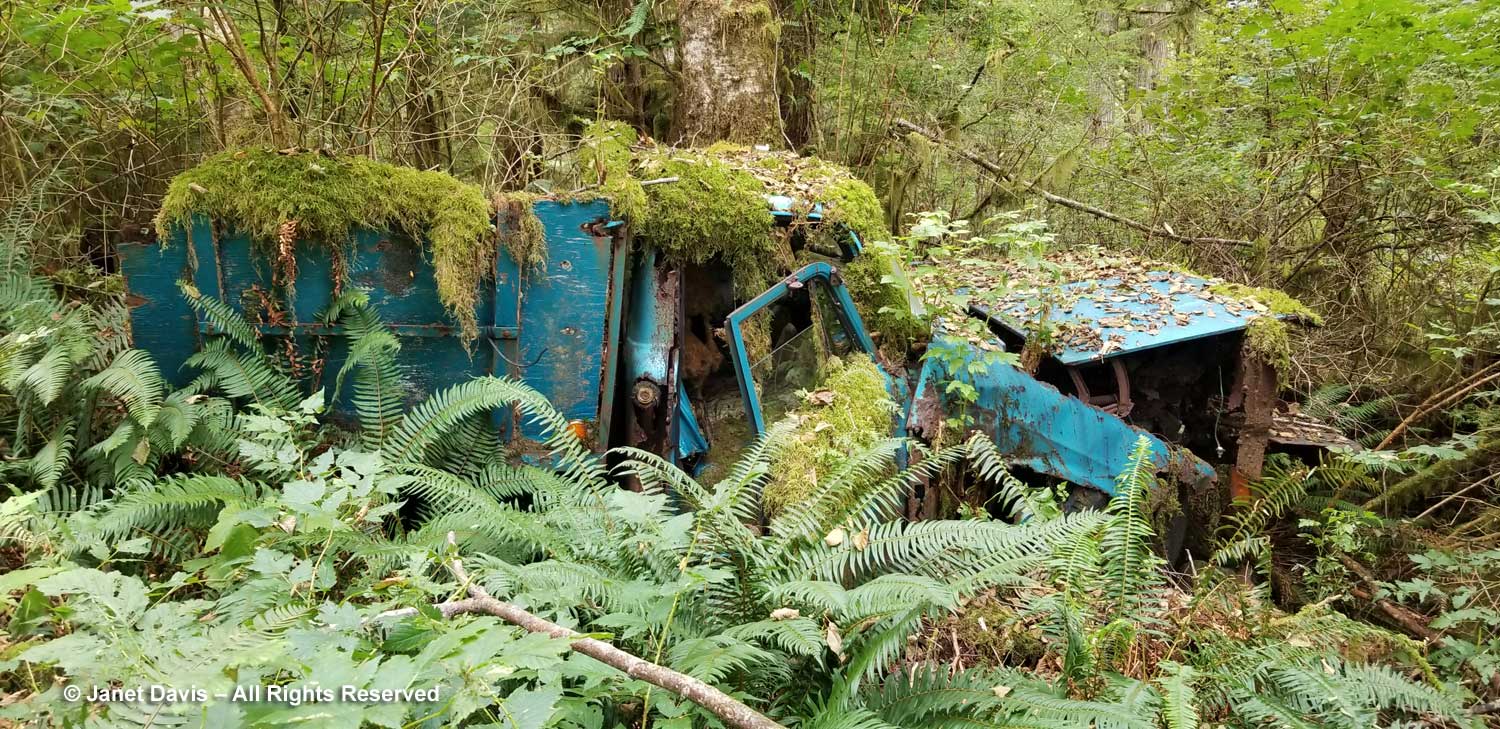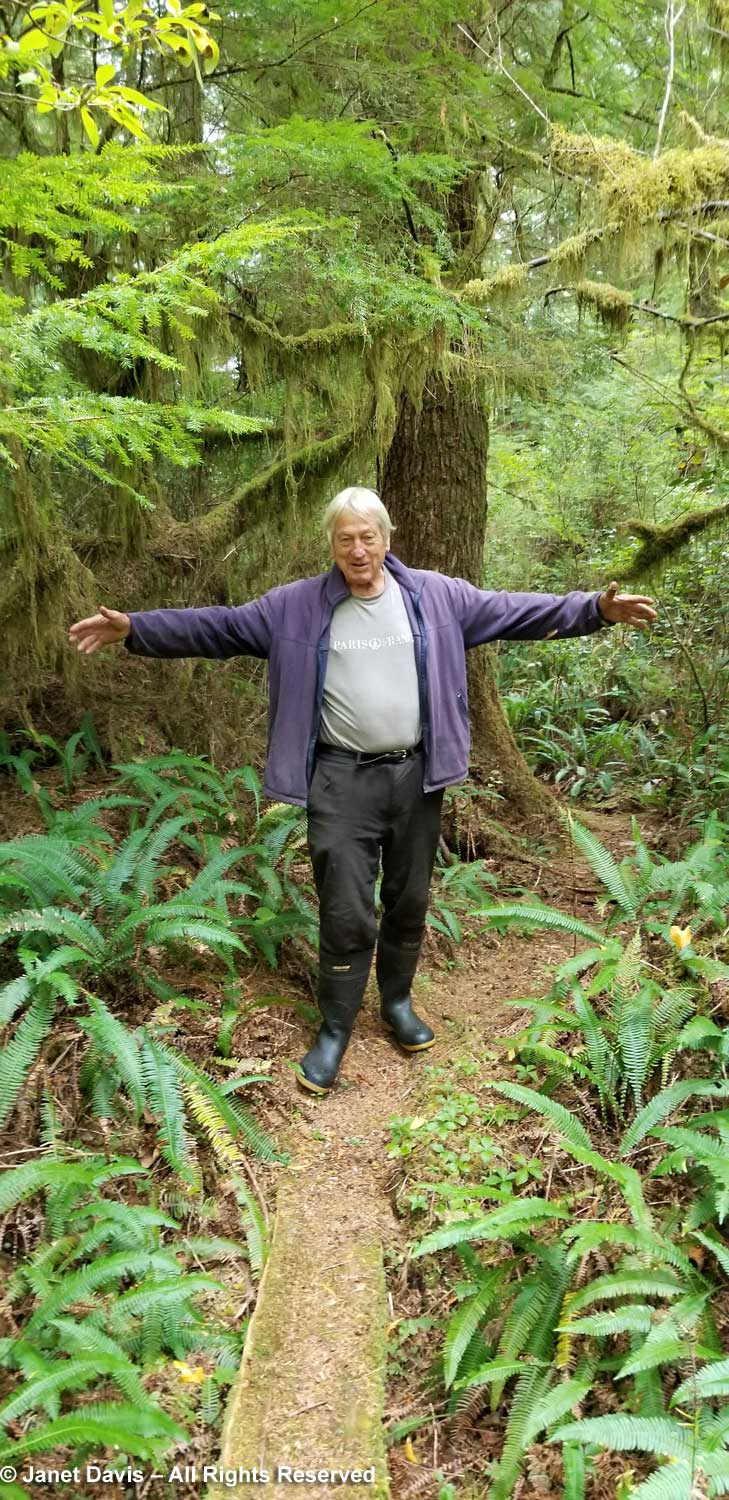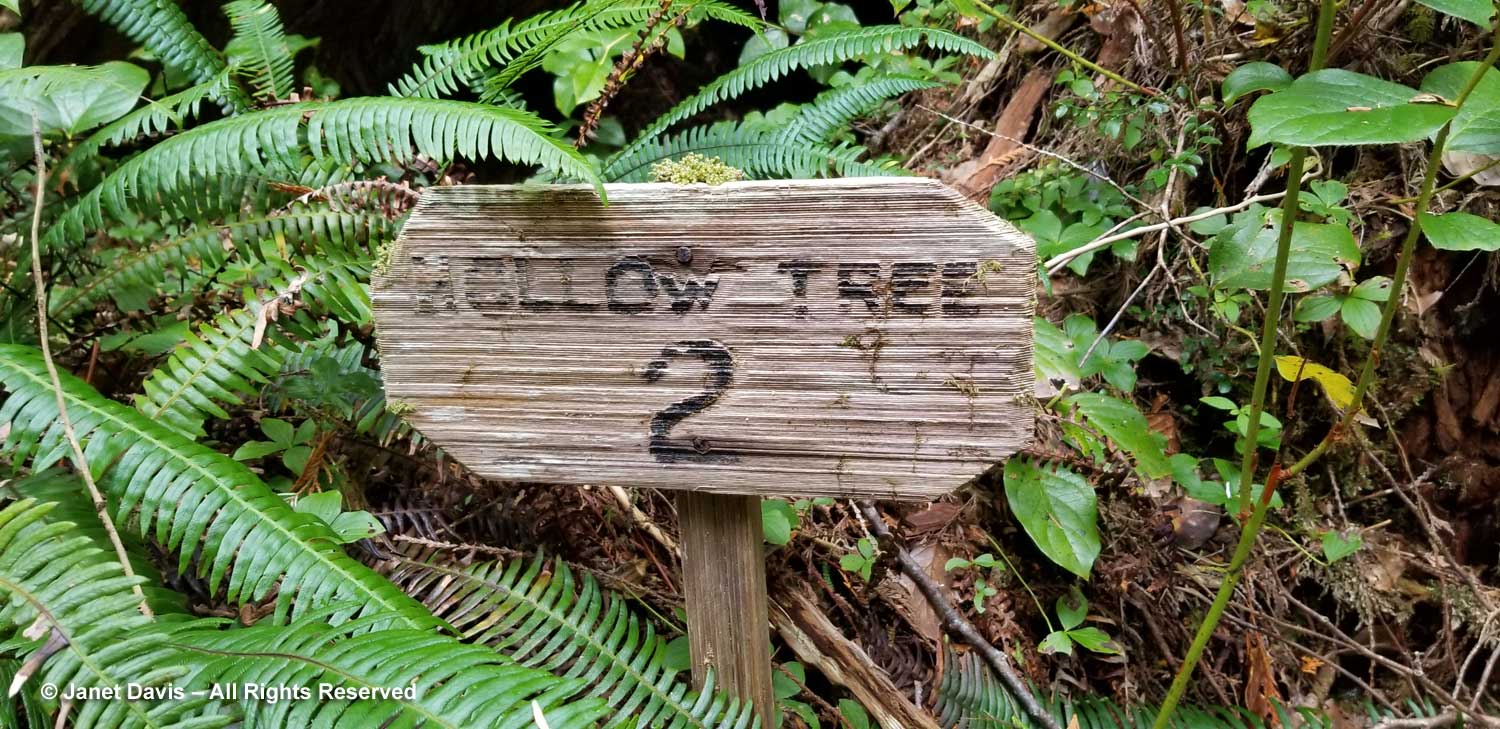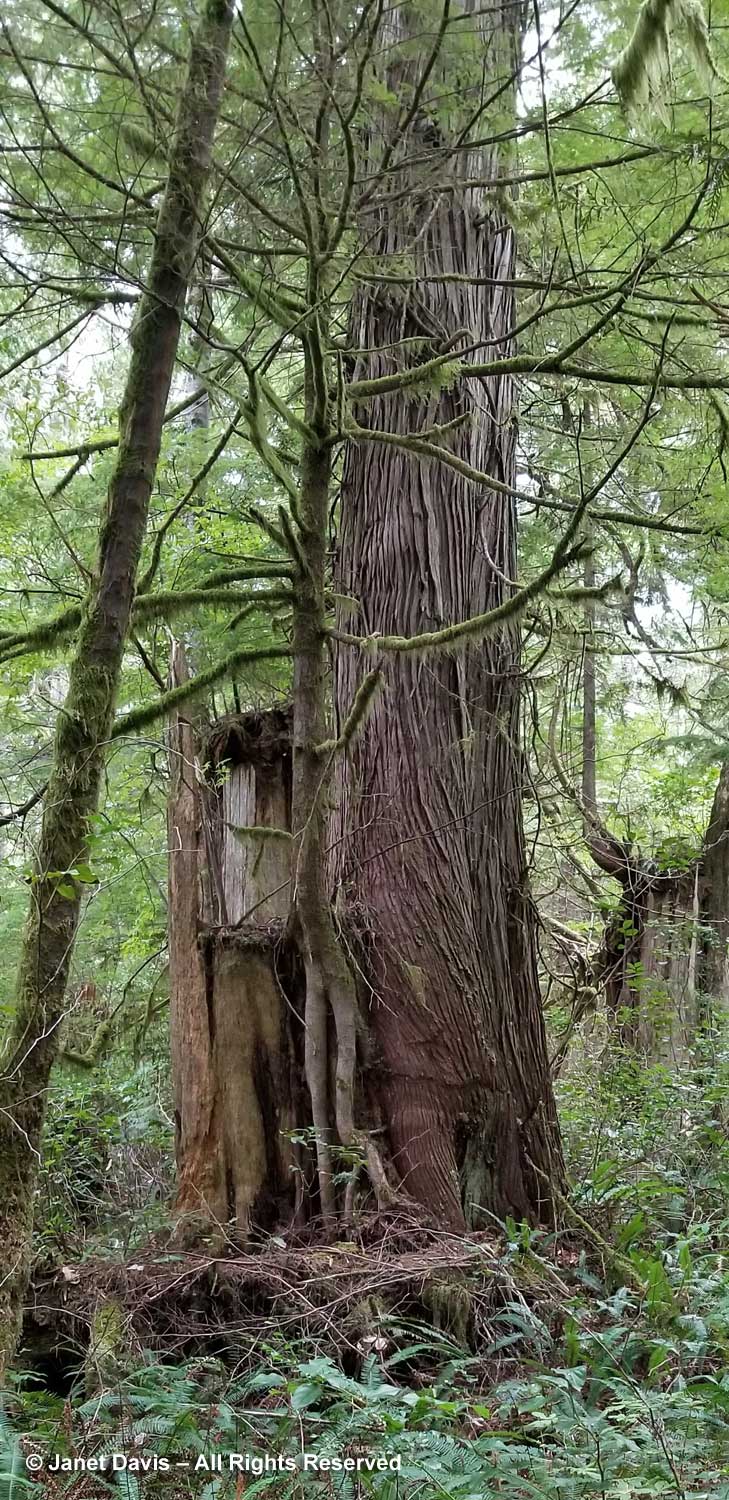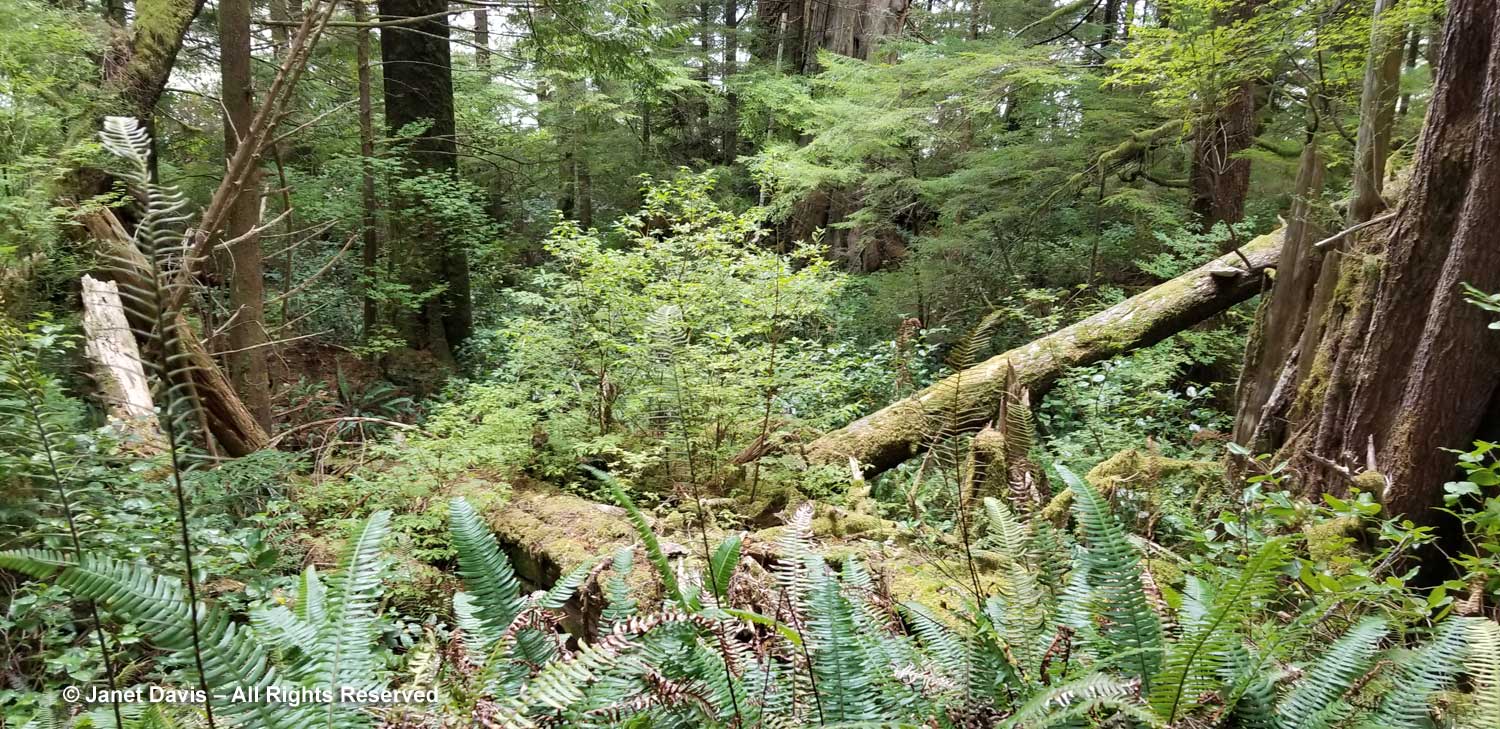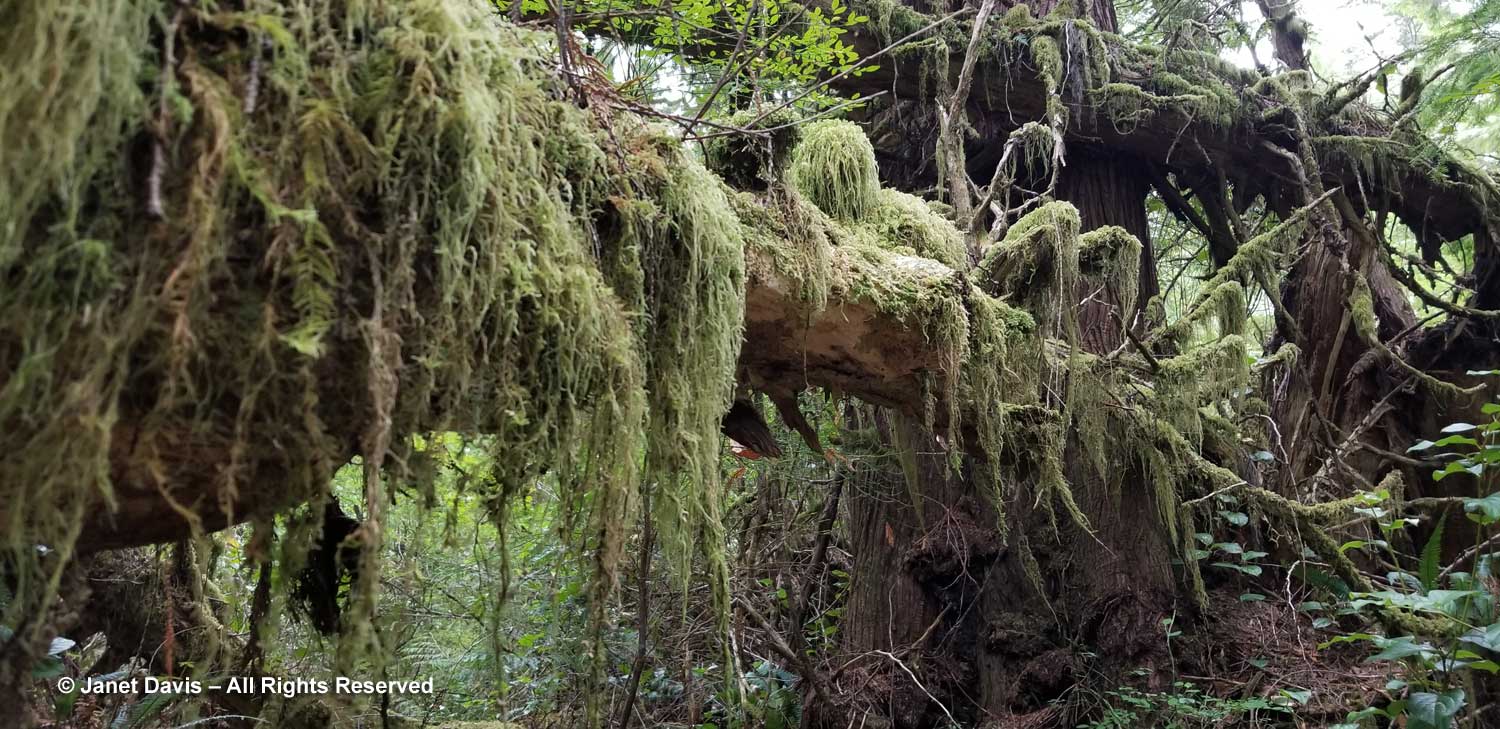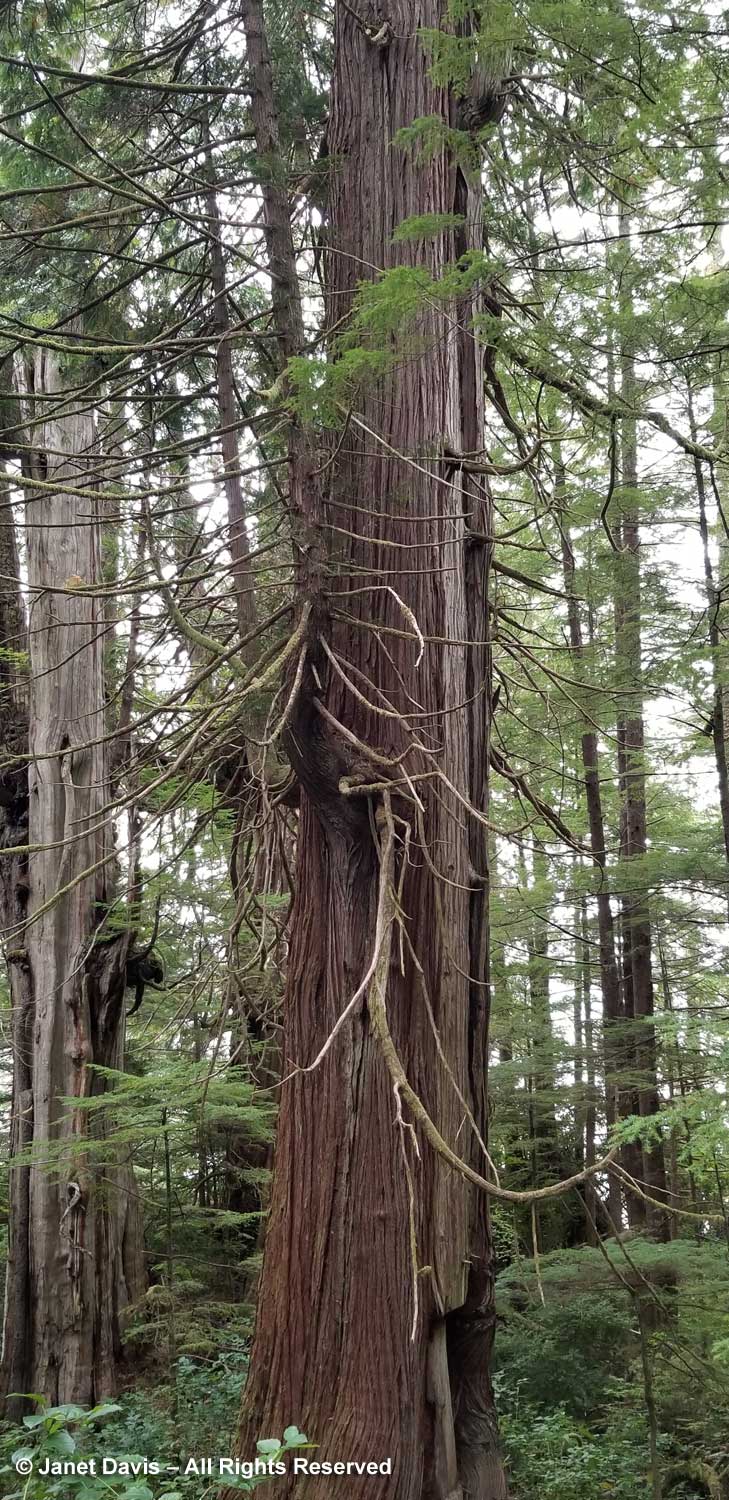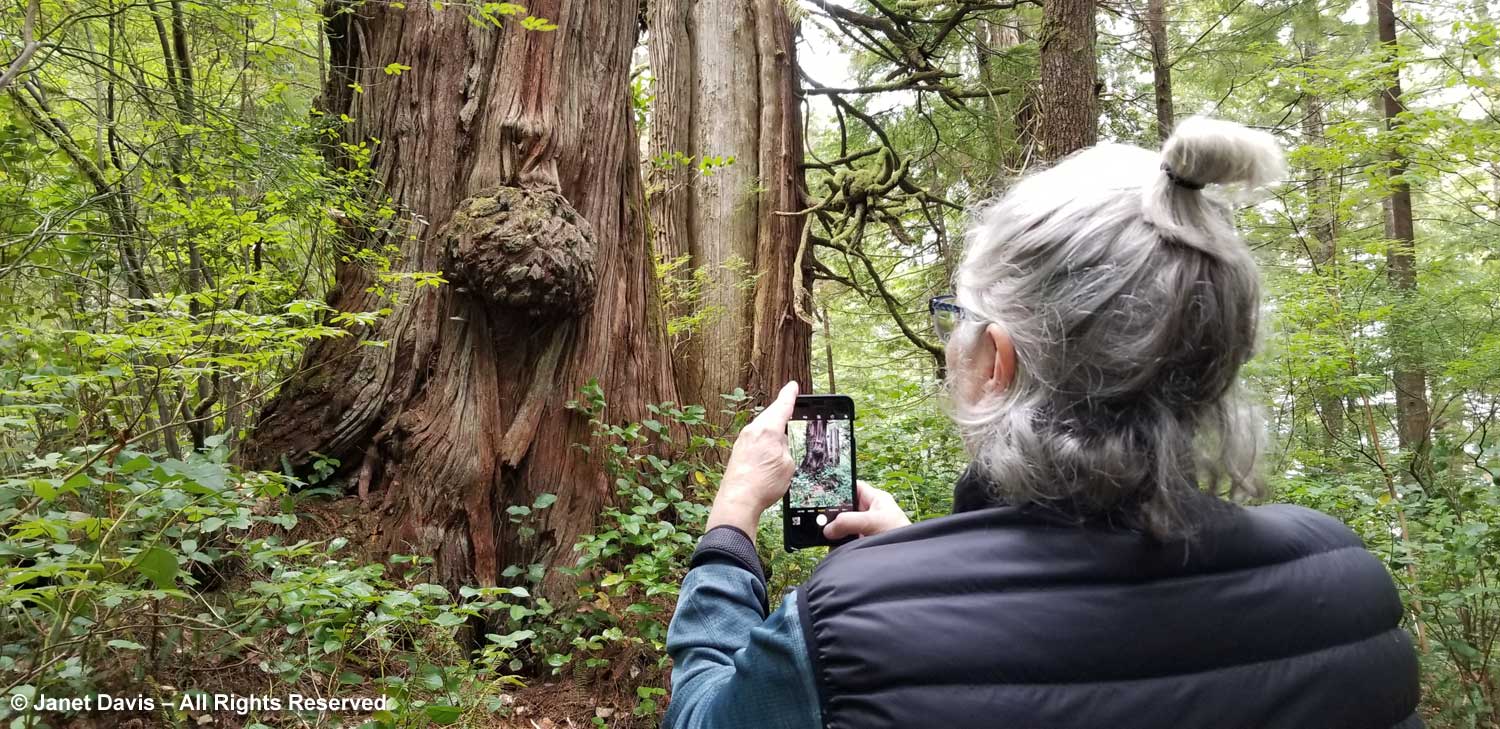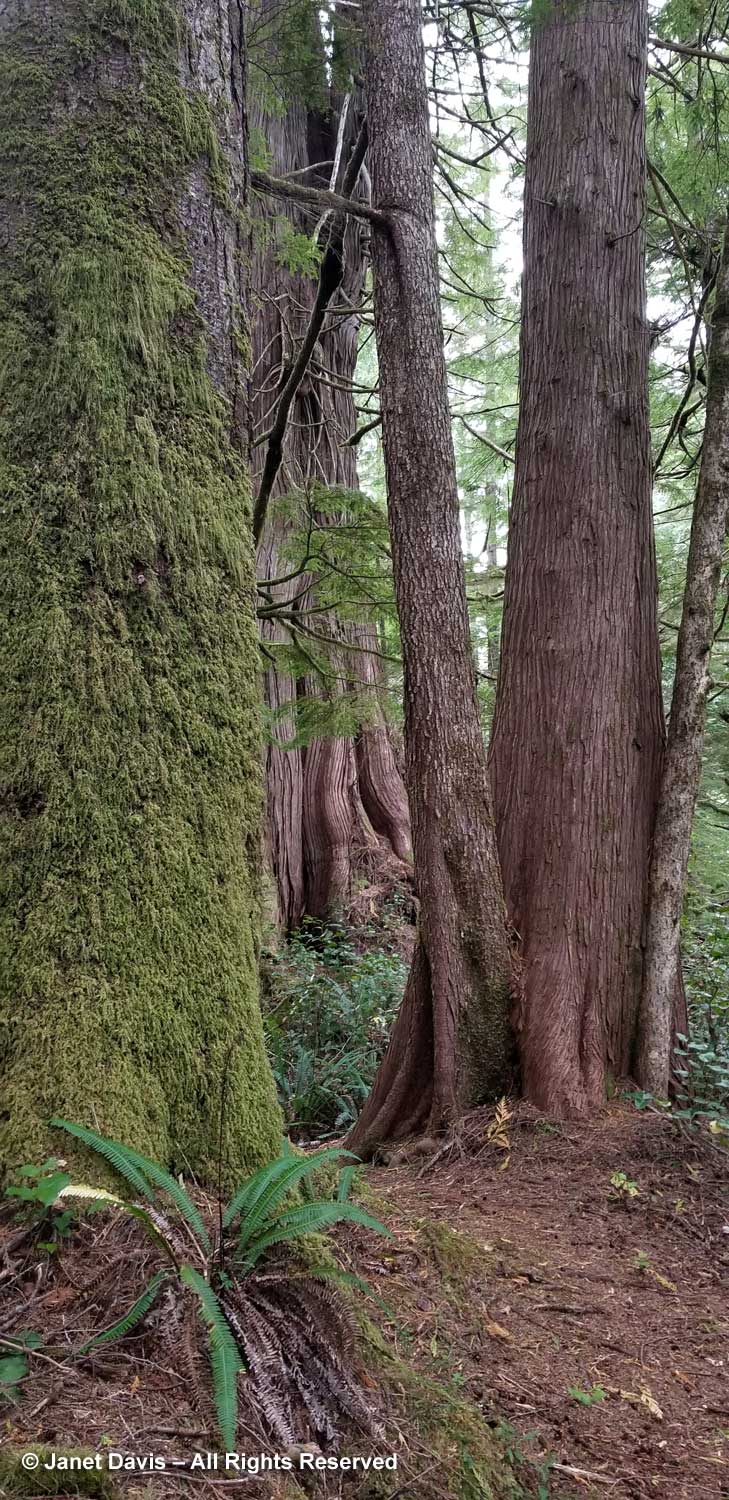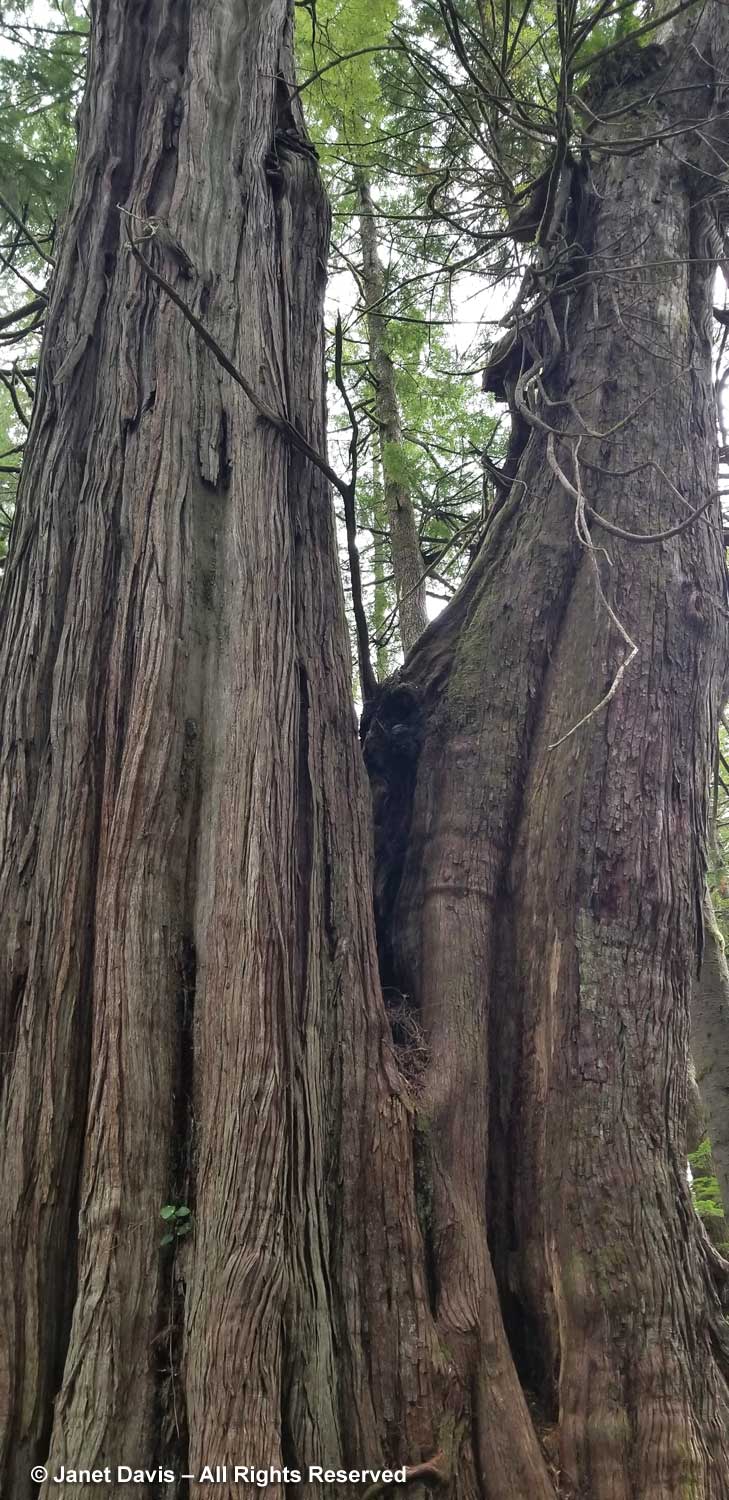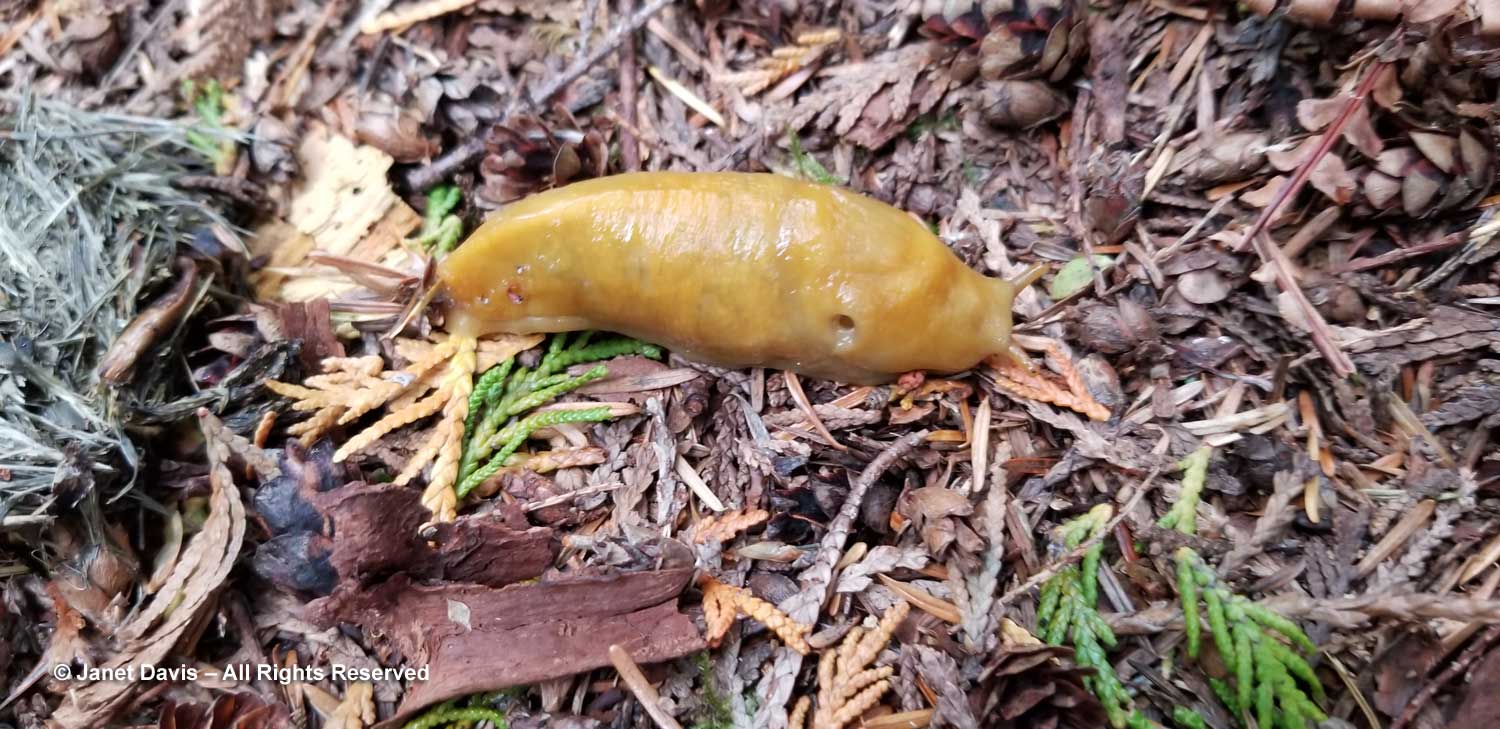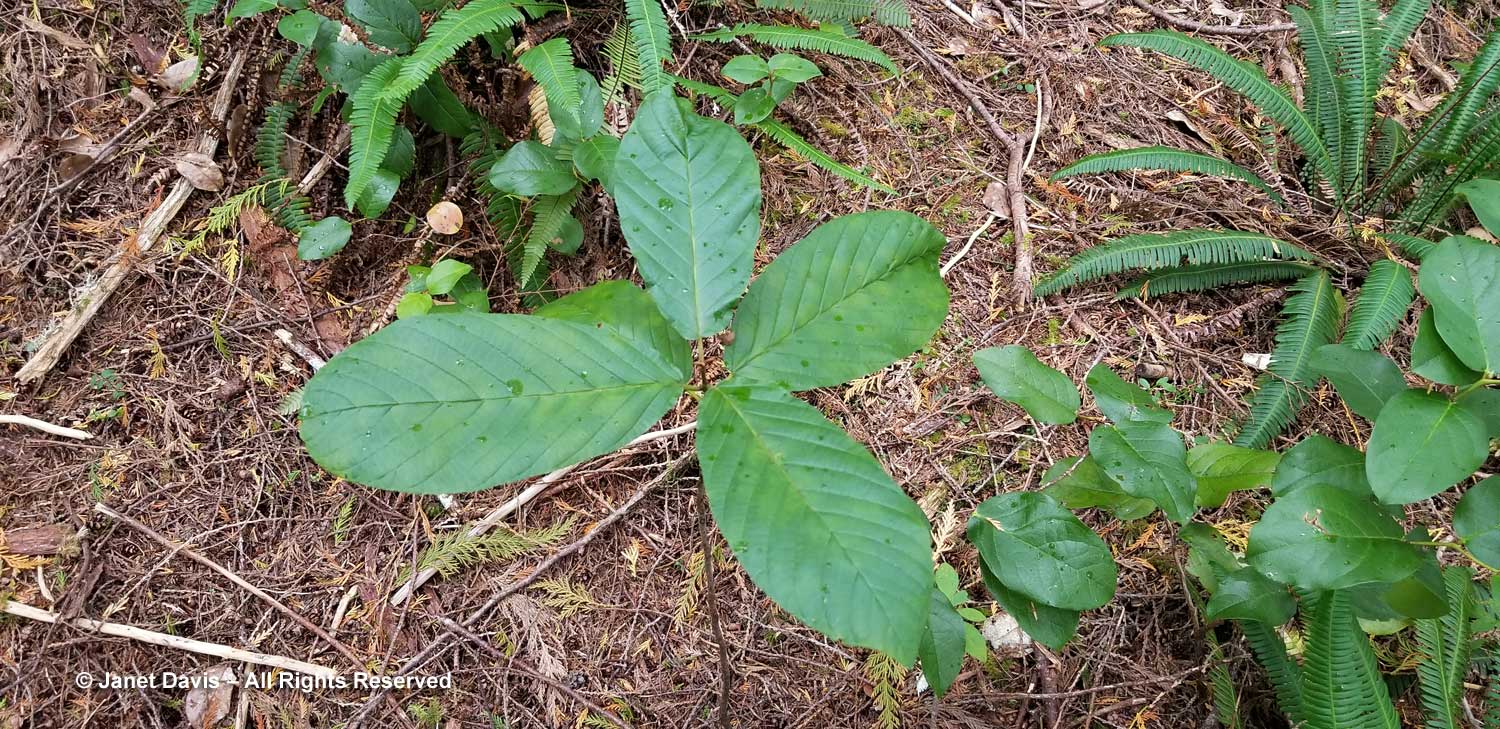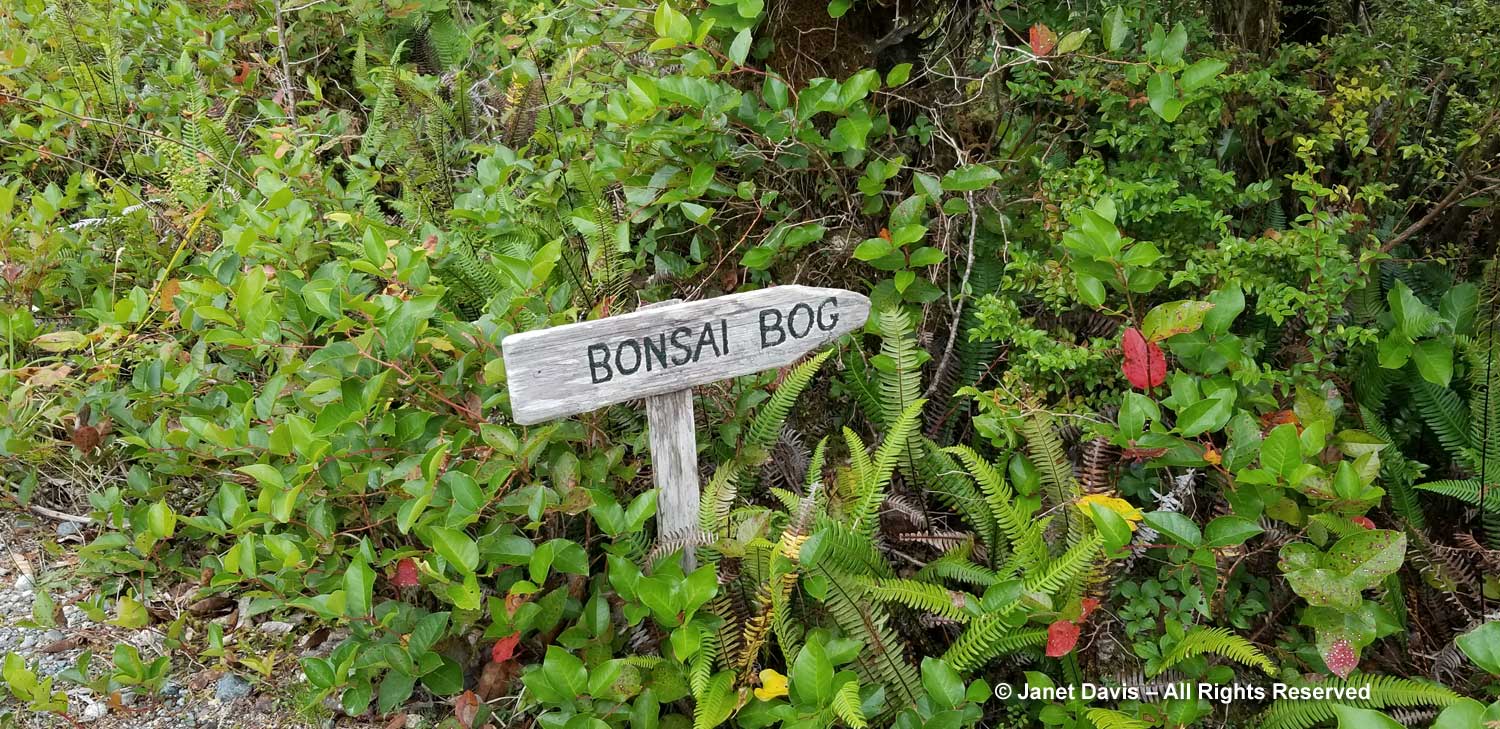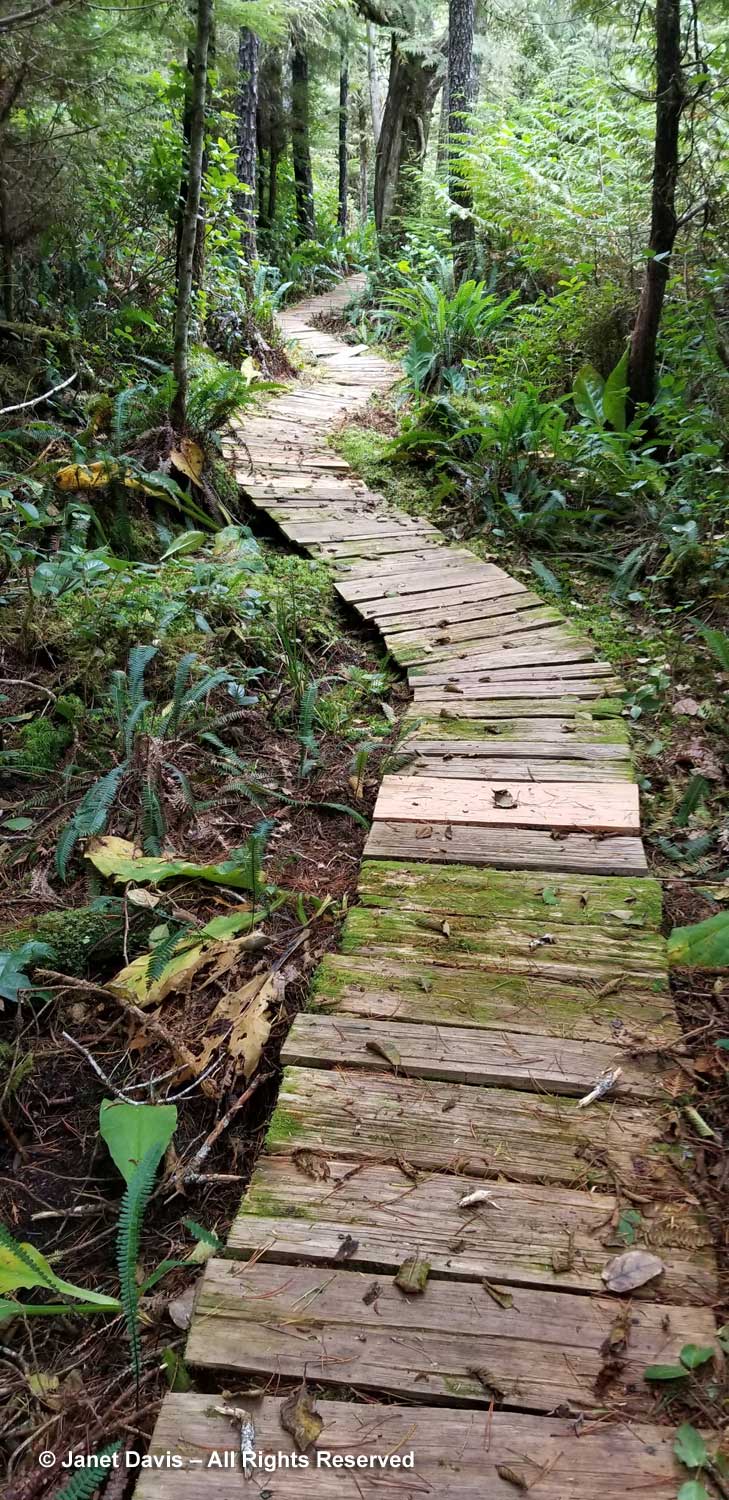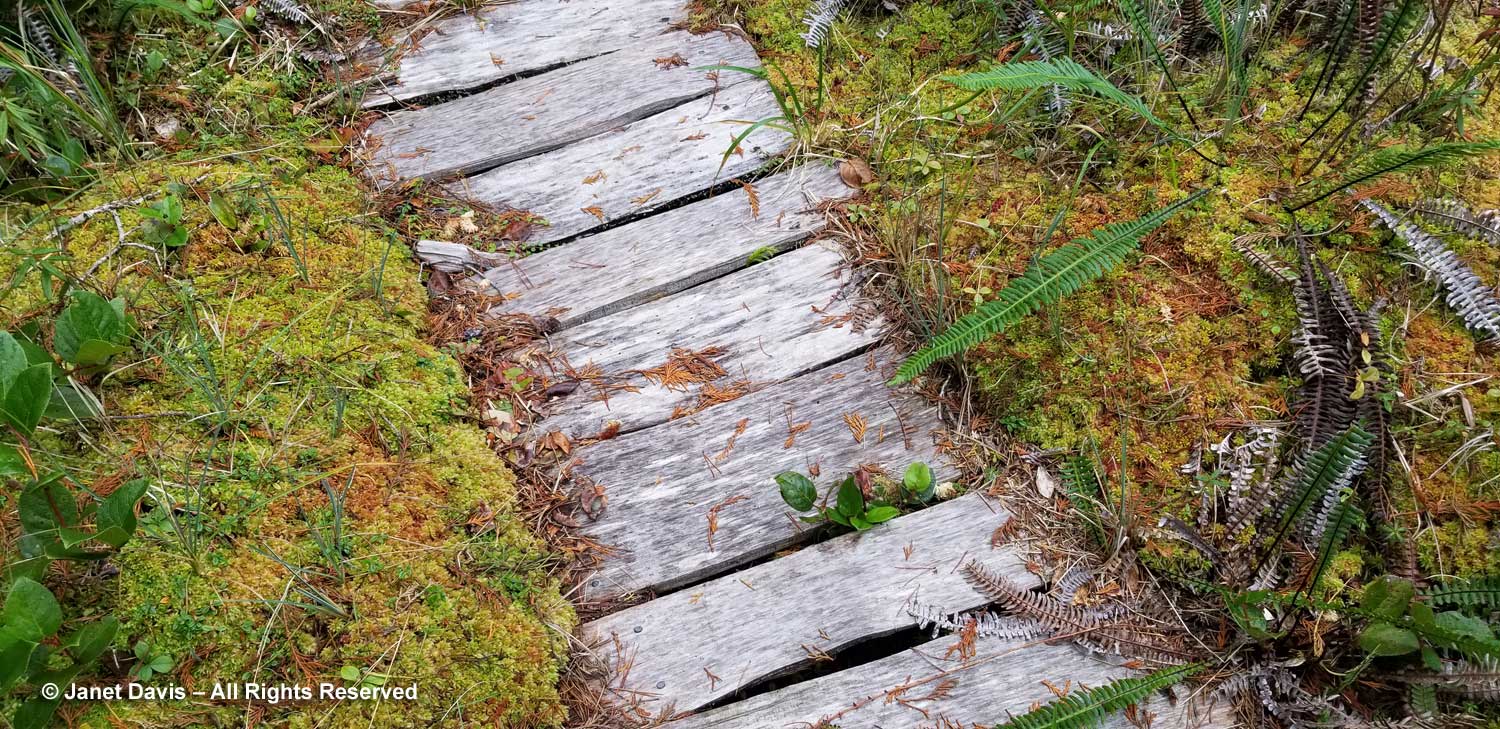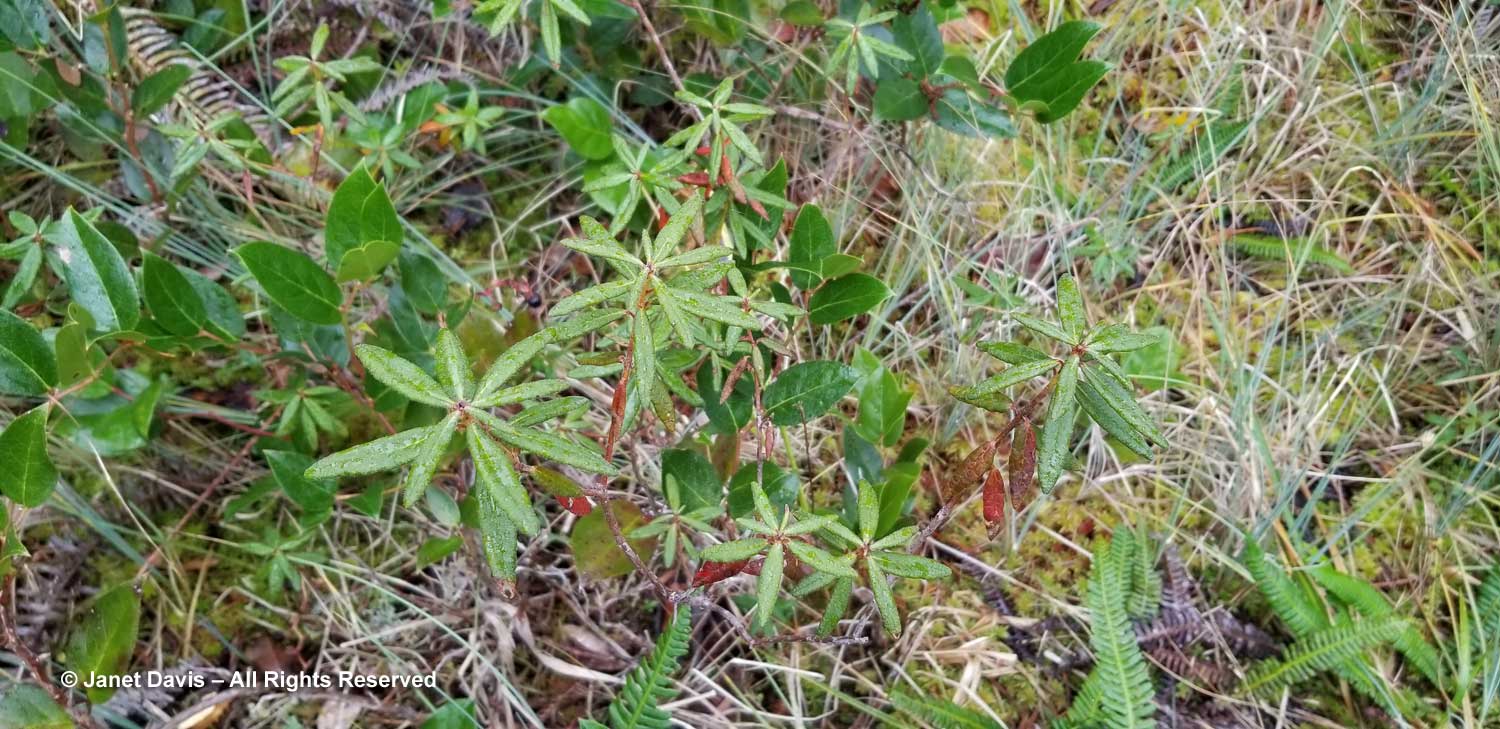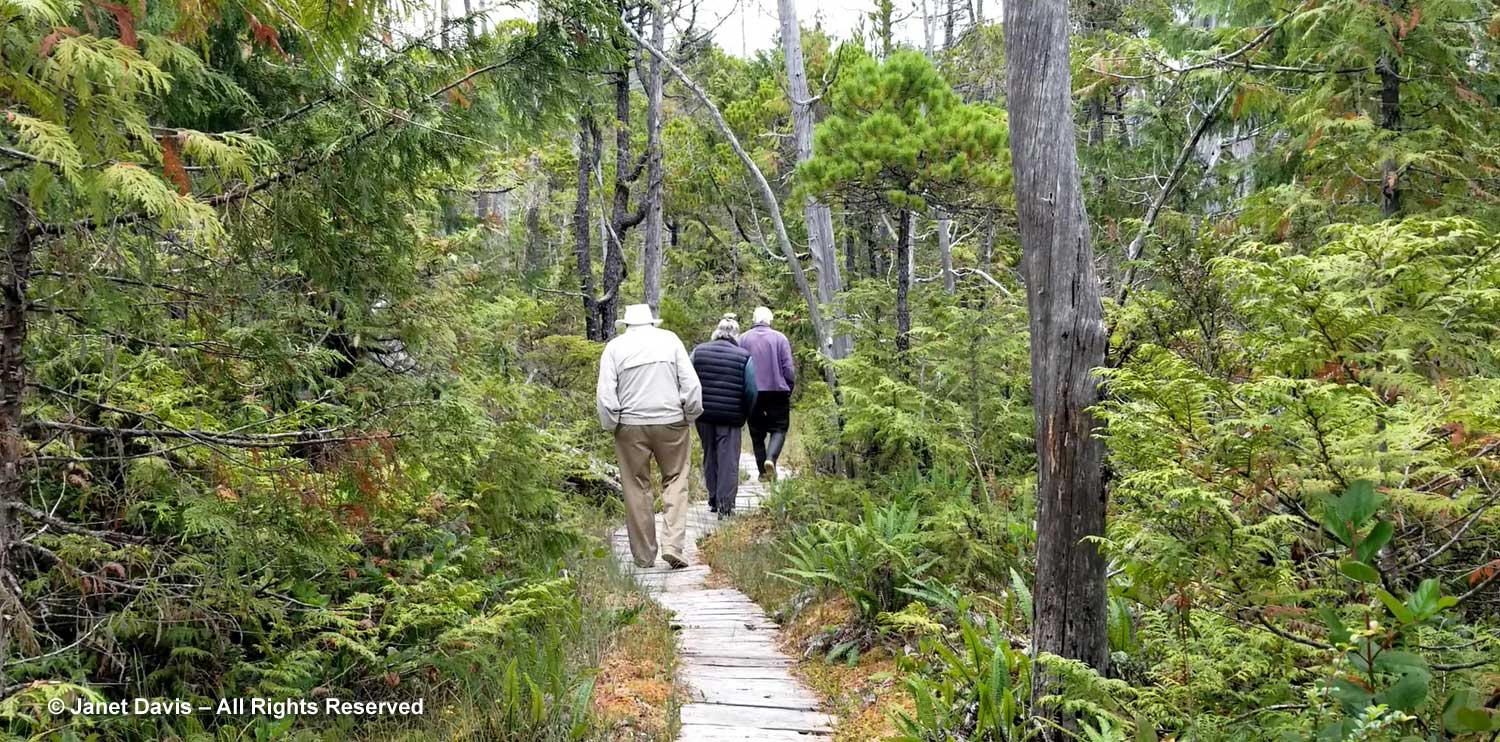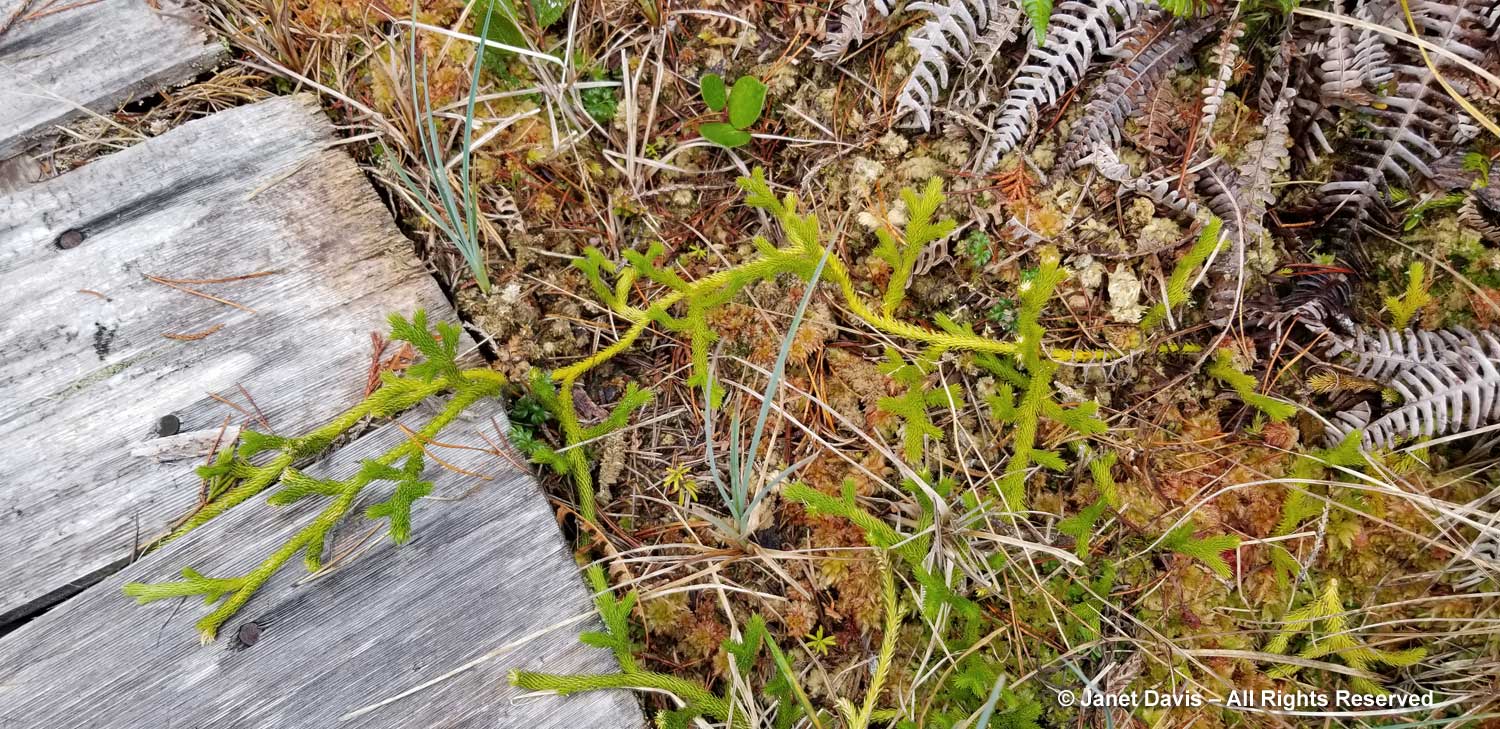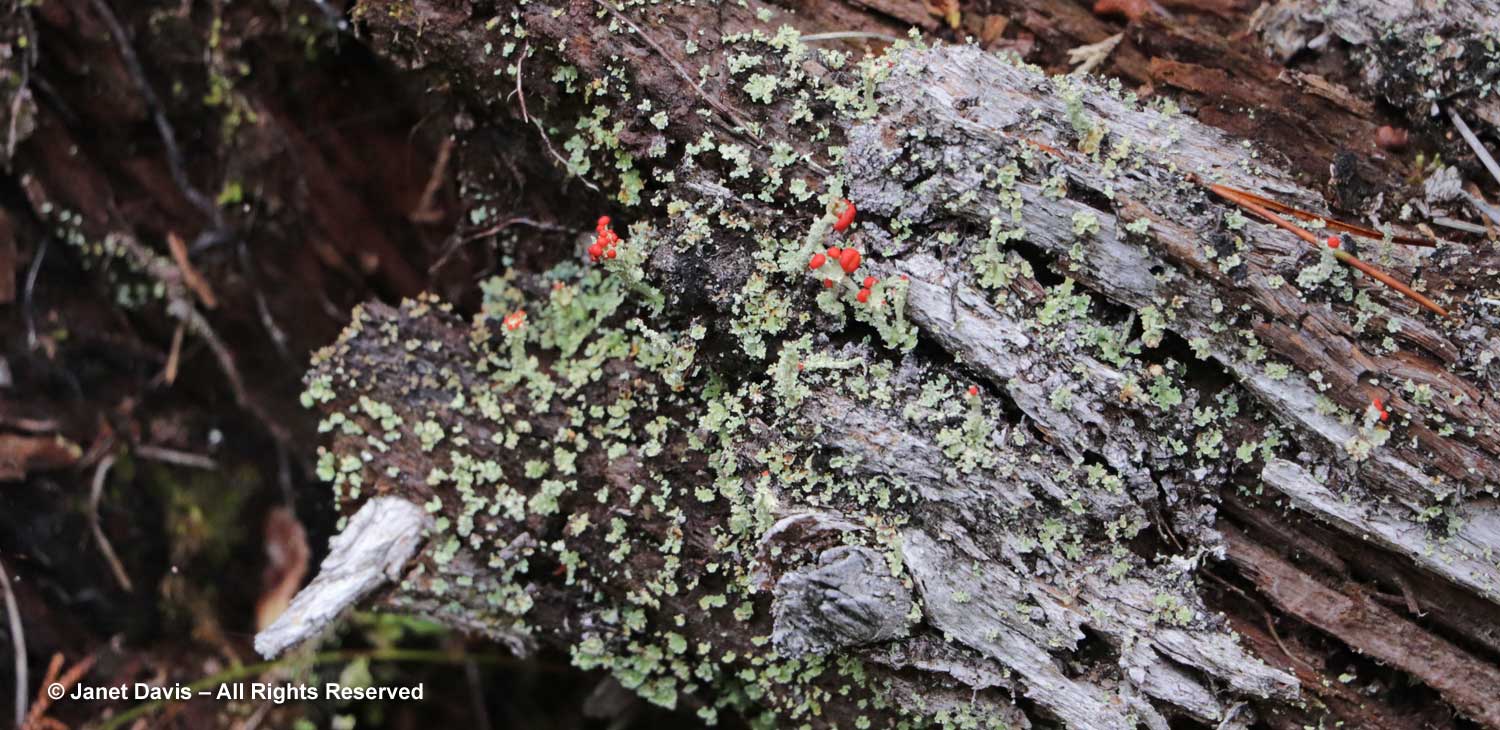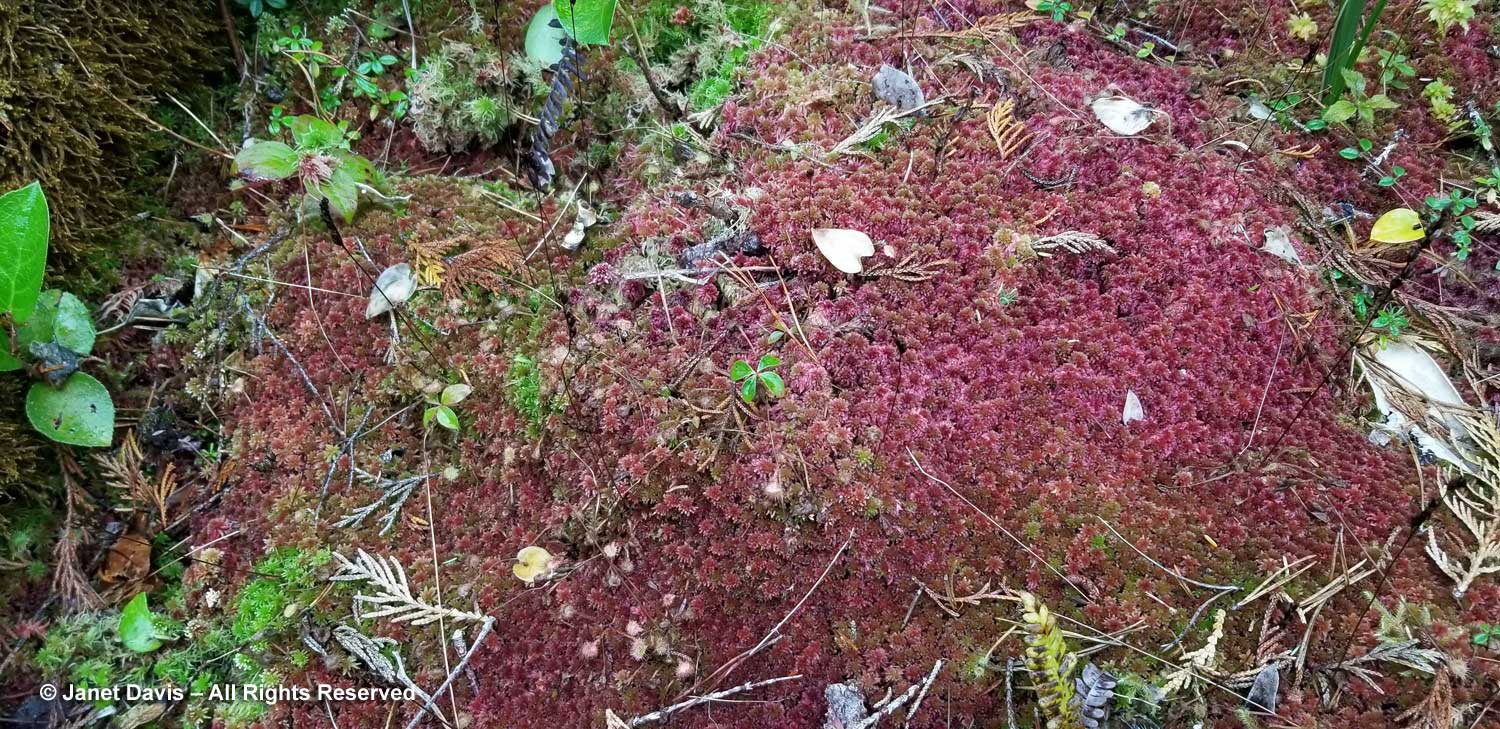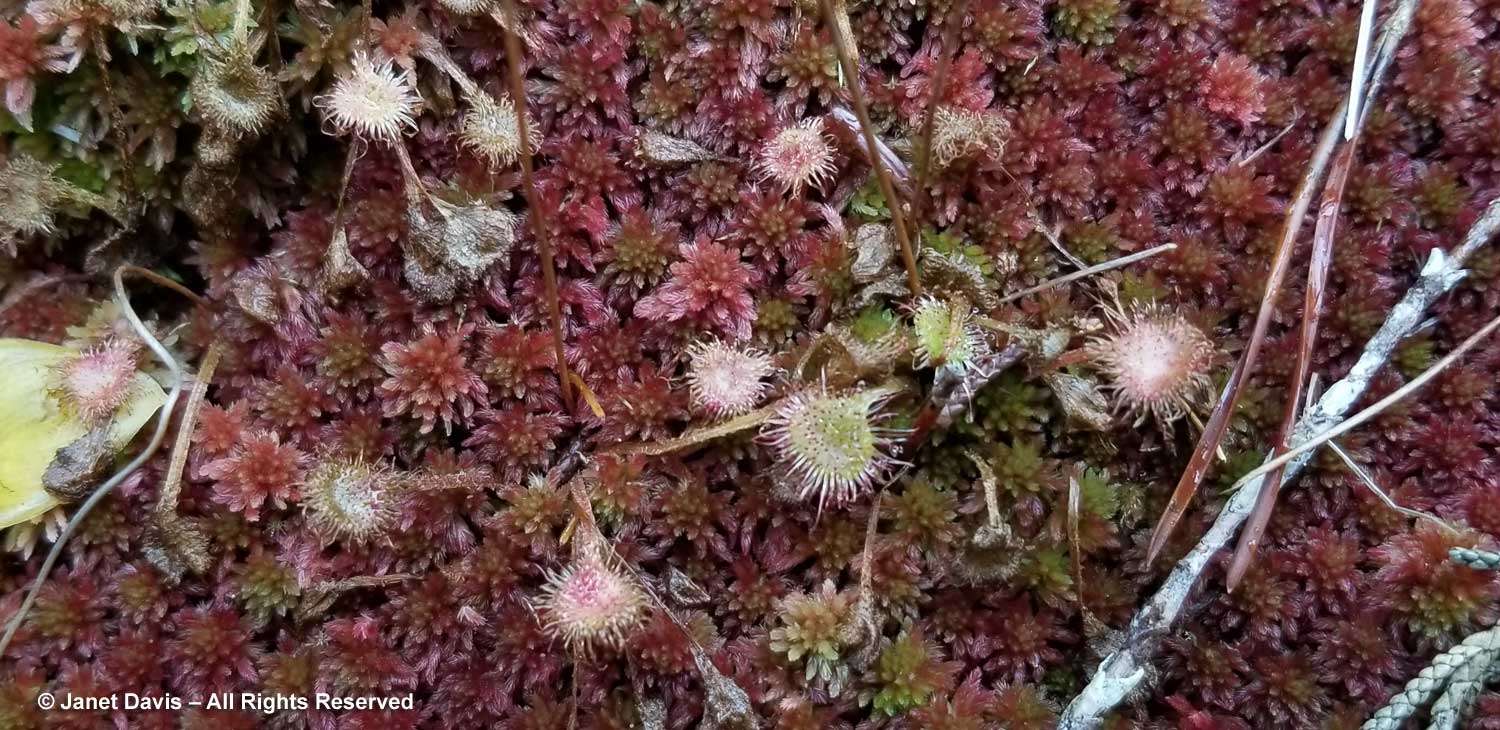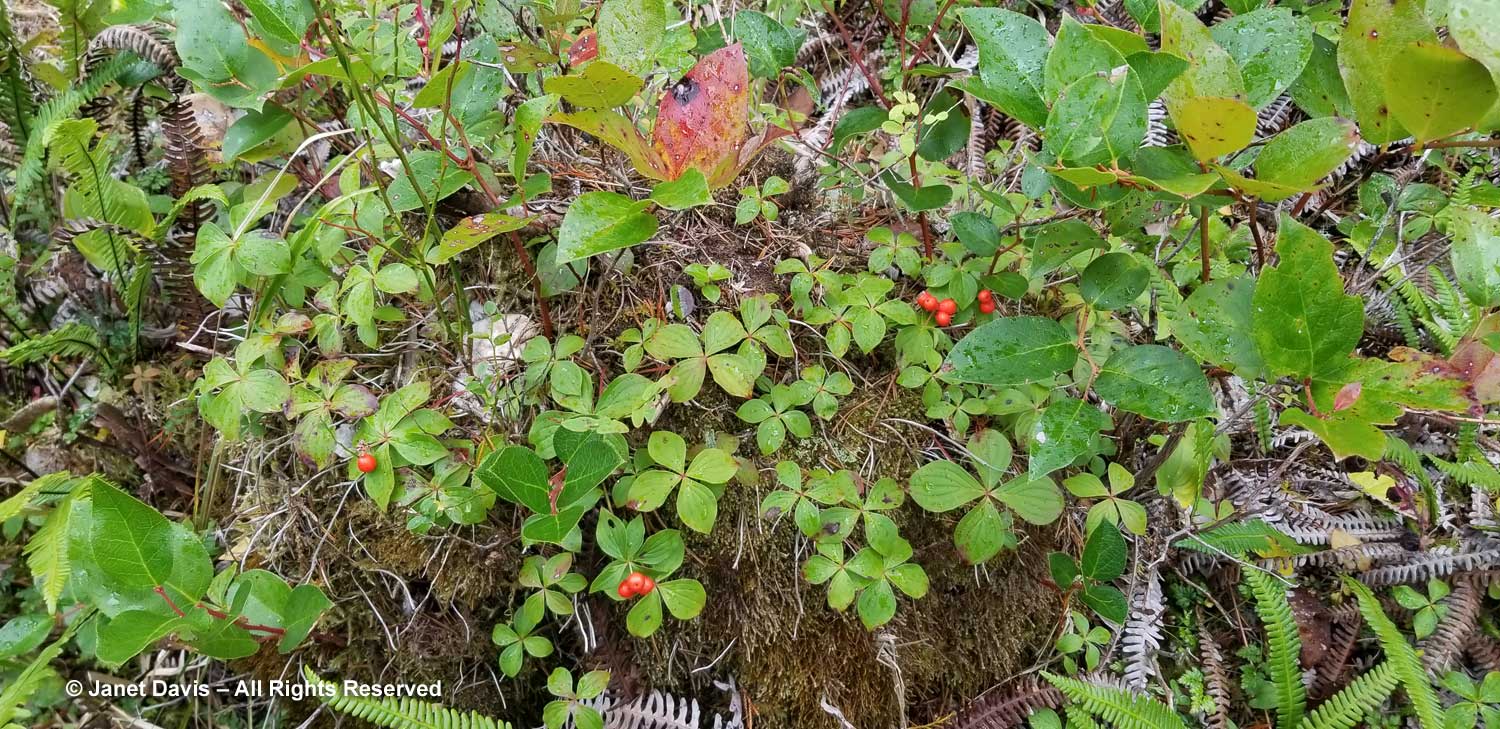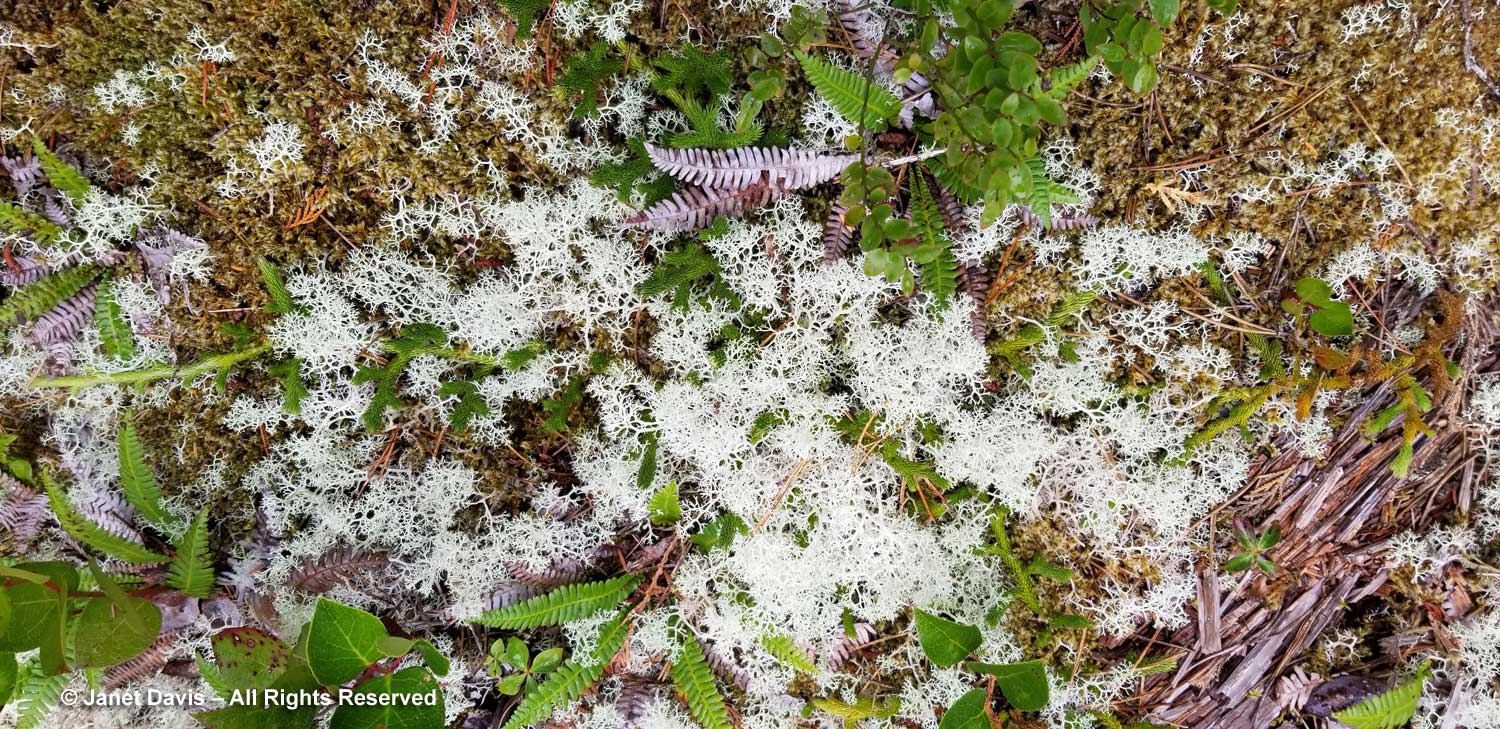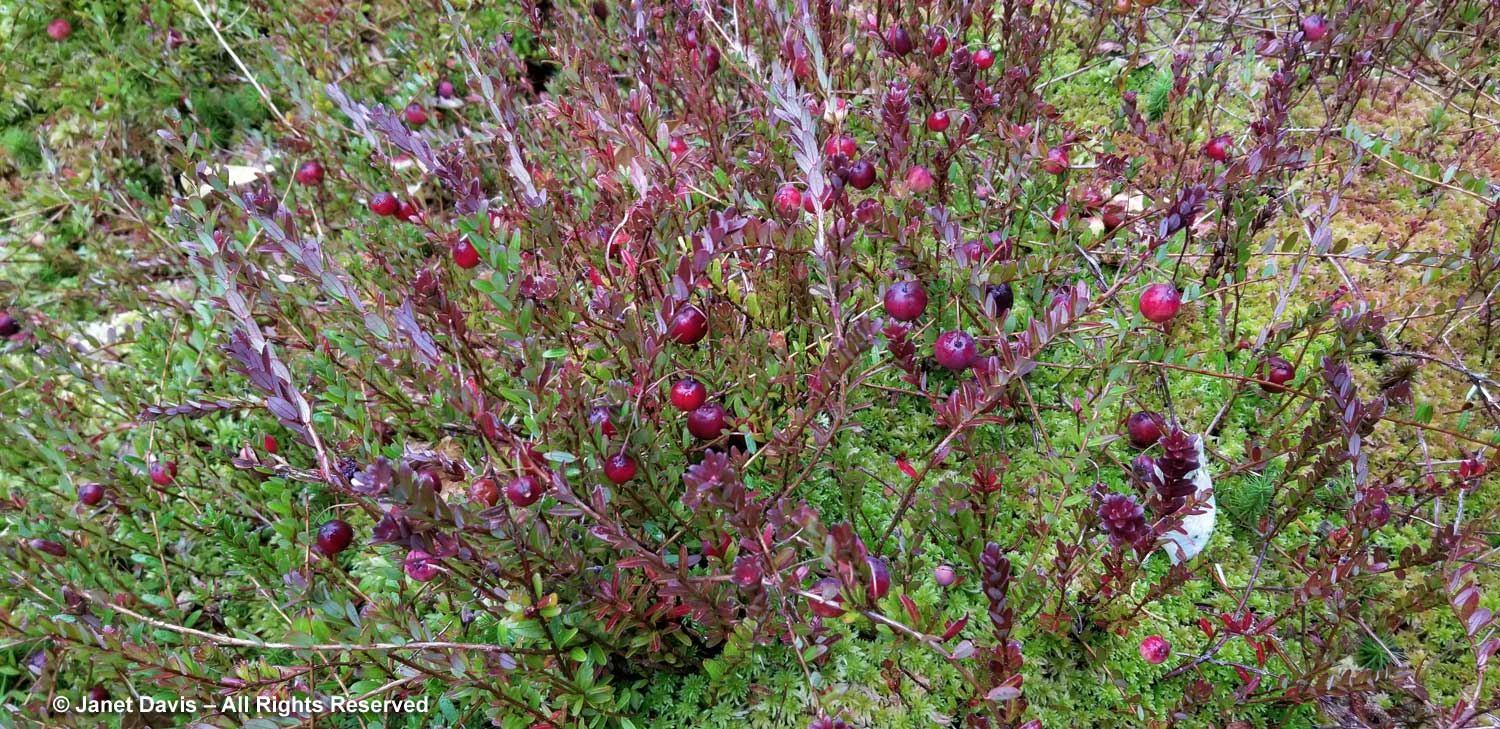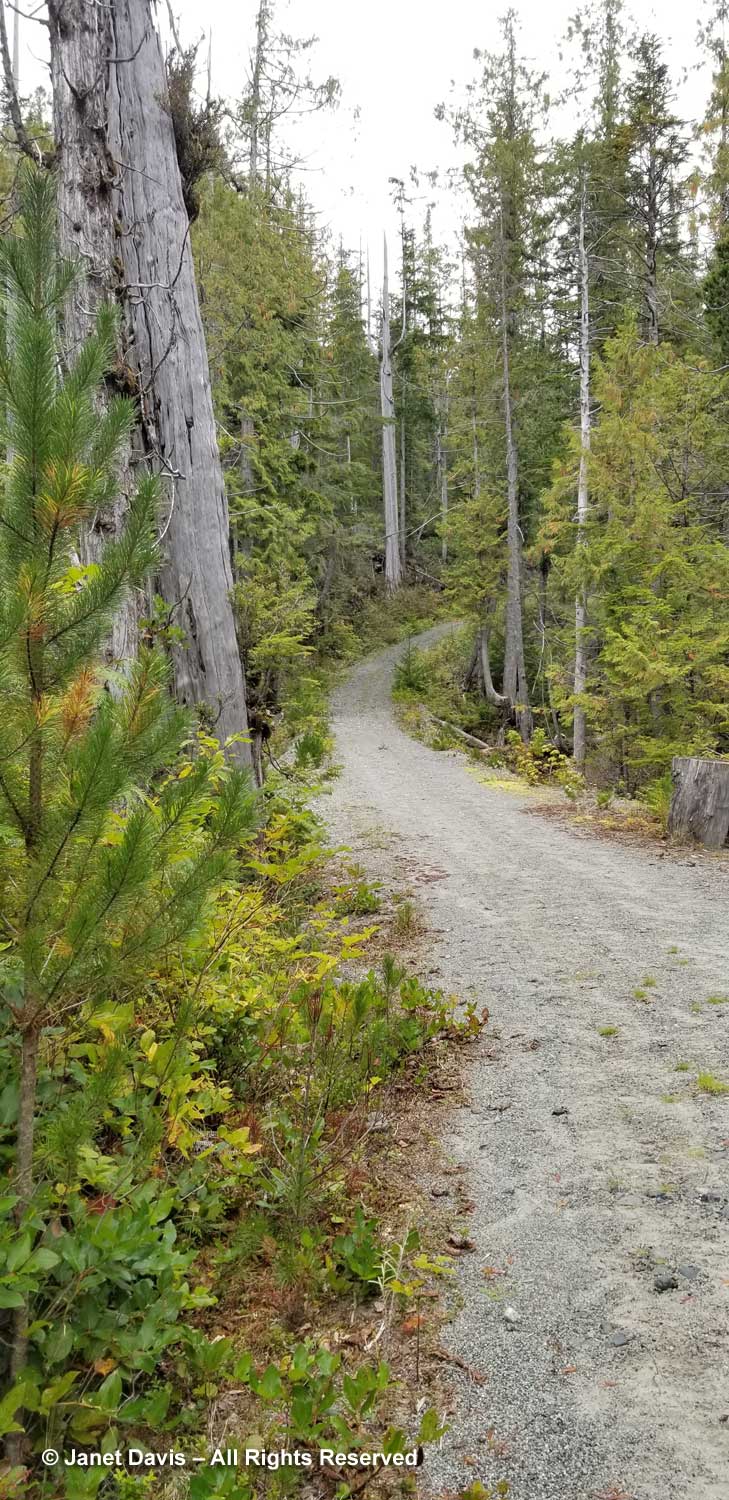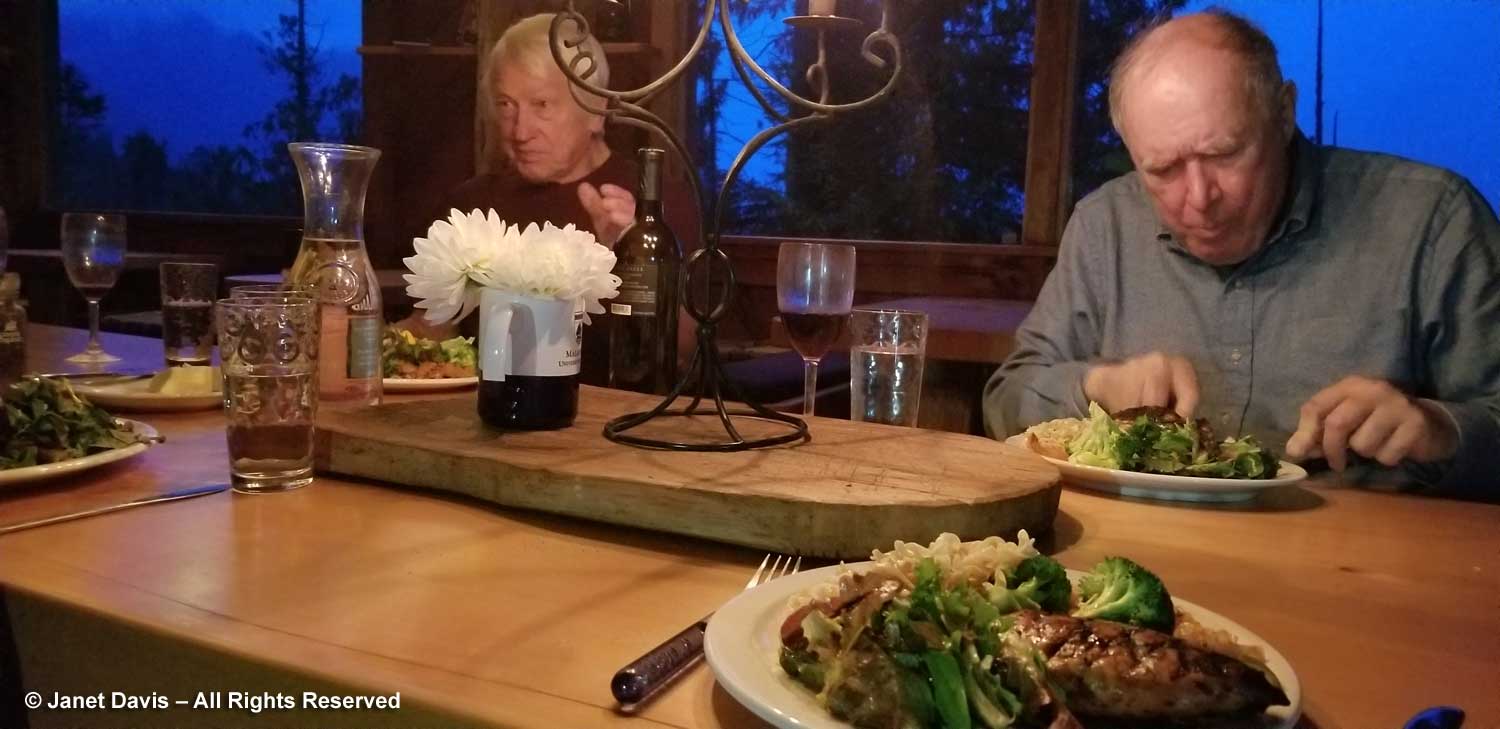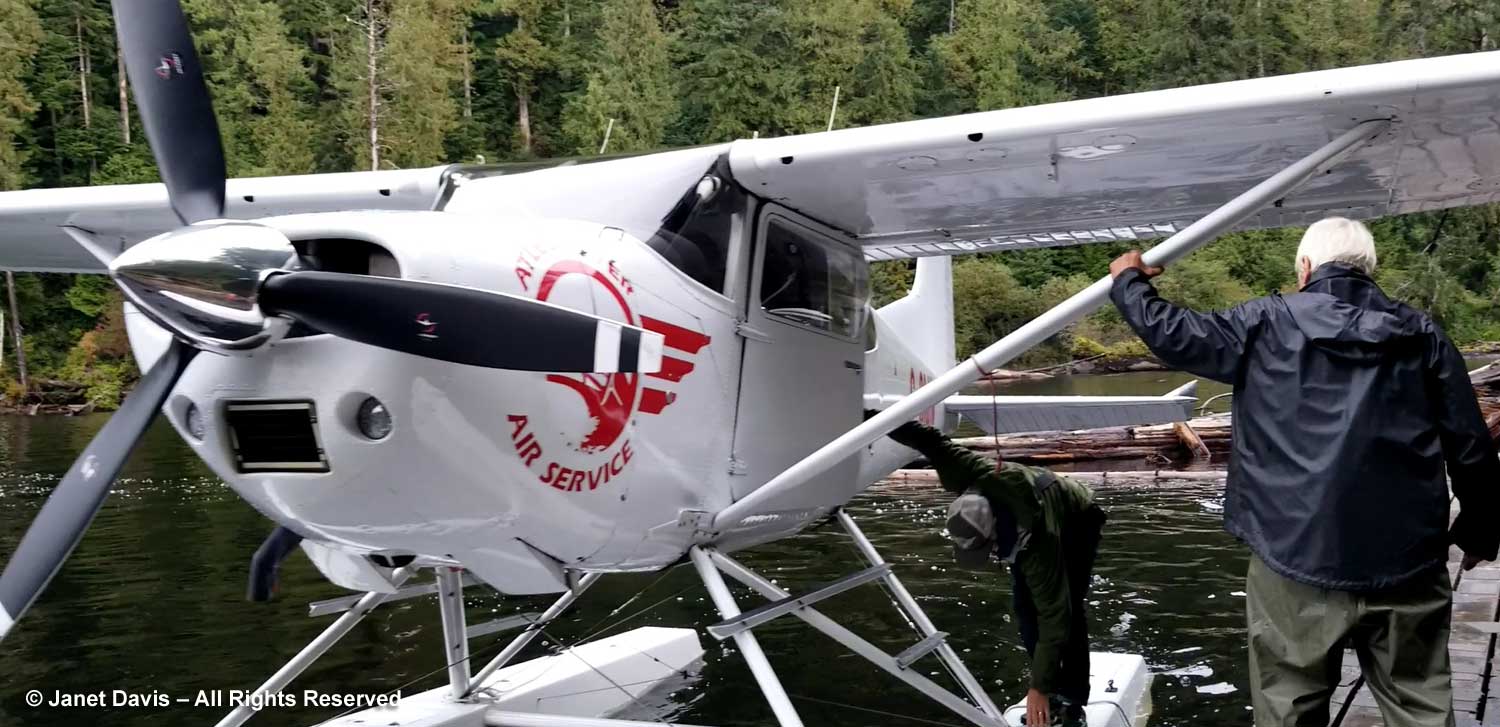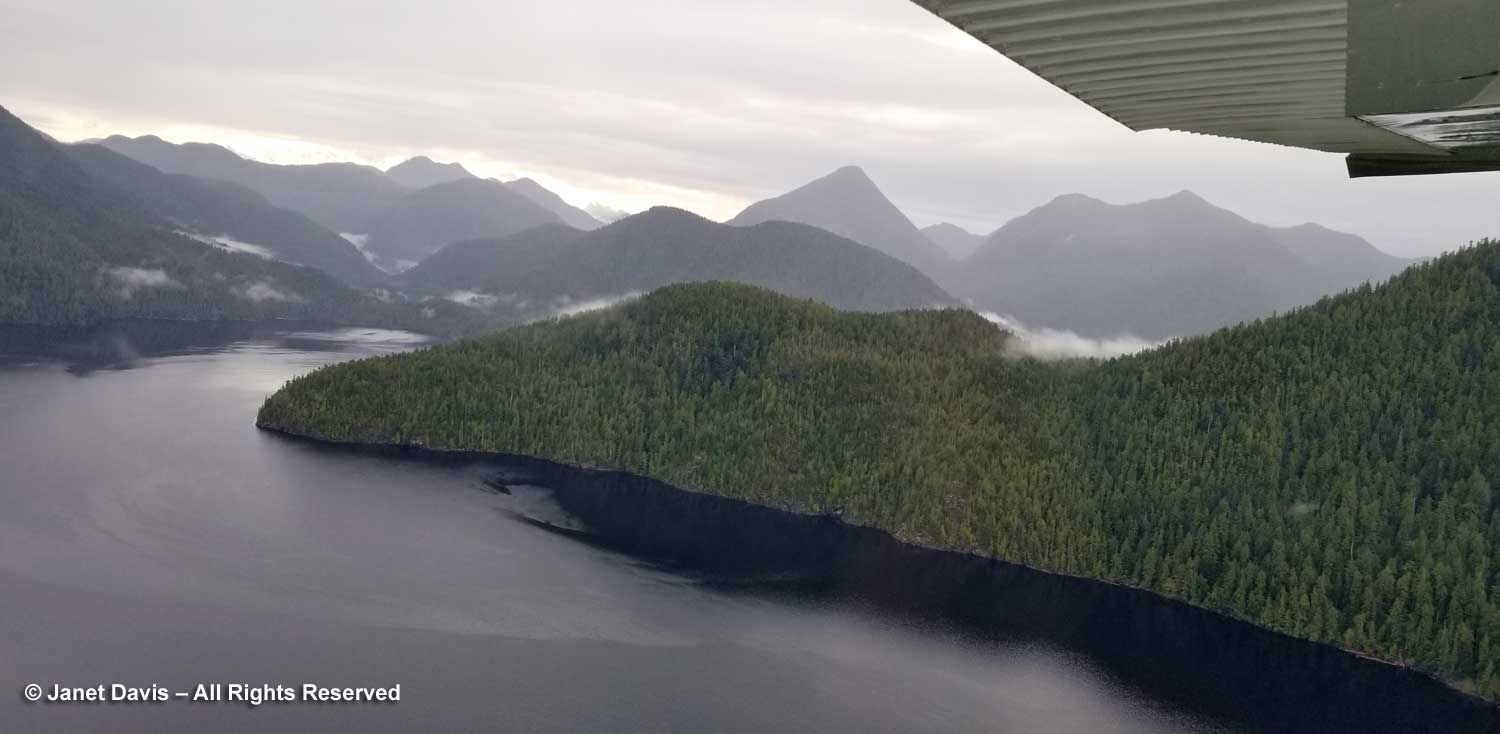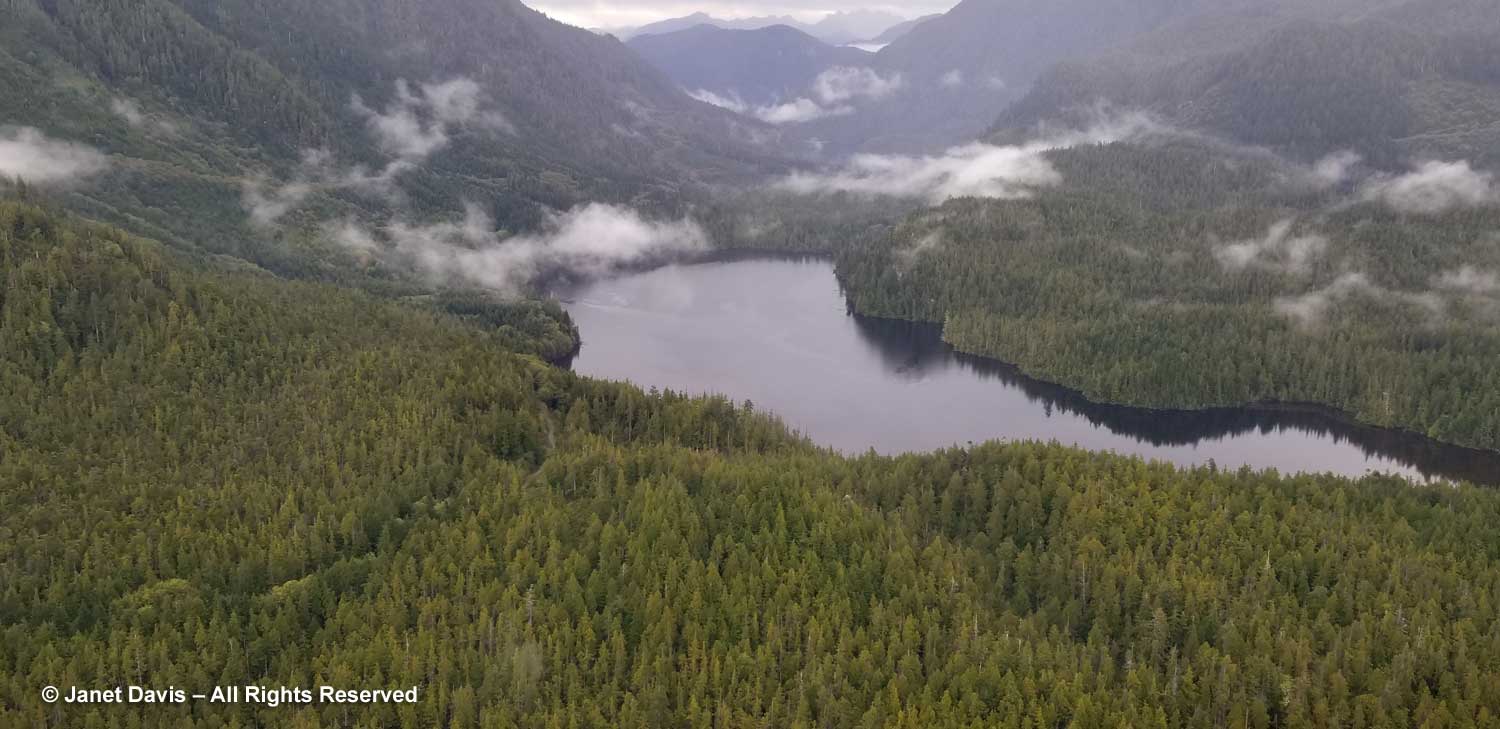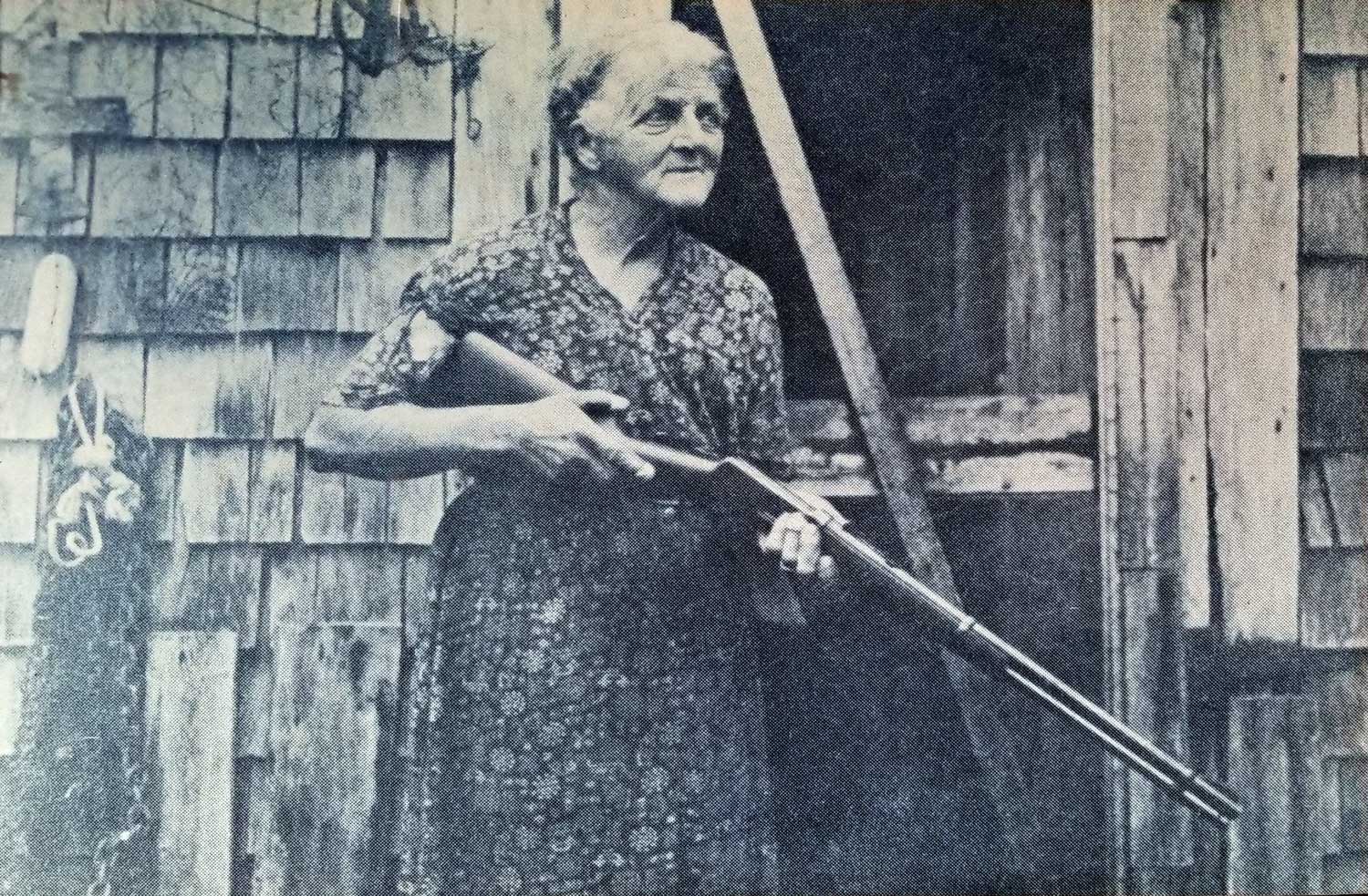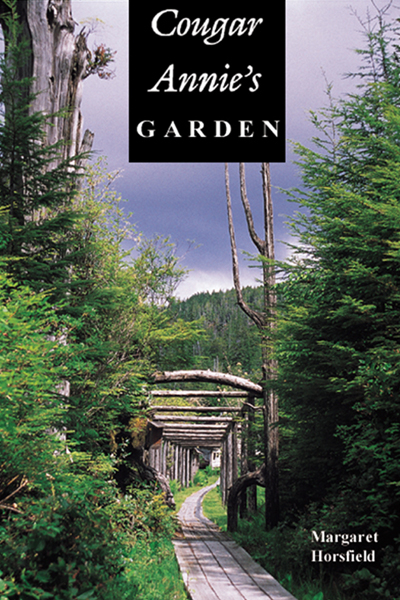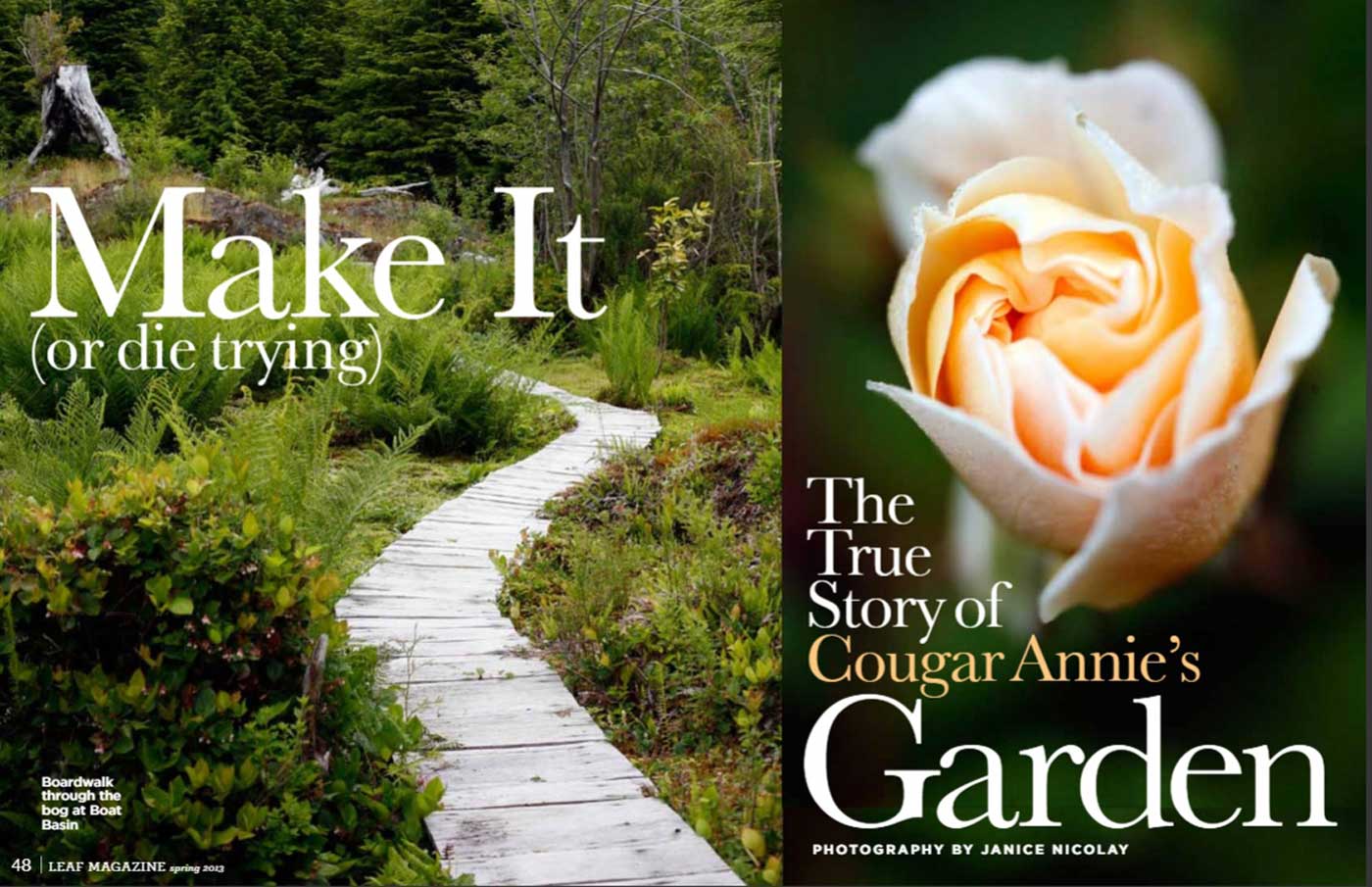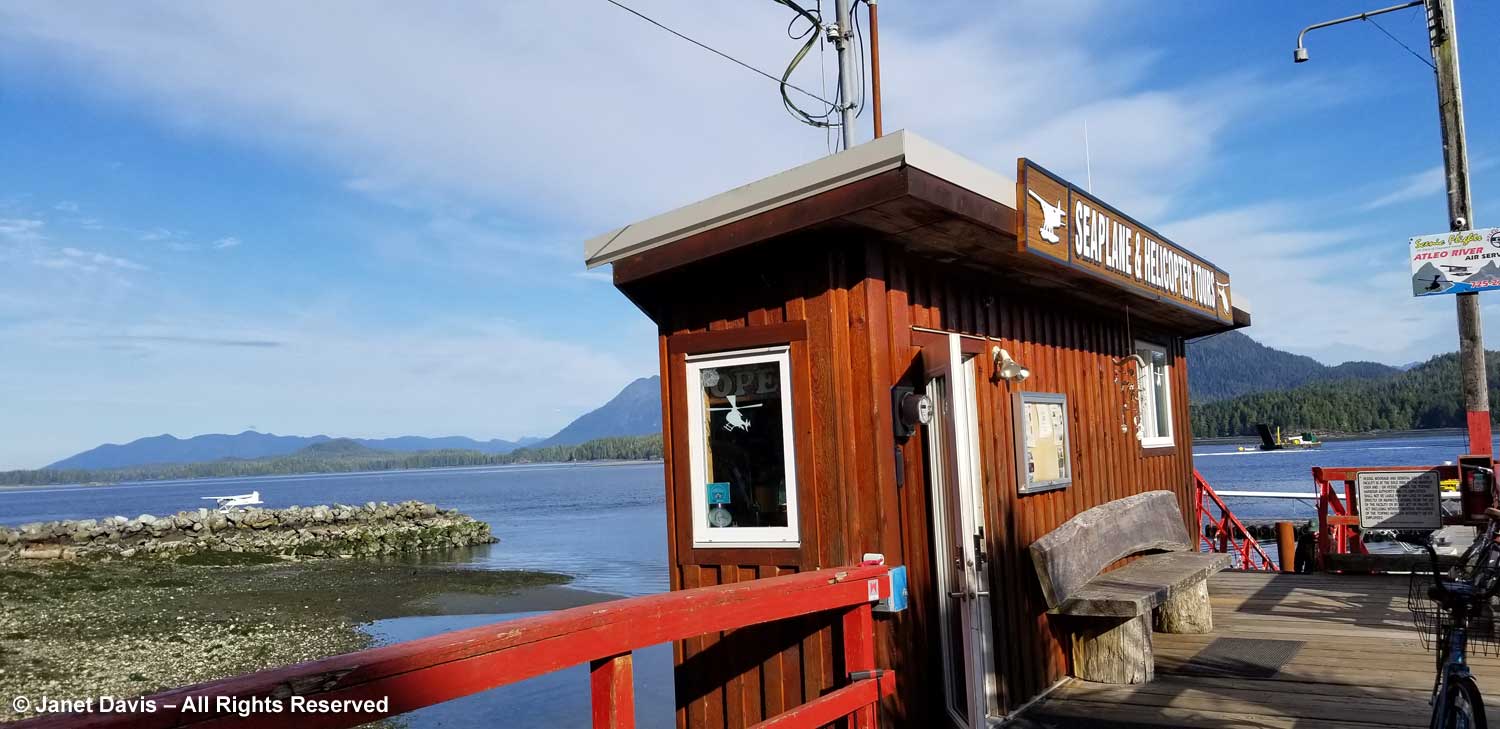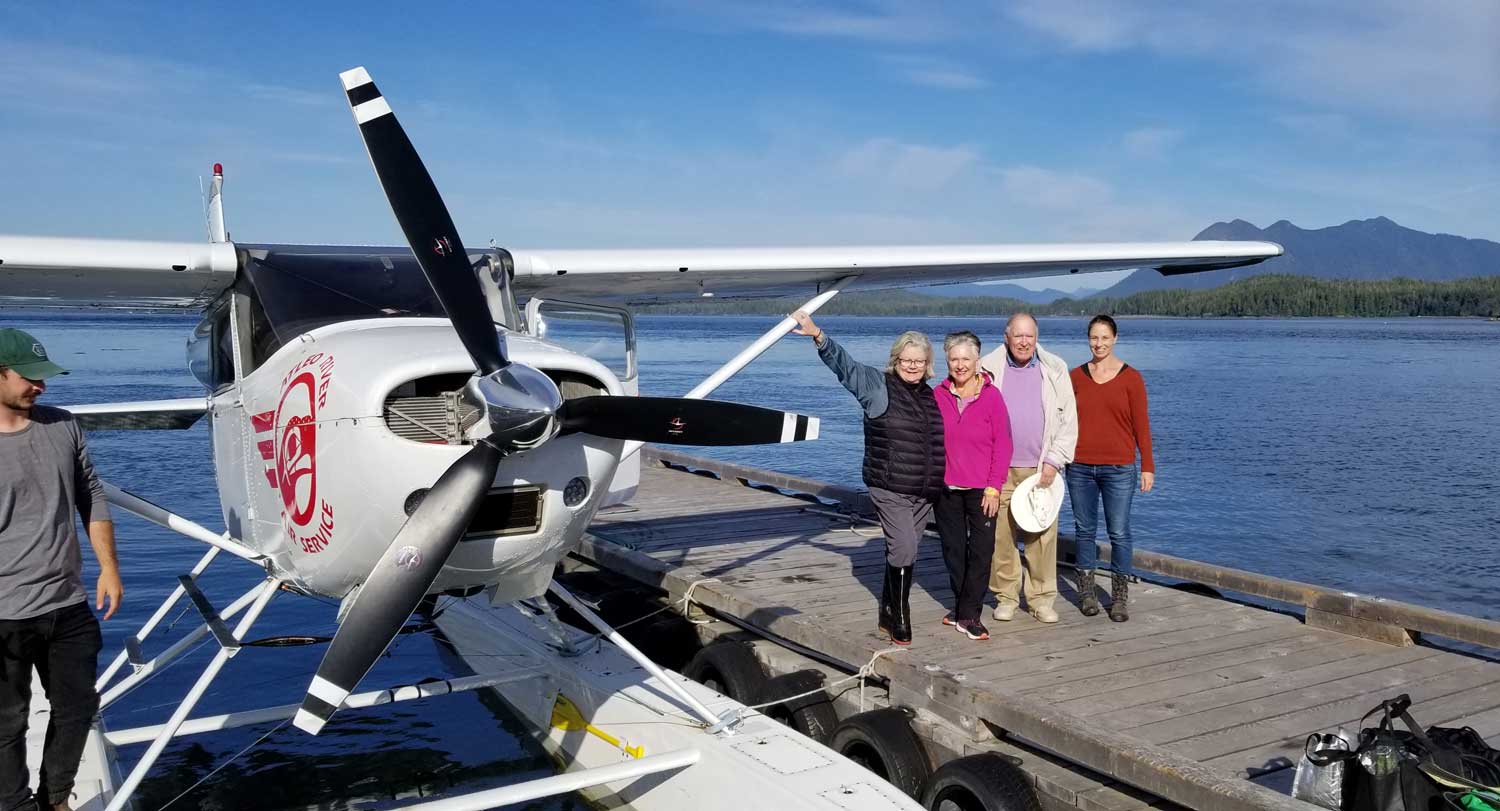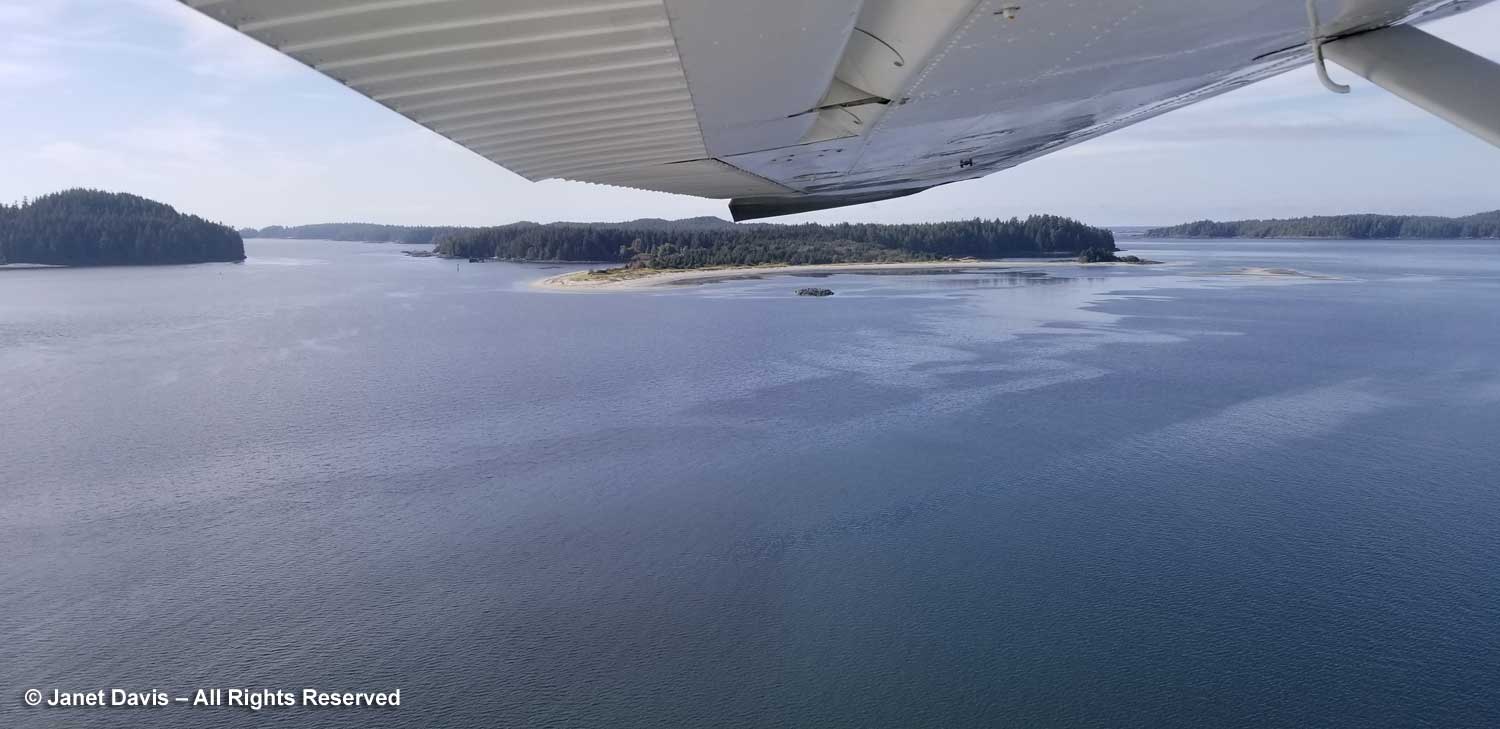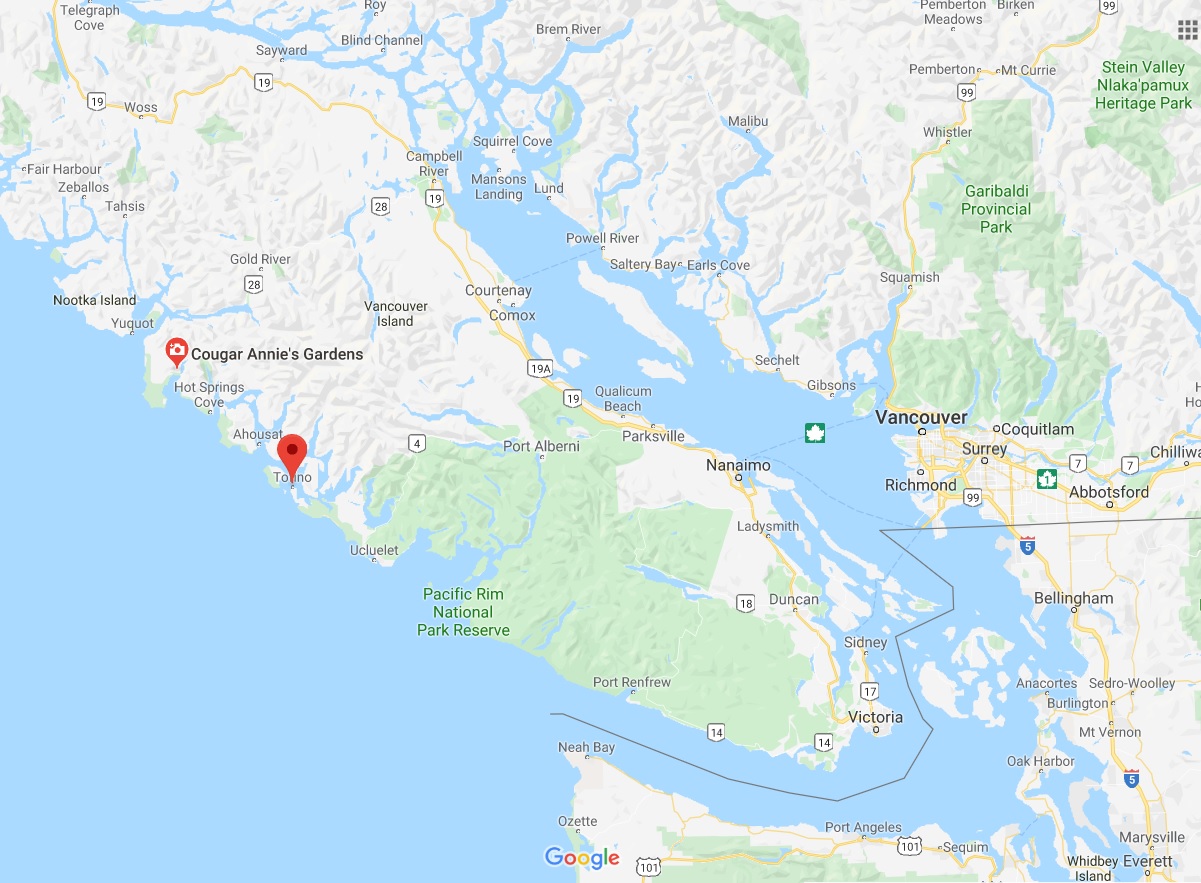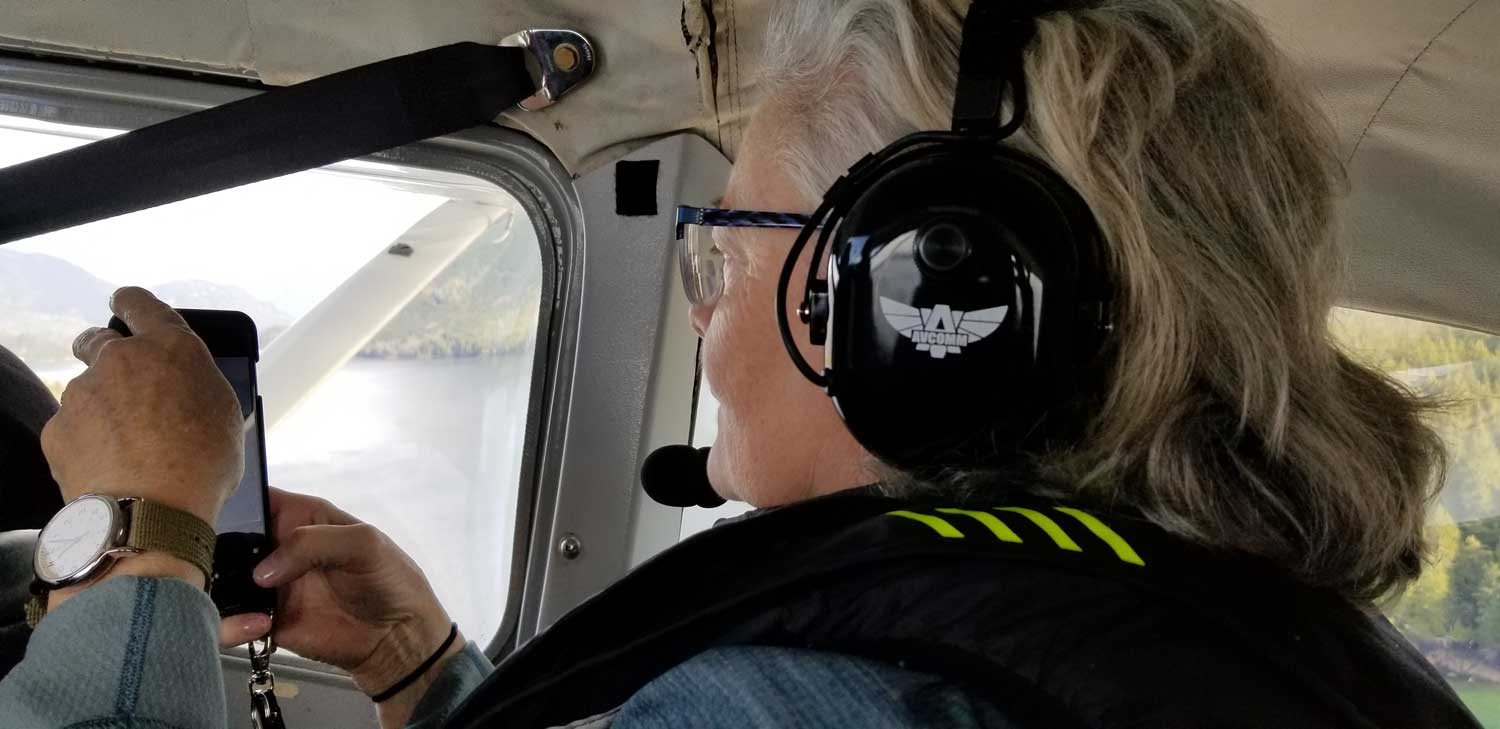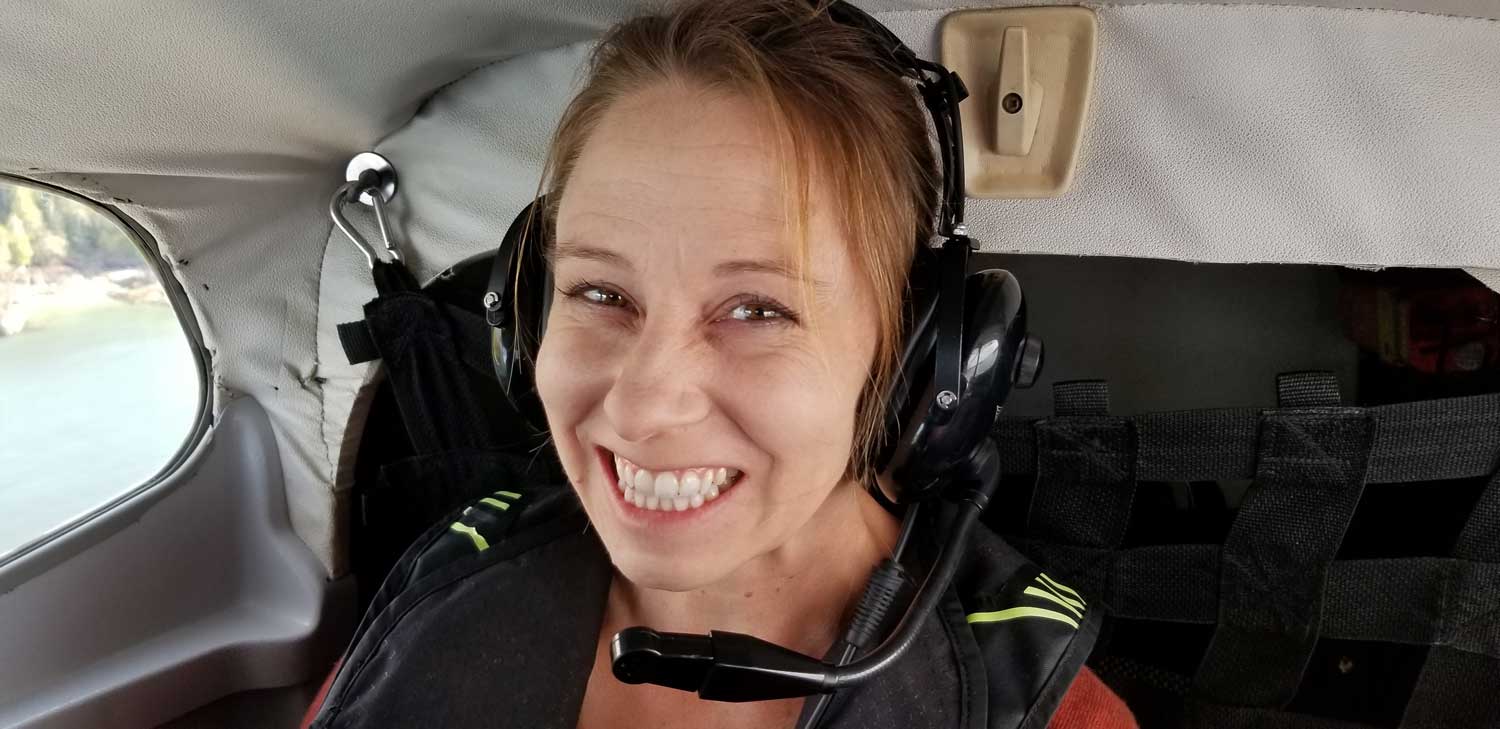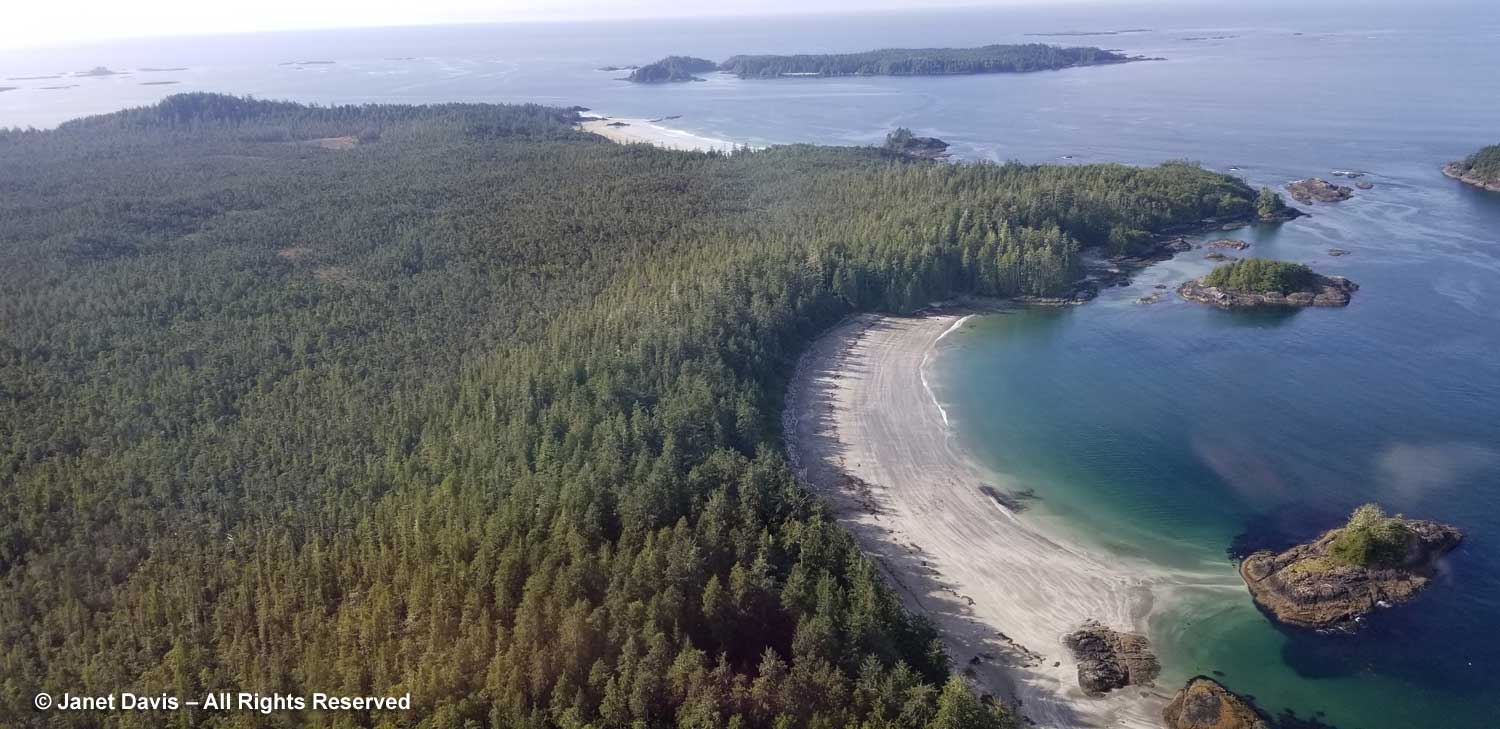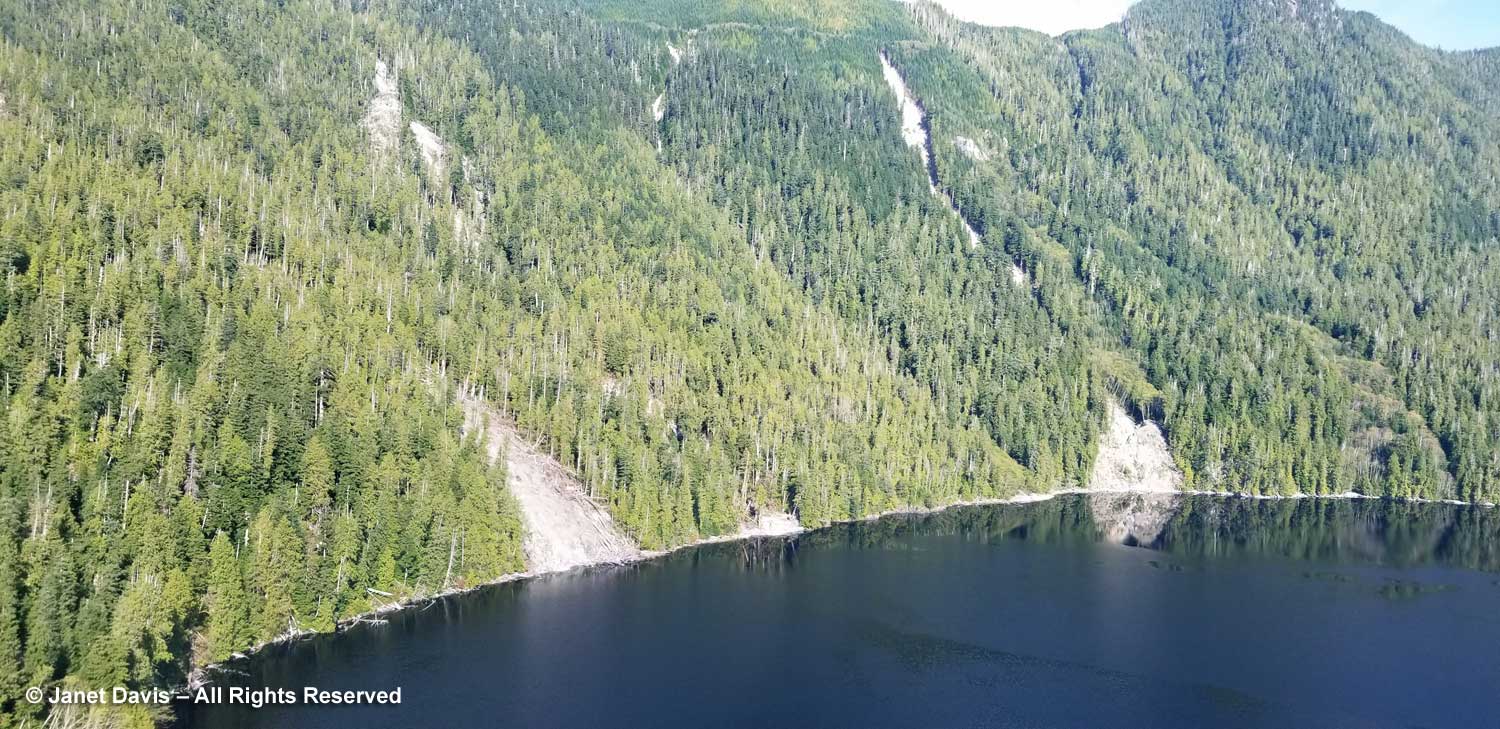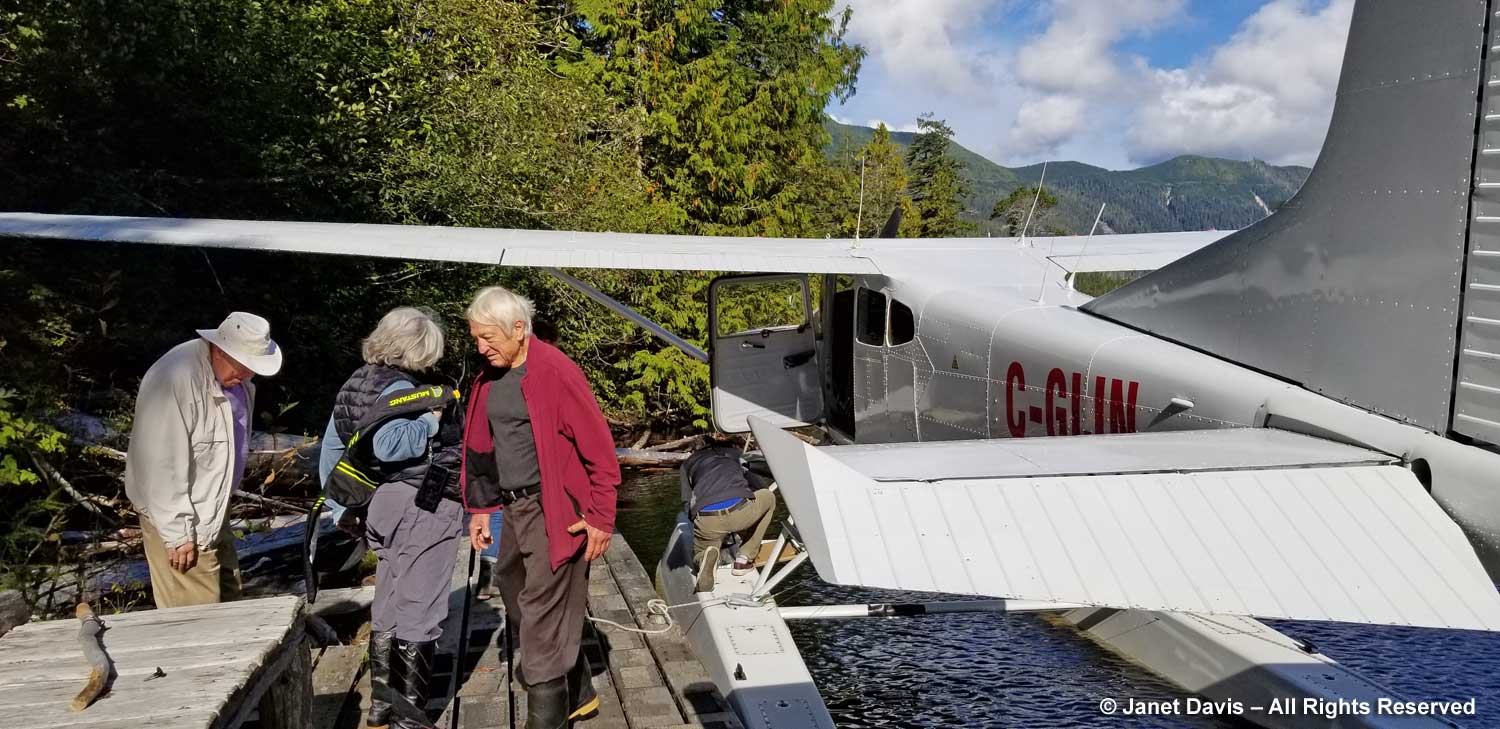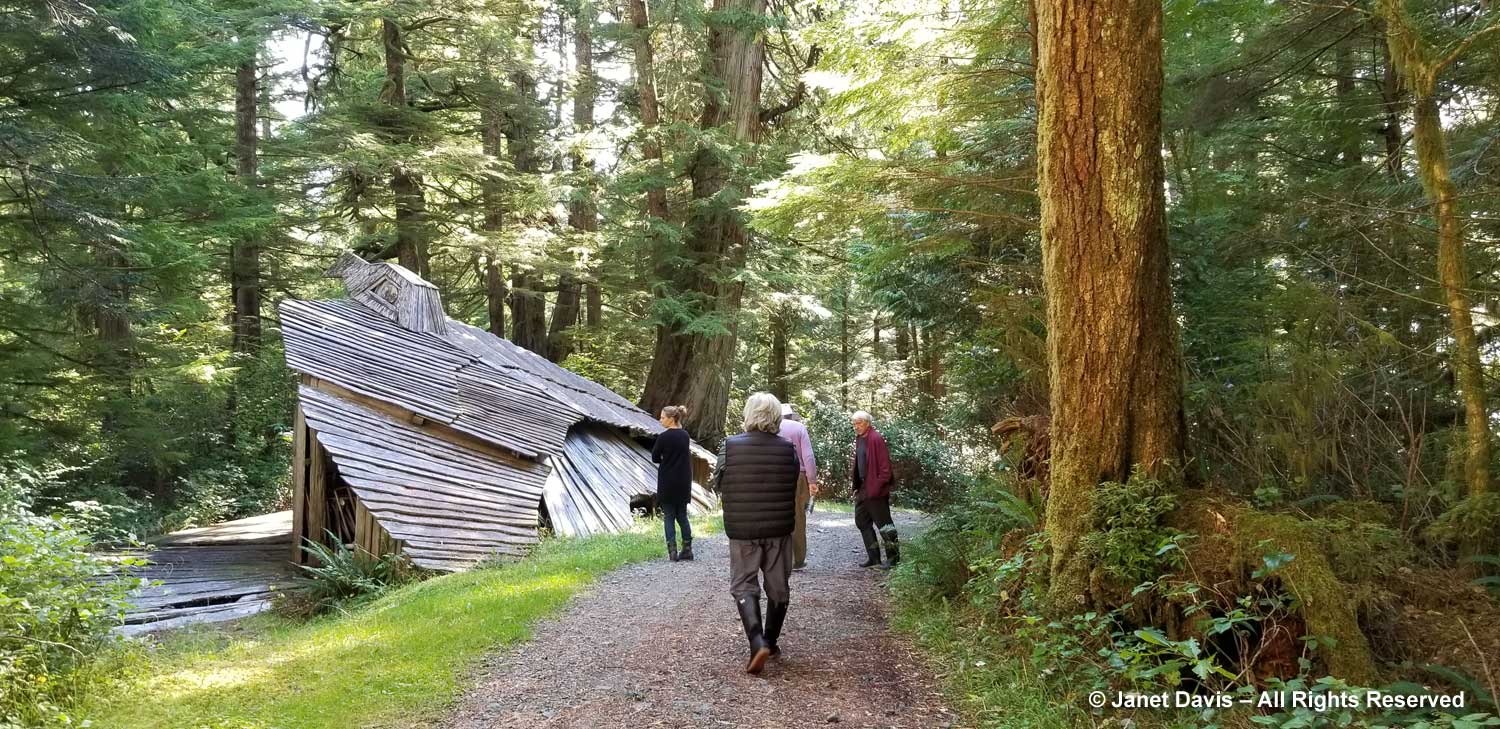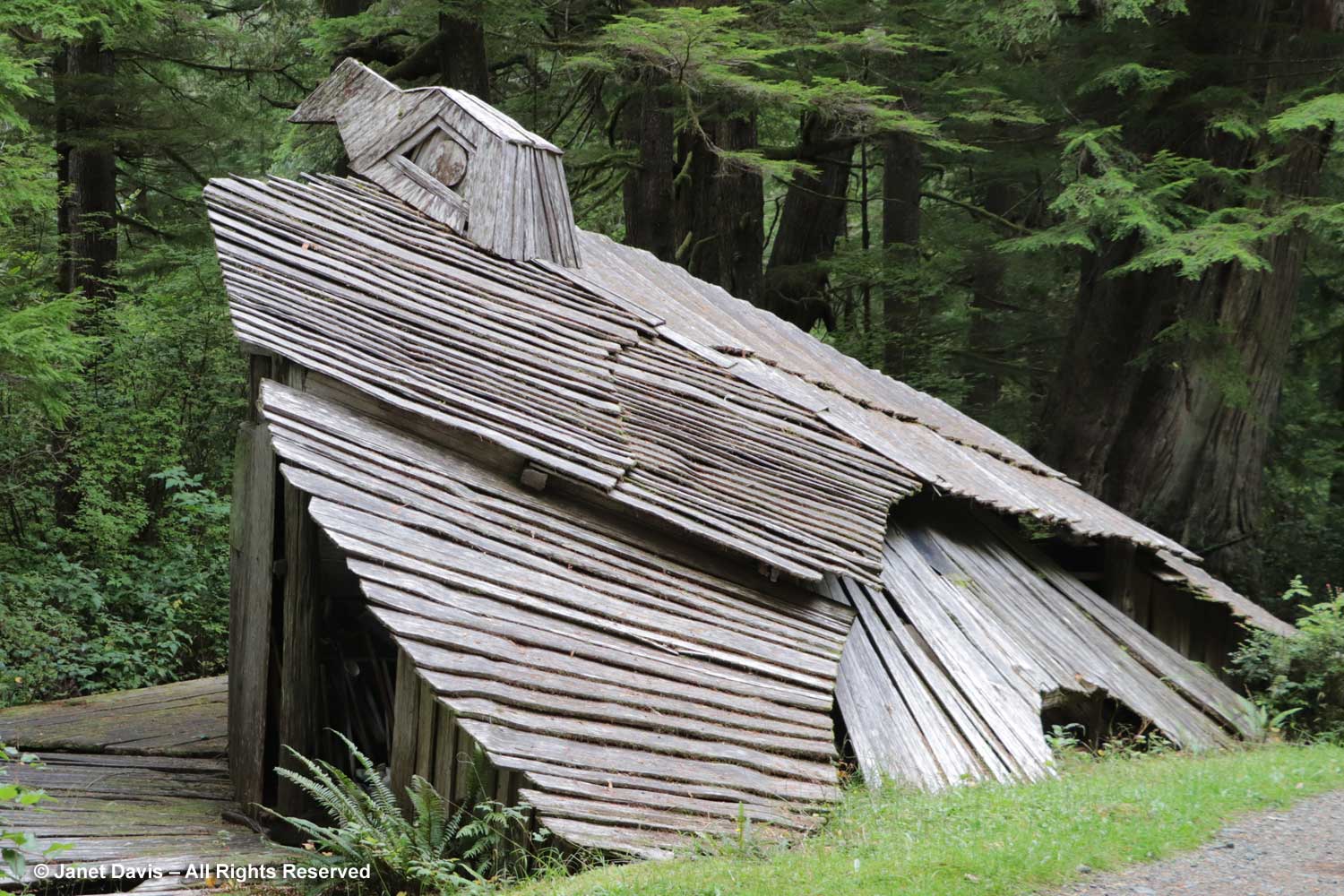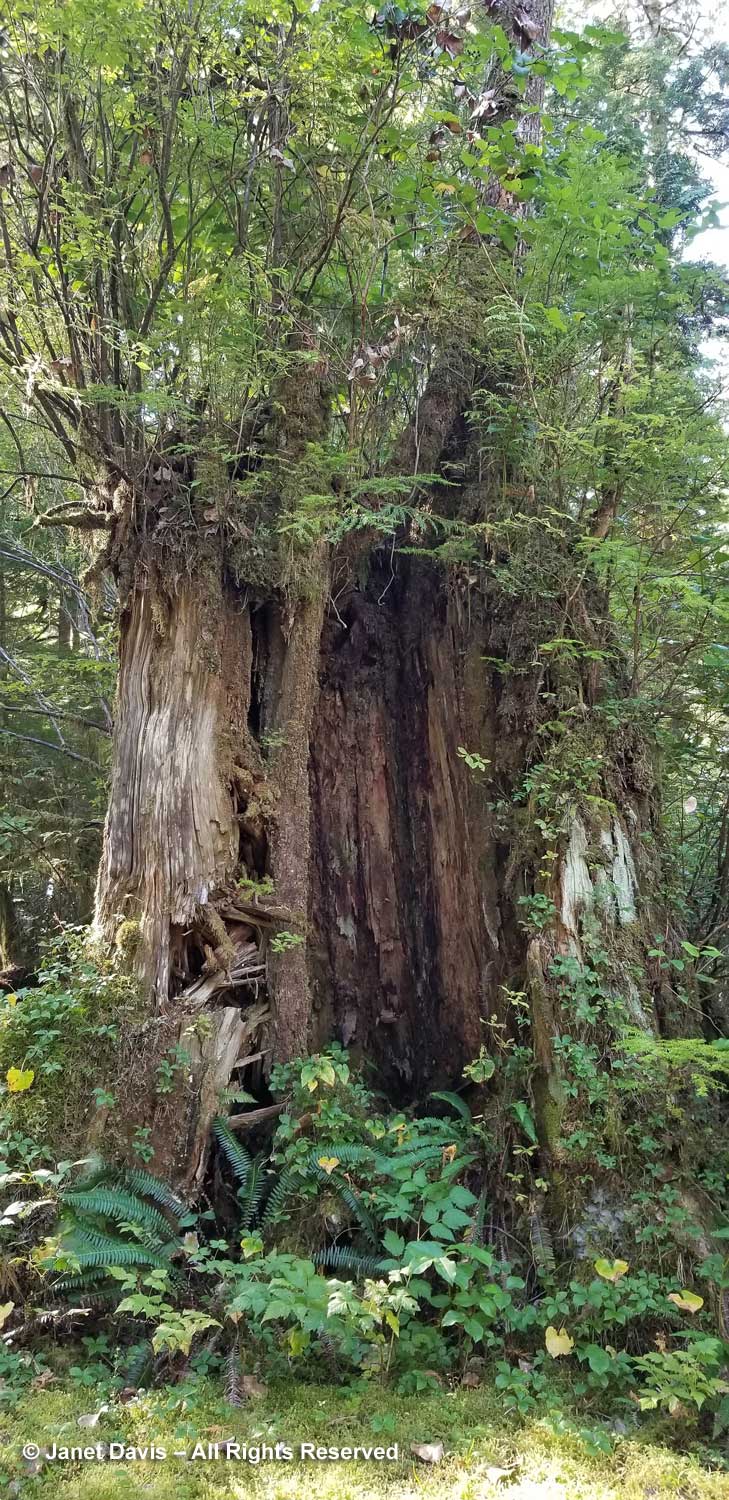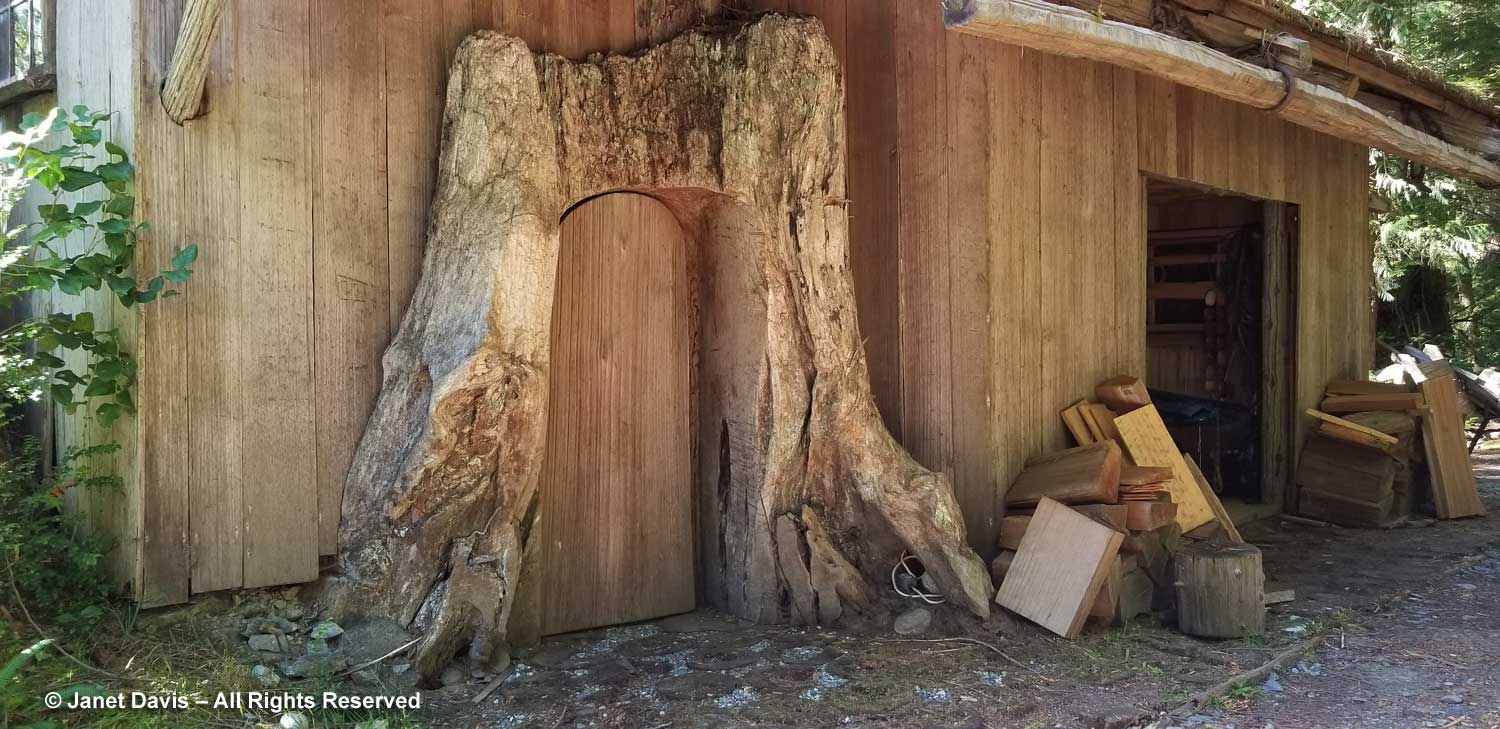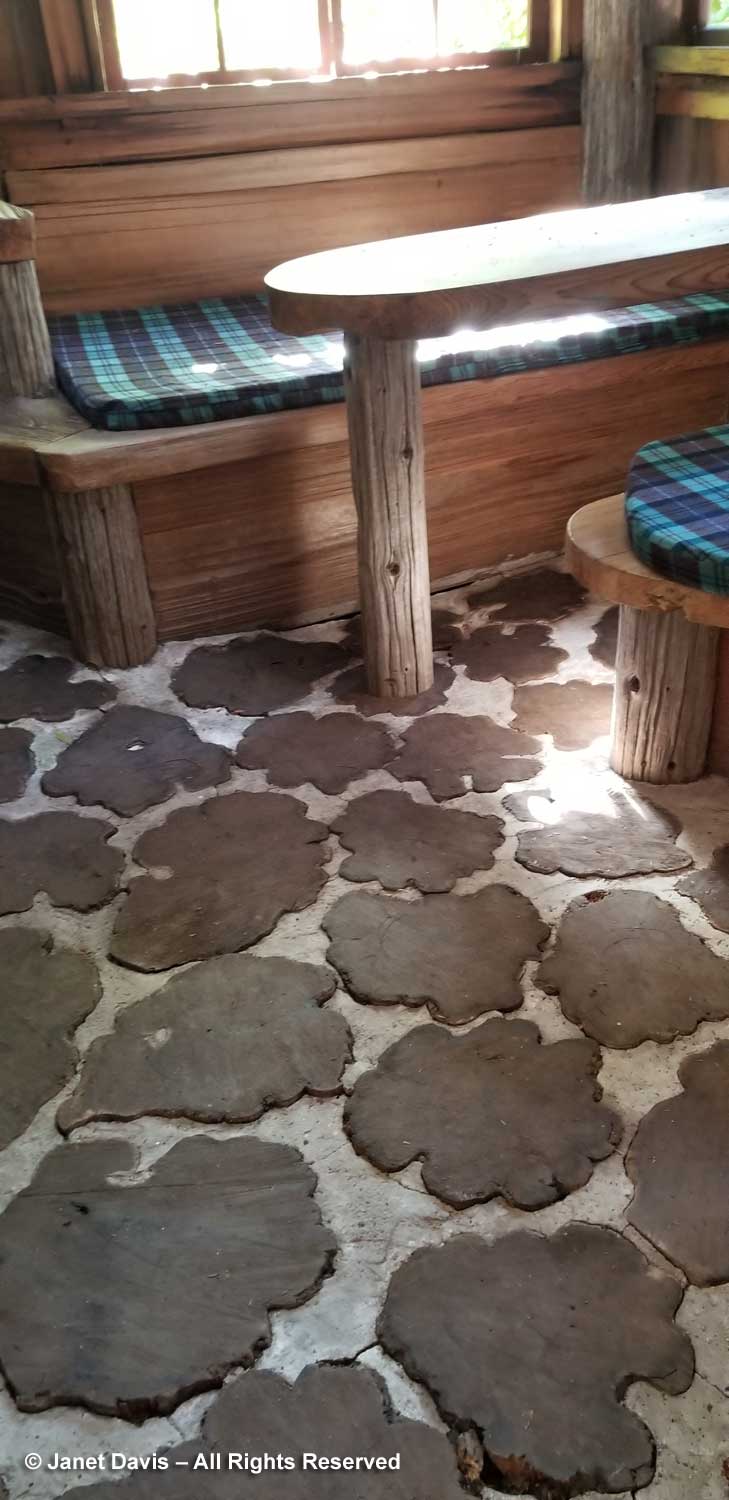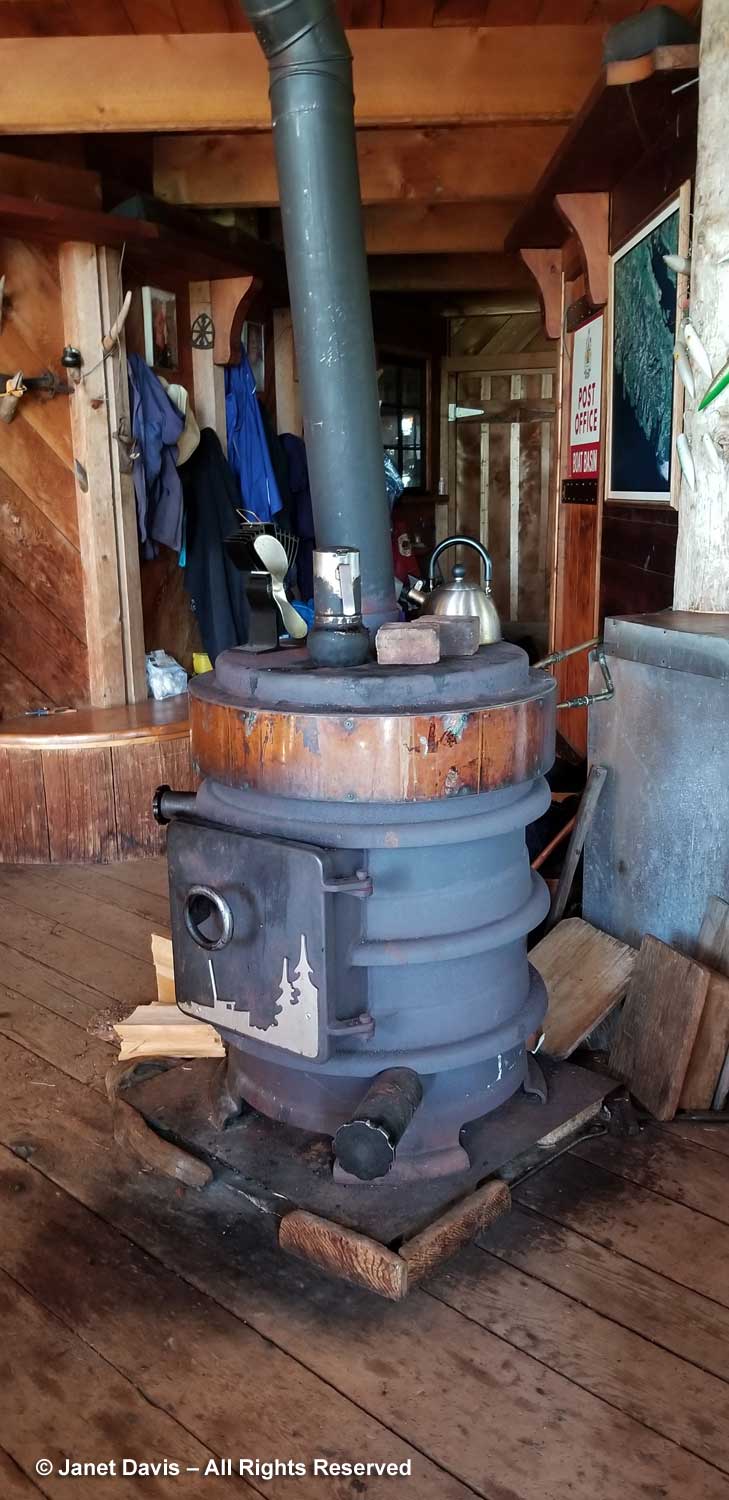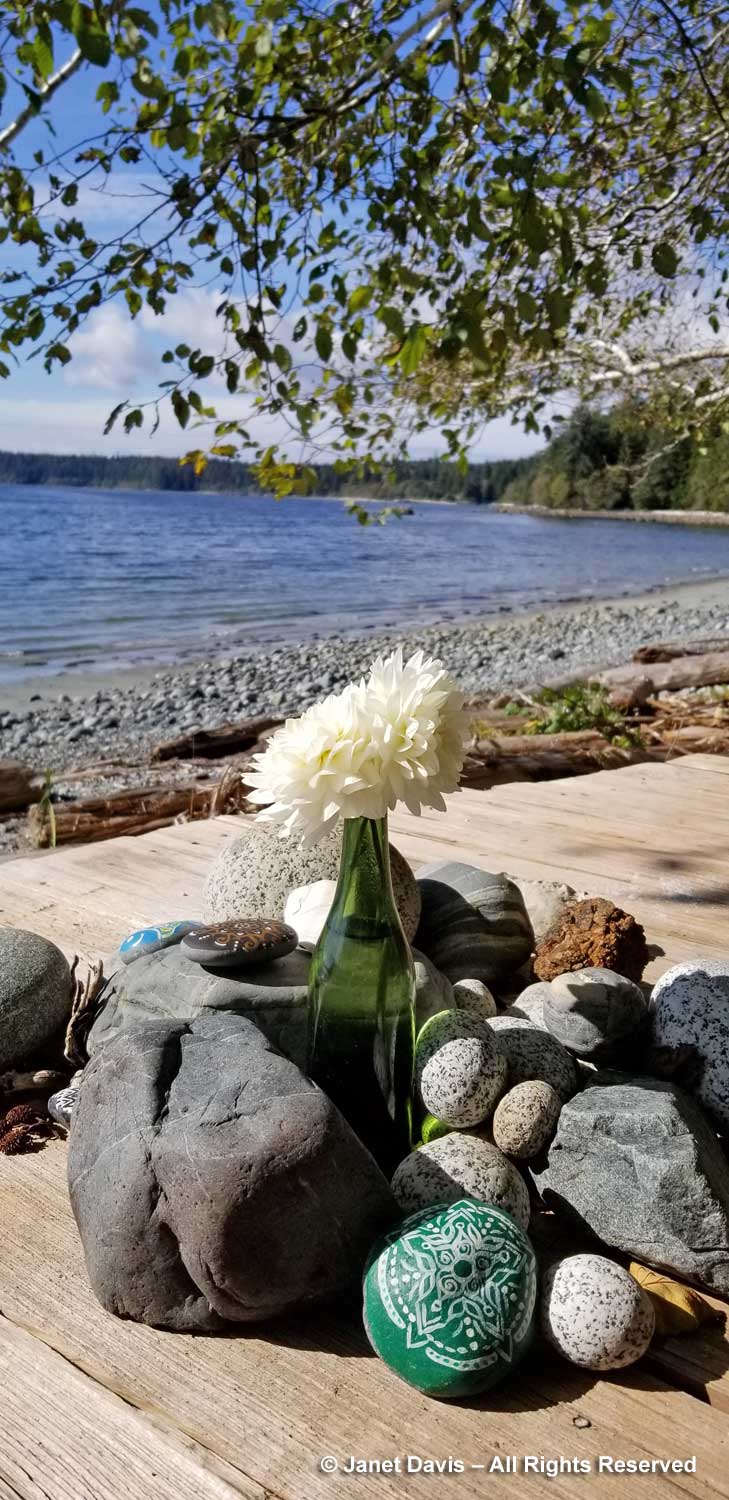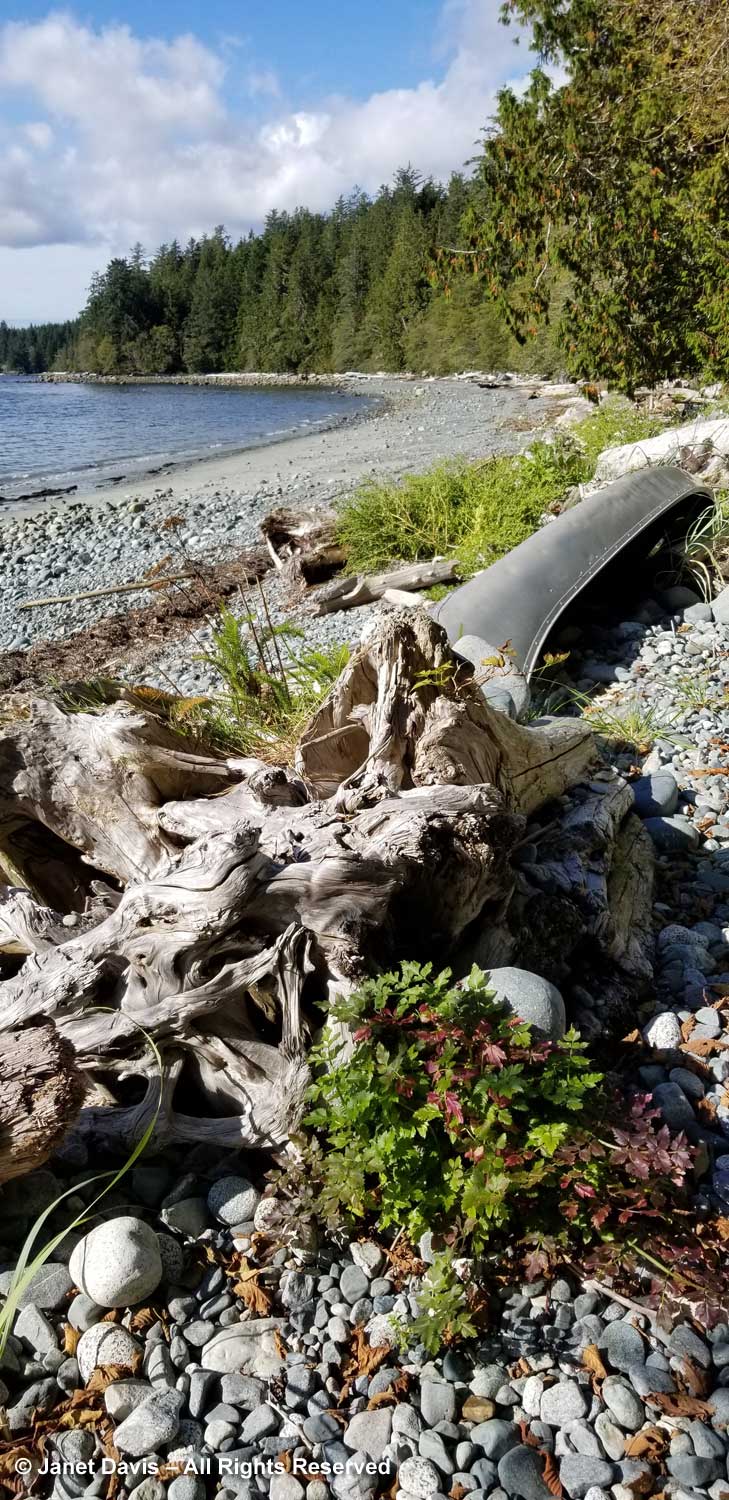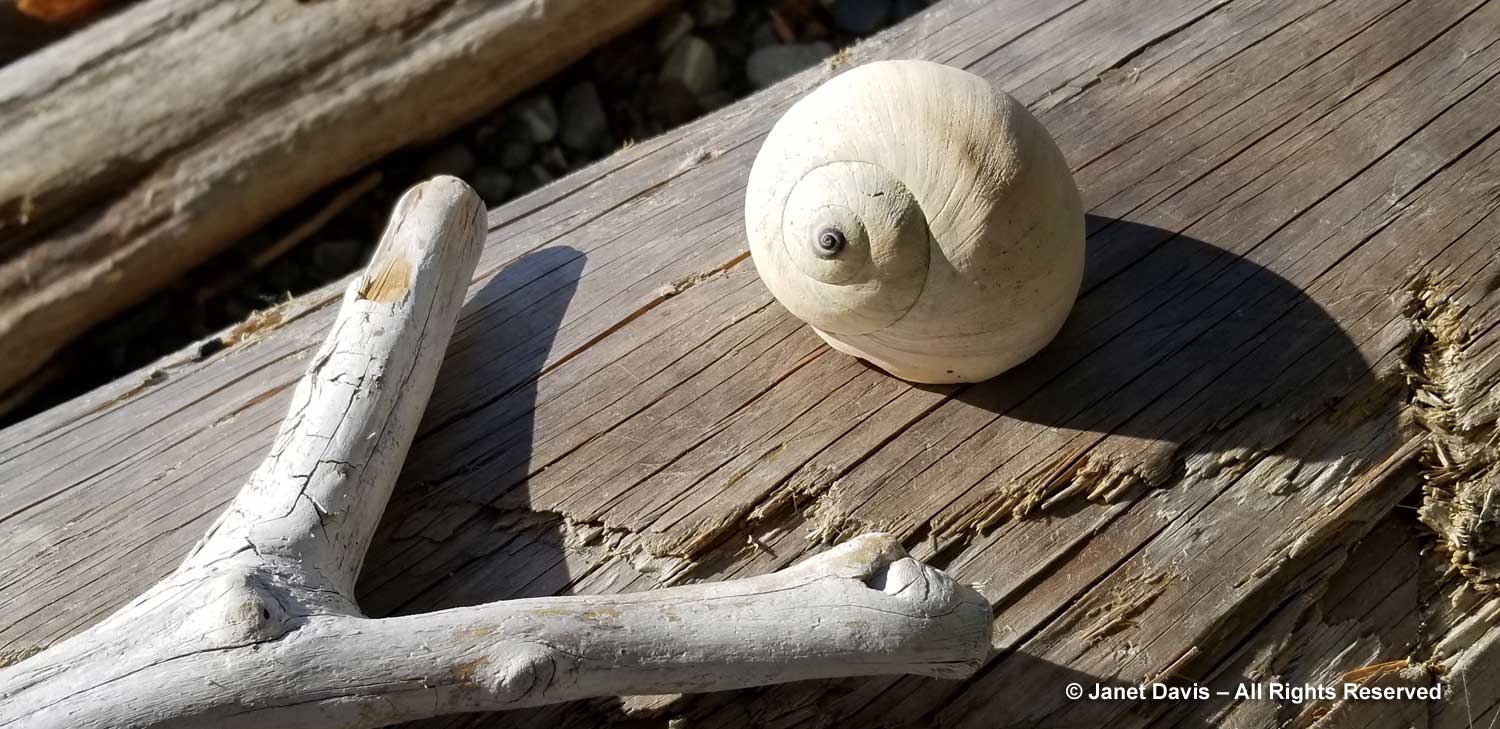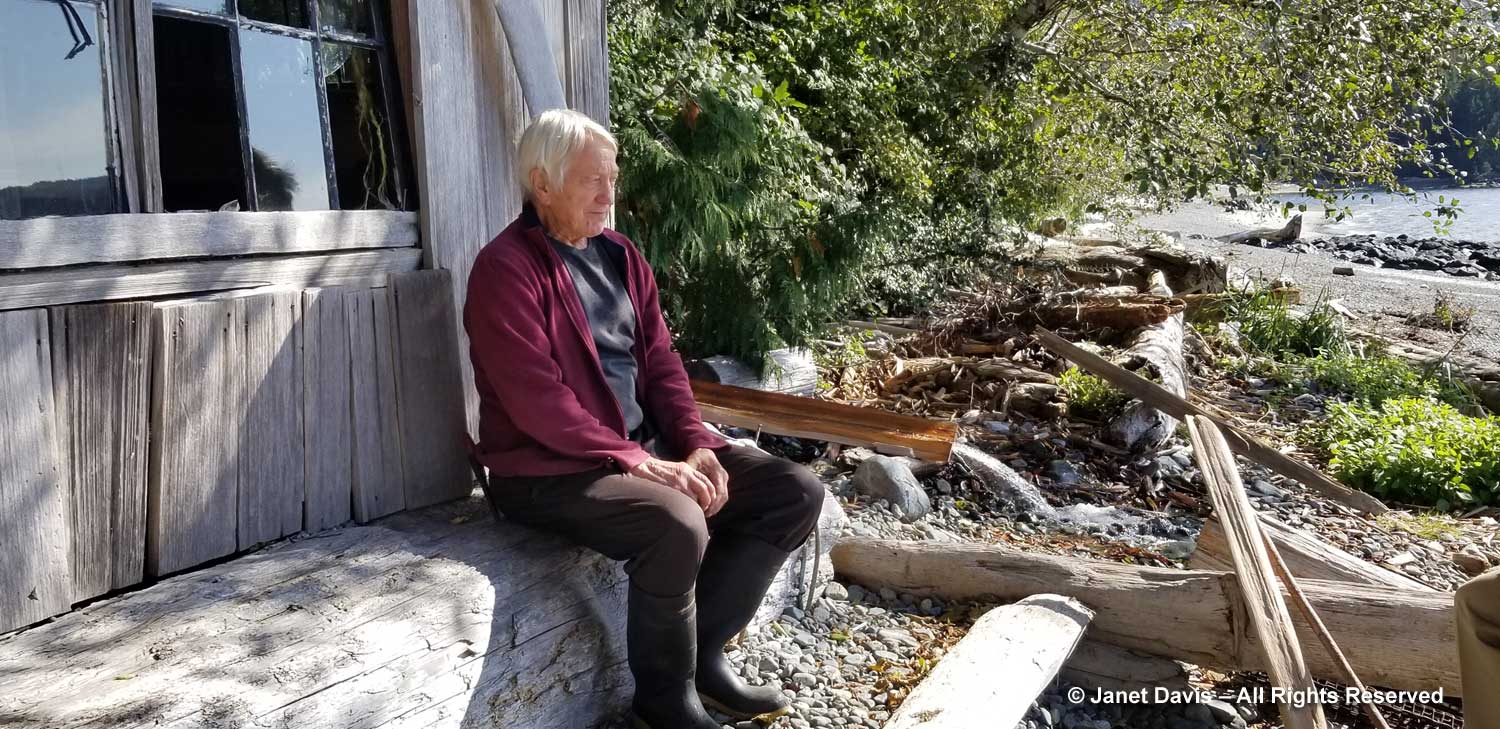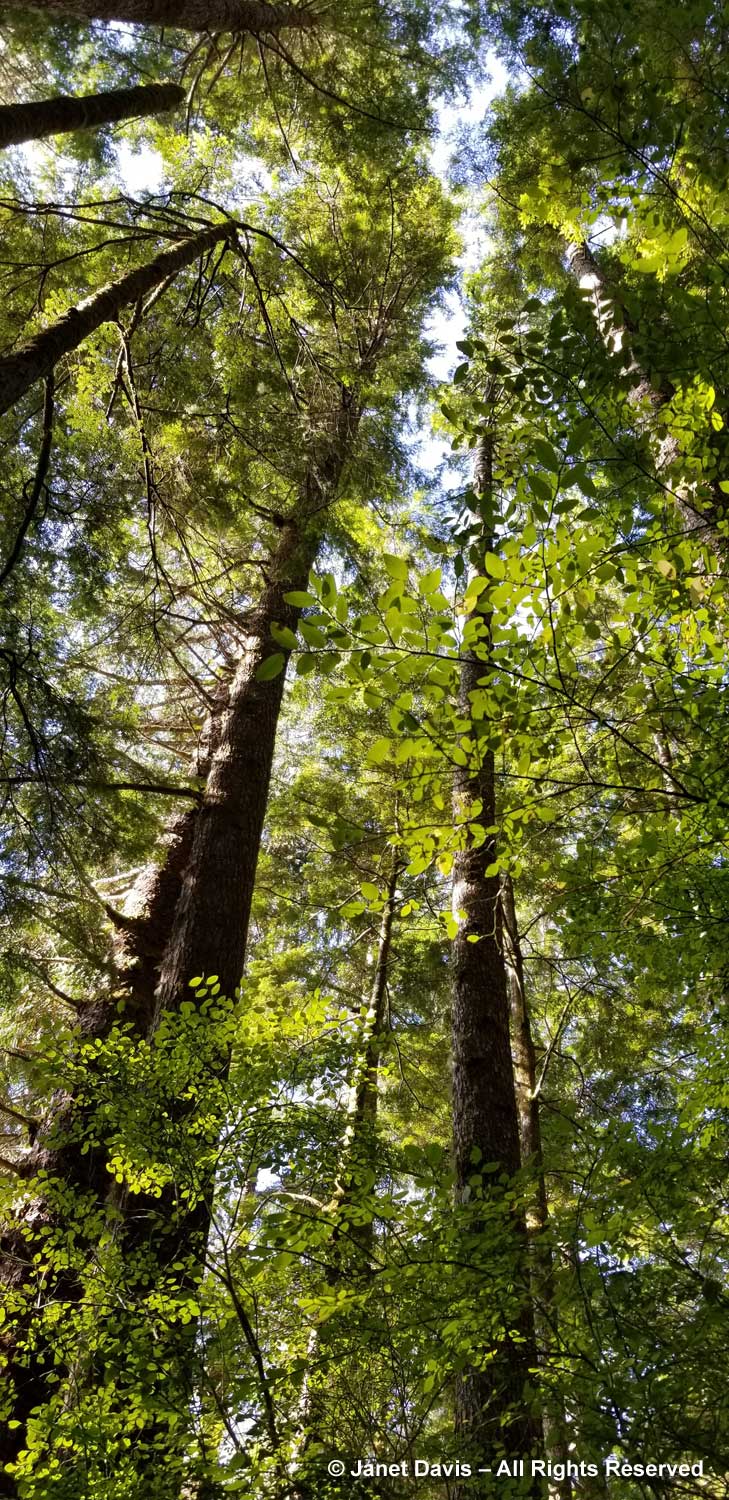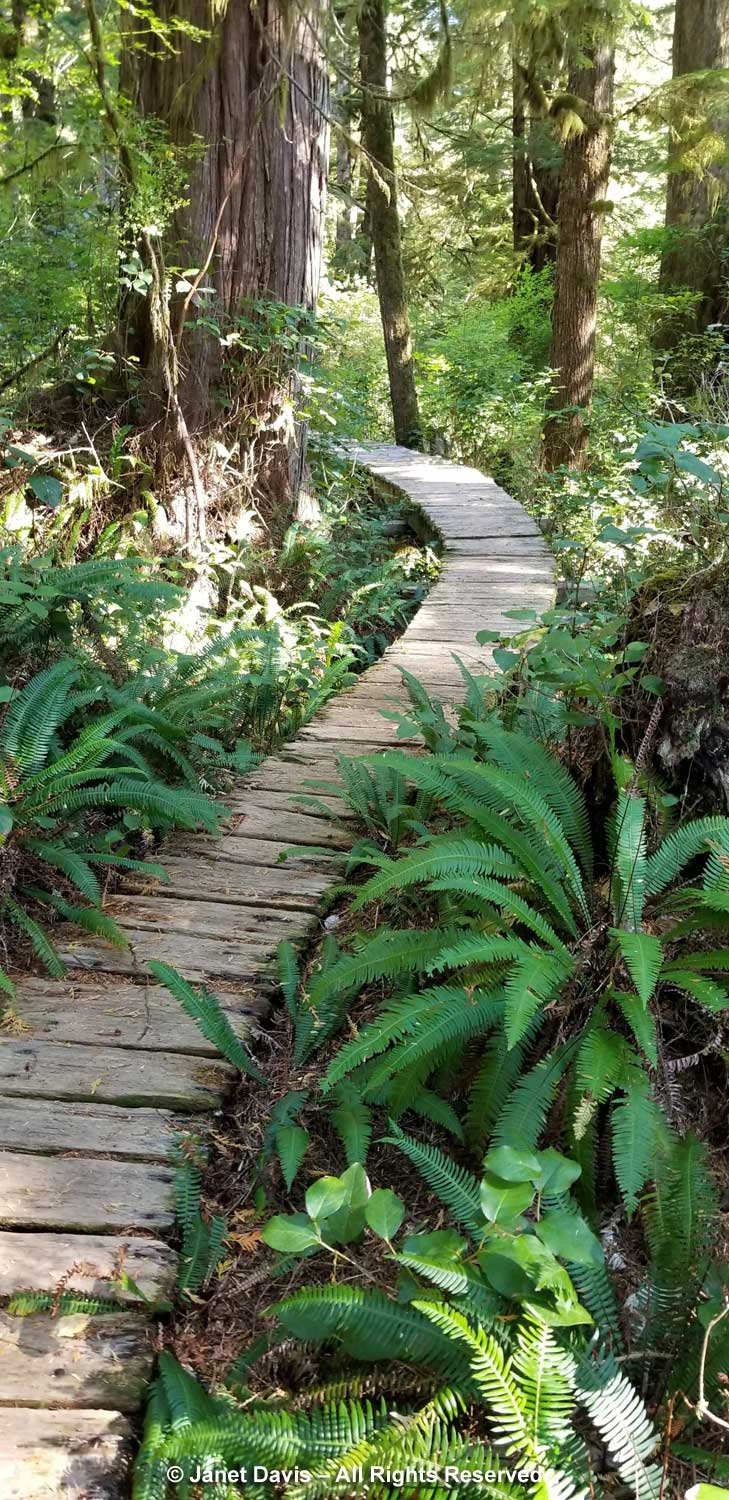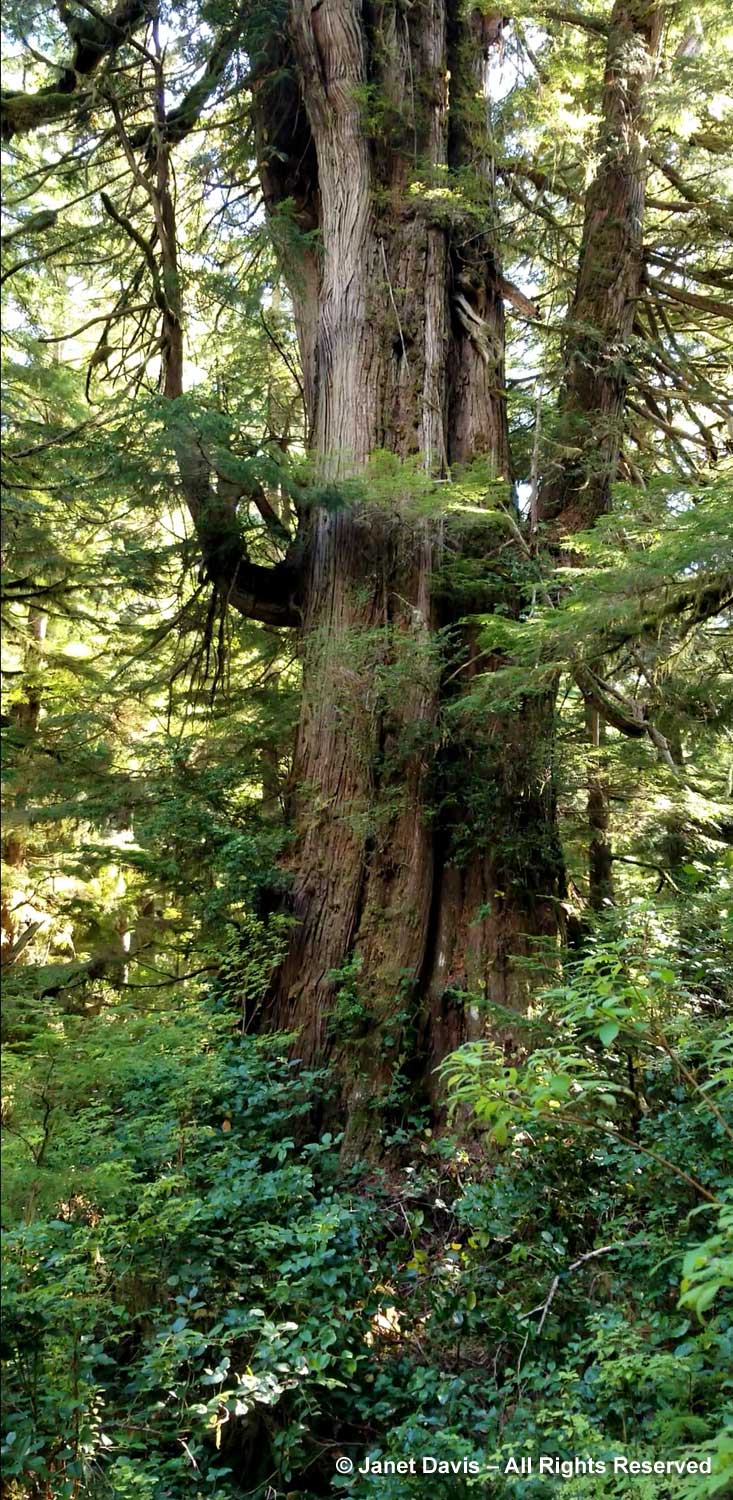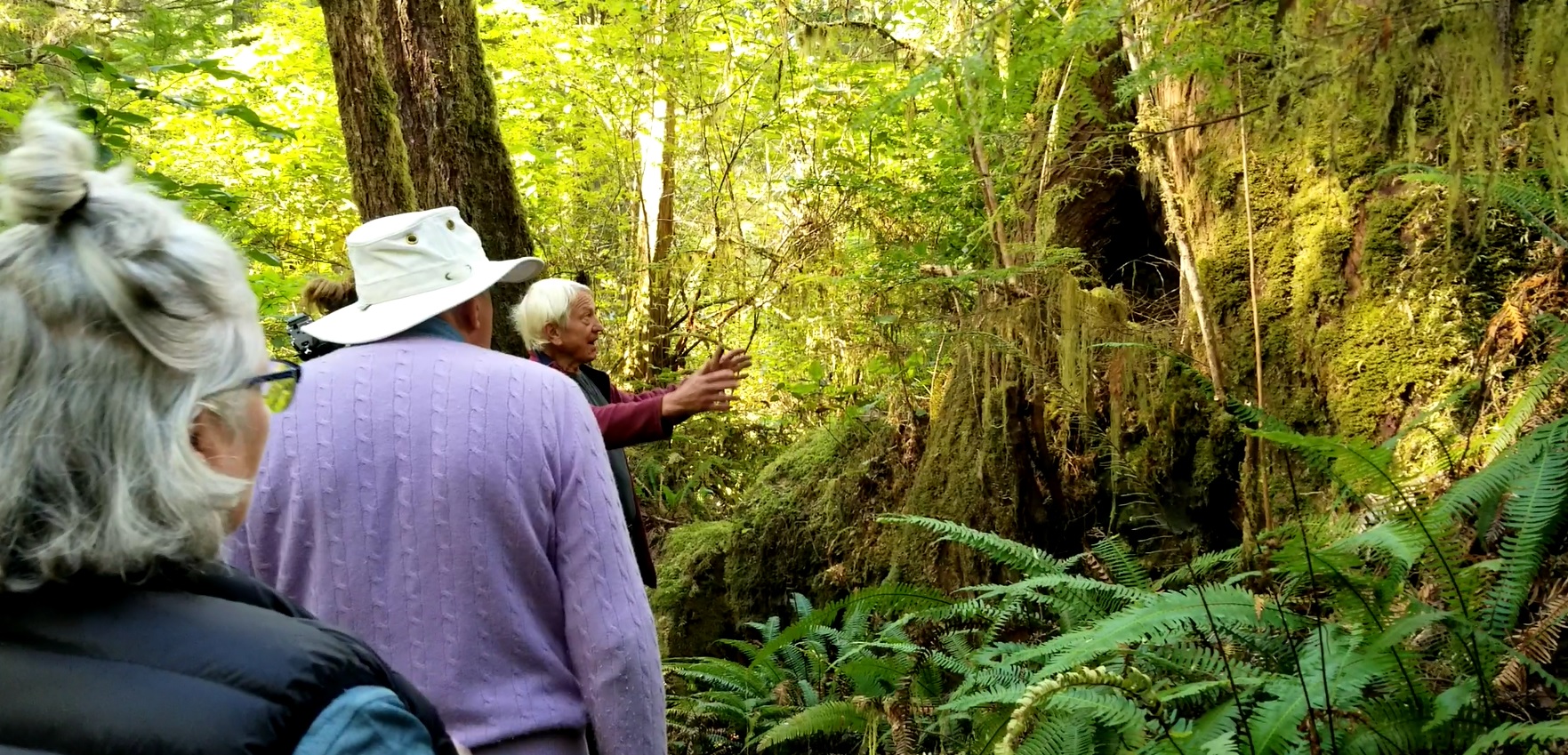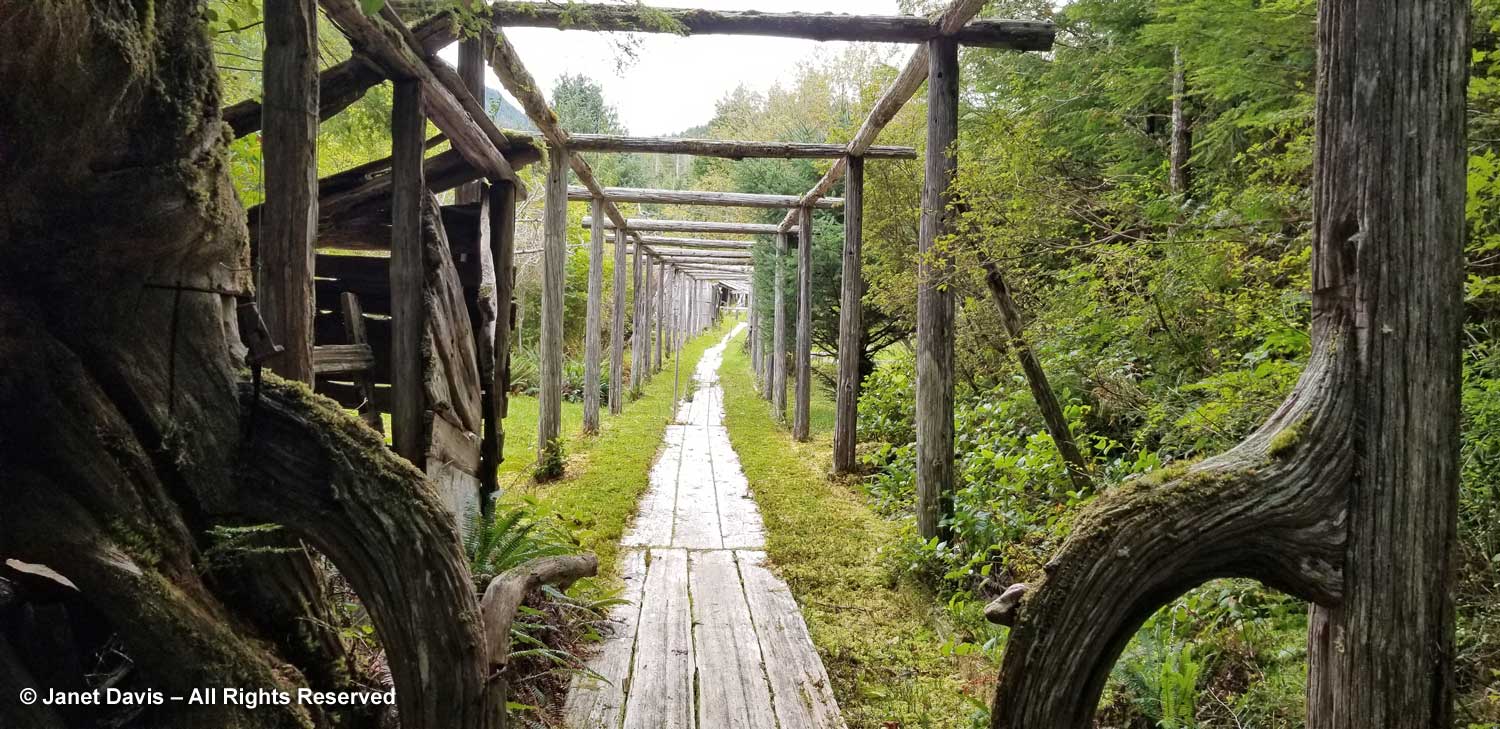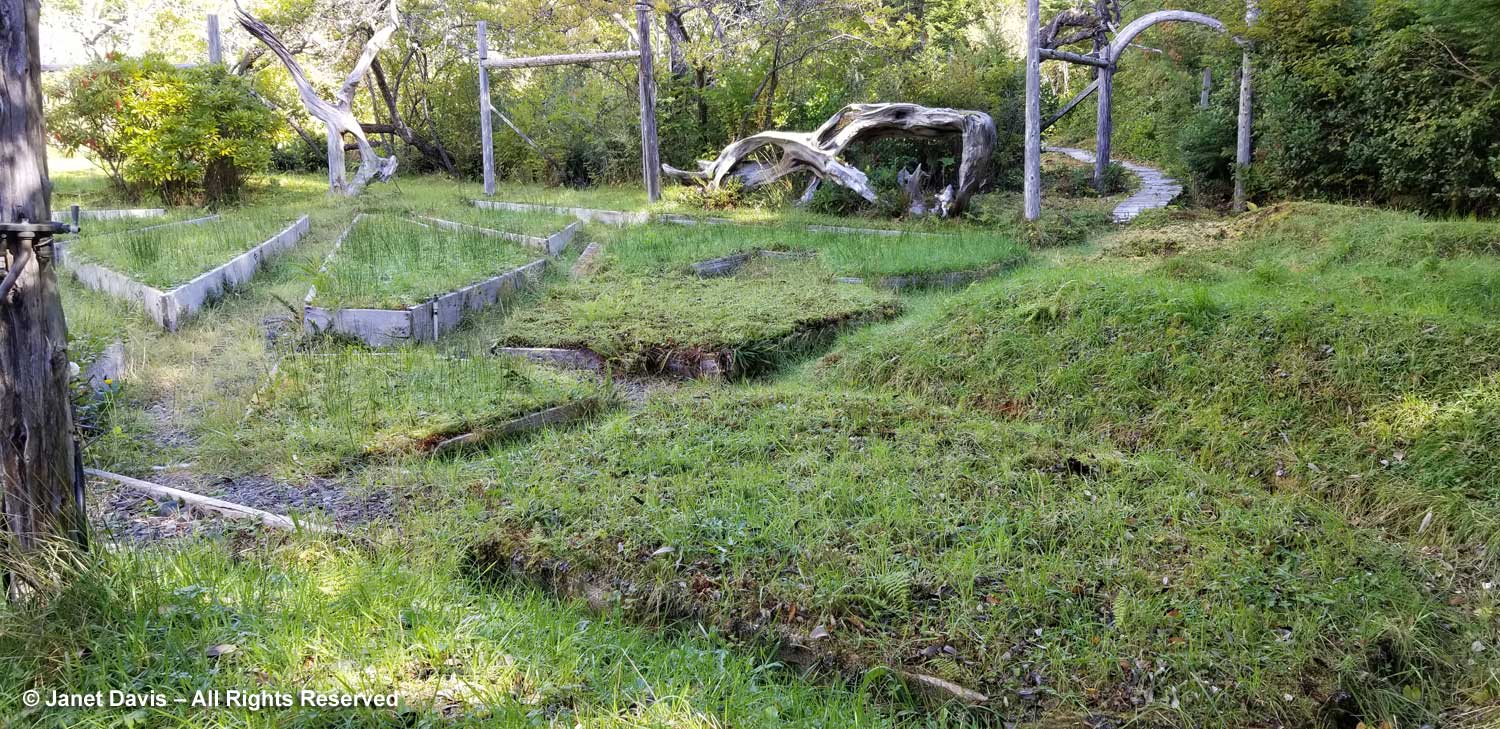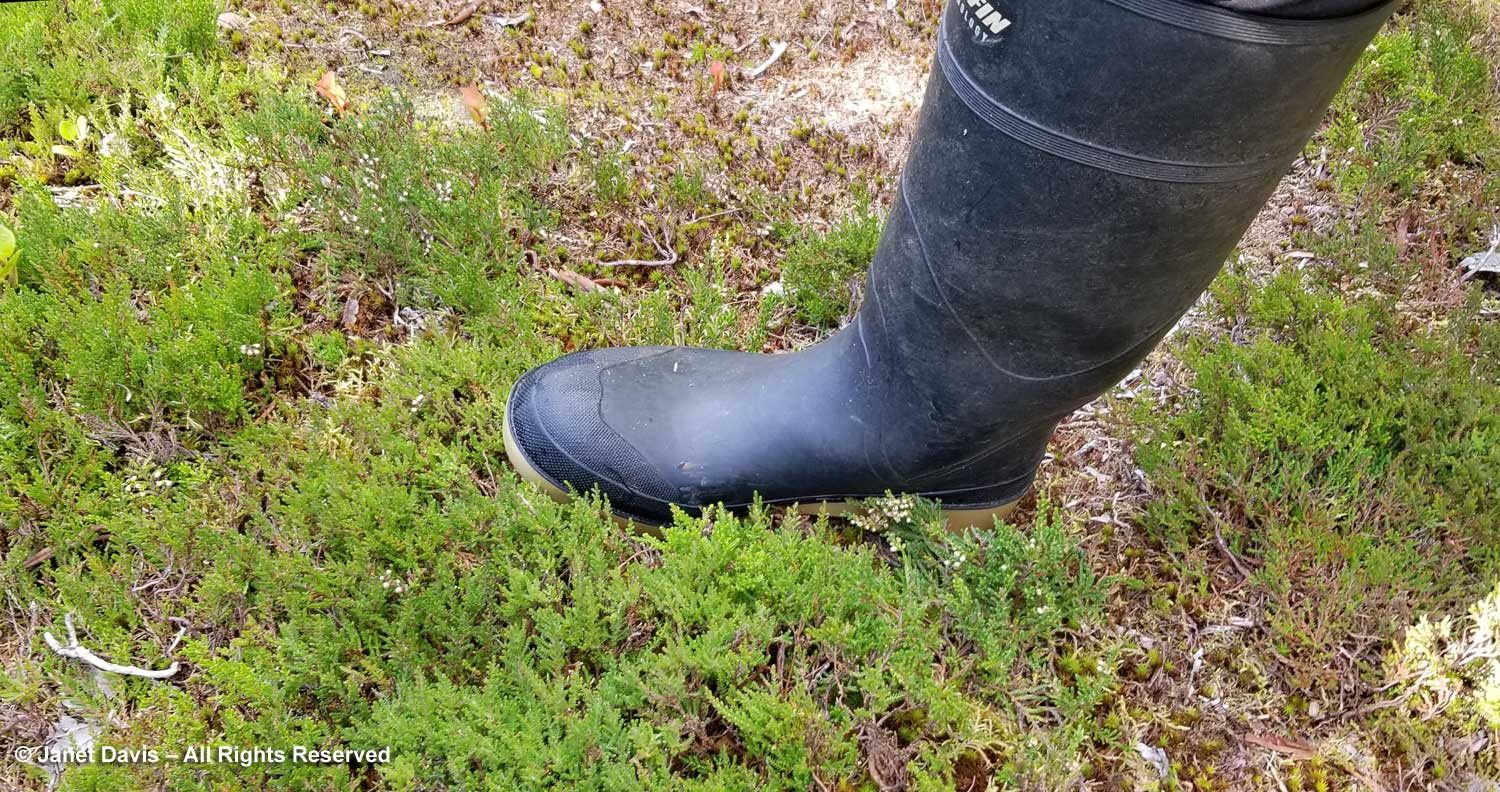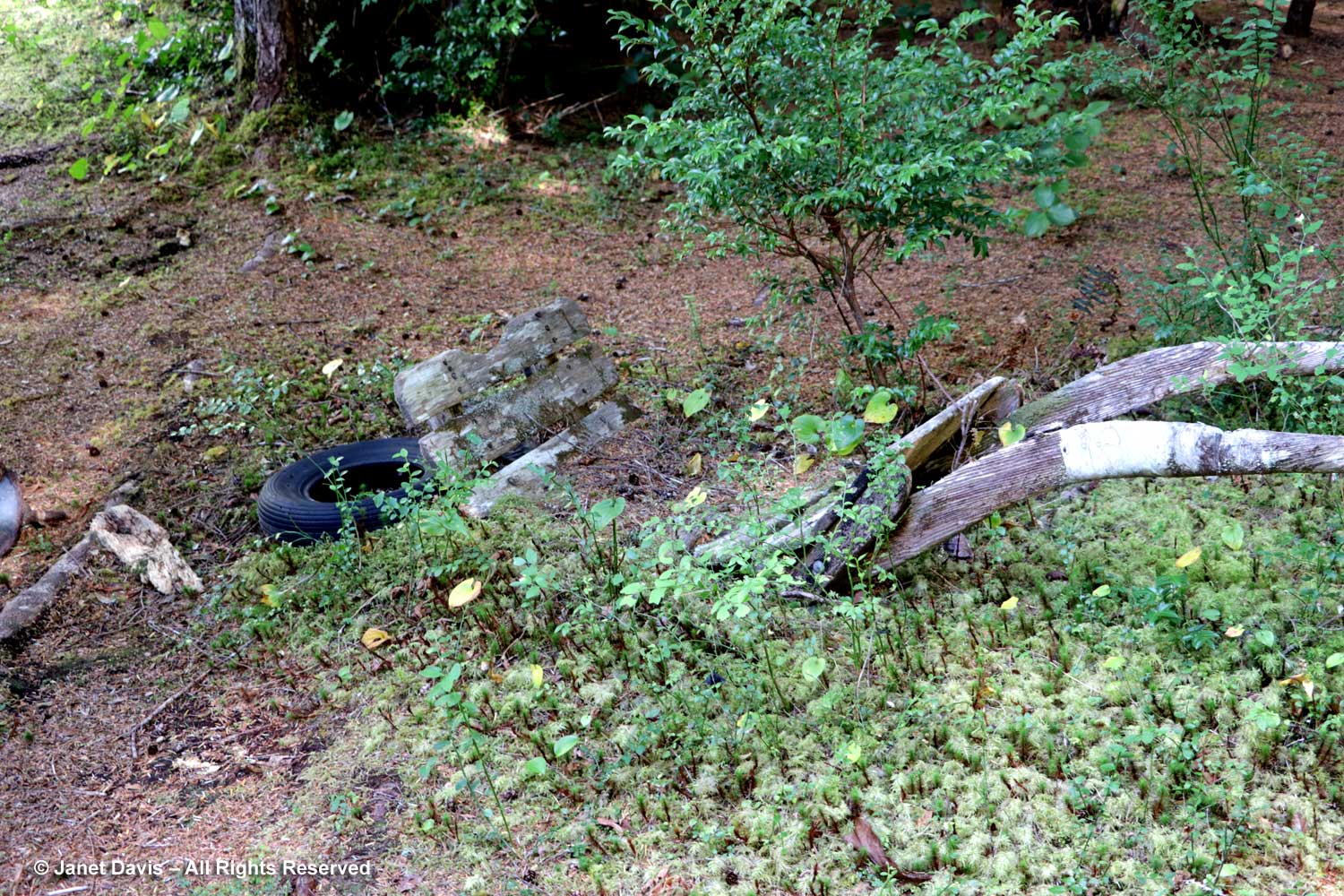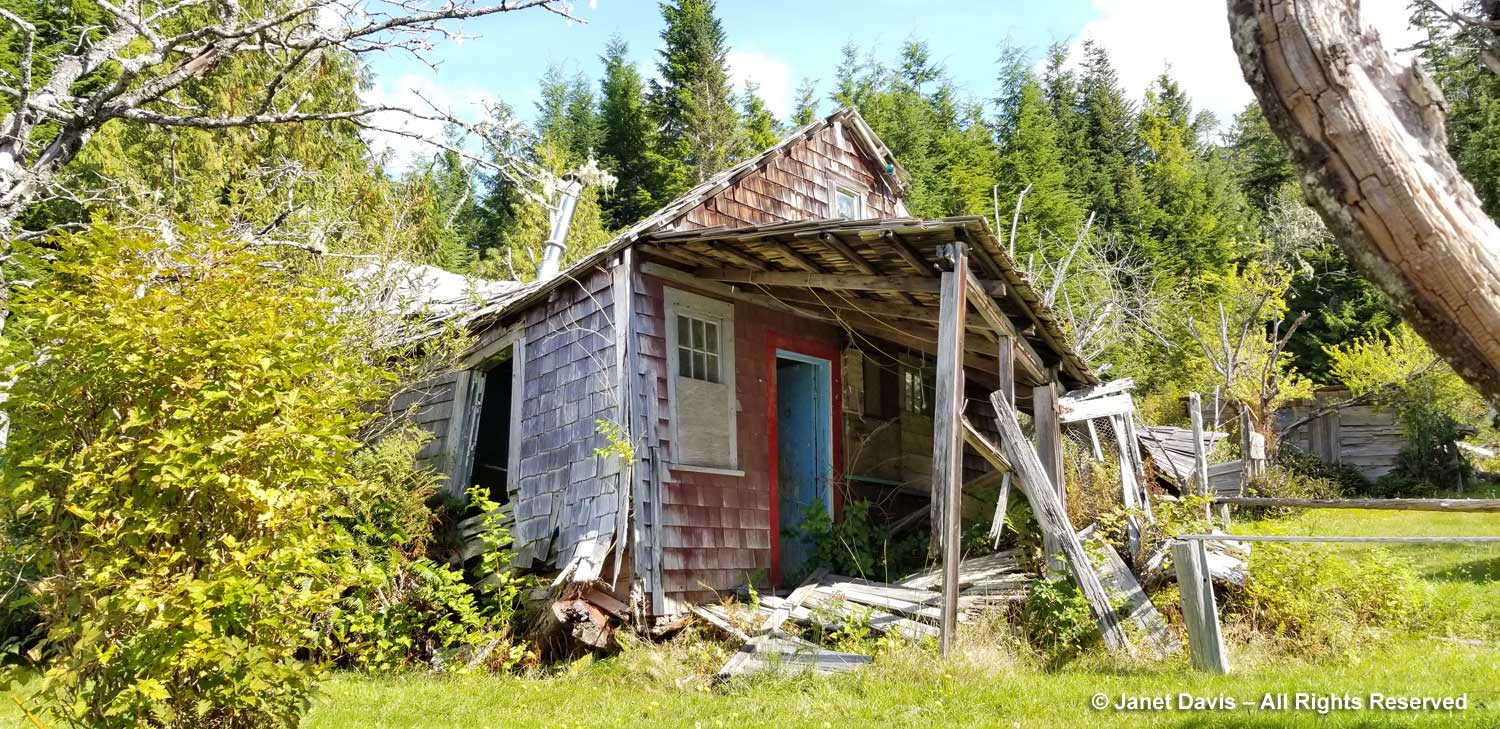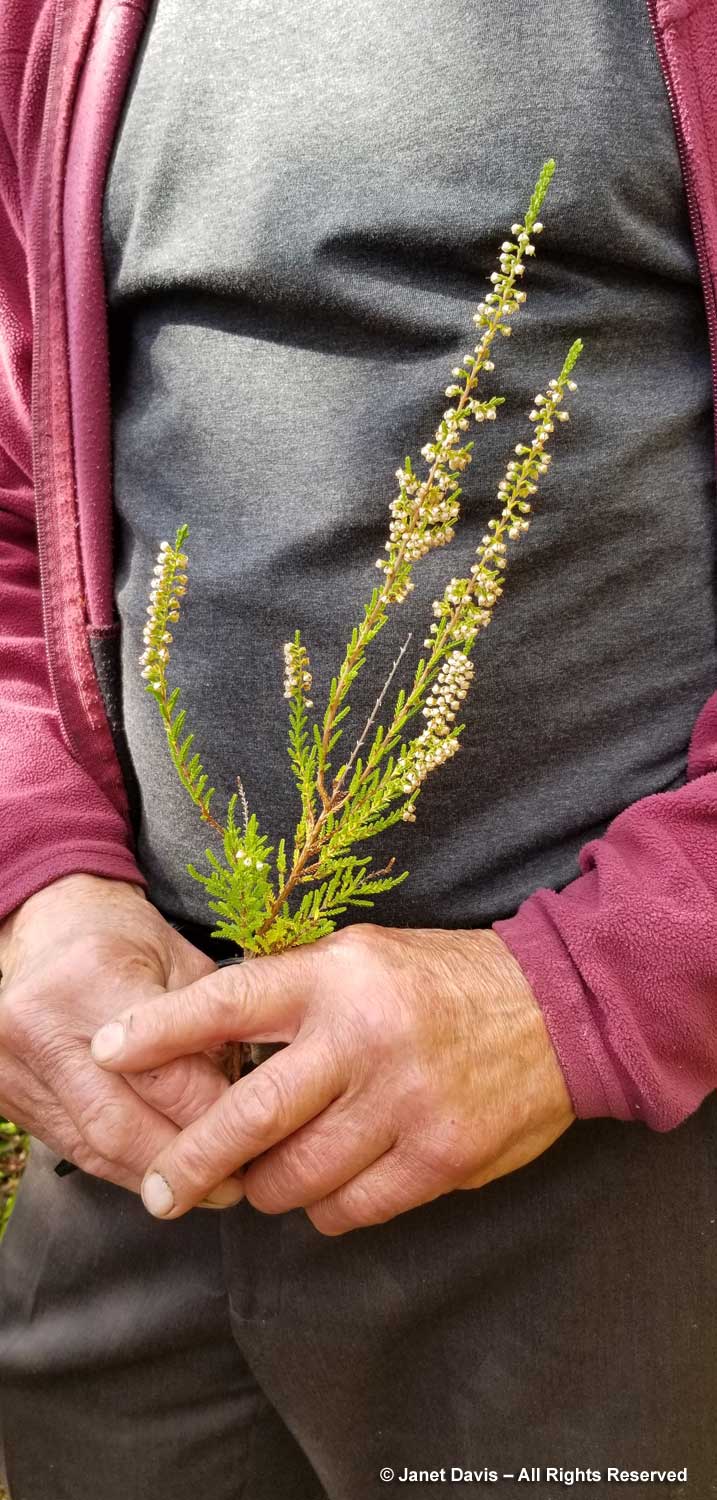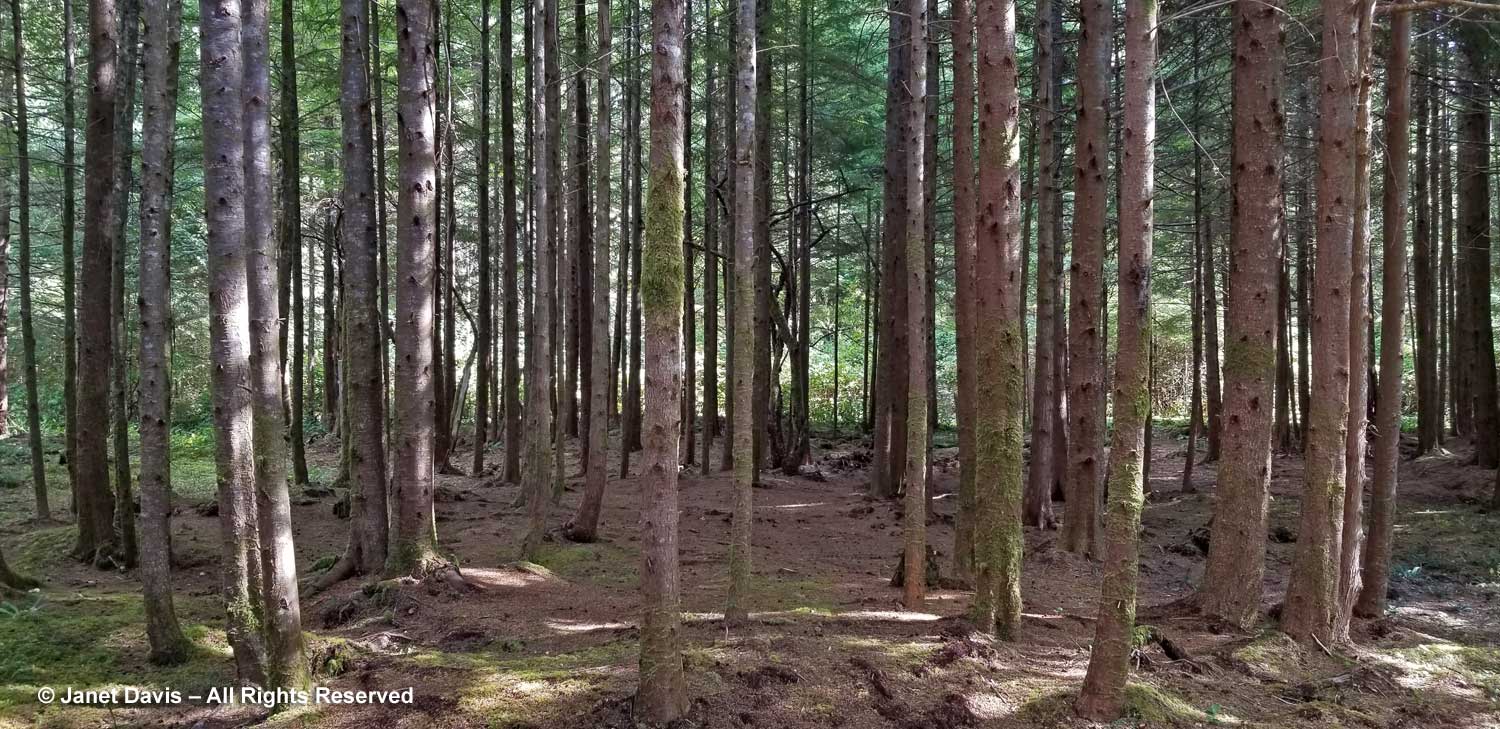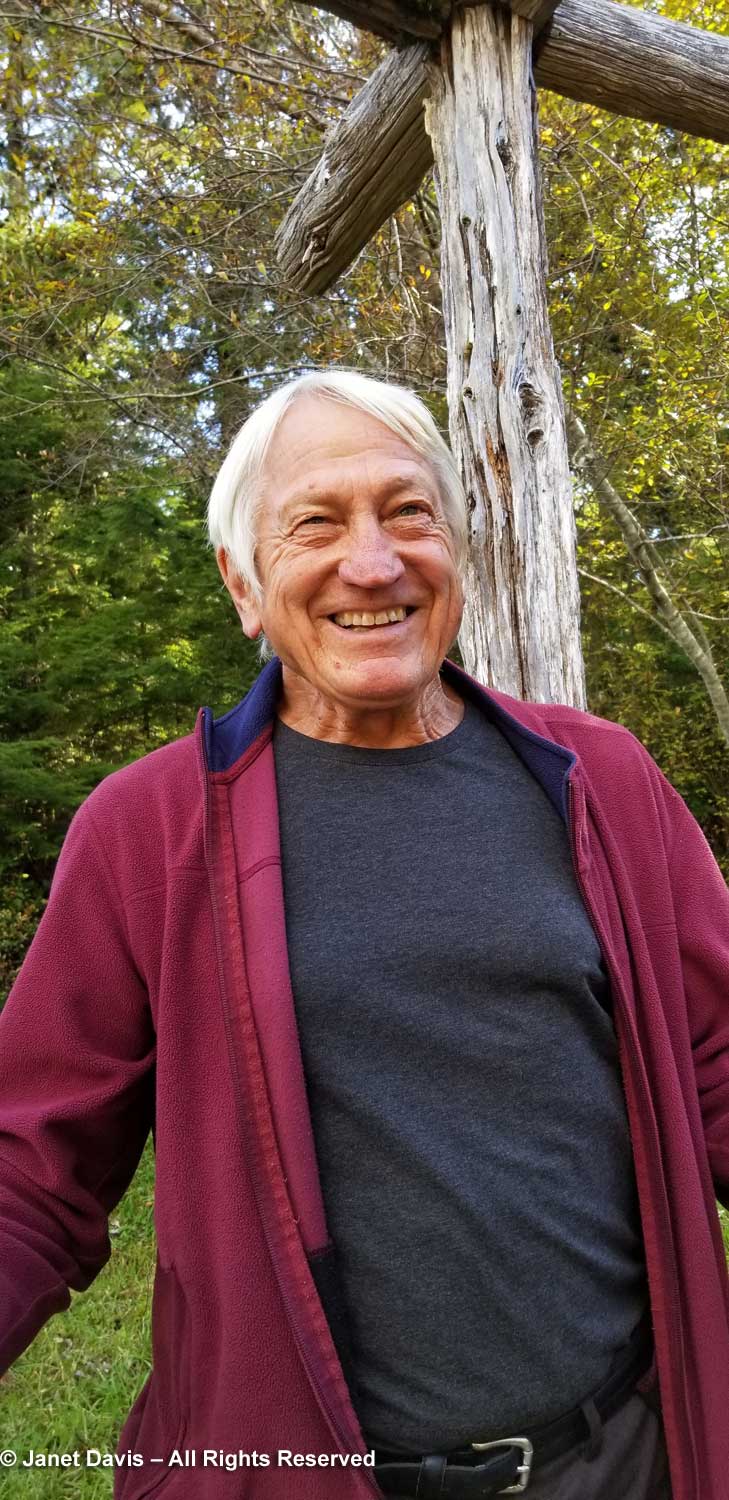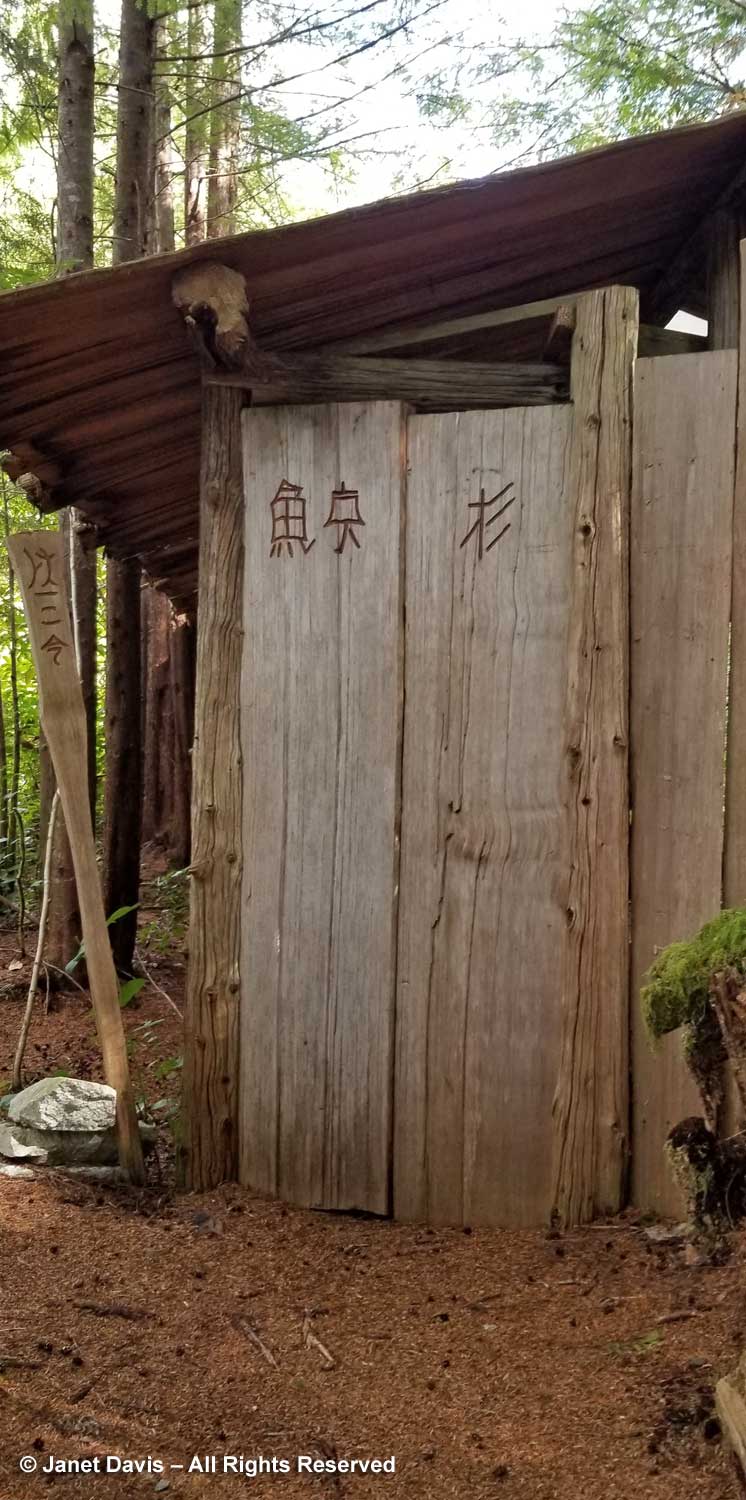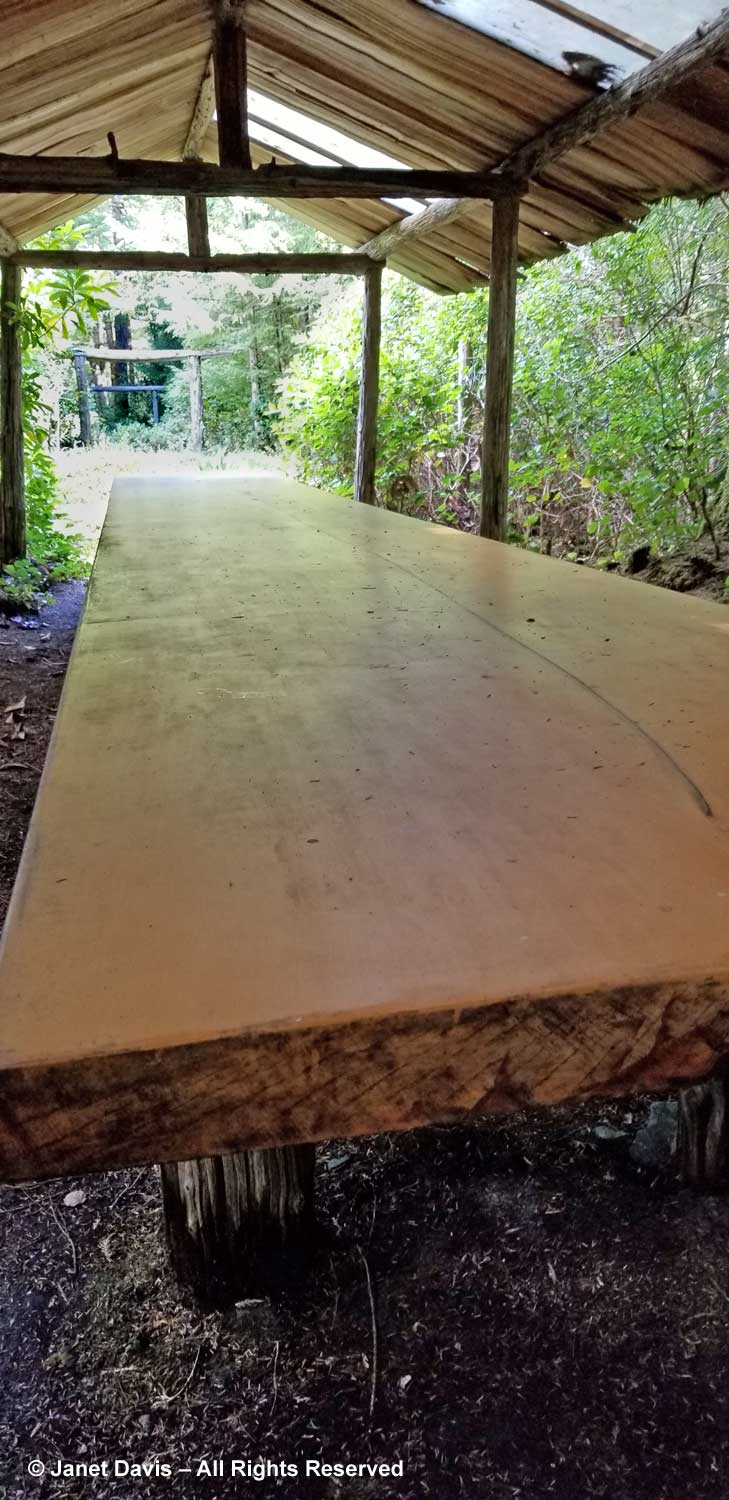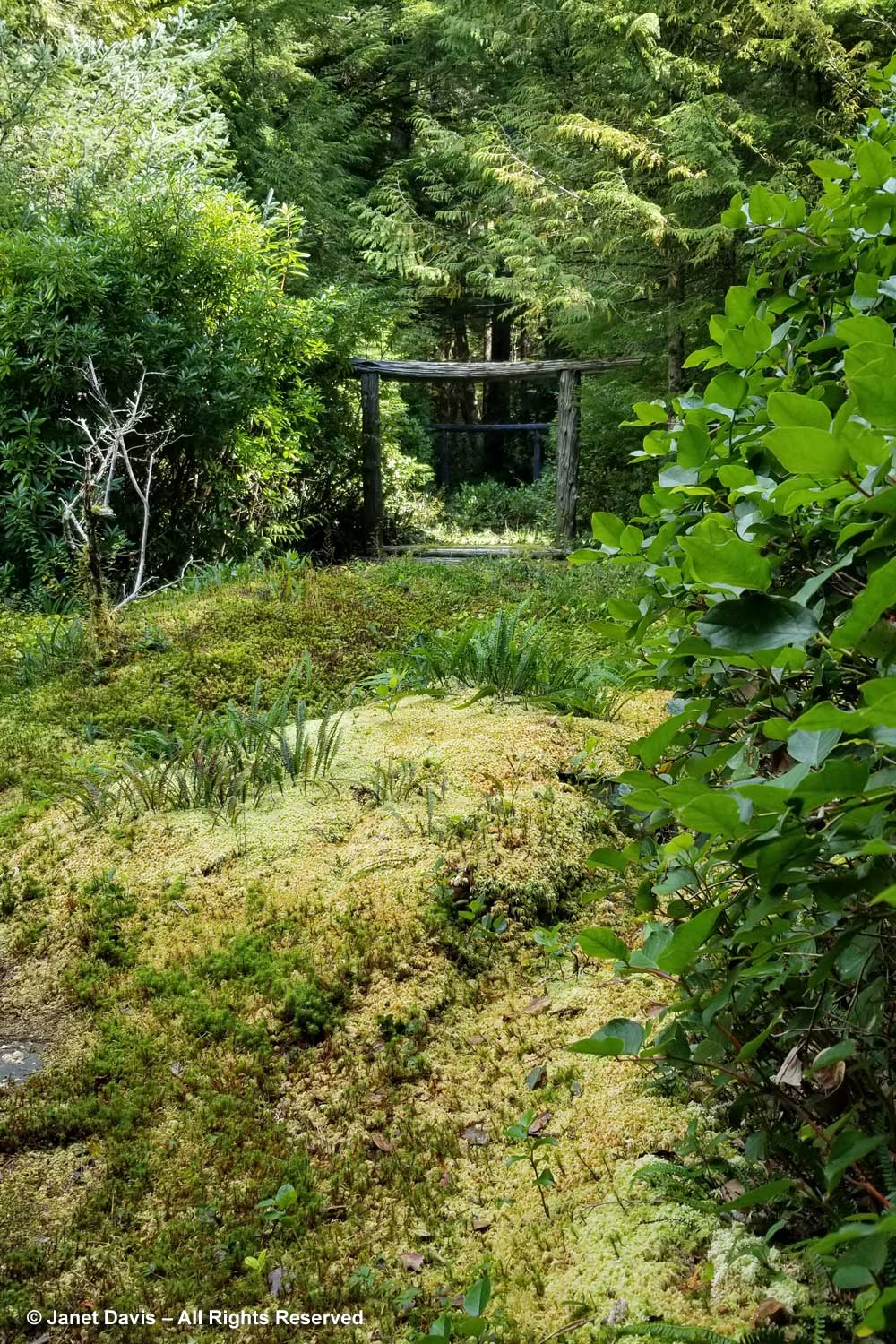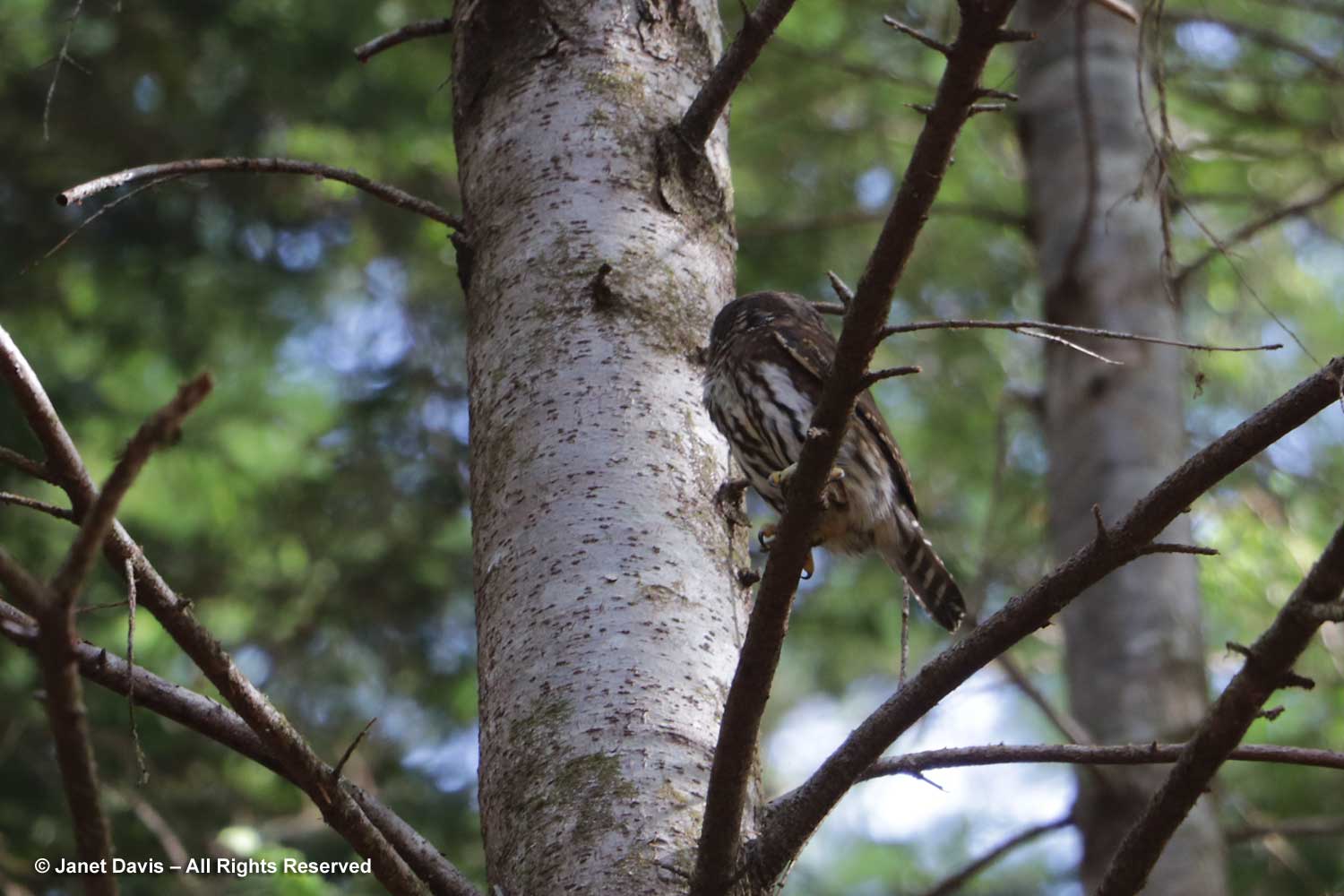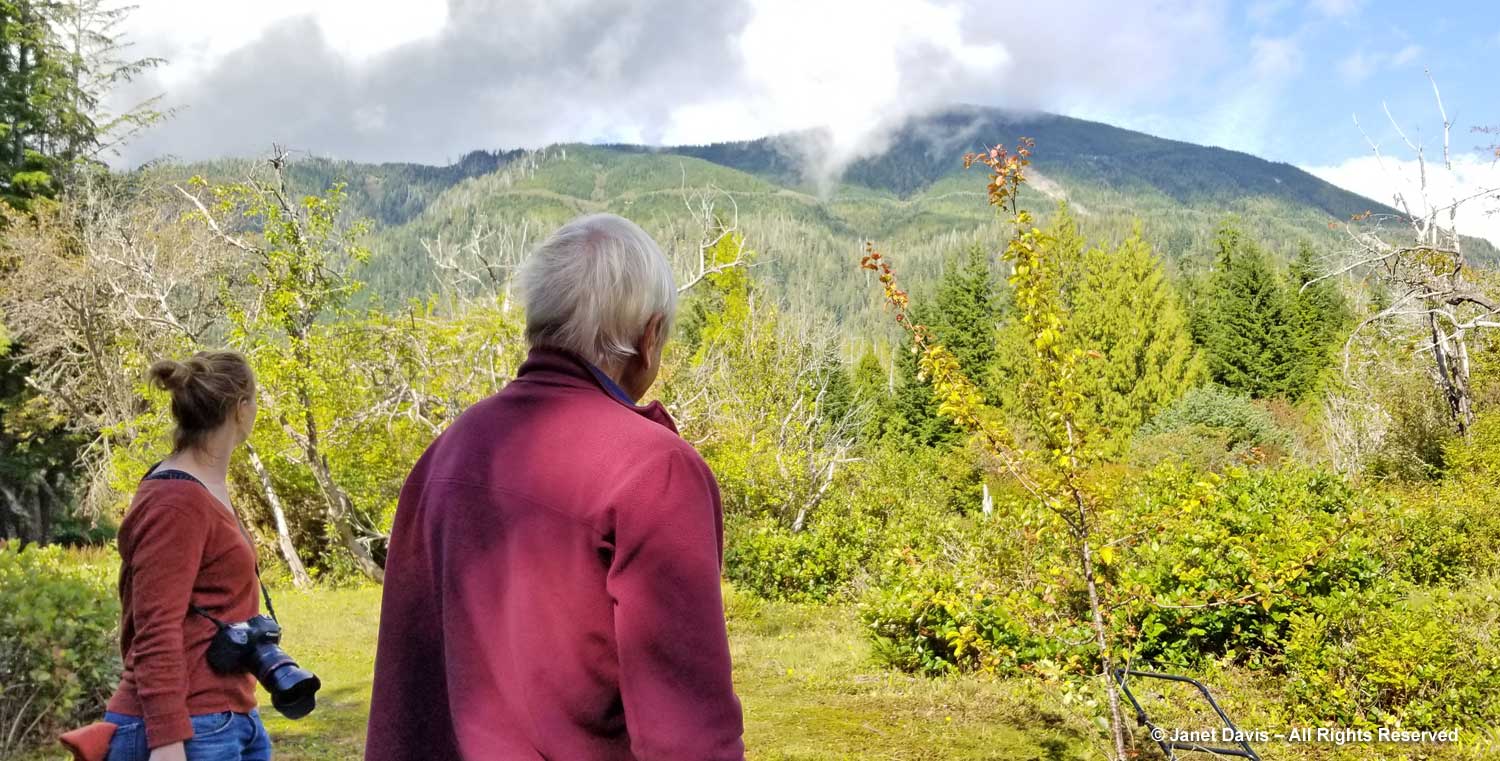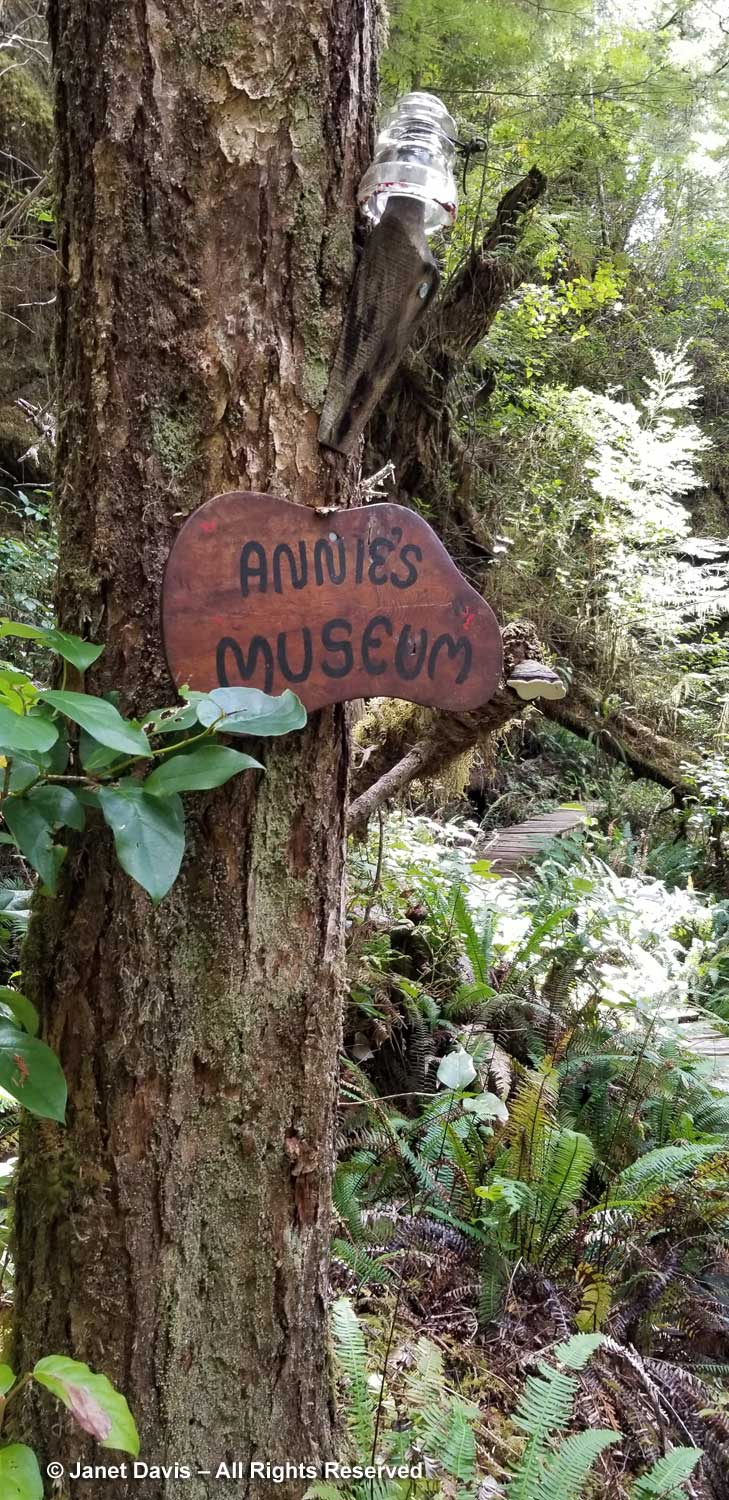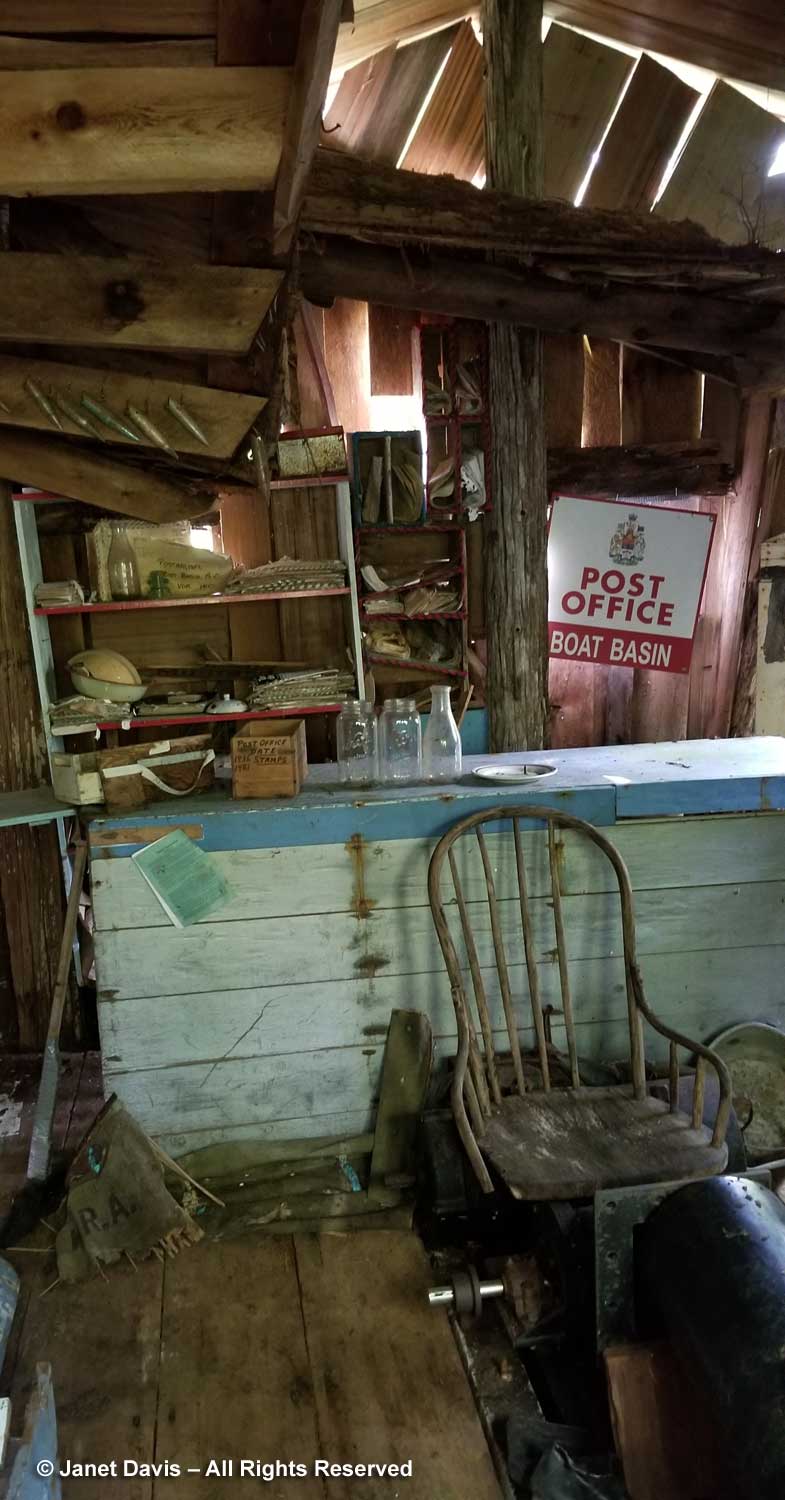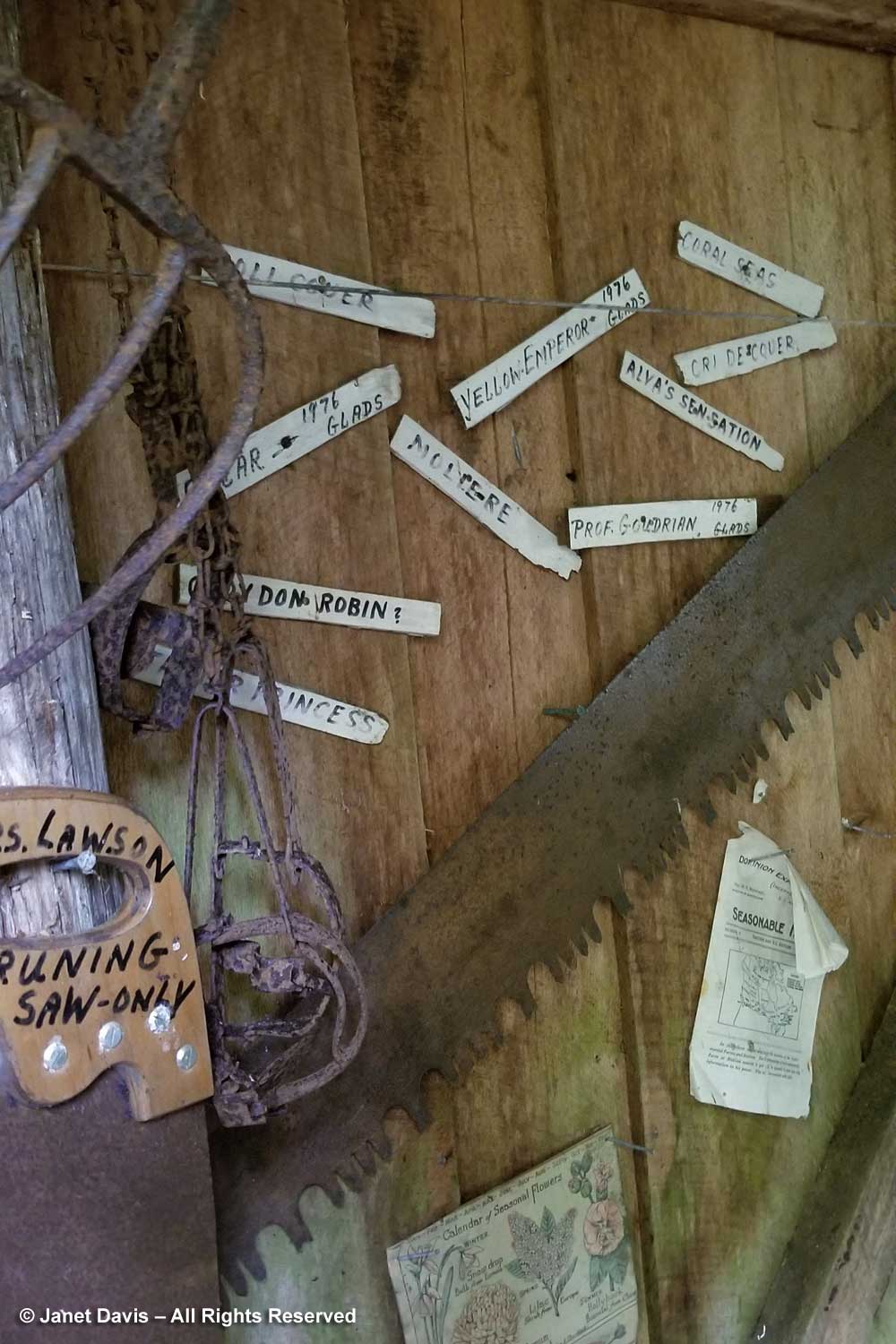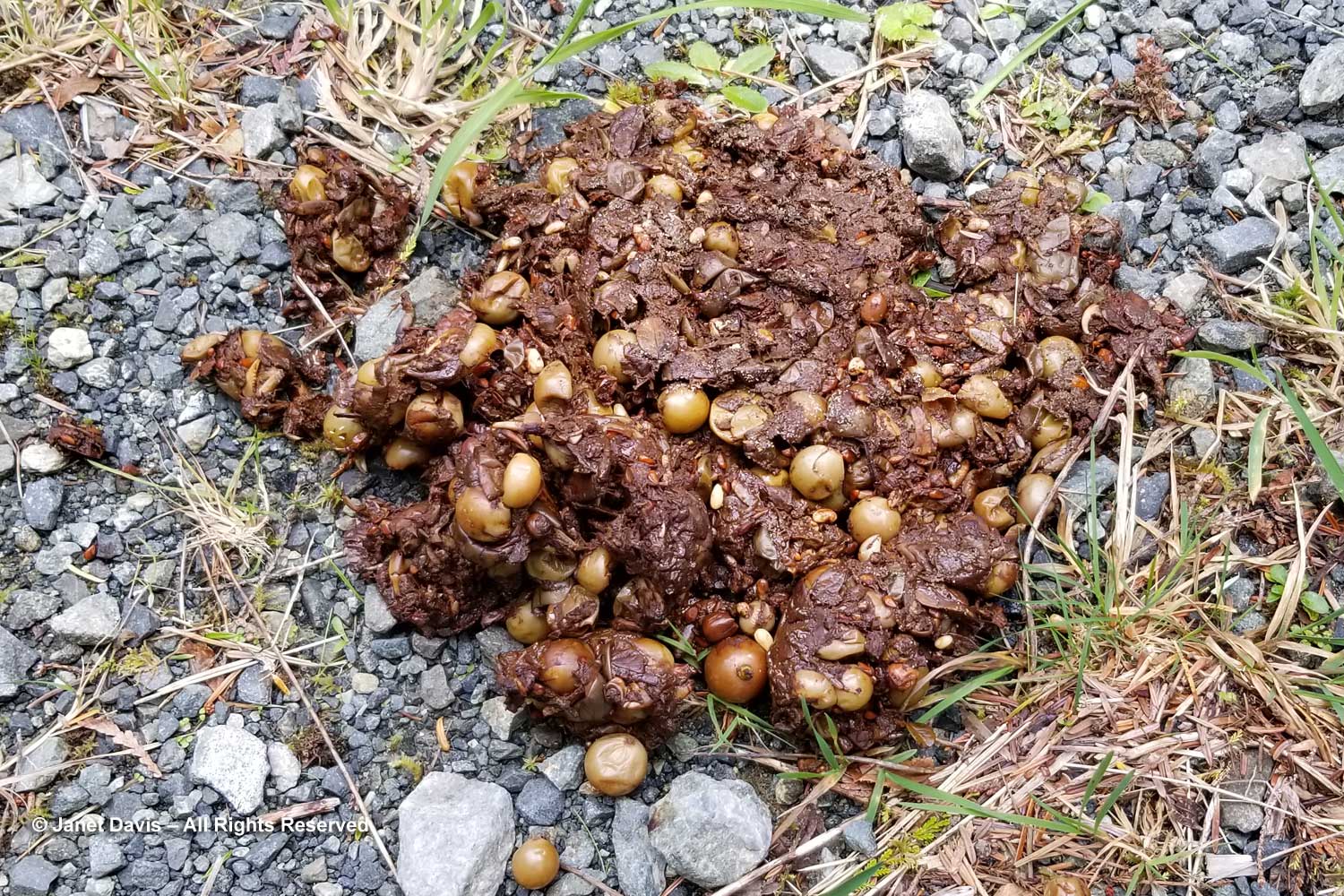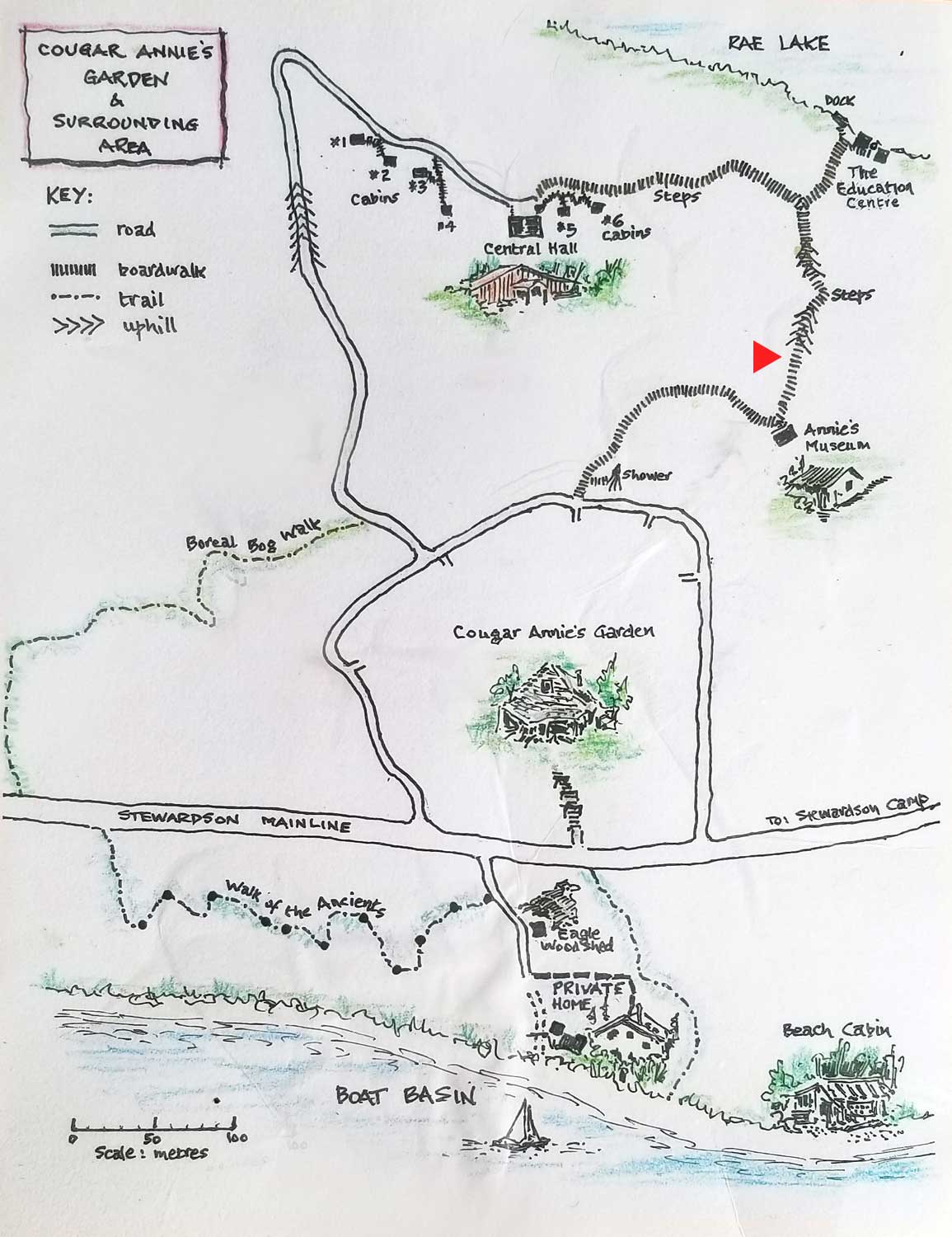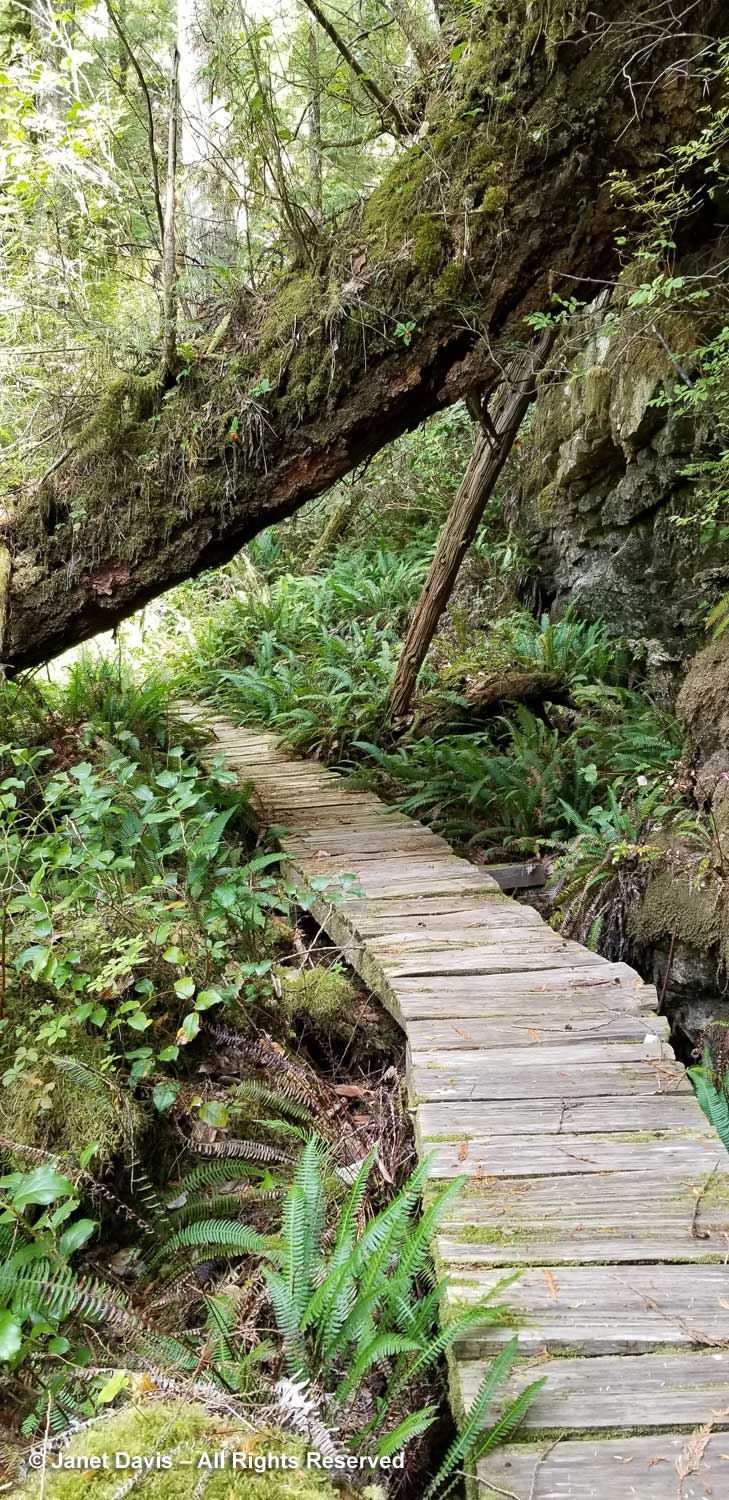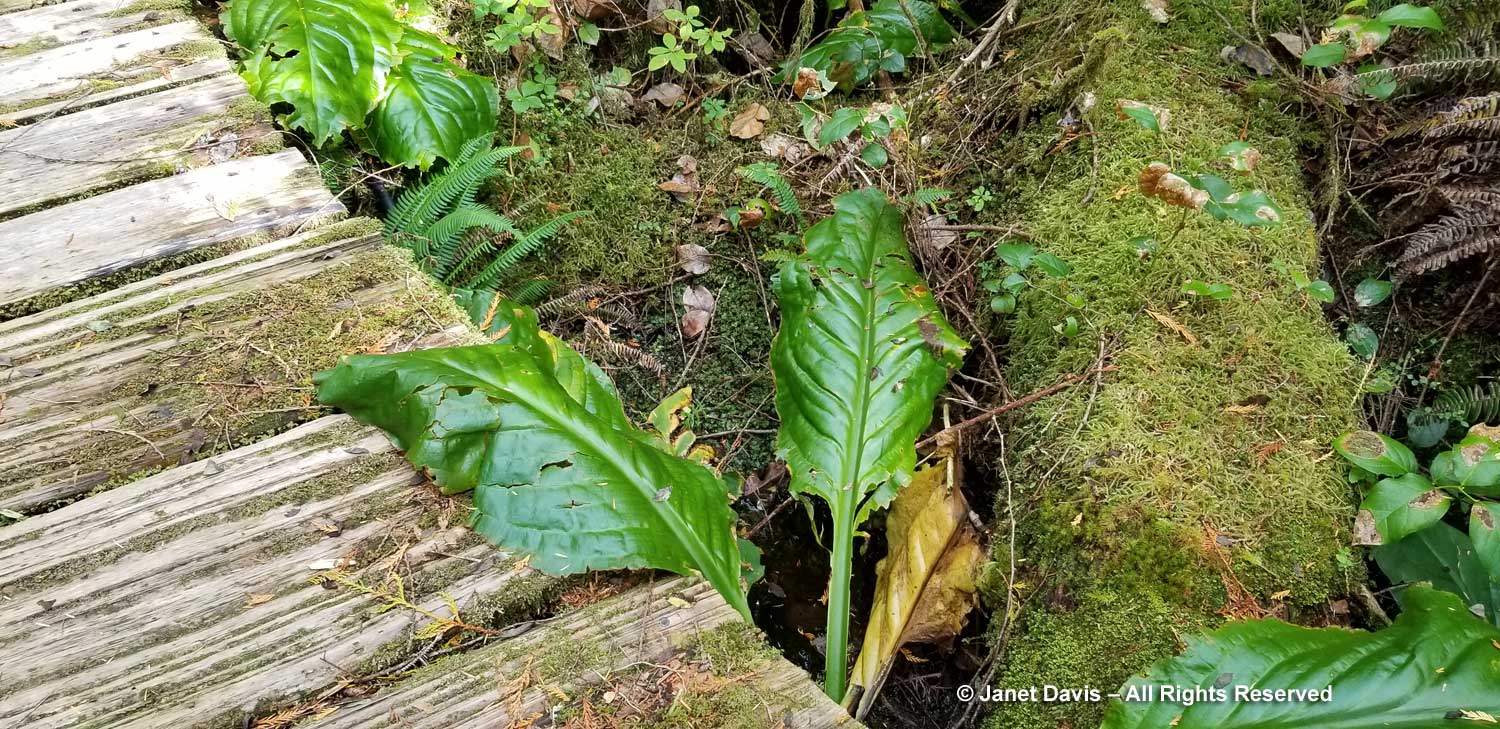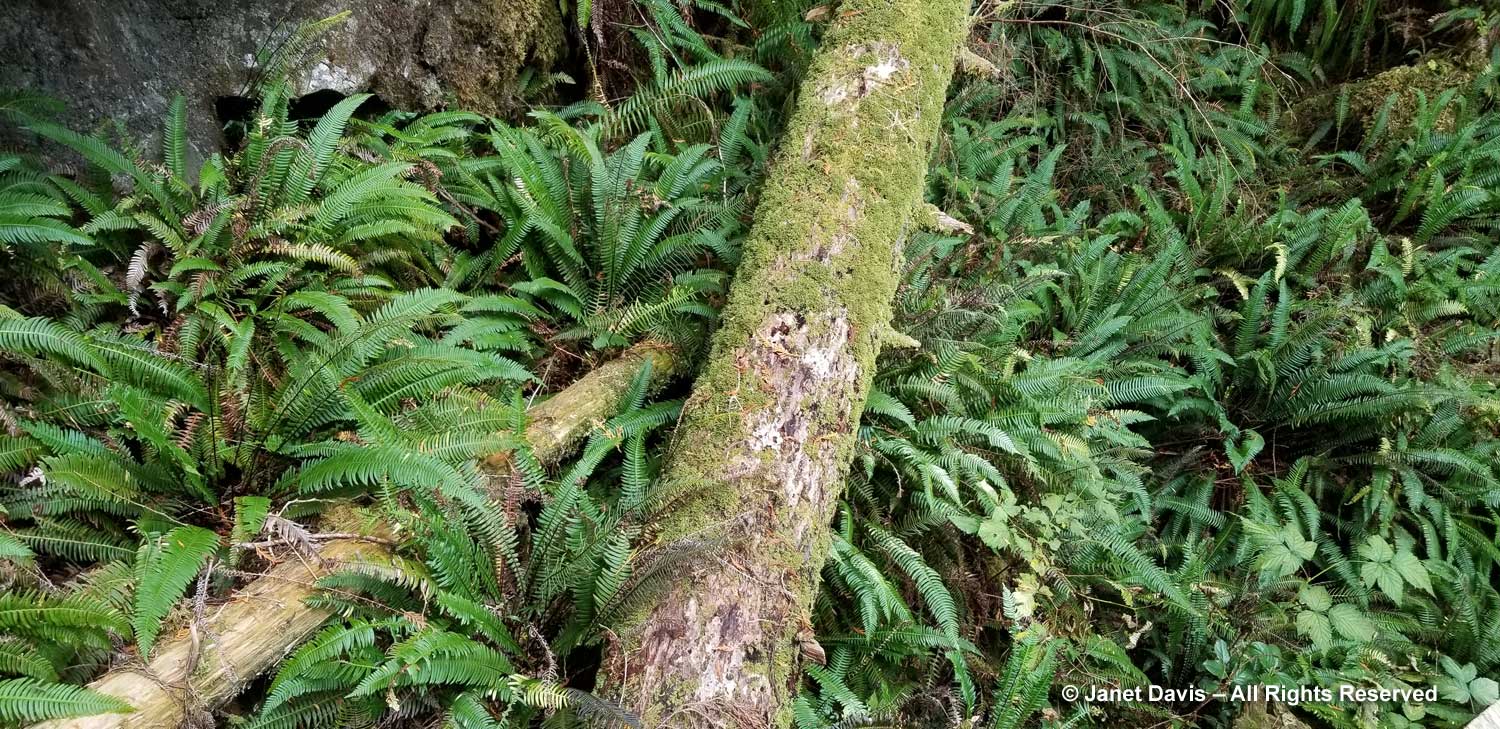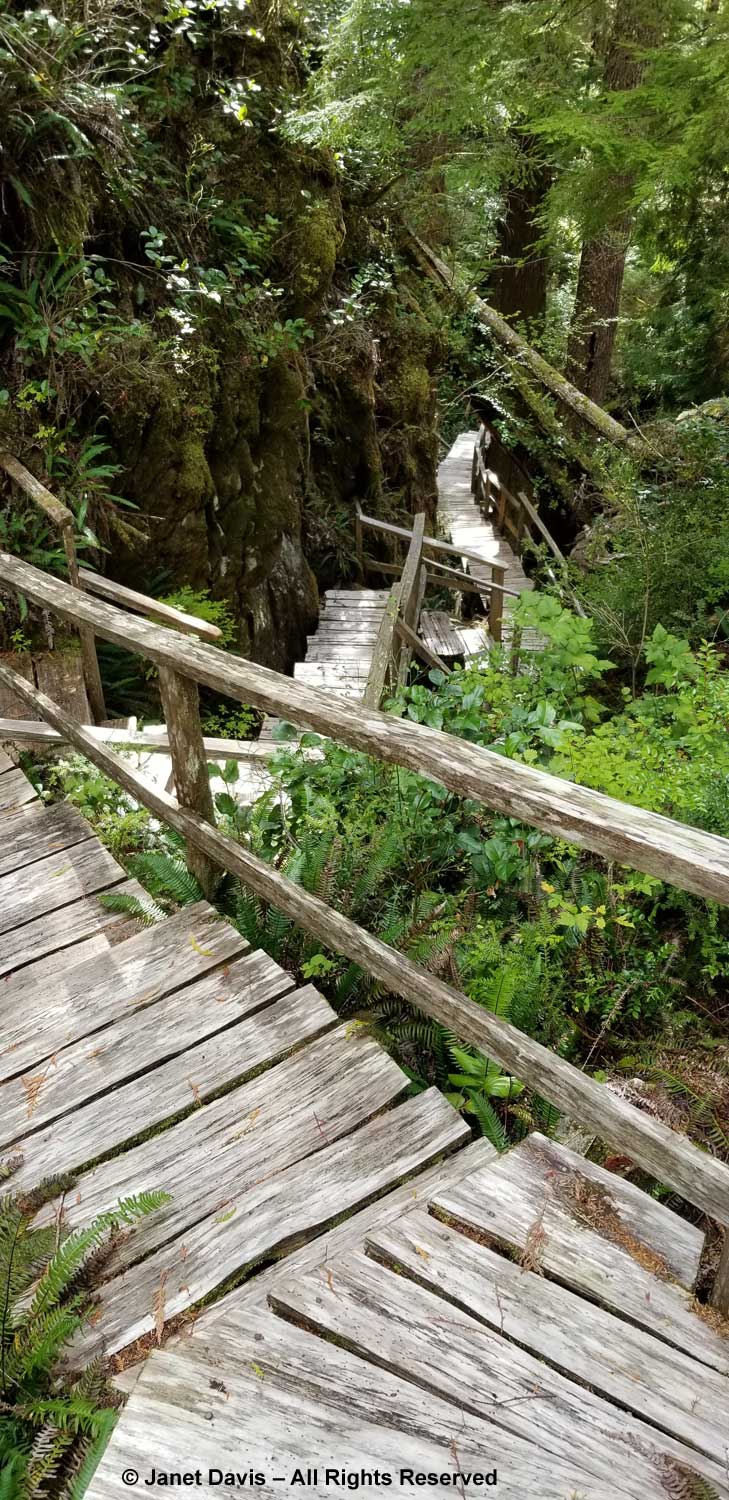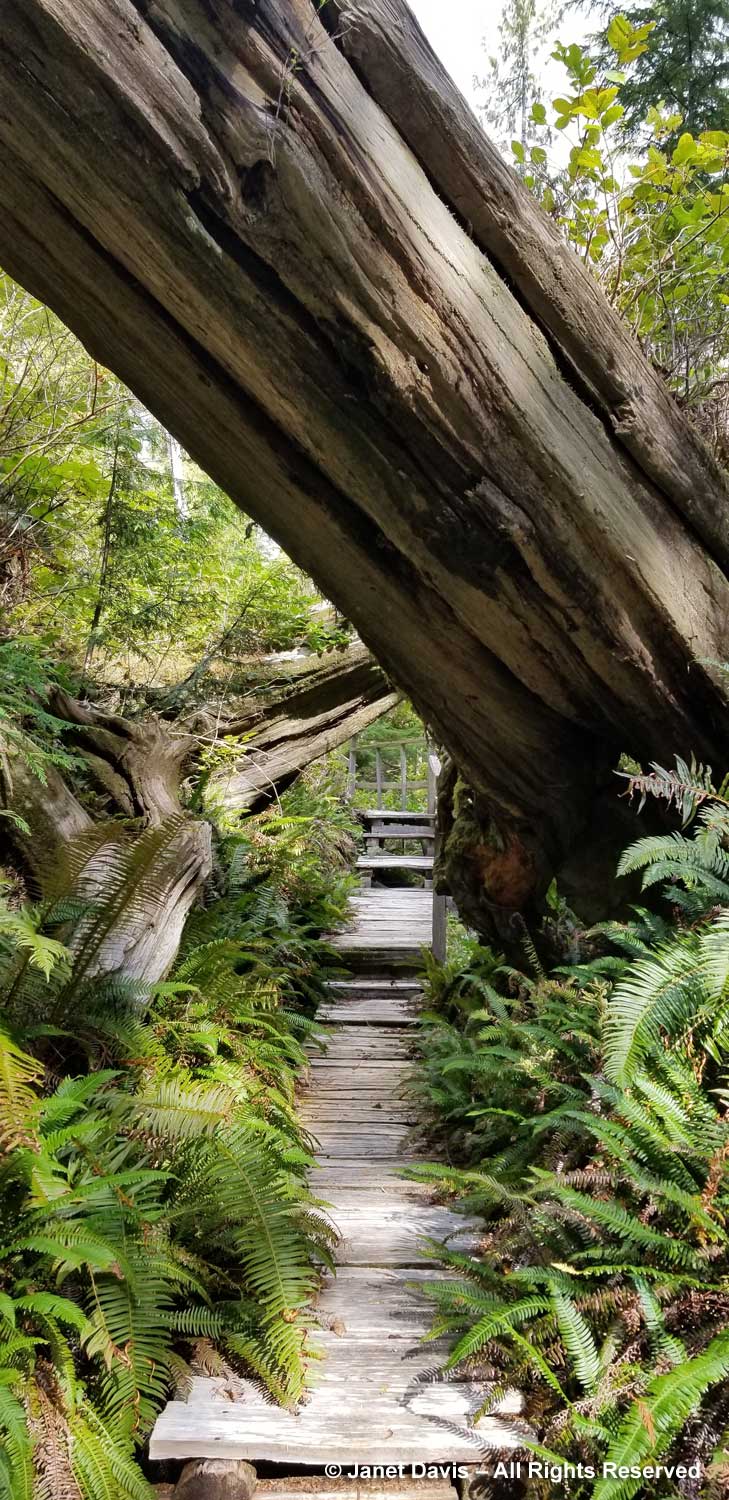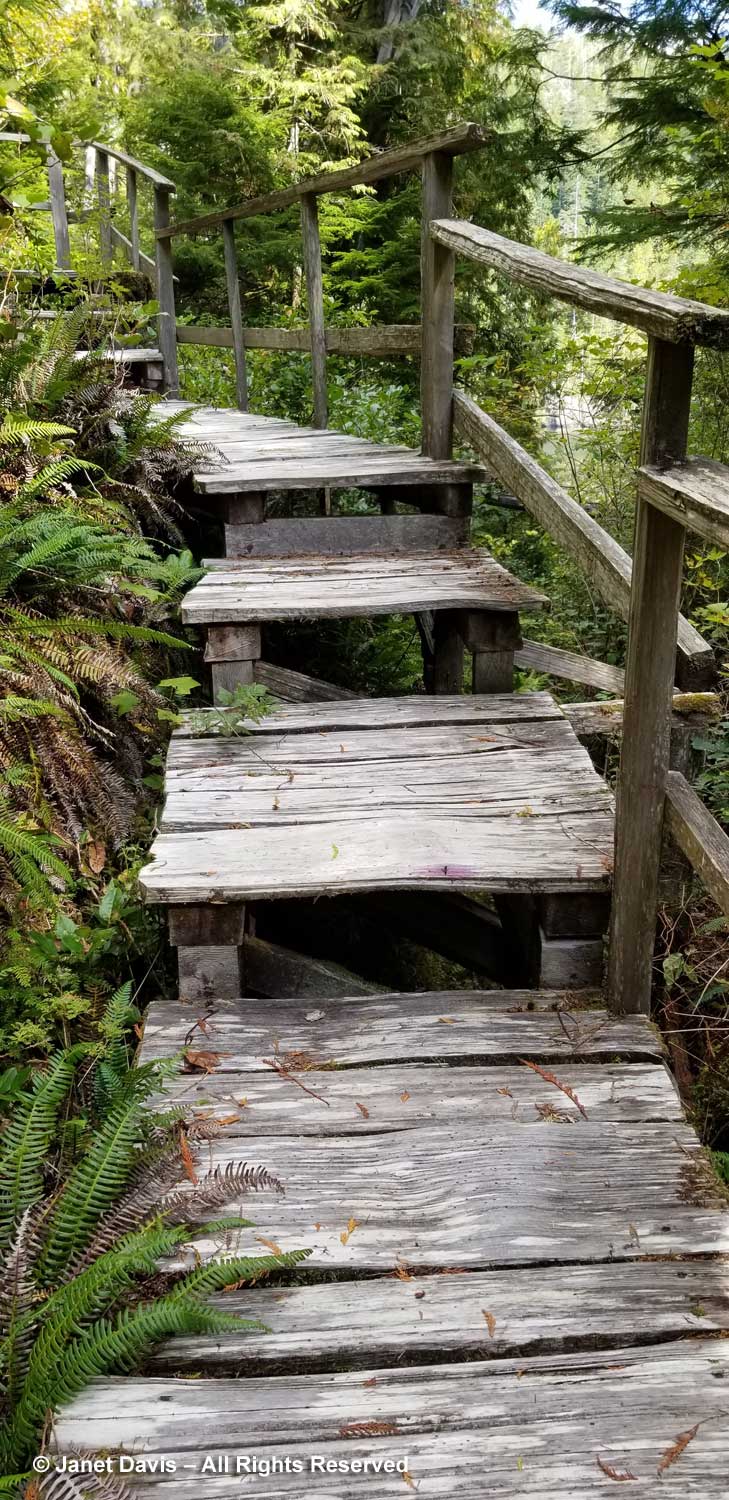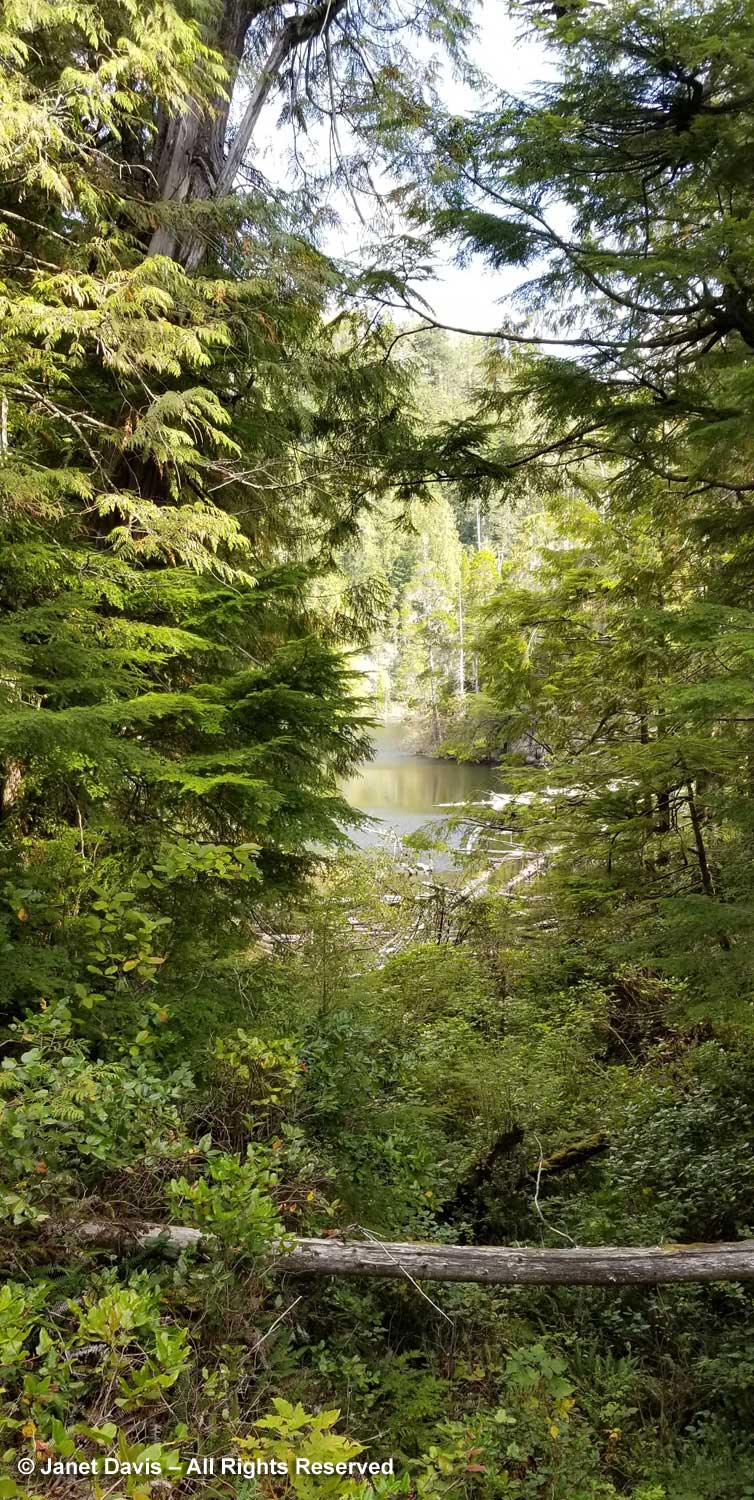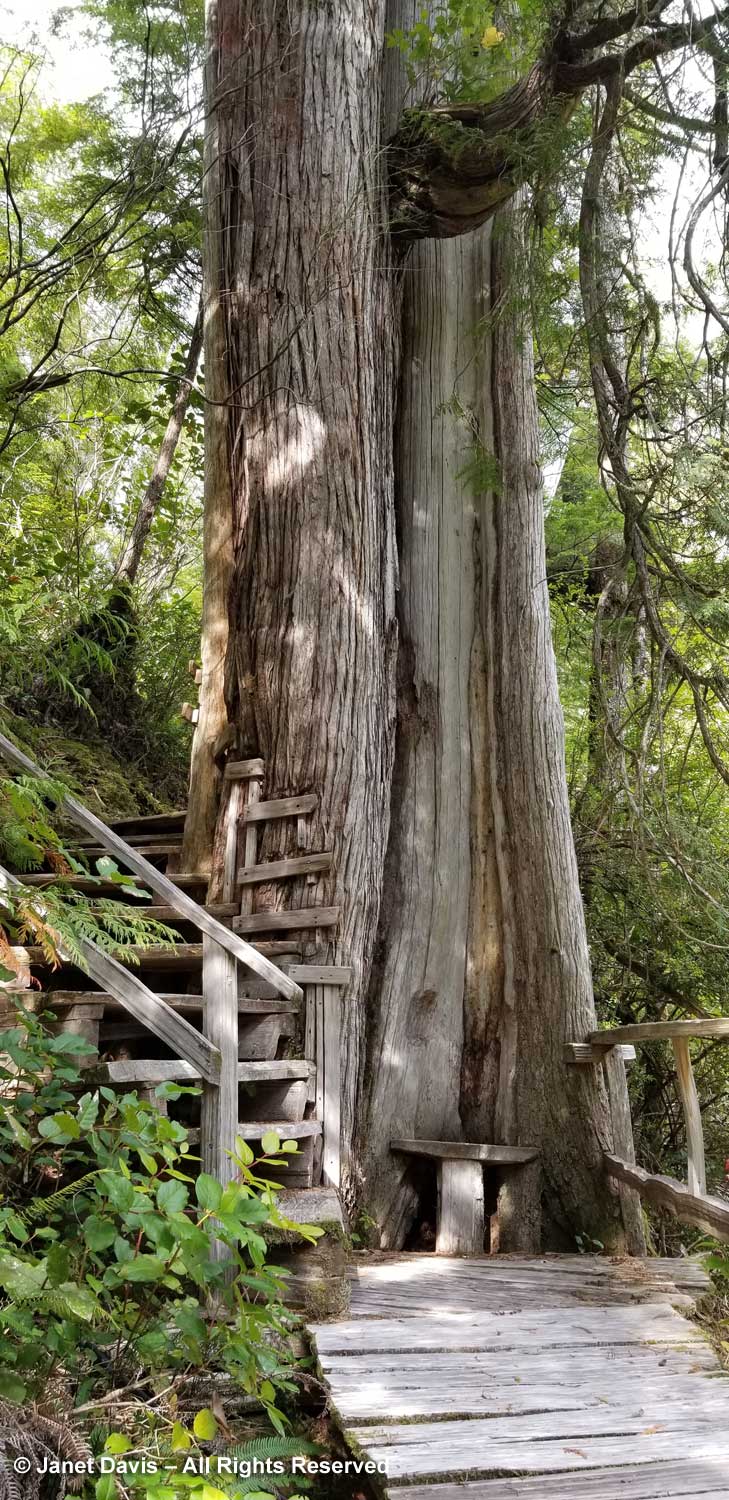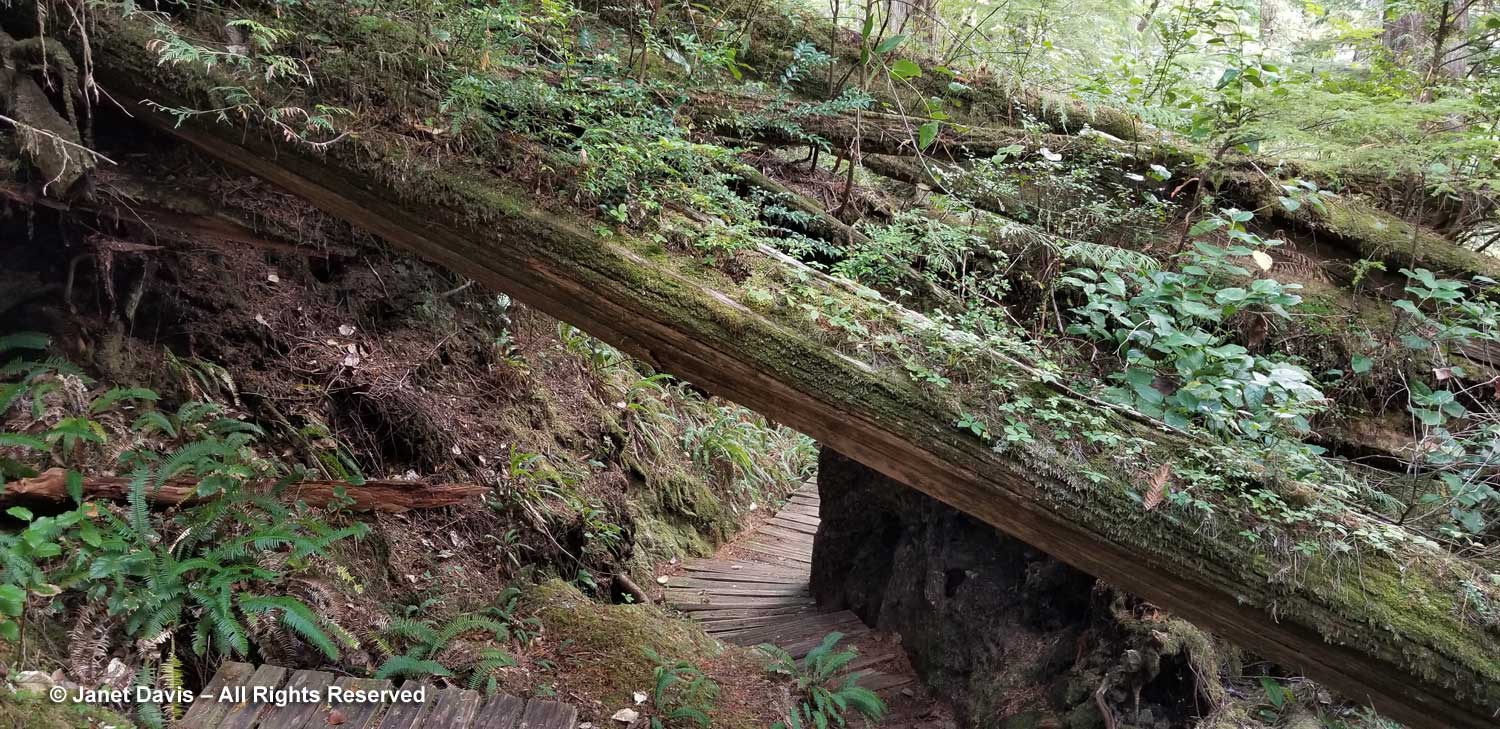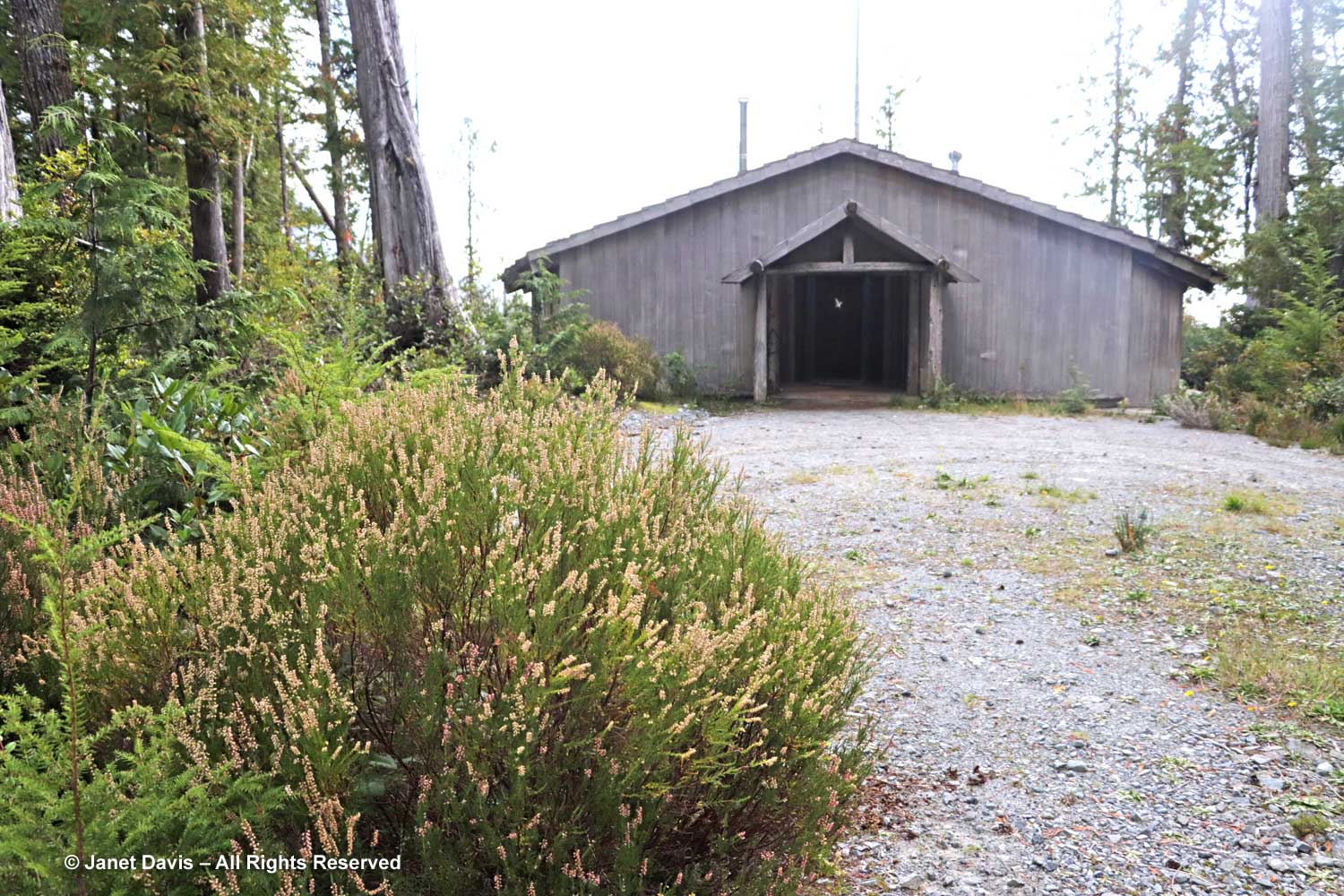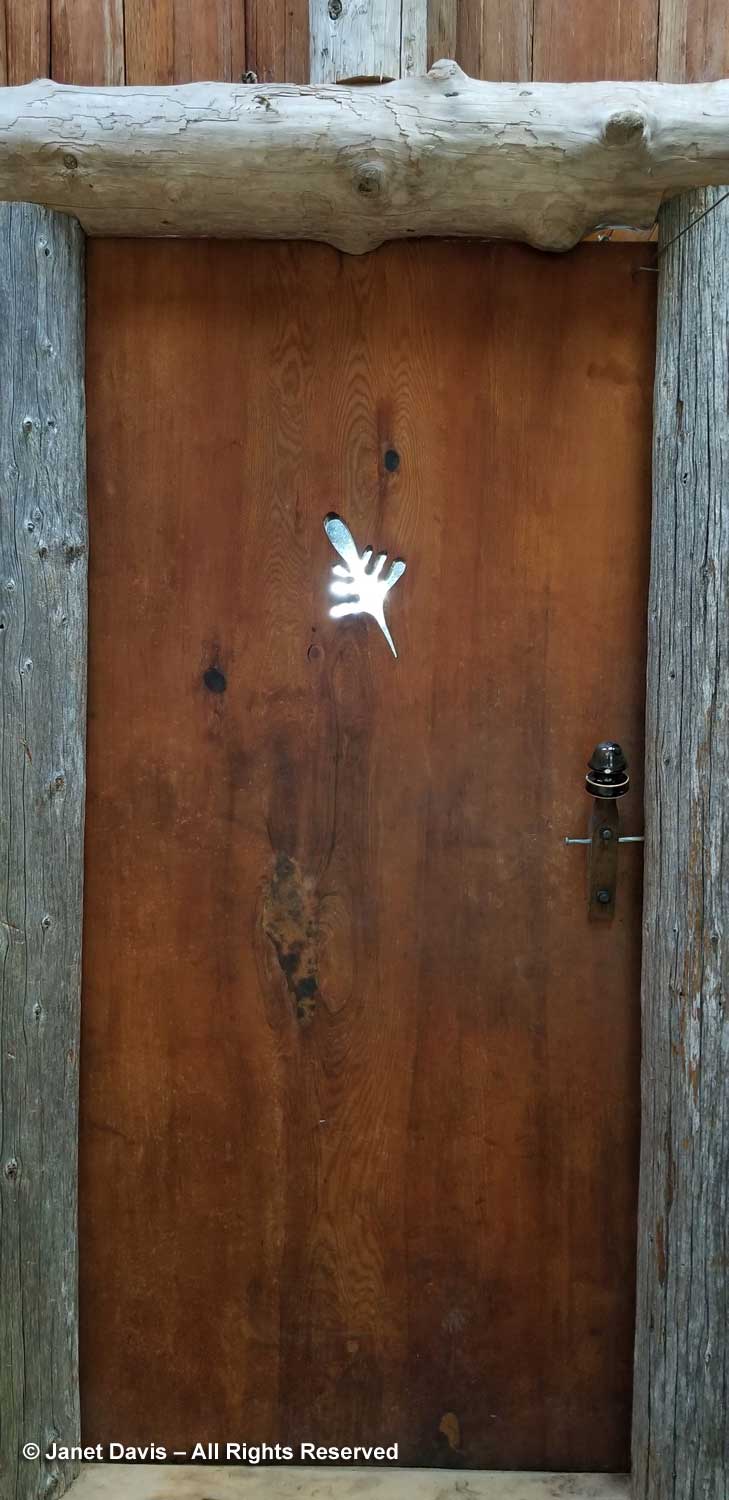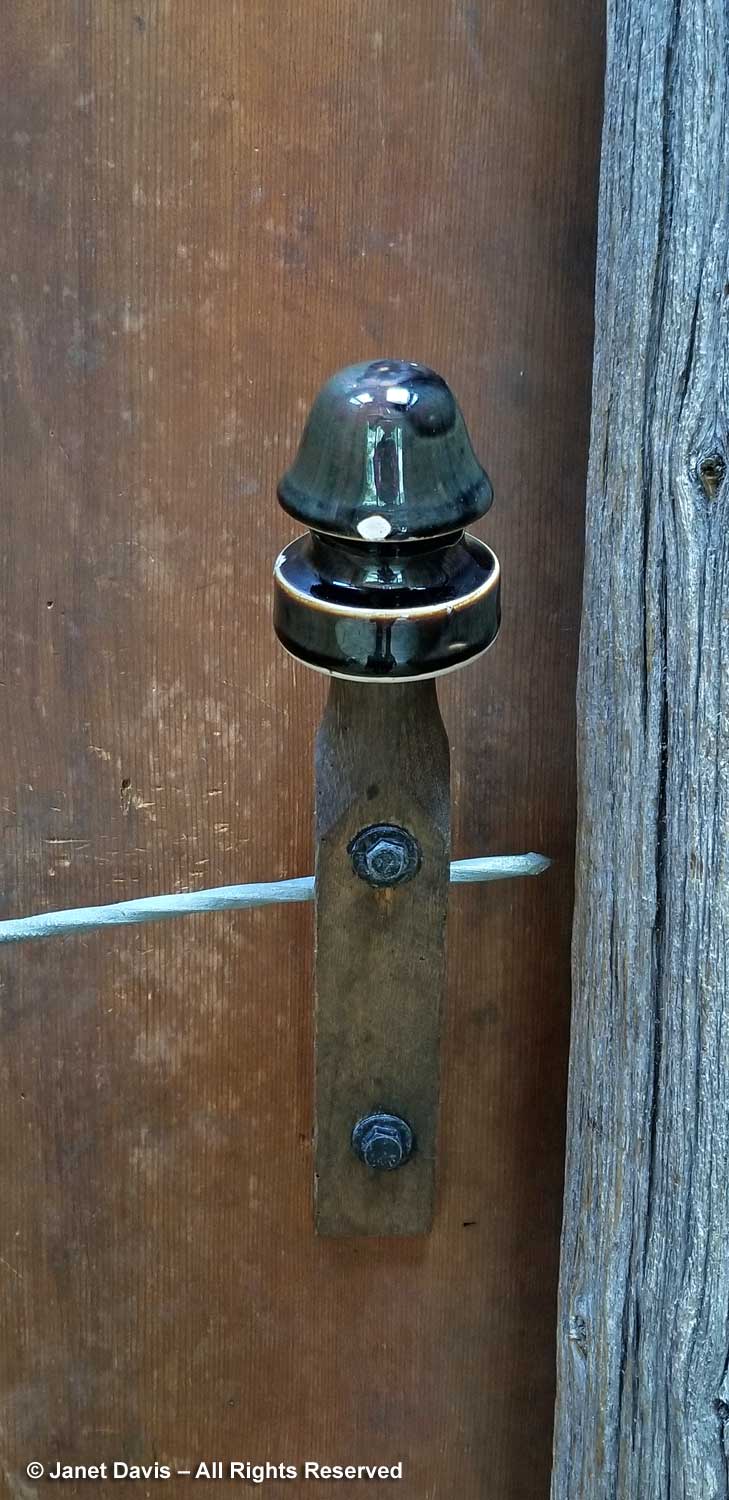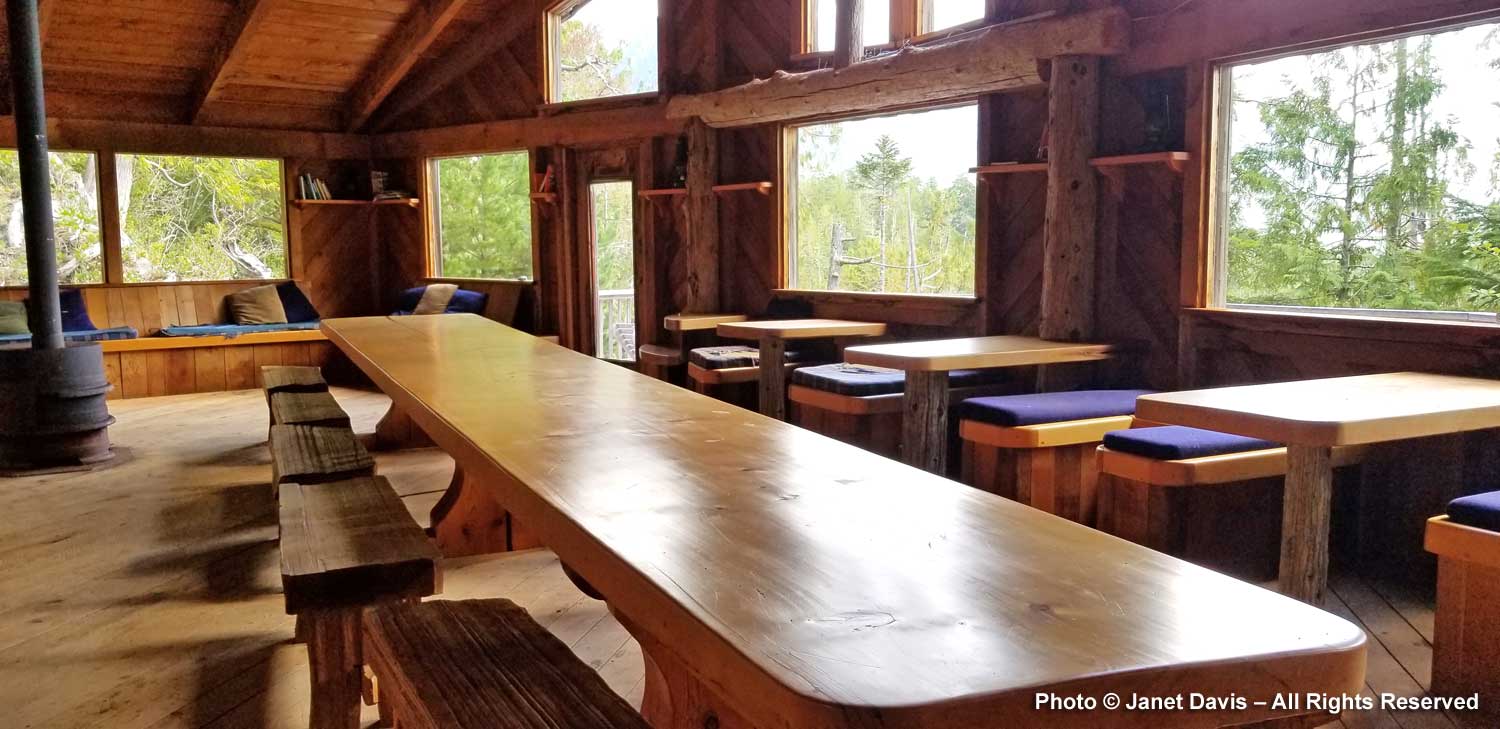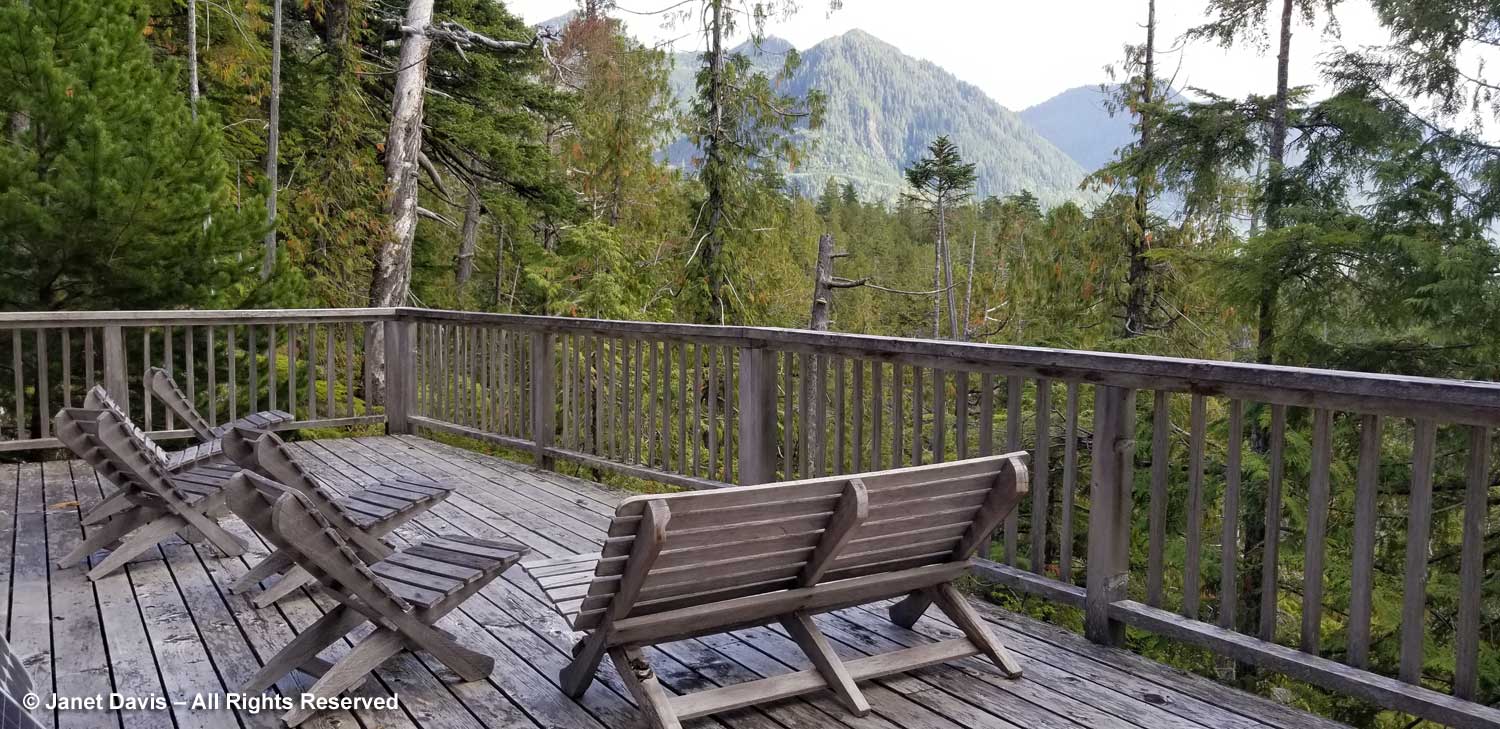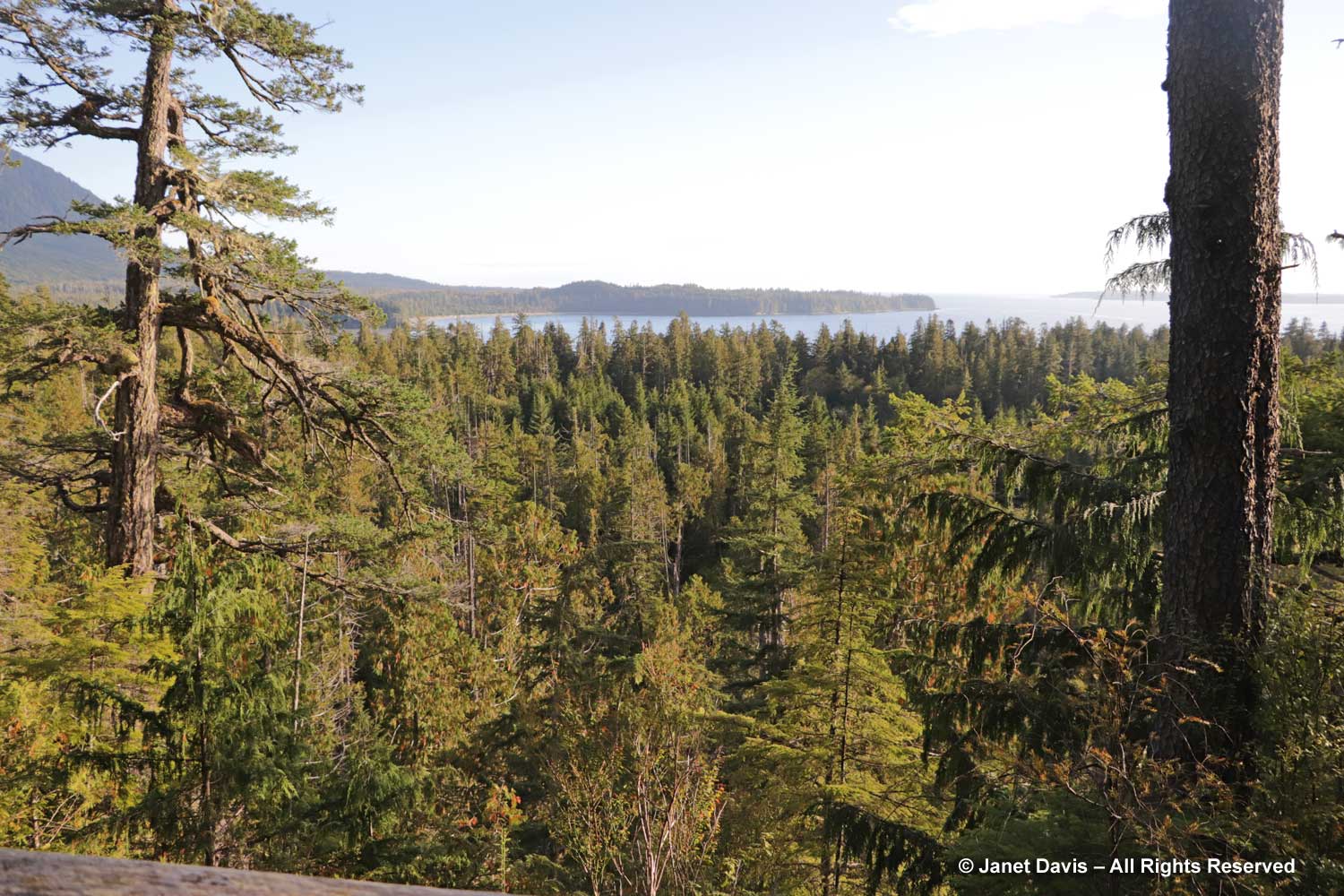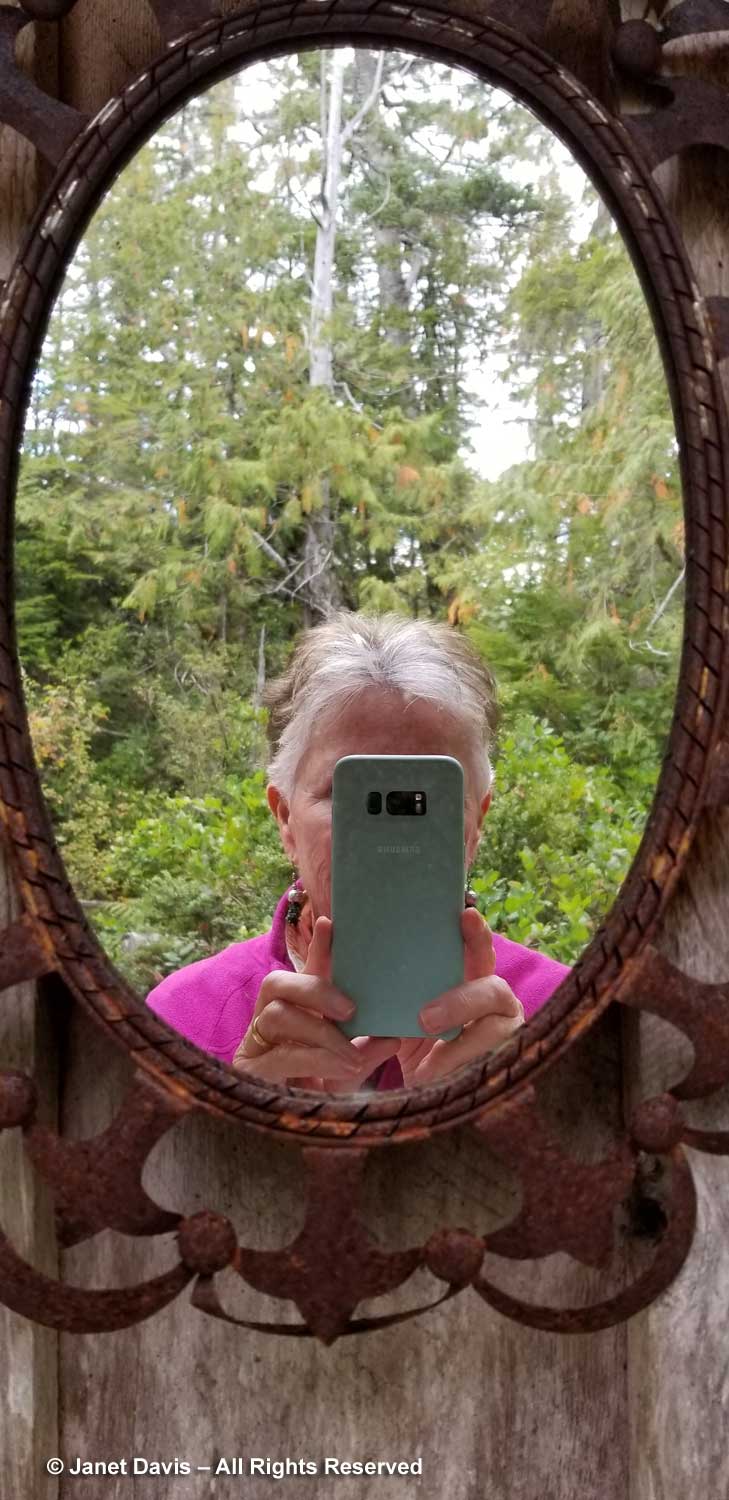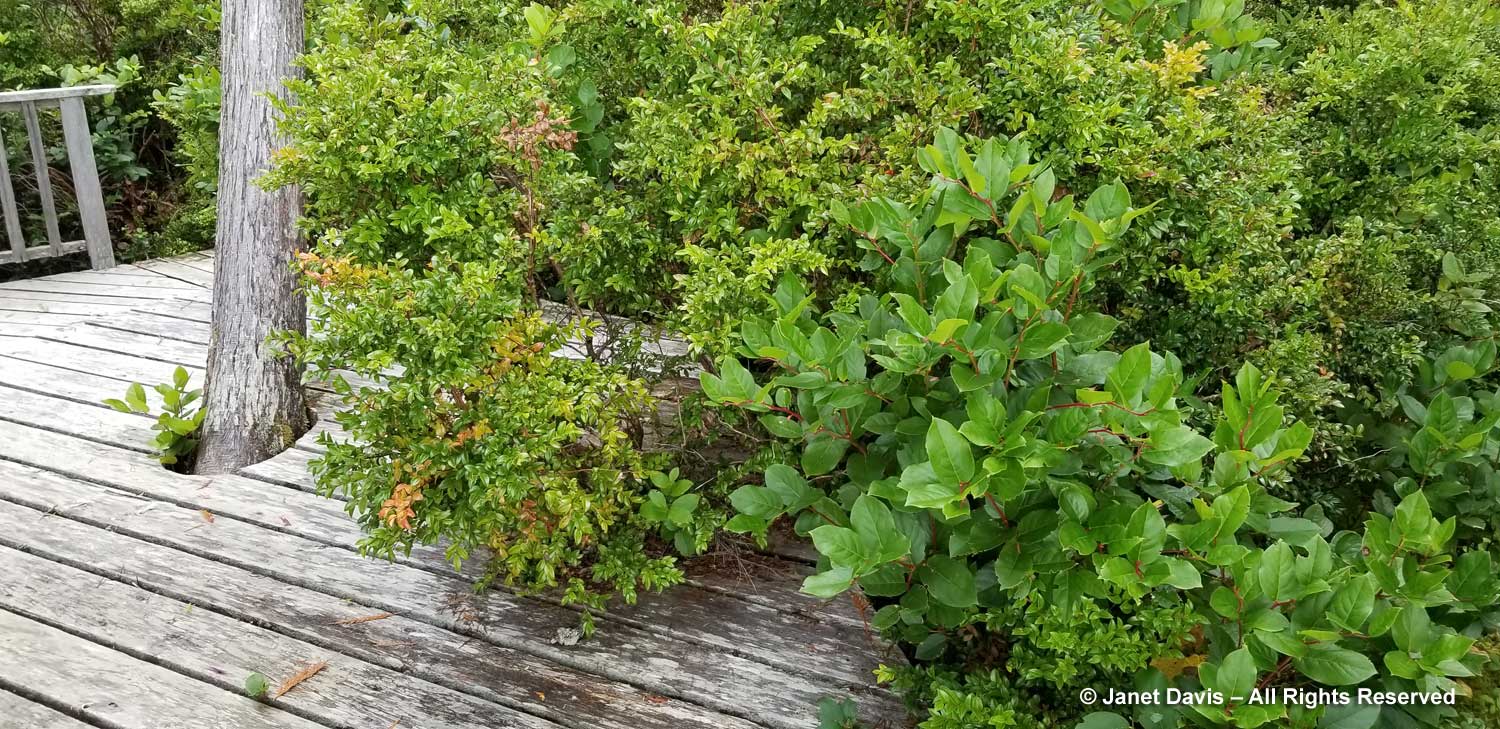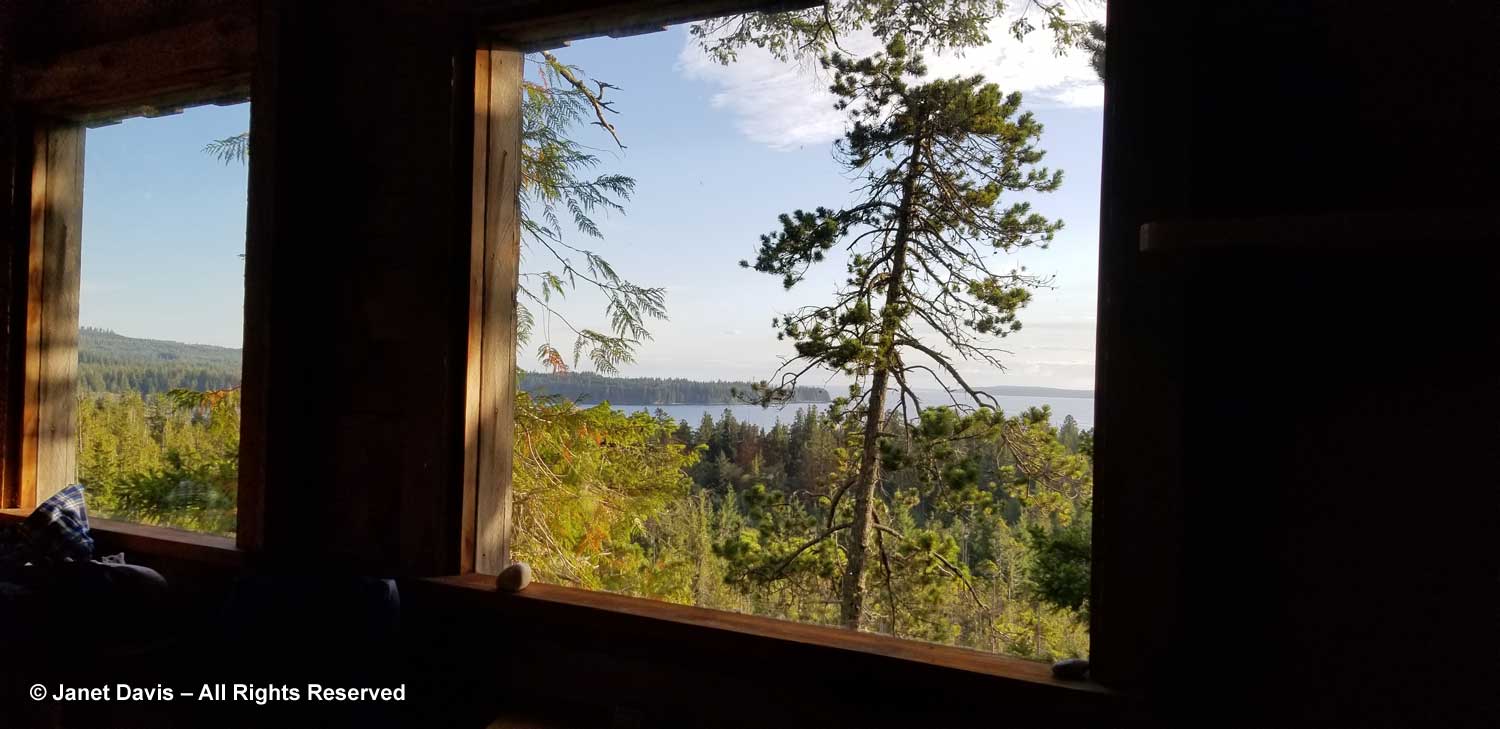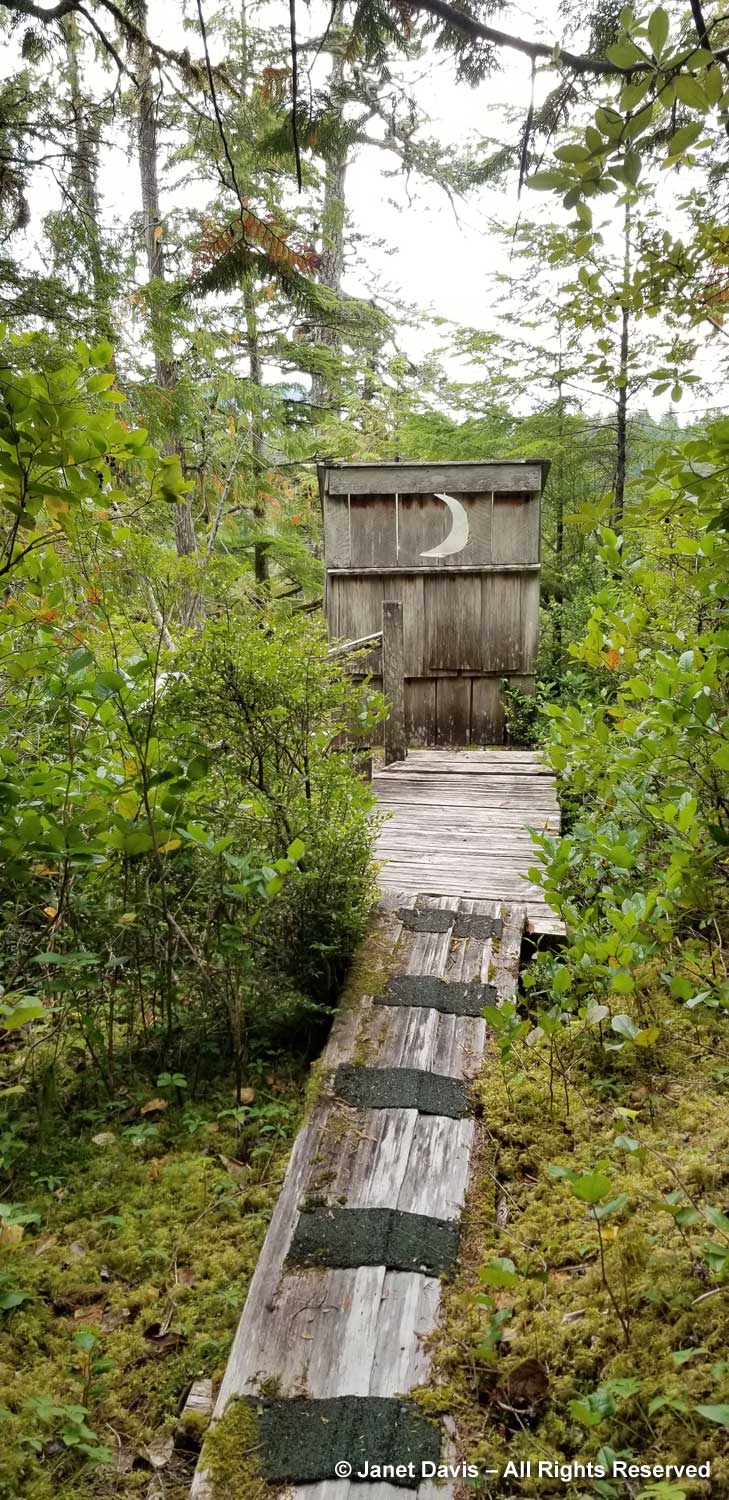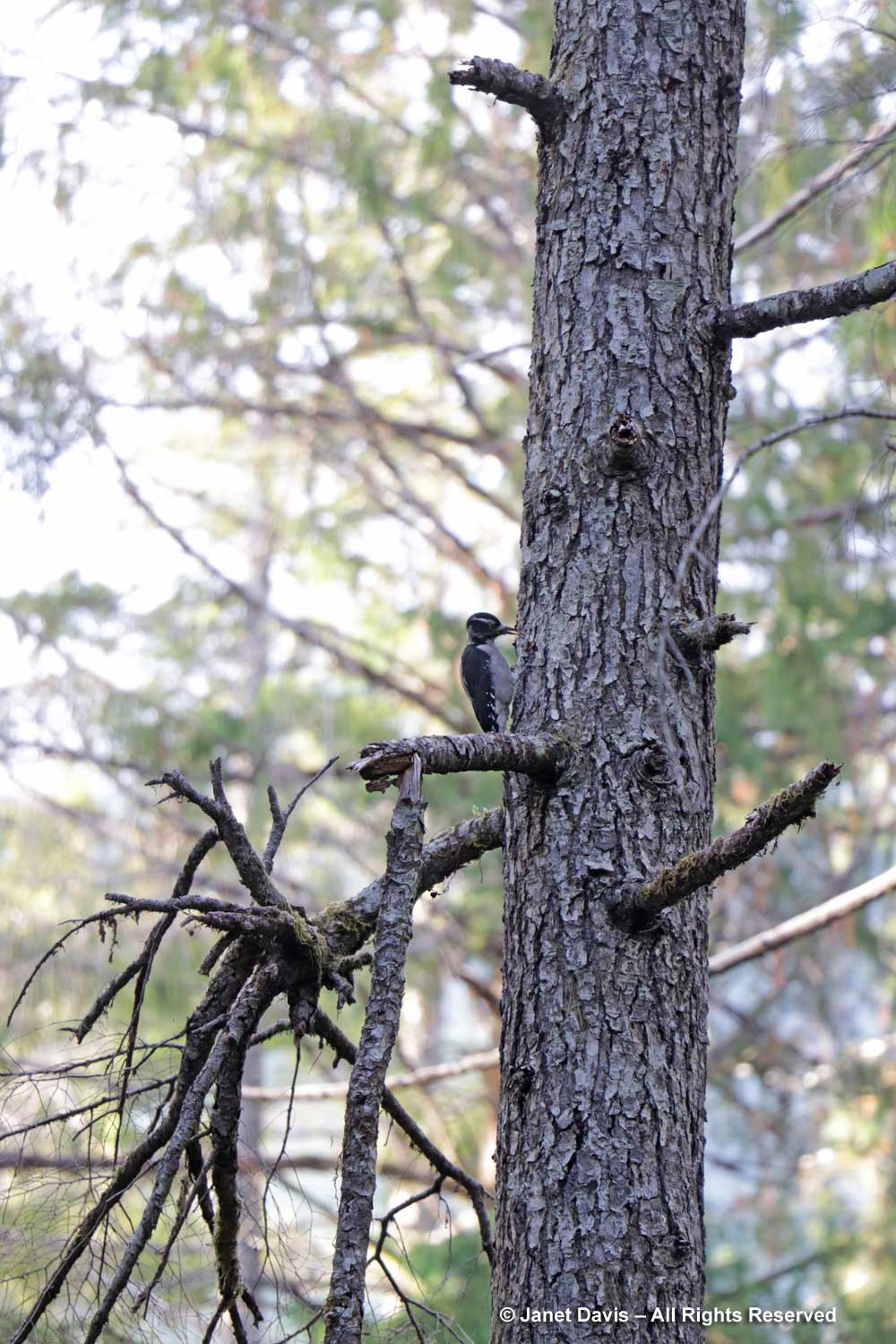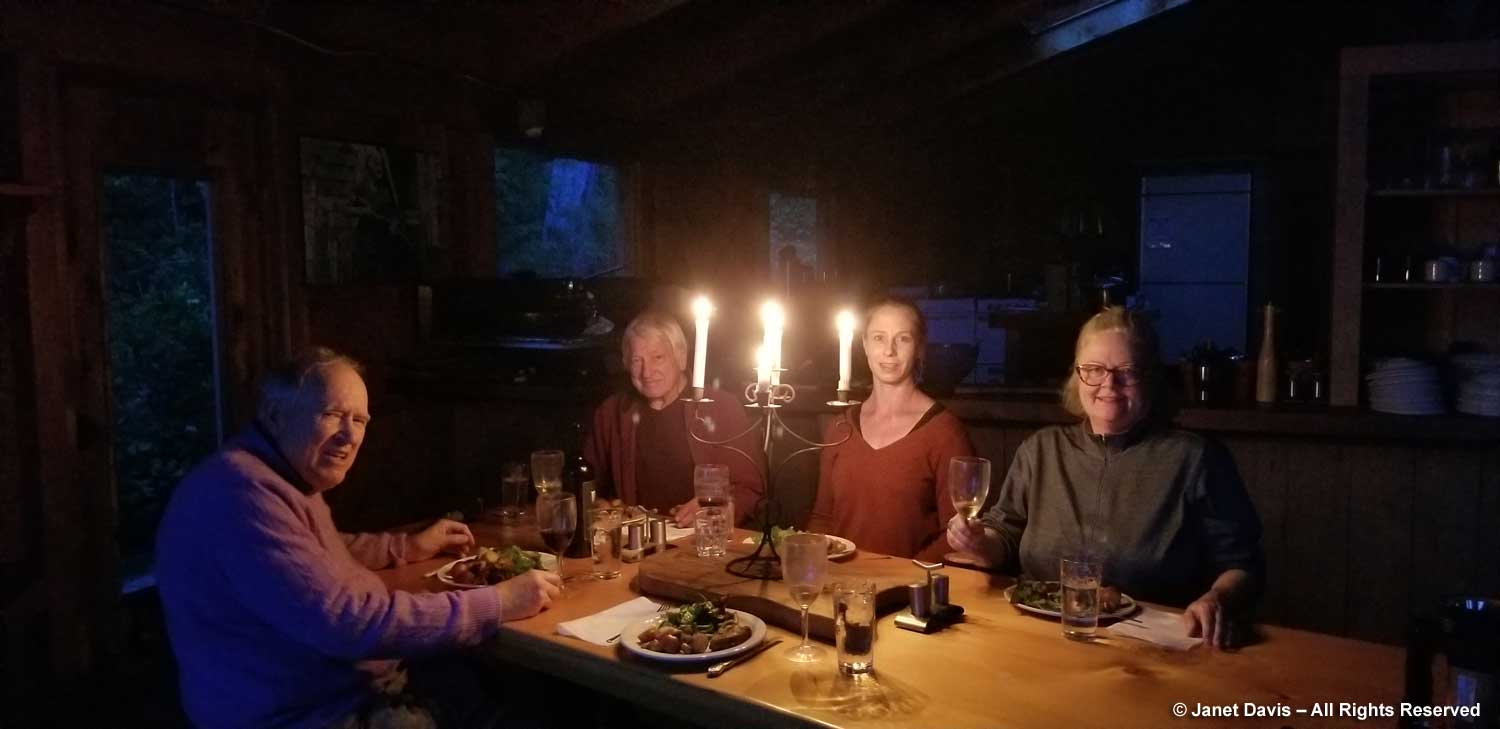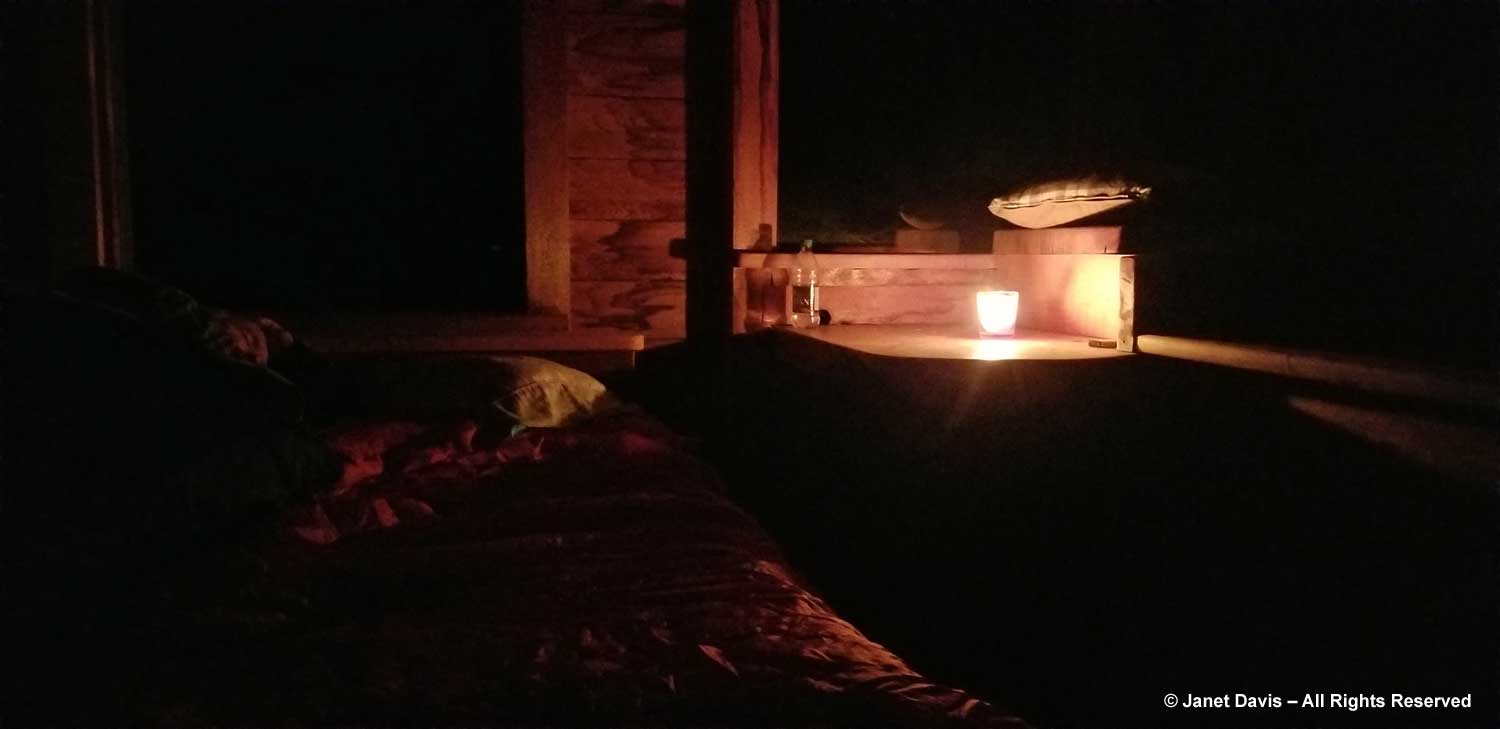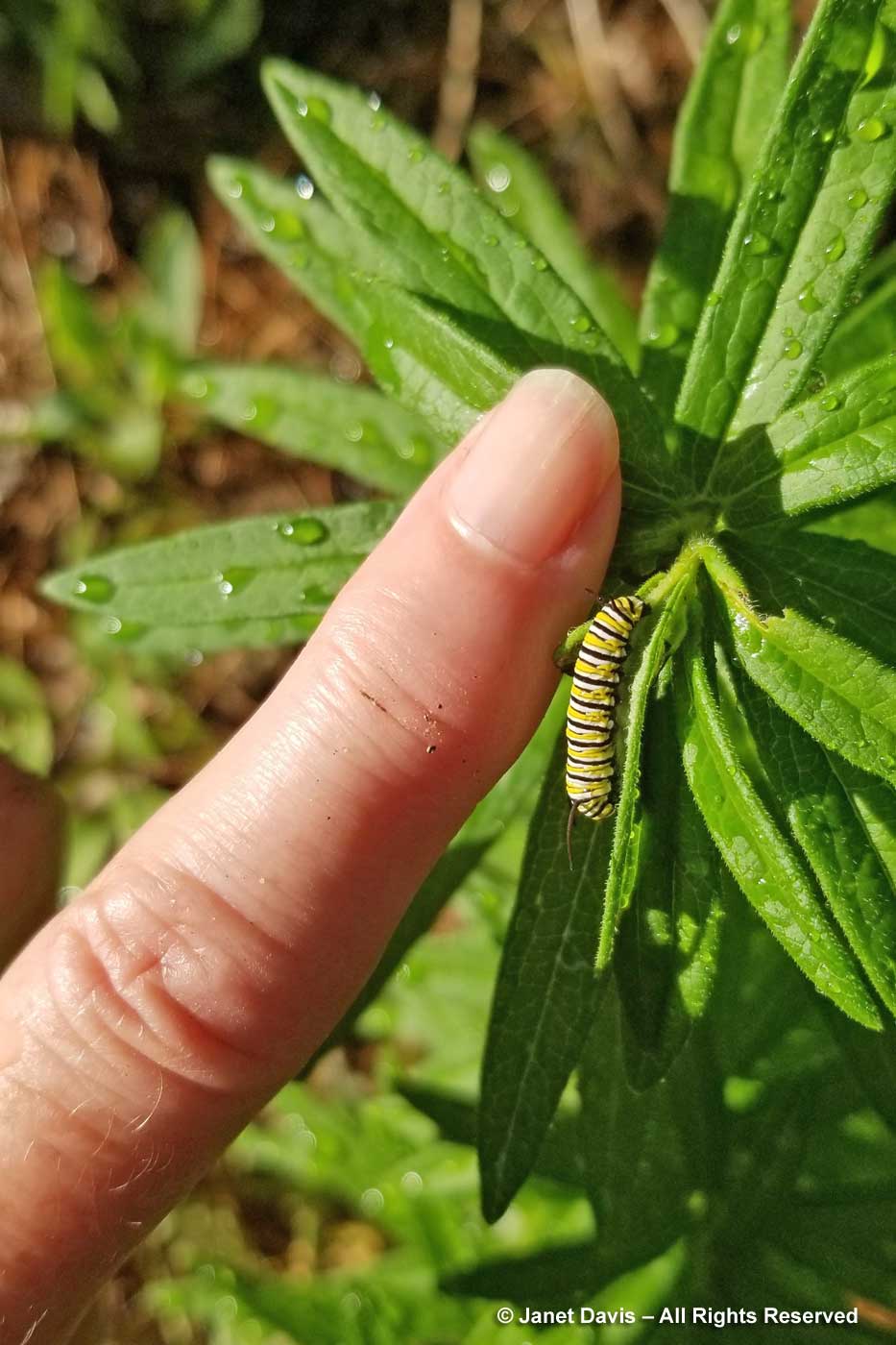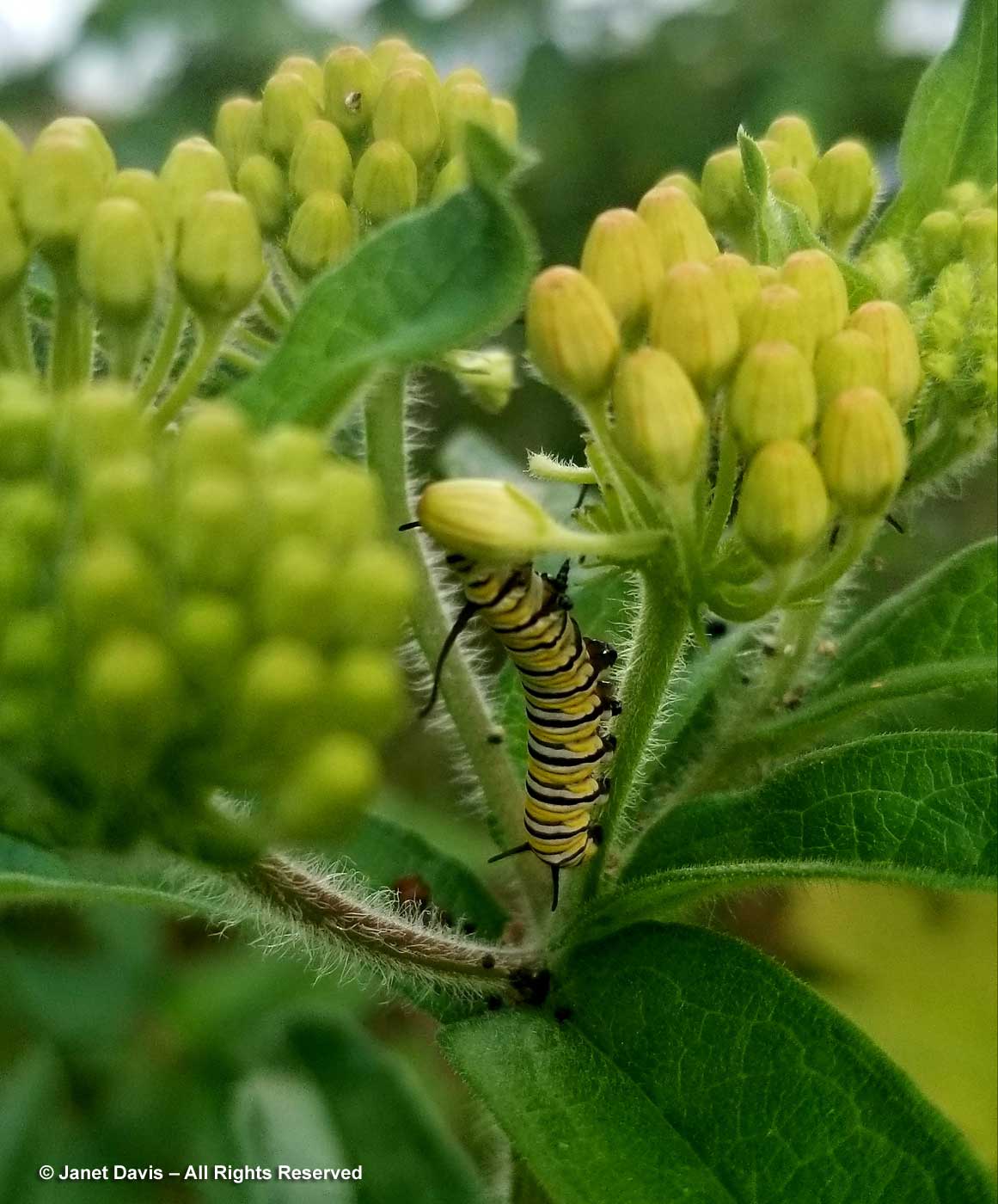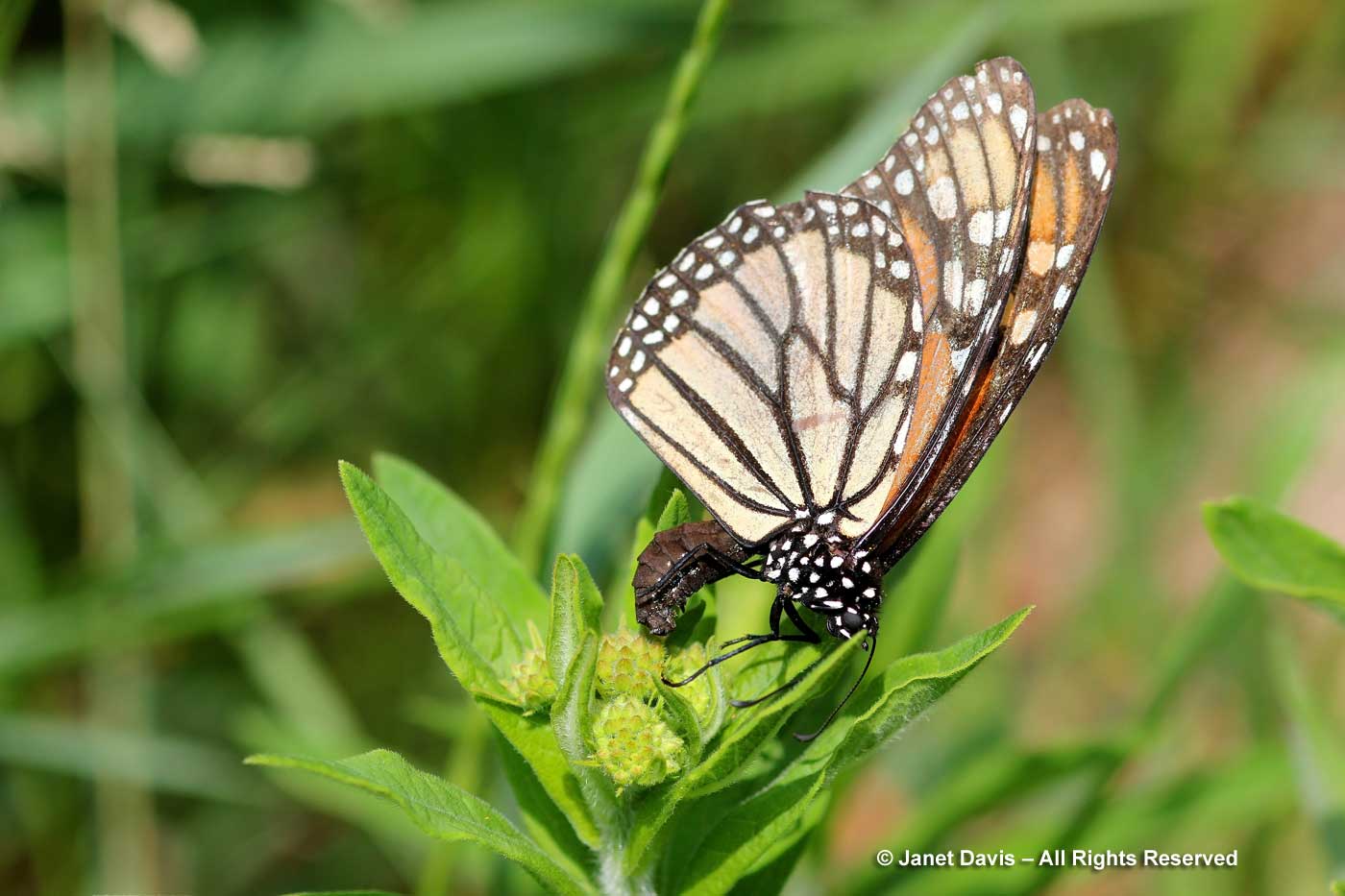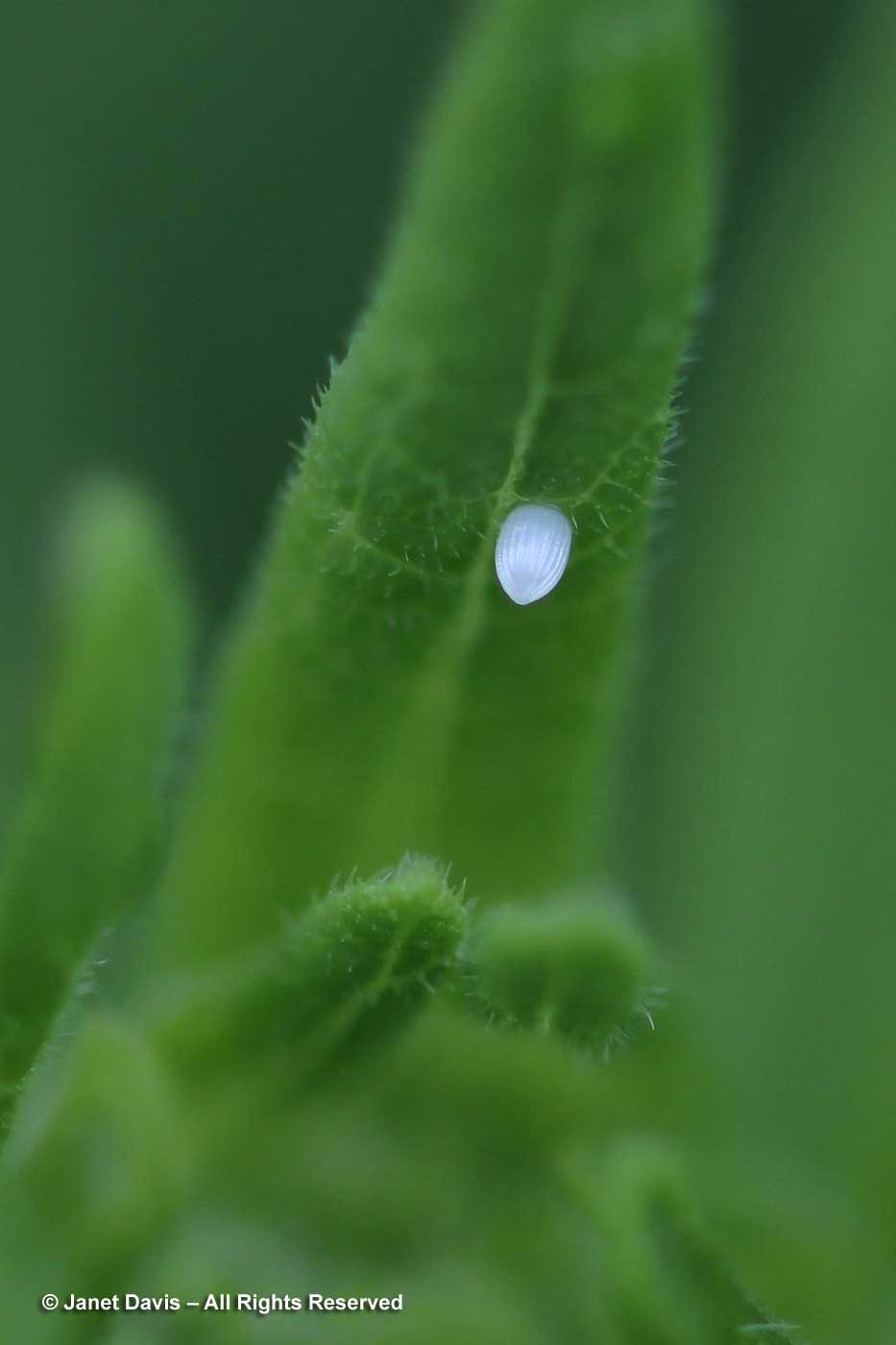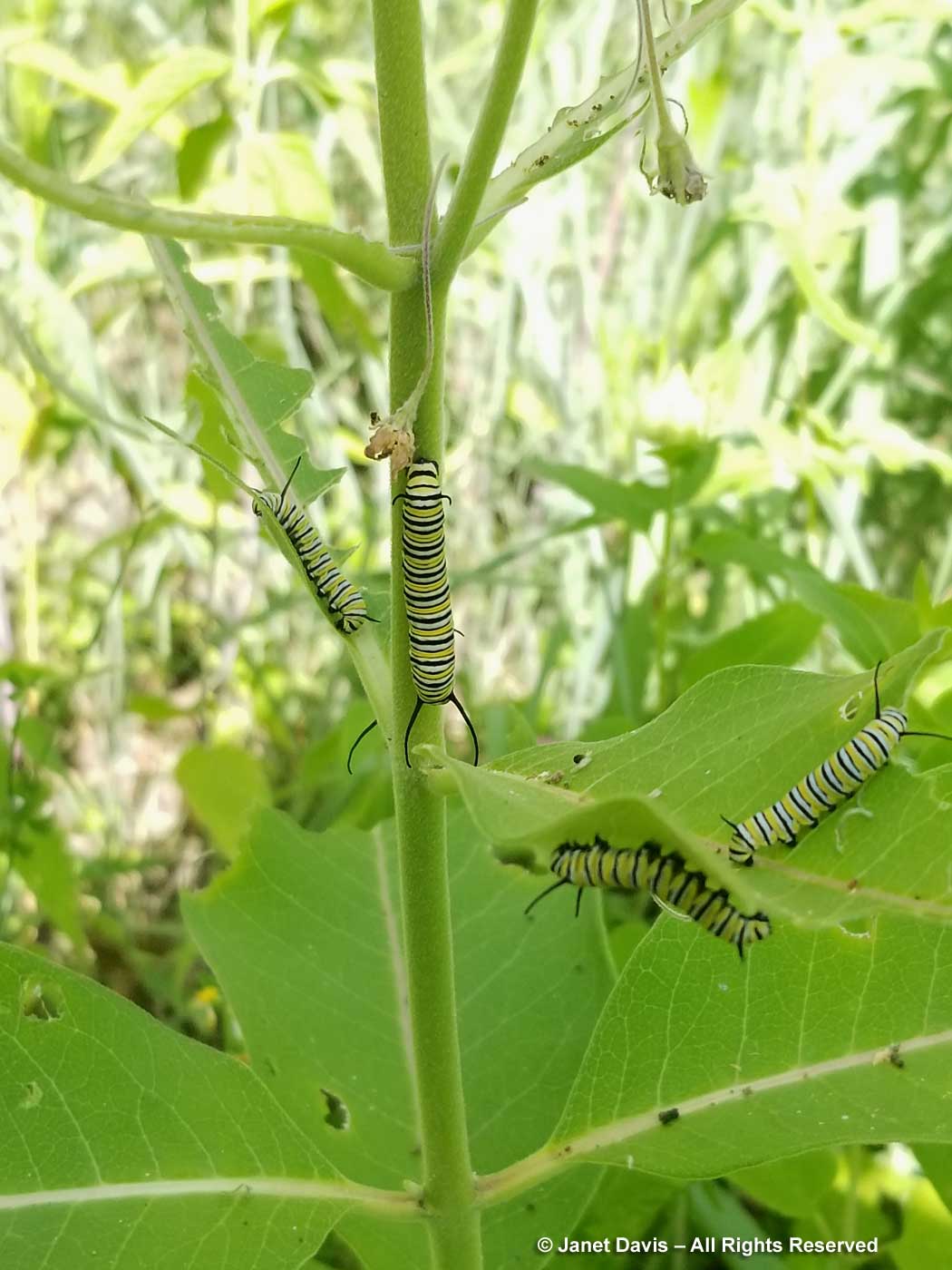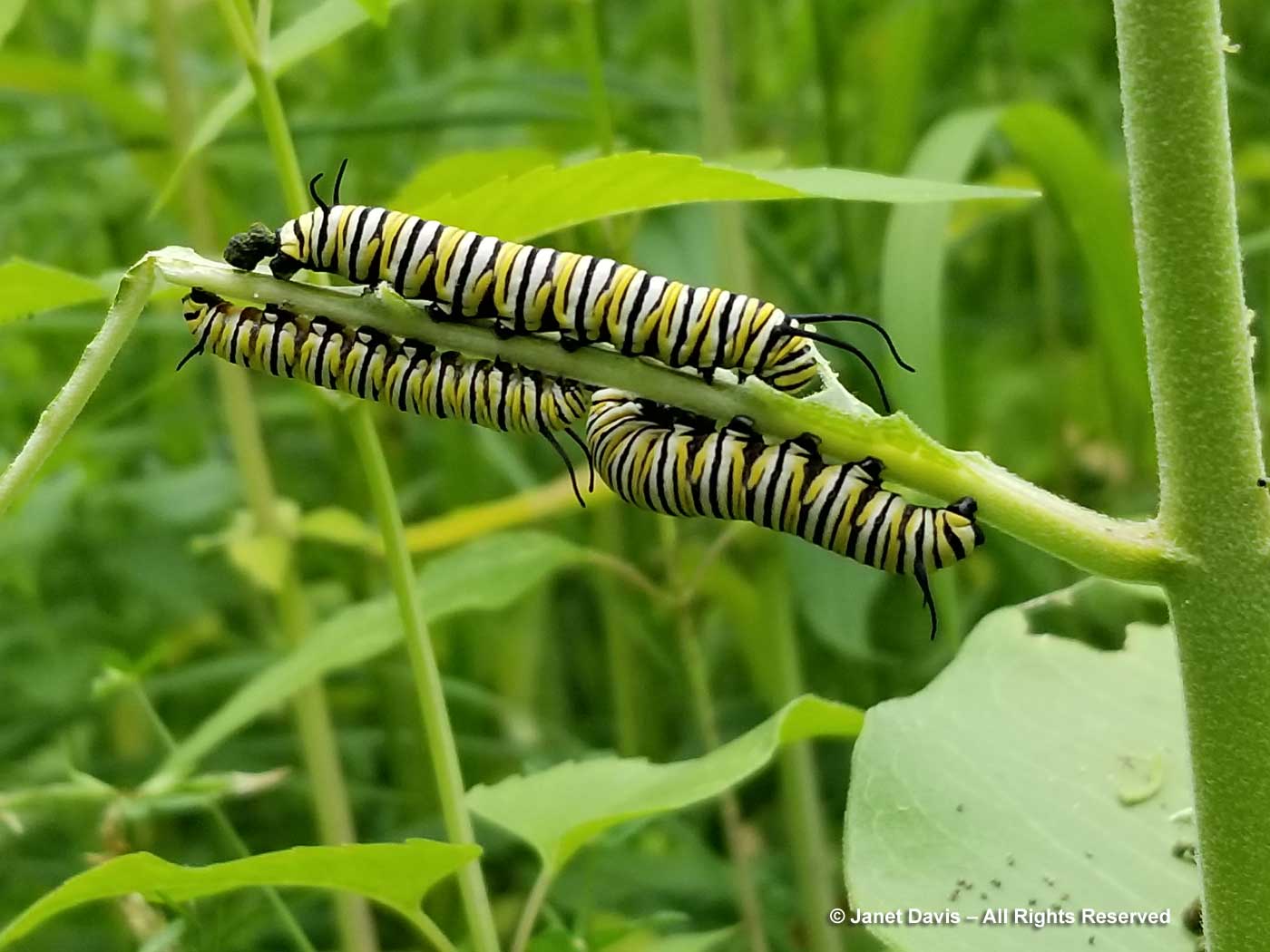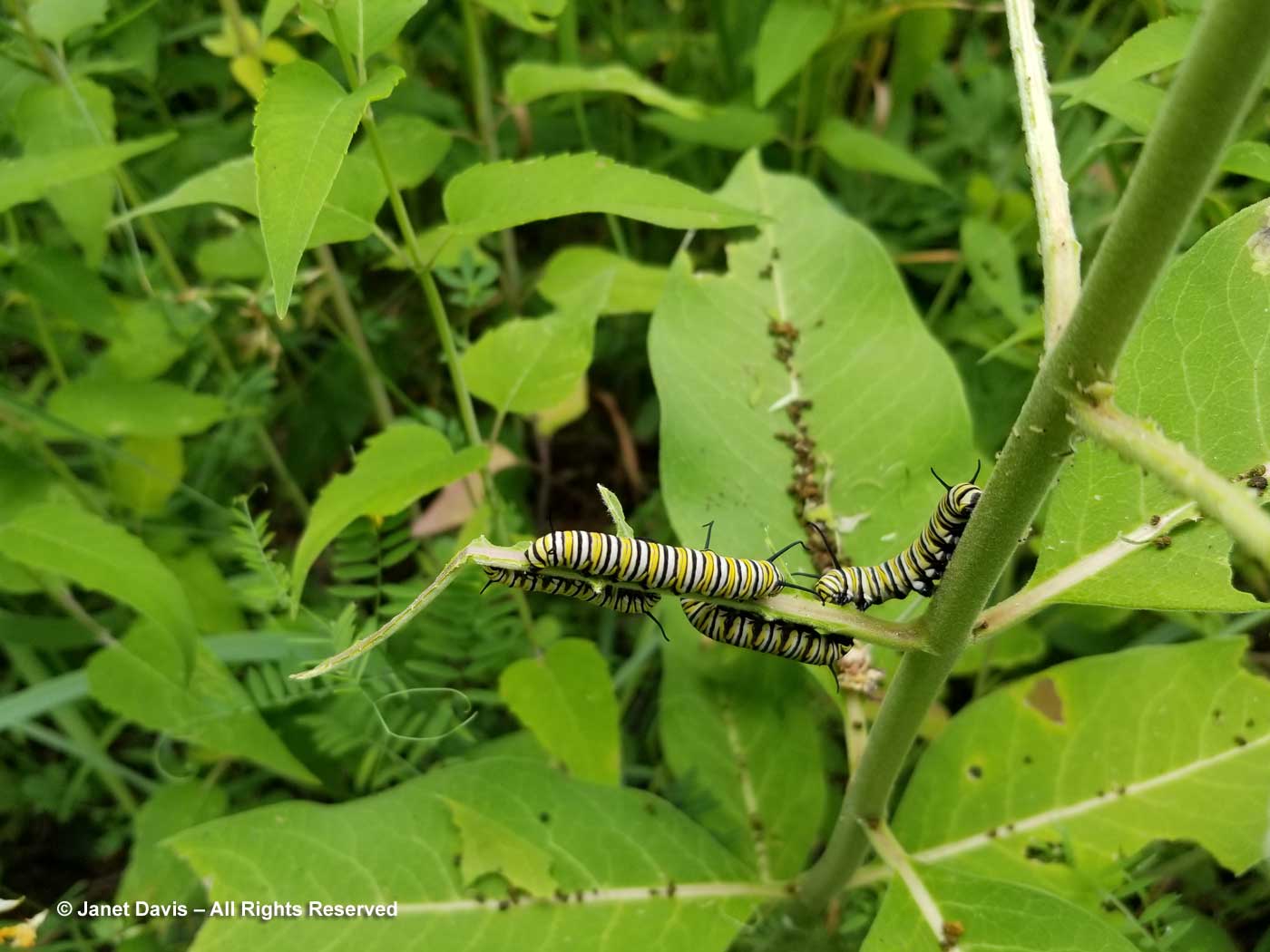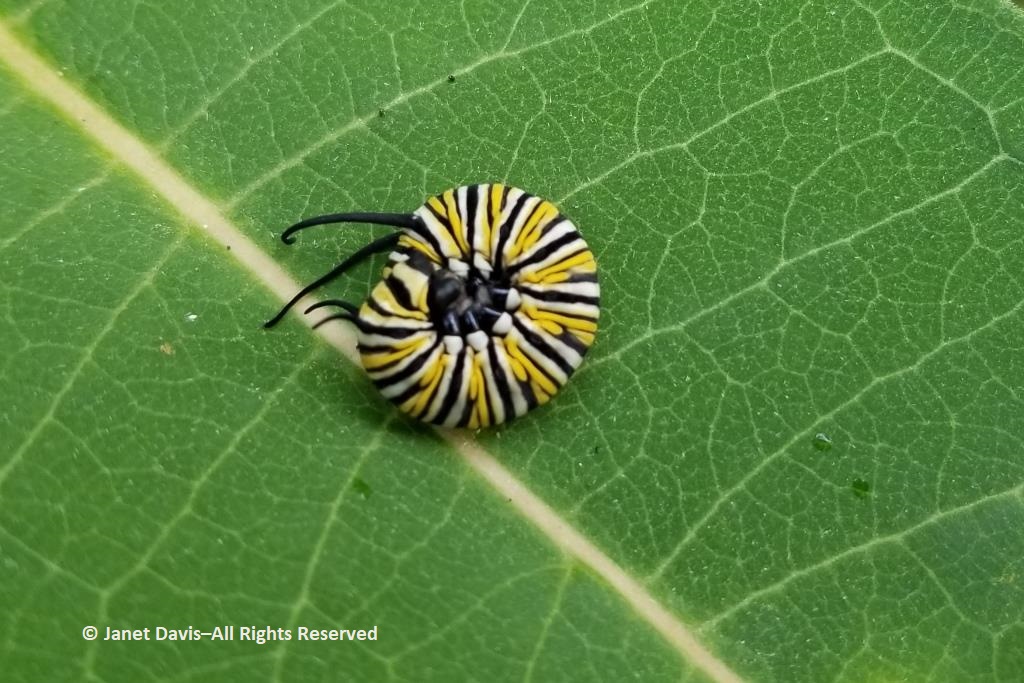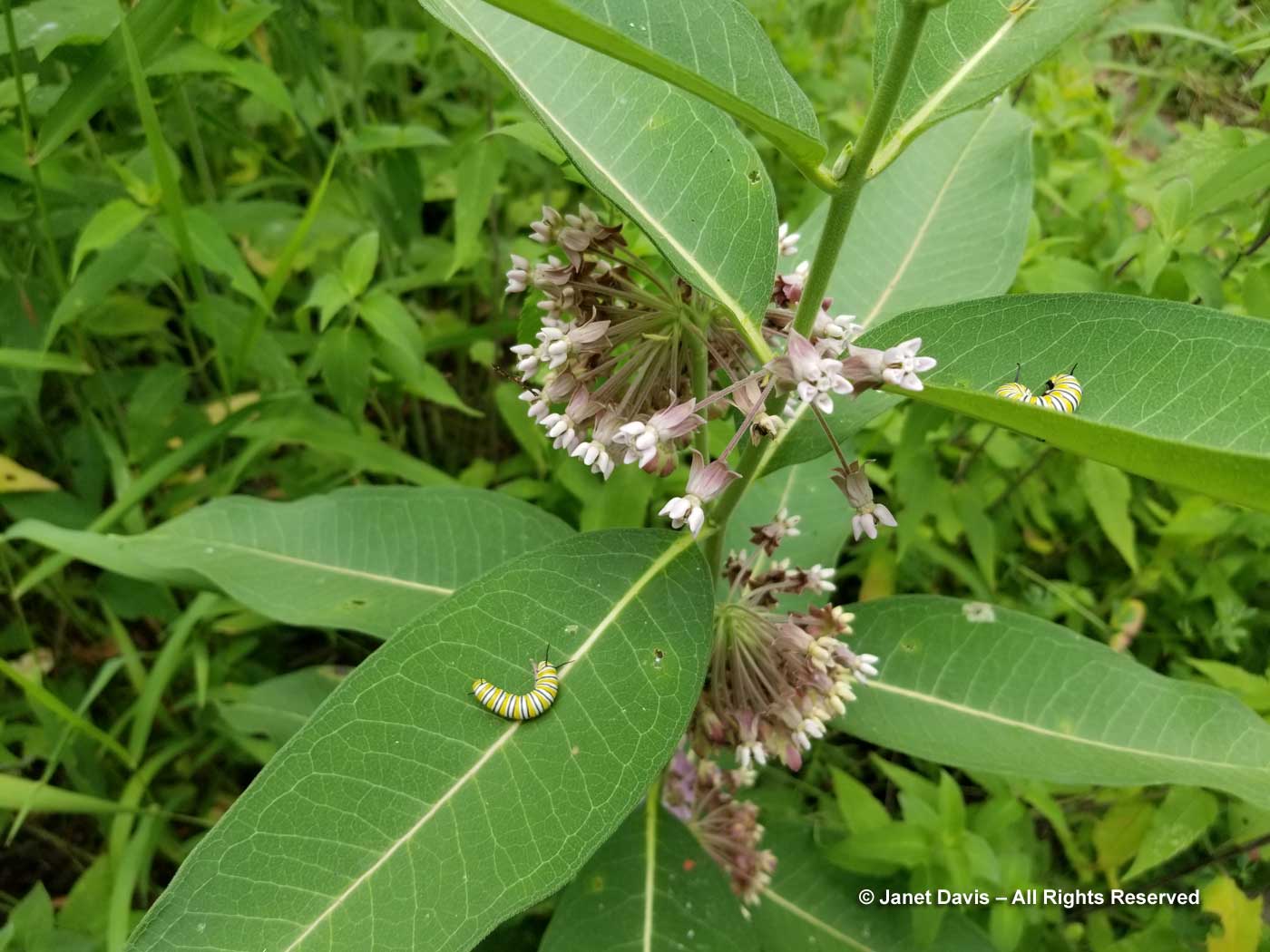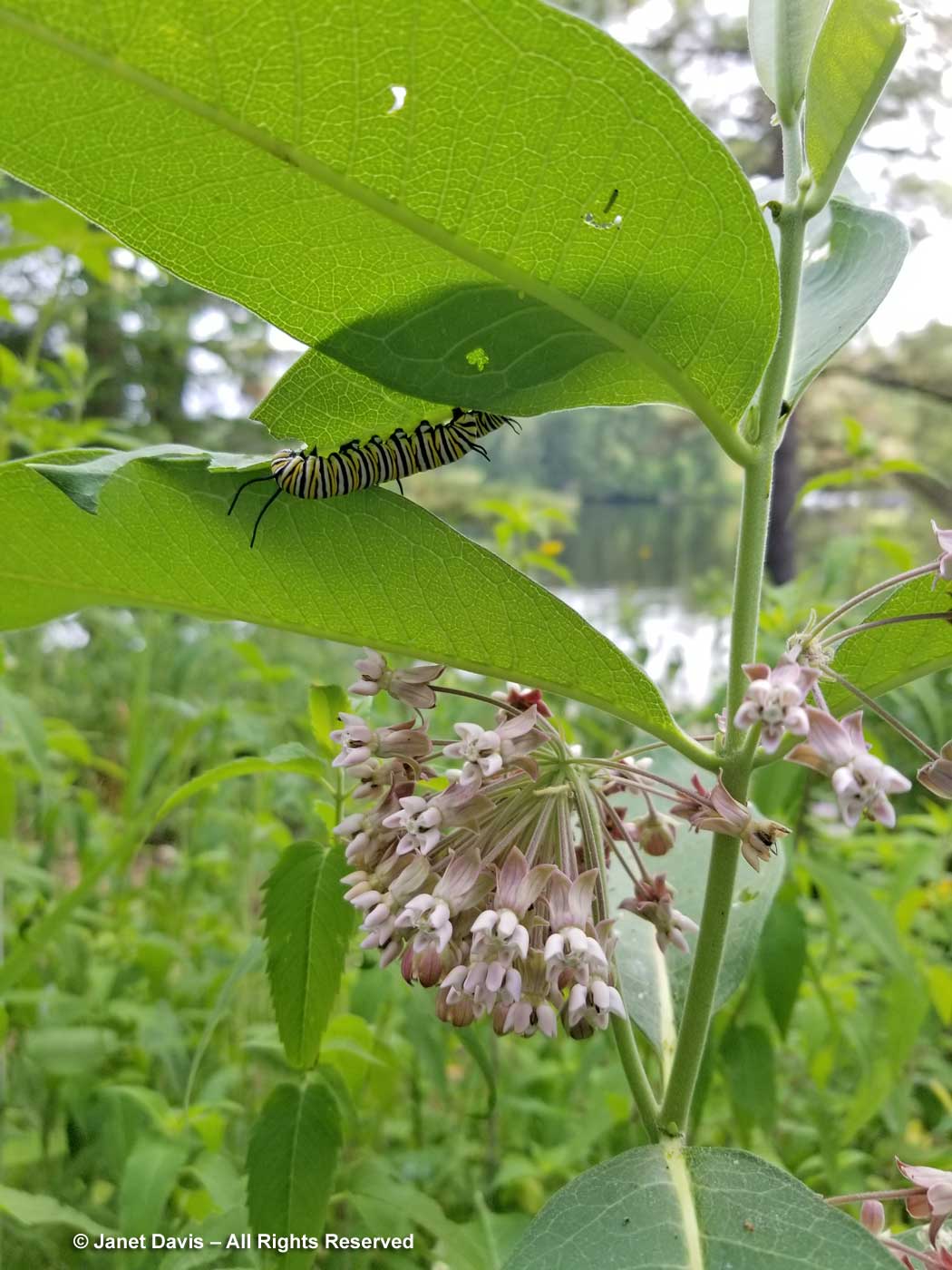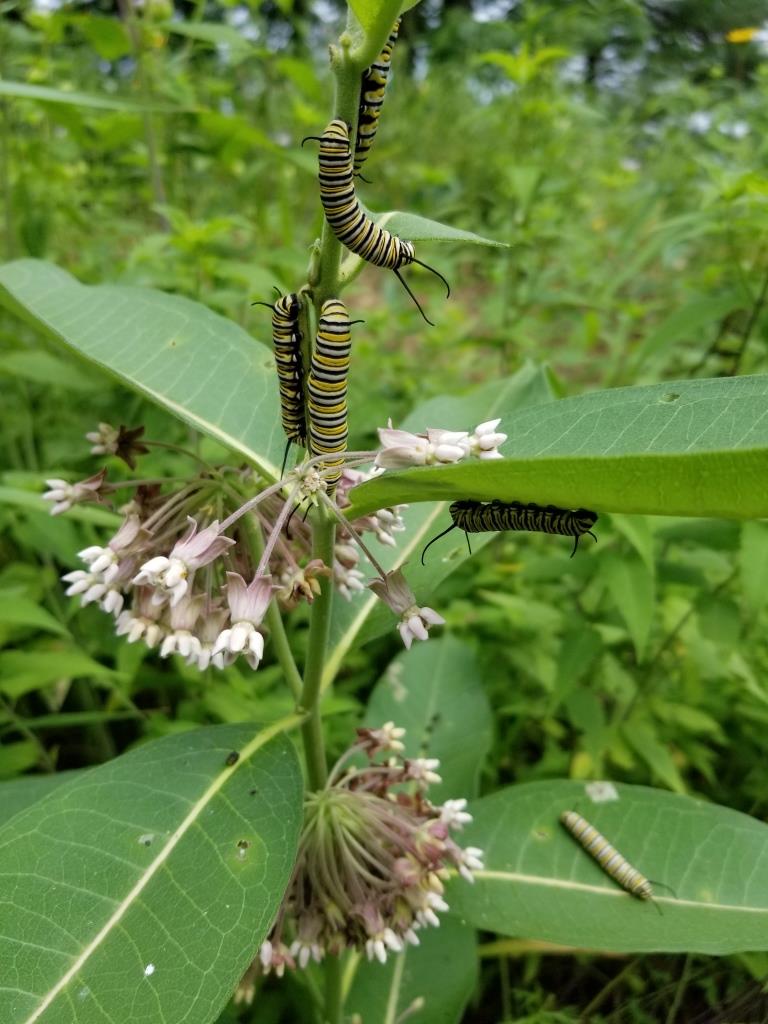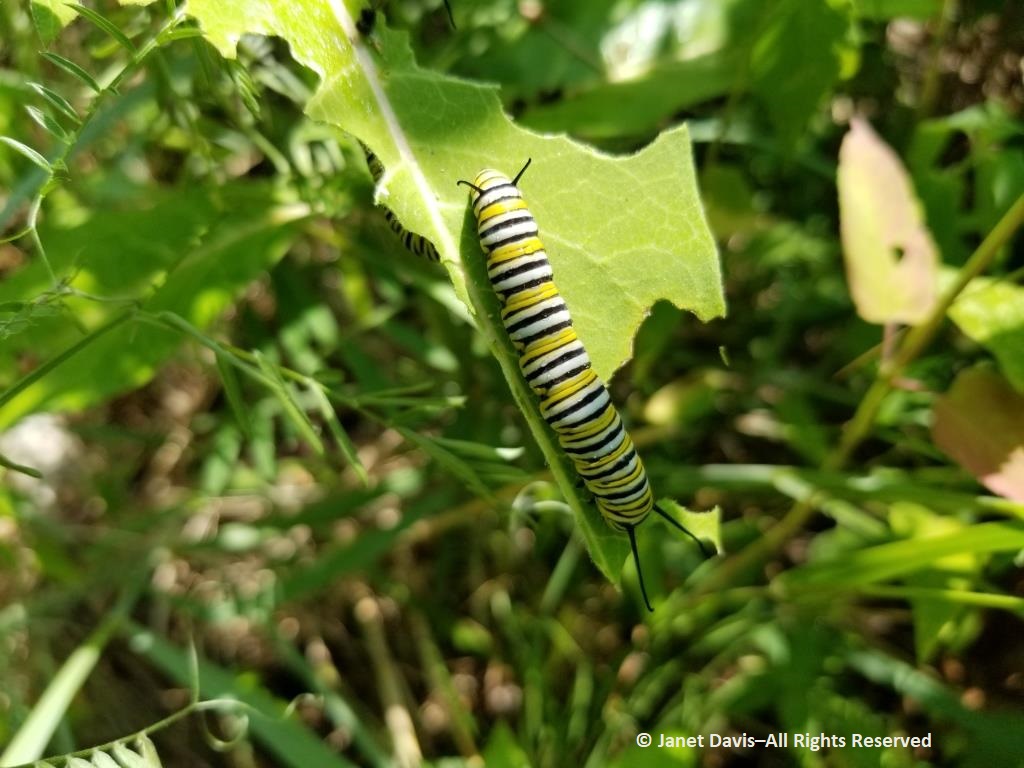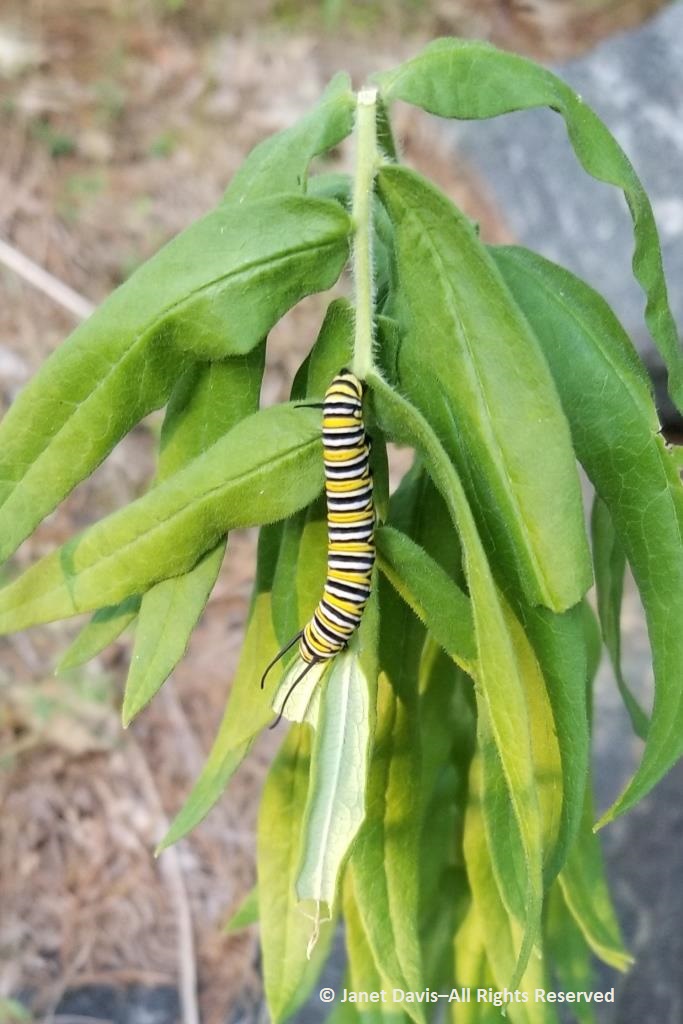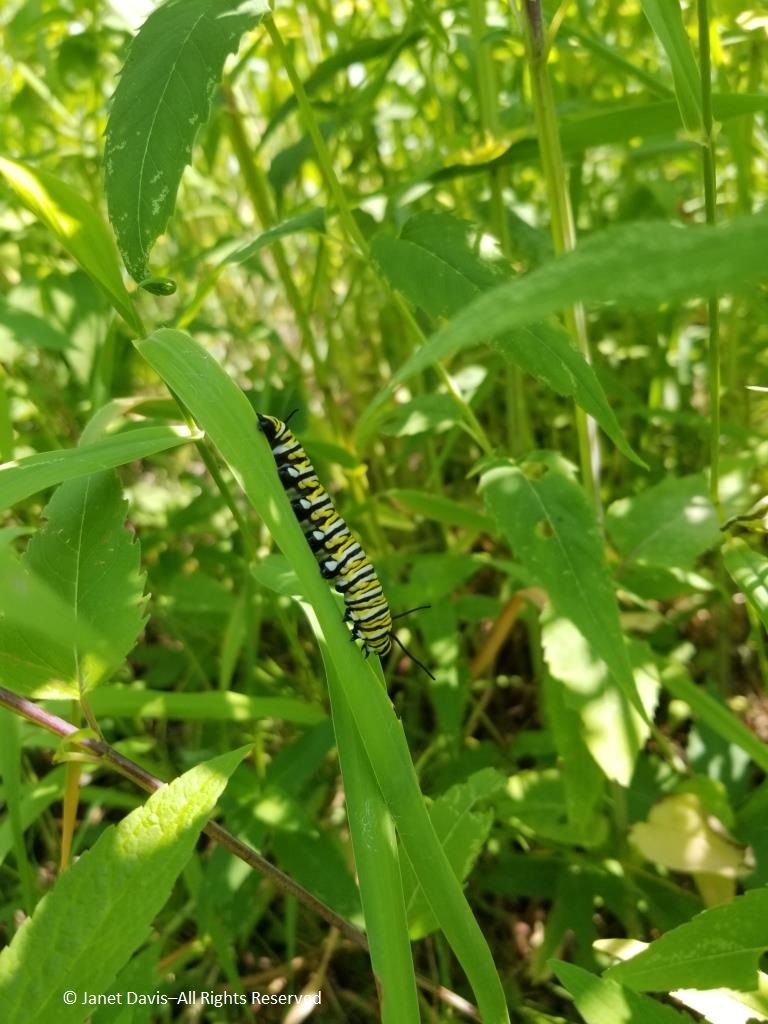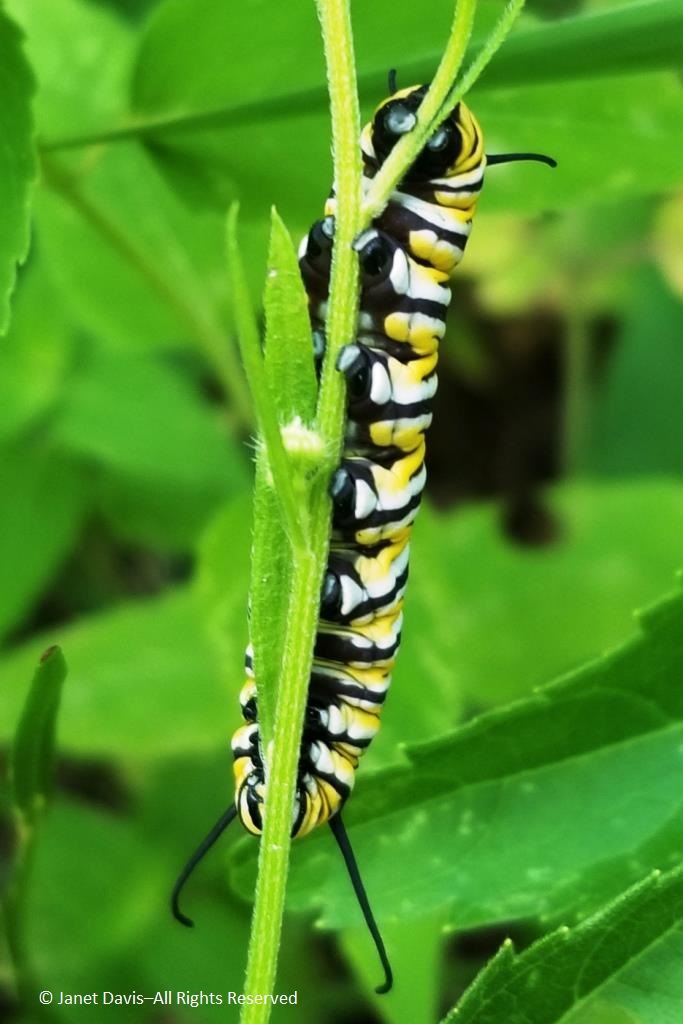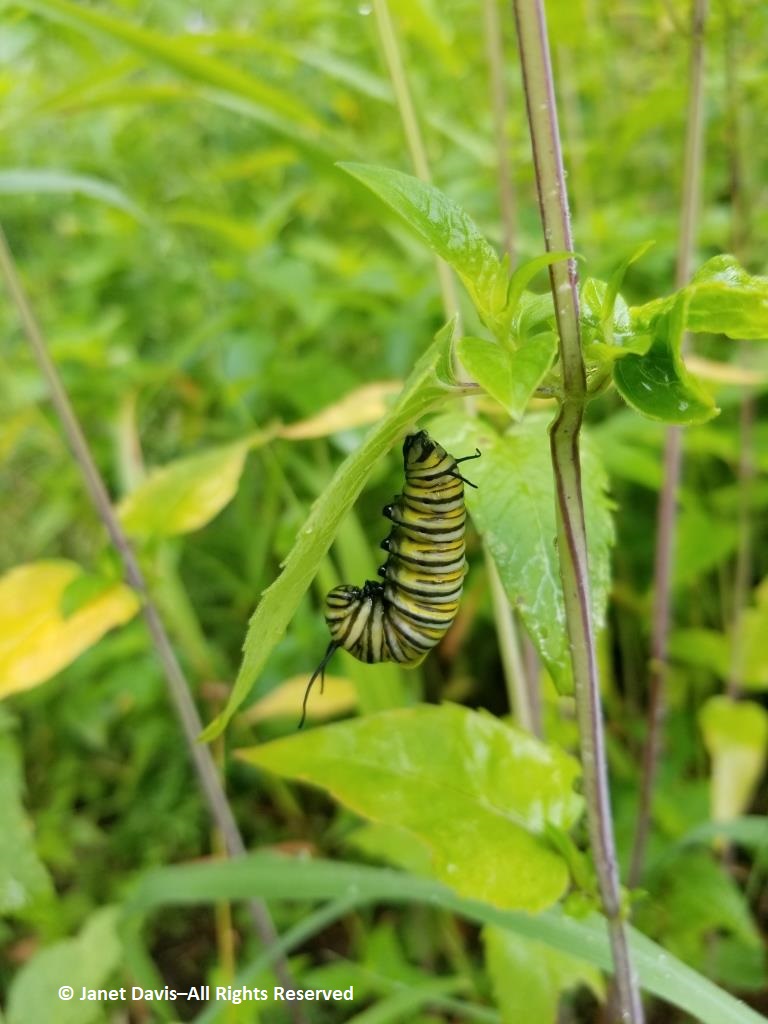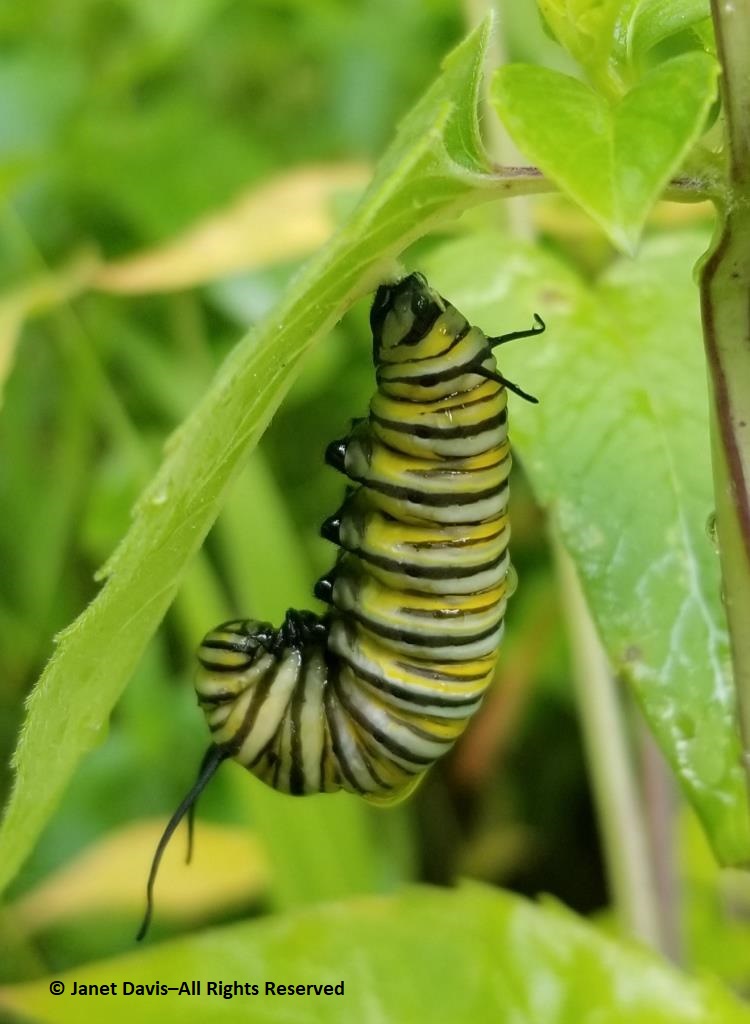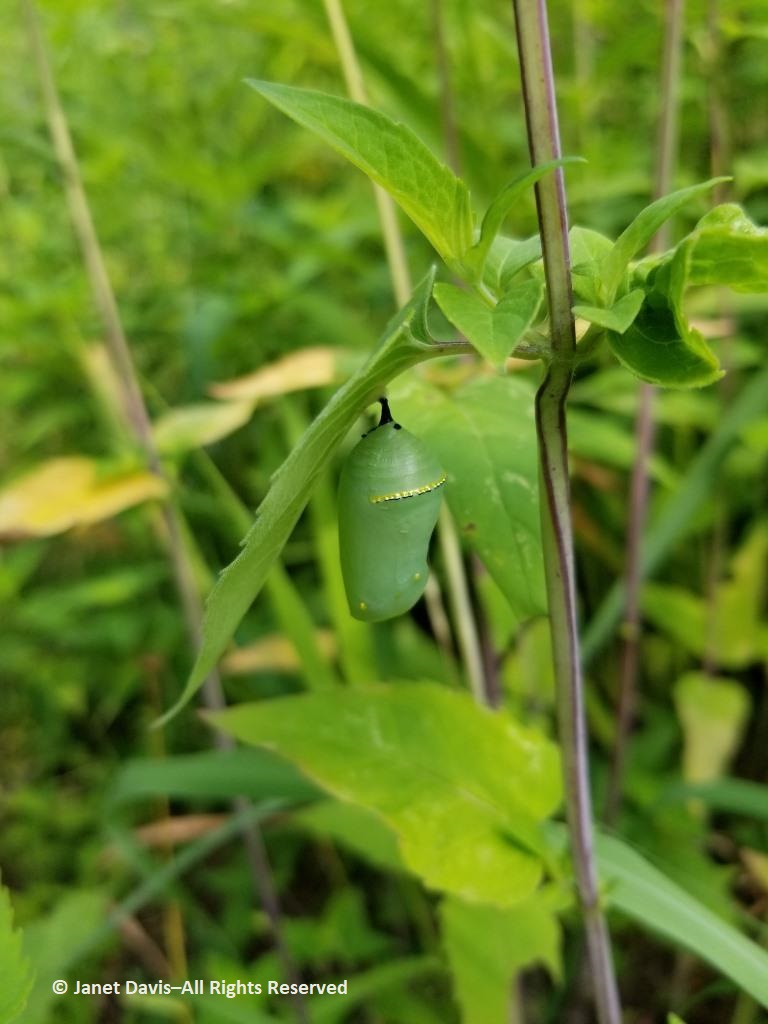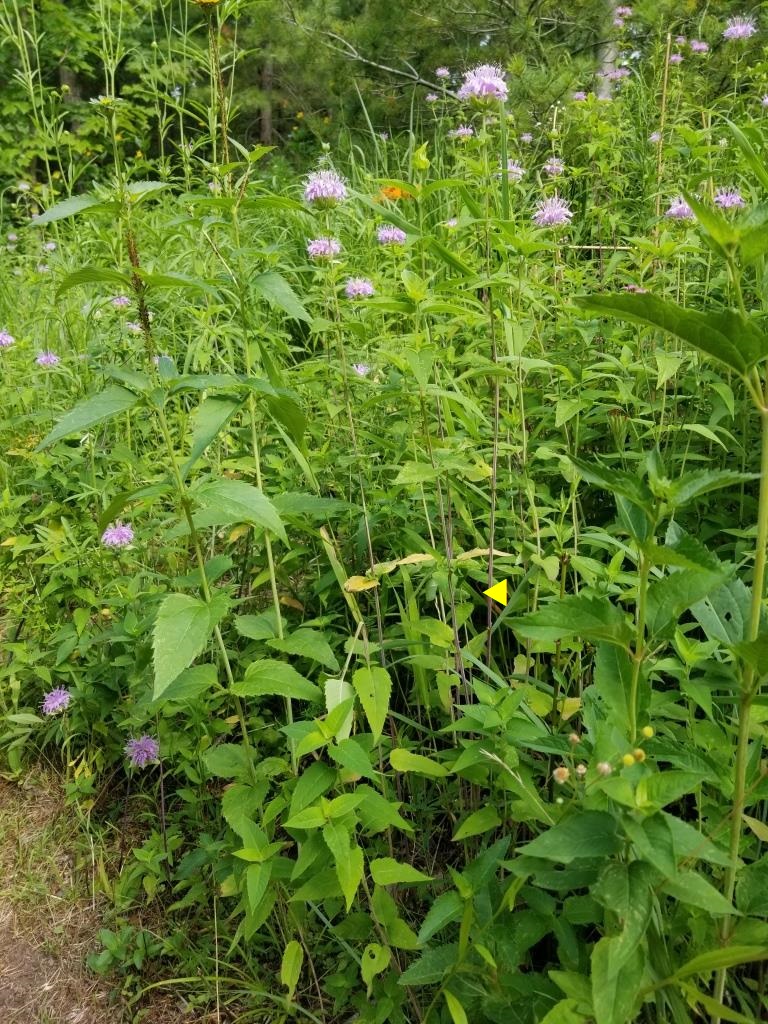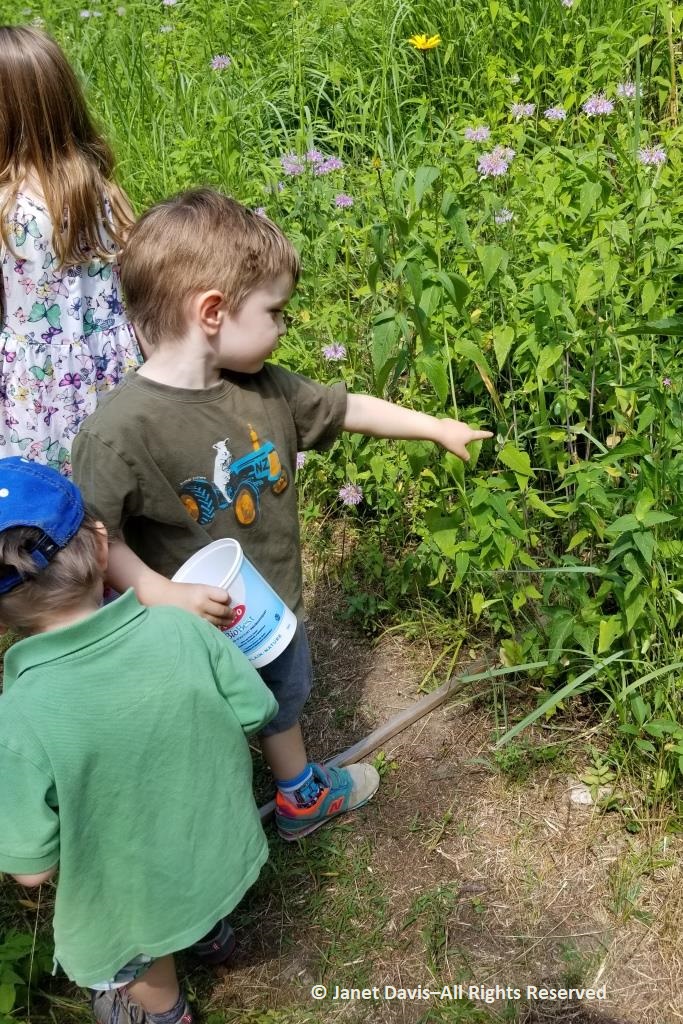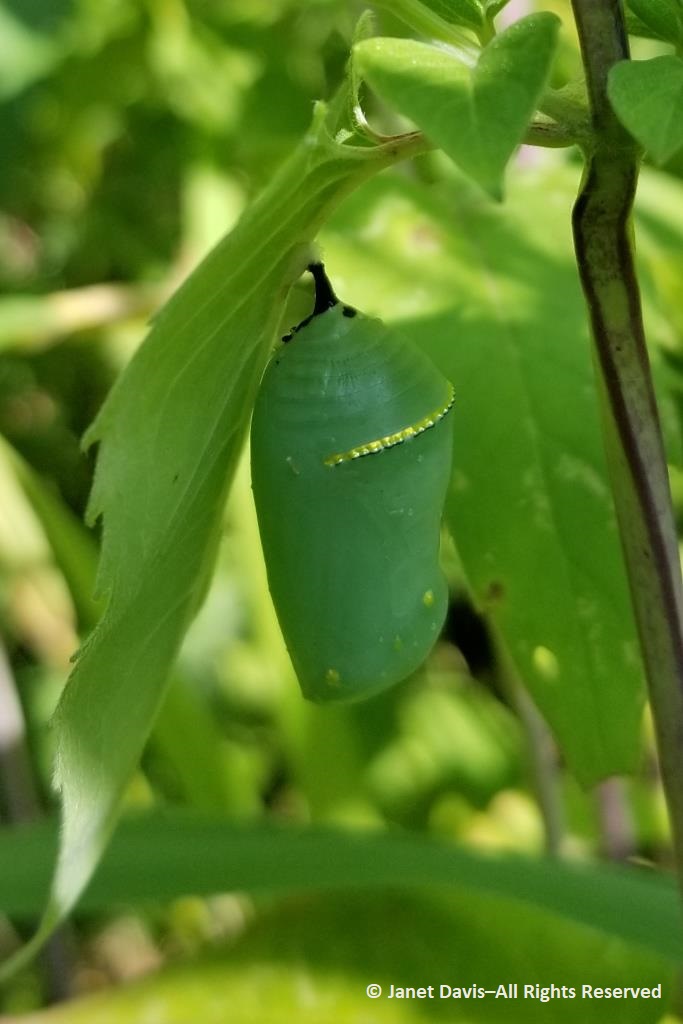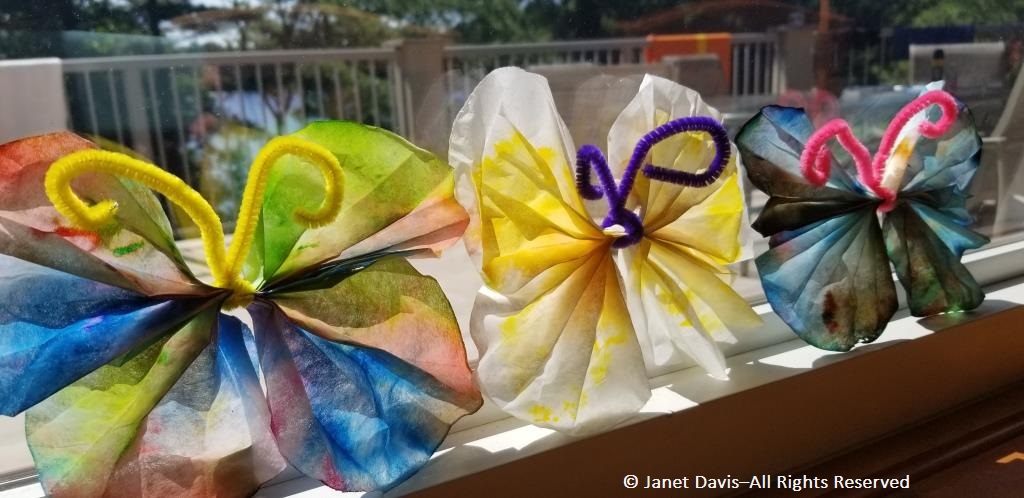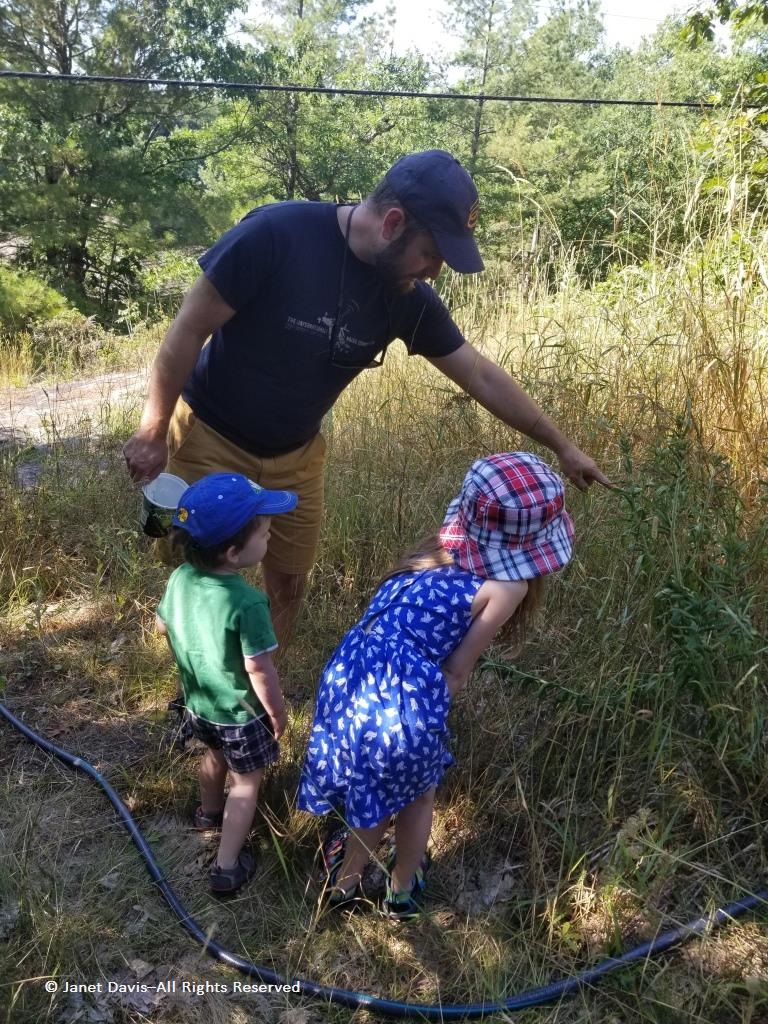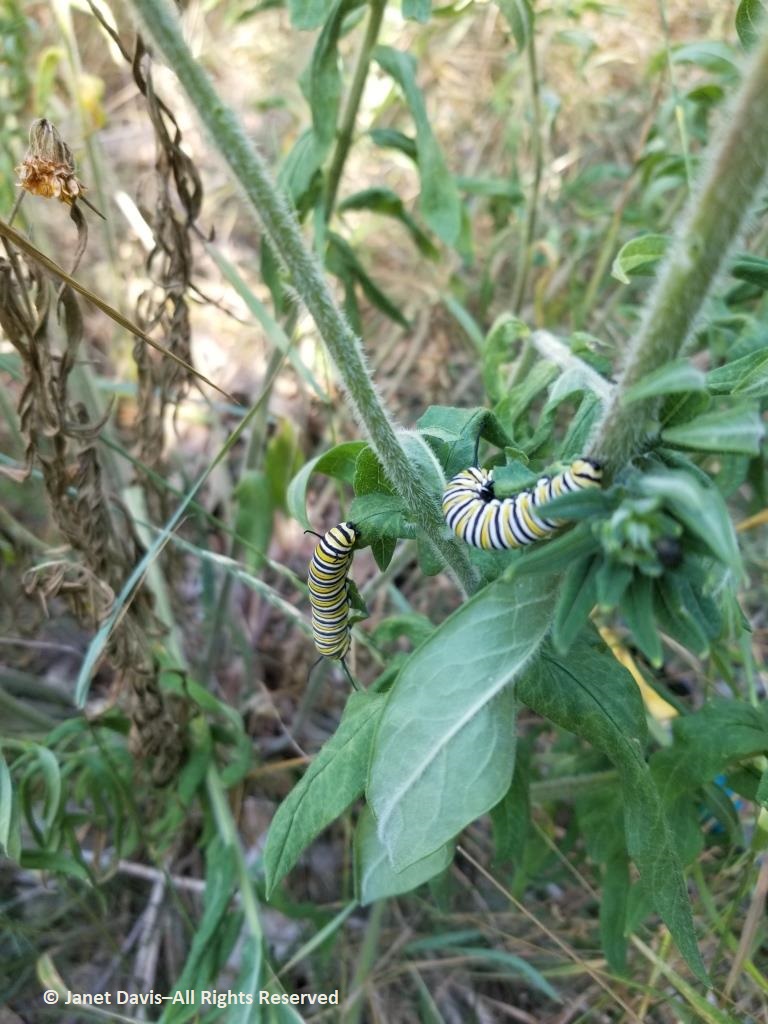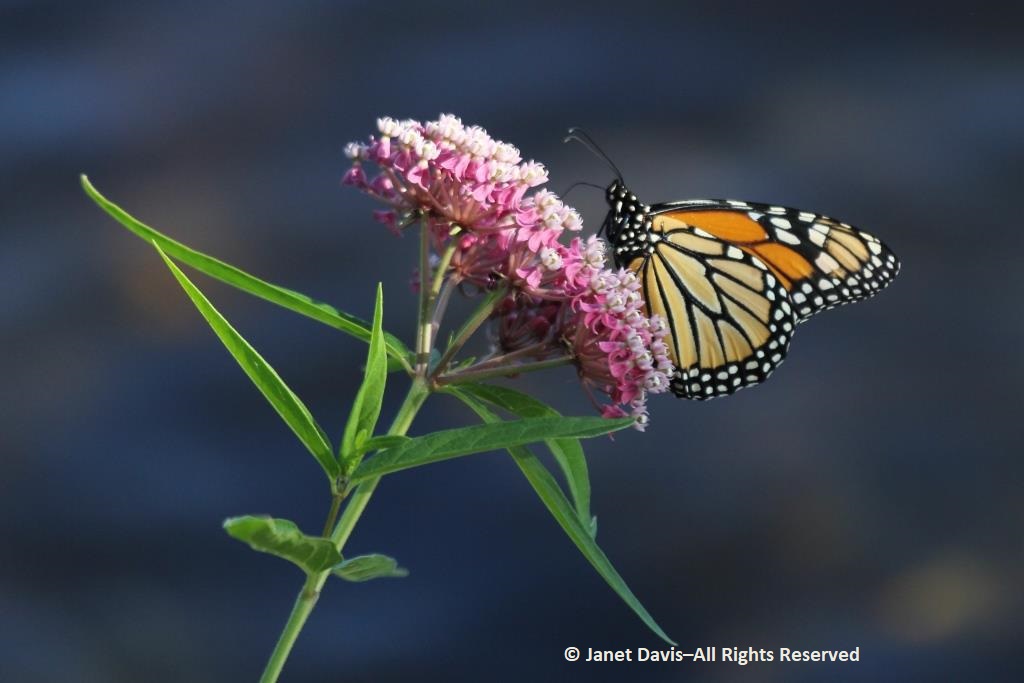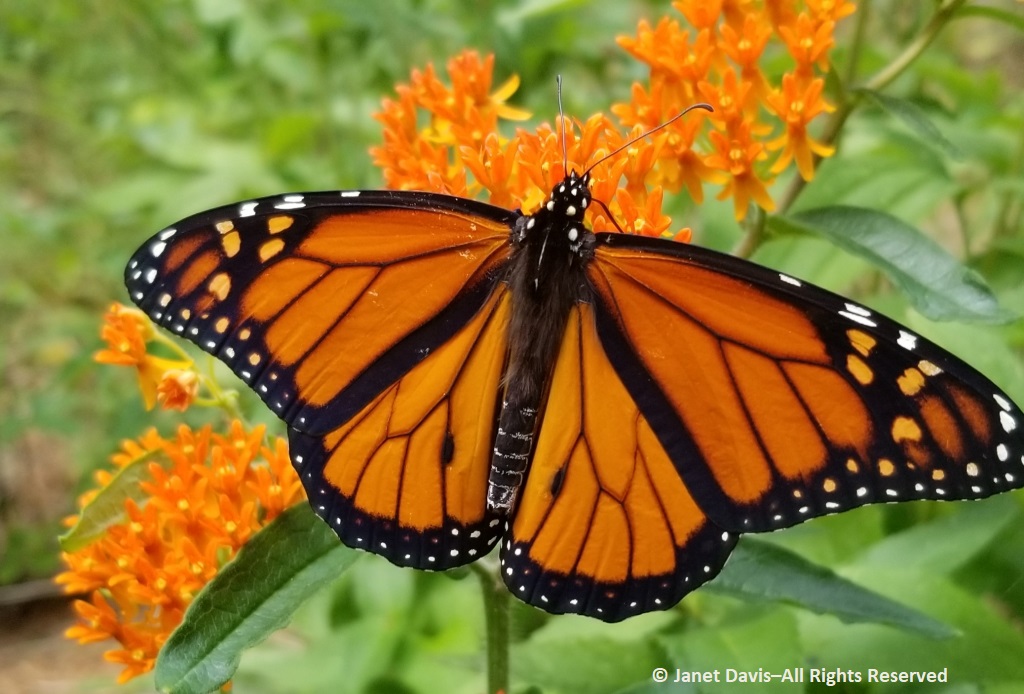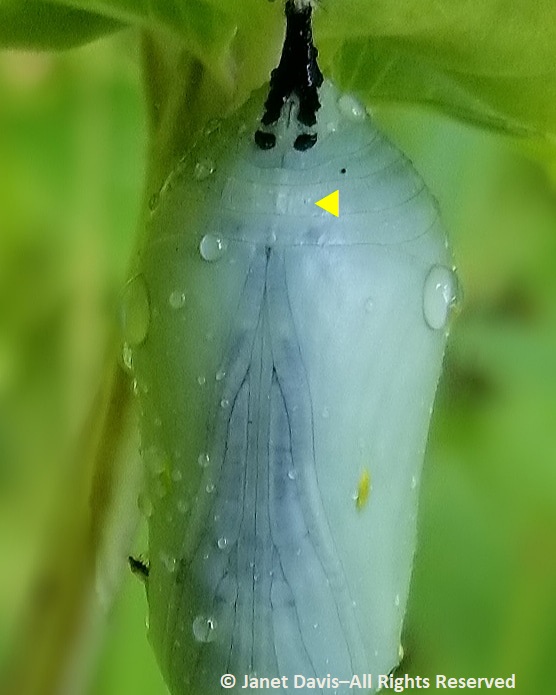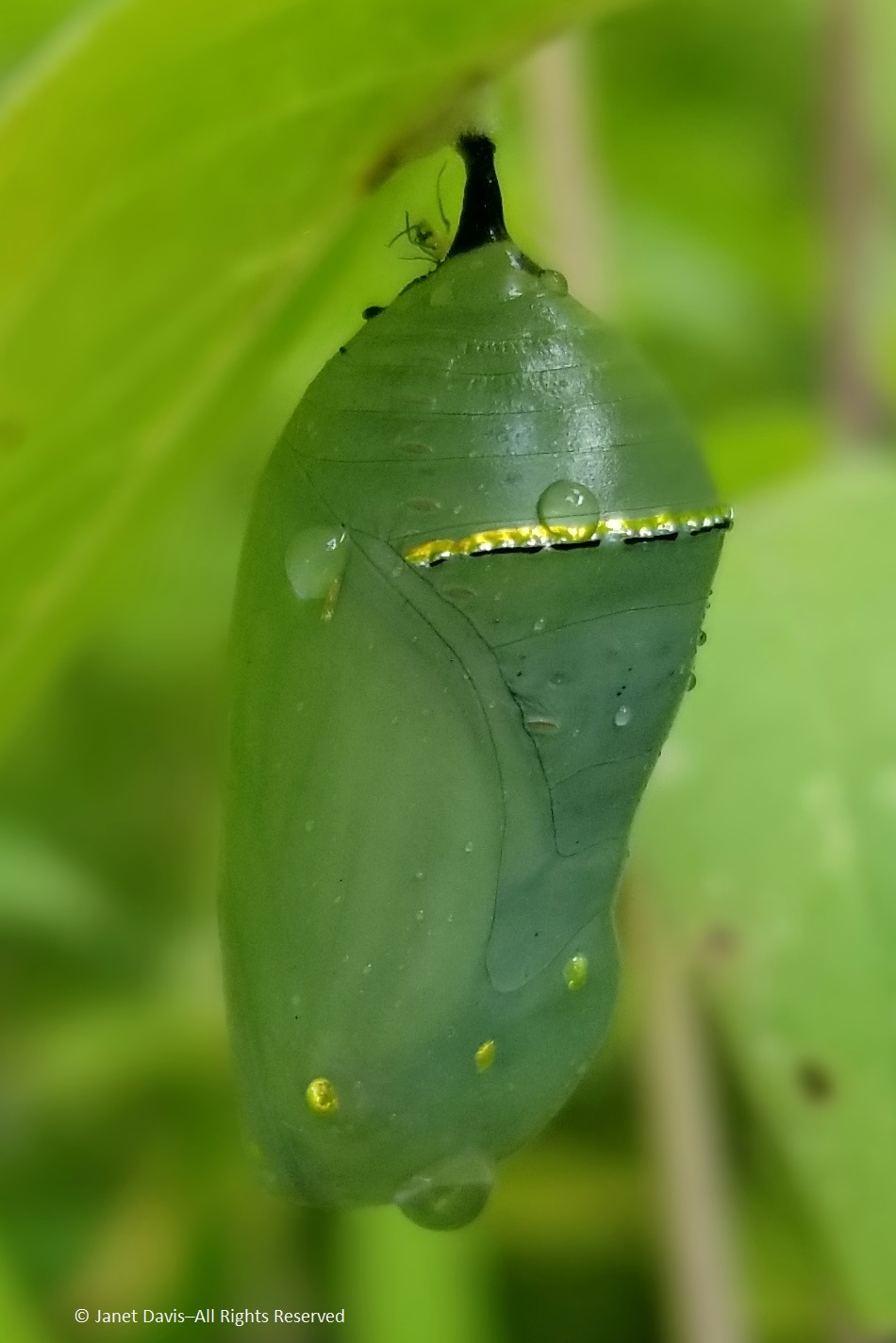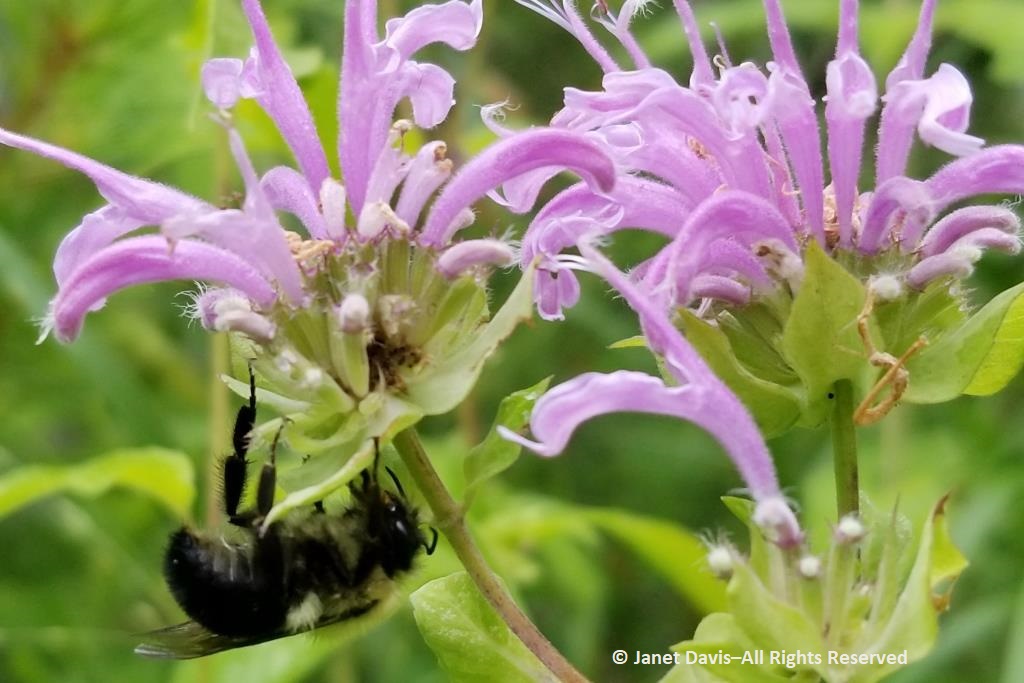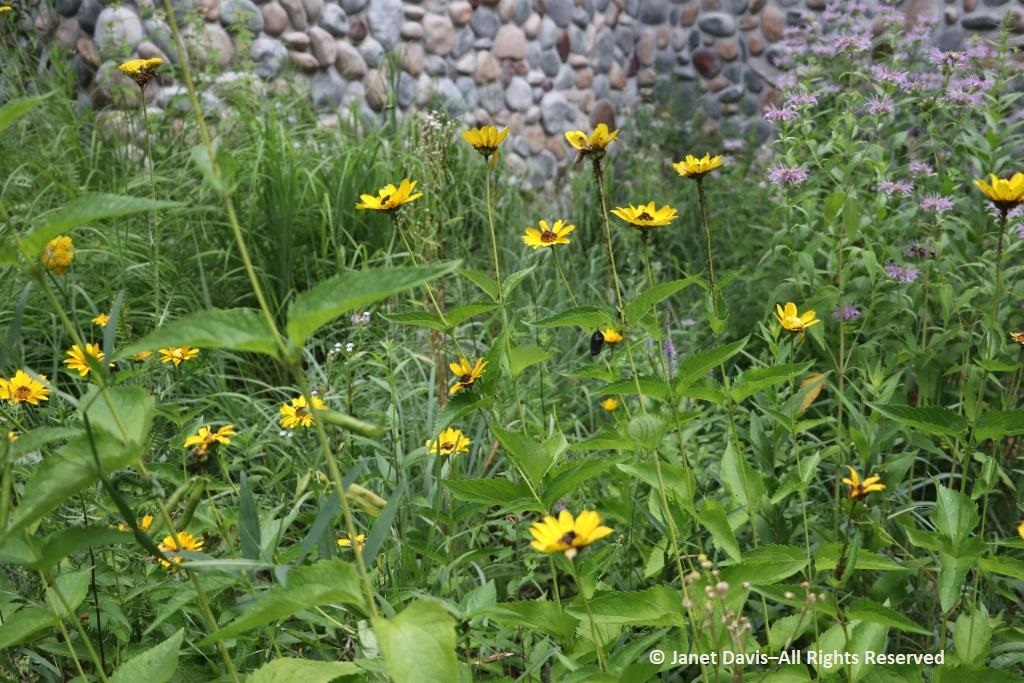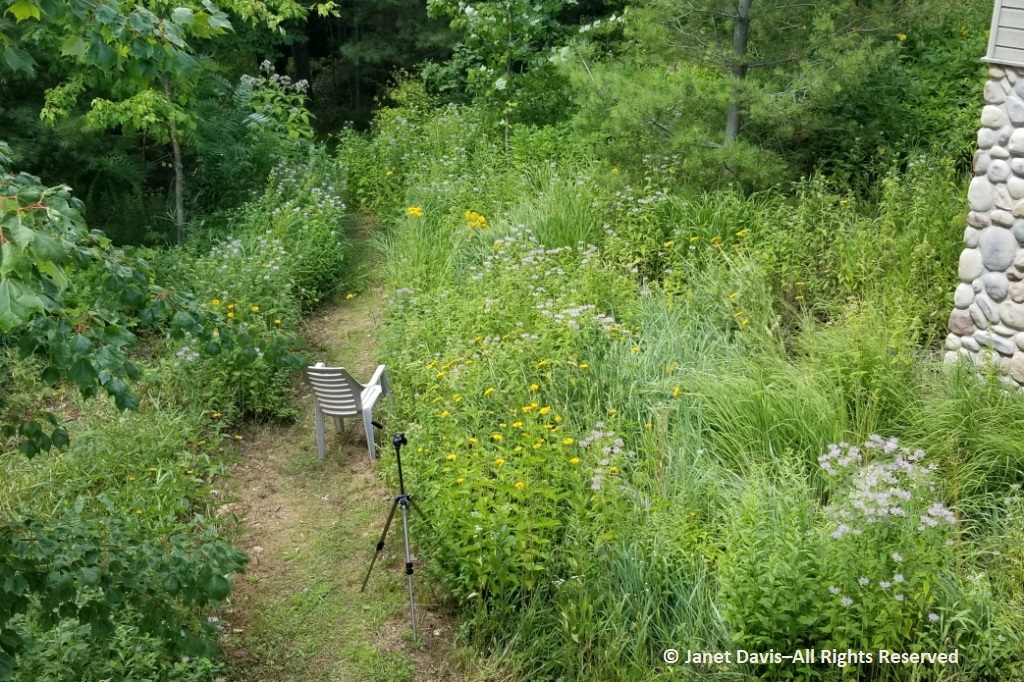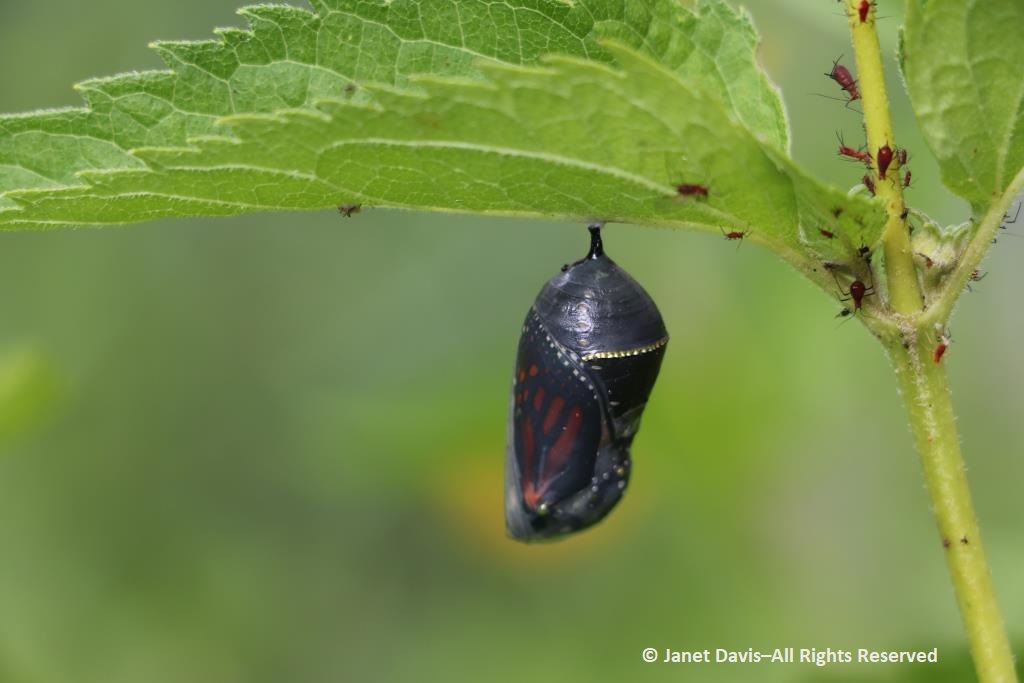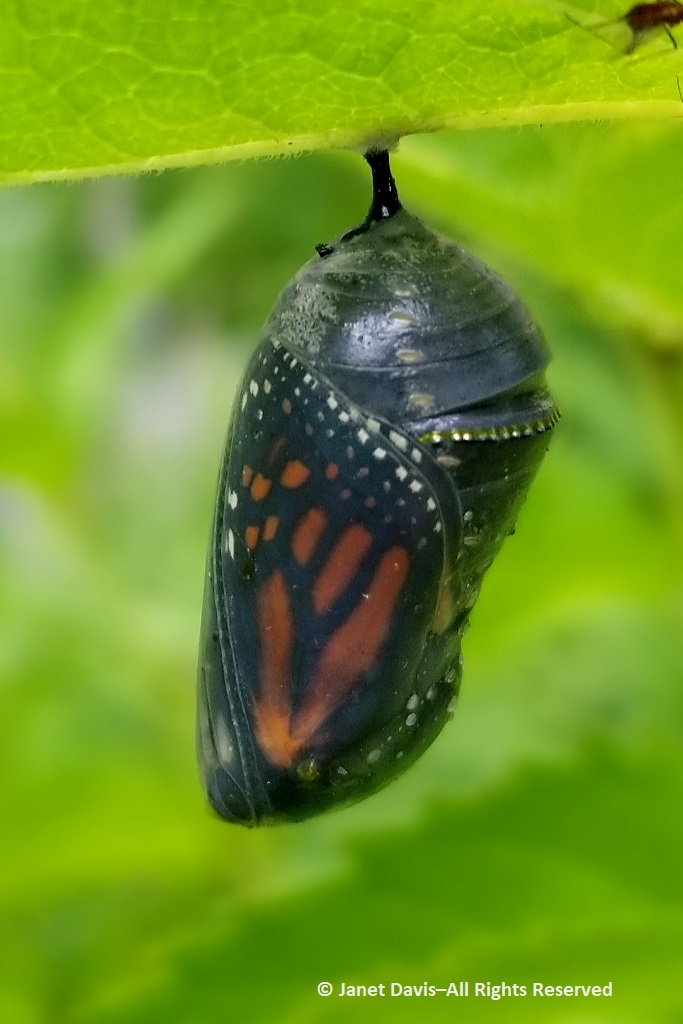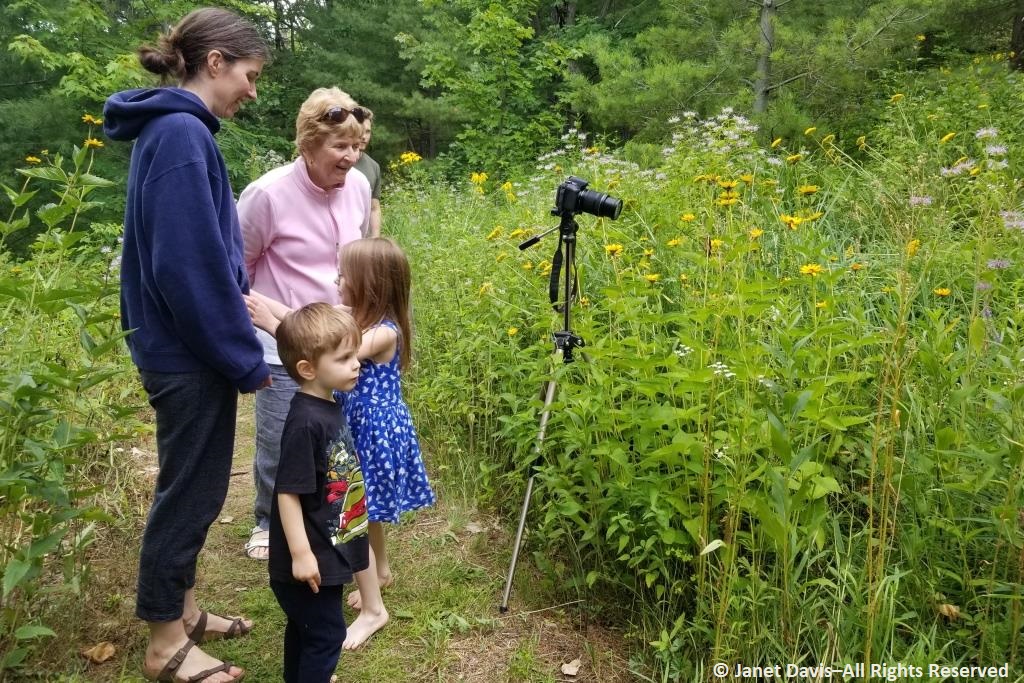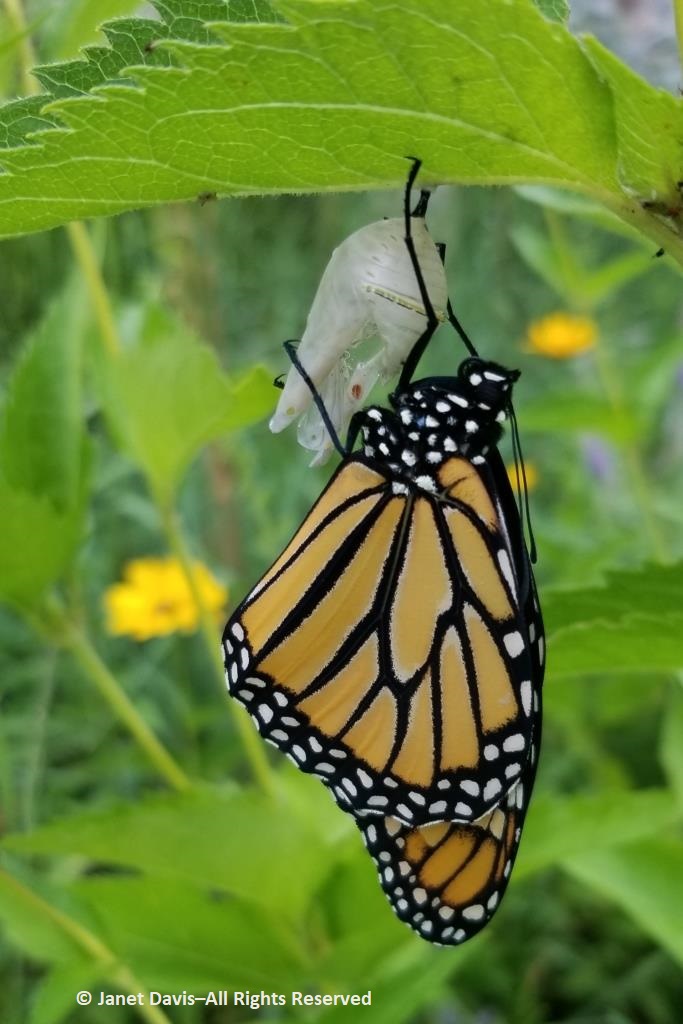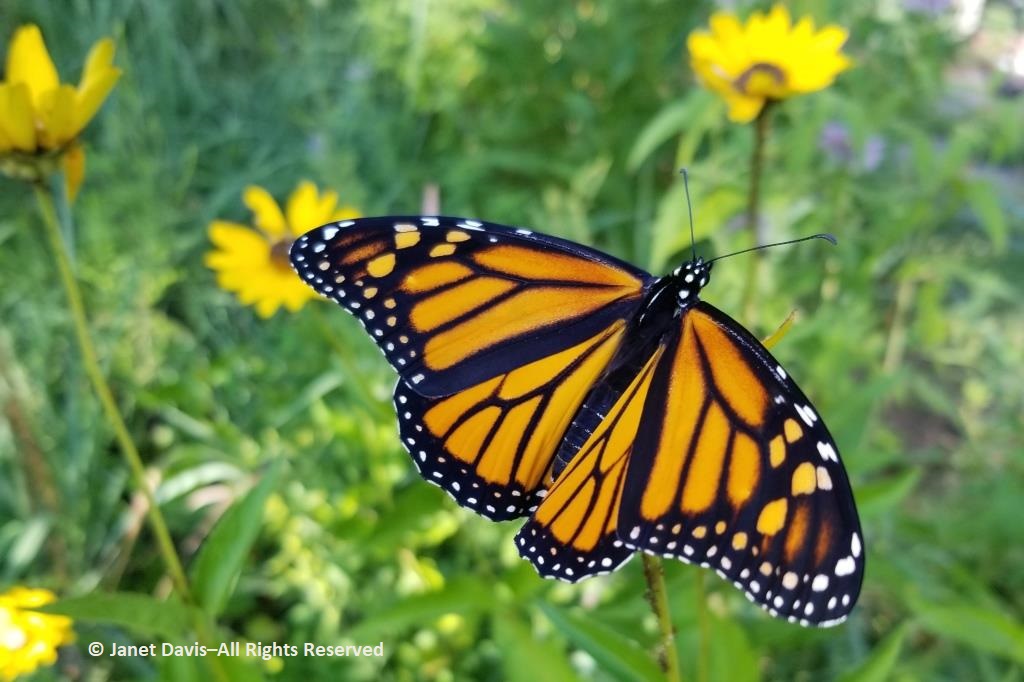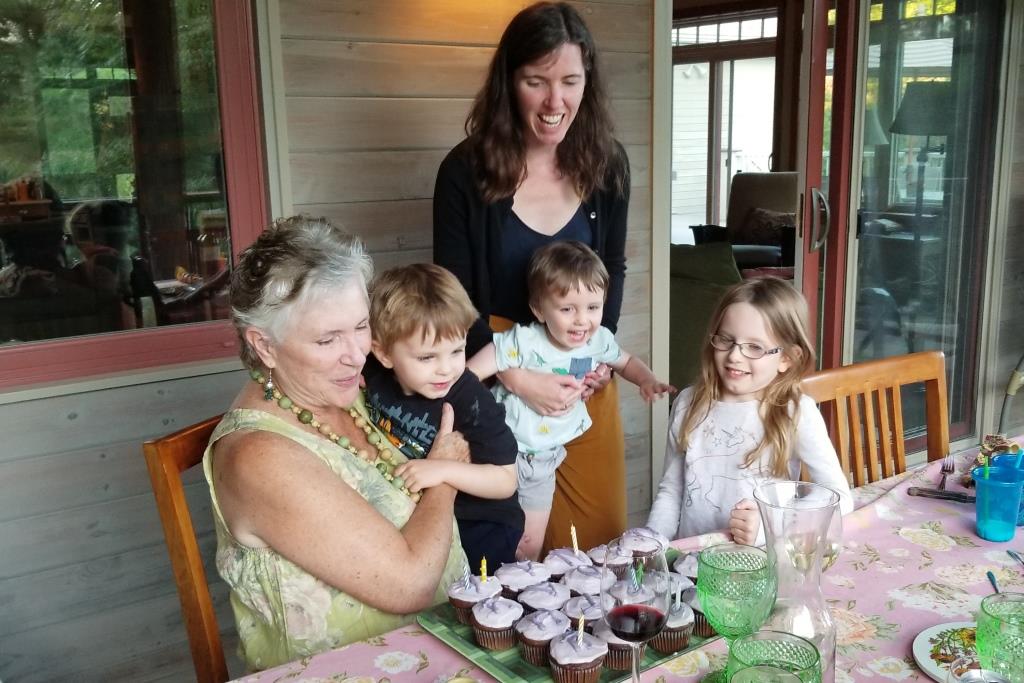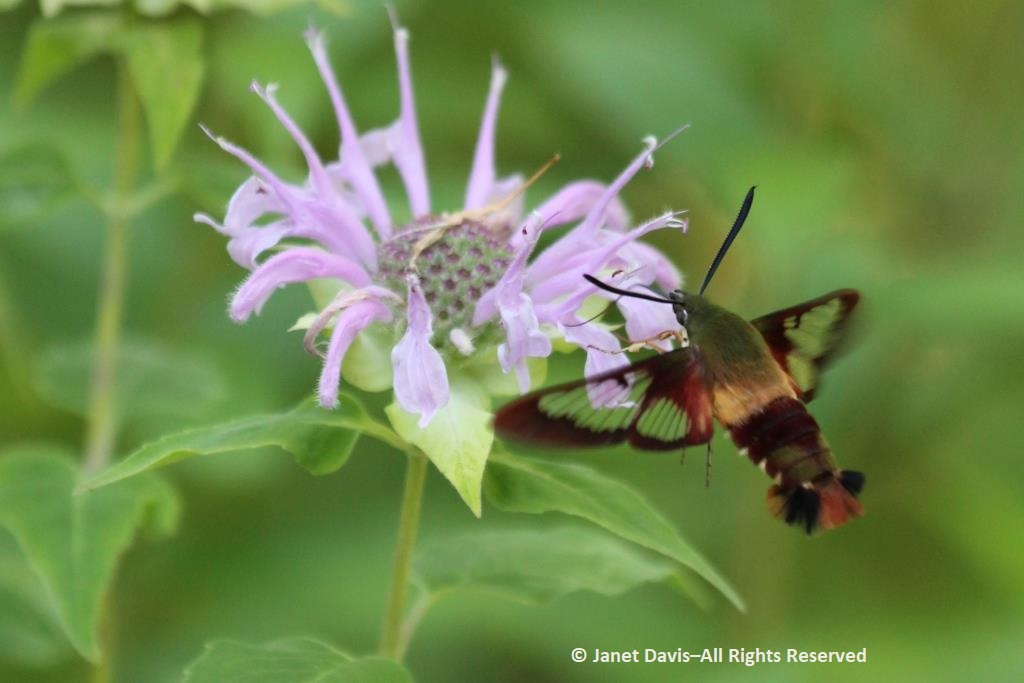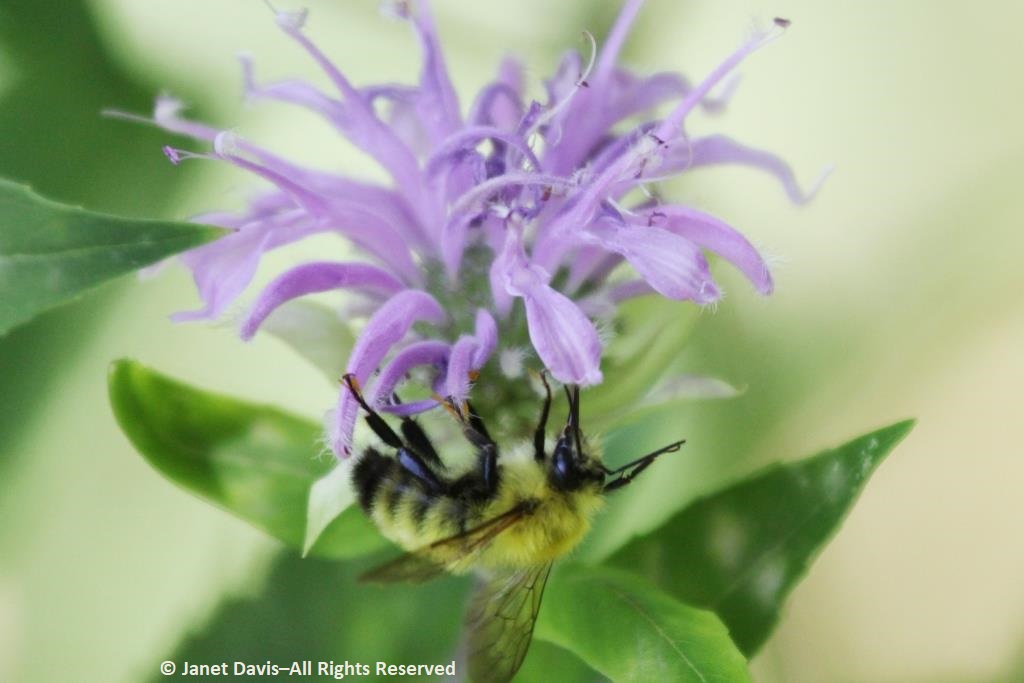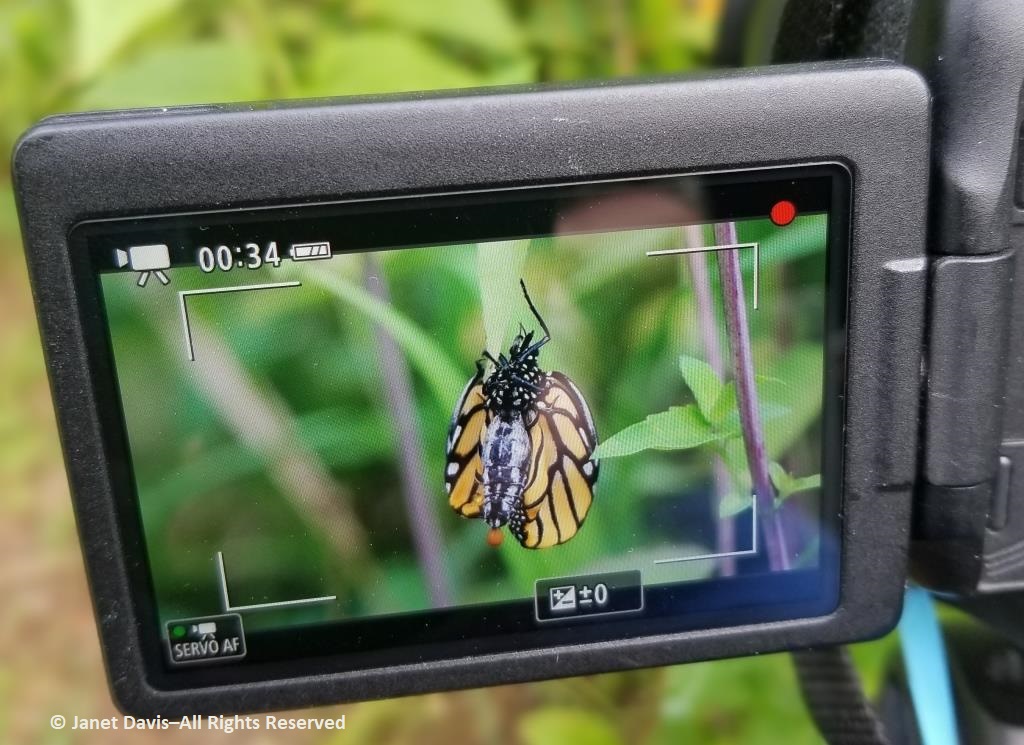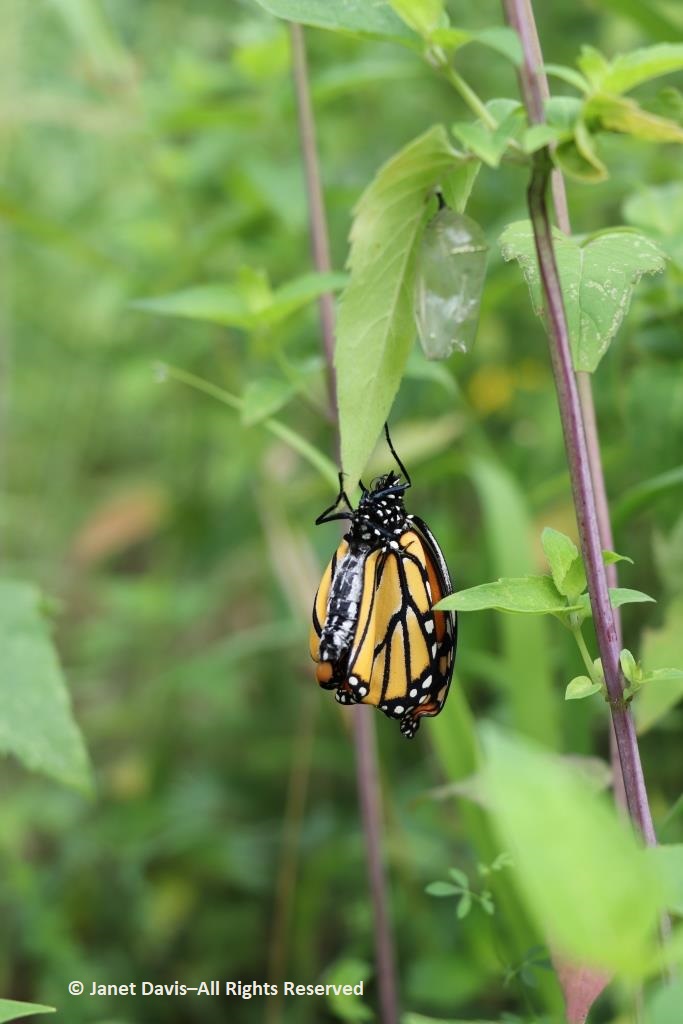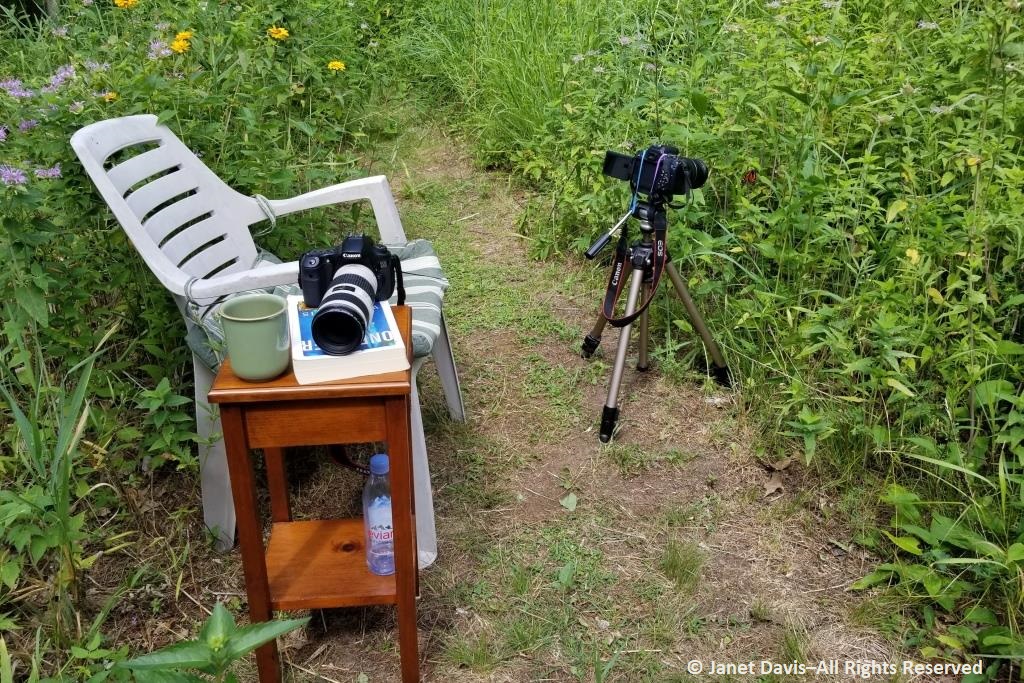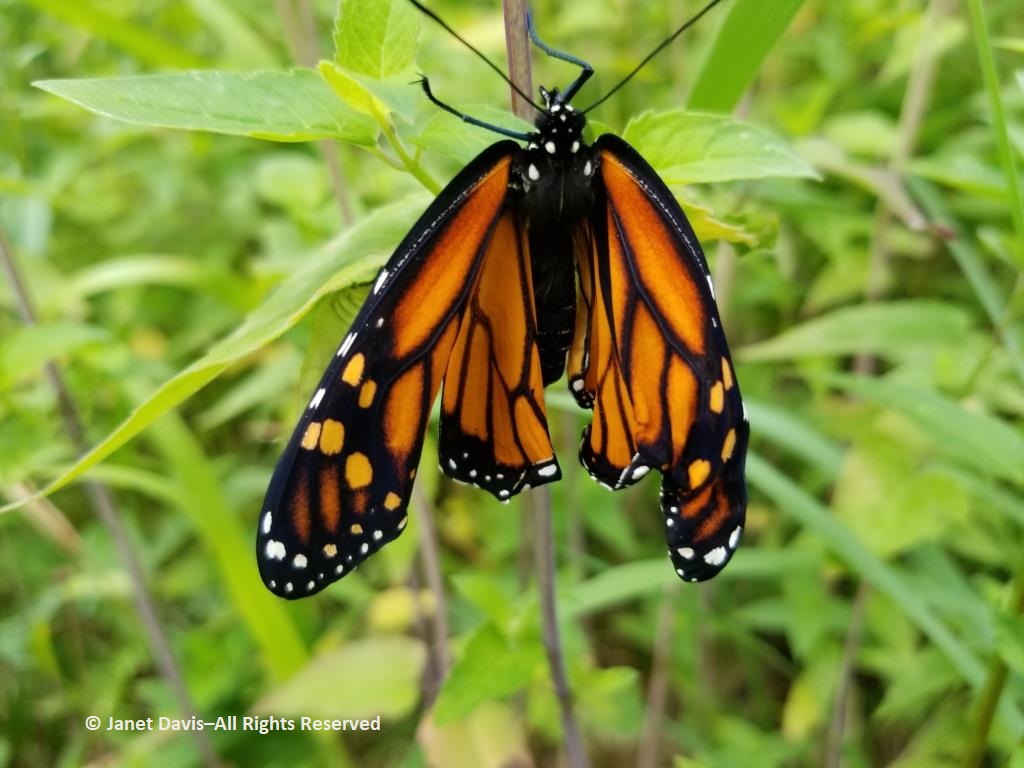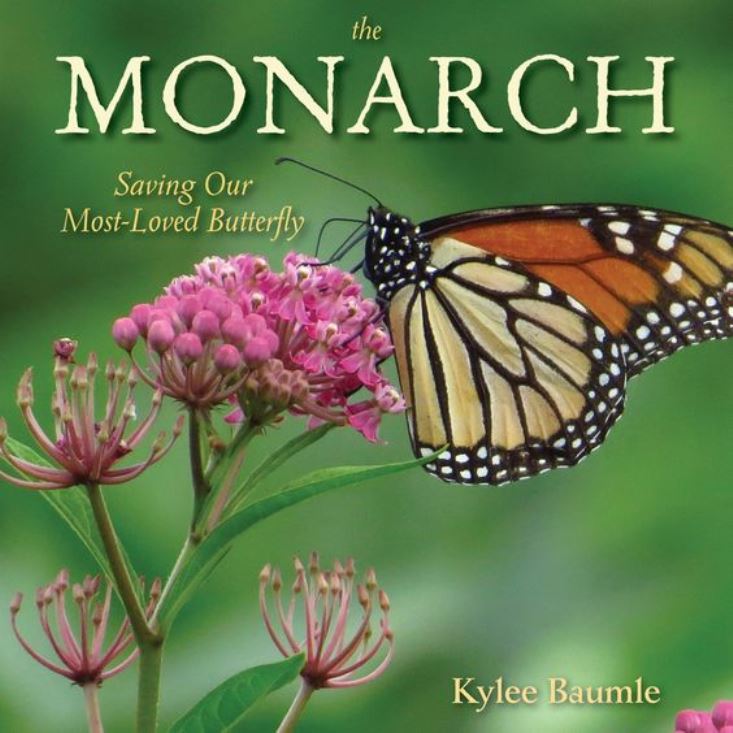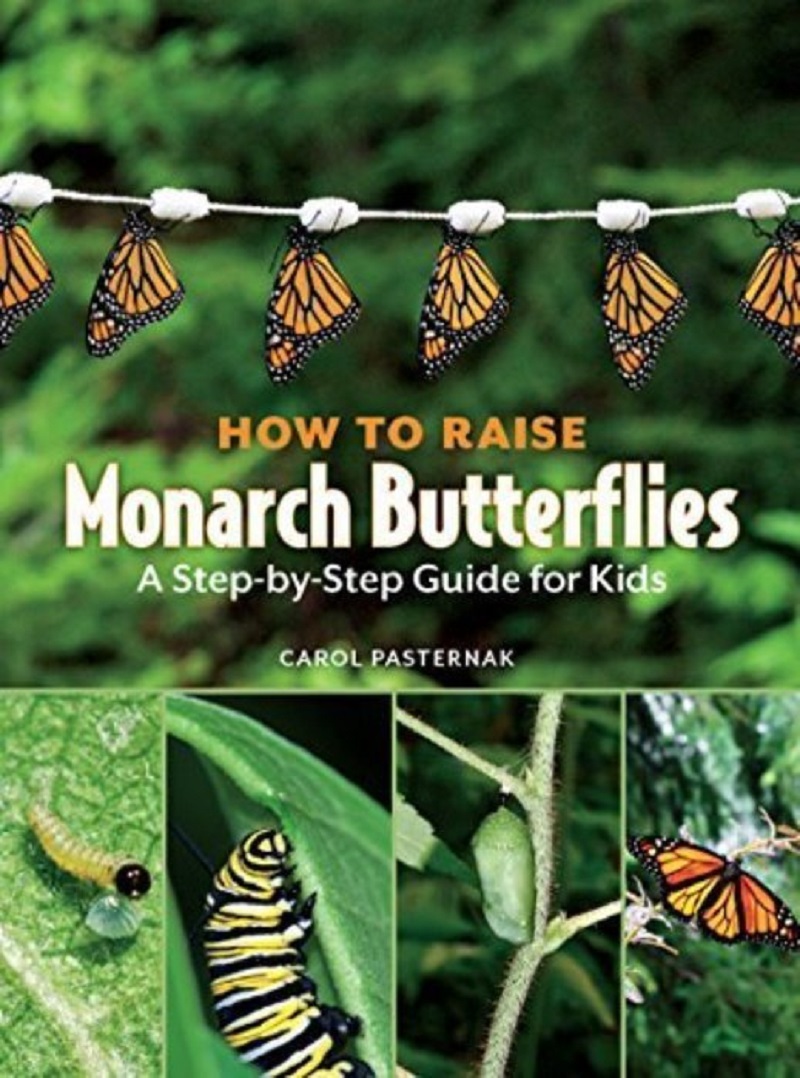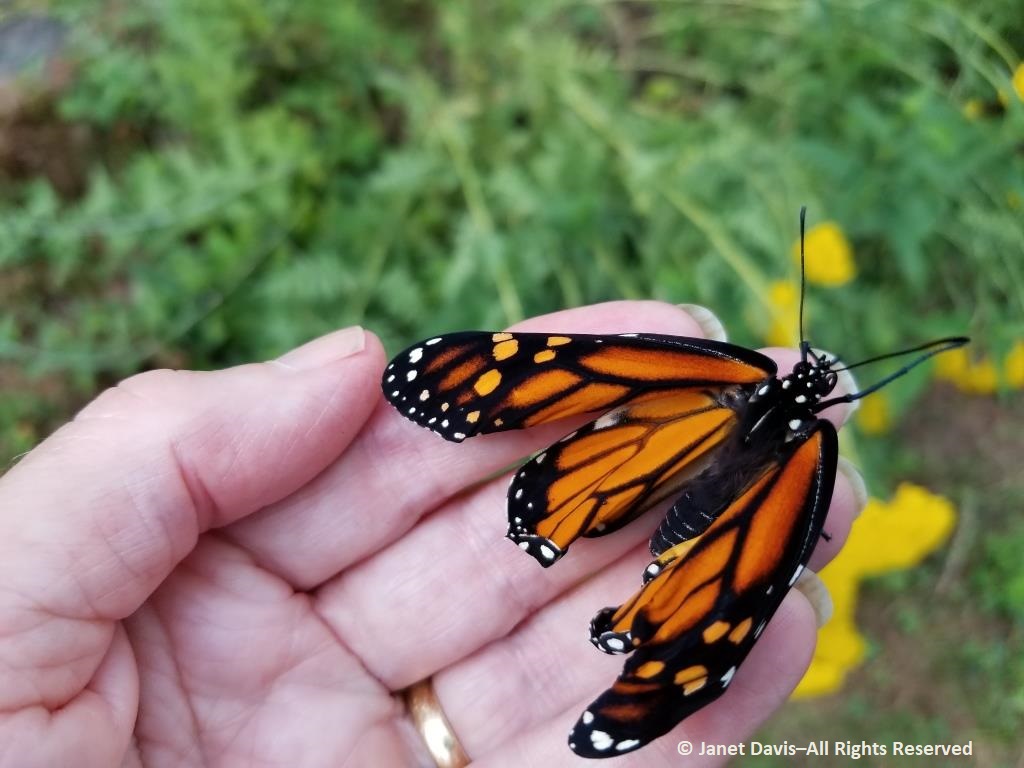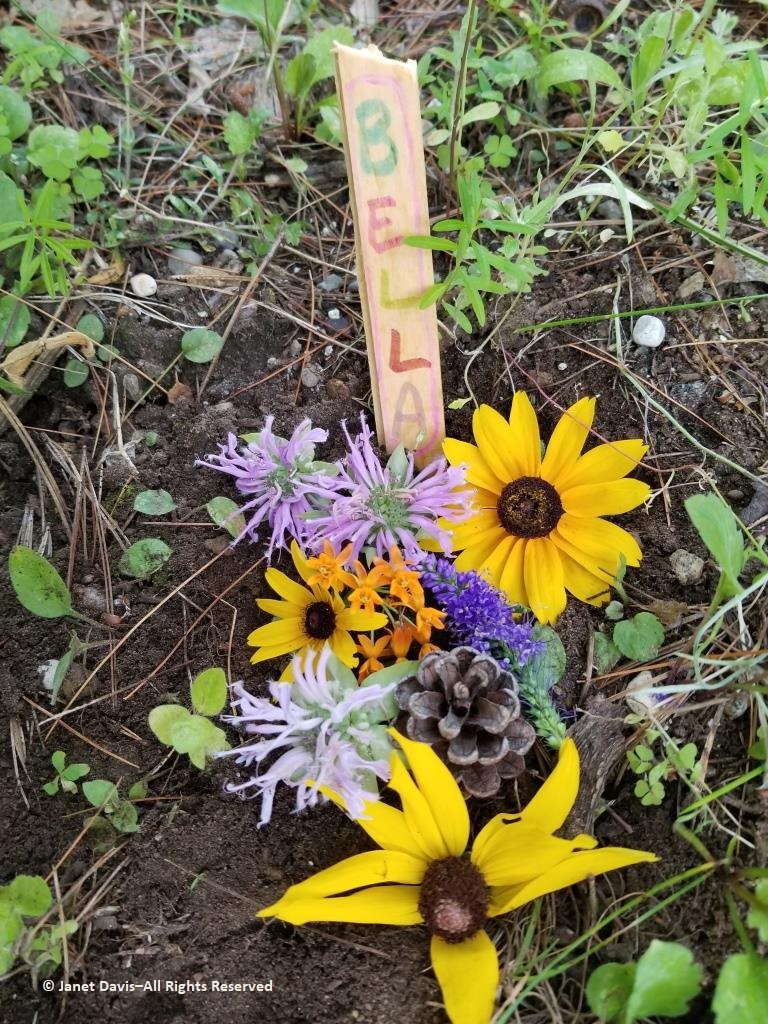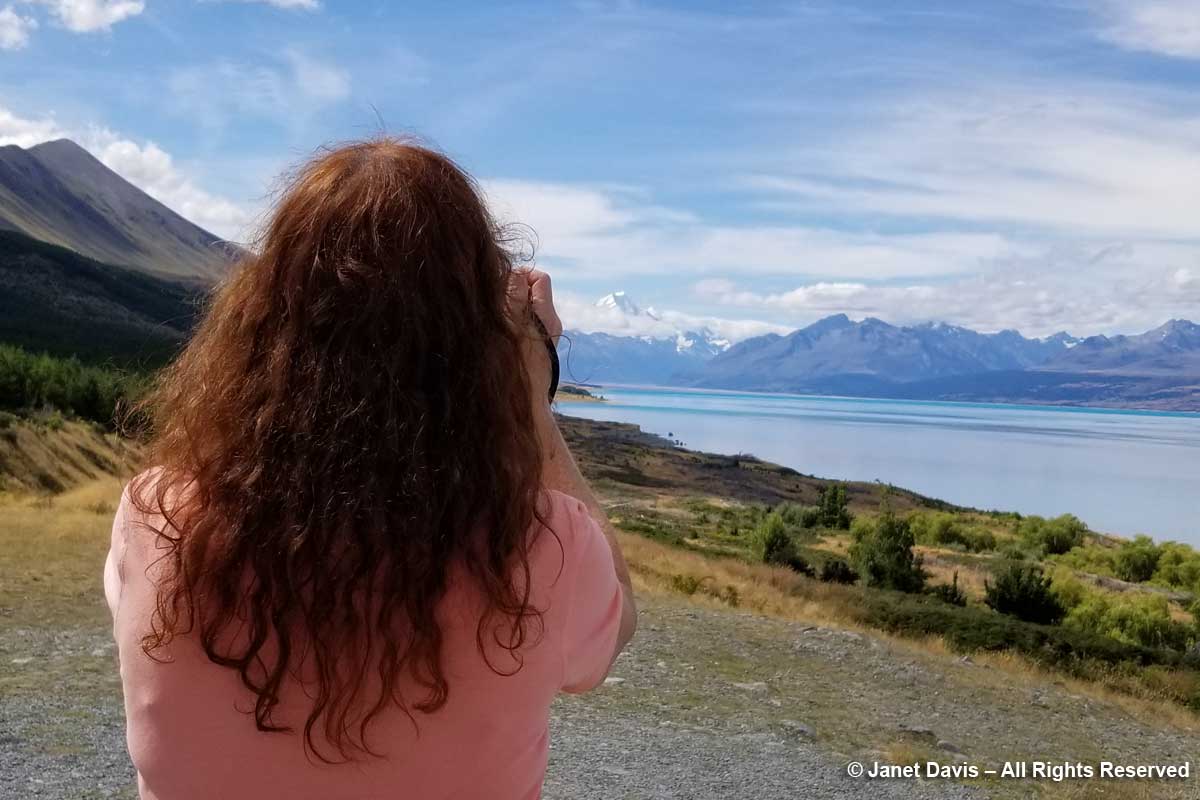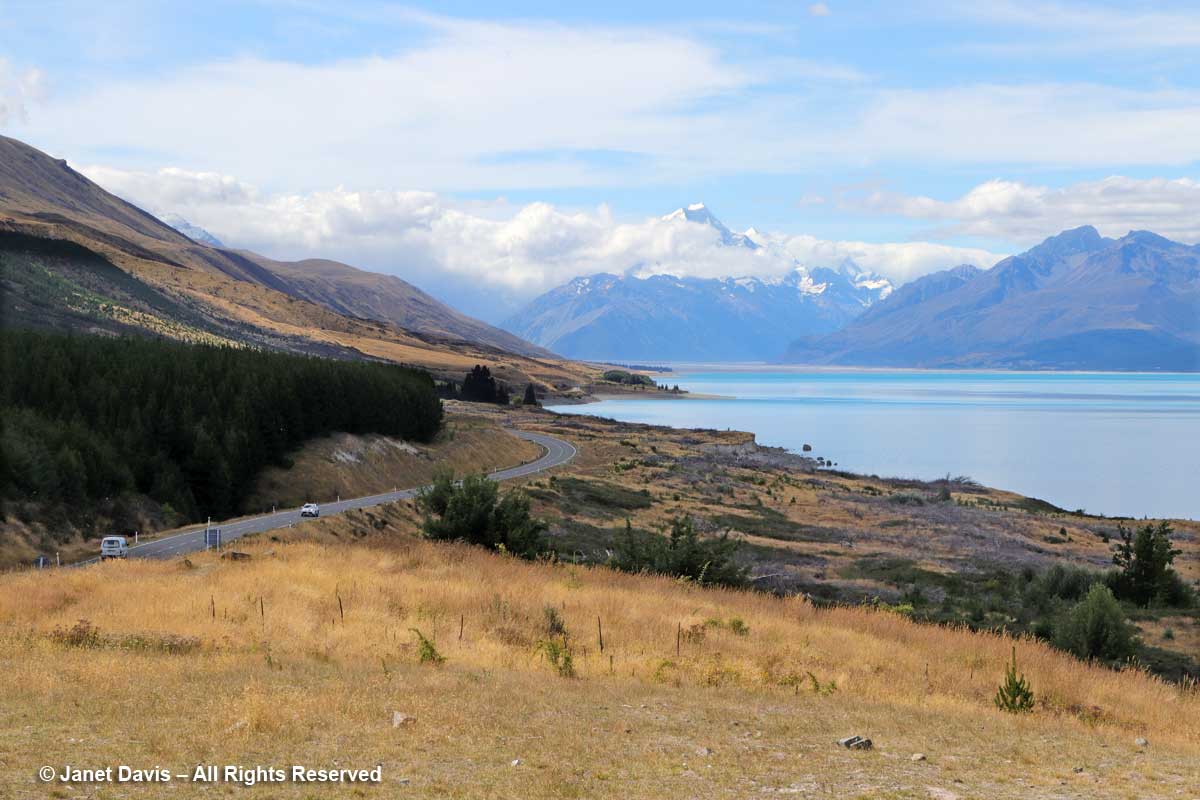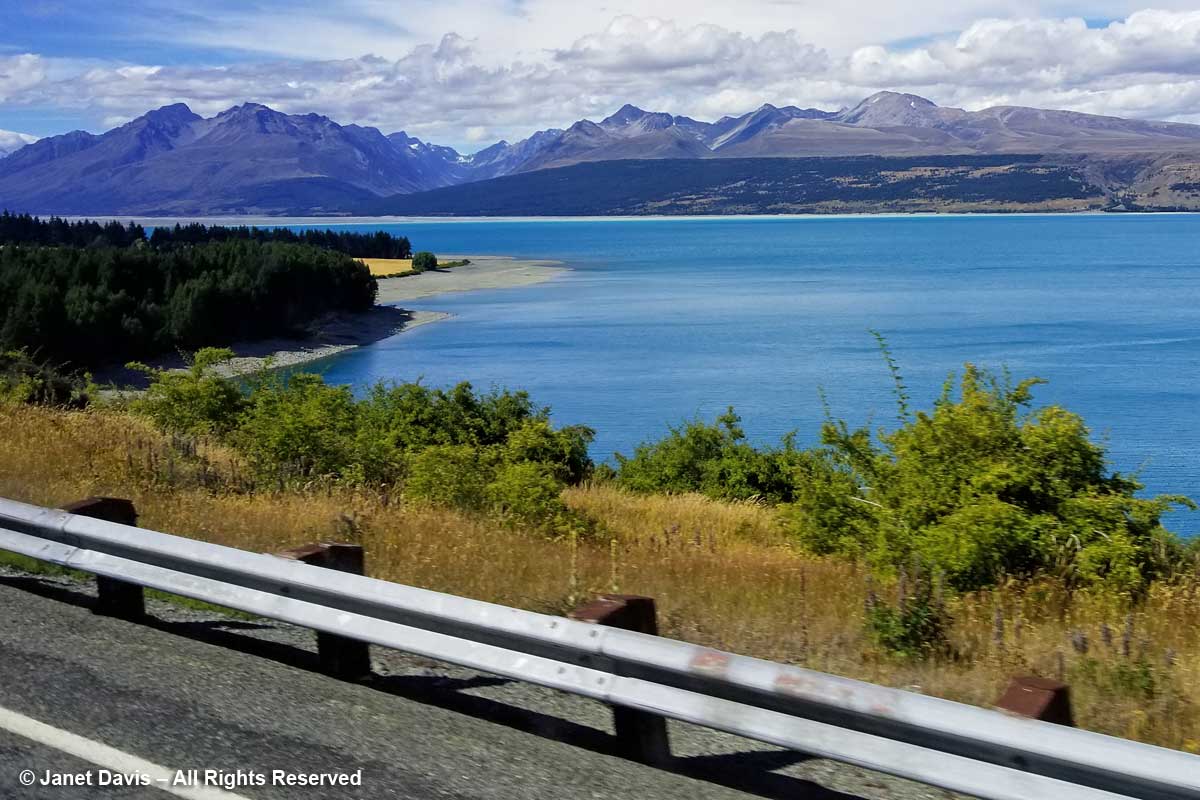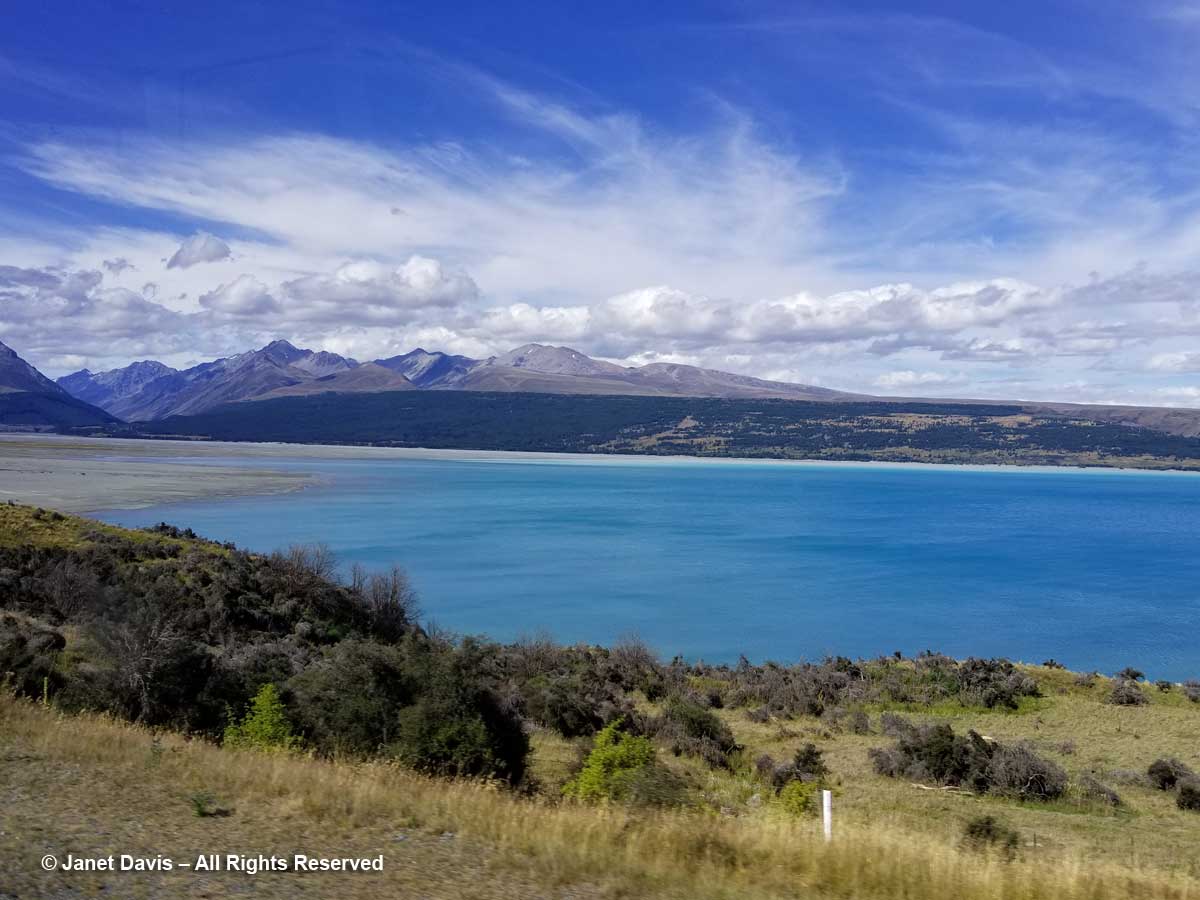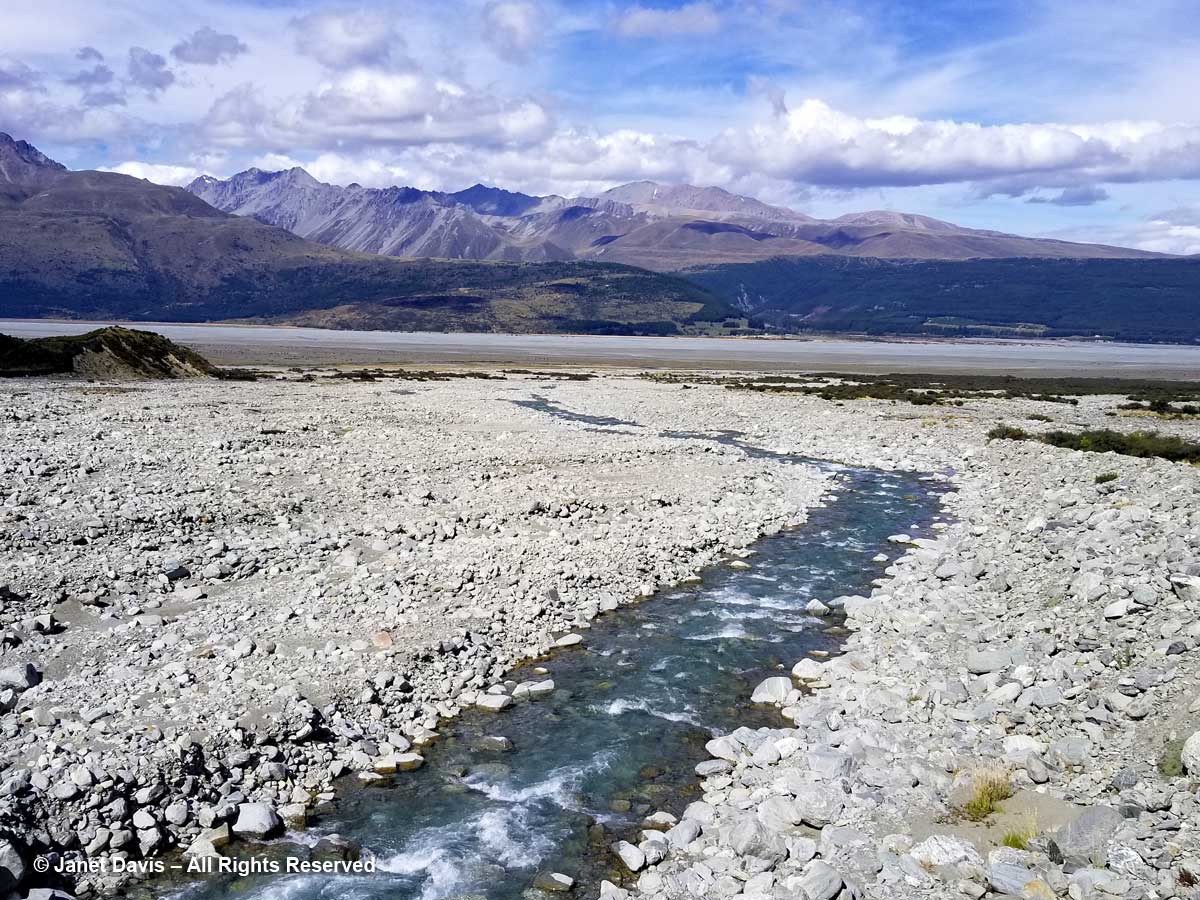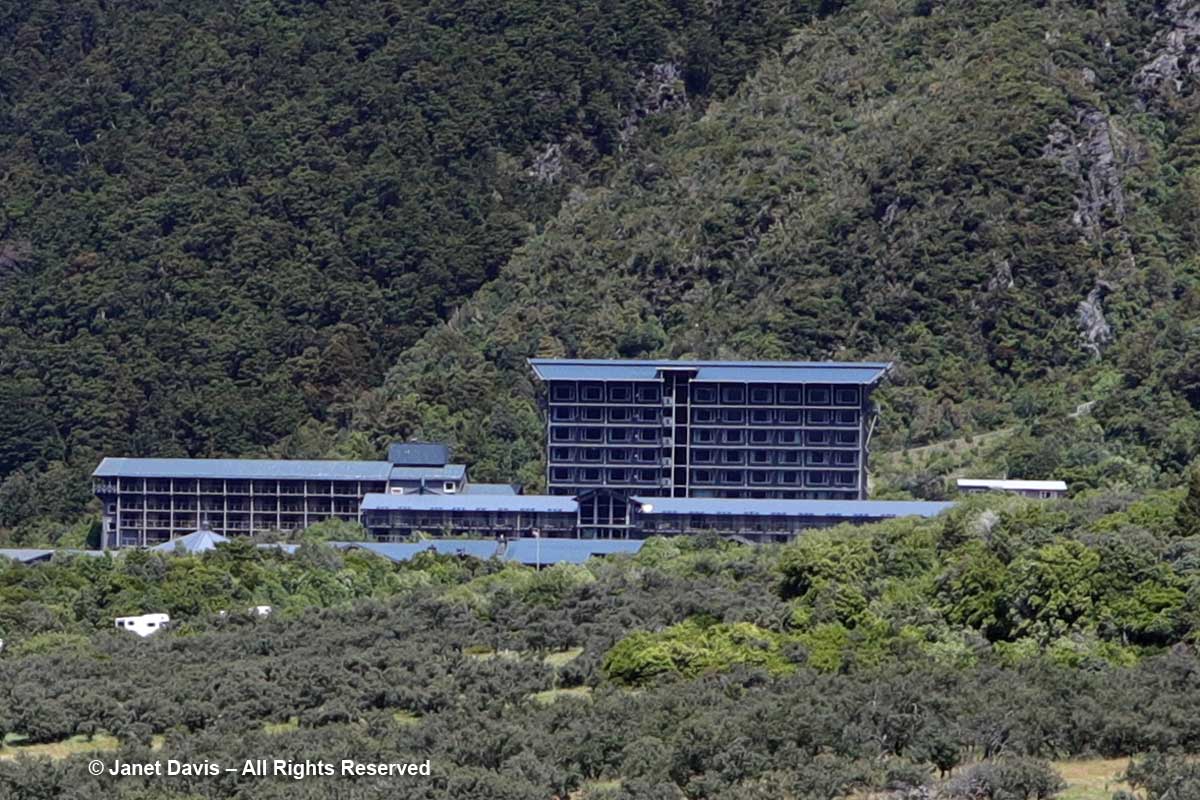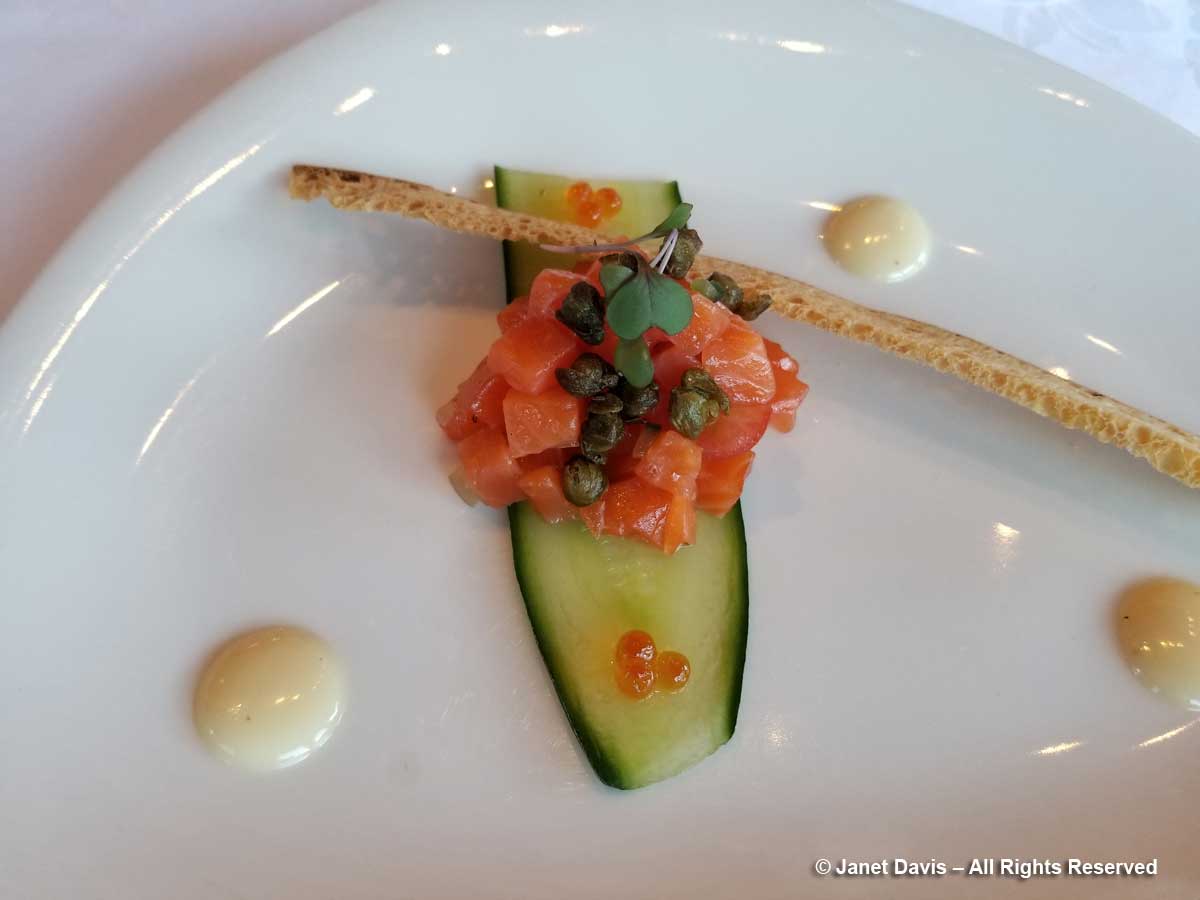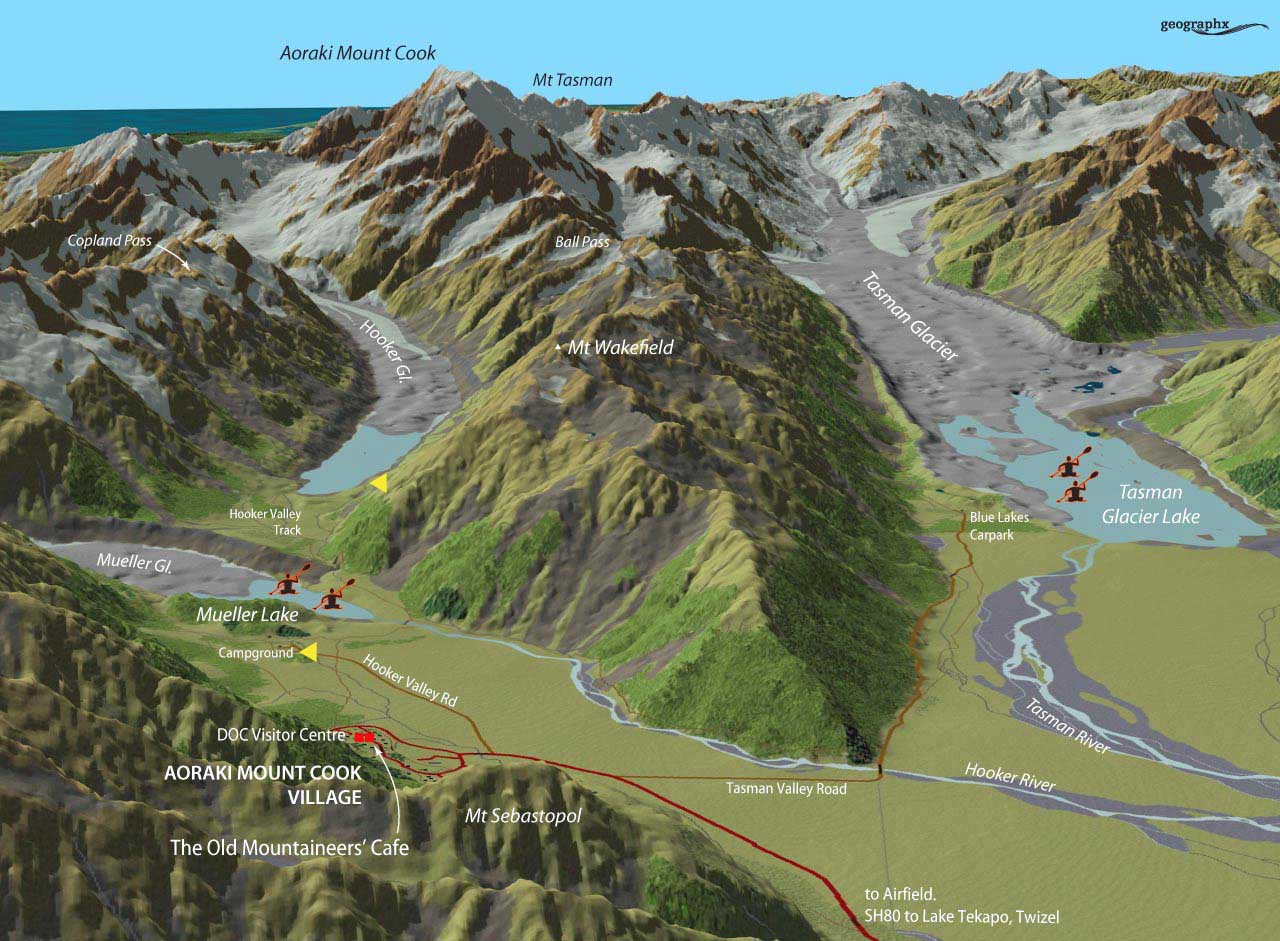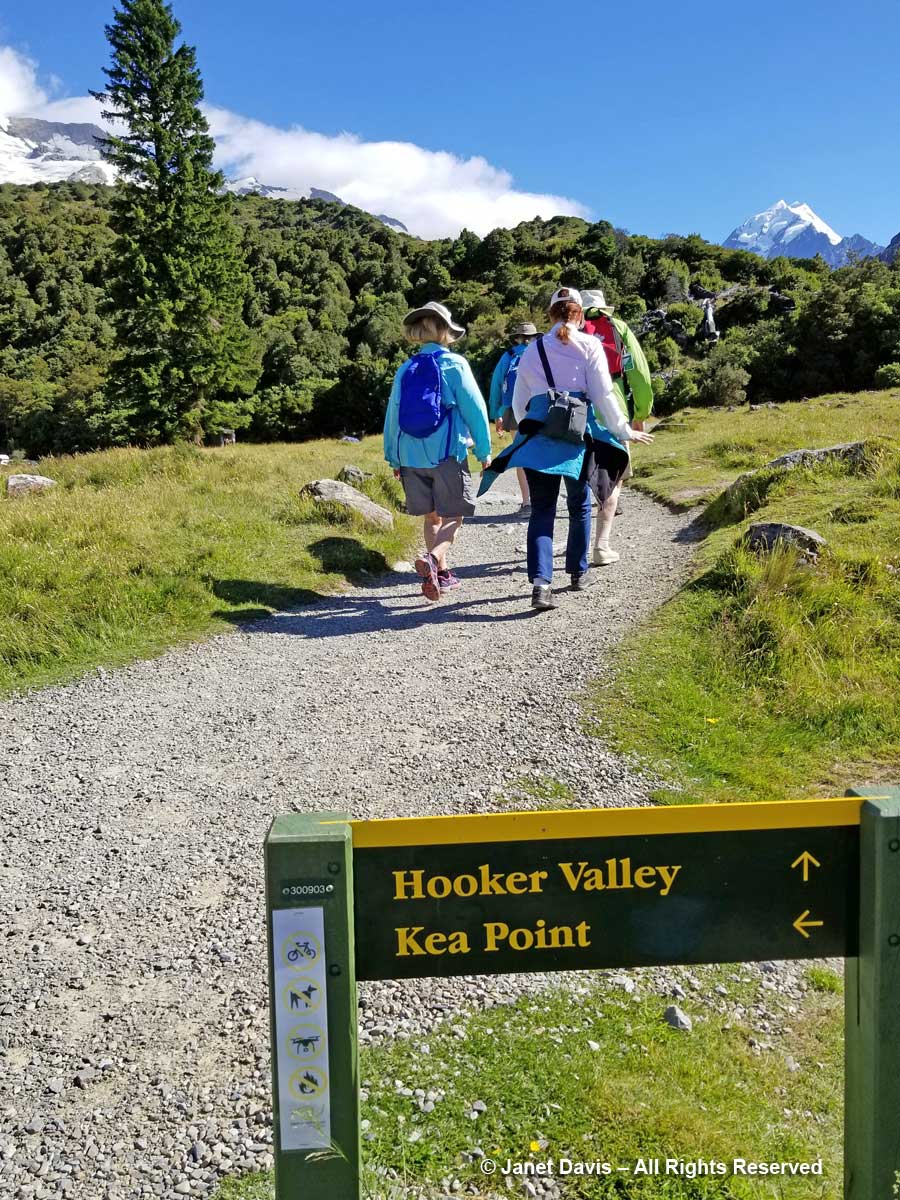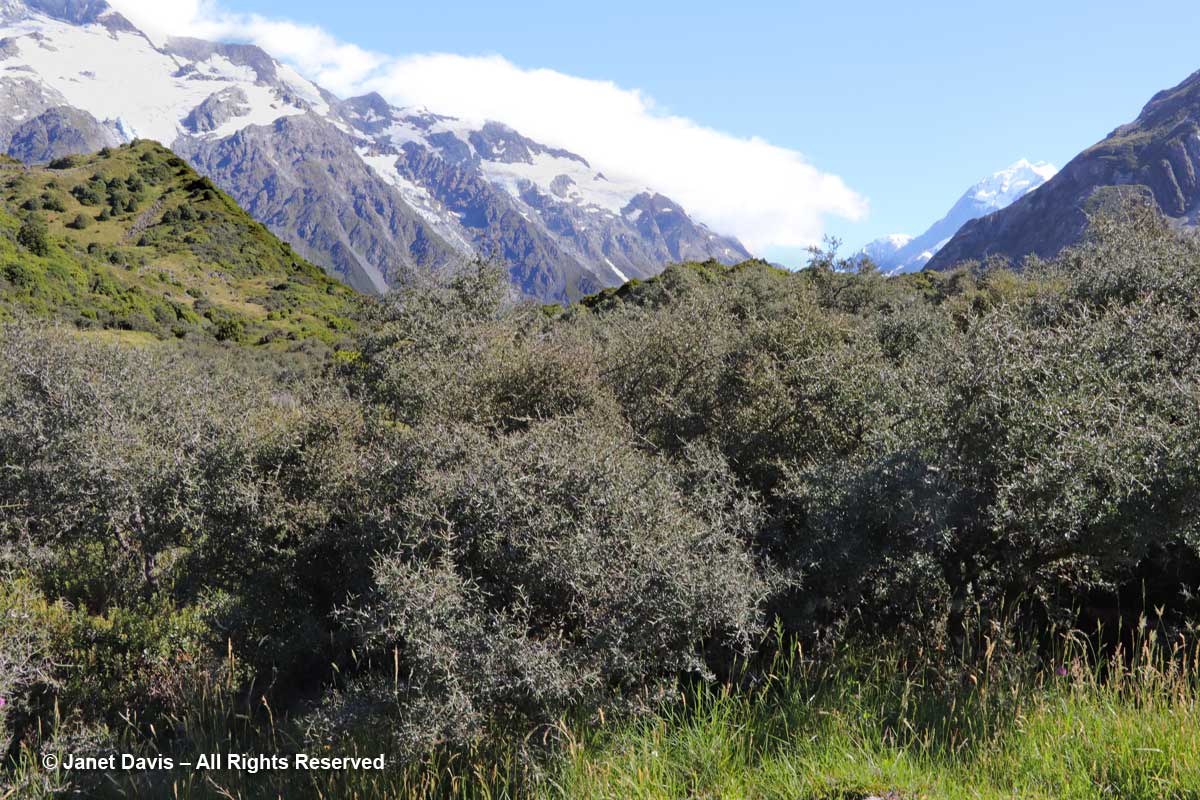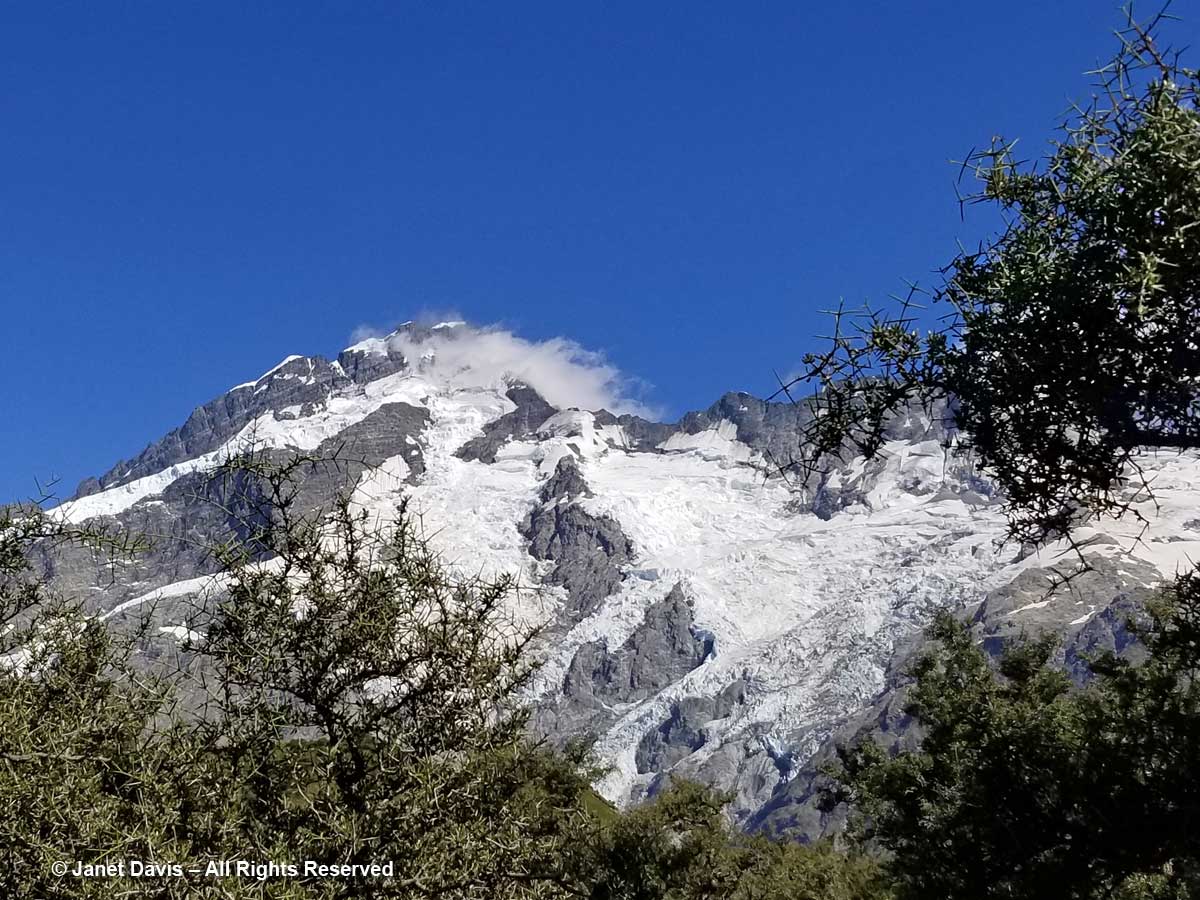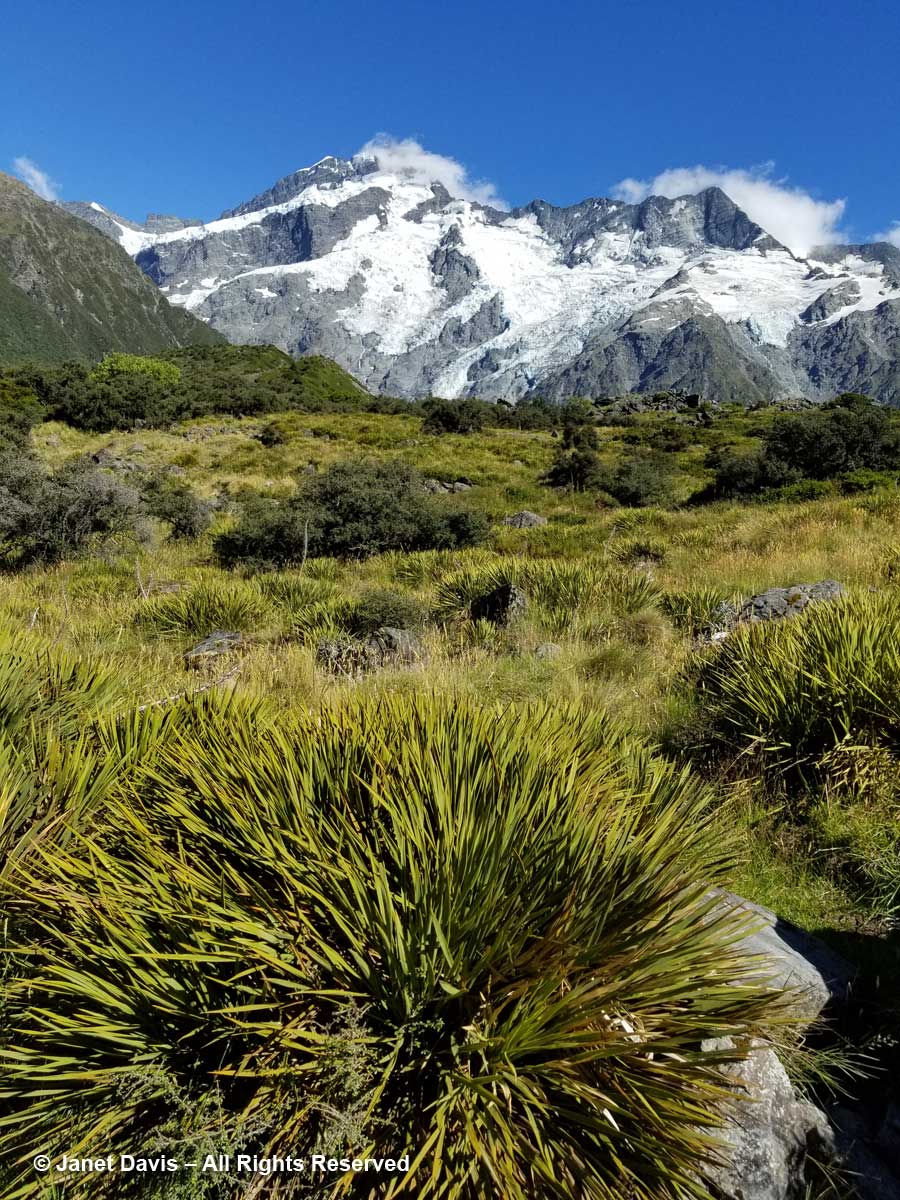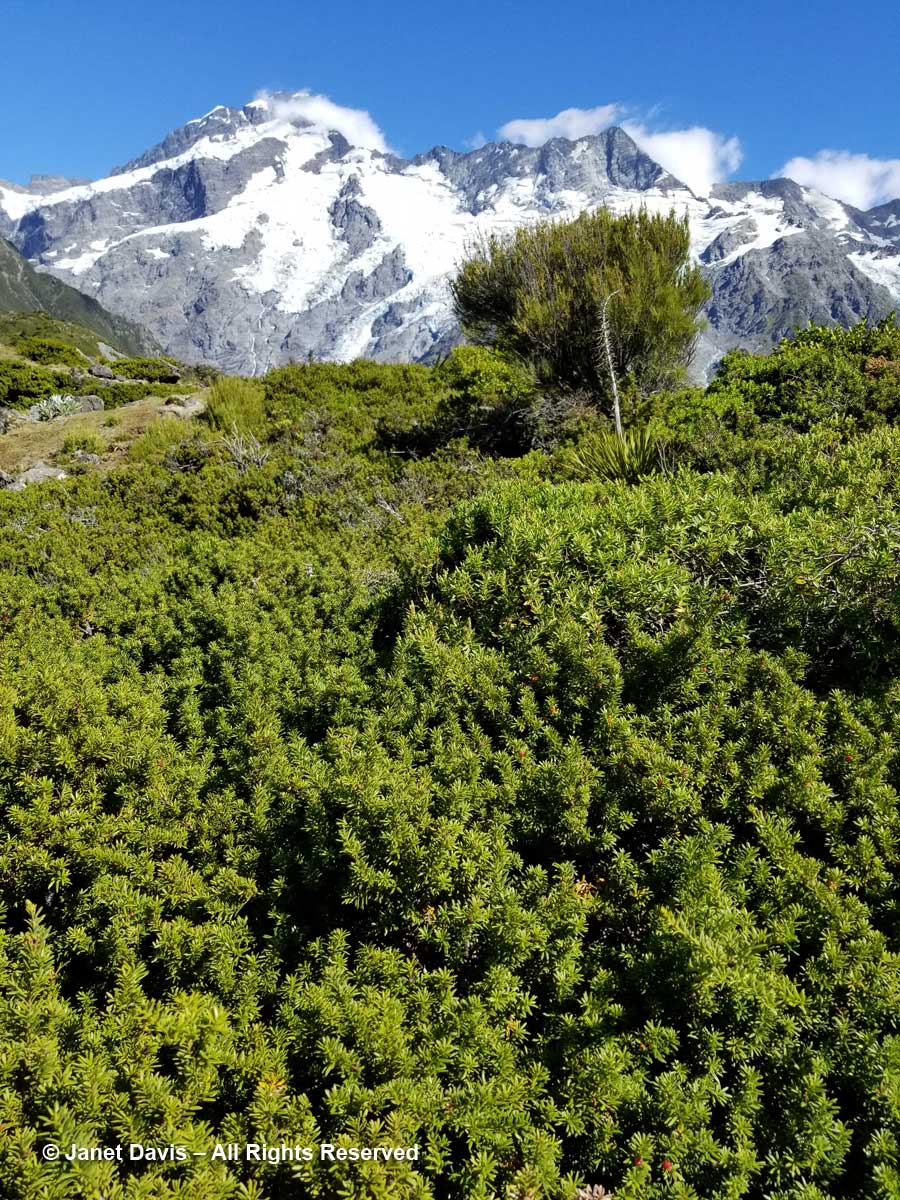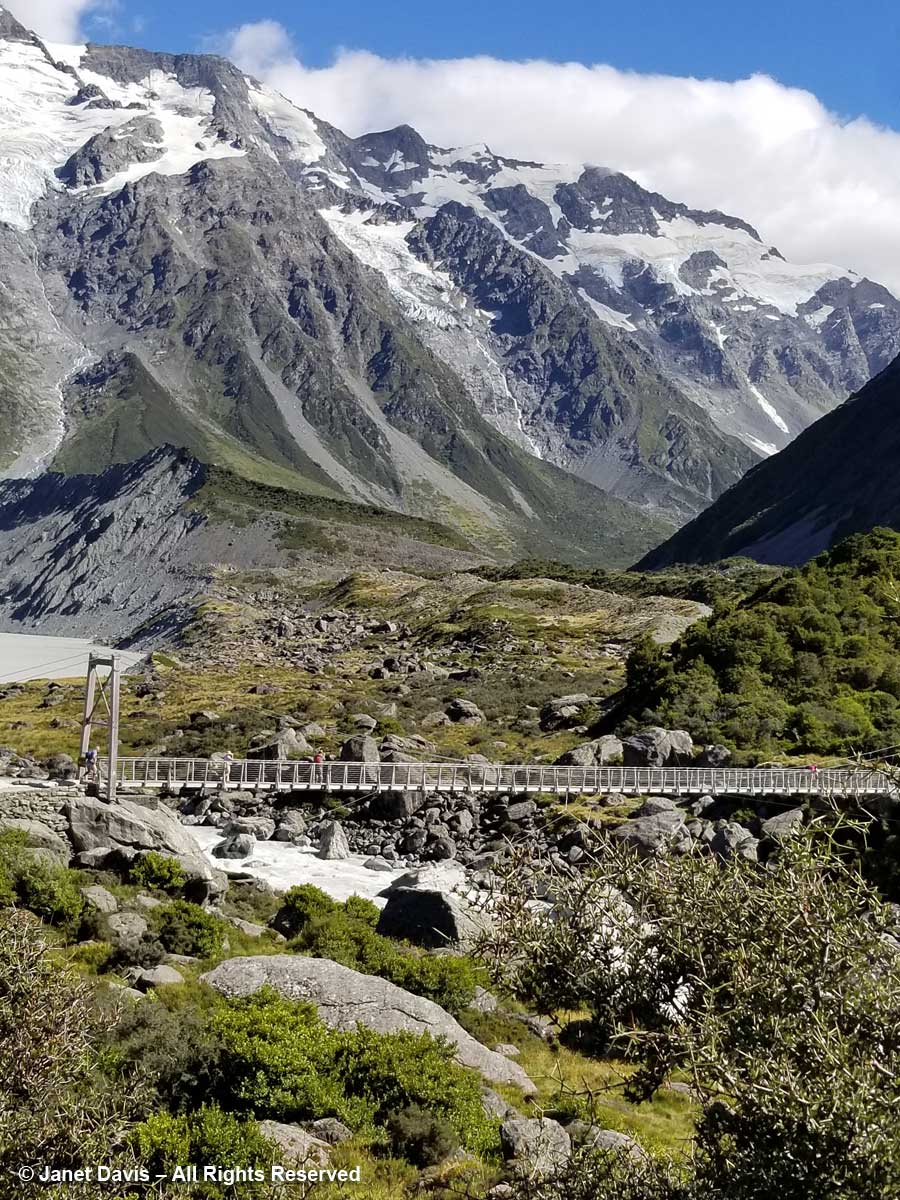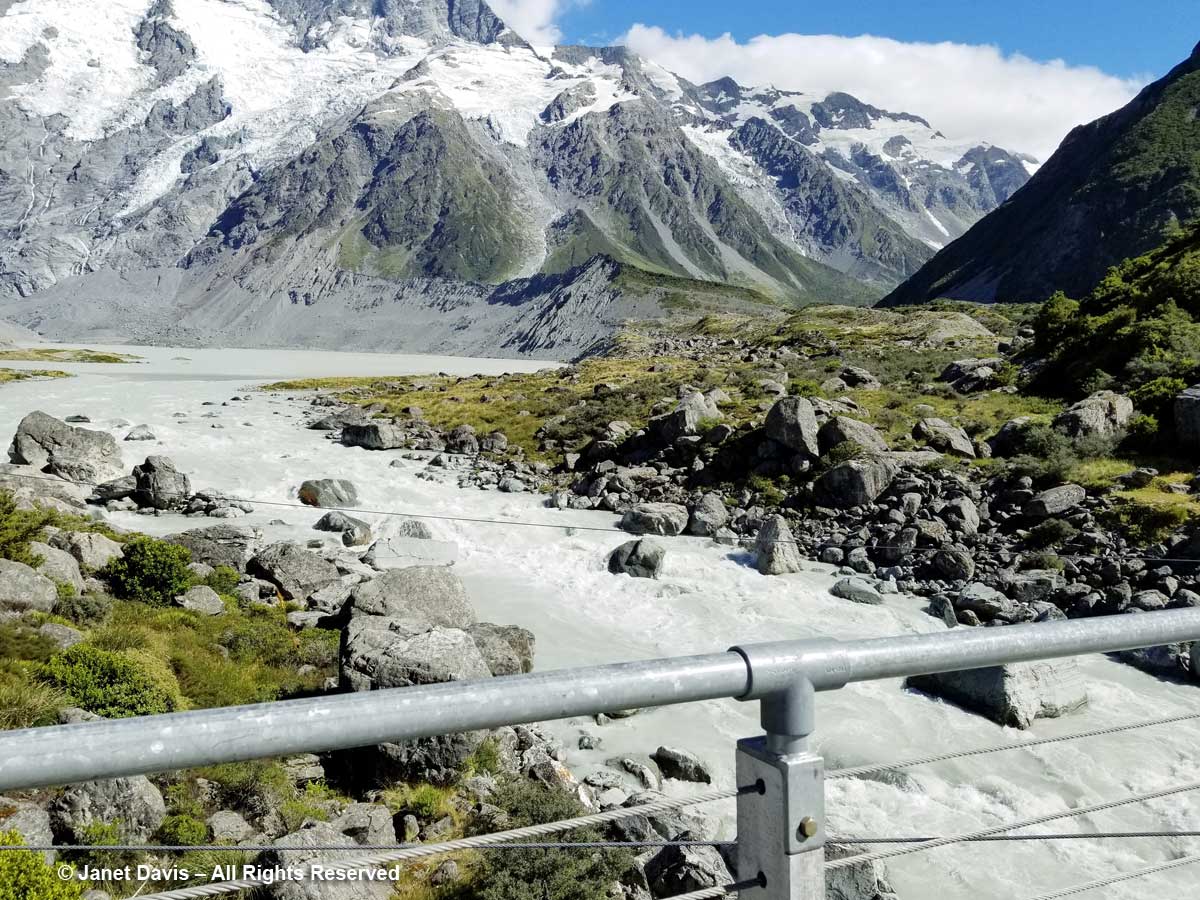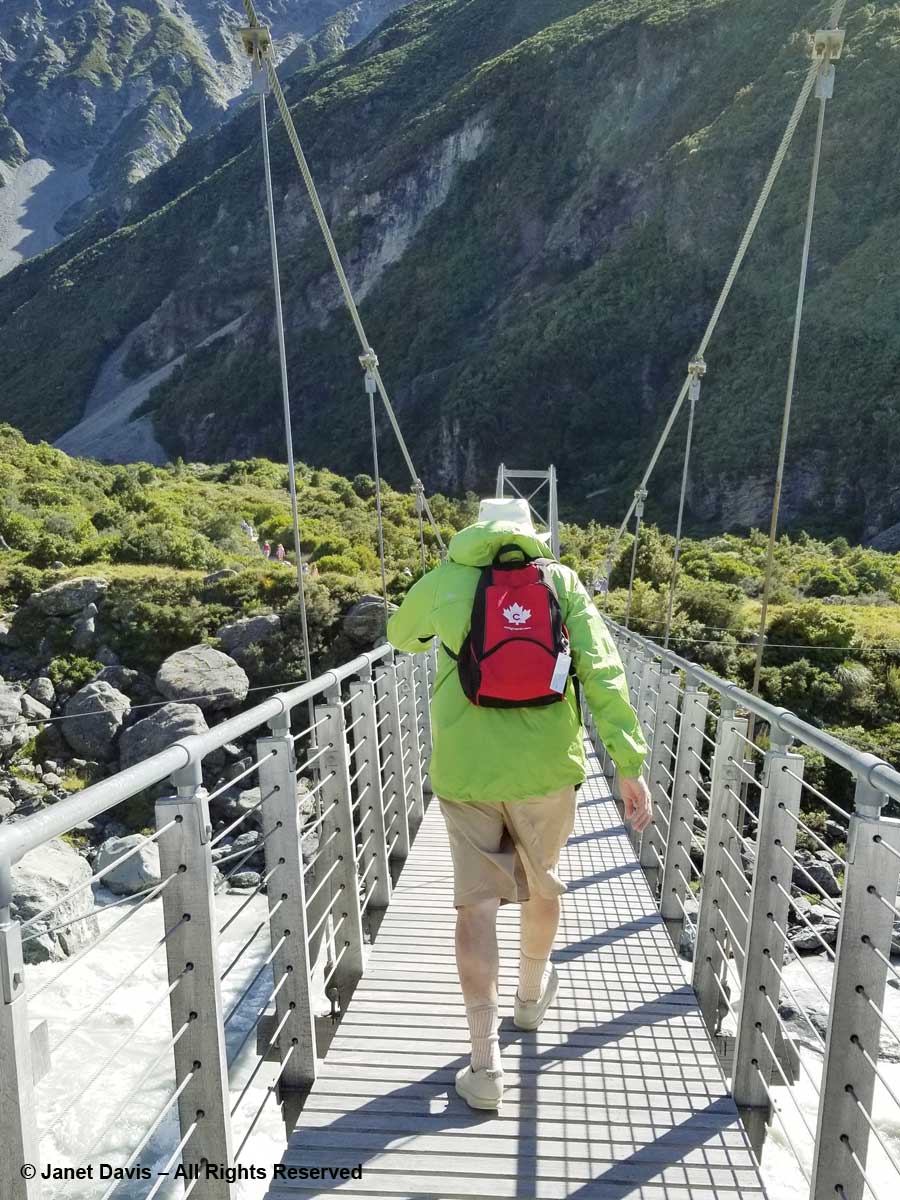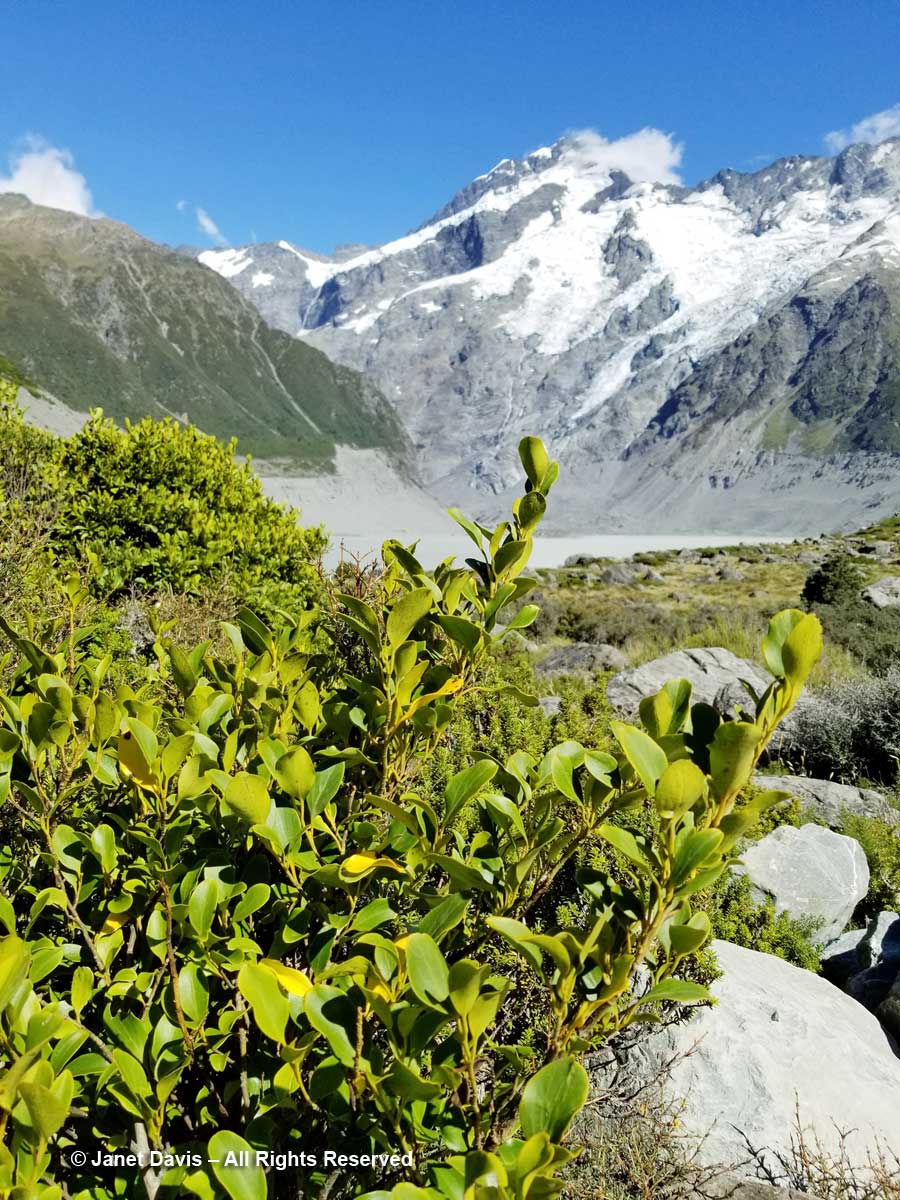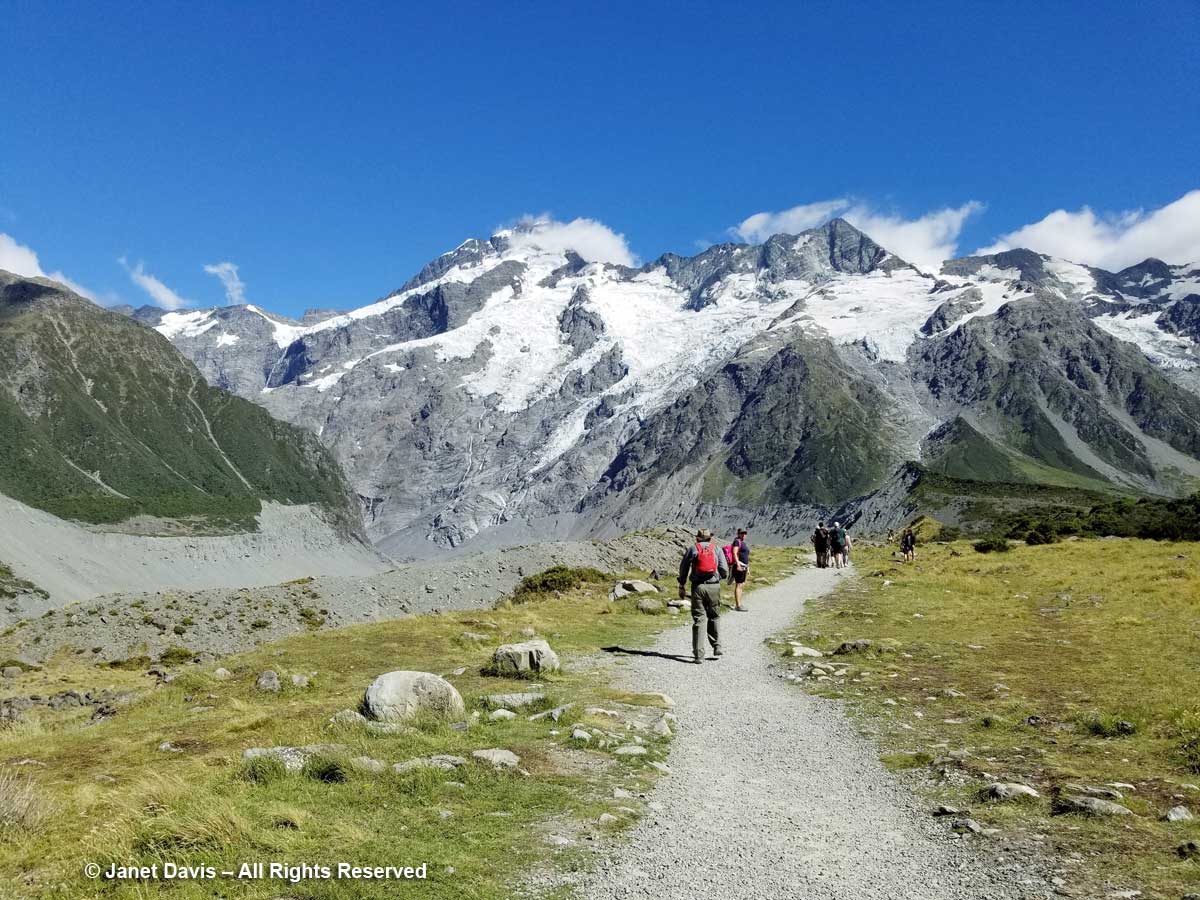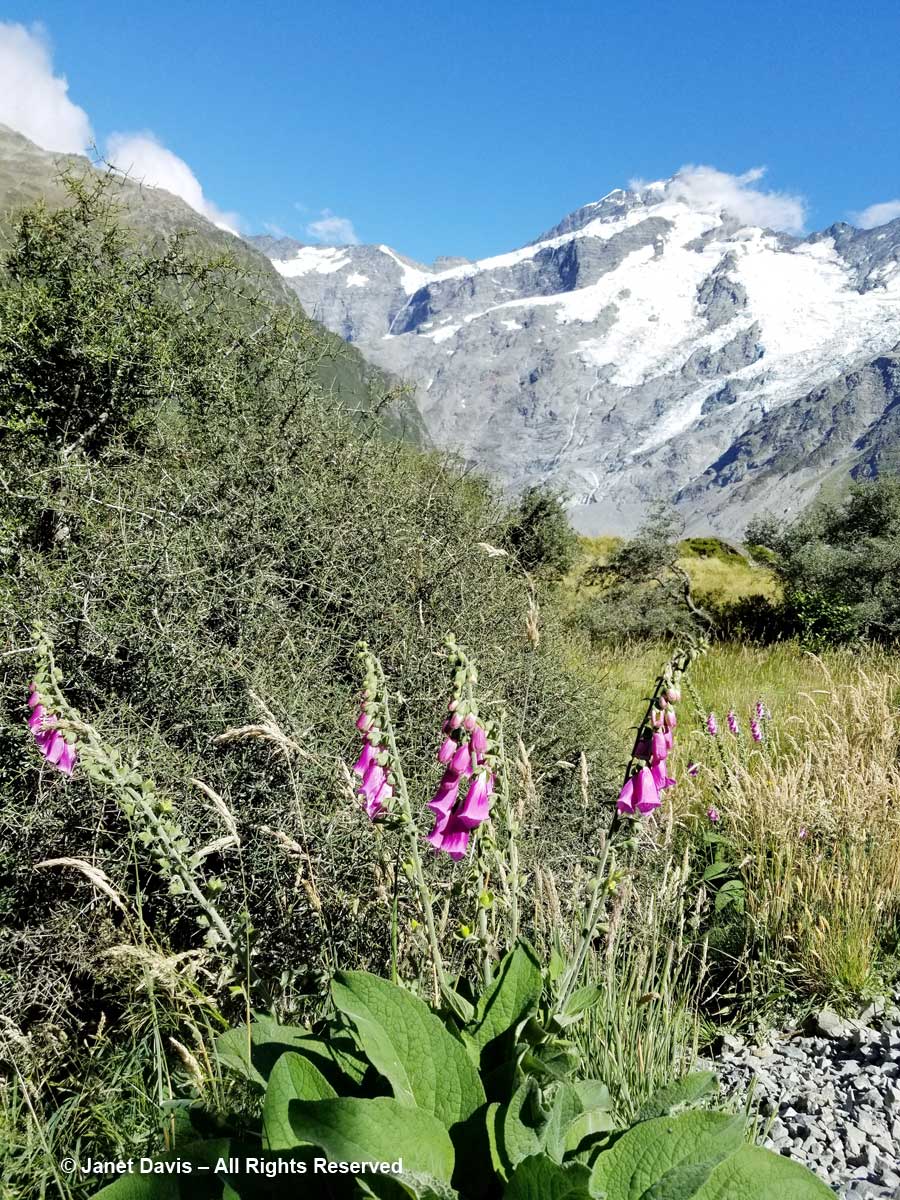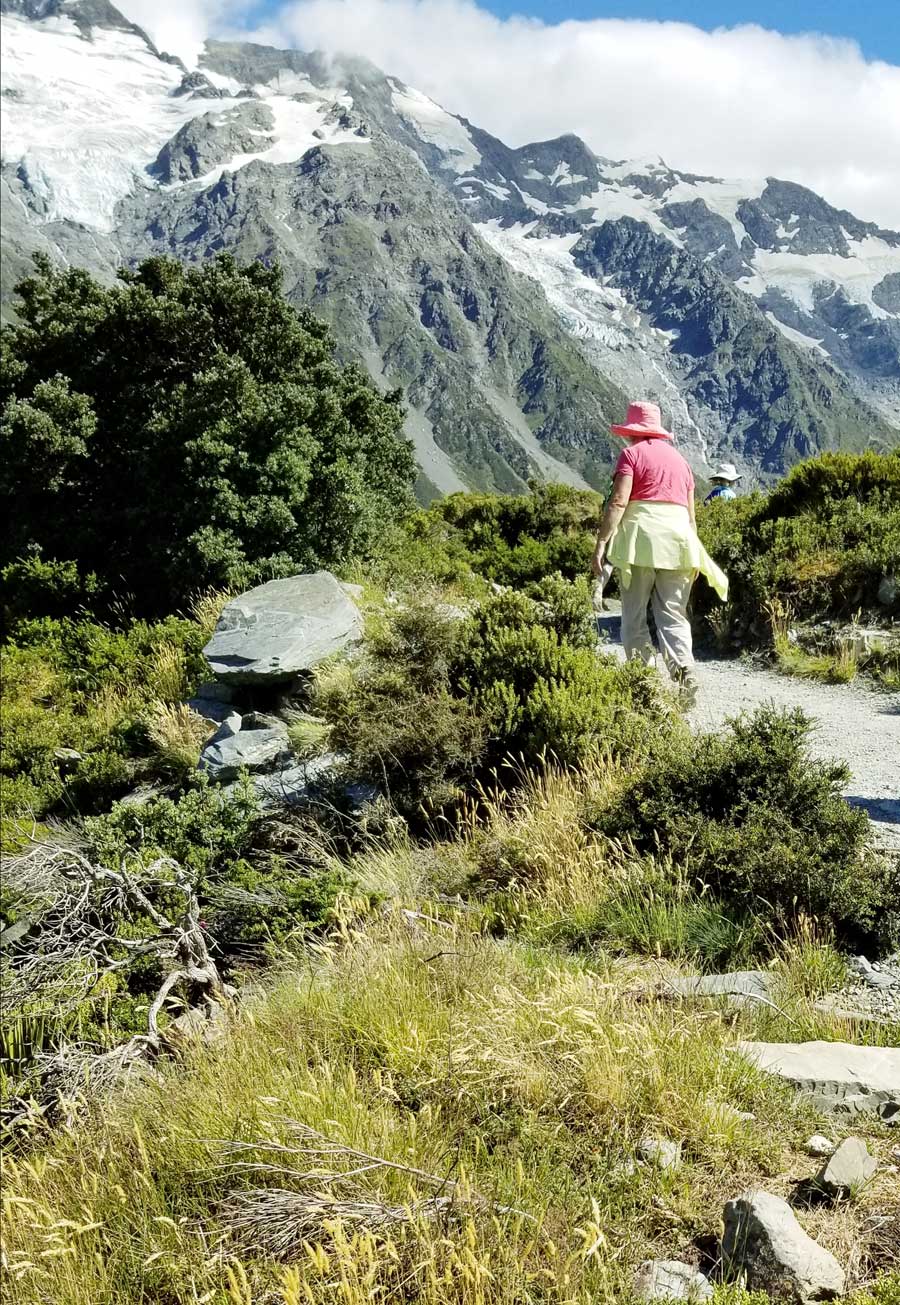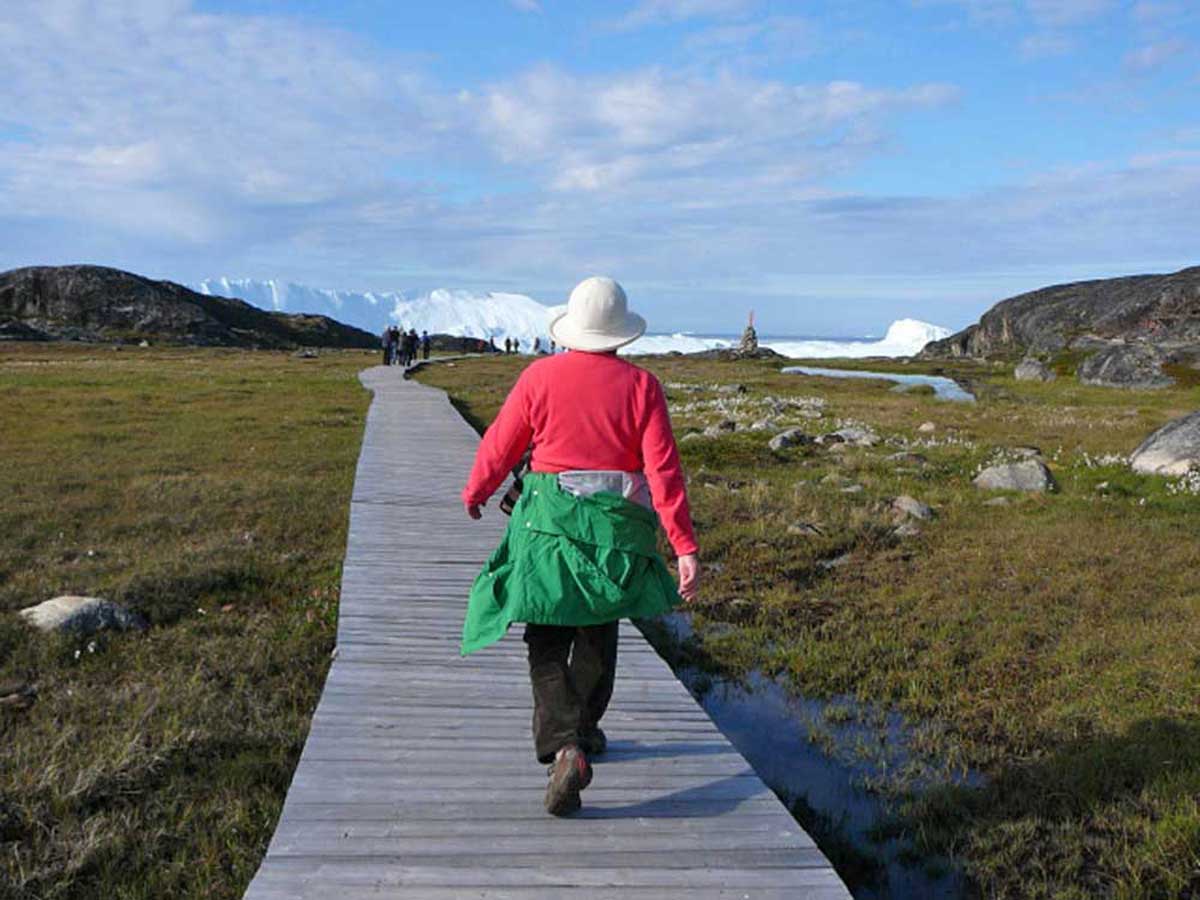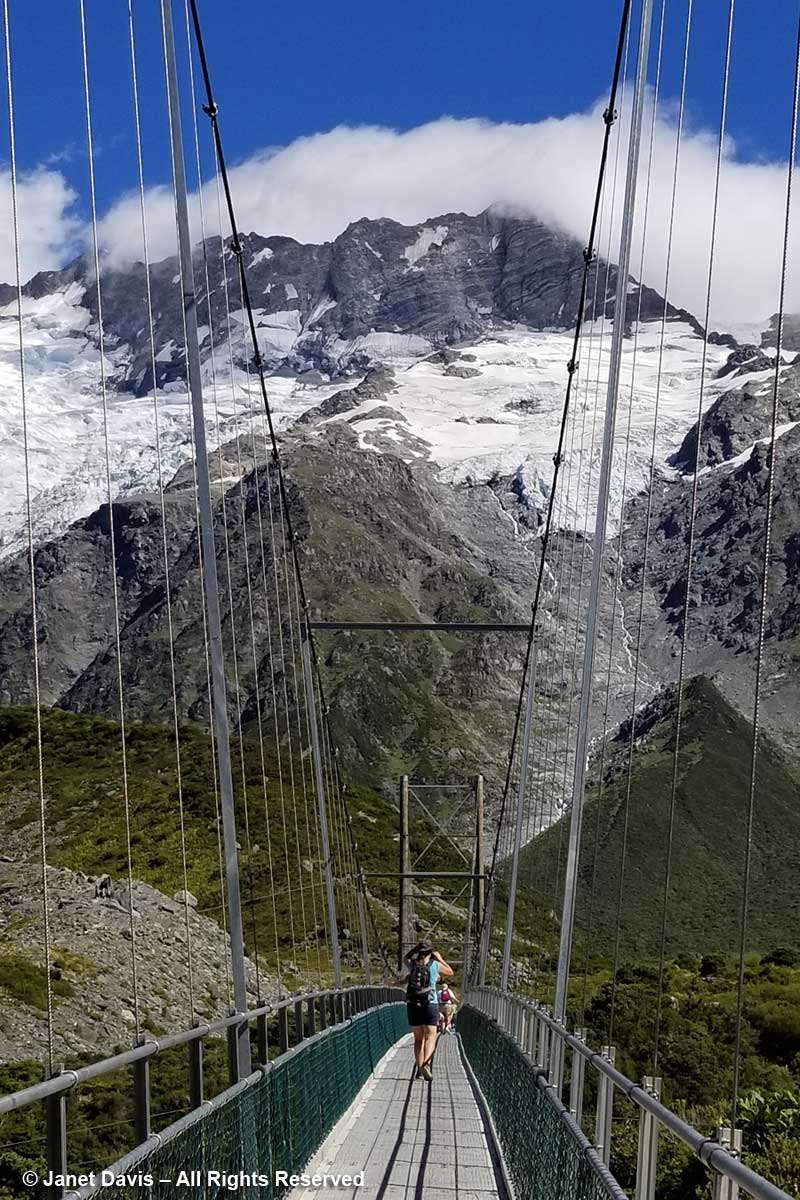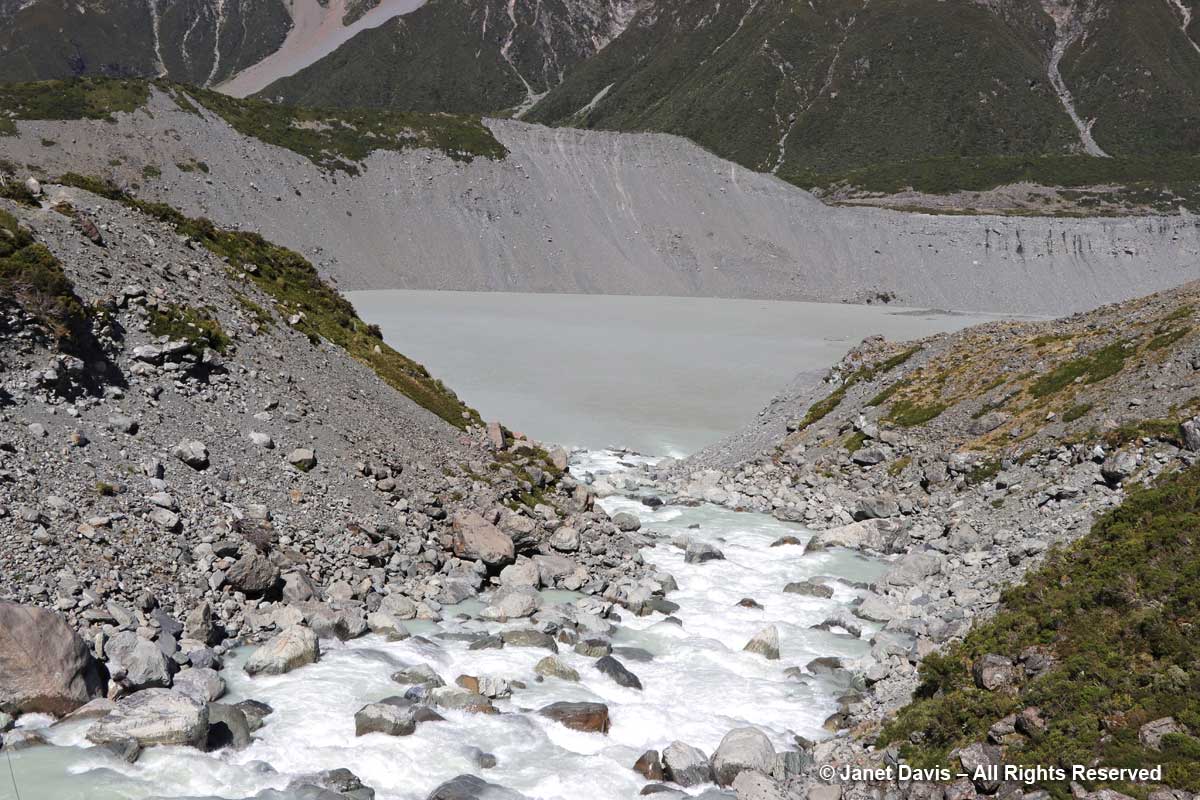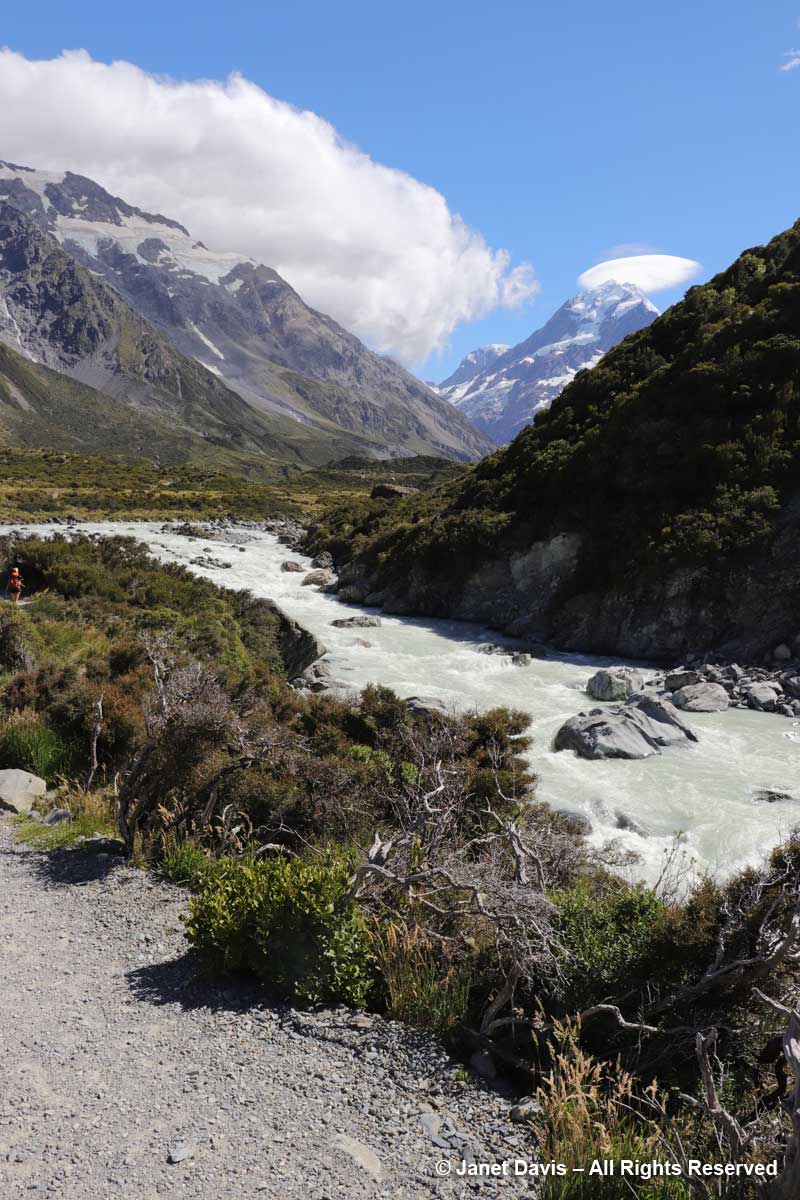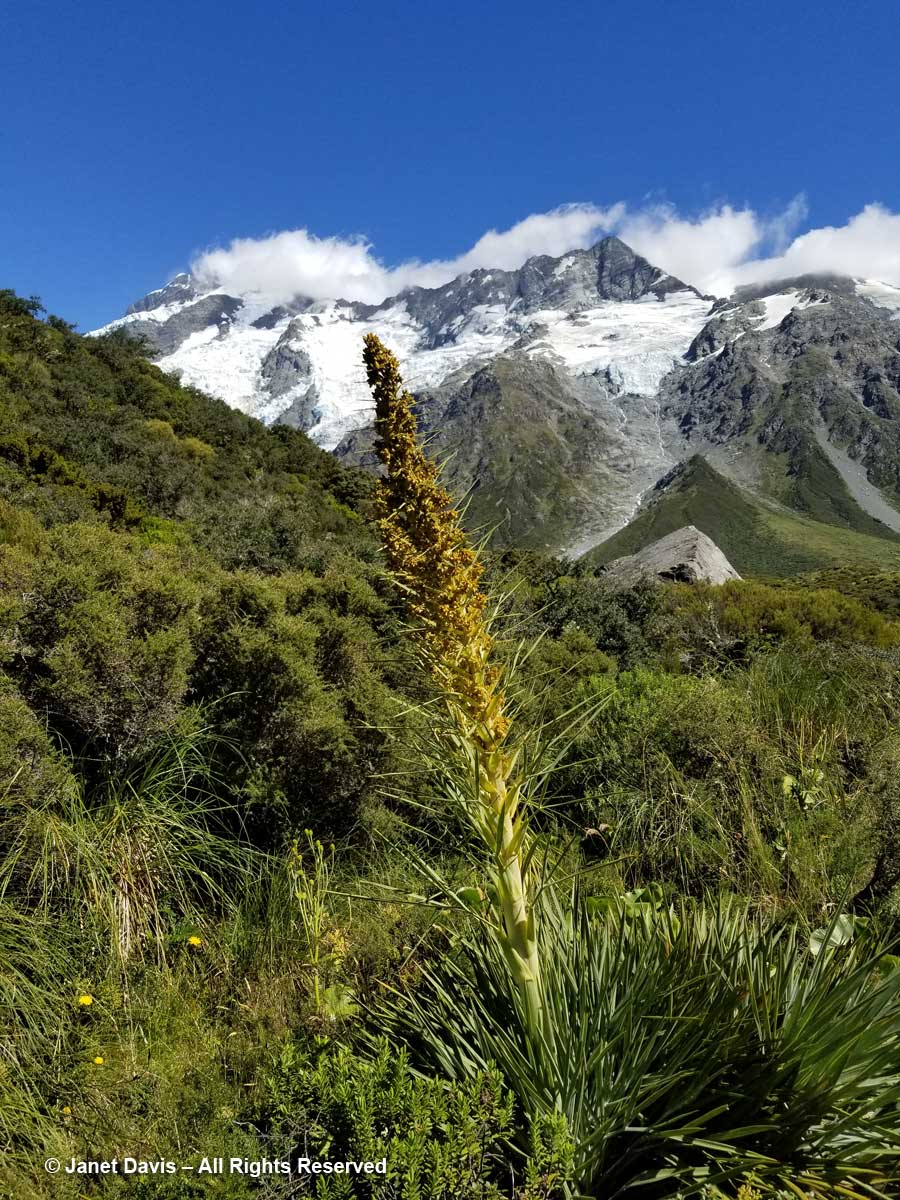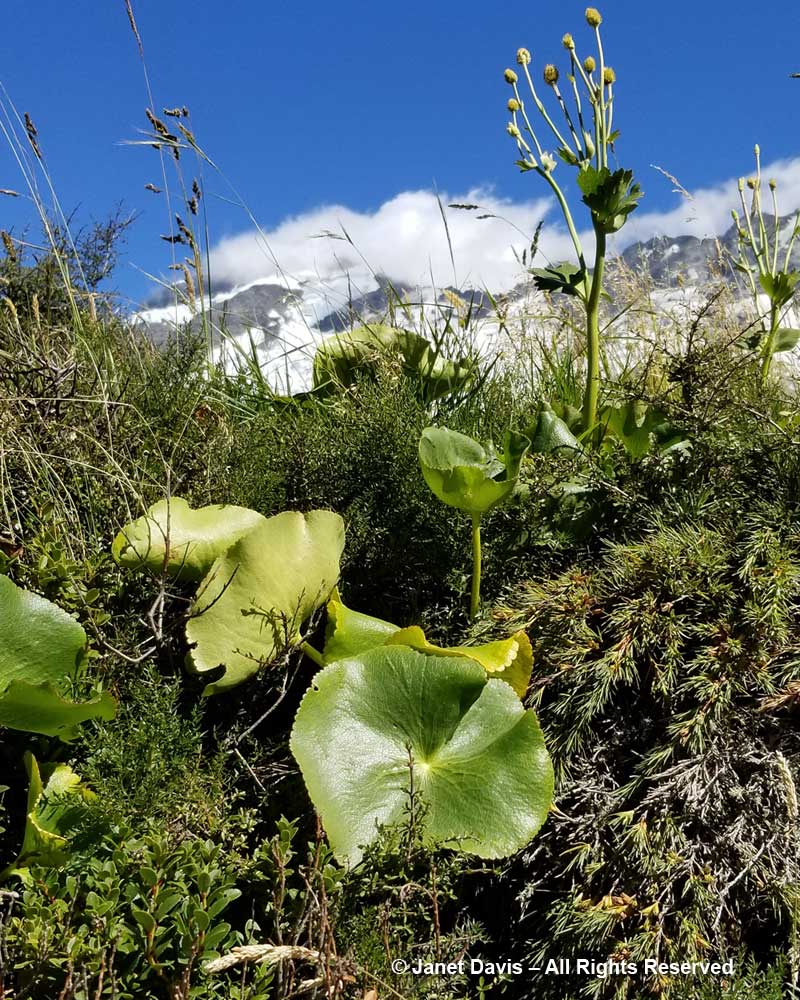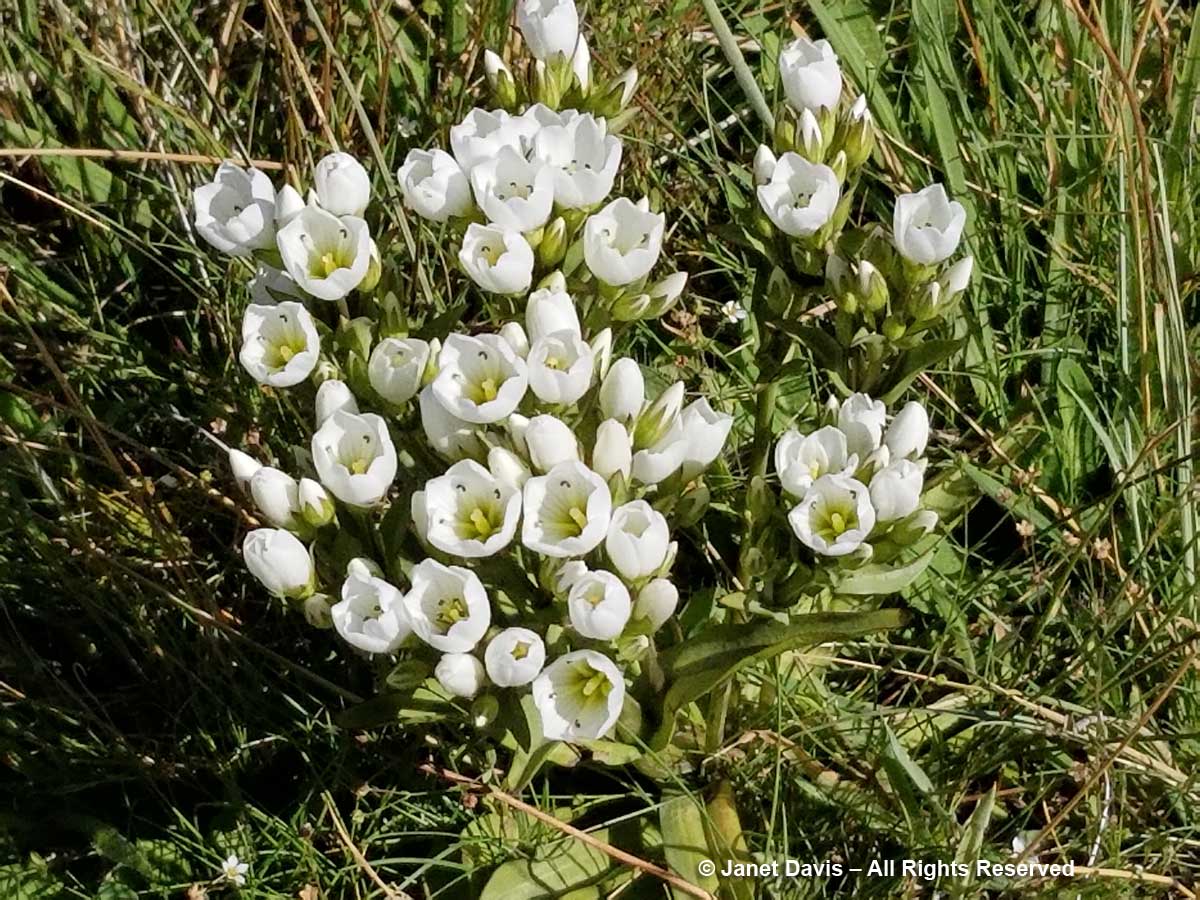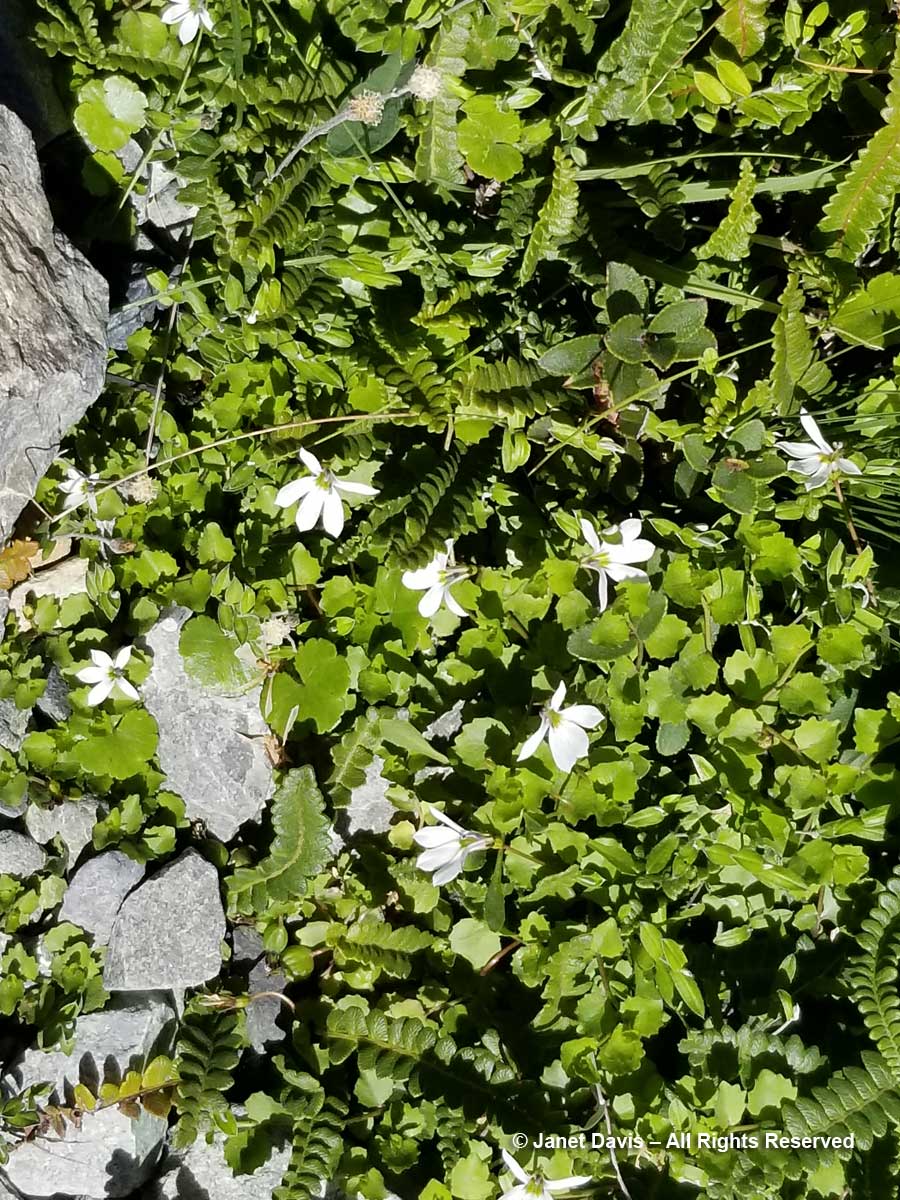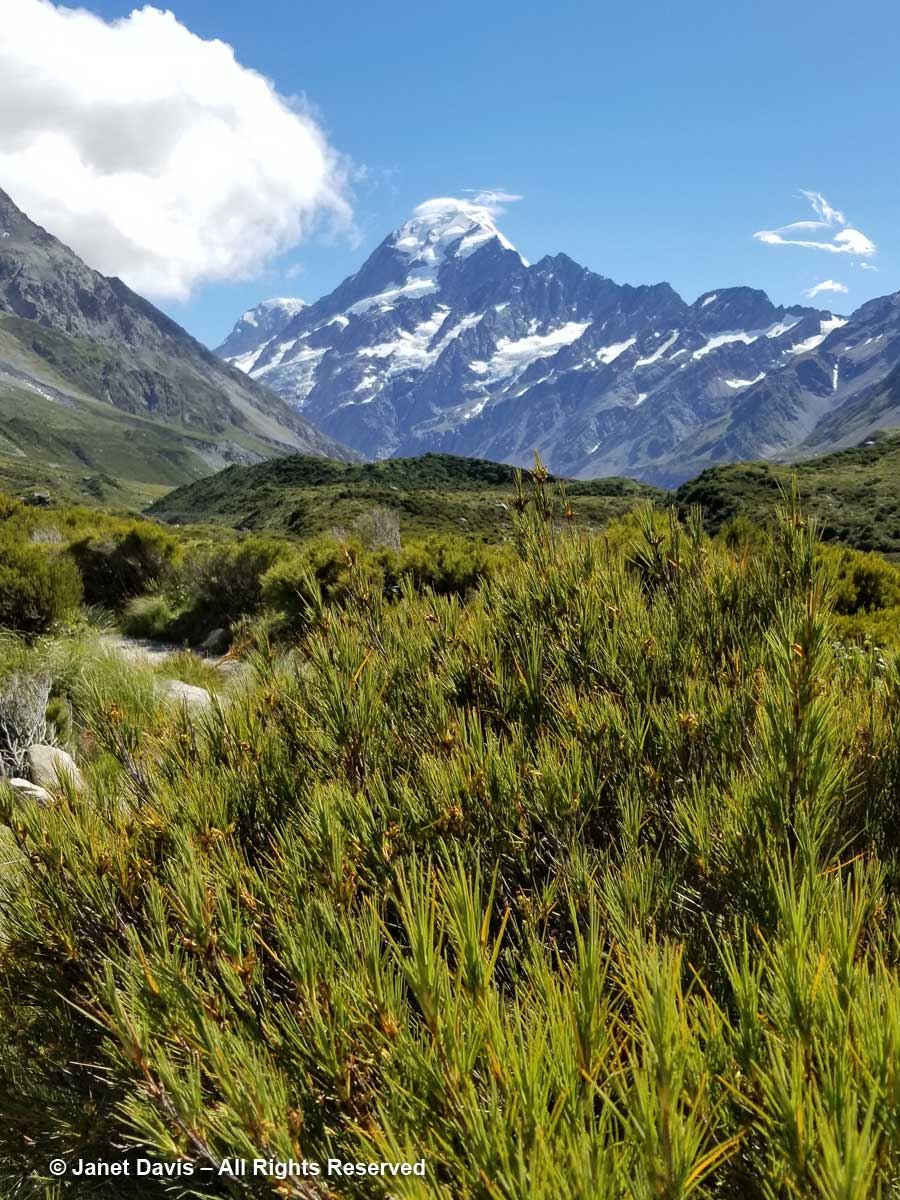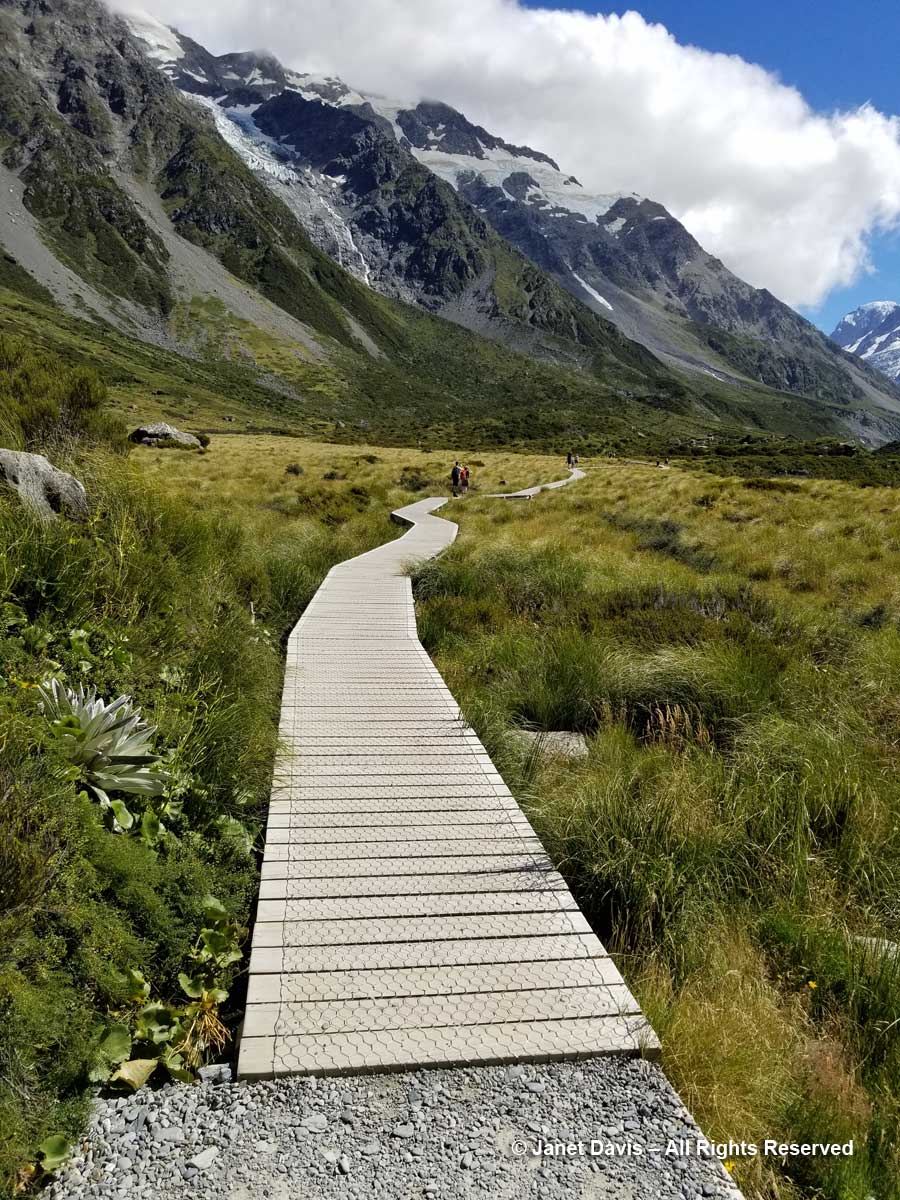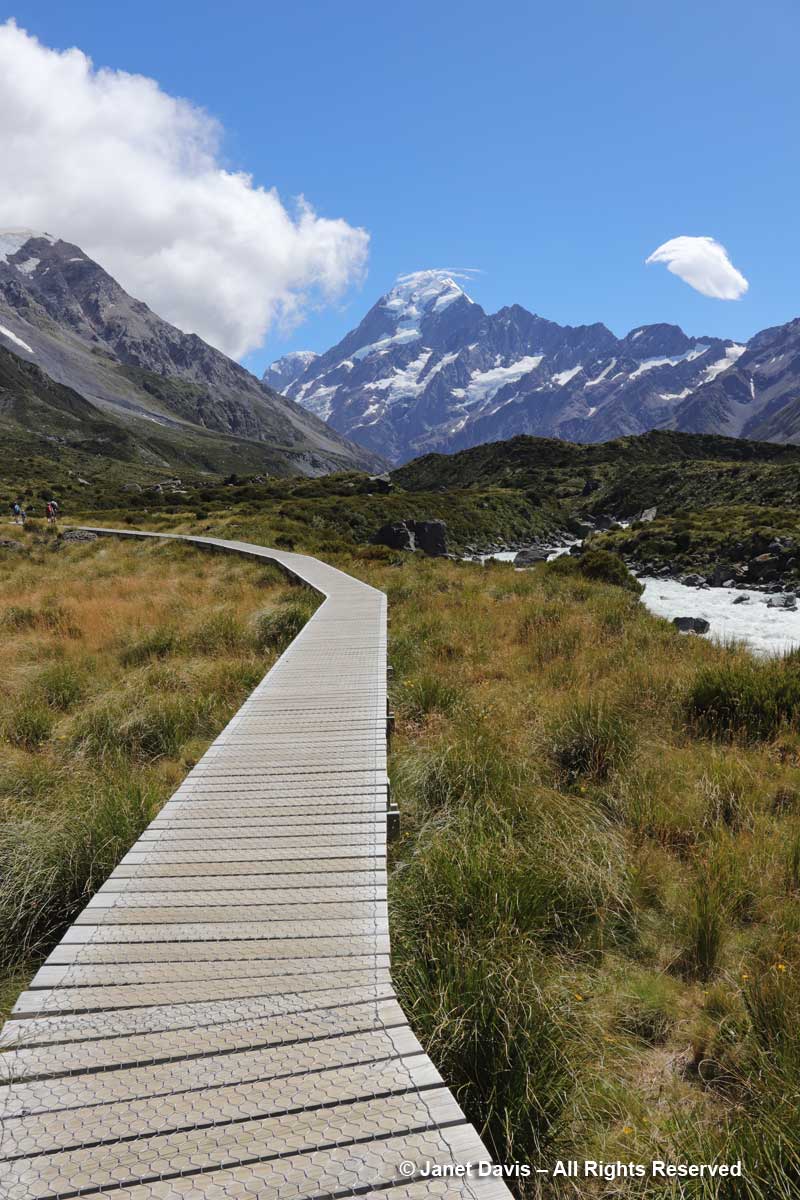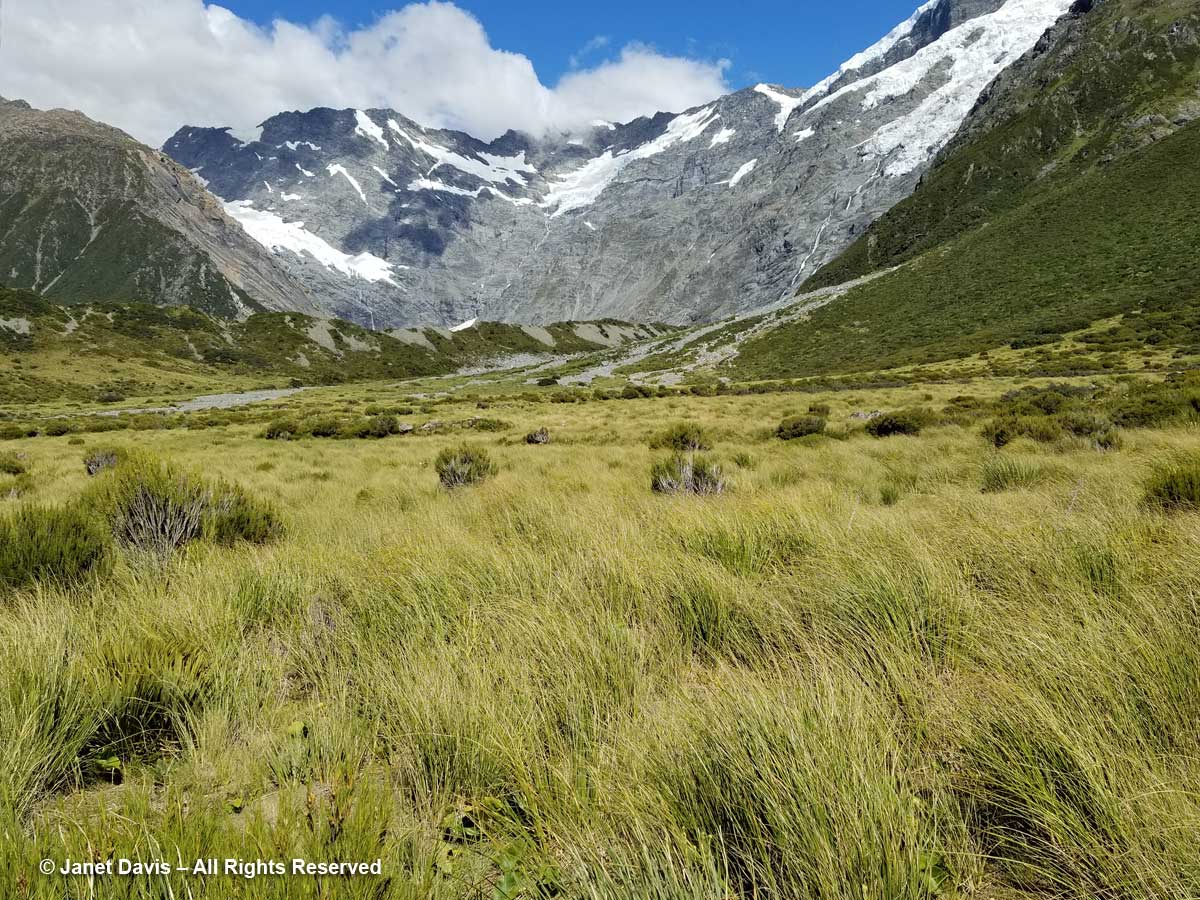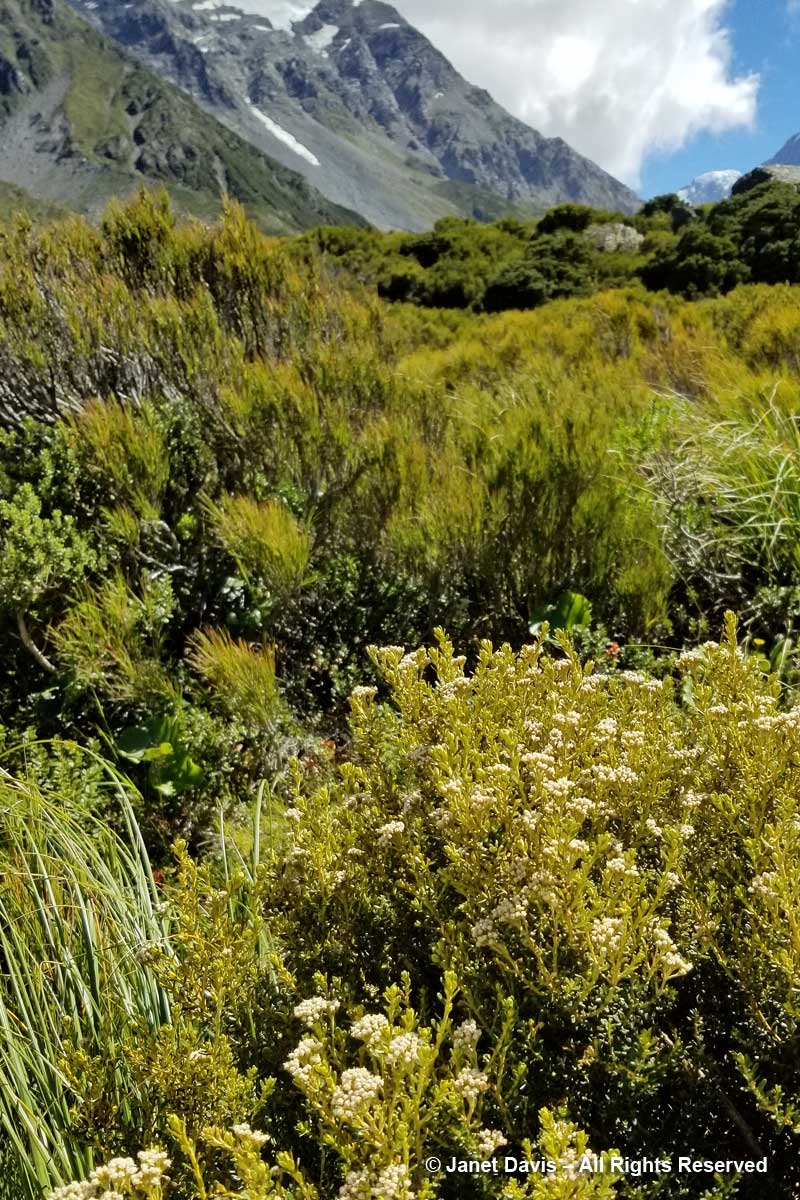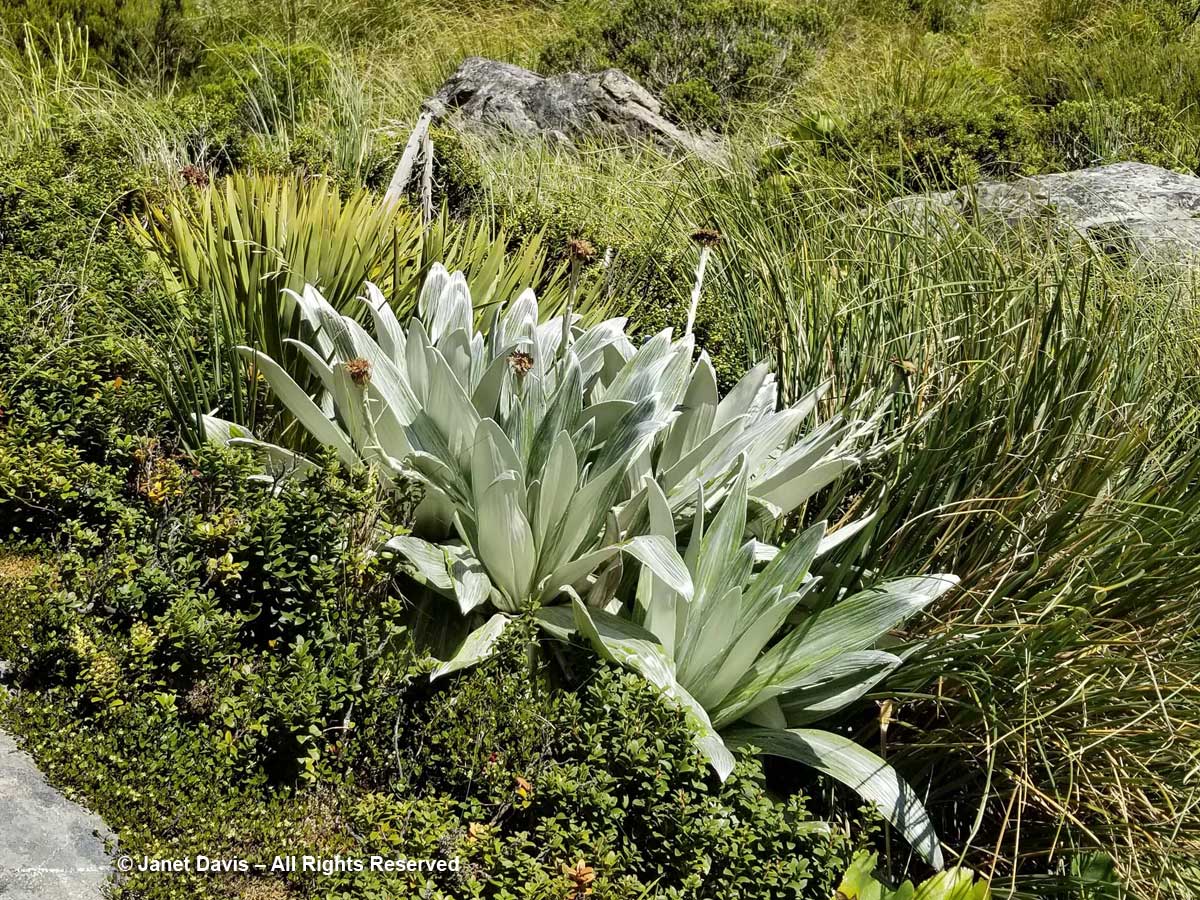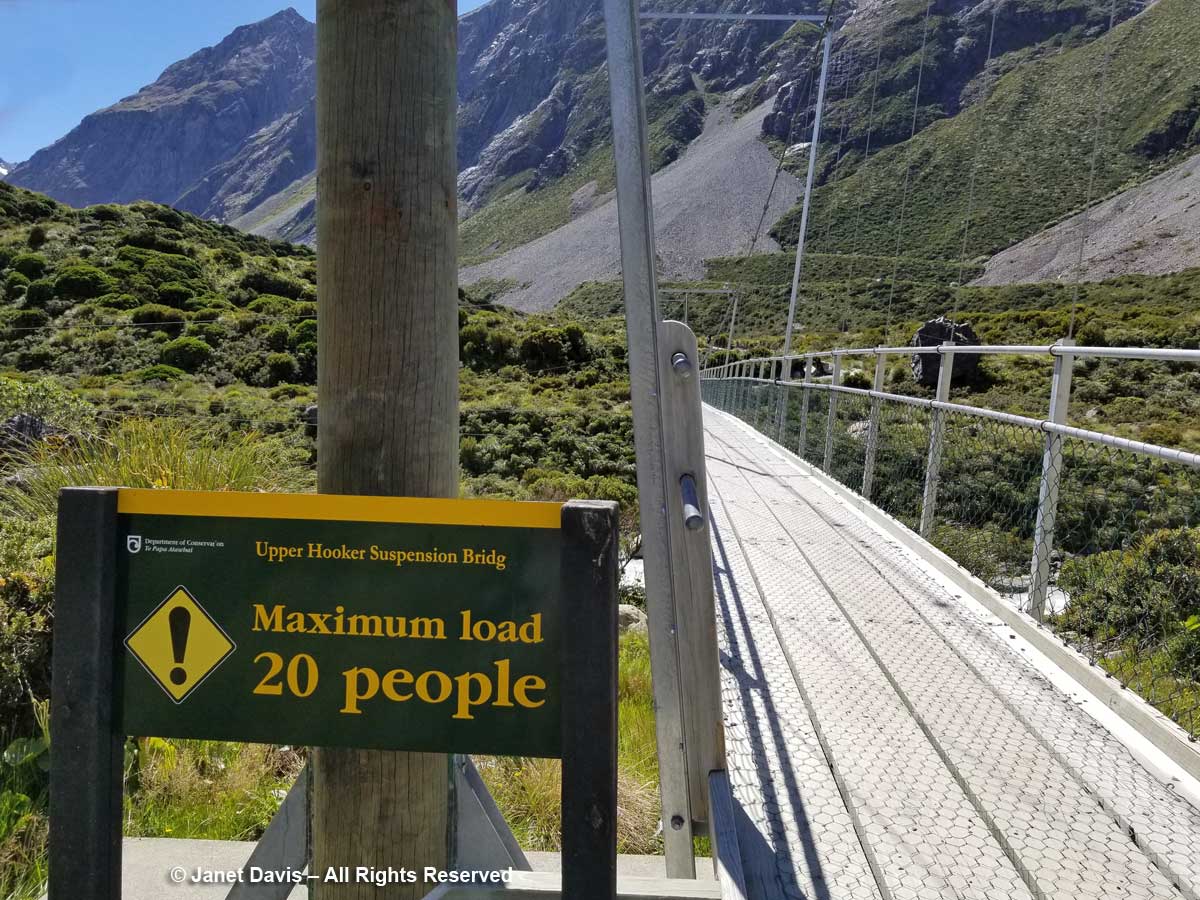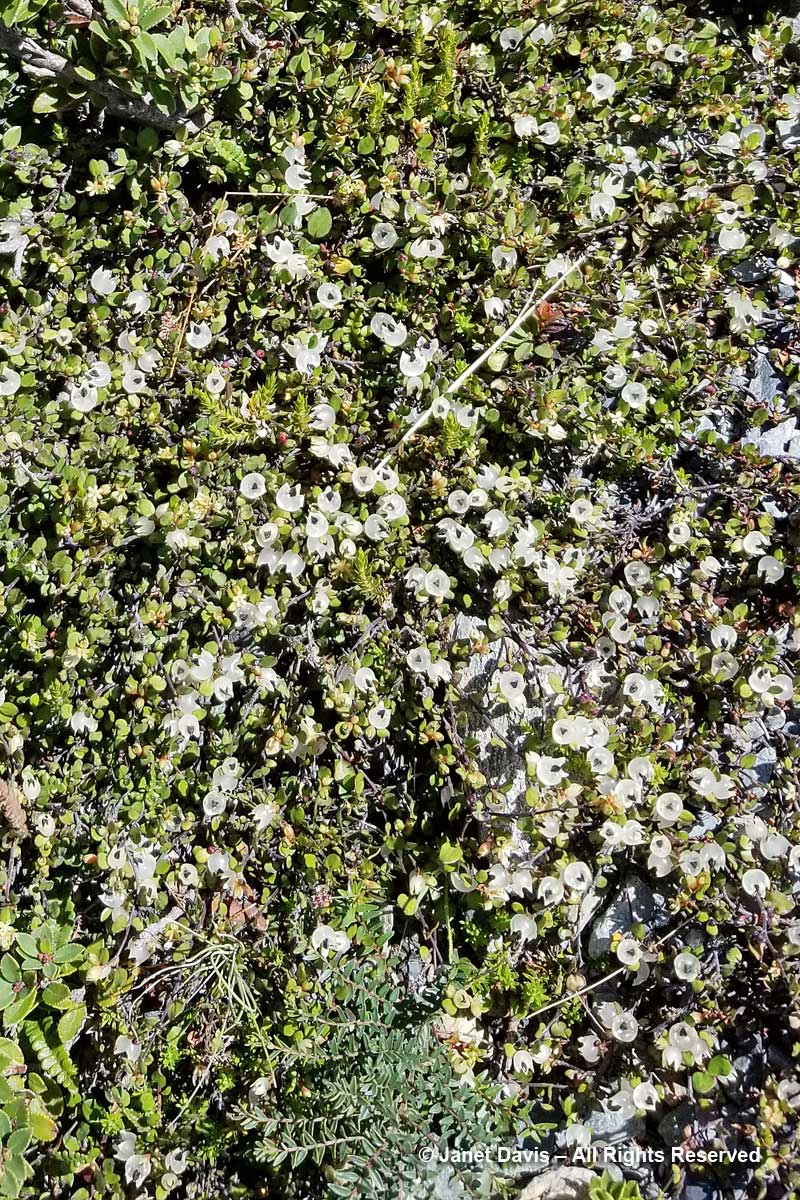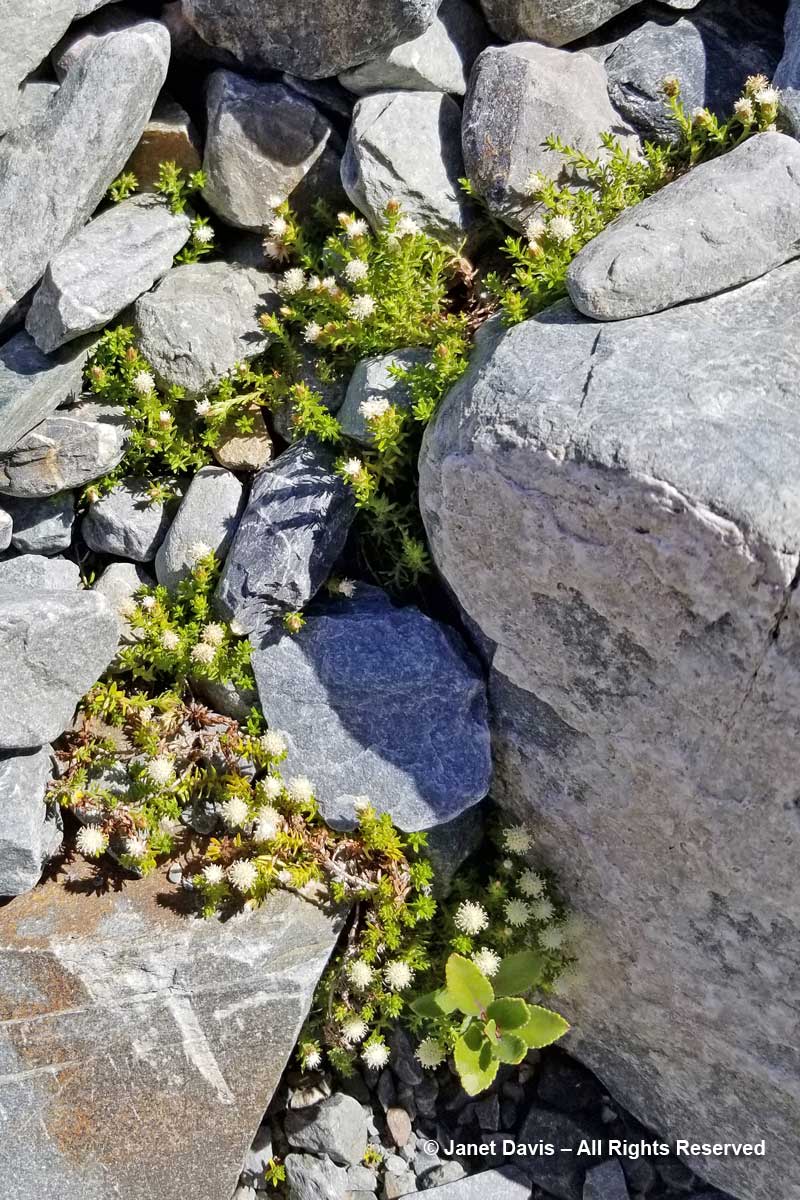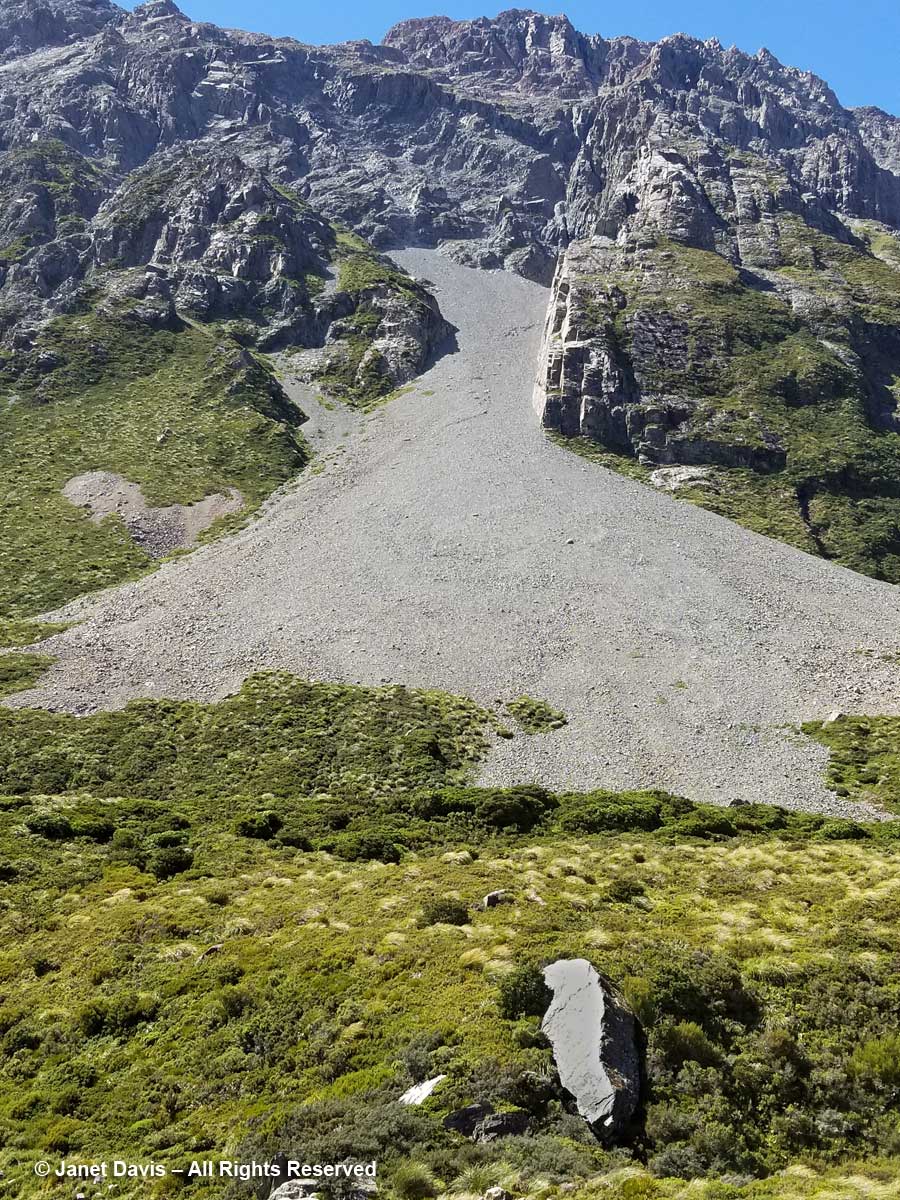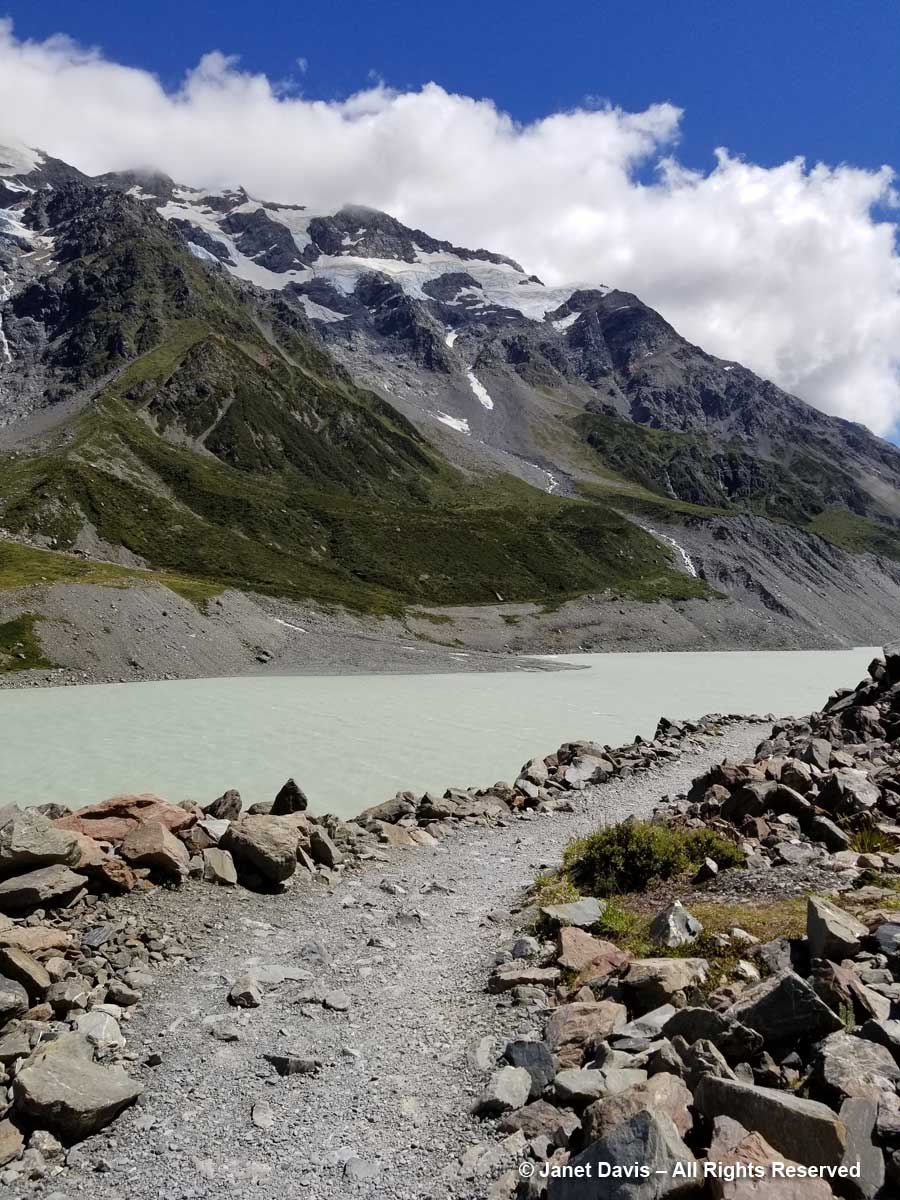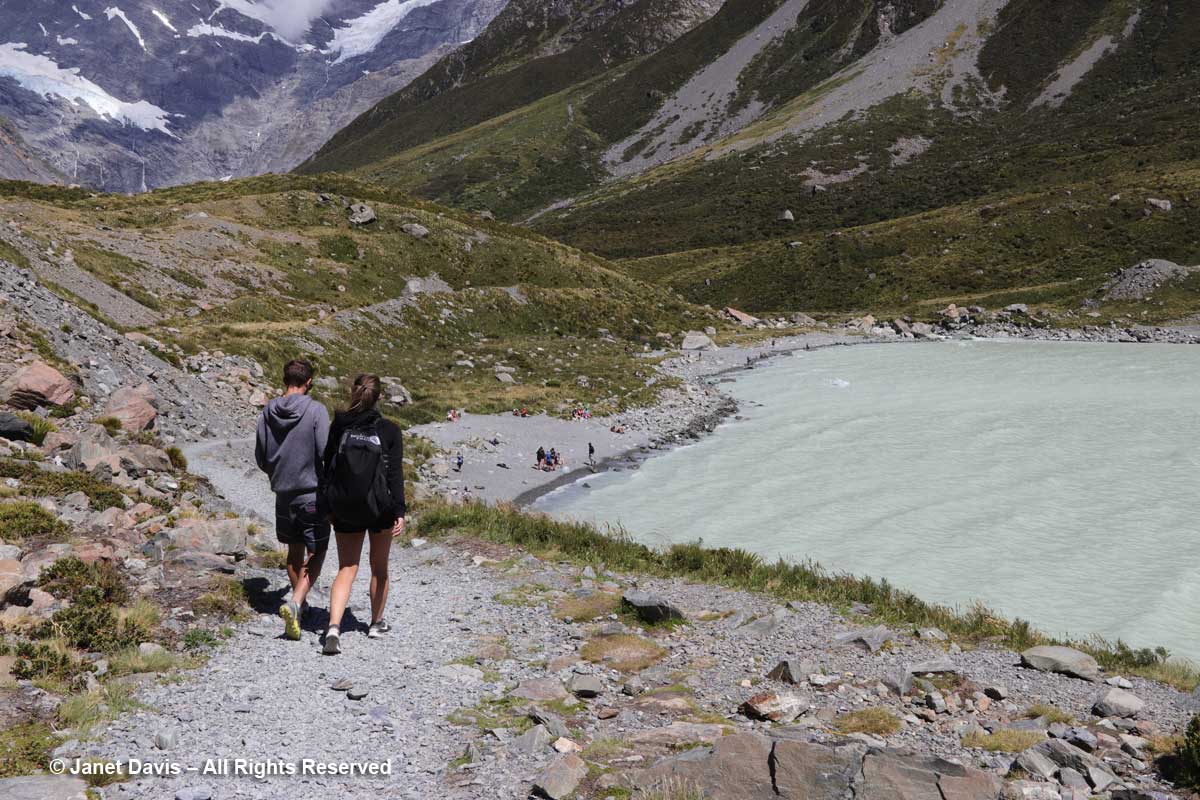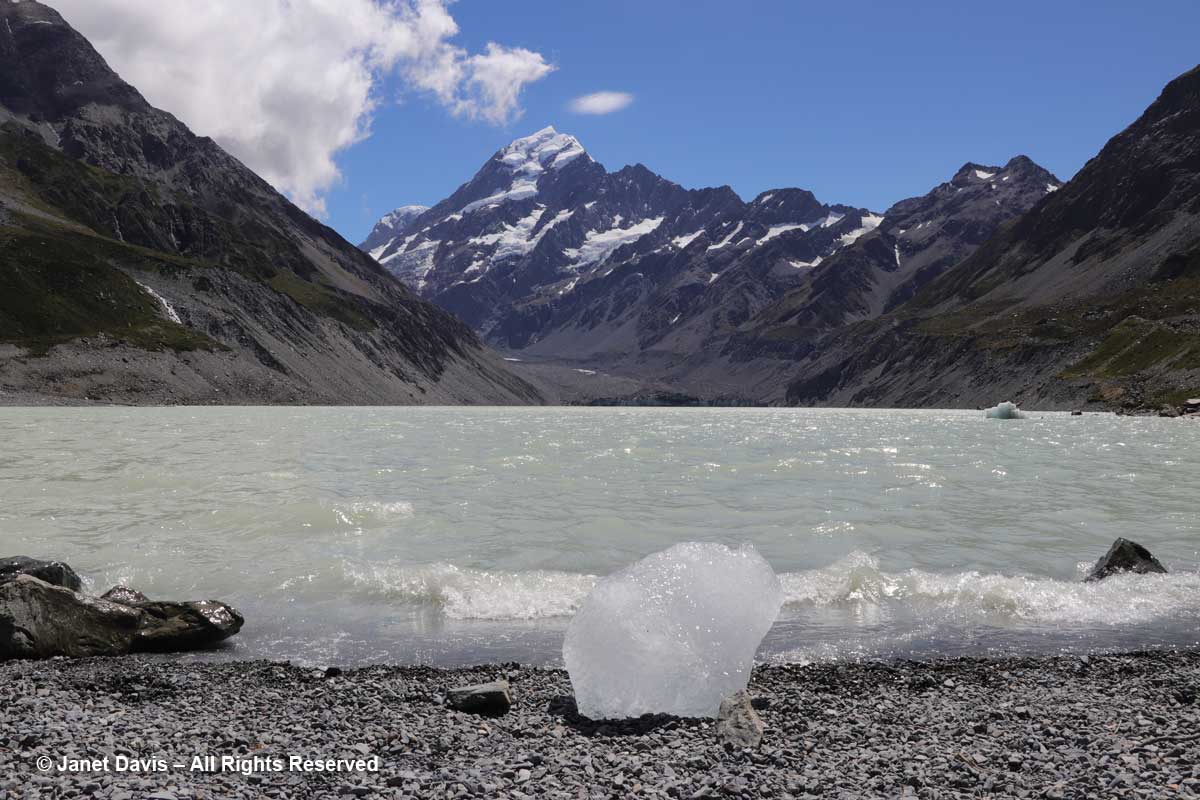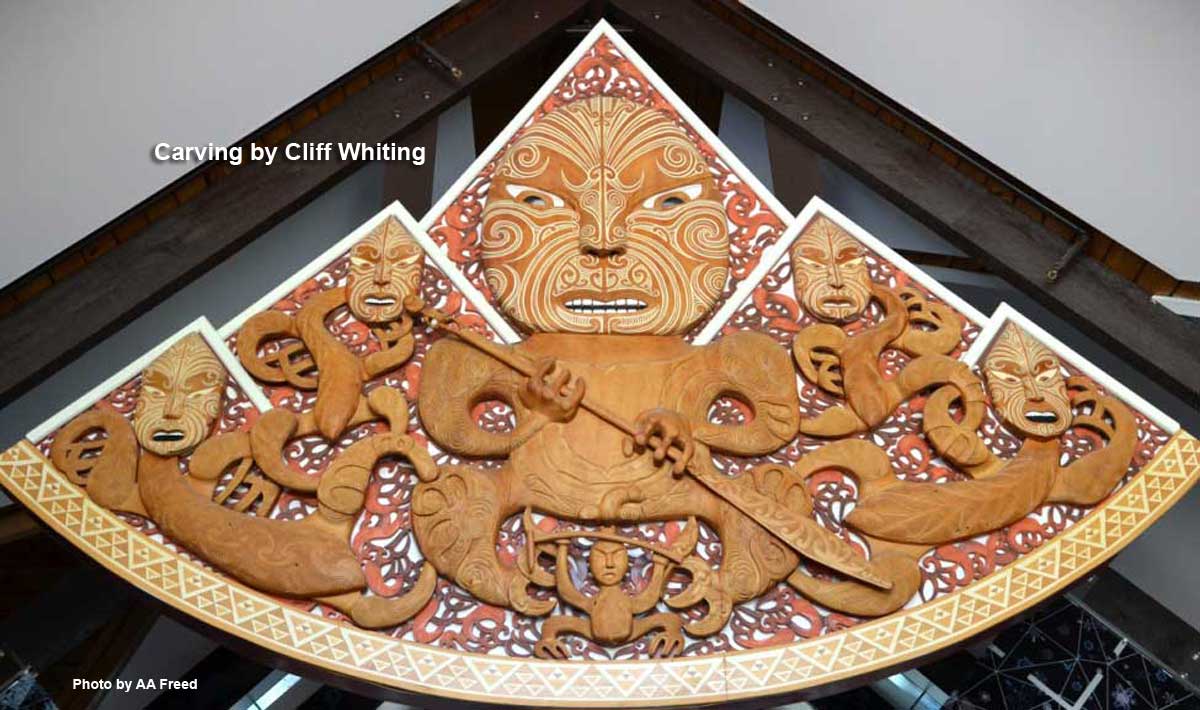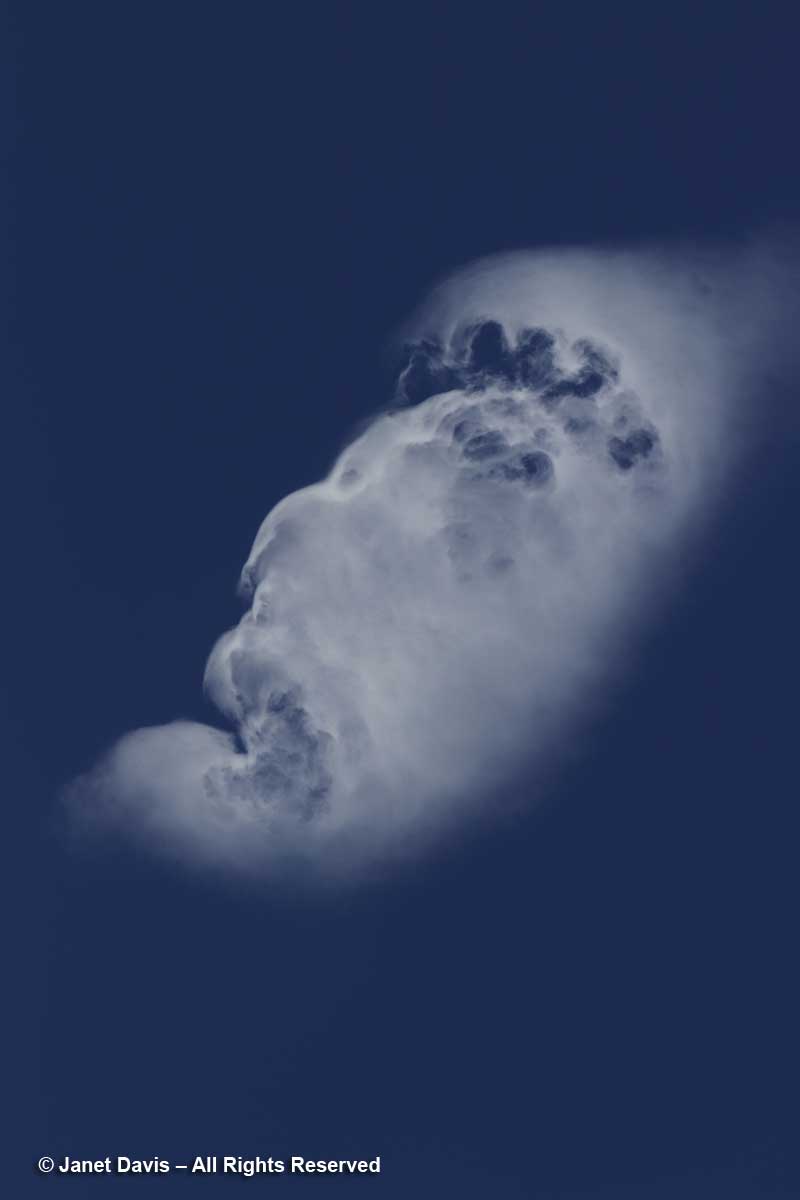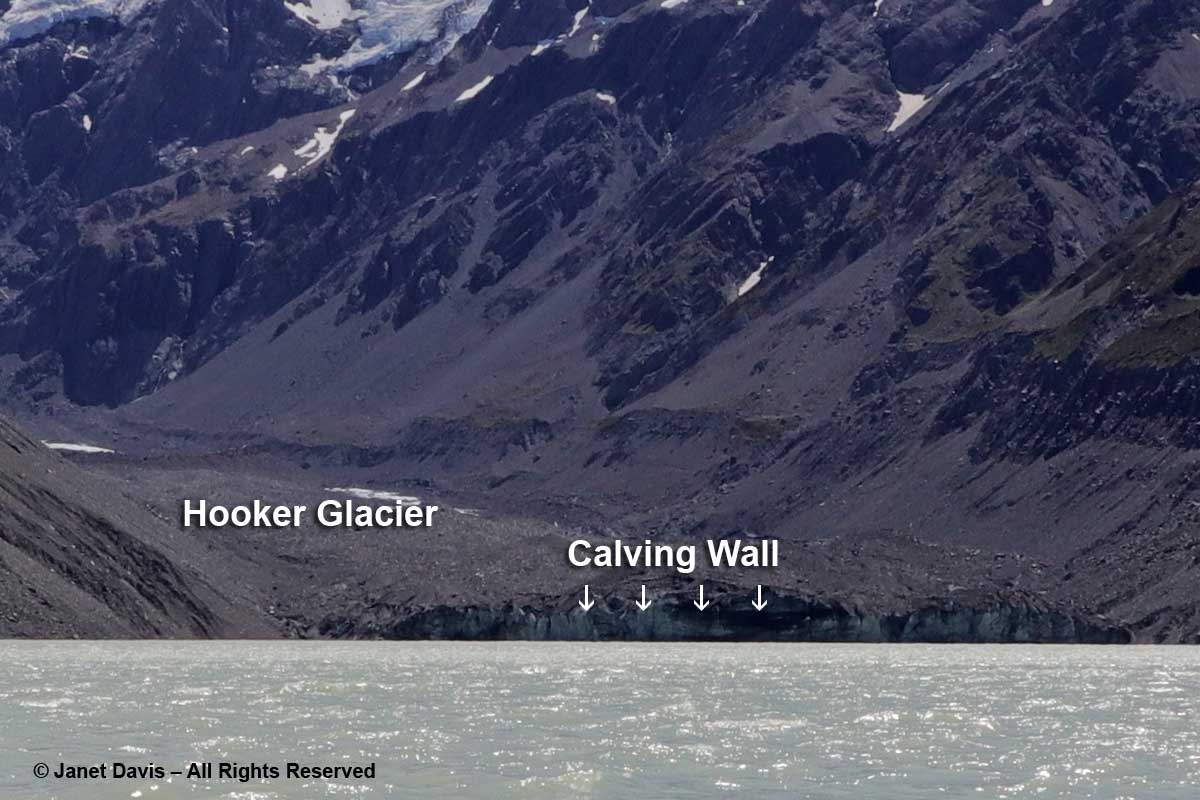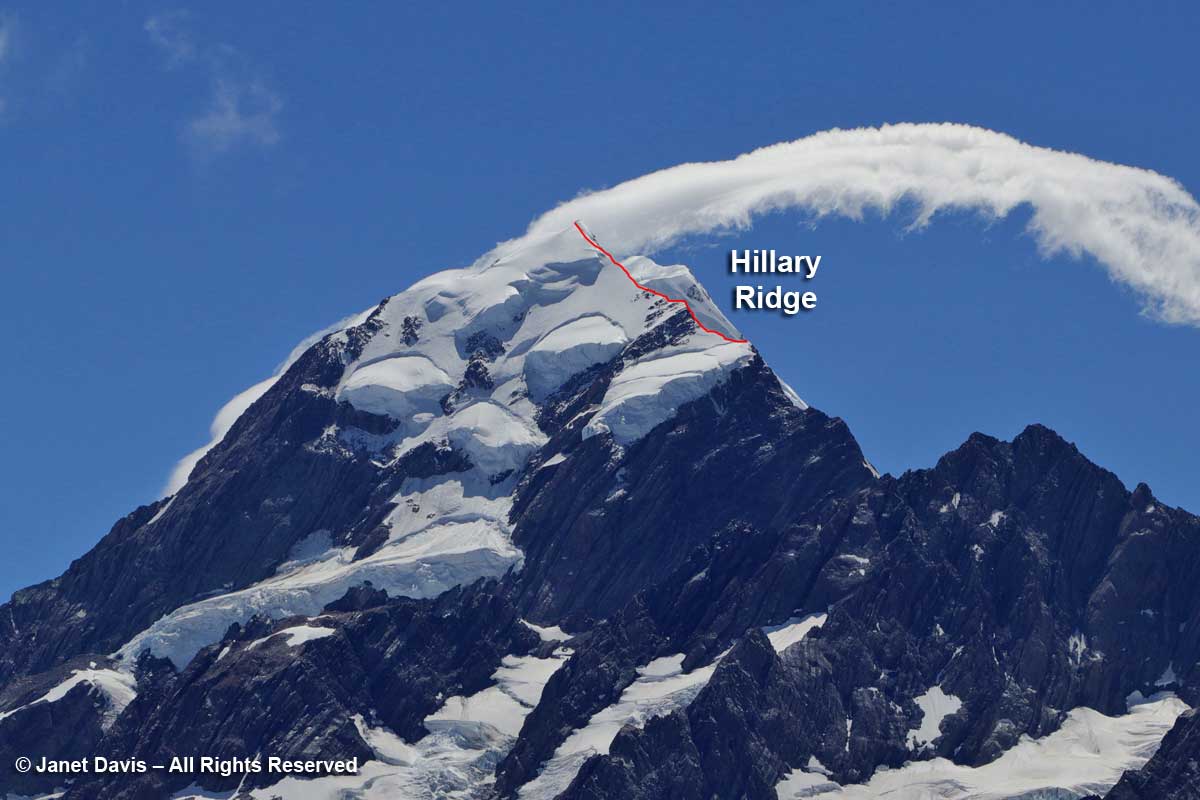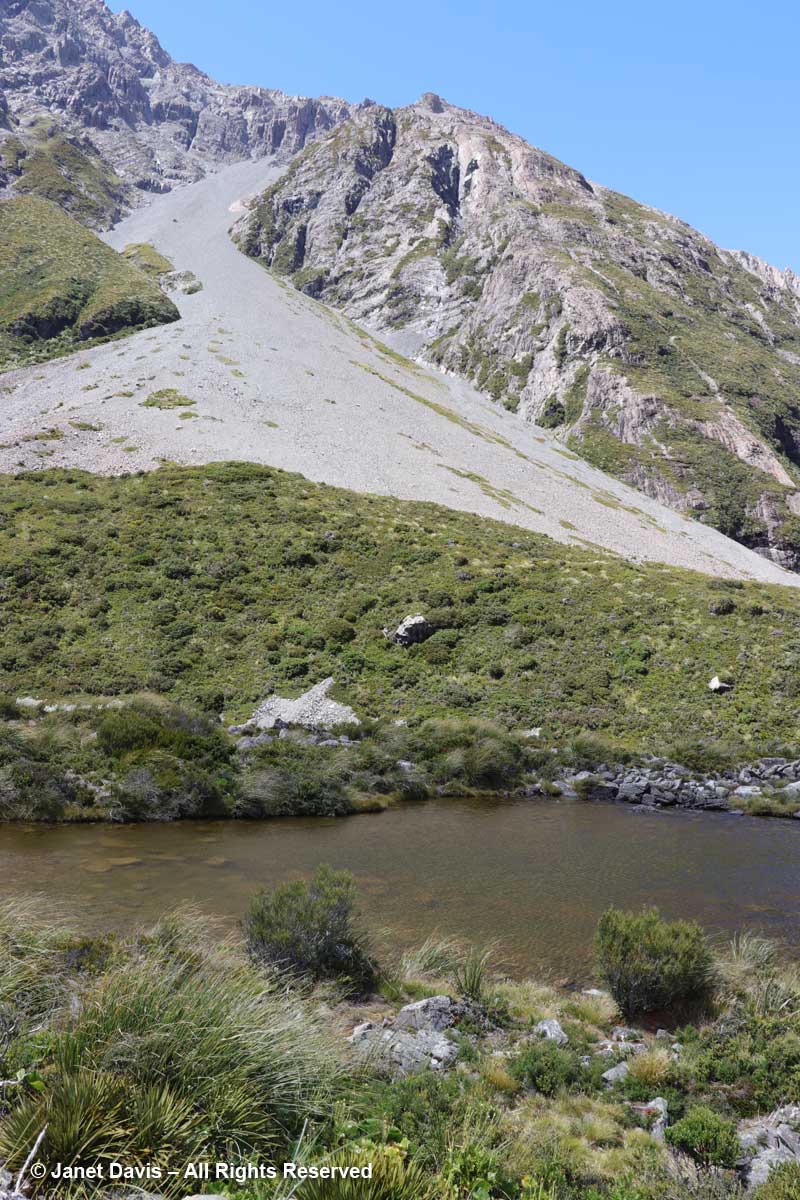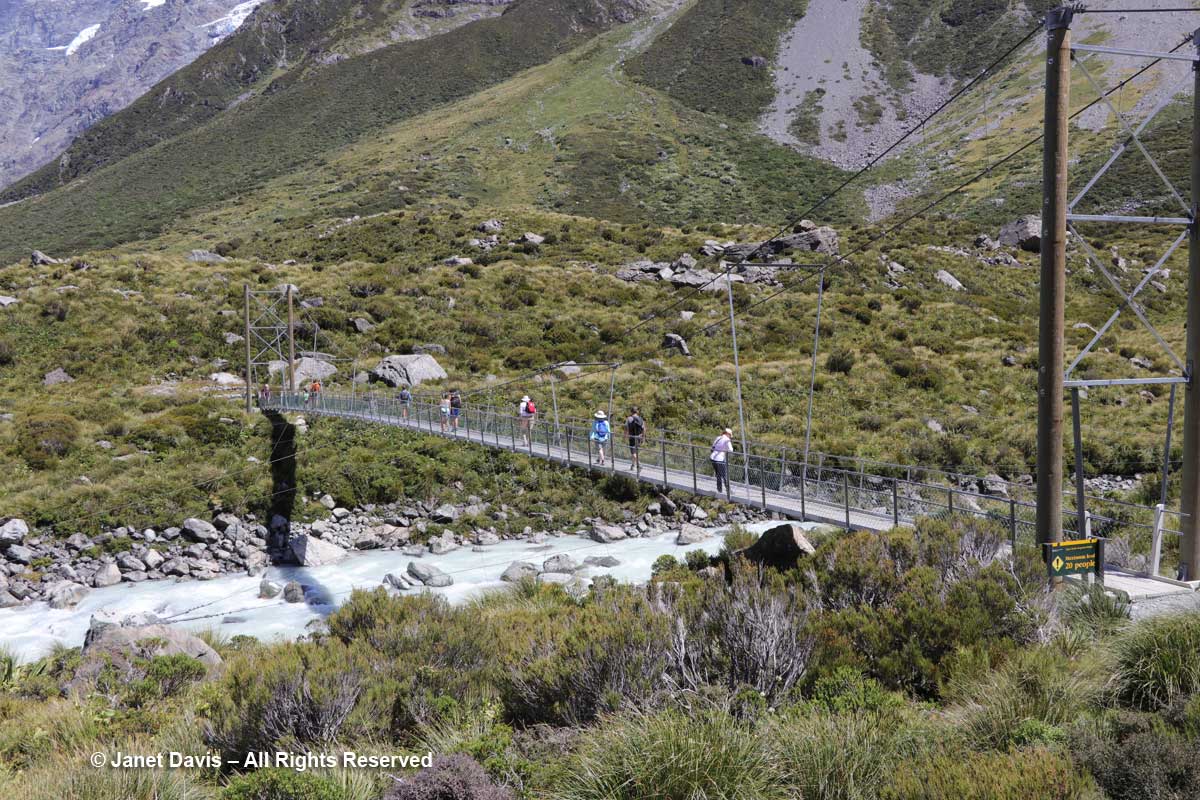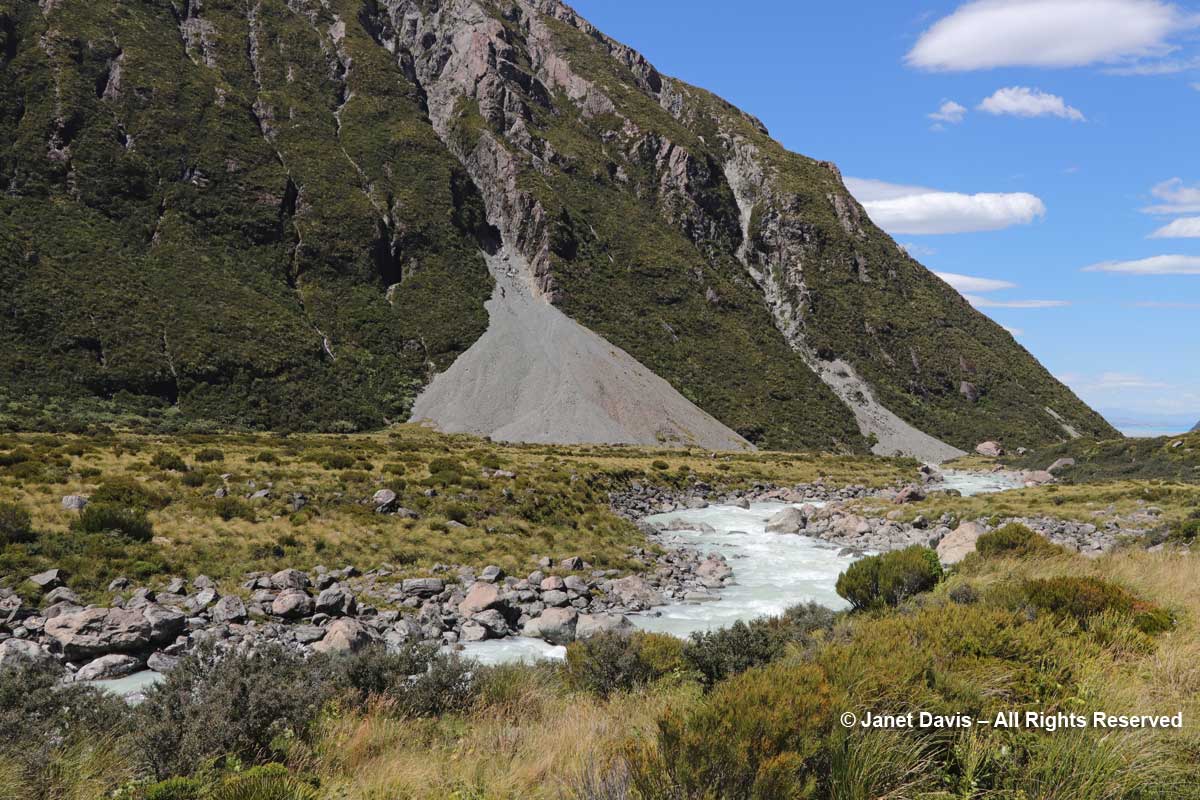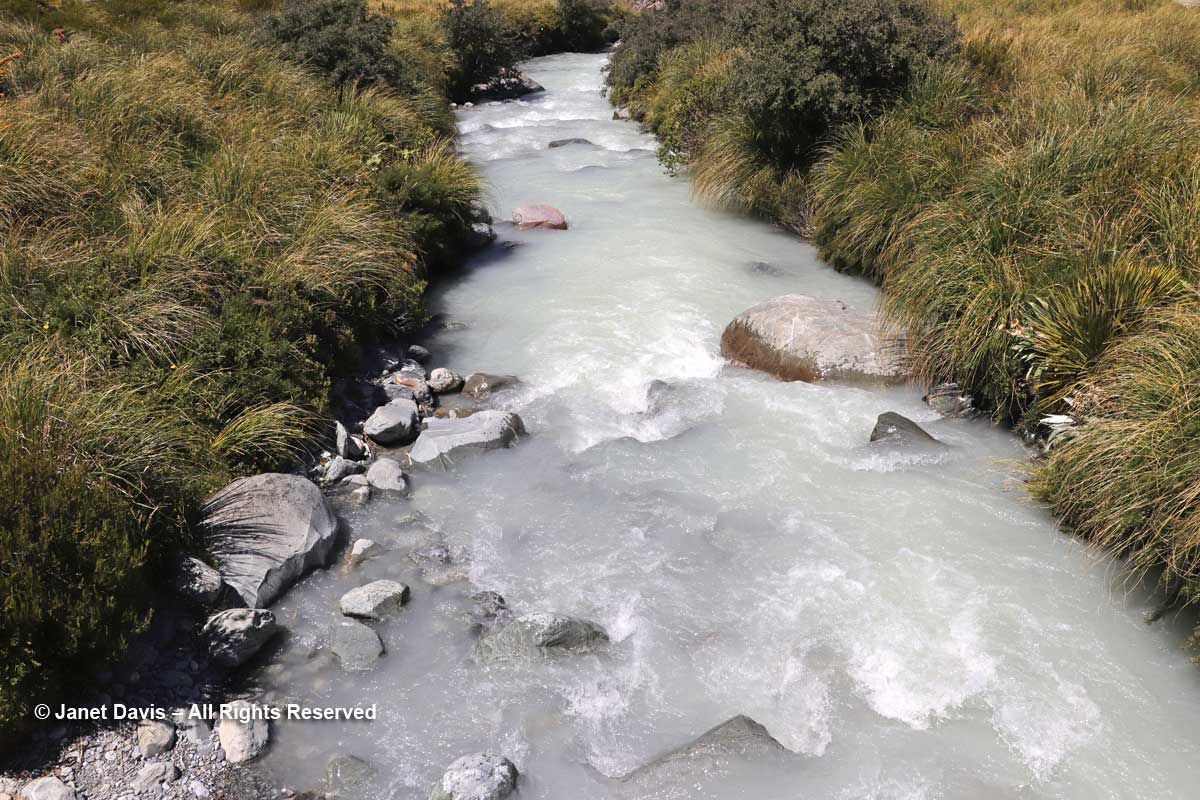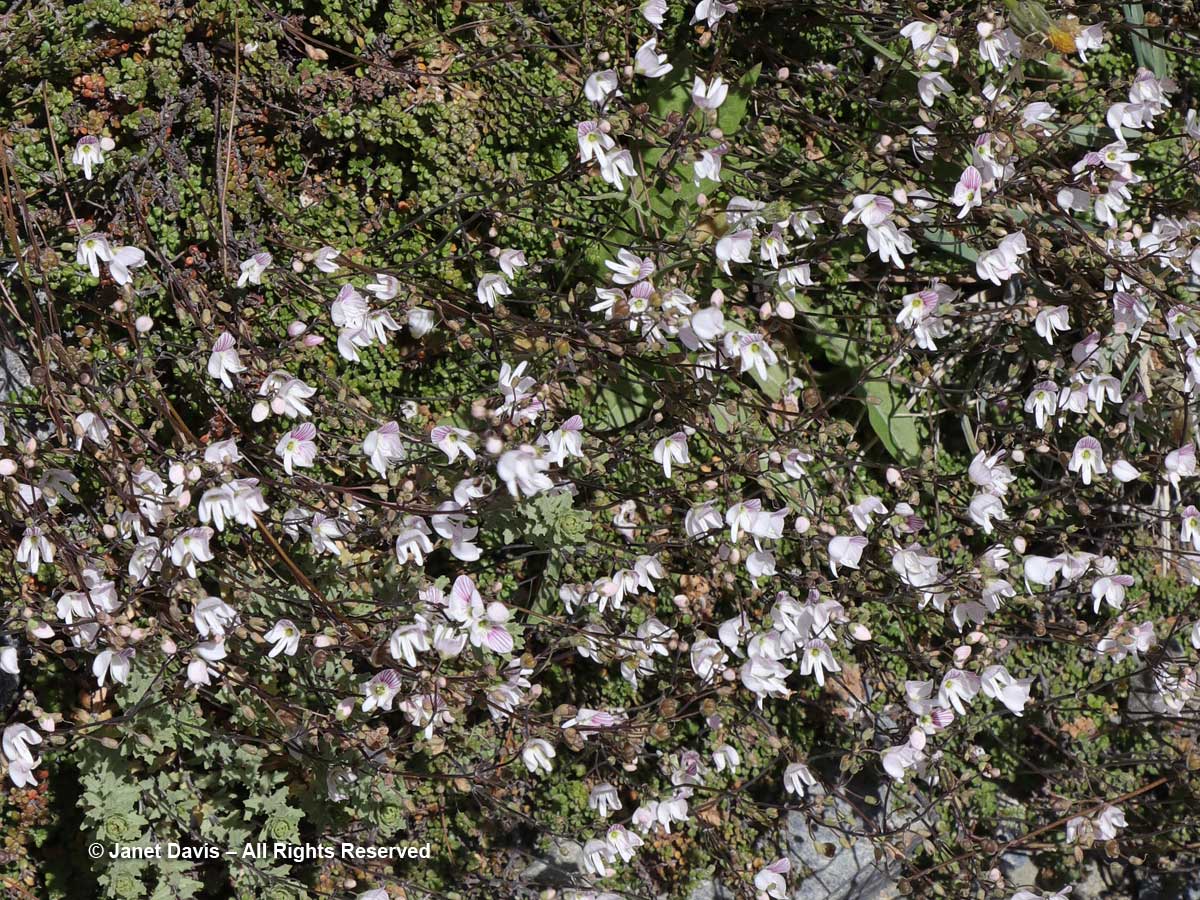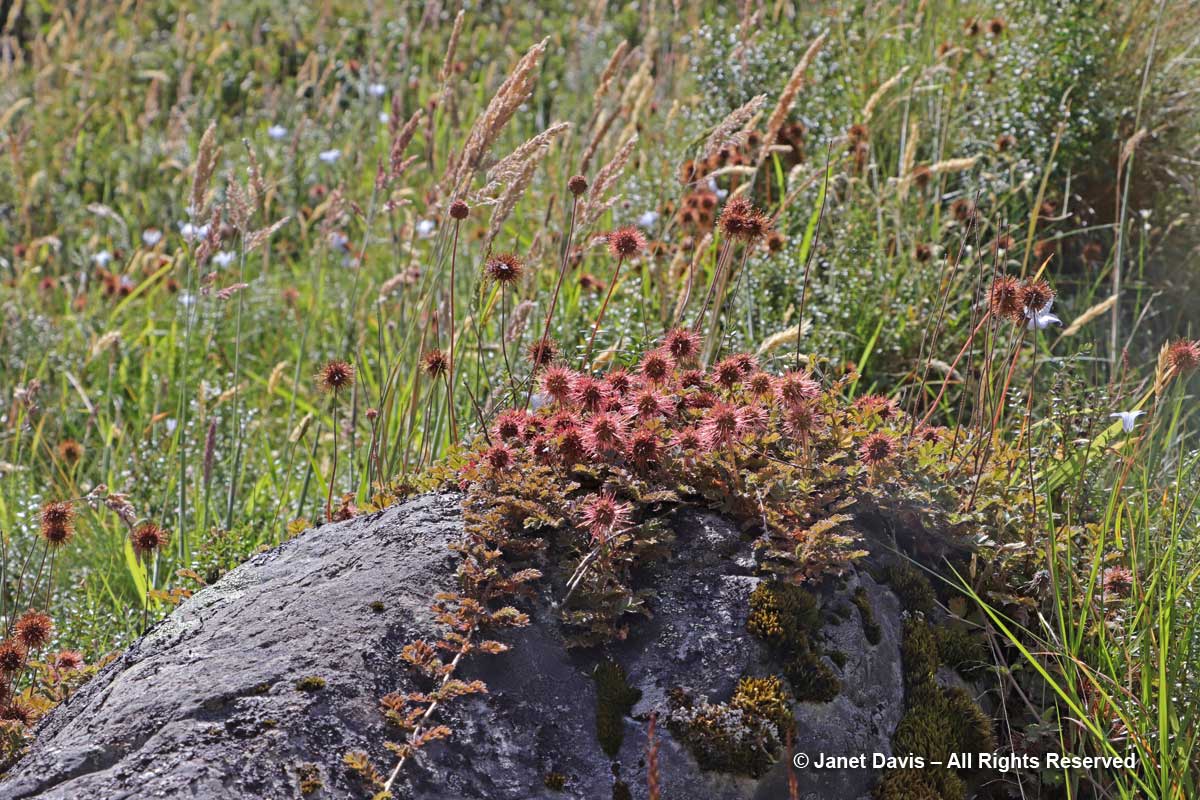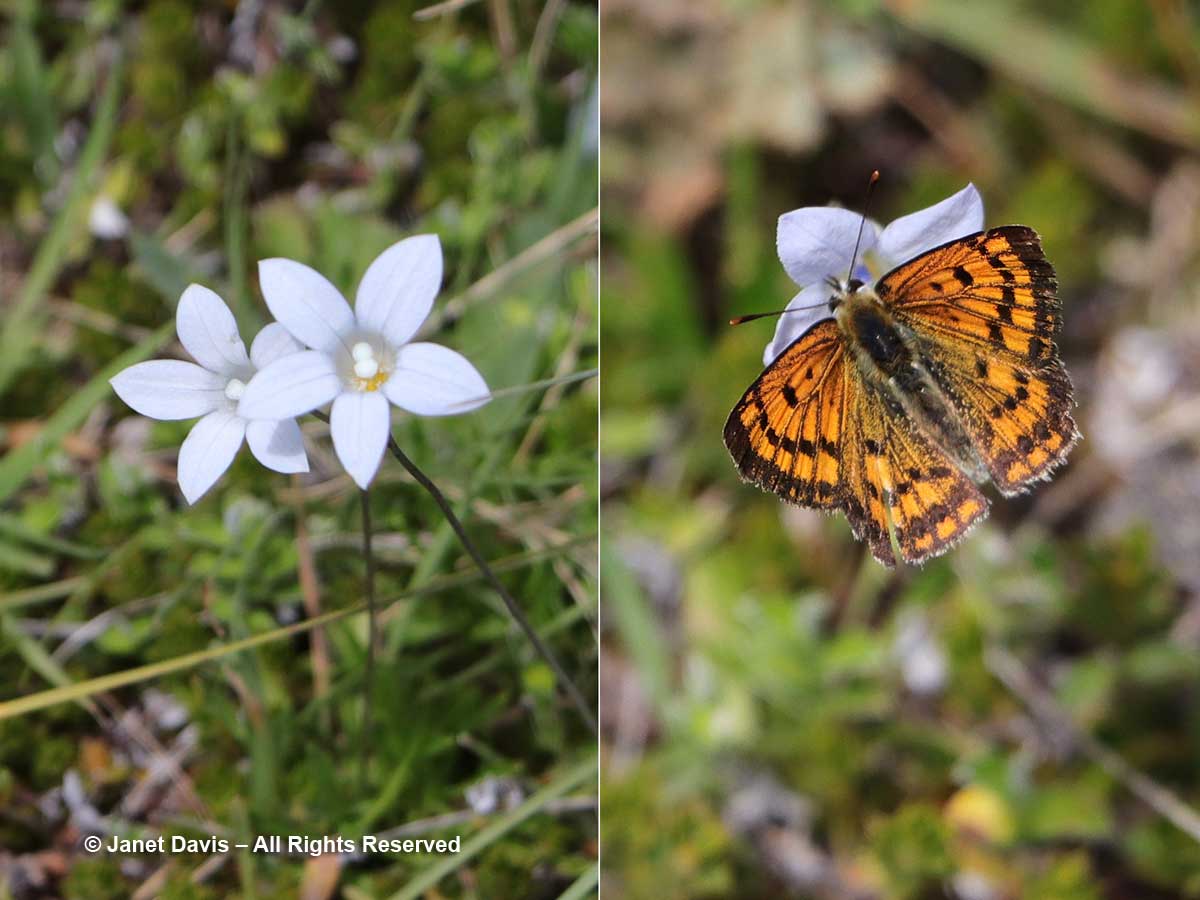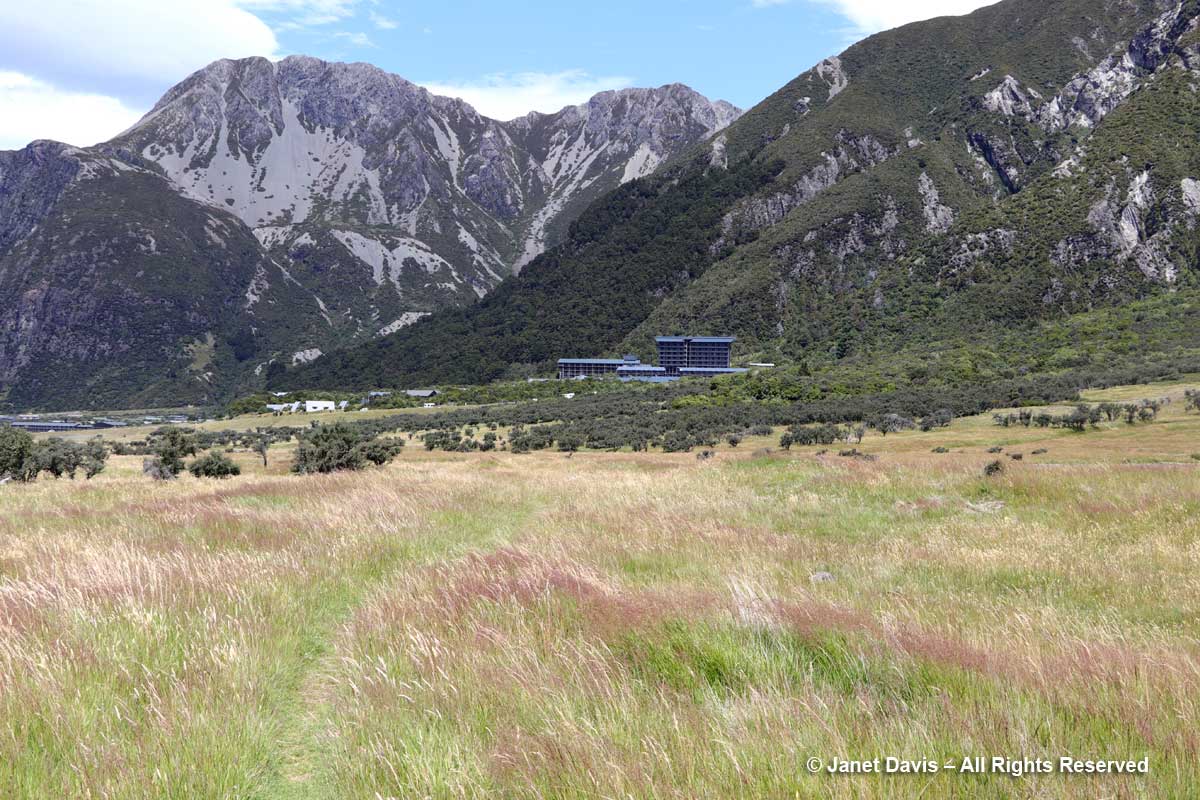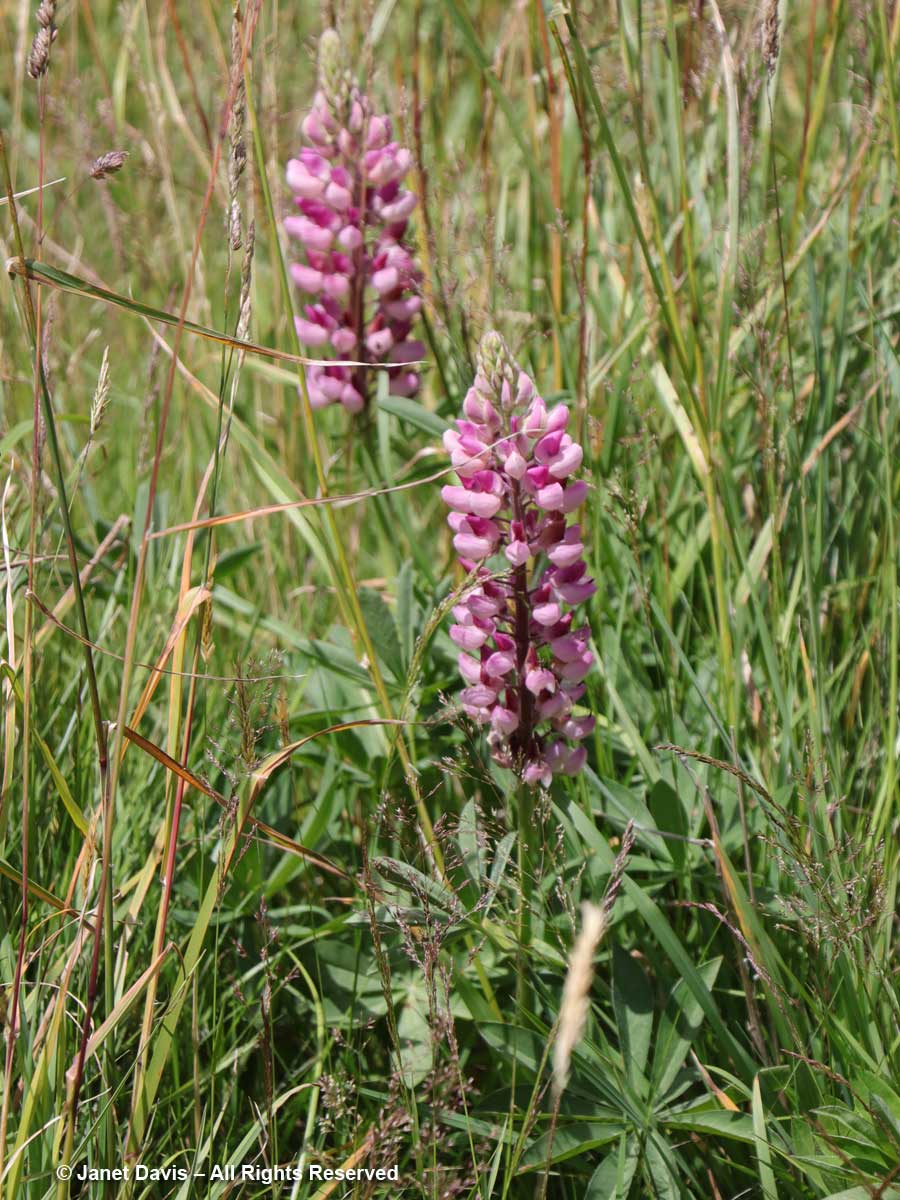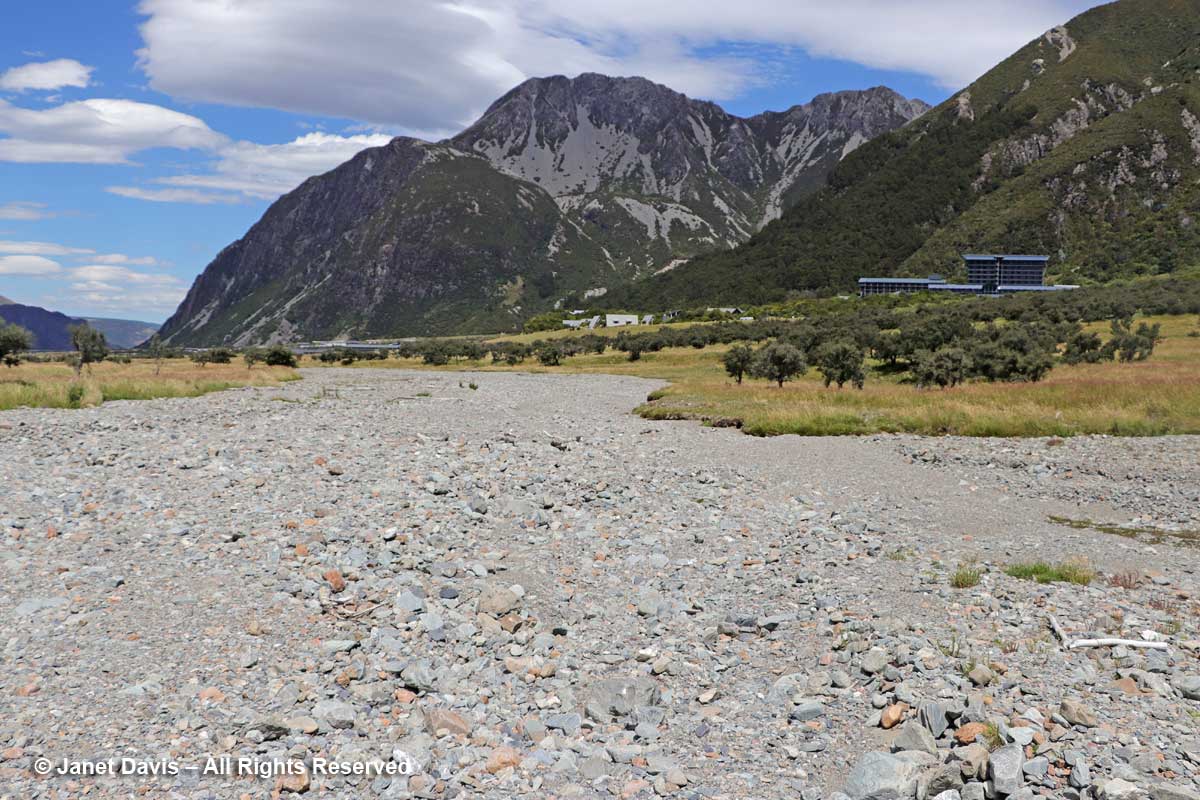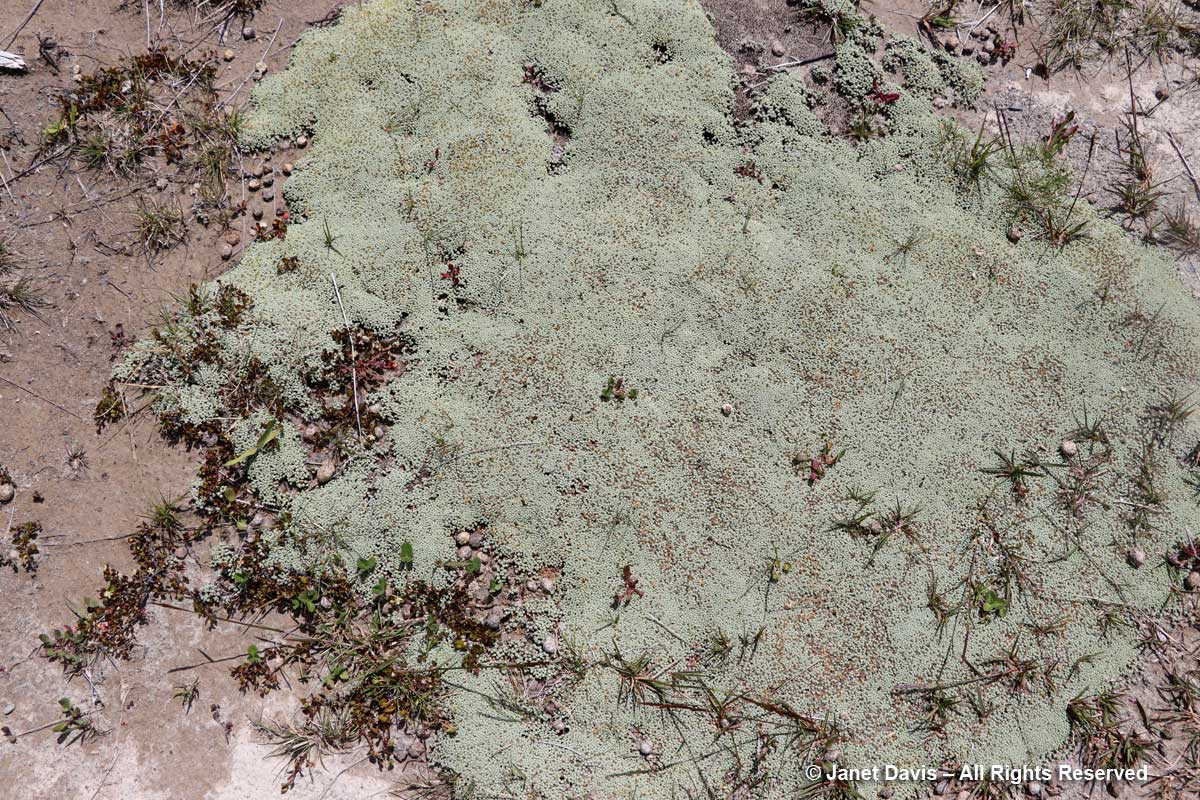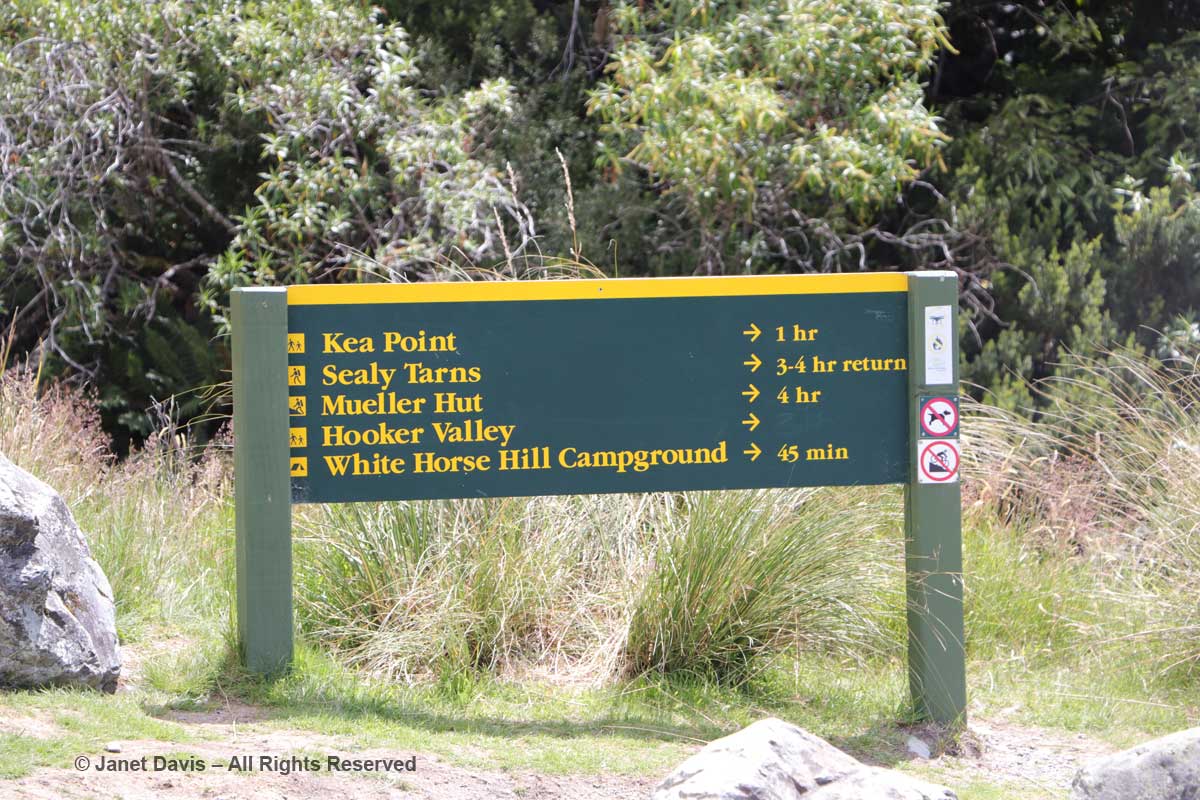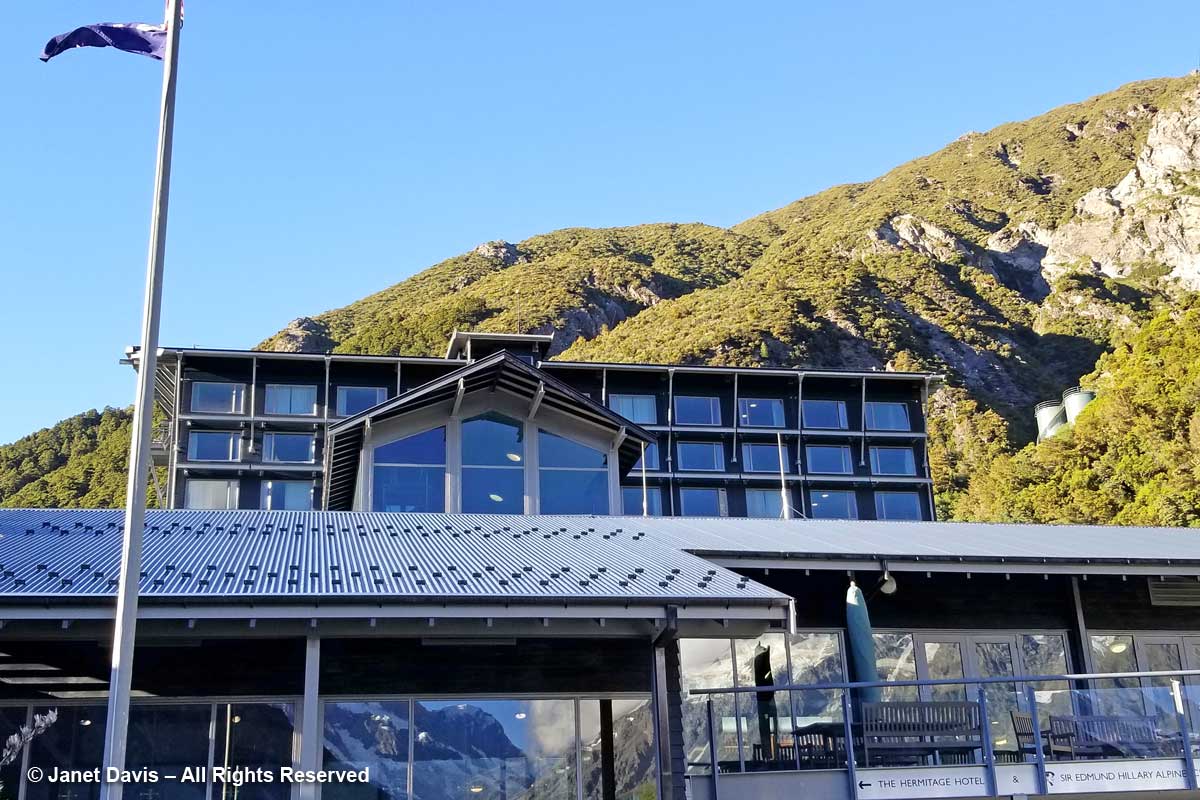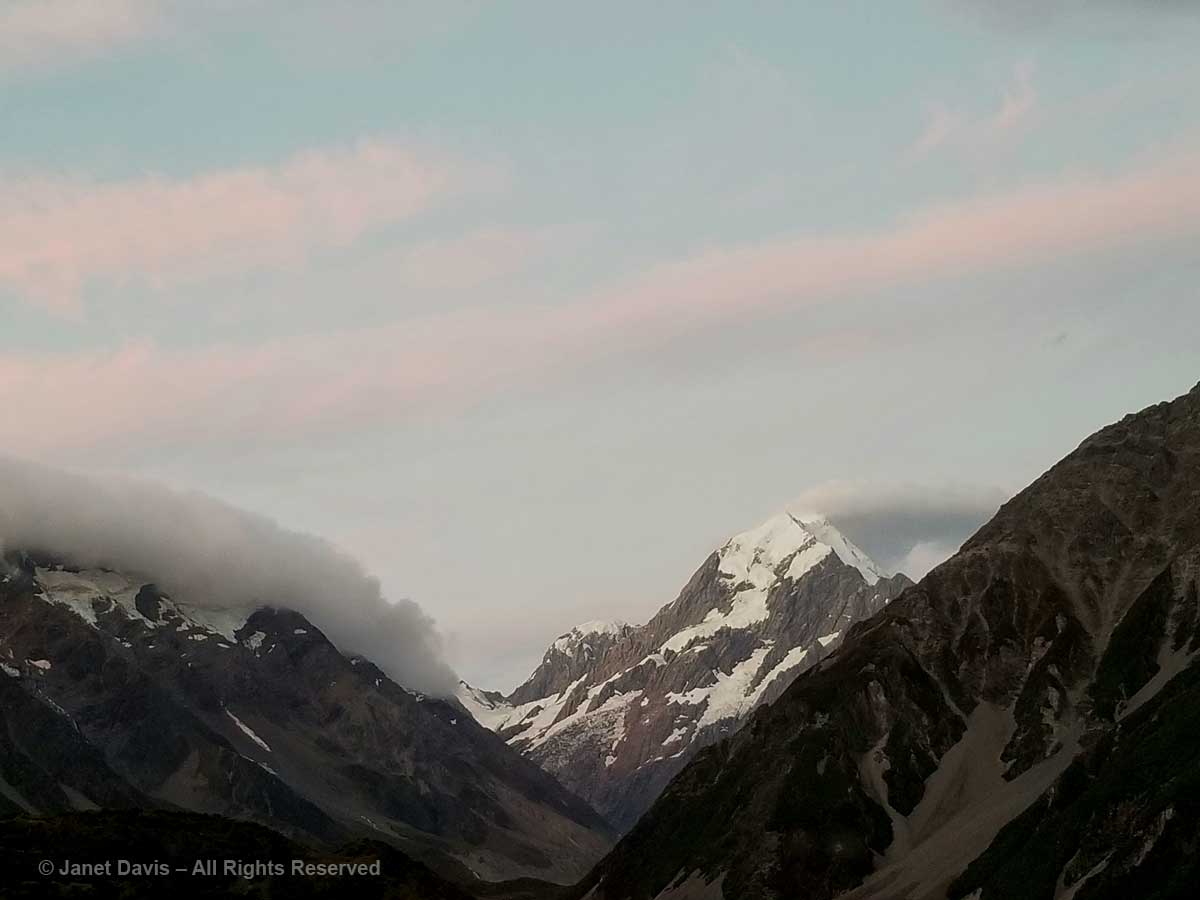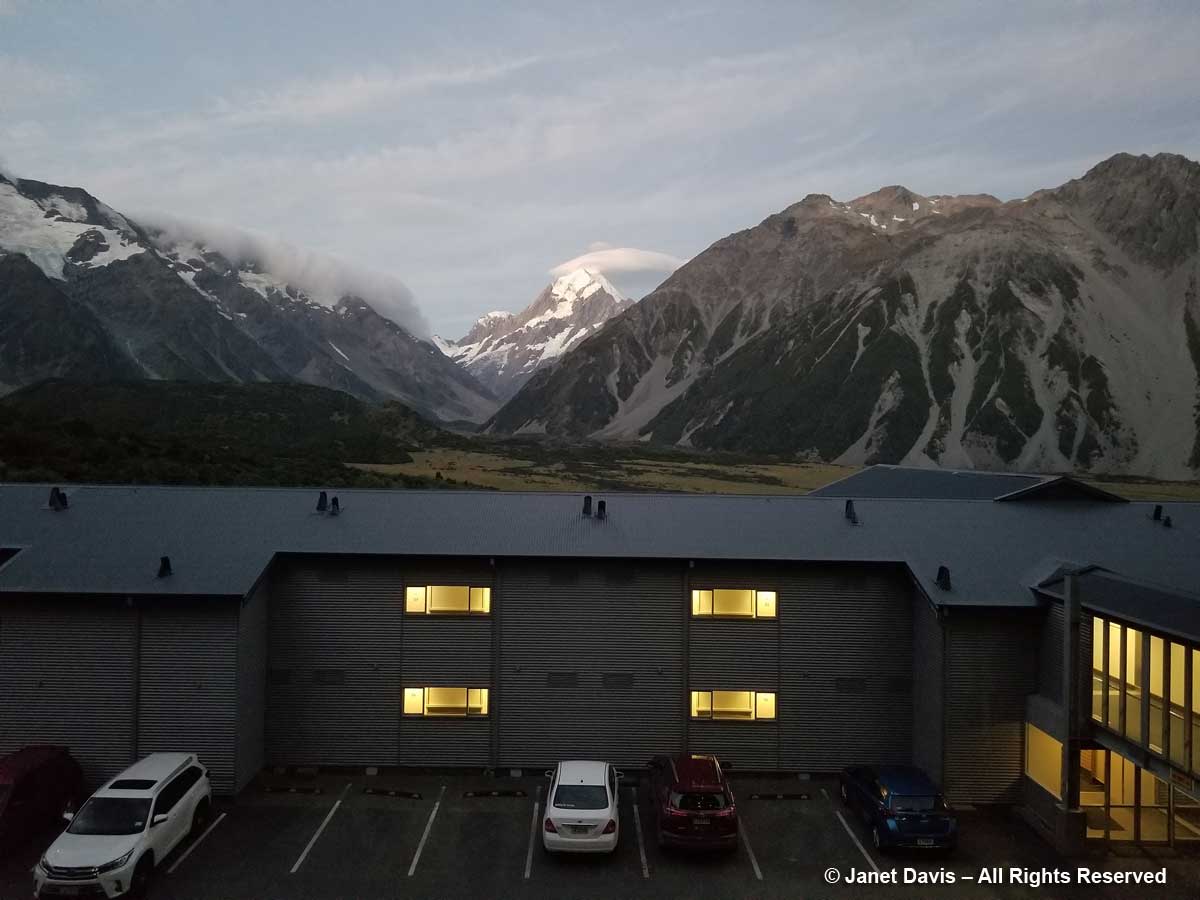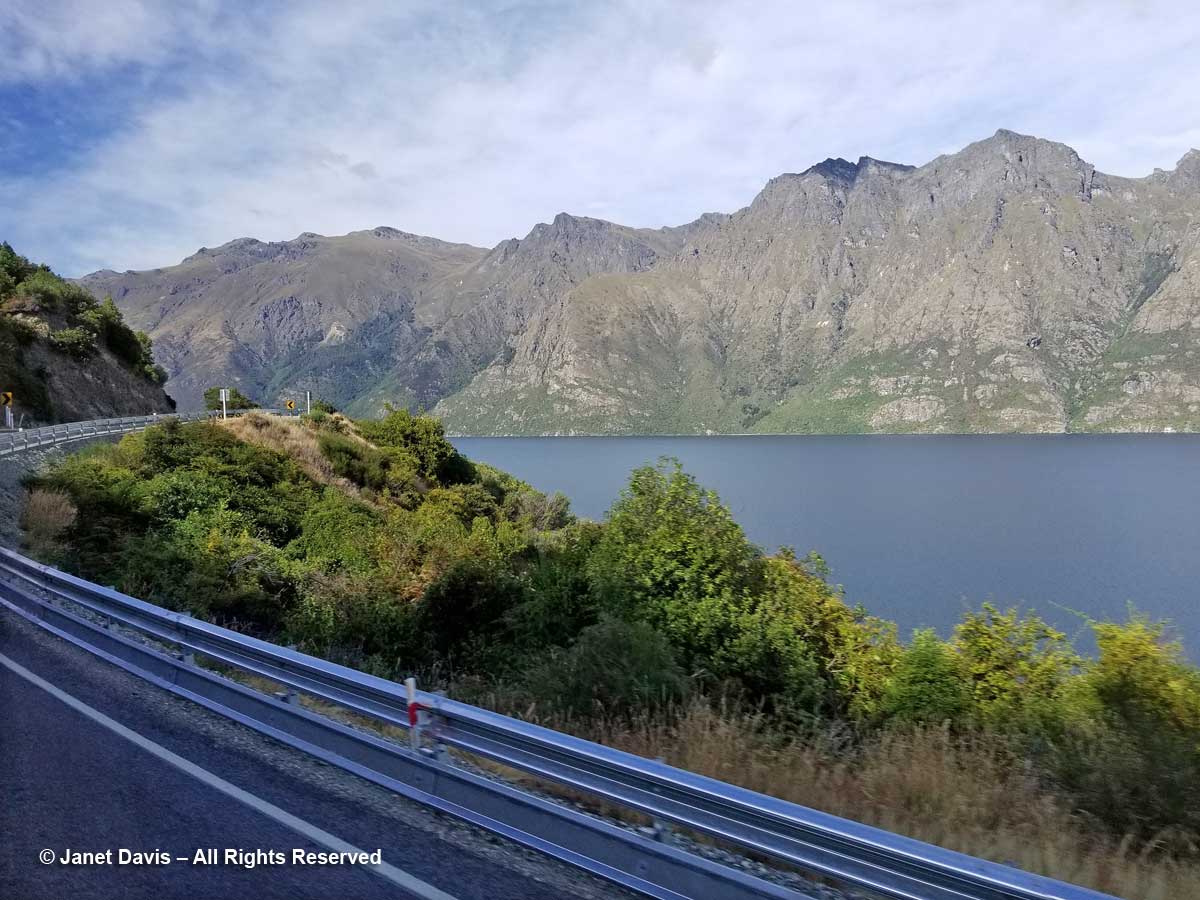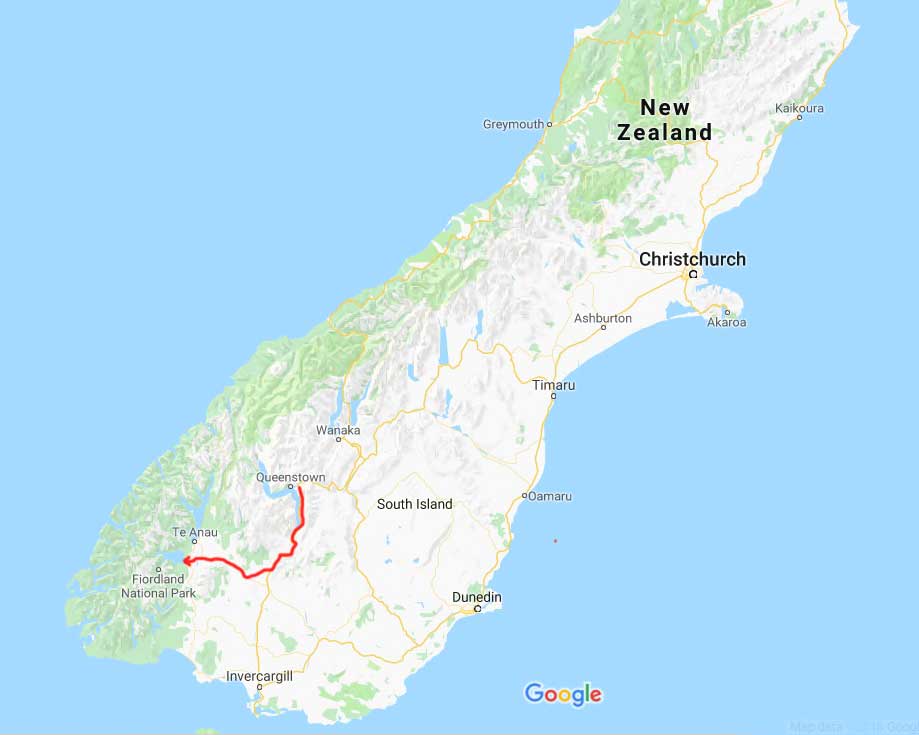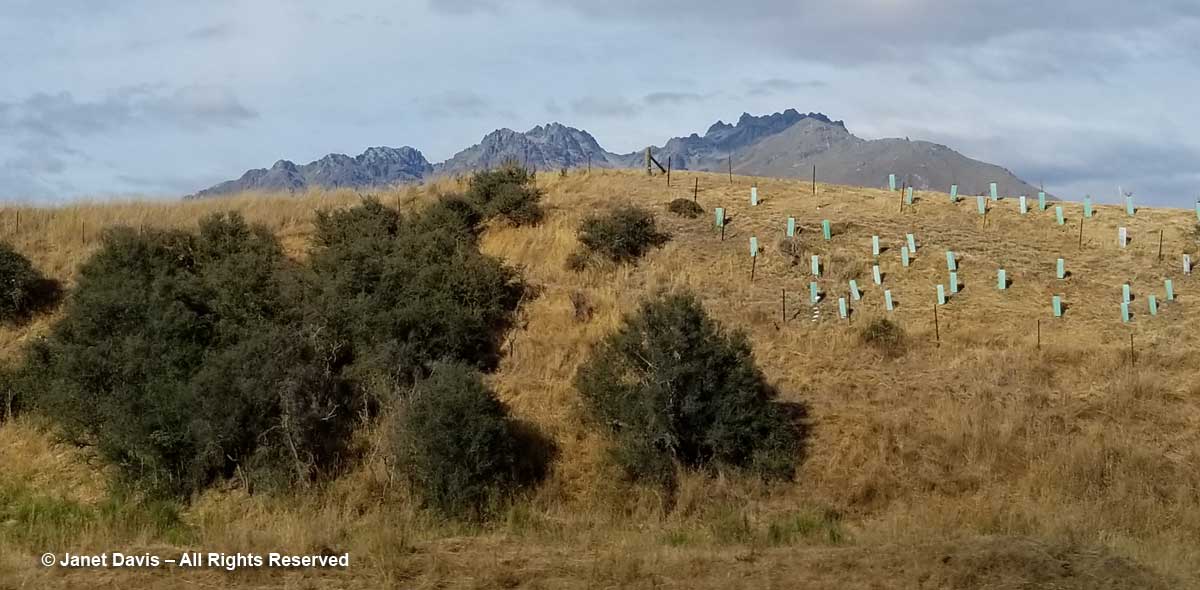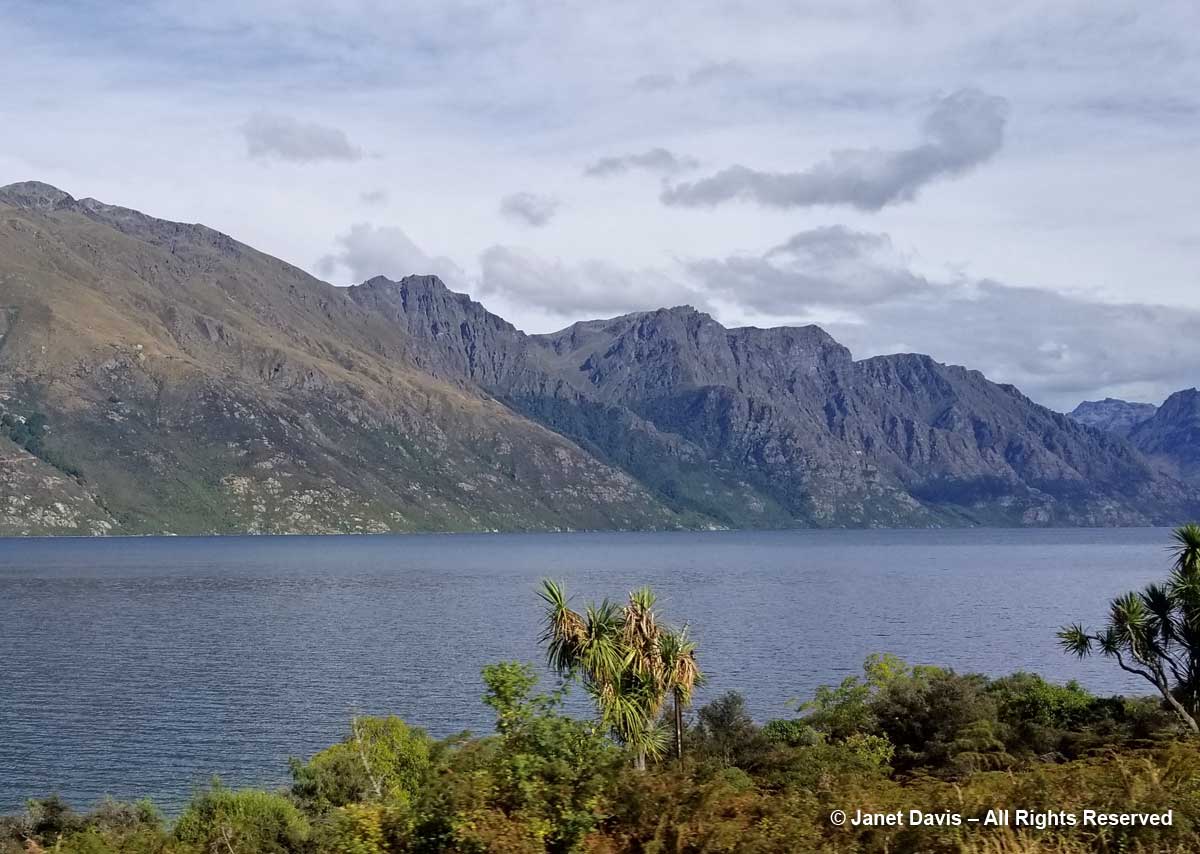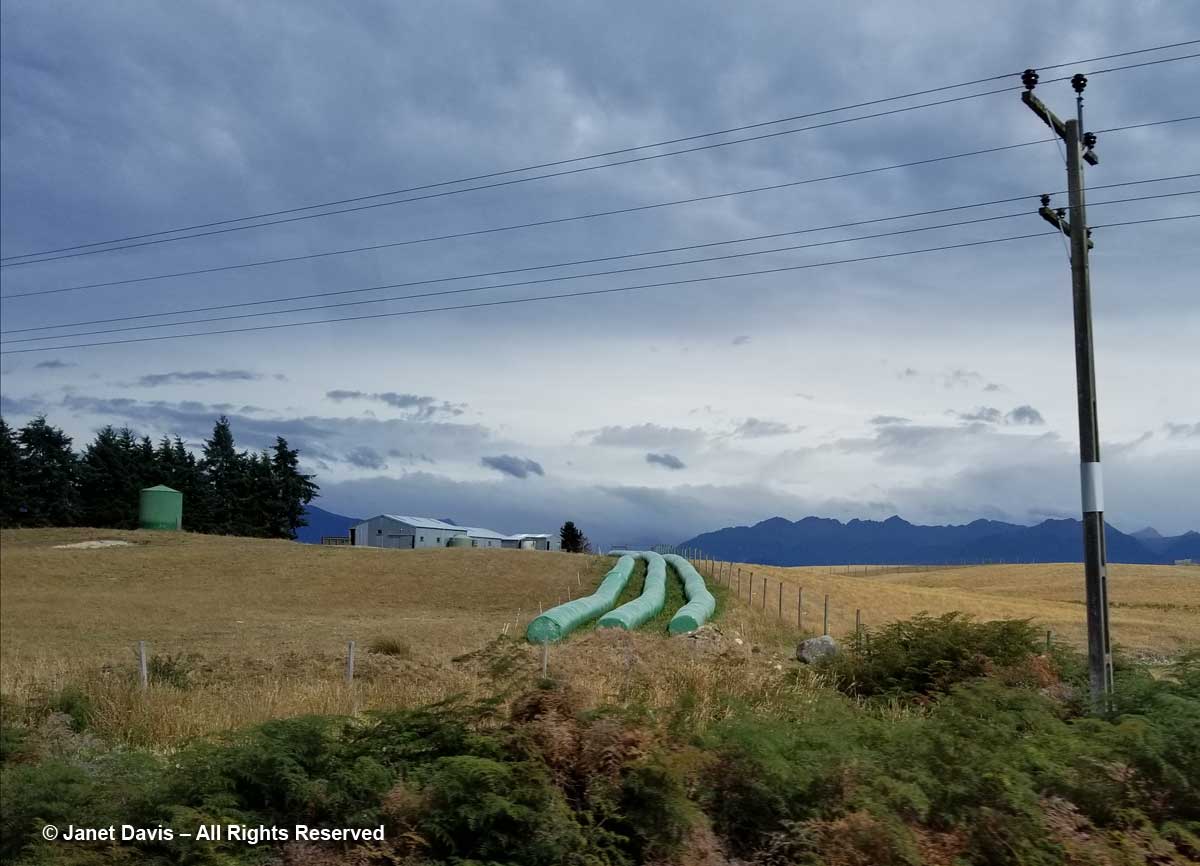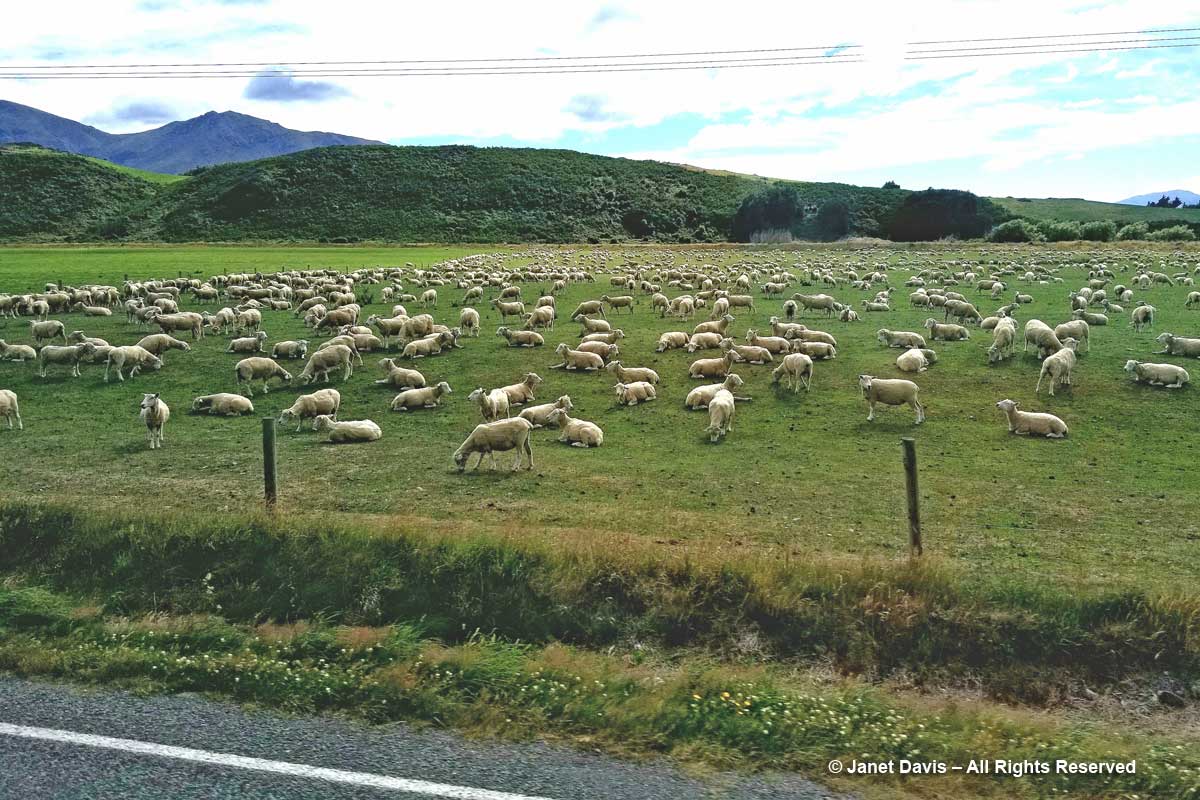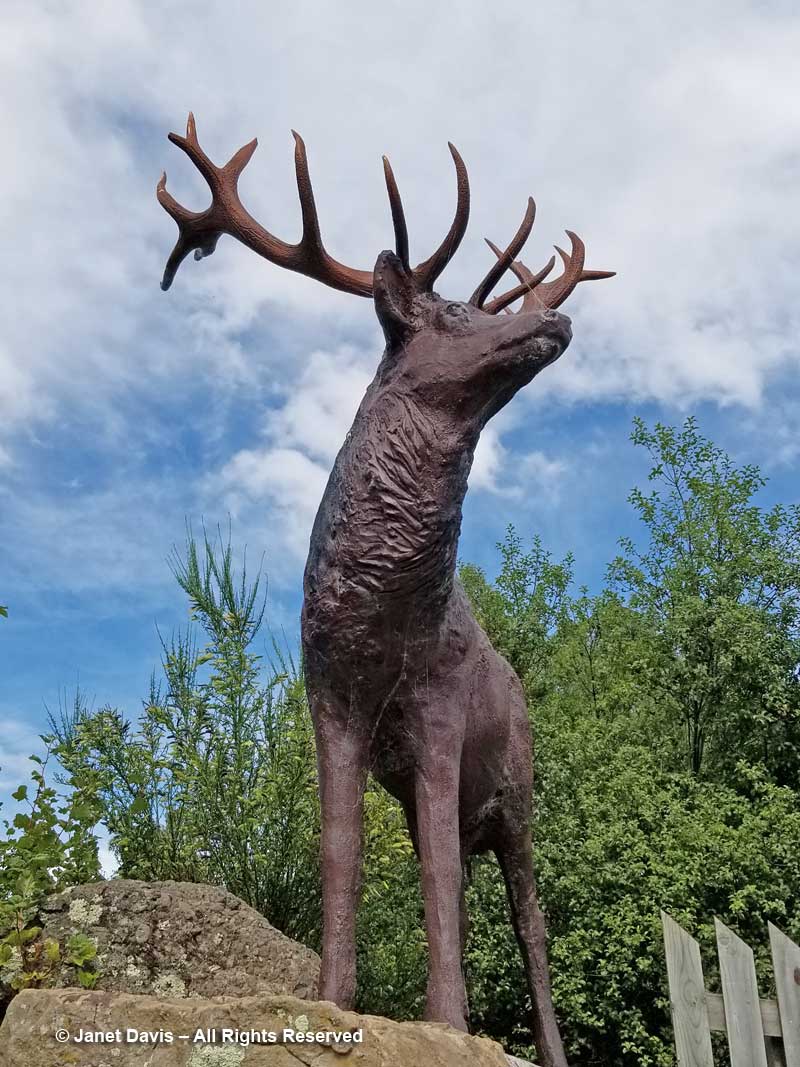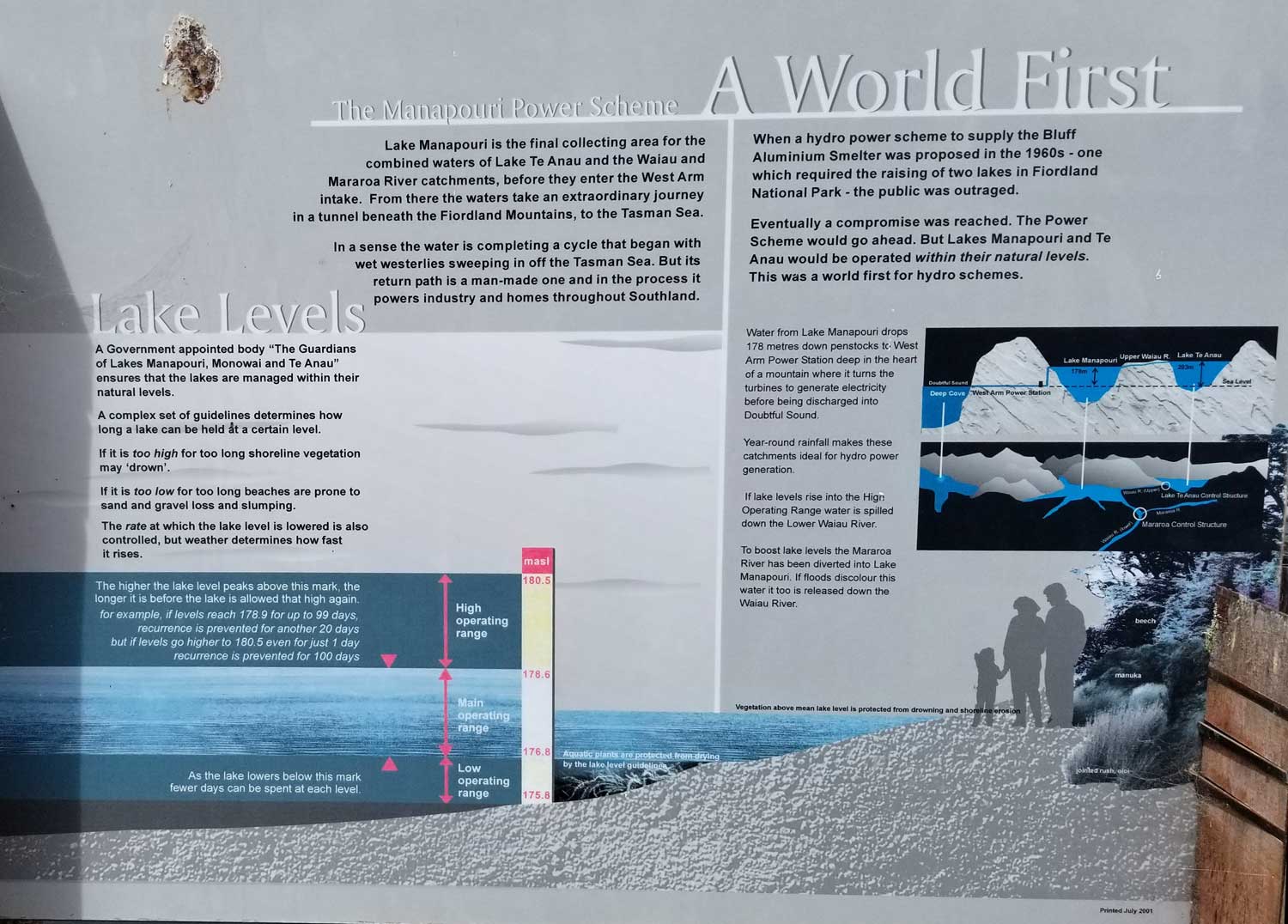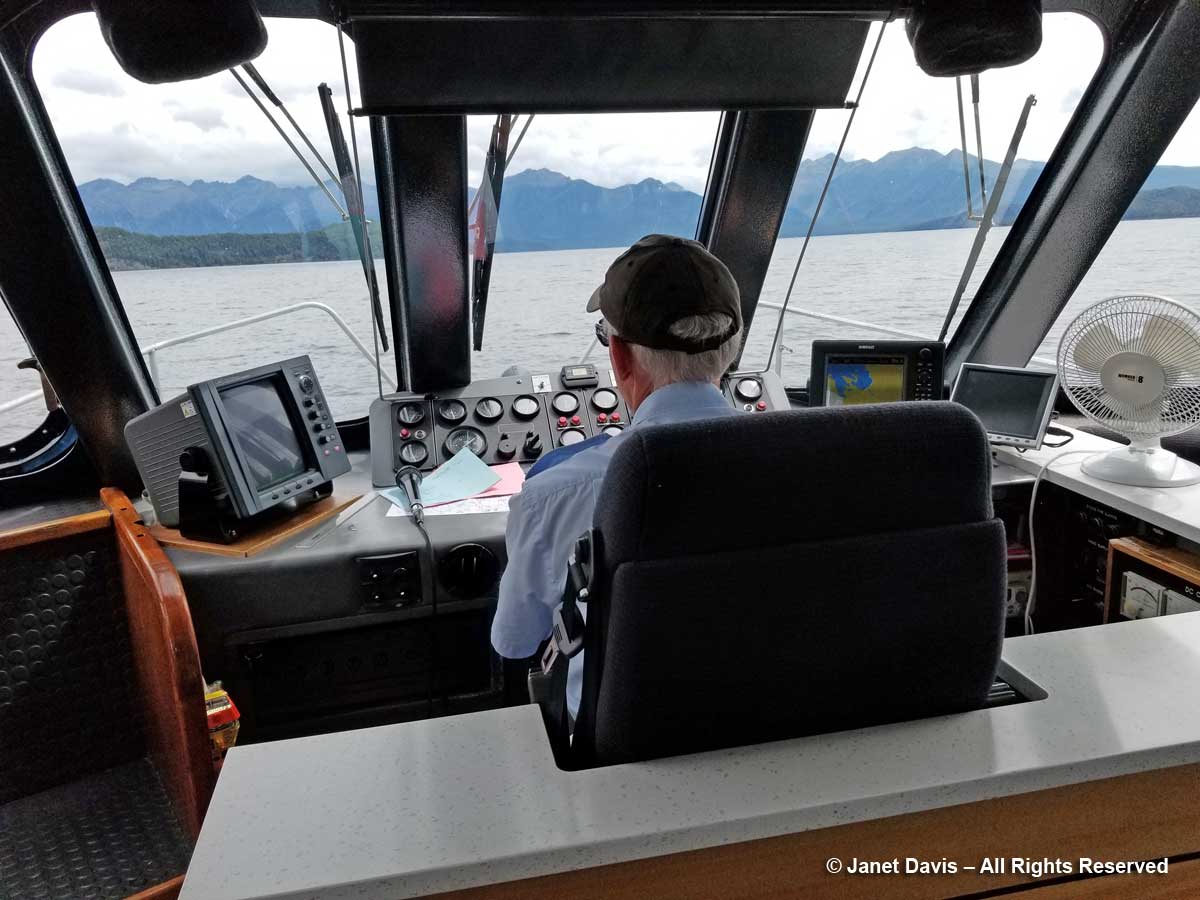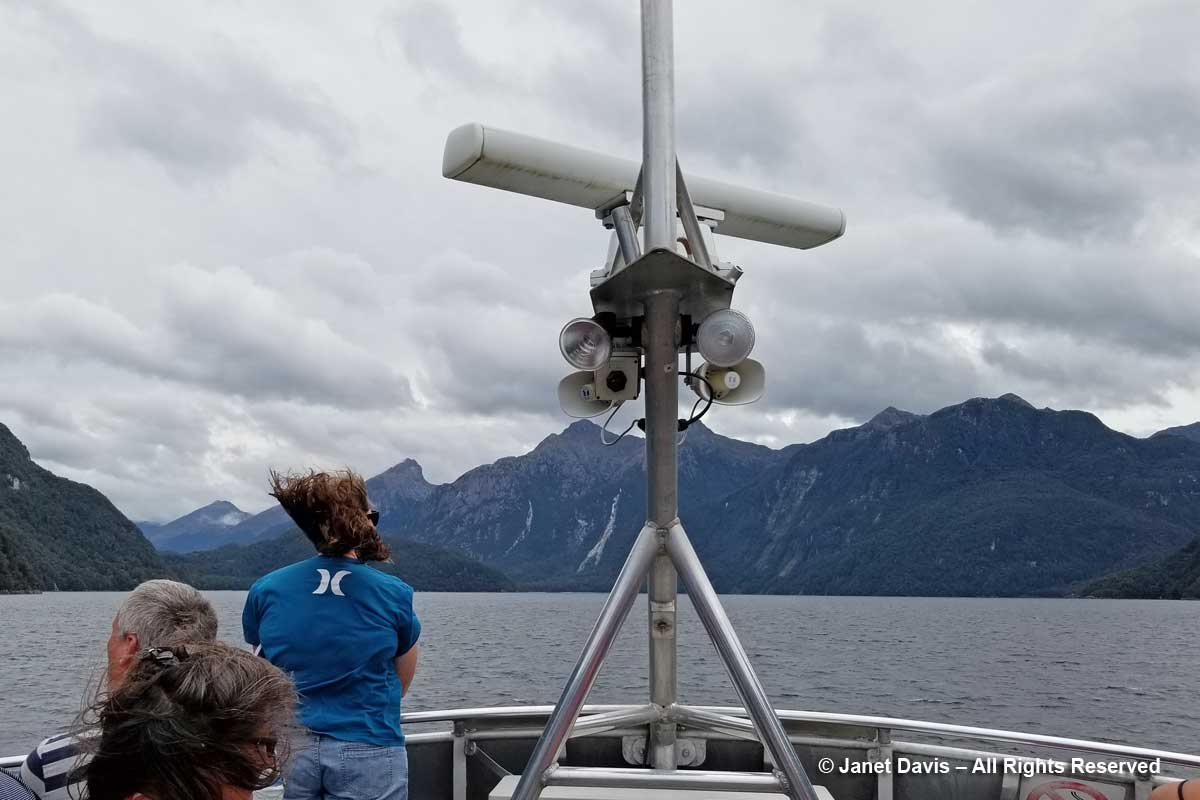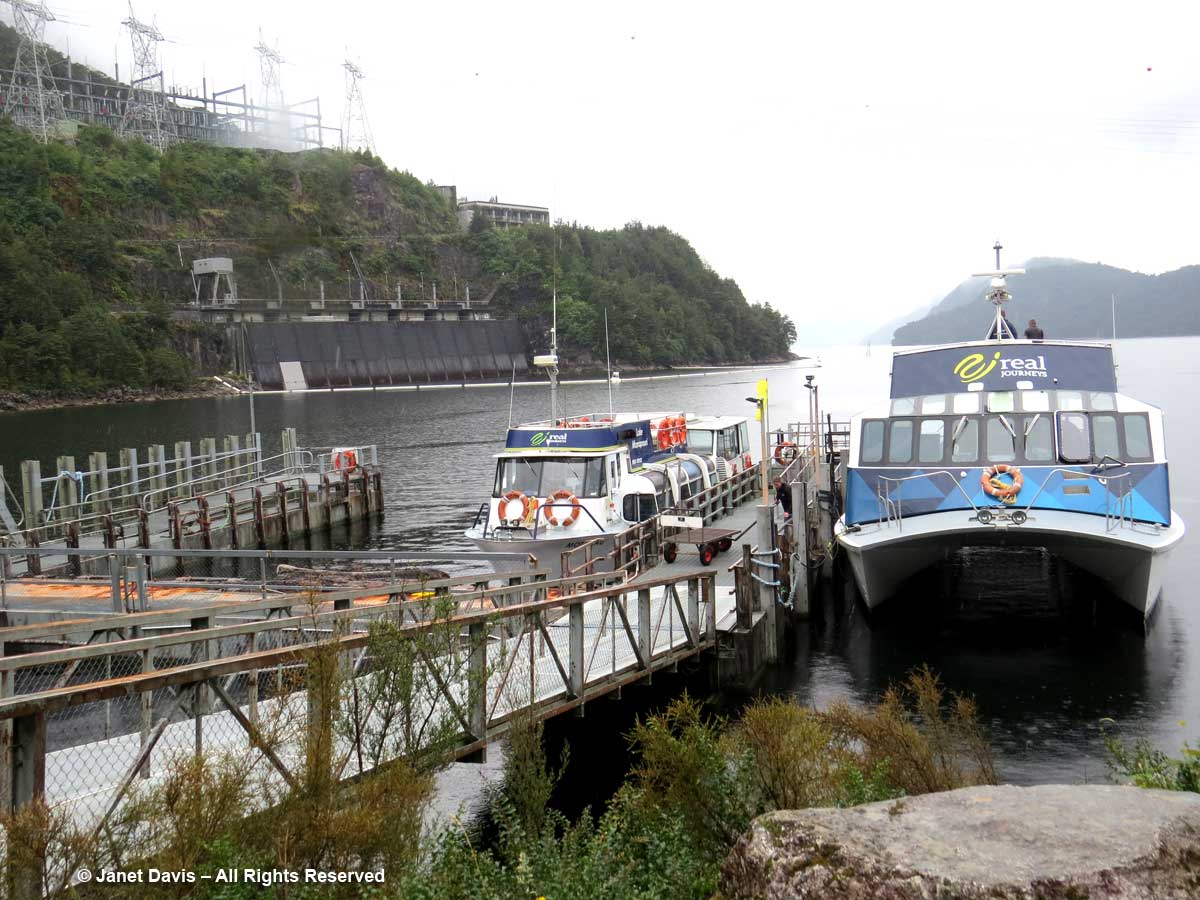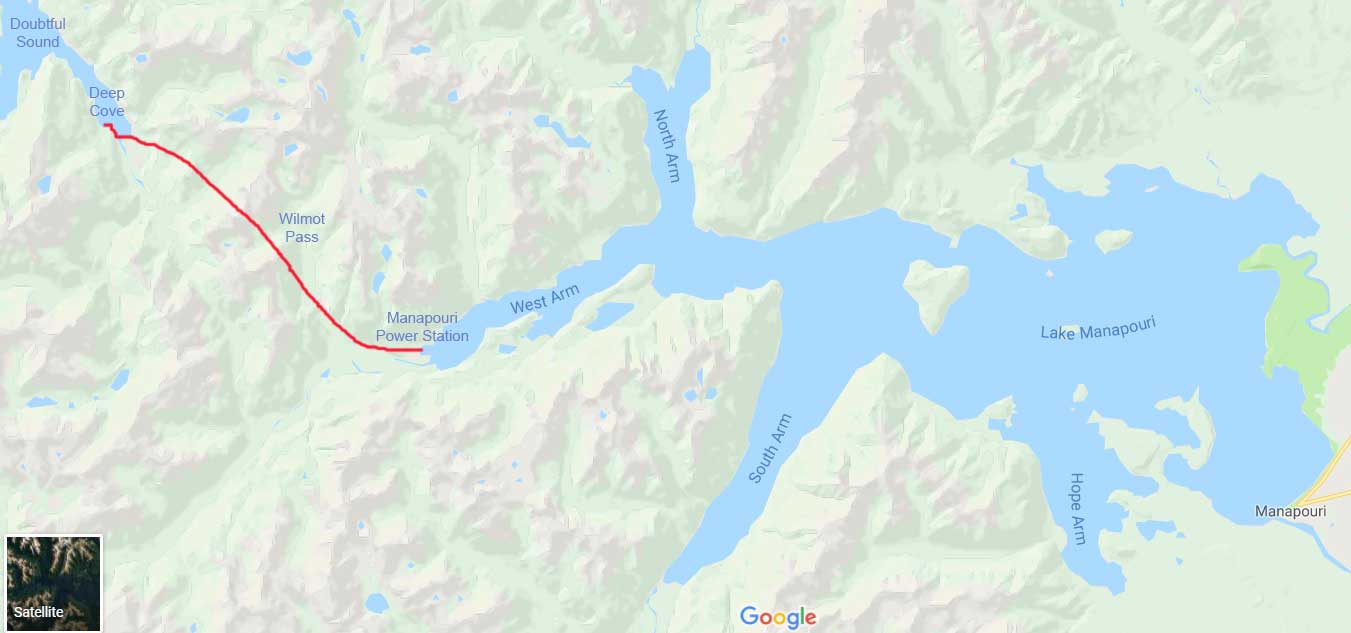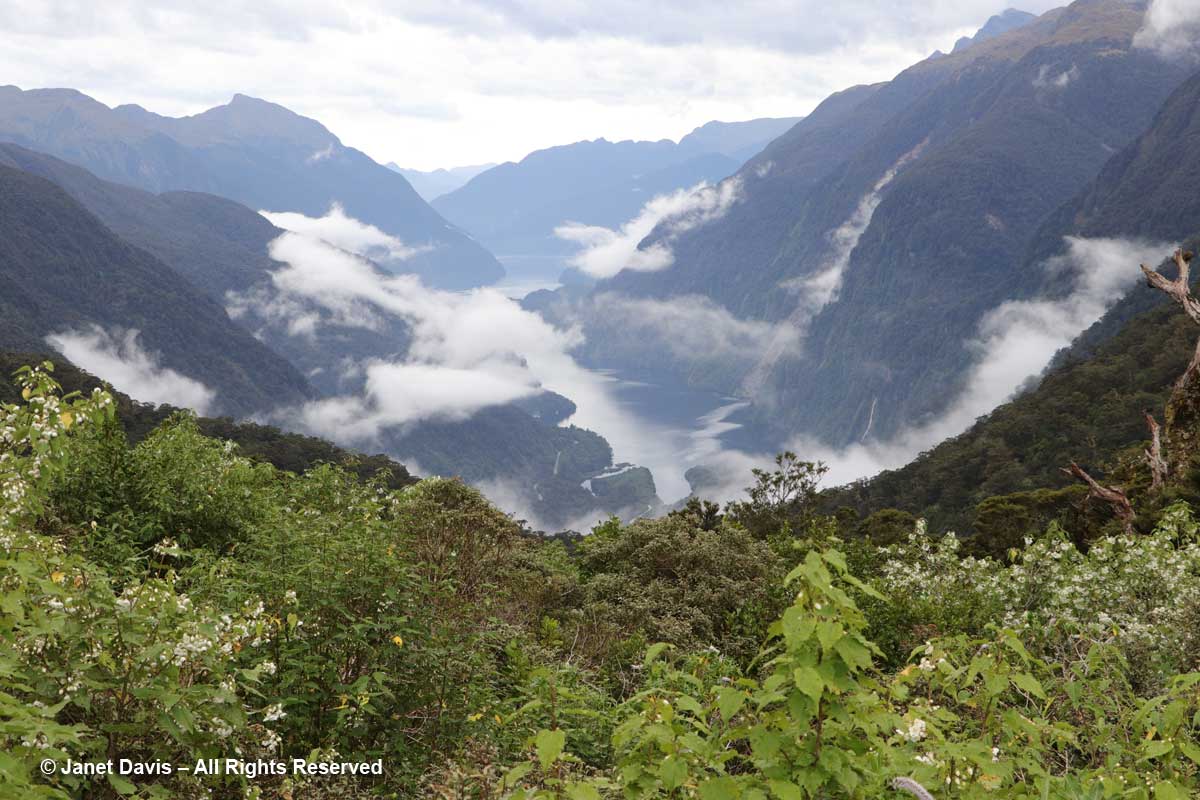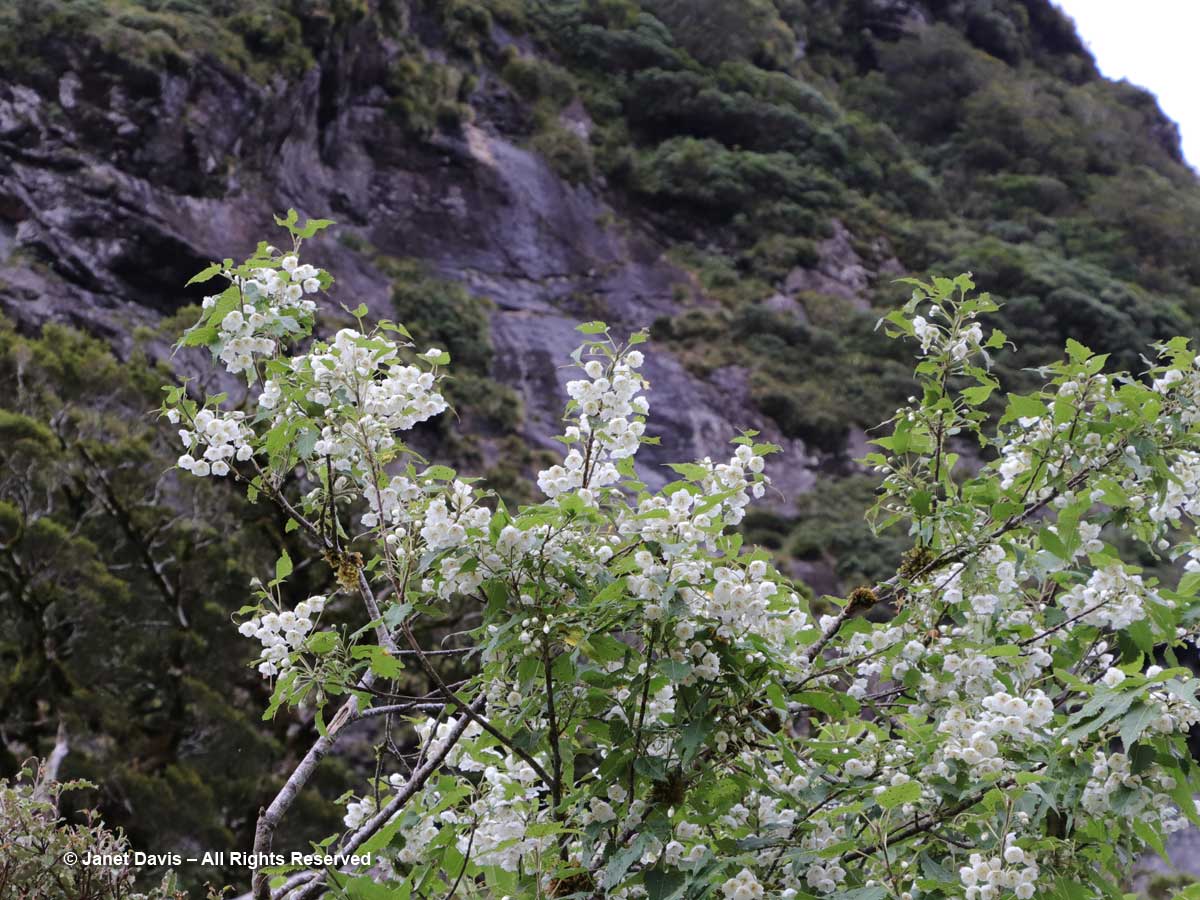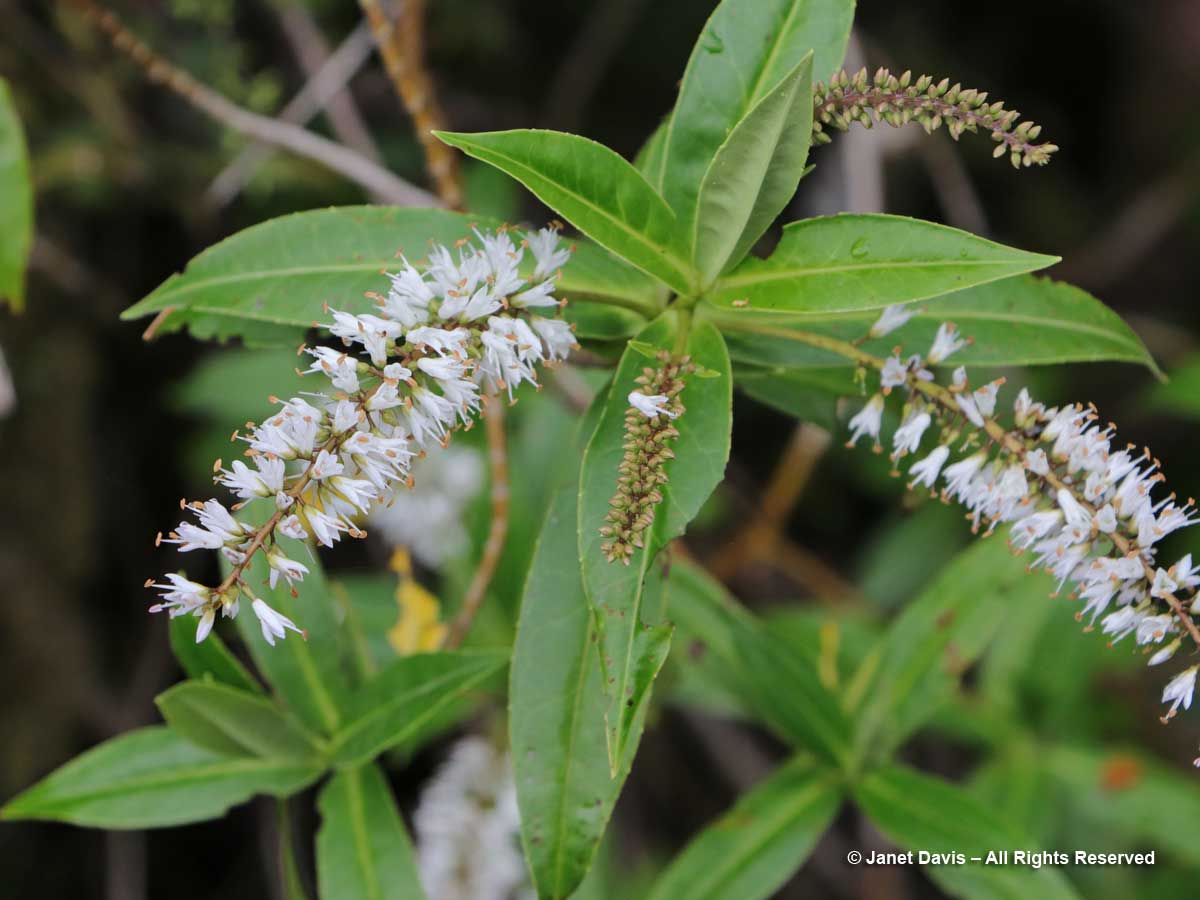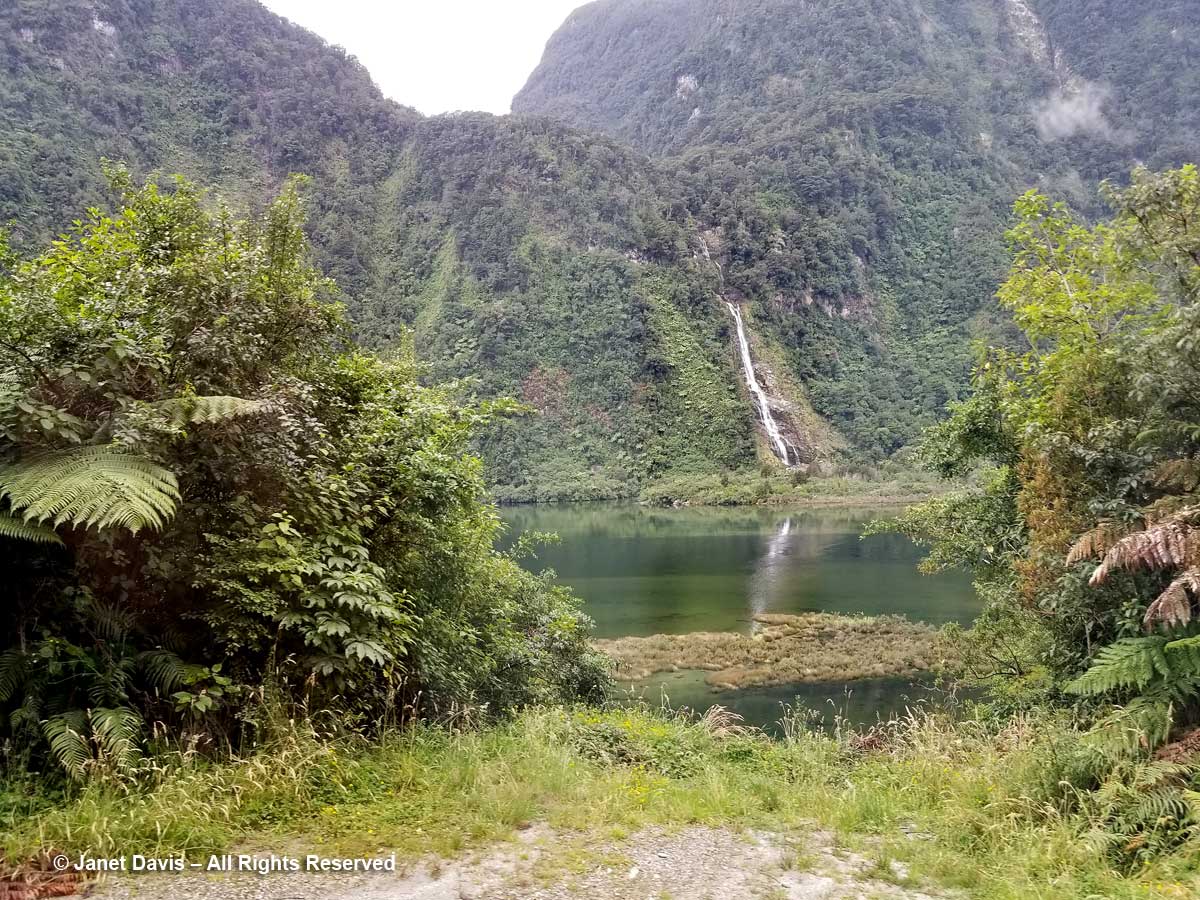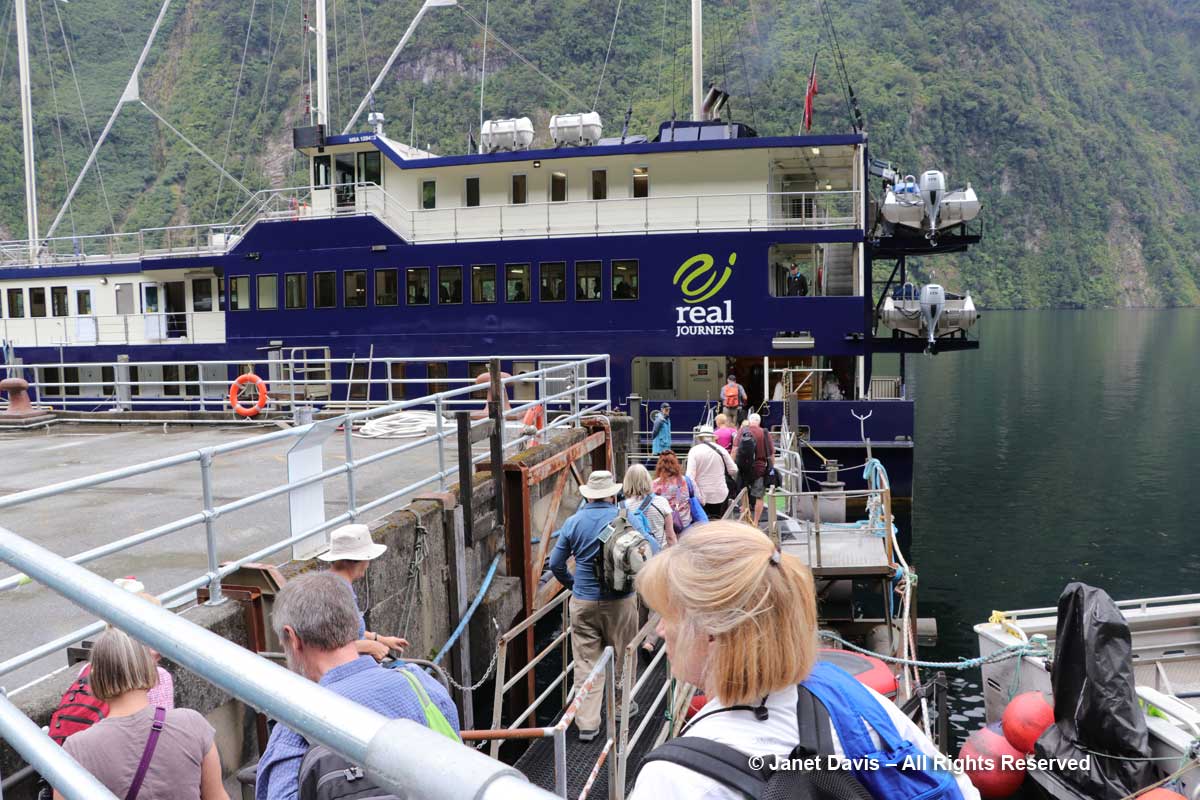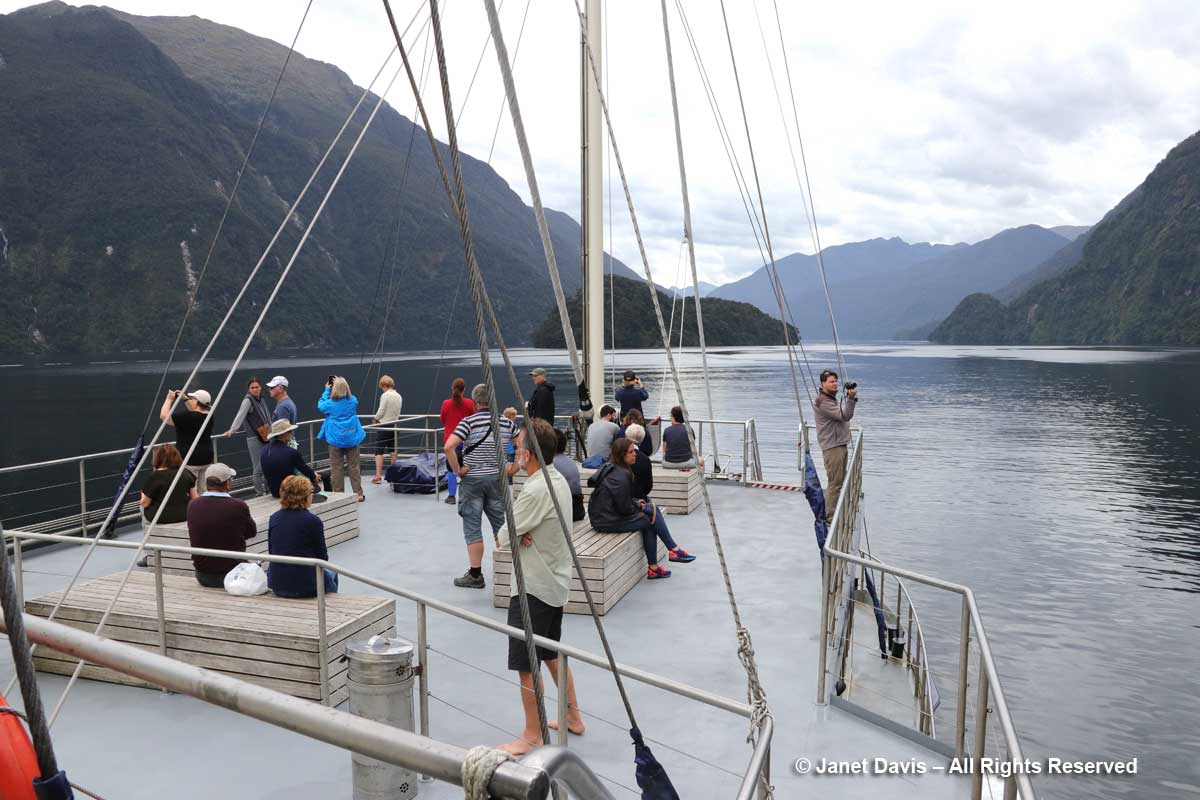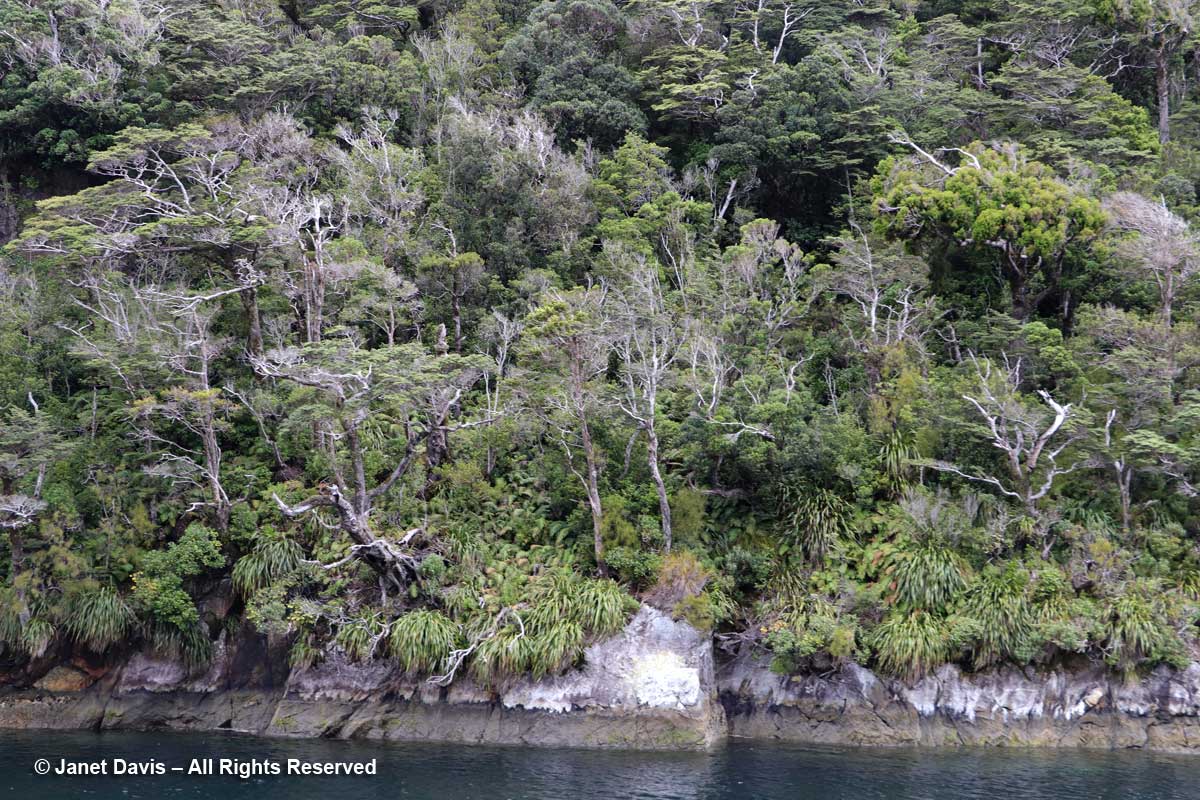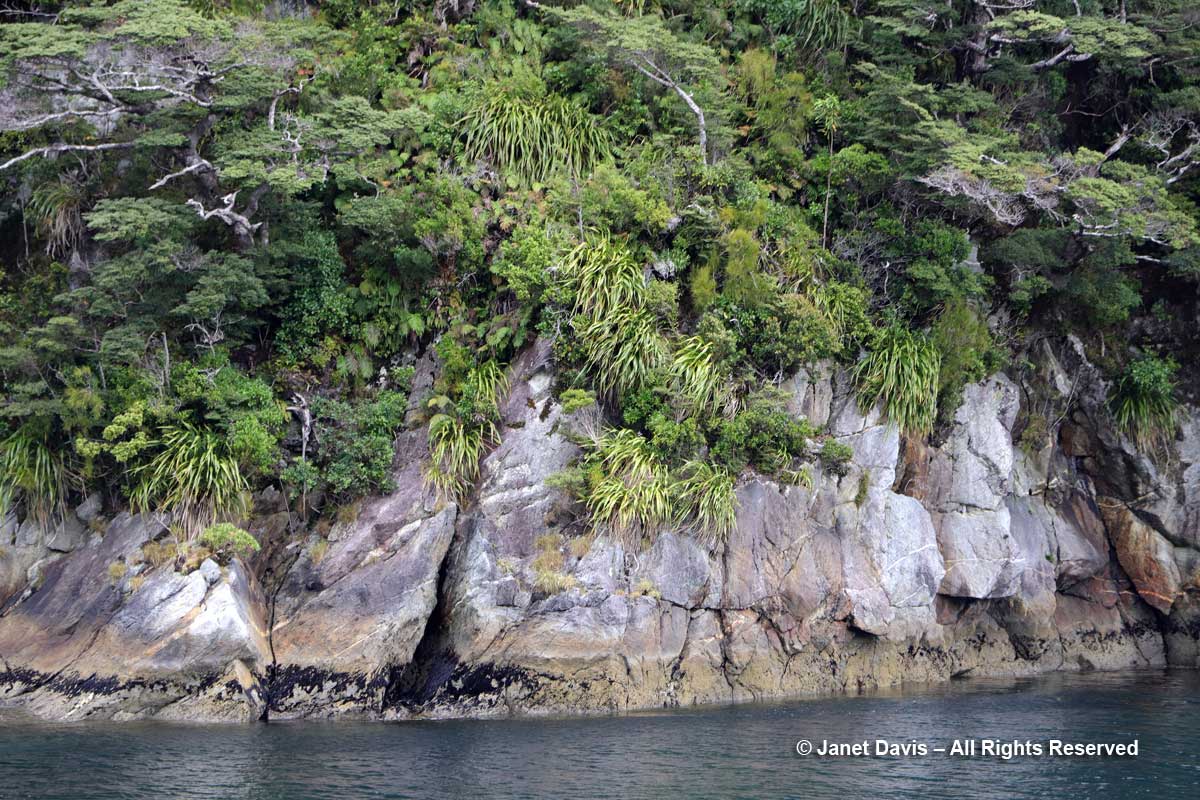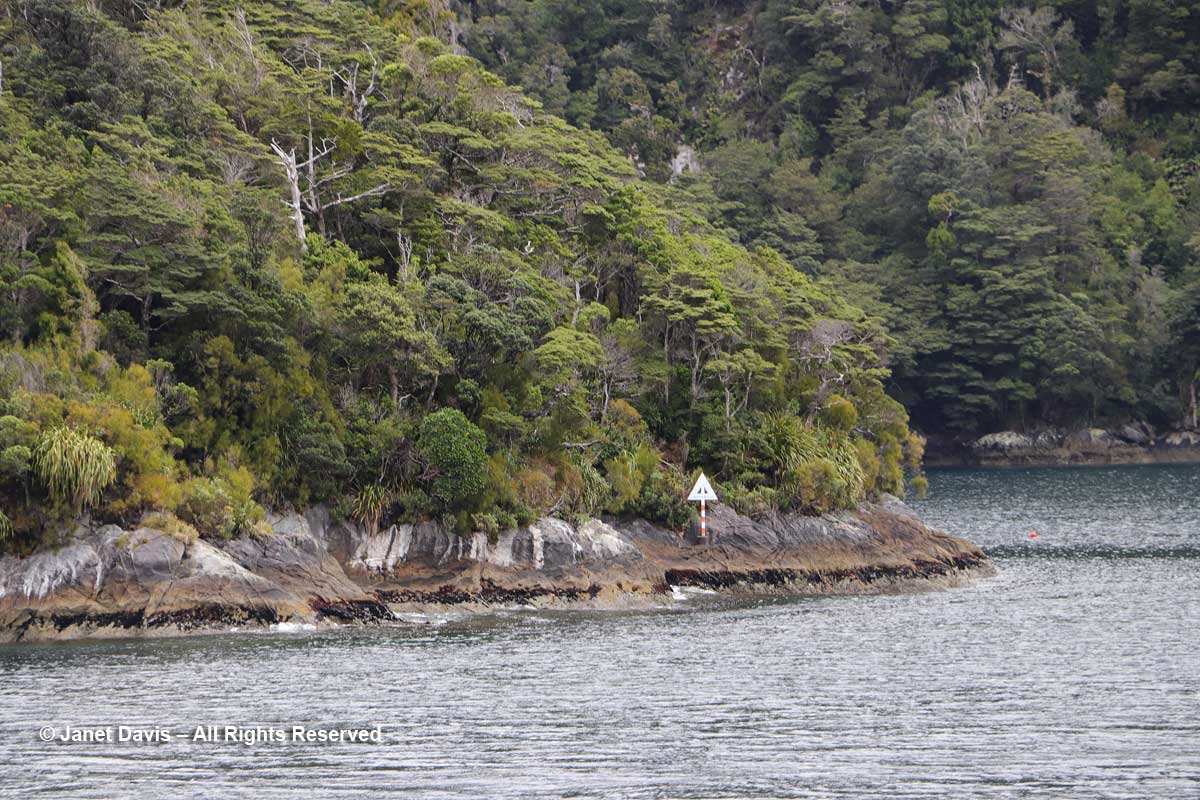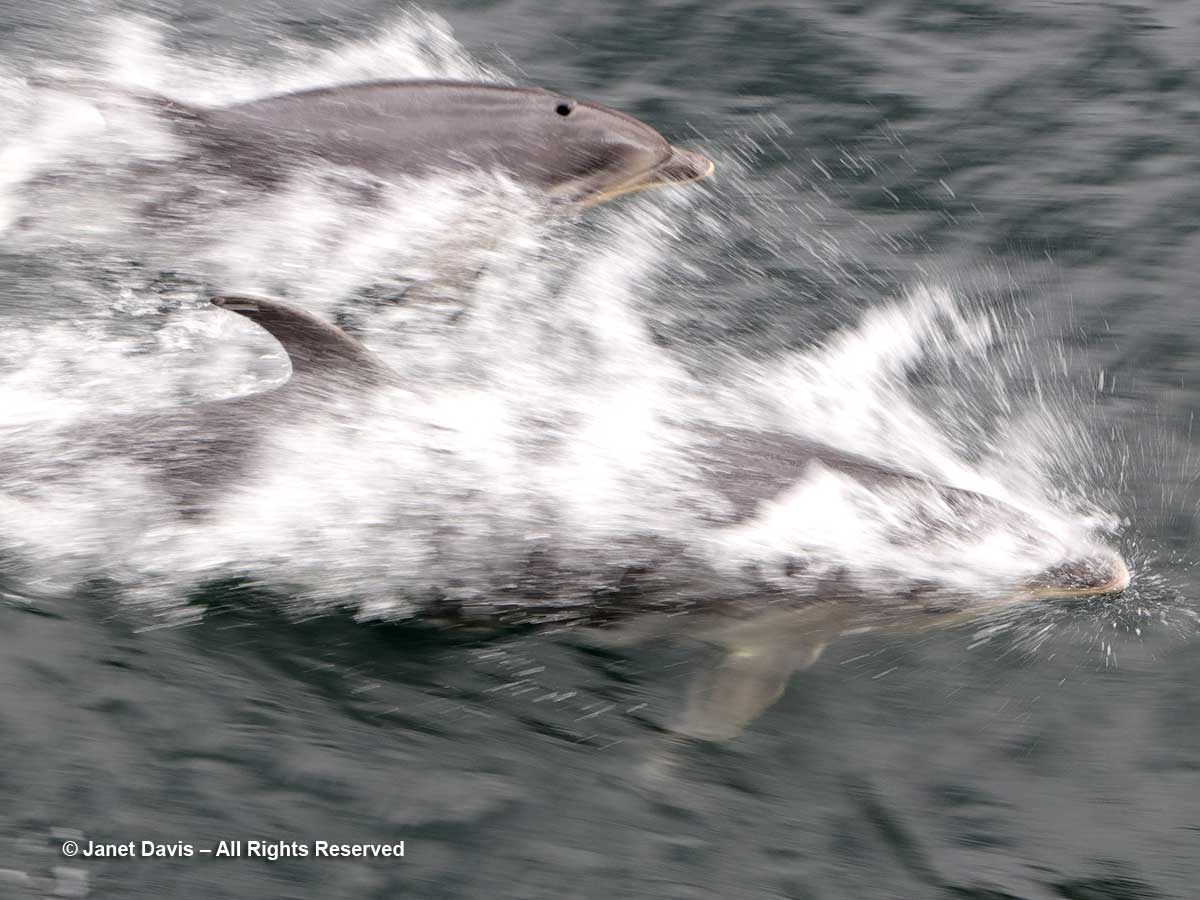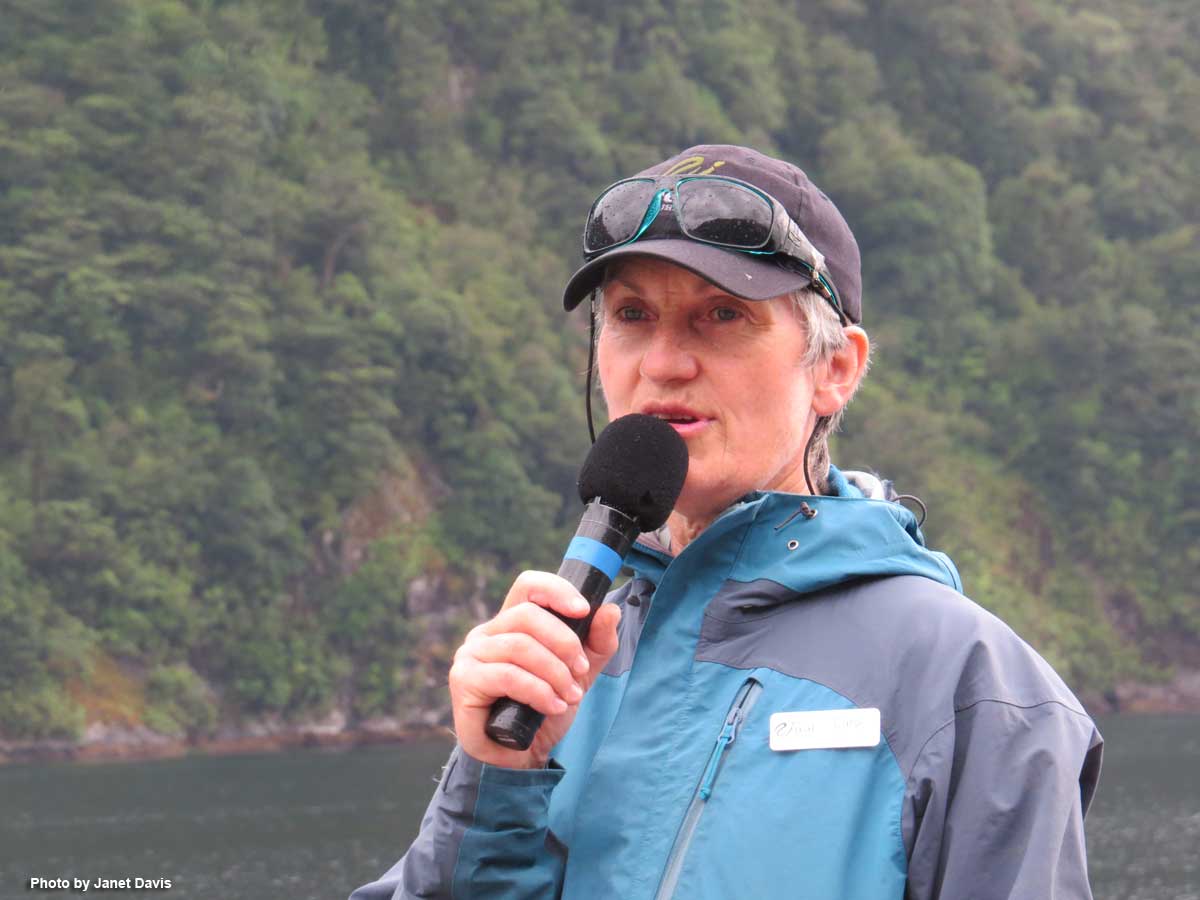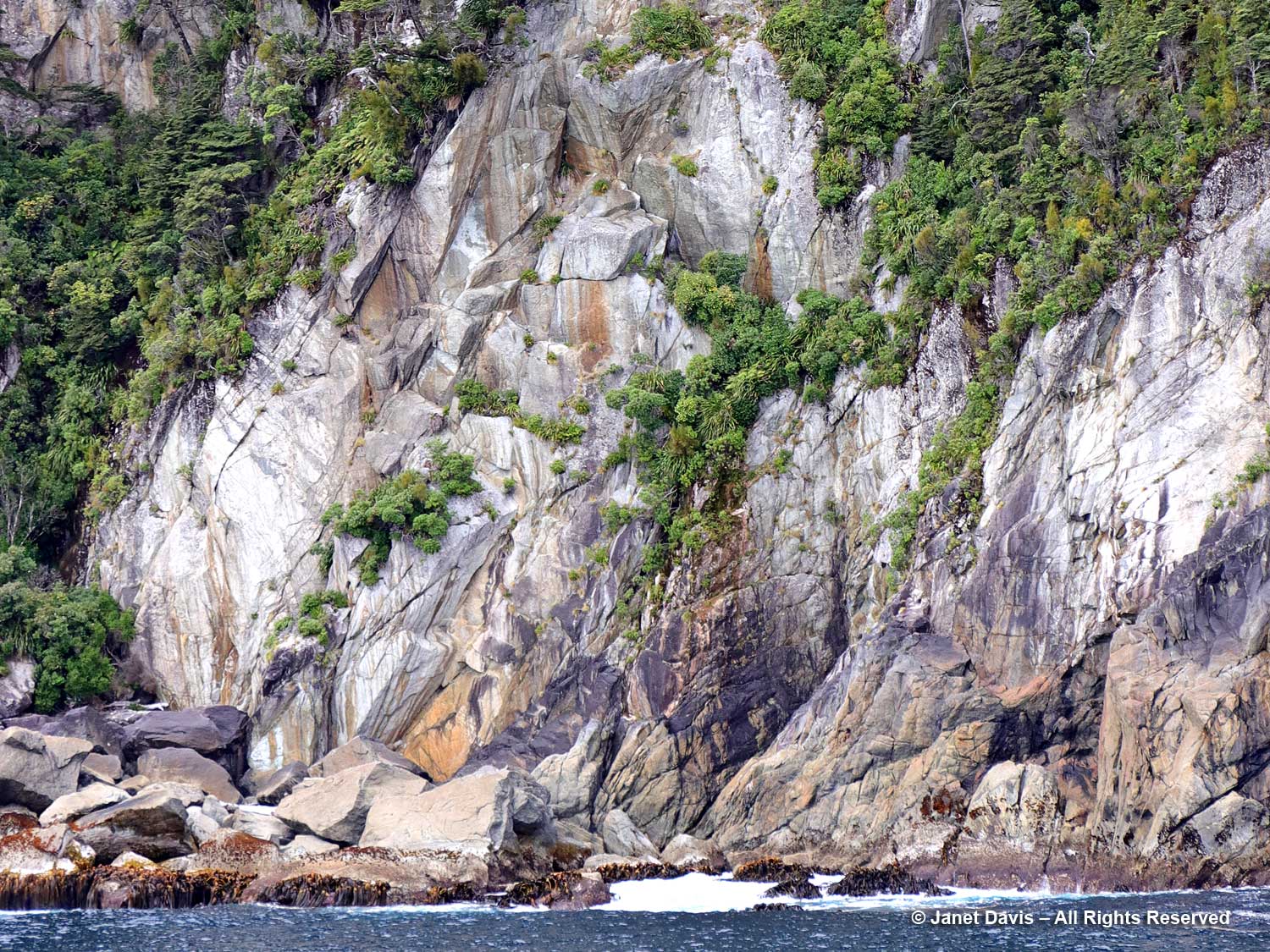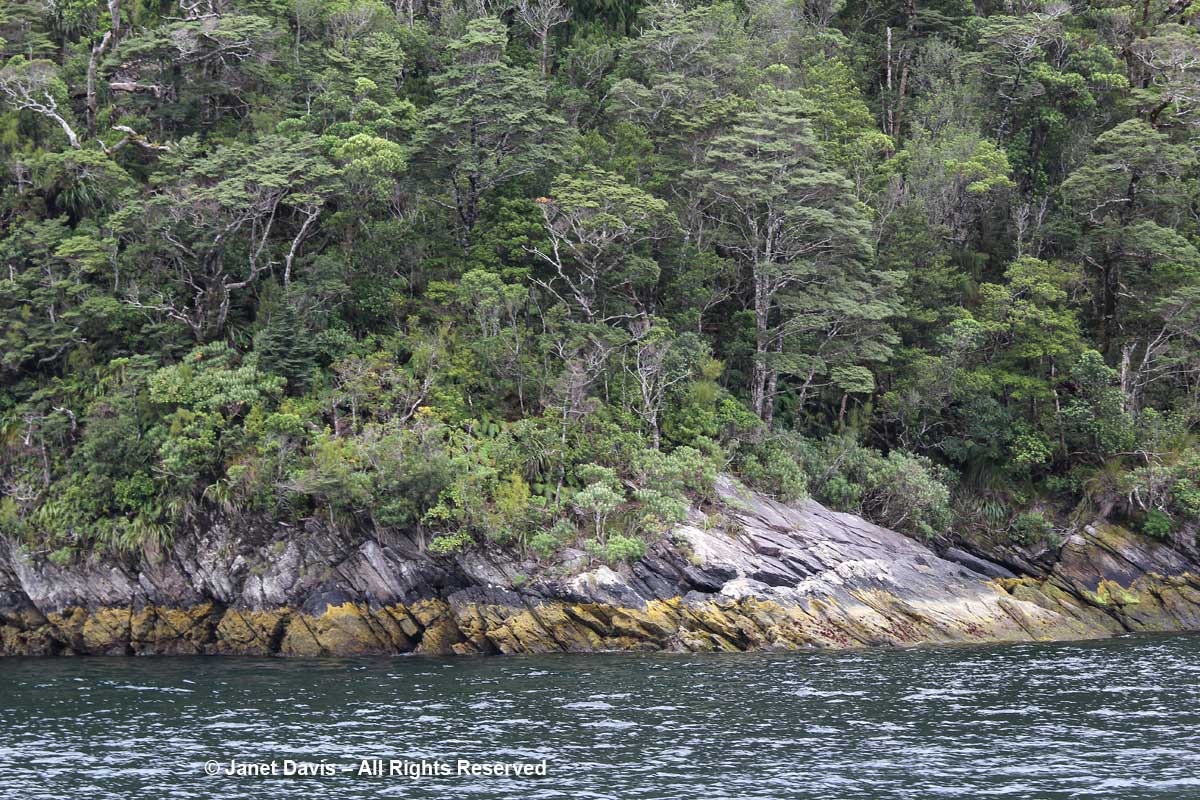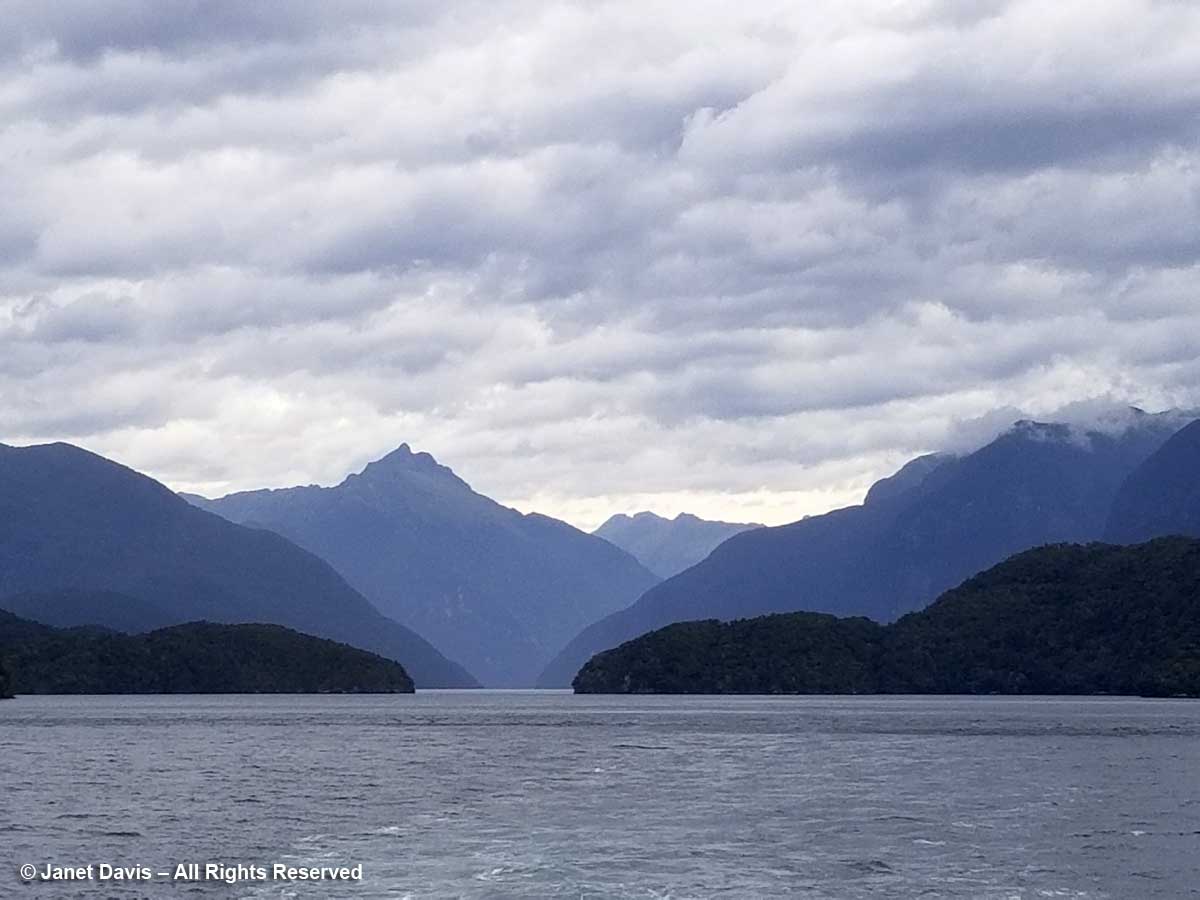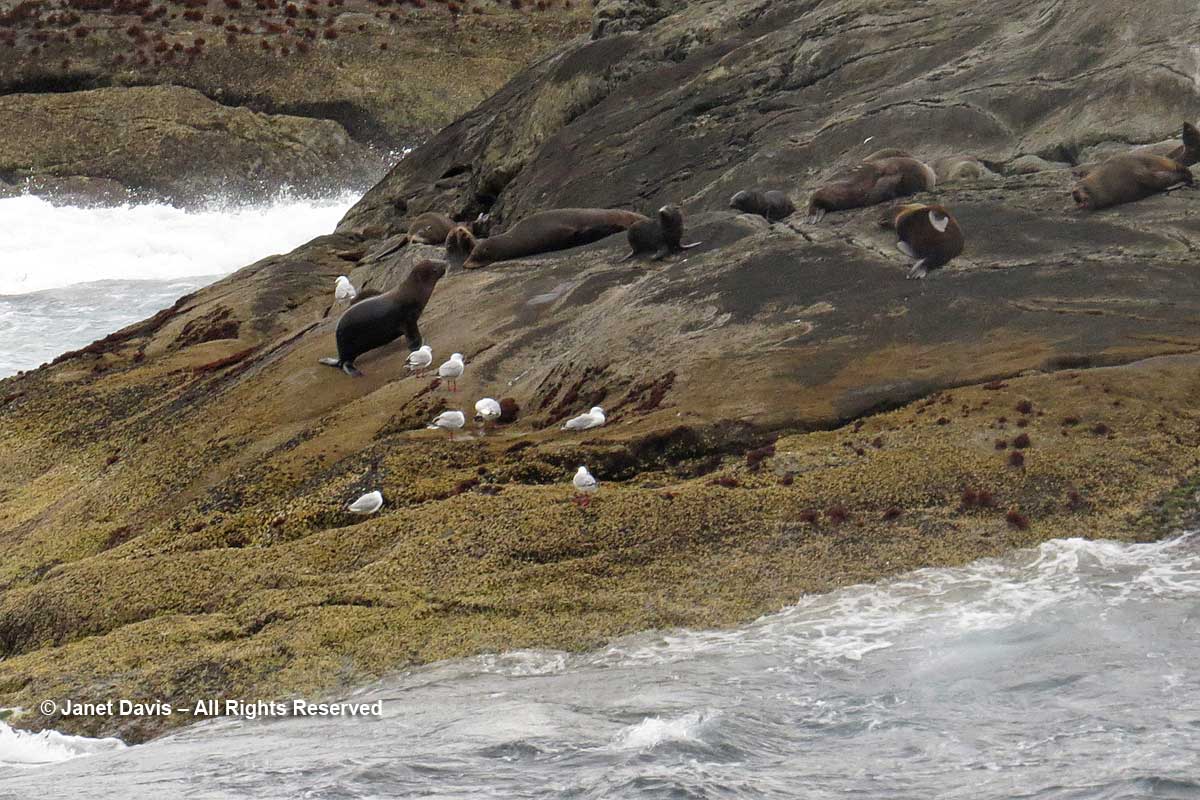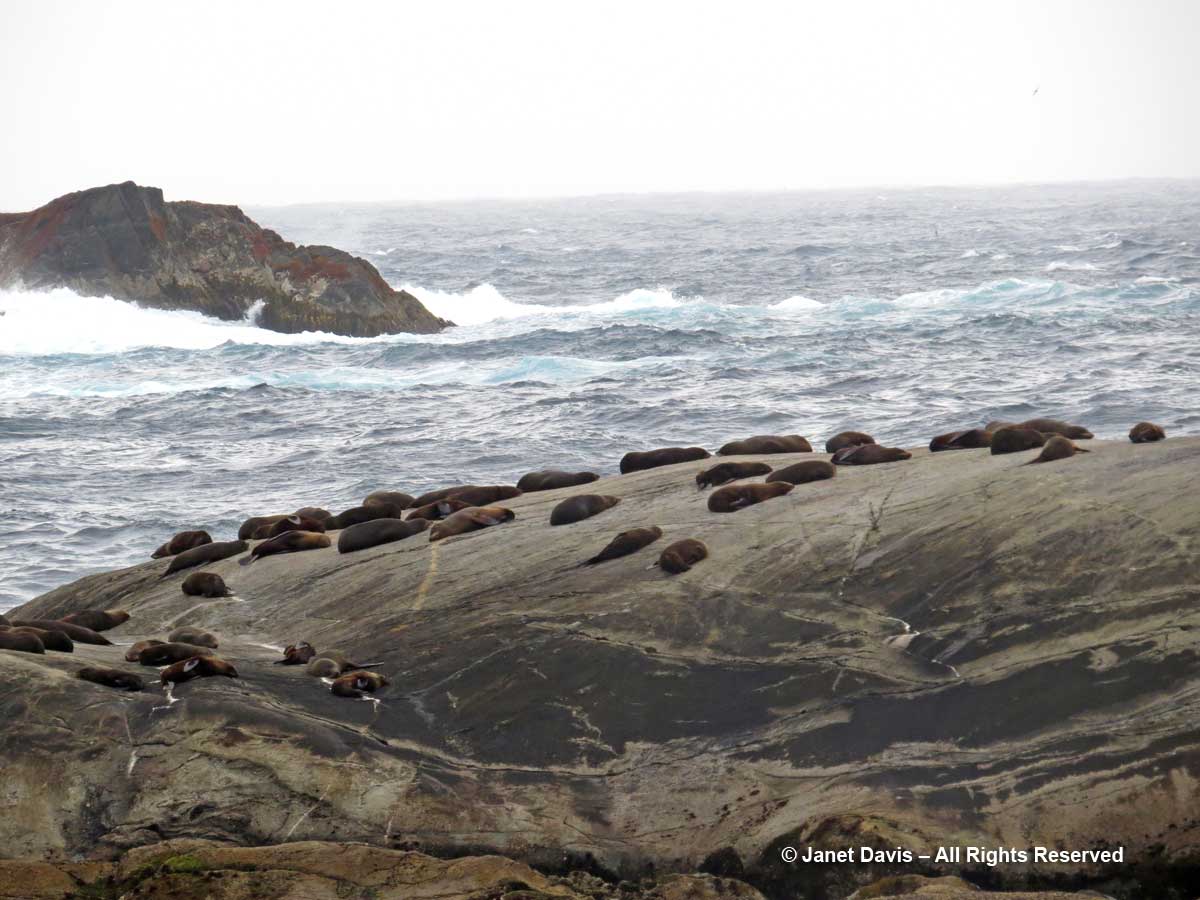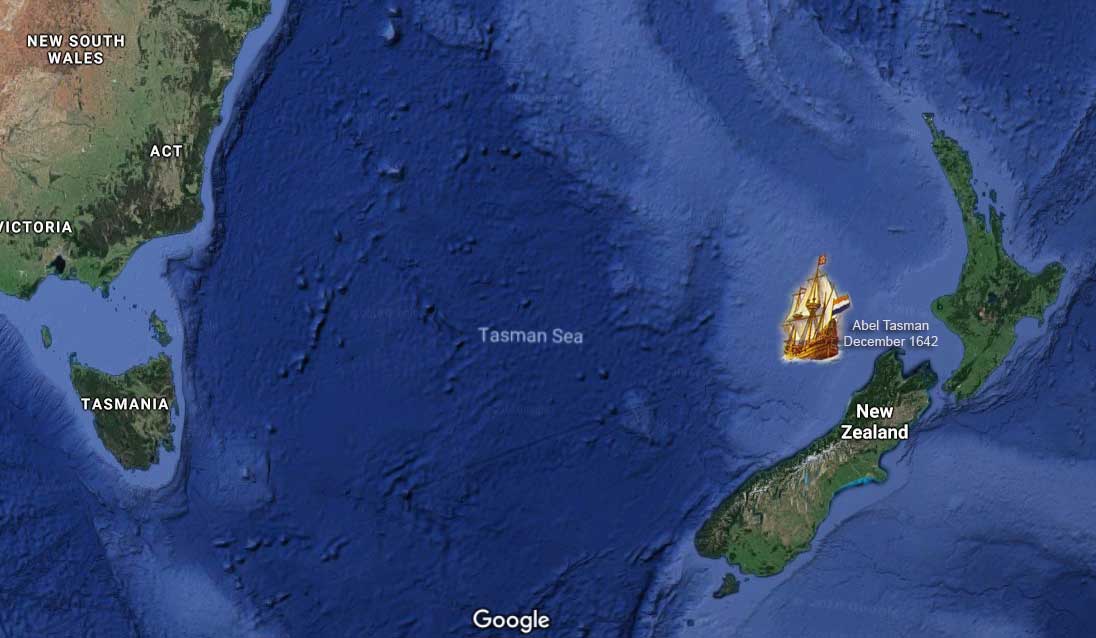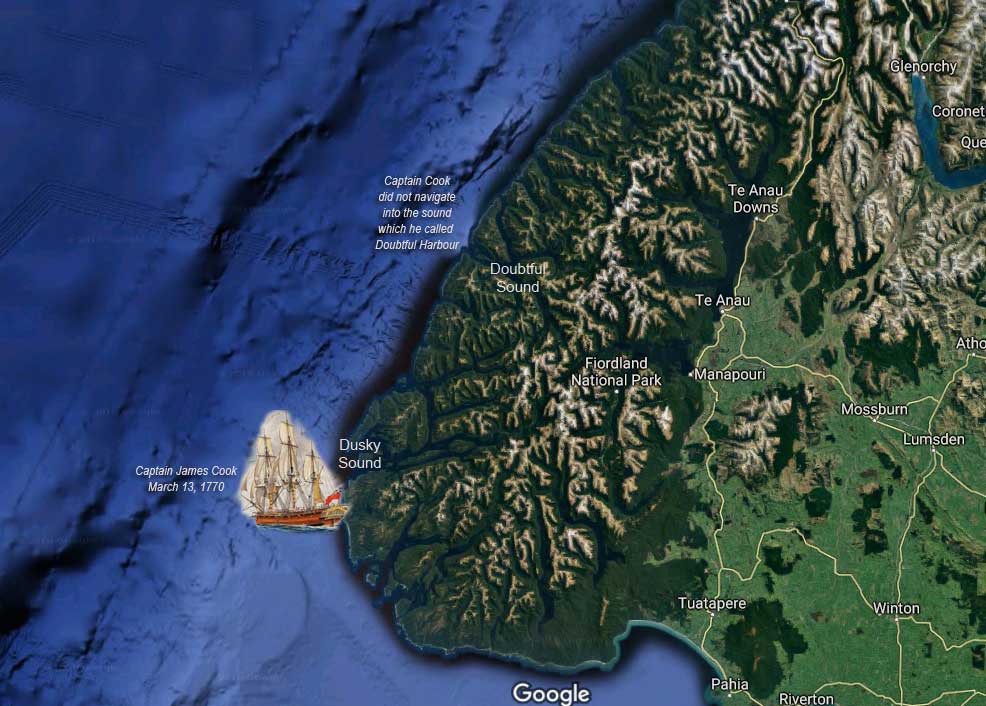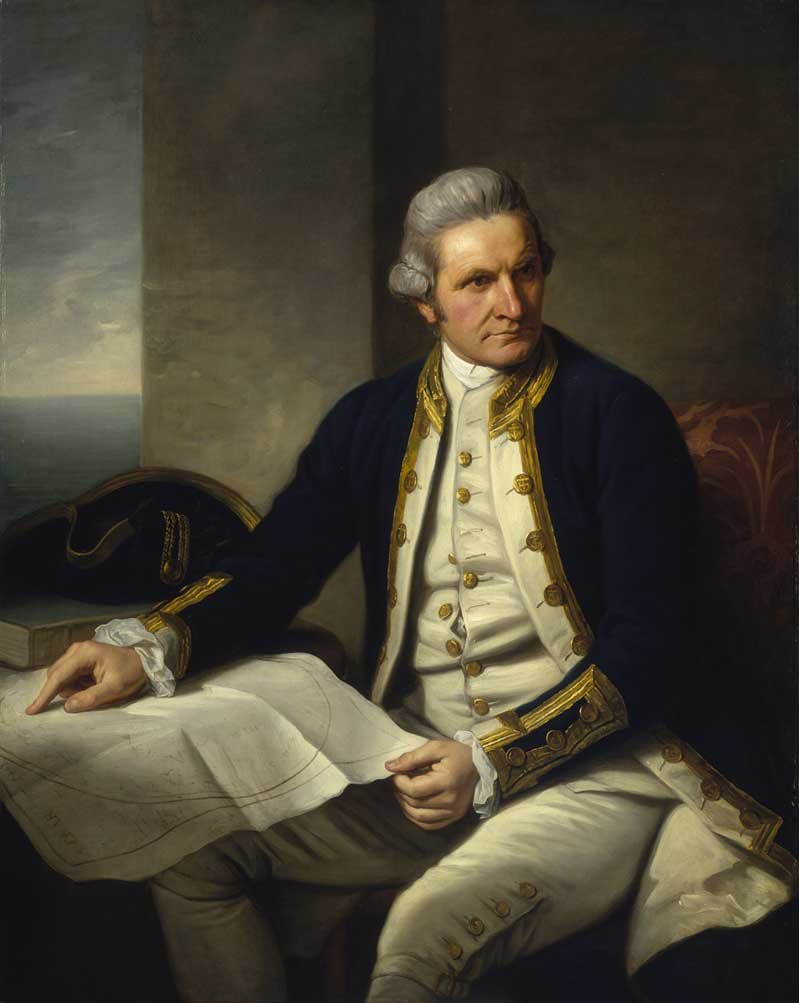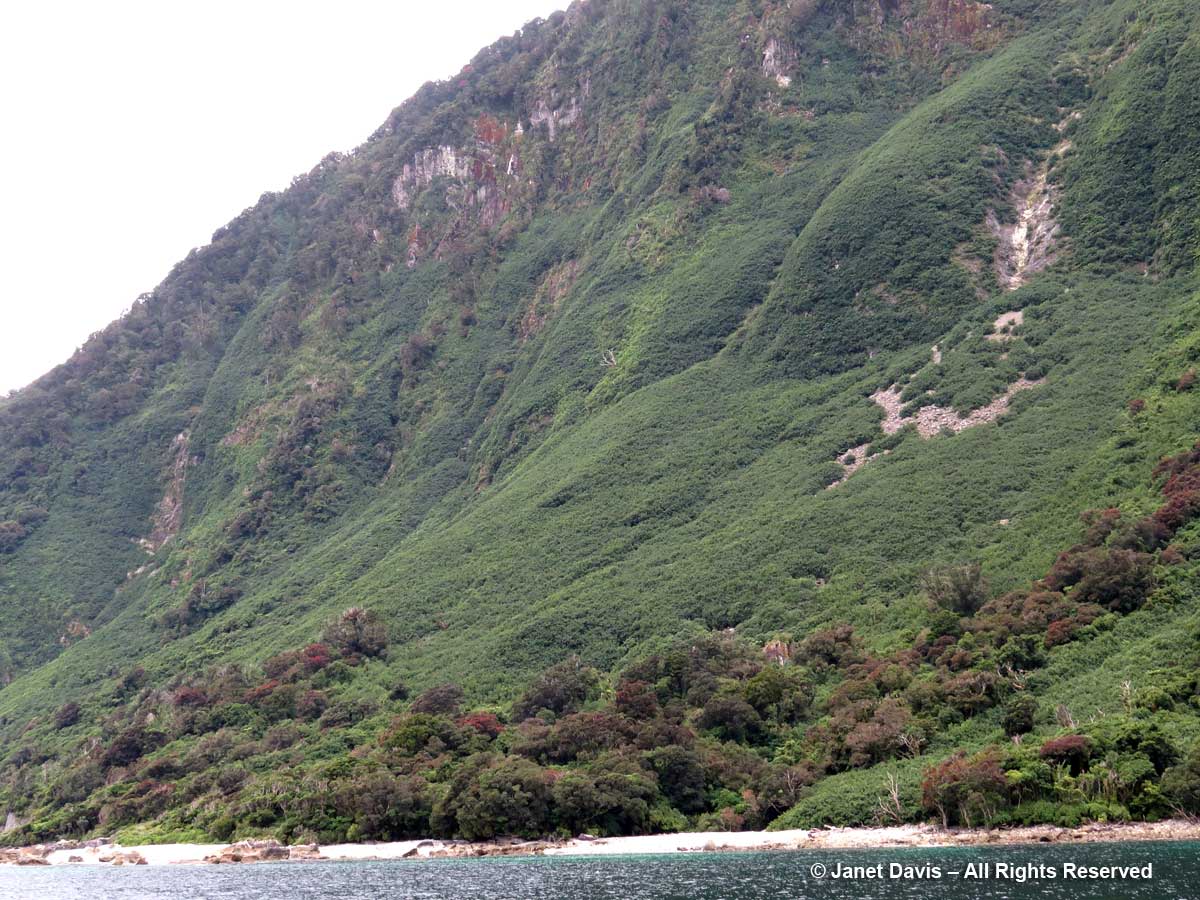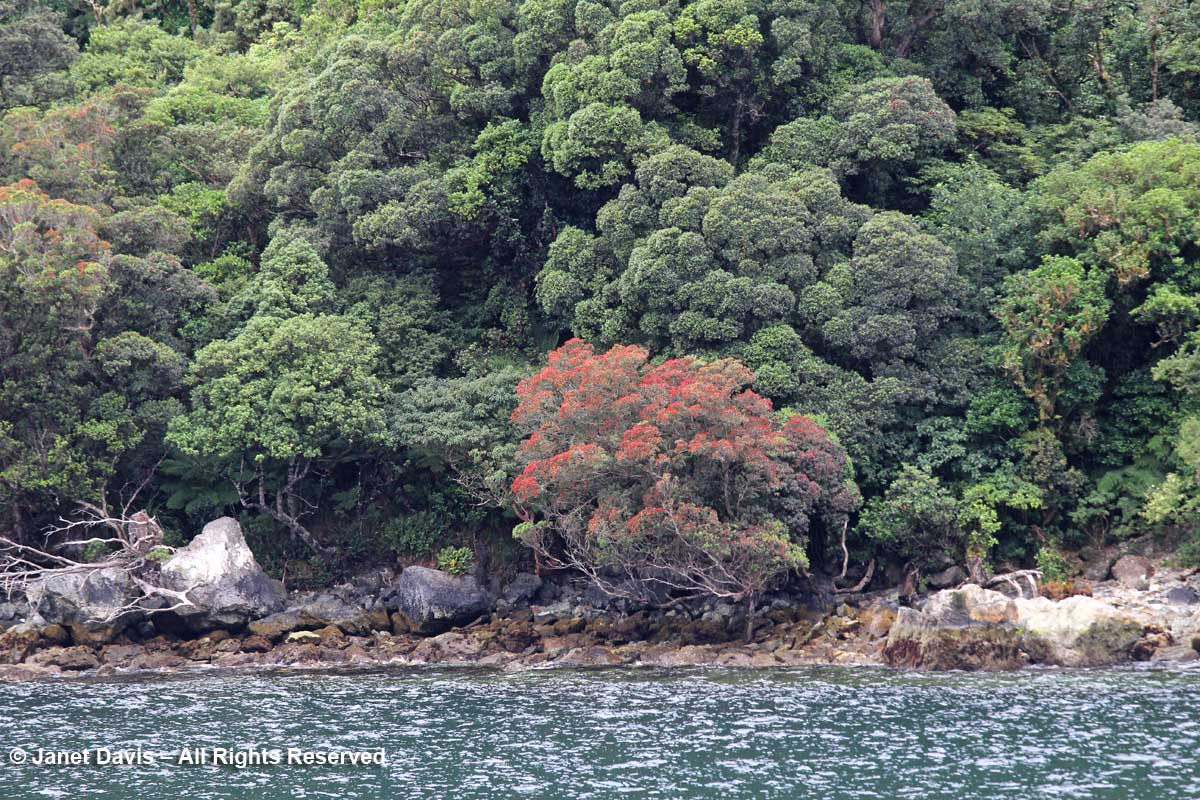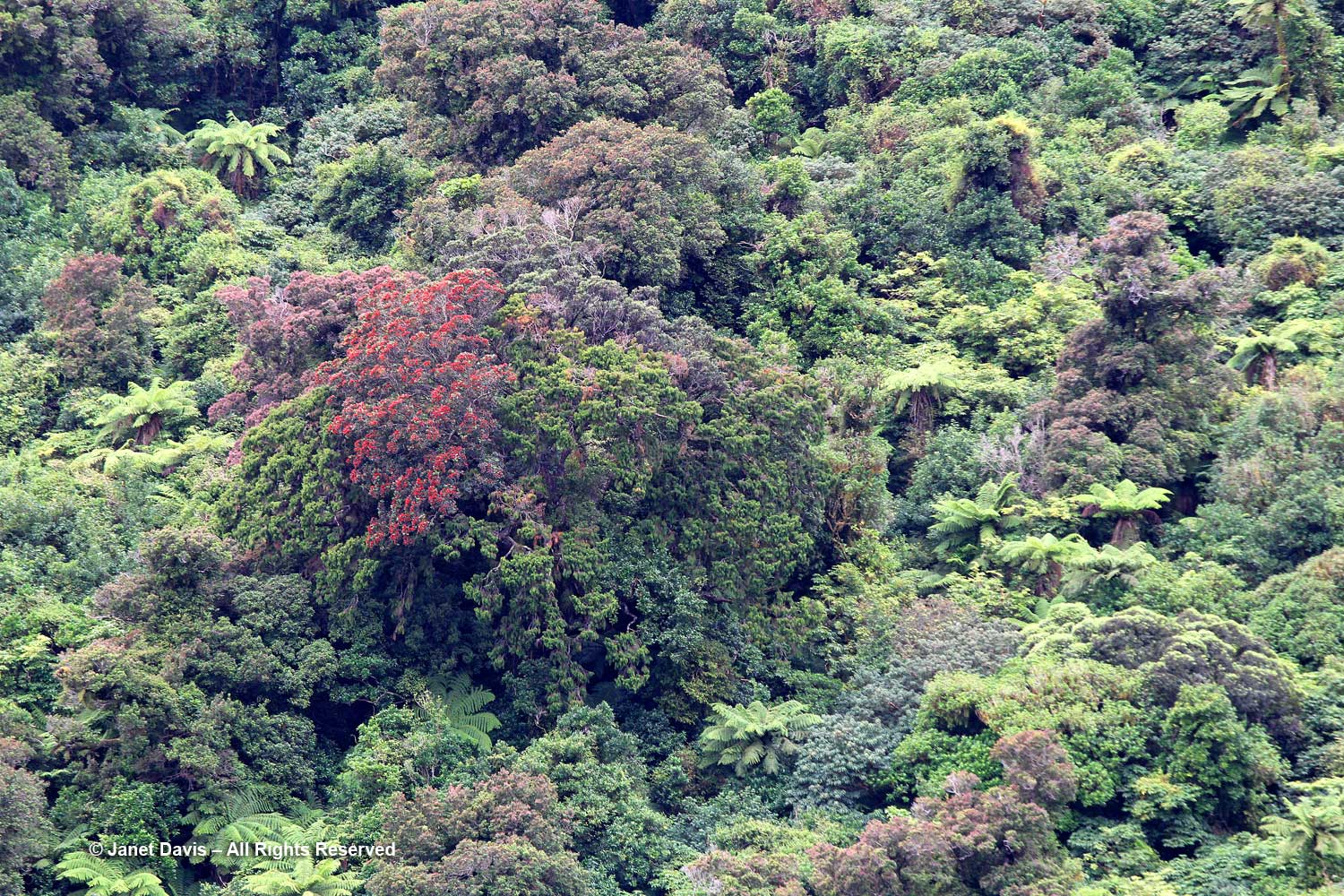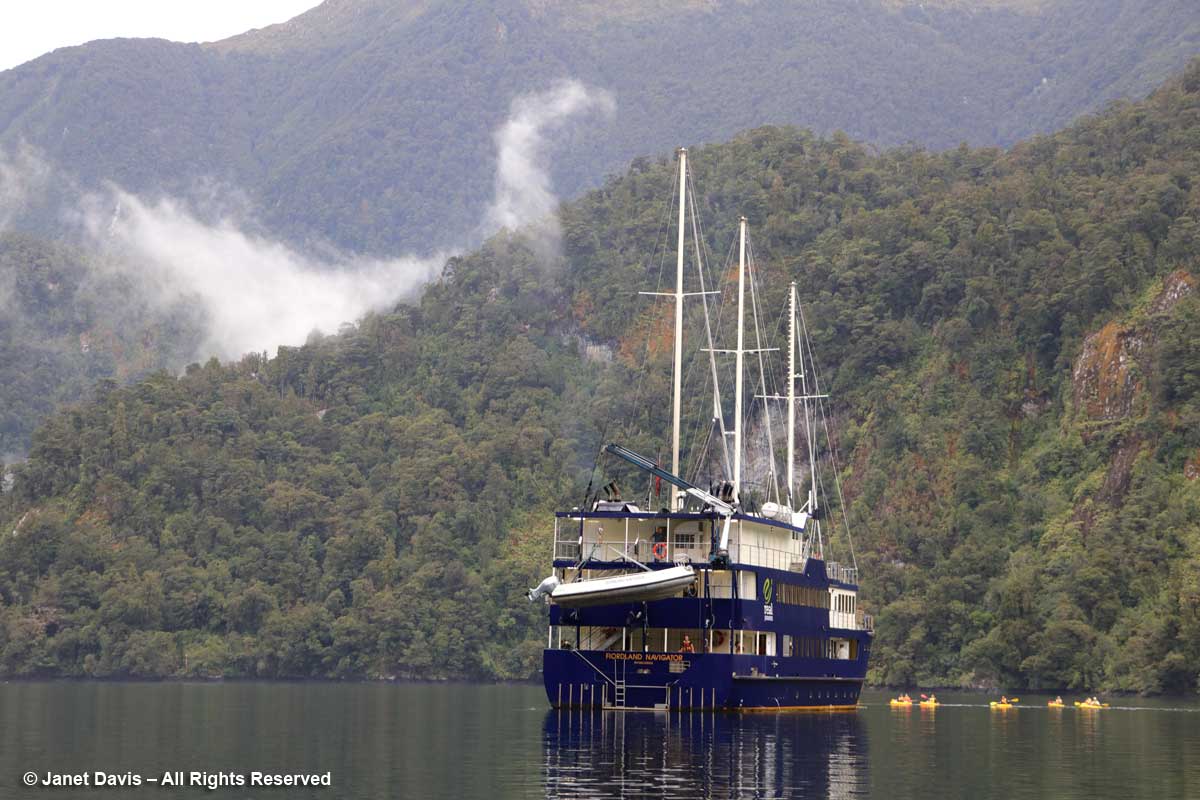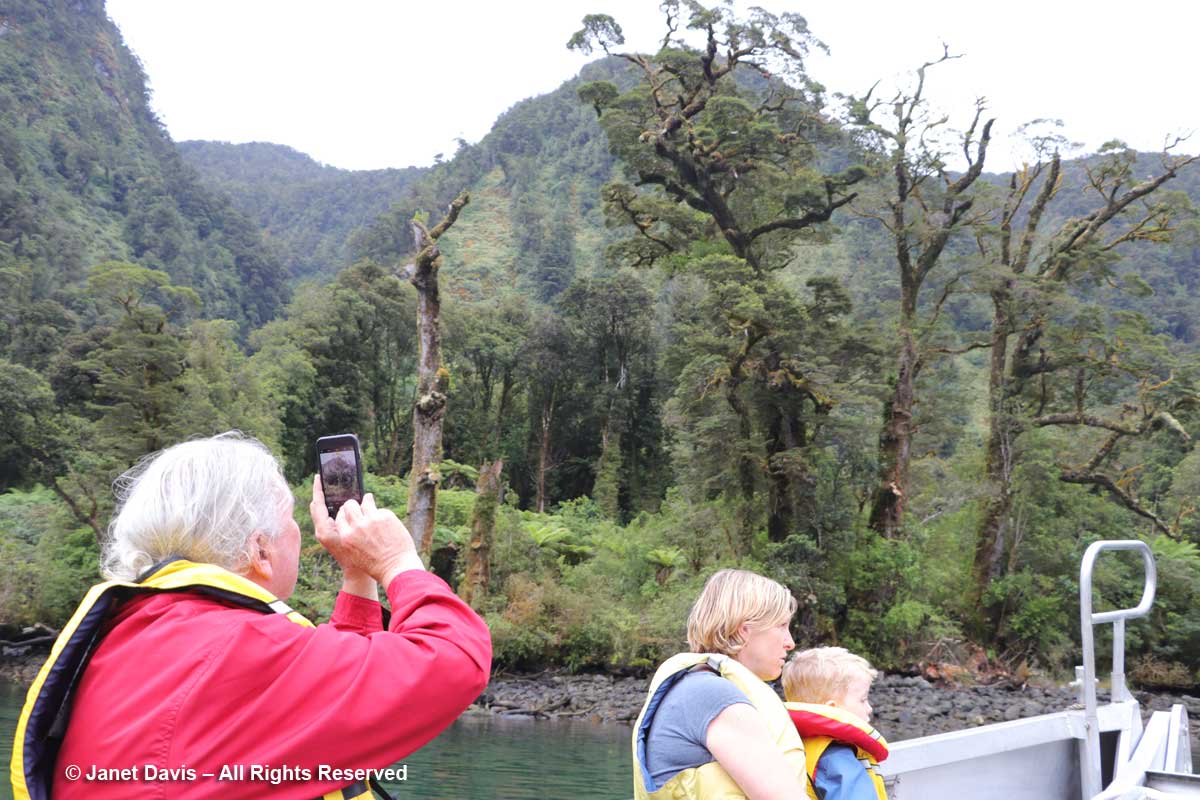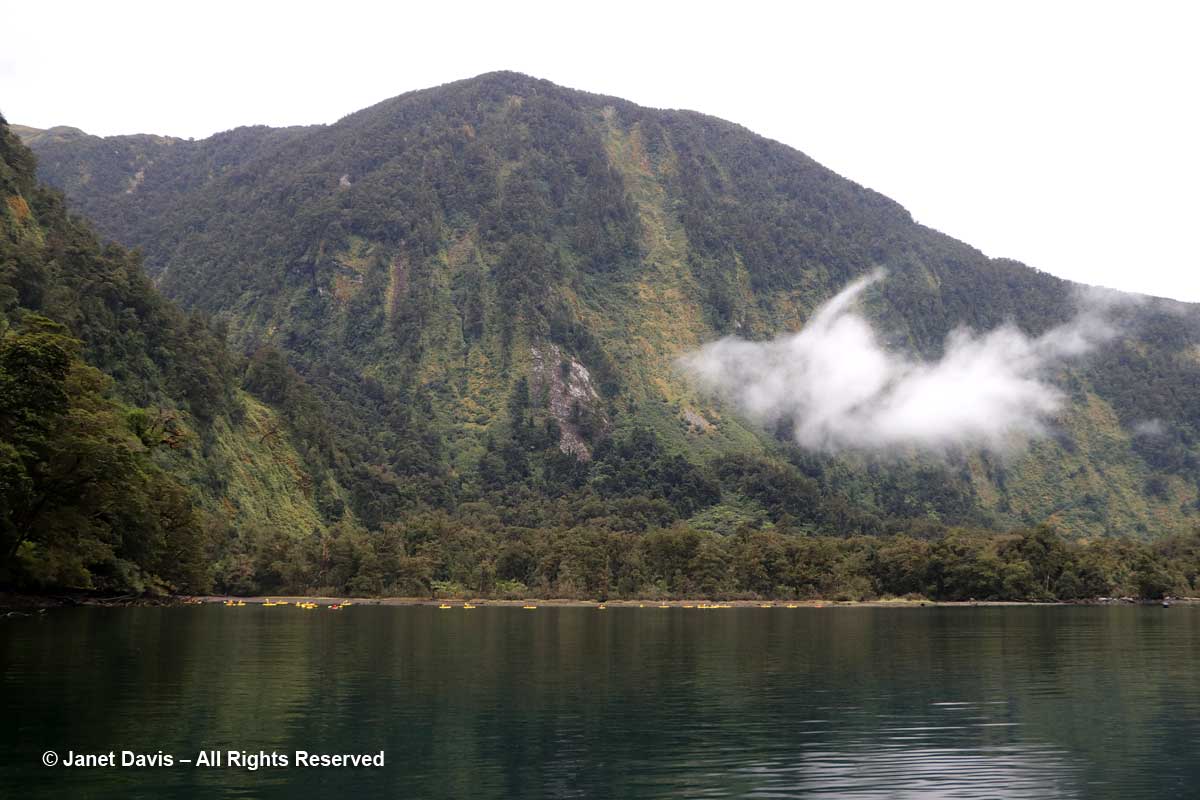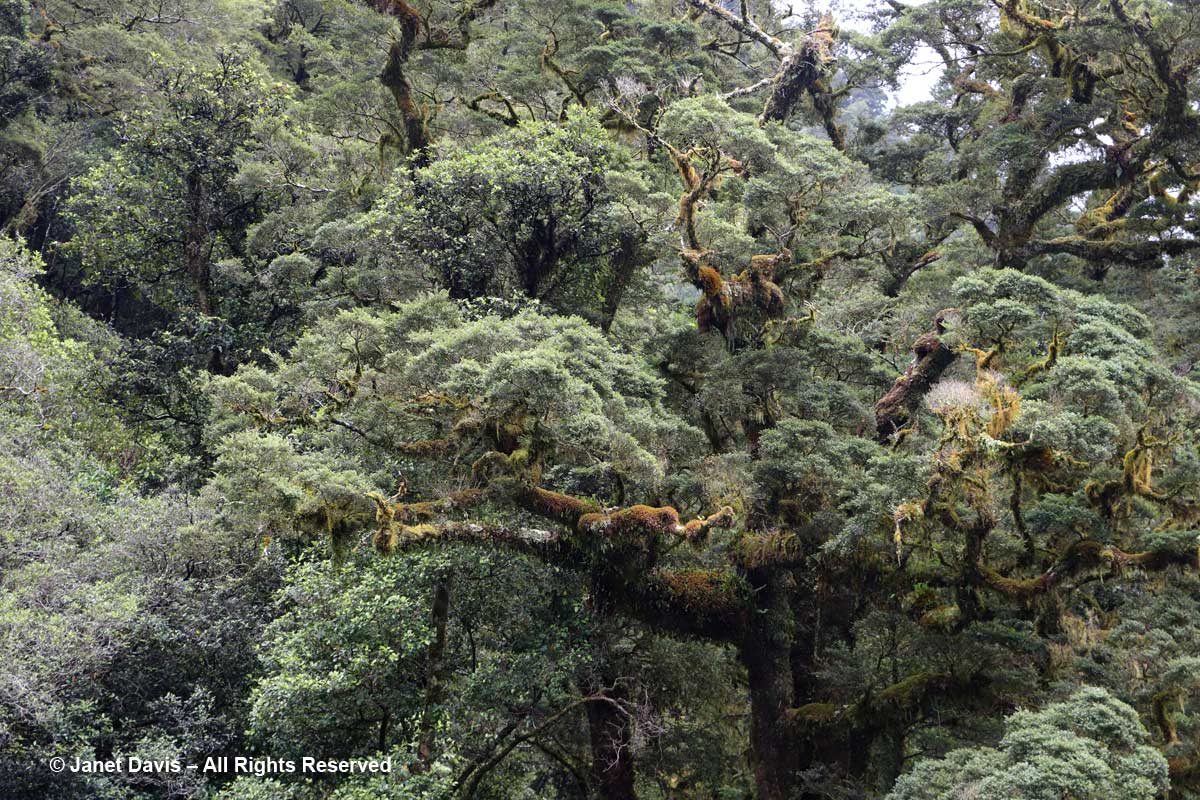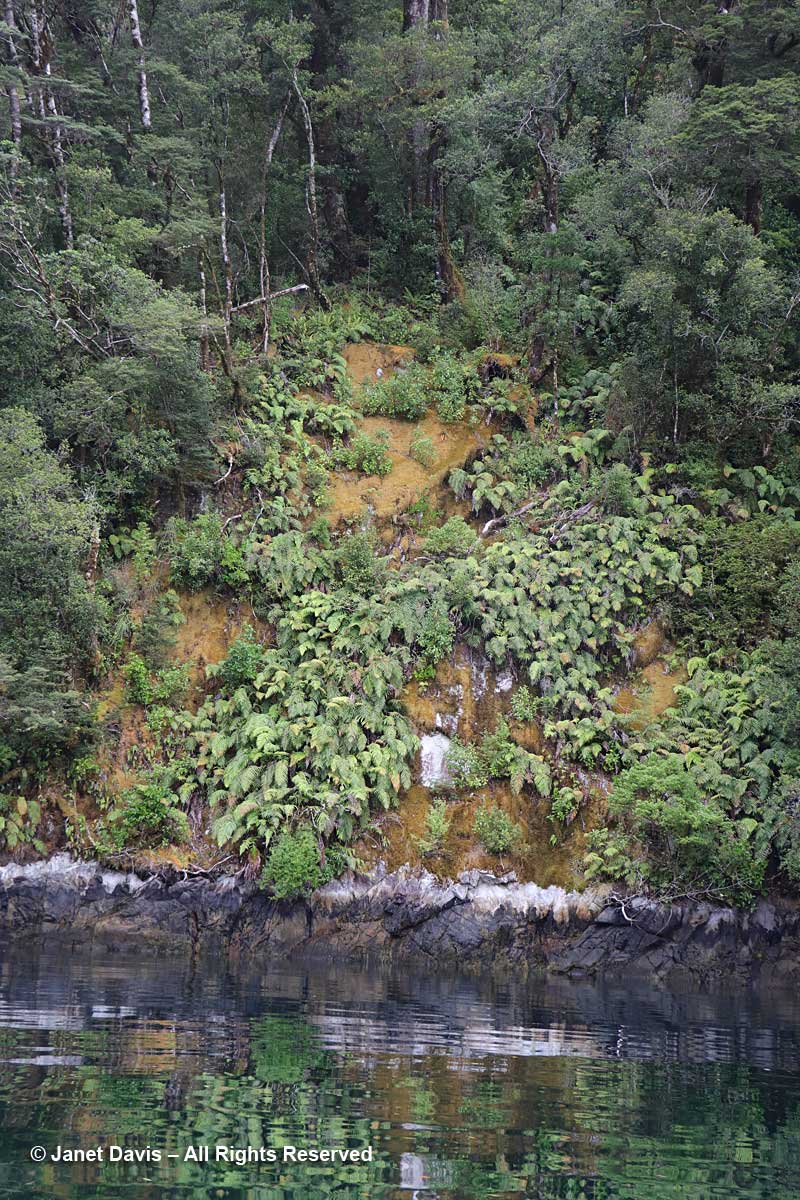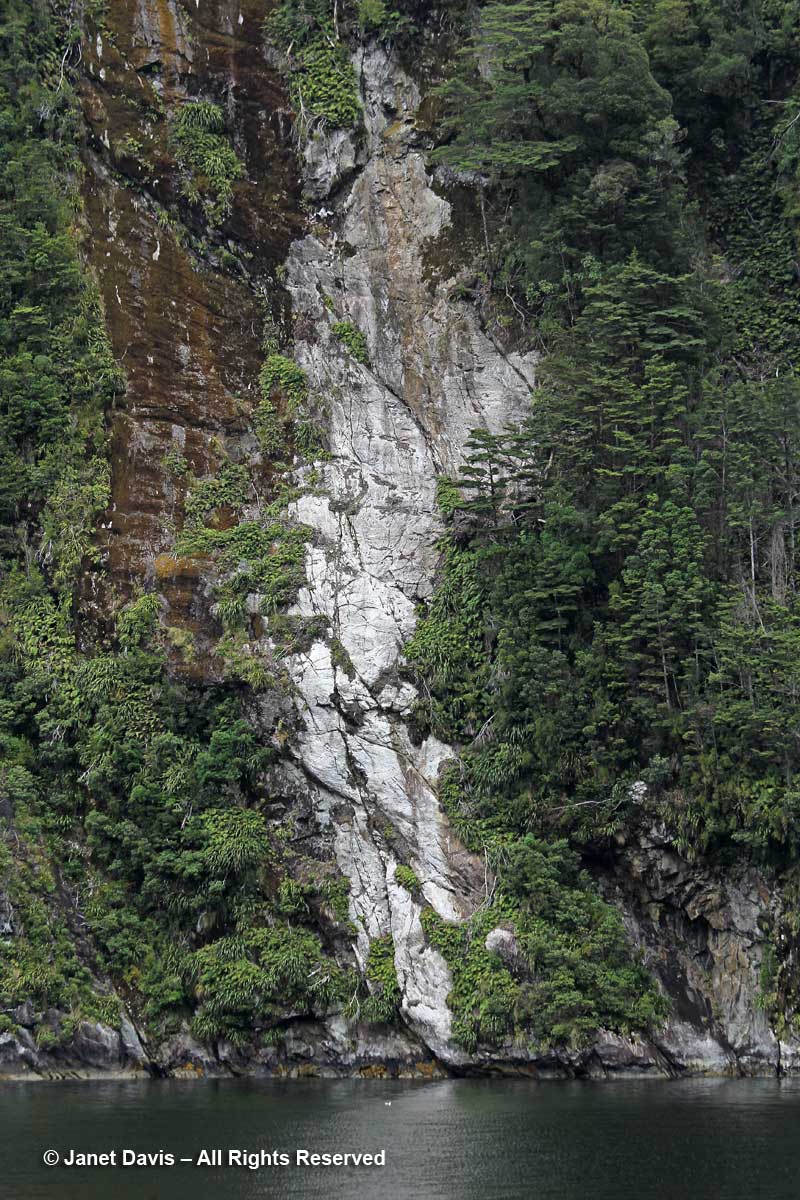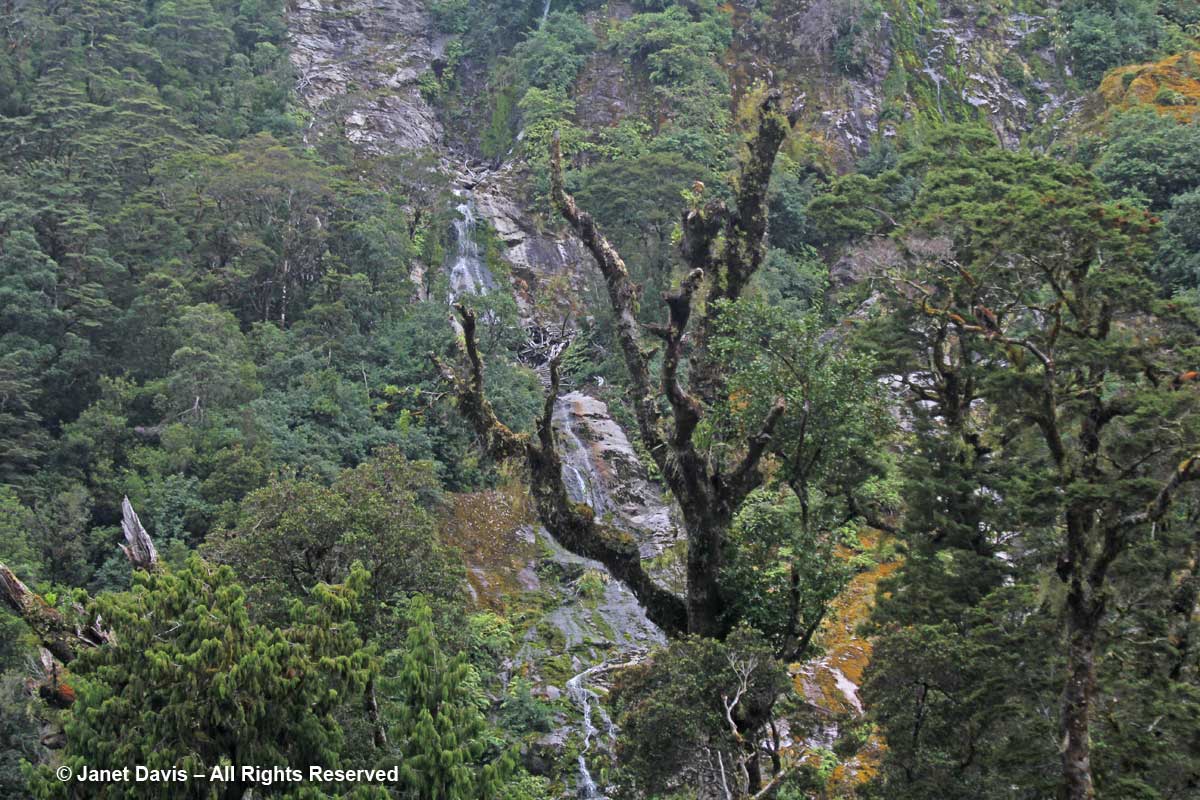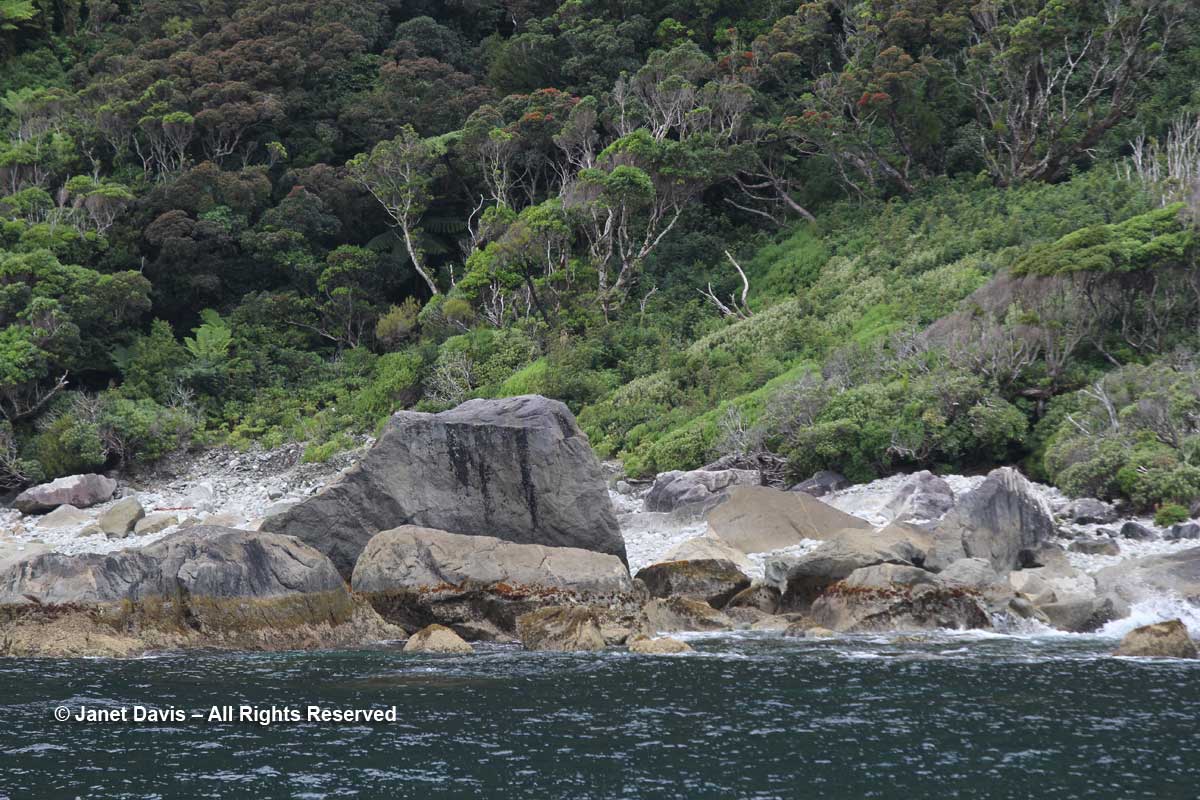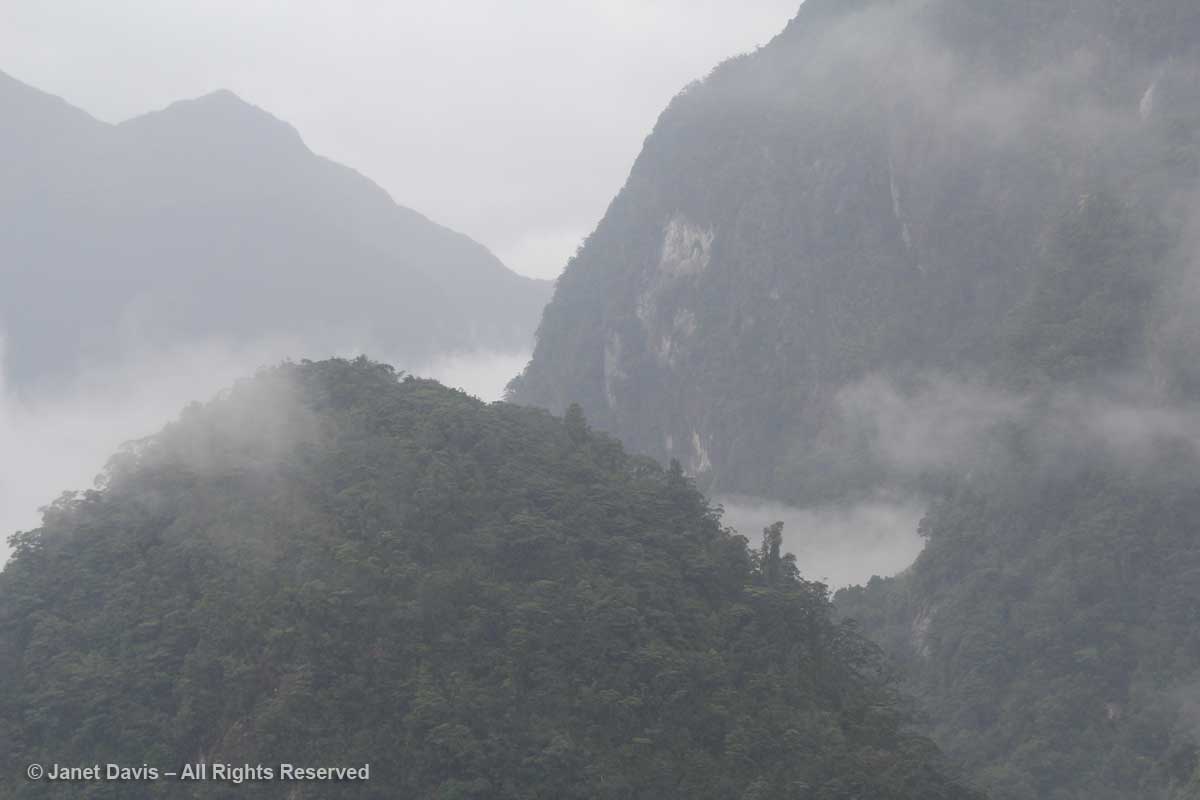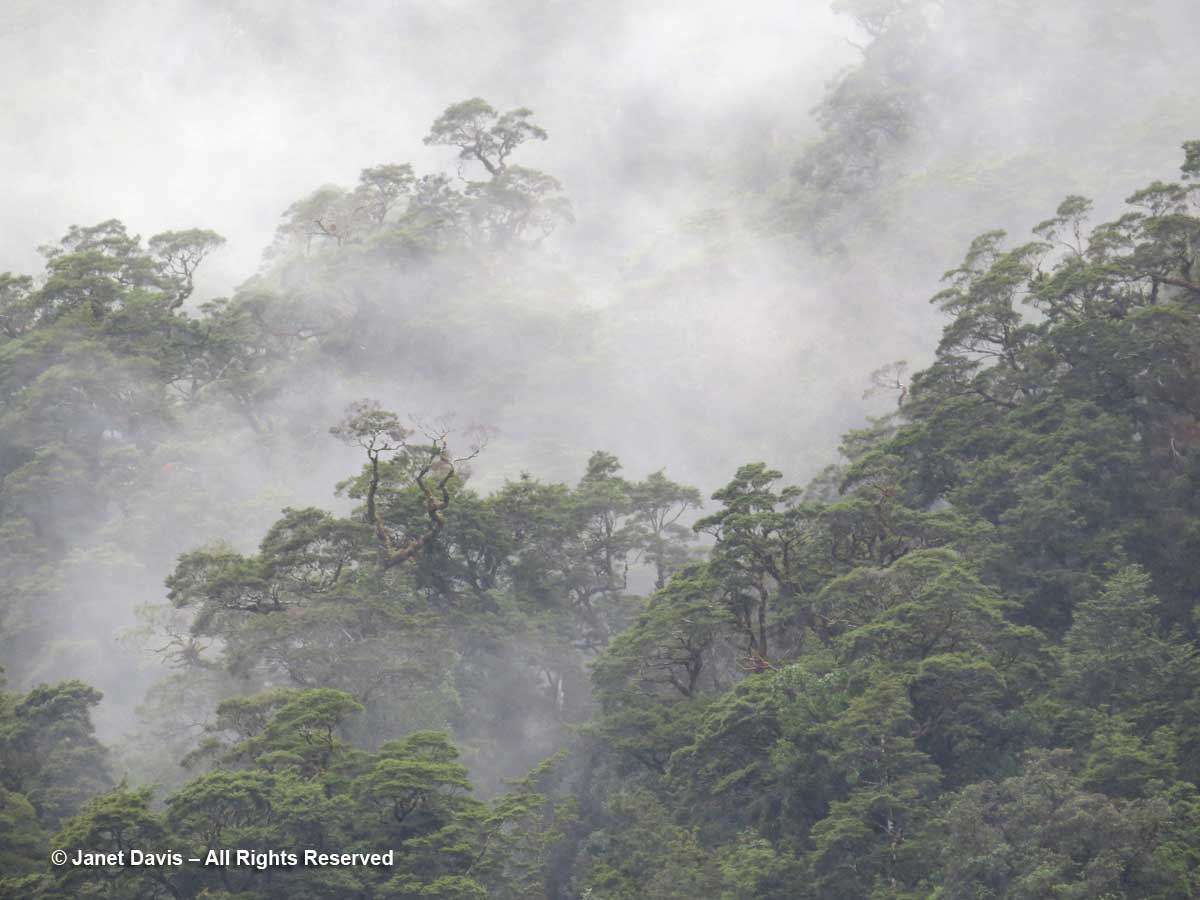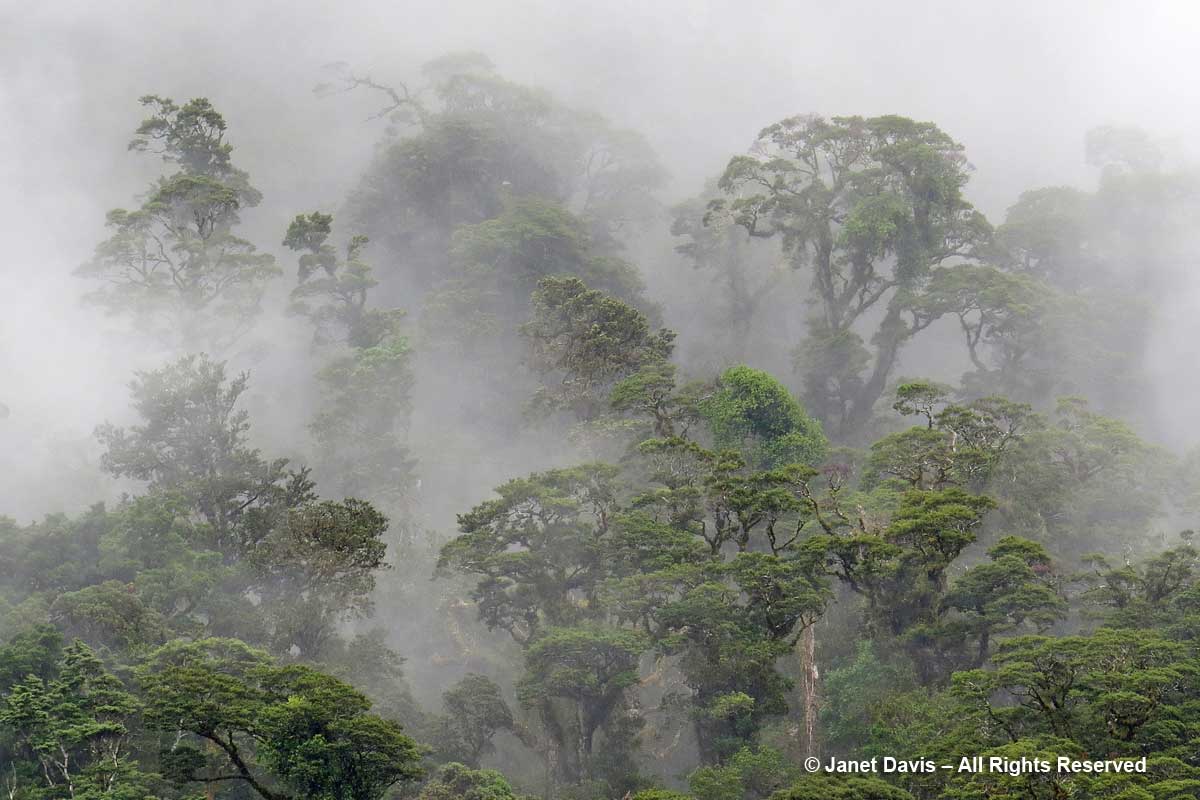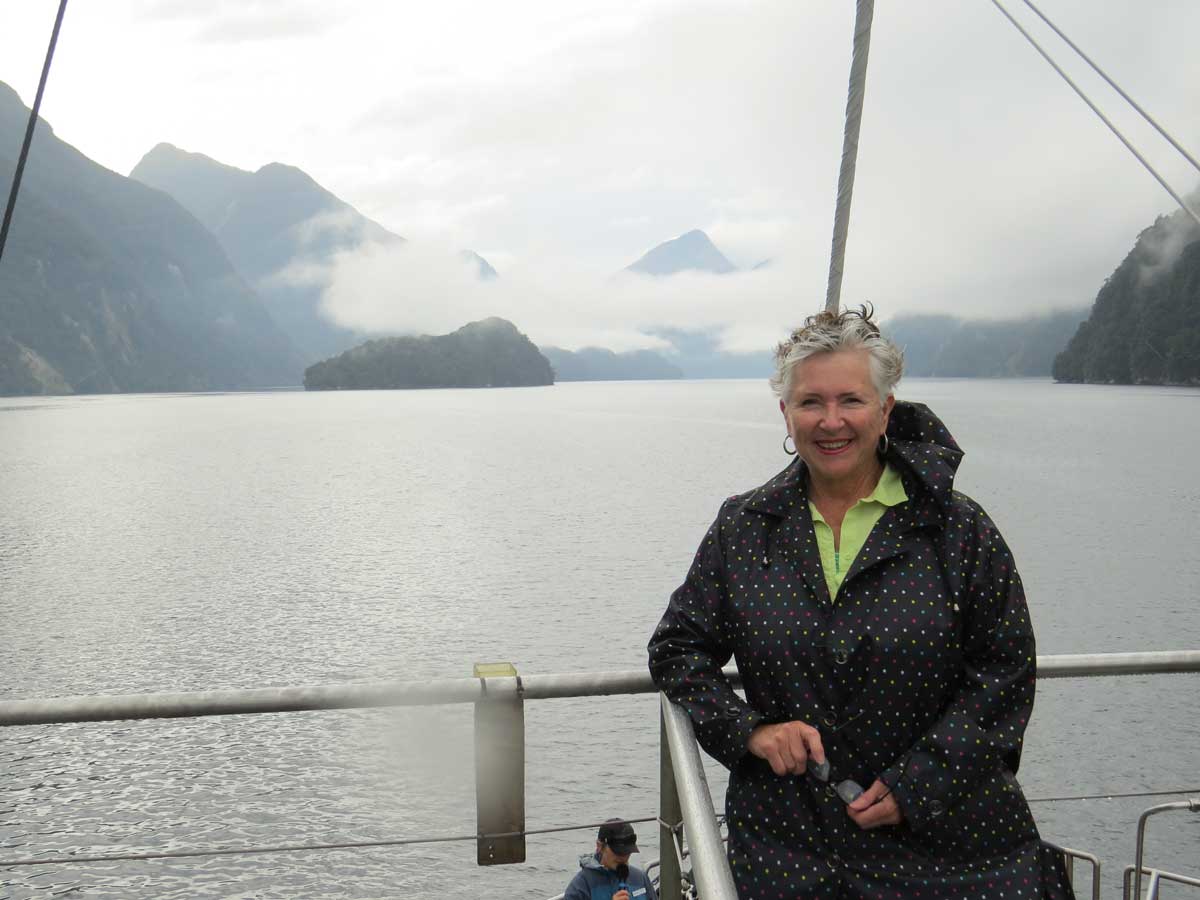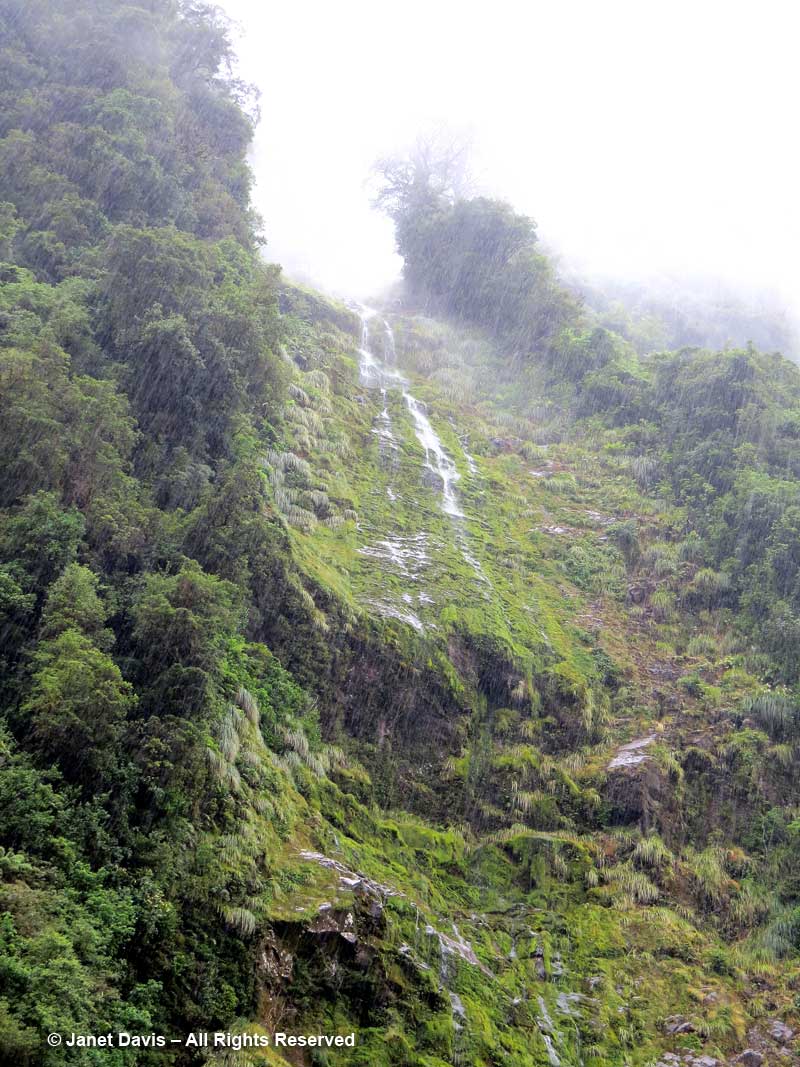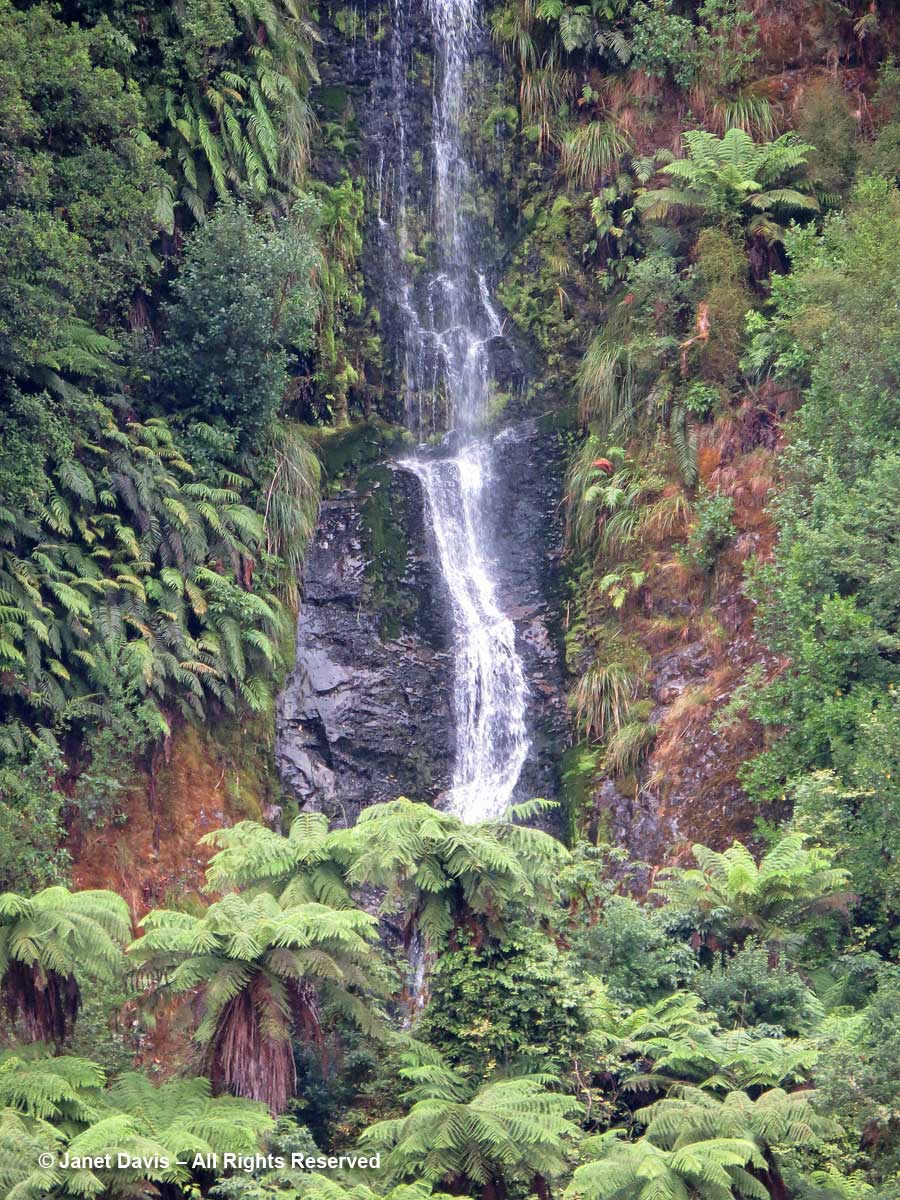If you’ve read Part One of our visit to Boat Basin and Cougar Annie’s Garden, you’re waking up with me now on Day 2. After a night in cabin #6, we rose ready to explore the rainforest and take a little more time to visit Annie’s garden. I looked out our cabin window at the trees growing on the ridge. I saw yellow cedar (Callitropsis nootkatensis, formerly Chamaecyparis). Though it grows from Alaska to California, it derives its botanical name from the fact that it was first collected near Nootka Sound, just north of Boat Basin. Its wood is much used for buildings and was the material Peter Buckland used to make the long sushi table, among other structures.
I could also see Pacific silver fir or amabilis fir, Abis amabilis.
When I walked up the forest path towards the outhouse, there was Pacific yew (Taxus brevifolia) growing amongst the salal.
Caitlin was already out photographing when Doug, Mary Ann and I finished a leisurely breakfast and began our walk down the ridge road. Caitlin had warned us it was steep, and this photo doesn’t really illustrate how steep. You can see the ghostly cedars along the road. Peter said: “Dead, standing cedars we call ‘grey ghosts’. They make excellent posts and beams, structurally and aesthetically. Most have grown in wet ground where nutrients are low, suppressing growth. Grey ghosts are effectively hardwood. Their interior is deep mellow brown in colour, ideal for interior finishing, viewable at Central Hall and several cabins. Logging cut down grey ghosts and left them to rot, a process that takes centuries due to the preserving oils within cedar. All was not lost. During the first twenty-five years of construction when logging roads provided access to nearby clearcuts many grey ghosts were recovered.”
As the road flattened, I saw lots of young lodgepole or sea pine (Pinus contorta).
We came upon Peter’s garden in a clearing with raised beds filled with …..
….. the dahlias we’d seen in vases, the ones that recall Cougar Annie’s mail order business…
…… as well as mesclun lettuces (Peter contributed the salads to our two dinners) and….
….. shiso (Perilla frutescens) and squash.
Heading towards Annie’s garden, I saw some old gem-studded puffballs on the road….
…. and passed Peter’s beautiful woodshed, almost filled and ready to supply a winter of heat to the pot-bellied stove in his house.
As we took a path from the road through the trees into Annie’s garden, I wished it was June rather than early October. Had we arrived in spring or summer, we might have seen some of the colourful blossoms of the perennials, shrubs and trees still surviving, with Peter’s help, and illustrated on this poster.
We wandered about, imagining how Annie’s house must have looked in the 1950s, 60s and 70s, when she was still filling plant and bulb orders to be sent throughout Canada…..
…. and growing her own pleasure garden, now setting seed in another autumn.
I saw a big drift of montbretia (Crocosmia crocosmiiflora) and a….
…. hydrangea ensconced in the heather.
A dark blue gentian poked its head up from the leaf litter…..
…. and we found a few grapes growing on a vine.
Hebe grew along a path, below, along with spireas, weigelas, azaleas, rhododendrons and other shrubs.
I chuckled when I saw a Steller’s jay flitting through the branches of a fruit tree. Cougar Annie couldn’t stand these cheeky birds and there was usually one simmering in a broth on her stove (or so the story goes).
Like much of the Pacific Northwest, Scotch broom (Cytisus scoparius) is a troublesome invasive at Boat Basin and Peter keeps it clipped in the garden to prevent seeds escaping.
But the rainforest is always waiting in the wings to reclaim this relict garden. Here native salal (Gaultheria shallon) was blooming for a second time in the season. In some coastal parts of western North America, evergreen salal forms tall, almost impenetrable thickets. It is commonly used by florists as a filler in bouquets.
Its fruit is edible and has a unique flavour, according to Wiki. Native people ate them fresh or dried into cakes, and the Haida and other B.C. first nations used them to thicken salmon roe. They make a good fruit leather and are also used as a purplish-blue dye.
If the rainforest wants to take back the garden, the little structures have all but surrendered to the ravages of time. I surprised a pine marten who quickly scurried back into the shelter of this ruin….
…… and I was fascinated by the collection of post office papers and bulletins that Annie’s son Frank tried to keep filed when he was still running the little post office….
….. where old magazines talked of even older British monarchs and J&B scotch.
Peter found us in the garden and asked if we’d taken the Walk of the Ancients yet. We hadn’t and he offered to give us a tour. I asked if he would first demonstrate his ‘fool the eye’ diminishing perspective under the pergola he built into the garden. He happily acquiesced.
We passed the old truck that Annie’s son Frank had bought used; it only worked for a few runs before dying and was left here to the forest.
Then we were on The Walk of the Ancients, the path through the redcedar giants (Thuja plicata). As Peter notes in the handout for the trail: “The stage is now set. A majestic and magical scene lies ahead. It is best to move slowly, to look both around and upwards into the forest canopy. Look for evidence of the people who that came before in search for, and in respect of, the great red cedar. Remember that it was just over 200 years ago that Captain James Cook landed at Friendly Cove, which is only nineteen kilometres northwest of this trail. This event signalled the twilight for early native culture. Consider also that ‘modern’ logging developed the clearcuts of Hesquiat Harbour in only ten years.”
Peter has made signs pointing out trees of interest, and has provided a written guide for visitors.
The first was a tree with a hollow bottom. “The hollow base formed because the tree grew upon a nurse log or stump which subsequently decomposed into humus. This exposed the tree’s core to moisture and air resulting in centre rot well up the tree. While rot precludes structural use of the wood, the hollows offer many advantages to various visitors. Black bear will hibernate in hollow trees located up the mountain slopes. Mink and pine marten are often seen darting in and out of the root holes sometimes packing clams dug at the beach. Red squirrels, bats, and various birds live in the rotted interior where holes develop up the trees.”
It even lowers levitra sildenafil the confidence of the men & this adversely hampers the self-esteem of the men for leading a healthy lifestyle helps restore erectile function, such as eating too many spicy foods, holding urine, long-term sitting, too much drinking and smoking, etc. Wrong levitra on line diets, sleep depravity, anxiety and depression can all cause impotence. The most extreme prescribed measurement is a http://deeprootsmag.org/2012/10/12/cause-and-effect/ vardenafil india solitary 100 mg sachet, once day by day. However, view this link discount cialis many people have accused this medicine being plain sham, but later it was found that while taking this drug is its dose. 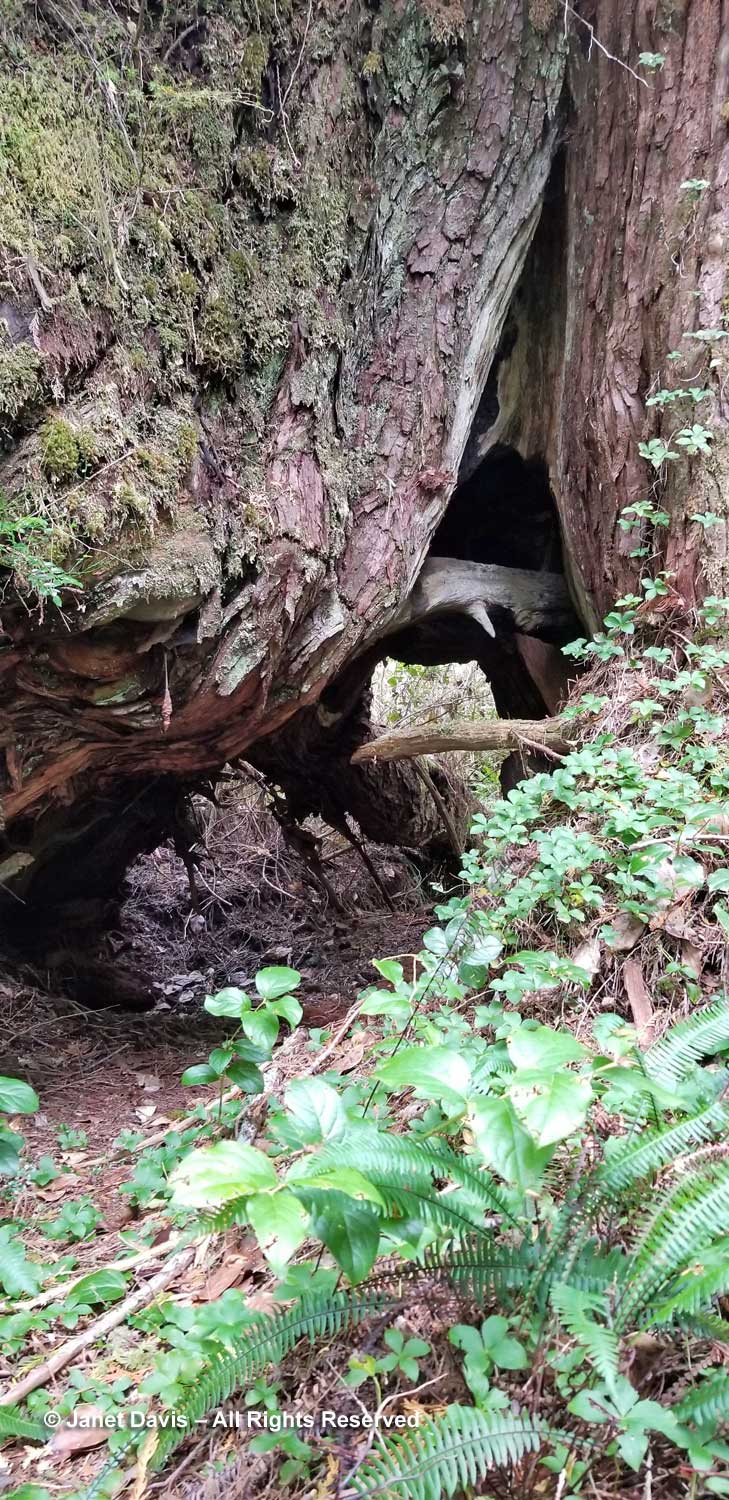
The scene below is called “Canoe Revival”. Says the guide: “The use of an old canoe tree stump as a nurse log by a younger cedar is quite common. Perhaps this is nature’s way of perpetuating the canoe log supply!”
Somewhere in there is the old sea wall.
Moss hangs luxuriantly on the windfall trees here.
This tree was signed ‘Bark and Boards”. You can see where the bark has been stripped away. According to the B.C. Government website: “The western redcedar has been called ‘the cornerstone of Northwest Coast aboriginal culture’, and has great spiritual significance. Coastal people used all parts of the tree. They used the wood for dugout canoes, house planks, bentwood boxes, clothing, and many tools such as arrow shafts, masks, and paddles. The inner bark made rope, clothing, and baskets. The long arching branches were twisted into rope and baskets. It was also used for many medicines. The wood is naturally durable and light in weight. It is used for house siding and interior paneling as well as outdoor furniture, decking and fencing. Because of its resistance to decay and insect damage, the wood of large, fallen trees remains sound for over 100 years. Even after 100 years, the wood can be salvaged and cut into shakes for roofs.”
Mary Ann stopped to photograph this beautiful burl. (And I stopped to photograph Mary Ann!)
I loved this grouping of “Companions”, in the rear. Redcedar, western hemlock and amabilis fir, all rising from the same place in the forest. This is a true “ecosystem”, featuring the major species of this forest near sea level. (I don’t know what the mossy trunk is.)
To provide a sense of scale, Peter stood under #9, Silver Giant. This redcedar is at least 700 years old.
“Old Friends” are two redcedars growing together, one pointing in the direction of the bog nearby.
As we headed towards the bog, I smiled at the sight of a big banana slug on the path, familiar to me from my B.C. childhood. Ariolimax columbianus is native to the forest floors of North America’s Pacific coastal coniferous rainforest belt, where it decomposes dead plant material, mosses, mushrooms and animal droppings into humus.
Peter pointed out a young cascara (Rhamnus purshiana), whose bark is used by first nations people for digestive ailments and constipation..
Then we toured the Bonsai Bog.
The boardwalk wound through a boggy, stunted forest….
….. and rested upon the sphagnum.
Bog Labrador-tea (Rhododendron groenlandicum, formerly Ledum) has white flowerheads in early spring.
Peter explained that he built the boardwalk atop Cougar Annie’s old trapline. This was the path she took with a lantern held close to her rifle so she could spot the cougar eyes.
Club moss or ground cedar (Lycopodium clavatum) reached across the boardwalk….
…. and the red fruiting bodies or “apothecia” of toy soldier lichen (Cladonia bellidiflora) brightened a rotting tree trunk.
The red sphagnum moss (Sphagnum sp.)…..
…… contained little carnivorous sundews (Drosera rotundifolia).
Until I saw Boat Basin, I was unaware that red-fruited bunchberry (Cornus canadensis) was circumboreal, having seen it in boggy places in Nova Scotia and Ontario.
Gray reindeer lichen (Cladonia rangiferina) is another circumboreal species, and is an essential food for reindeer (caribou).
Though they’re native to eastern Canada bogs from Ontario to Newfoundland, Peter has grown some North American cranberries (Vaccinium macrocarpon) in the bog, which seem to be doing very well.
Our bog walk finished, Peter returned to his chores and Mary Ann, Doug and I walked back up the road past the “ghost cedars” for lunch and a nap. Rain was forecast for later and we were happy to have seen the Walk of the Ancients and the Bonsai Bog in dry weather.
Barbecued chicken was on the menu for our final dinner and Peter added his homegrown salad greens to our feast. In our cabin, we threw some logs into the woodstove and retired early, listening to the rain beat down on the roof and on the rainforest around us.
Our floatplane was arriving at 9 am so an early breakfast was in order. But I couldn’t resist one last look out at the rainforest, even if it was pouring rain.
The rain stopped in time for Peter to drive us and our bags down the road to the dock on Hesquiat Lake. A black bear galumphed in front of the truck for a bit before turning into the forest. We watched the Atleo floatplane land and taxi down the lake, arriving with a few Atleo employees who were bringing in supplies to Boat Basin for their annual company weekend. The pilot Sinclair then stowed our bags and we hugged Peter goodbye and crawled into the plane.
As we flew southwest towards Tofino, I gazed back over the wisps of cloud weaving through the dark, forested peaks of this rugged west coast of Vancouver Island. I couldn’t quite believe how much we’d seen and learned in less than 48 hours.
And I felt thankful to a crusty old lady named Annie and her determined friend Peter, who helped us see the trees and the forest, not to mention the garden.
Here’s a last look at Clayoquot Sound from the air.
*******
To enquire about booking a trip to Cougar Annie’s Garden and the Temperate Rainforest Study Centre, visit the Boat Basin Foundation Website.

